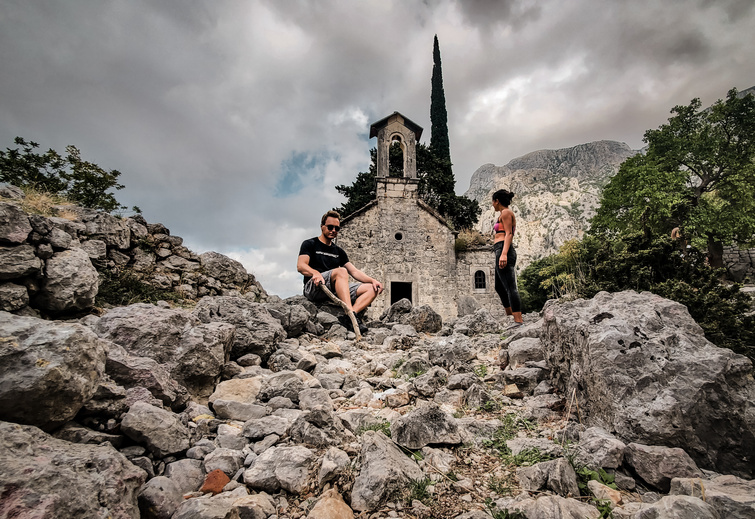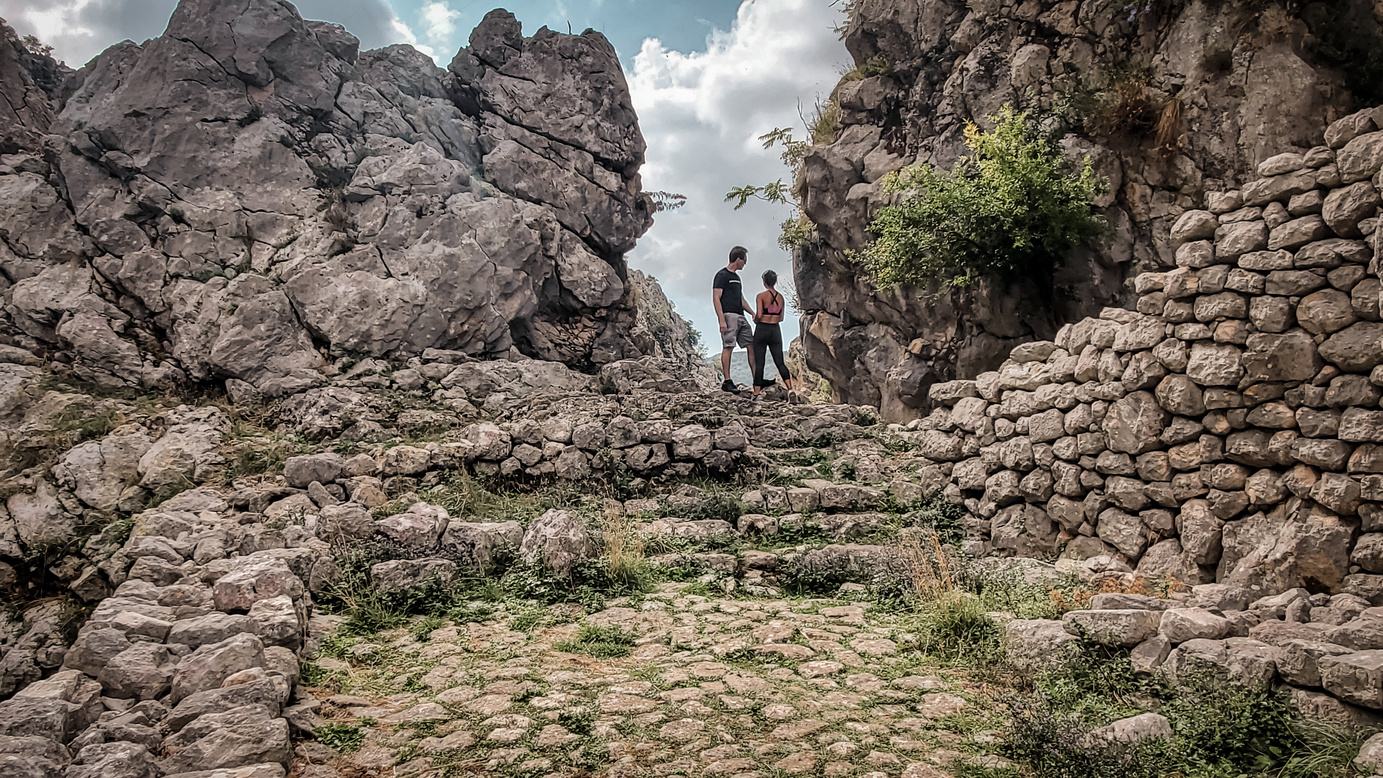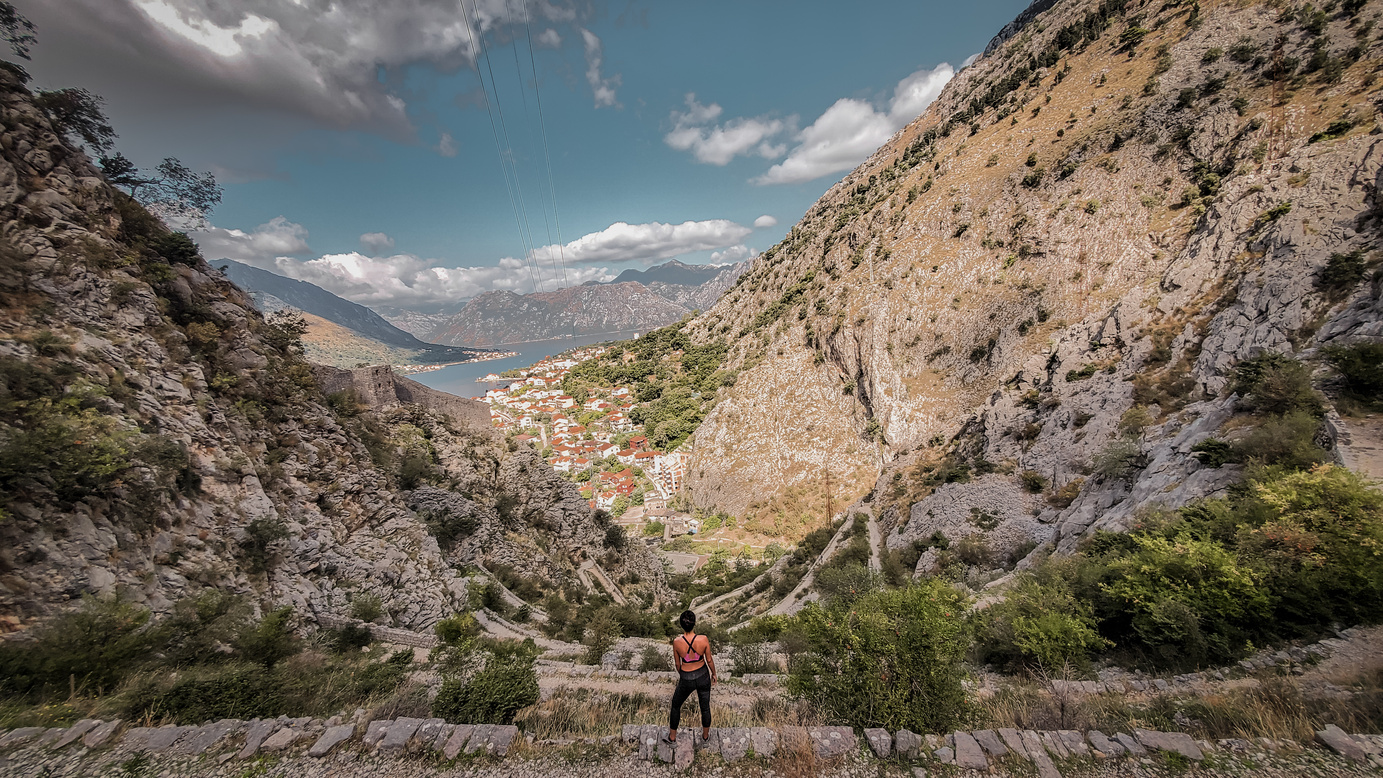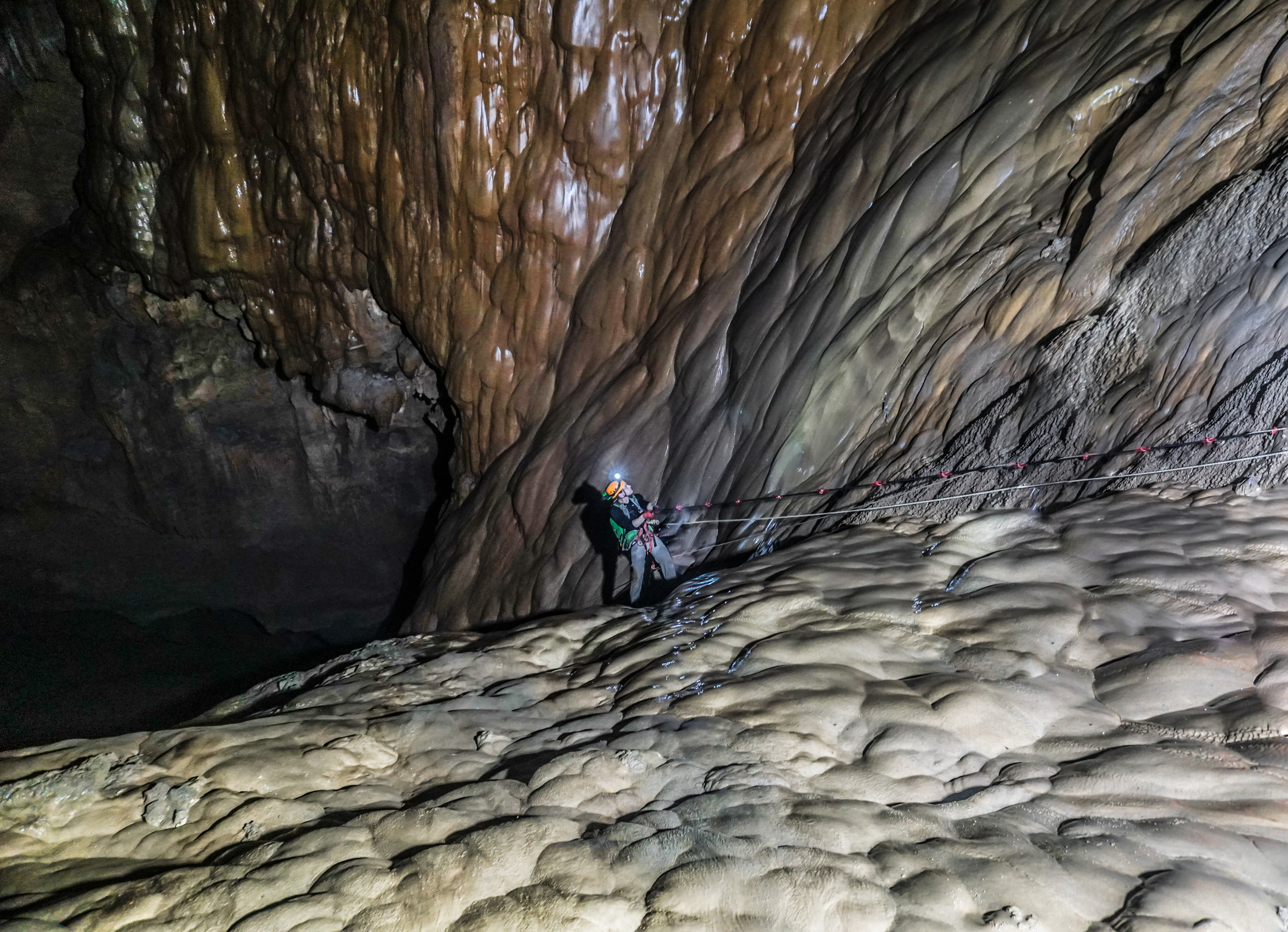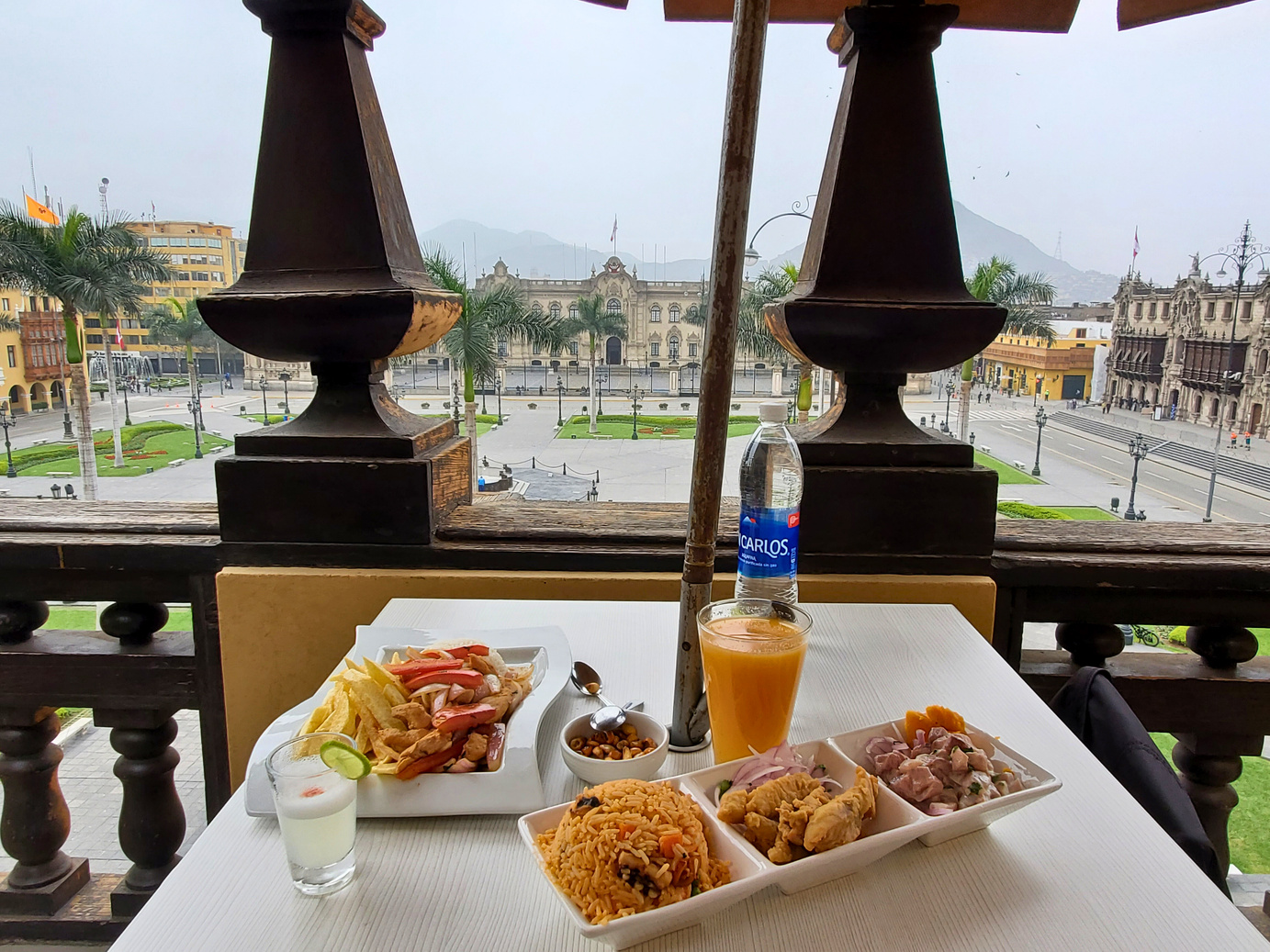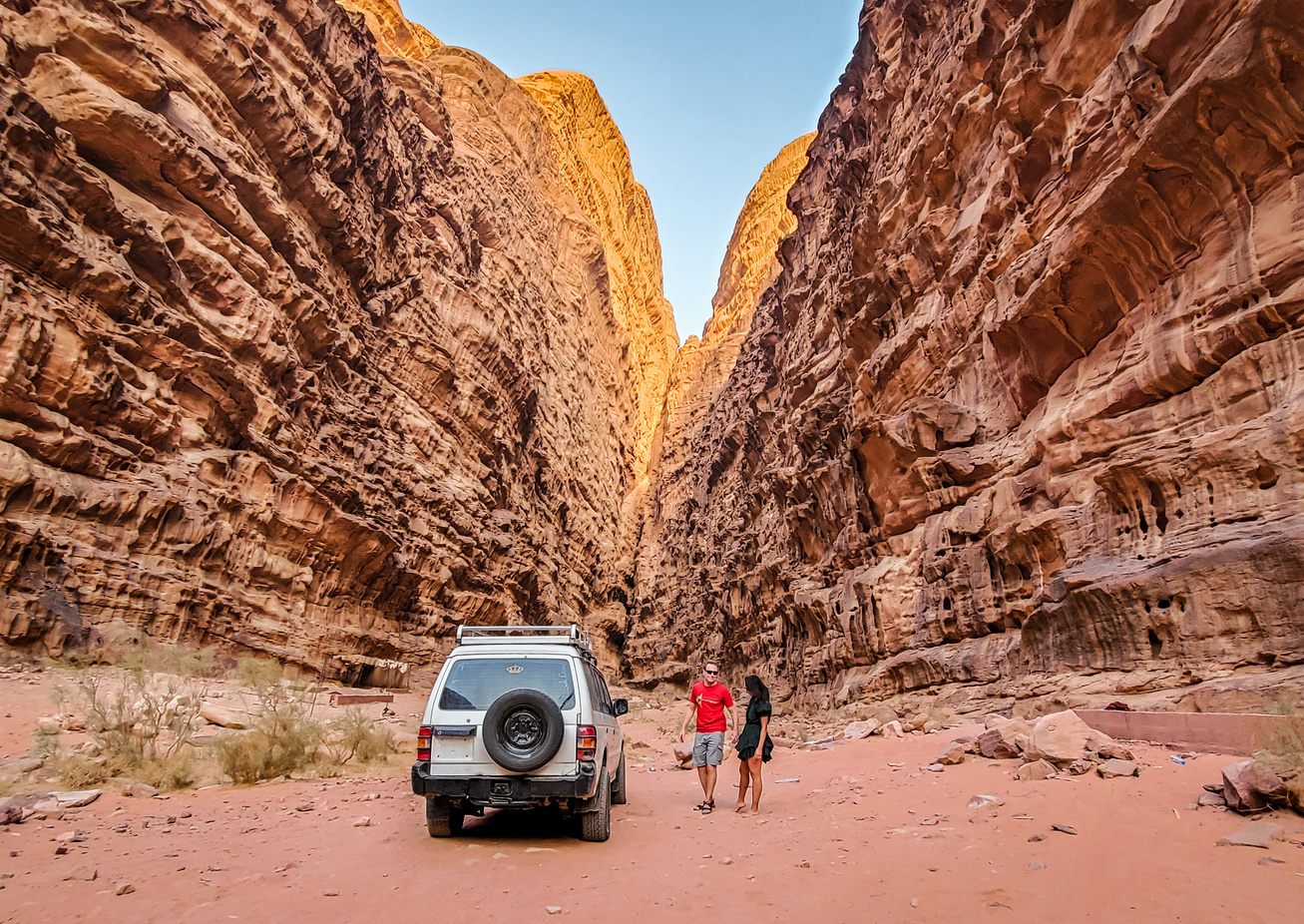




copyright 2022 LanRic Journeys. All Rights Reserved
Wadi Rum Desert, Jordan

Table of Destinations
Volume 1
Transfăgărășan Highway, Romania

Acknowledgements
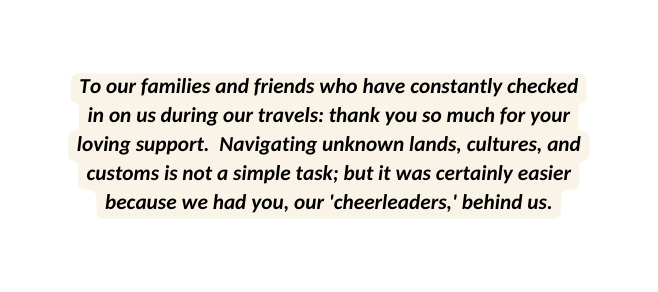

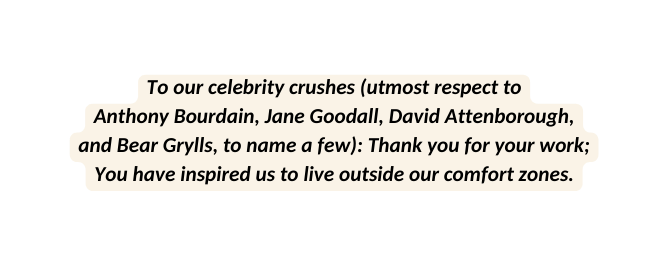
Son Doong Cave, Quang Binh, VN
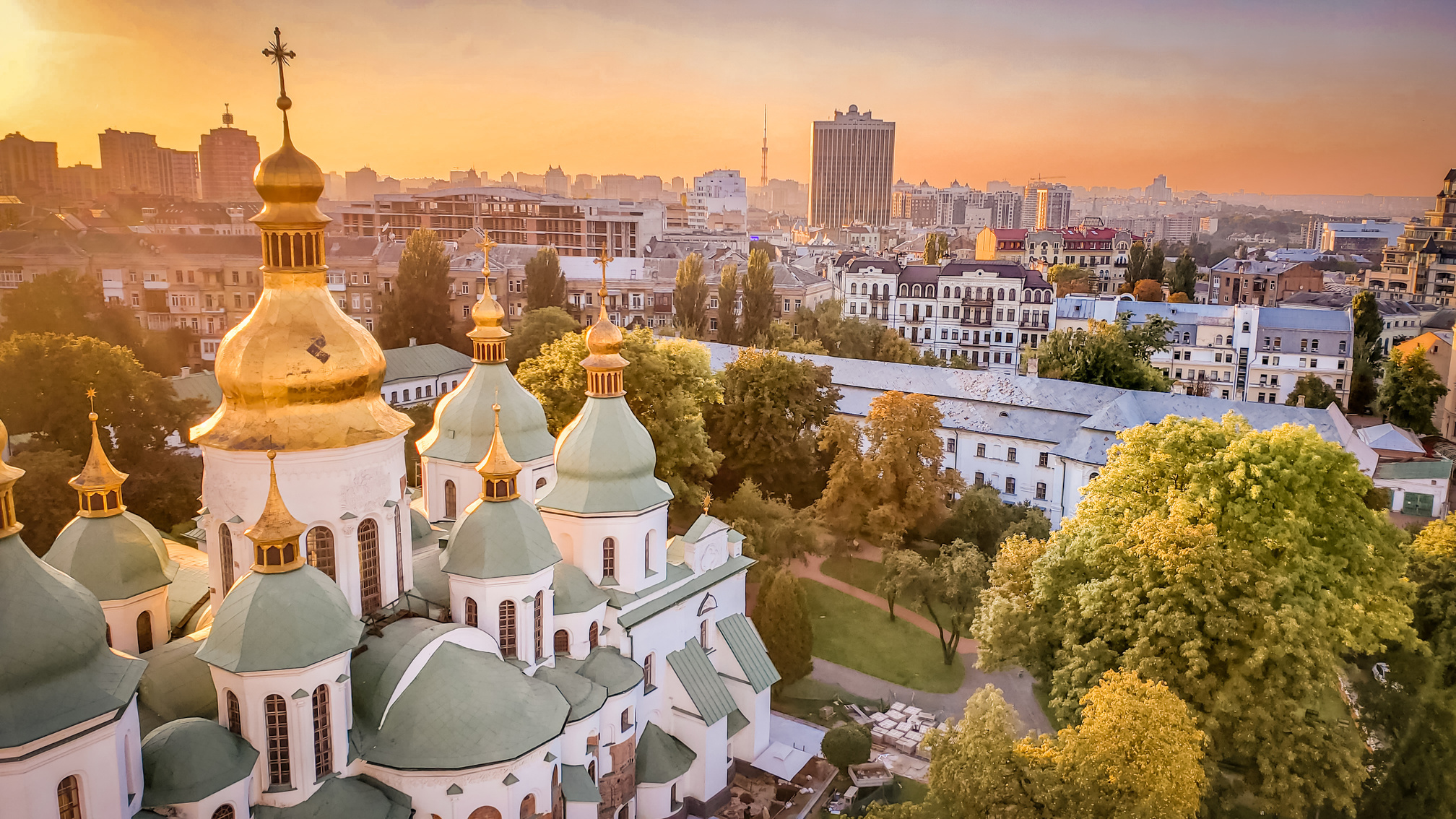
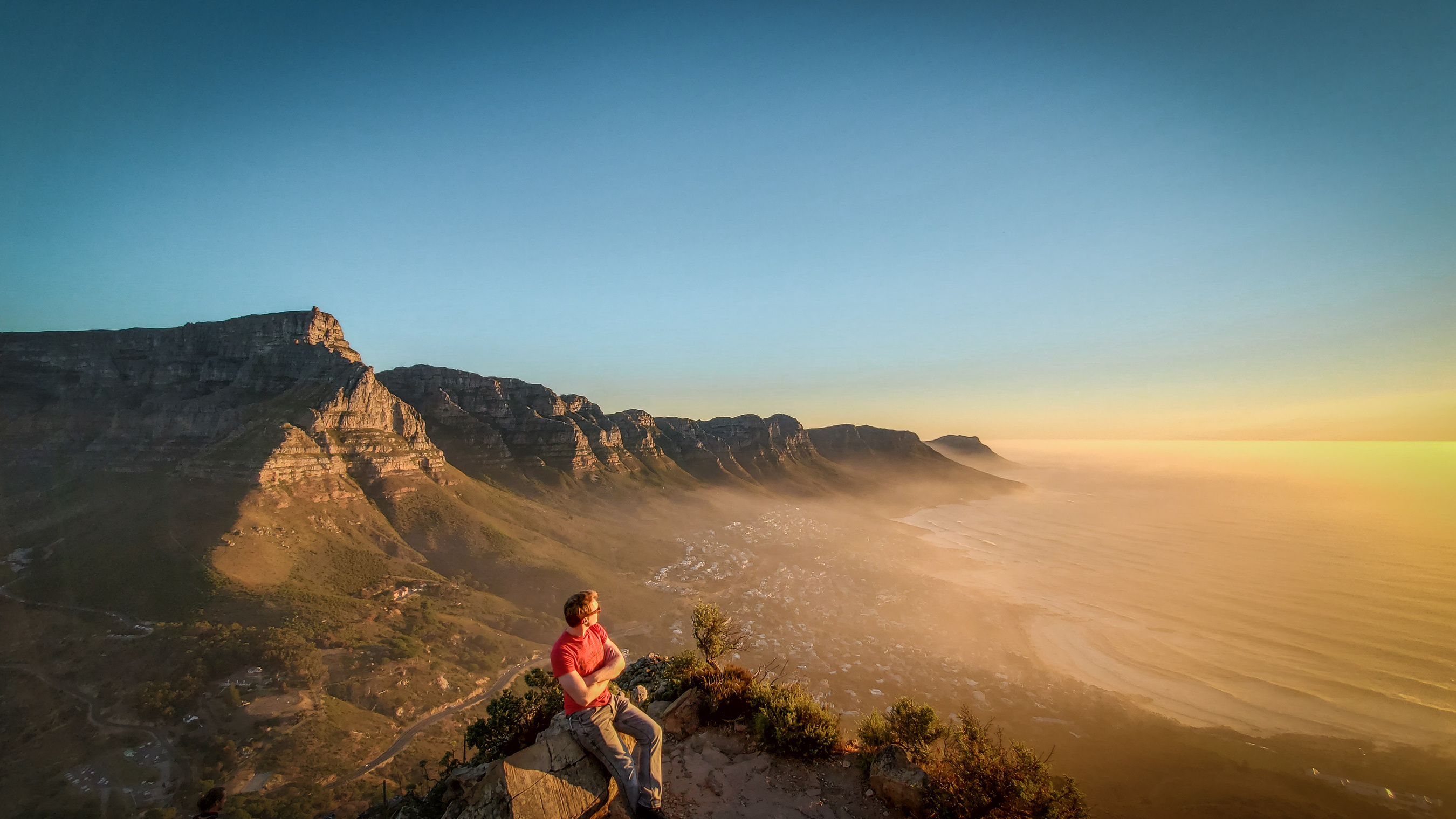
always moving Foreward
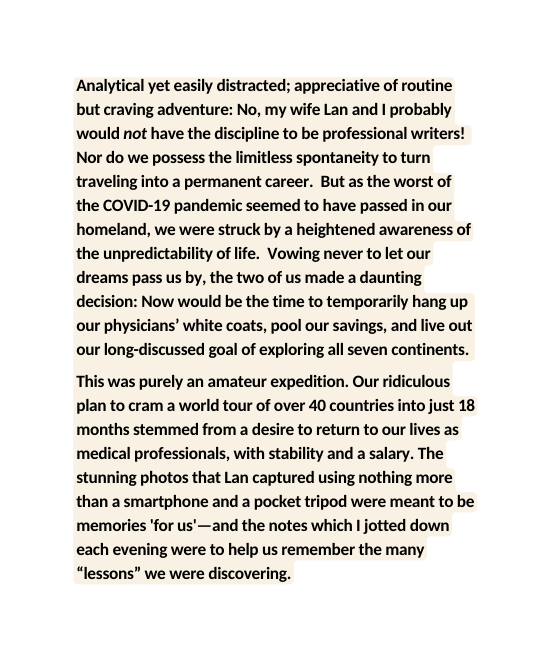
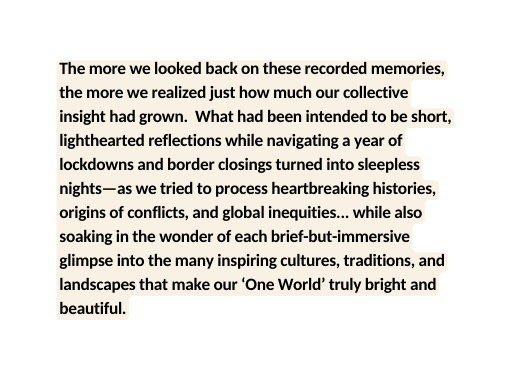

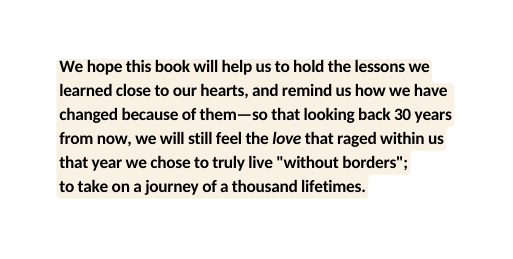
Lion's Head, Cape Town, SA

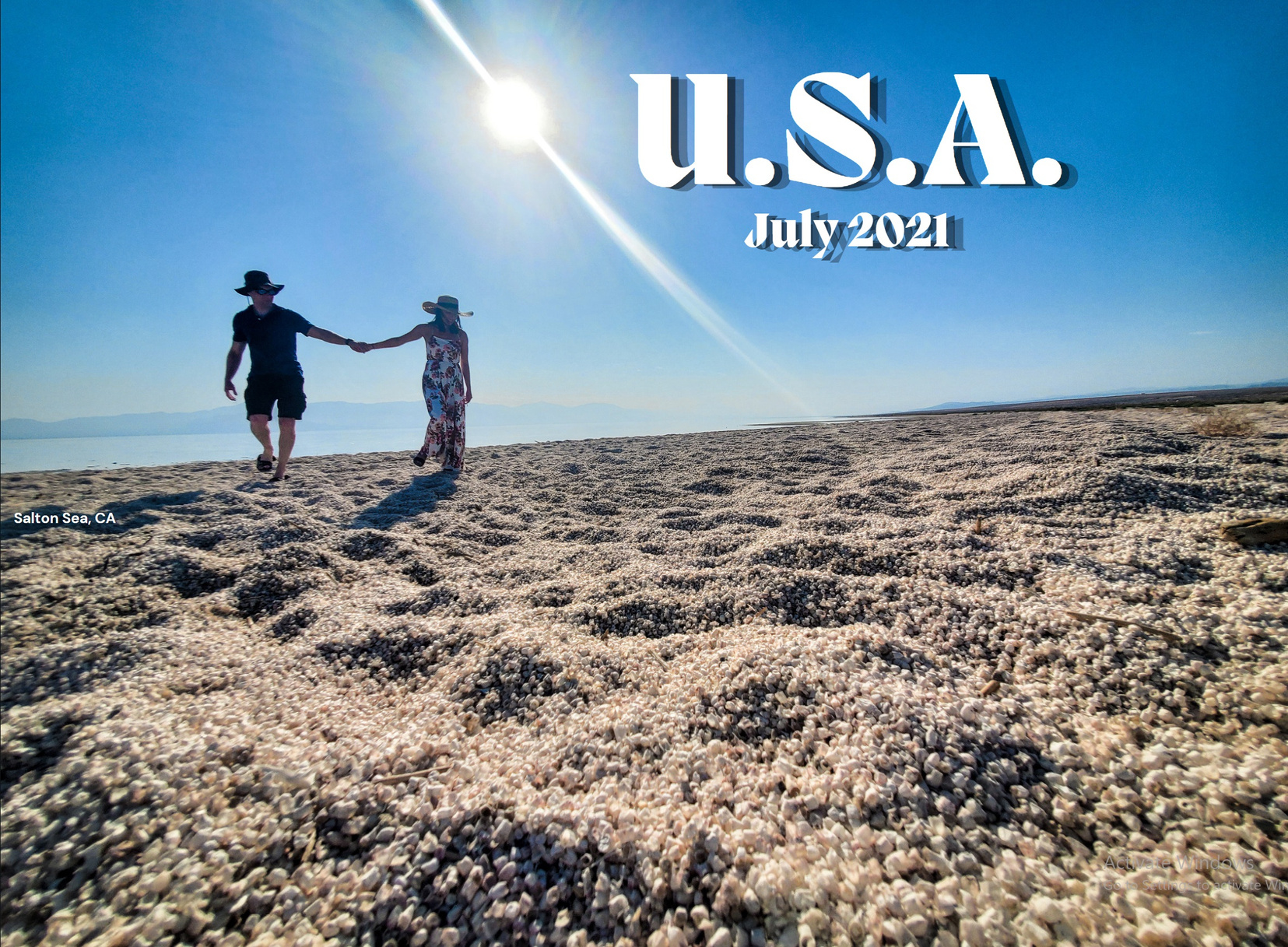
Prelude: Goodbye, USA!
Our Lessons
“It's a terrible thing, I think, in life to wait until you're ‘ready.’ I have this feeling that actually no one is ever ready to do anything. There is almost no such thing as ready. There is only now.” ~Hugh Laurie
If each paragraph in this journal is to represent something we "learned," then this first entry is purely philosophical, but crucial: The pandemic served as a humbling reminder for everyone that life can change at a moment’s notice. As practitioners having worked in some of the nation’s most overwhelmed hospital wards, for us this reminder was visceral and frightening at times... but it also provided us with a renewed appreciation for each breath we take, and the motivation to seize each moment. So with this in mind, we set ourselves a firm deadline: Exactly one month after leaving our jobs, we would have moved out of our apartment, scheduled as many flights and hotels as we could, compacted only our most necessary belongings into one backpack each, and be firmly squeezed into our first of many economy-class seats en route to our first destination. Intimidating? Yes. Organized? Partially. Ready? No, but time is fleeting, and we had ironed out as many details as we could. Horizon, here we come!


Detours to find "love" in a hopeless place: A stopover on our first international flight allowed us to seek out the unusually majestic "Salvation Mountain." This now-'Instafamous' tower is a 3-story-tall amalgam of paint, concrete and adobe, maintained by individuals who favor living off-the-grid in a former California military camp now known as Slab City. The Mountain is a climbable piece of art that was constructed over a 25-year period by Leonard Knight, to spread the word that “Love is Universal.” A well-needed message; but sadly, the environment around Slab City has not received much love...
Situated on the abandoned, arid landscape along the eastern shore of the Salton Sea, the inhabitants of Slab City are prideful of their reputation as “The United States' only 'lawless' city.” However, the ugly reason that Slab City has been left alone by all official governing bodies became quickly apparent as we explored the area. It turns out the Salton Sea was once a pristine Californian resort lake; but presently, upon setting foot on its "beach," we realized we were walking on a literal blanket of death. This was a beach with no sand; rather, the sharp, crunchy white particles below our feet consisted entirely of dead barnacles and fish bones! We learned that over decades, local industries produced so much pollution that this former “oasis” became a breeding ground for toxin-producing algae. Now, on hot days, evaporation of the lake’s water fills the air with toxic contaminants... leading to some of the worst air quality in the U.S.; and indeed, the smell of sulfur almost knocked me off my feet! We hope that the limited momentum to clean up this lithium-rich region takes hold, before everyone remaining must permanently leave to survive.
This was an unexpected prelude to the emotional roller-coaster which we were about to embark on. We are grateful for the chance to have seen both the beauty and the 'rawness' of this place, and to document the reality between our polished photos—a reality which too many of our generation’s social media influencers neglect to share.
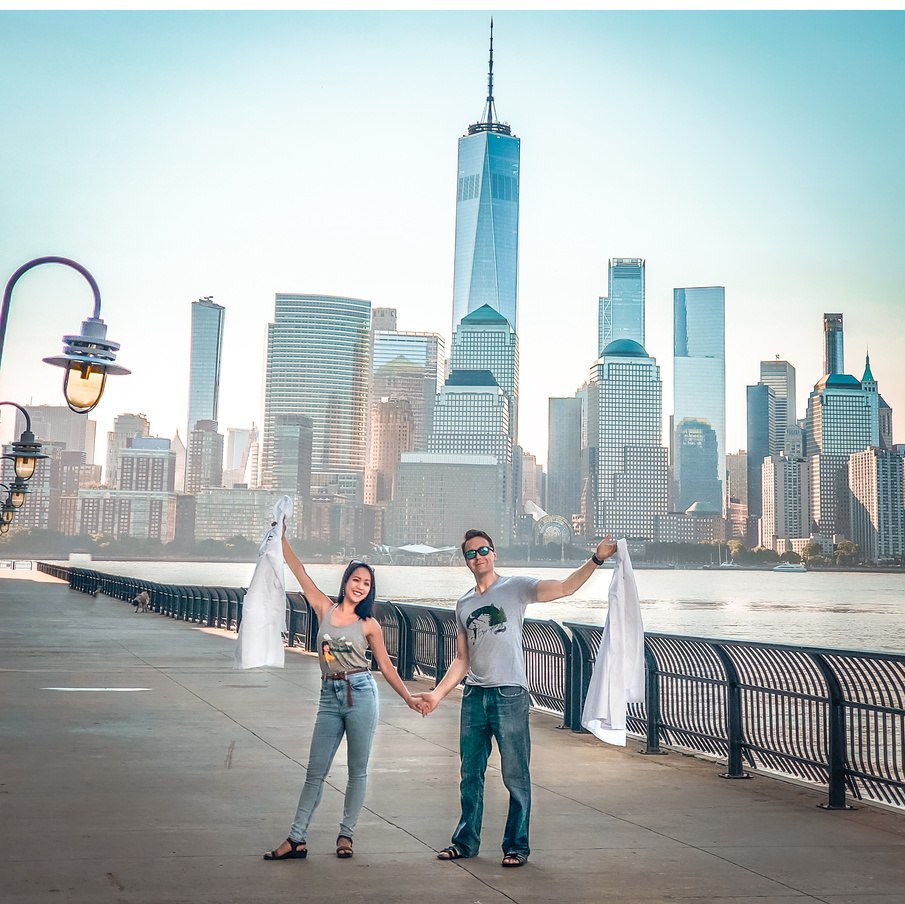



Quito - part 1
Our Lessons
A slightly intimidating start to our international journey served to remind us why some travelers avoid choosing late-night 'budget' flights to save money: With no GPS signal and not a soul to be seen outside, our midnight taxi ride through pitch-black, winding streets around the outskirts of Quito left us wondering if we would reach our hotel safely. Thankfully, we did… and we discovered that the hotel was also dark; in fact, we were the only guests! The pandemic-induced emptiness was a bit eerie, but we received a warm welcome from the owner, who left us the keys to the entire building and our own "private" rooftop! There we rested, completely alone, marveling over our view: a sea of distant lights, sprawling over this mountainous capital.
We pondered in silence what an odd “silver lining” of COVID-19 it would be, to wander through some of the world's most popular tourist destinations, entirely empty—almost like true 'explorers.' However, views from above of several boarded-up homestays brought a sobering reminder of the economic ruin that prolonged lockdowns have inflicted on businesses here.
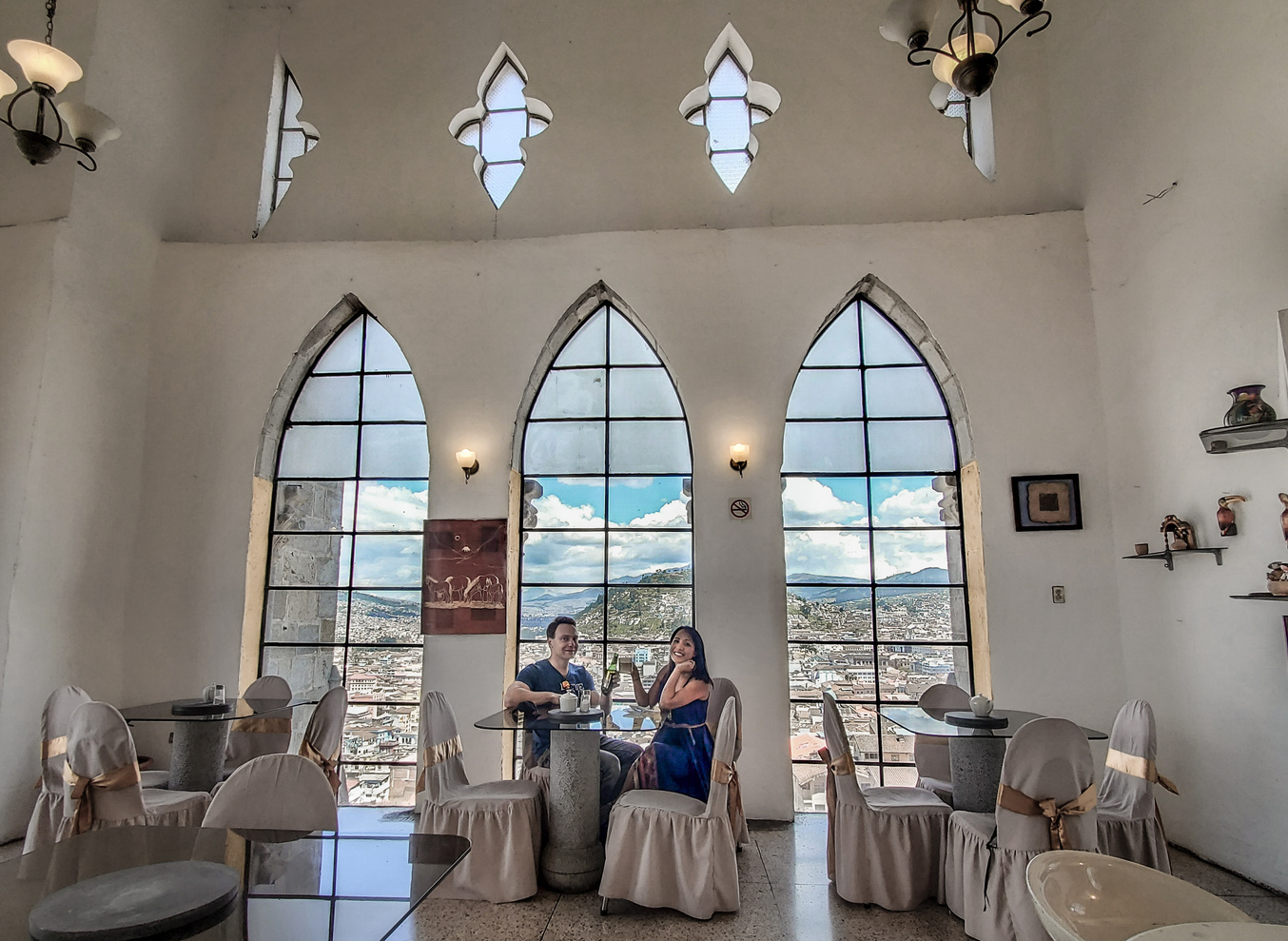
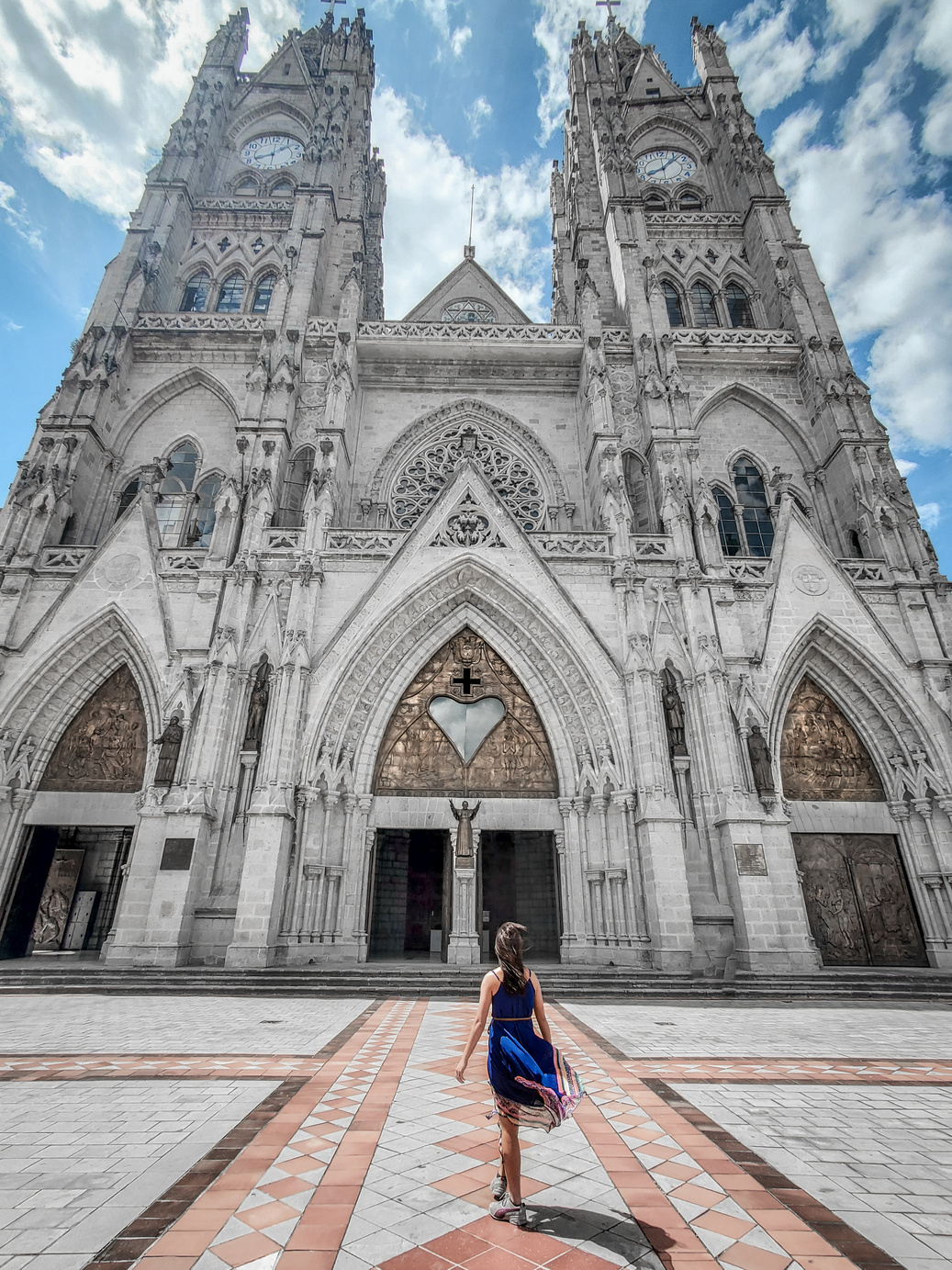

Along this journey, we quickly learned that US safety standards would seem horribly restrictive to most people around the world. Case in point: Quito is home to the Basilica del Voto Nacional, the largest Neo-Gothic cathedral in the Americas. Here, we were able to take a highly rickety staircase to the highest tower, after calming our nerves with beer on-tap, served from a café inside the cathedral´s south tower.
It was here that we also discovered that the unique architecture of many churches requires them to have a completely separate inner ceiling, separated from their peaked roof by an enormous gap. This is the first church we've ever seen in which tourists are permitted to walk above the vaulted ceiling.


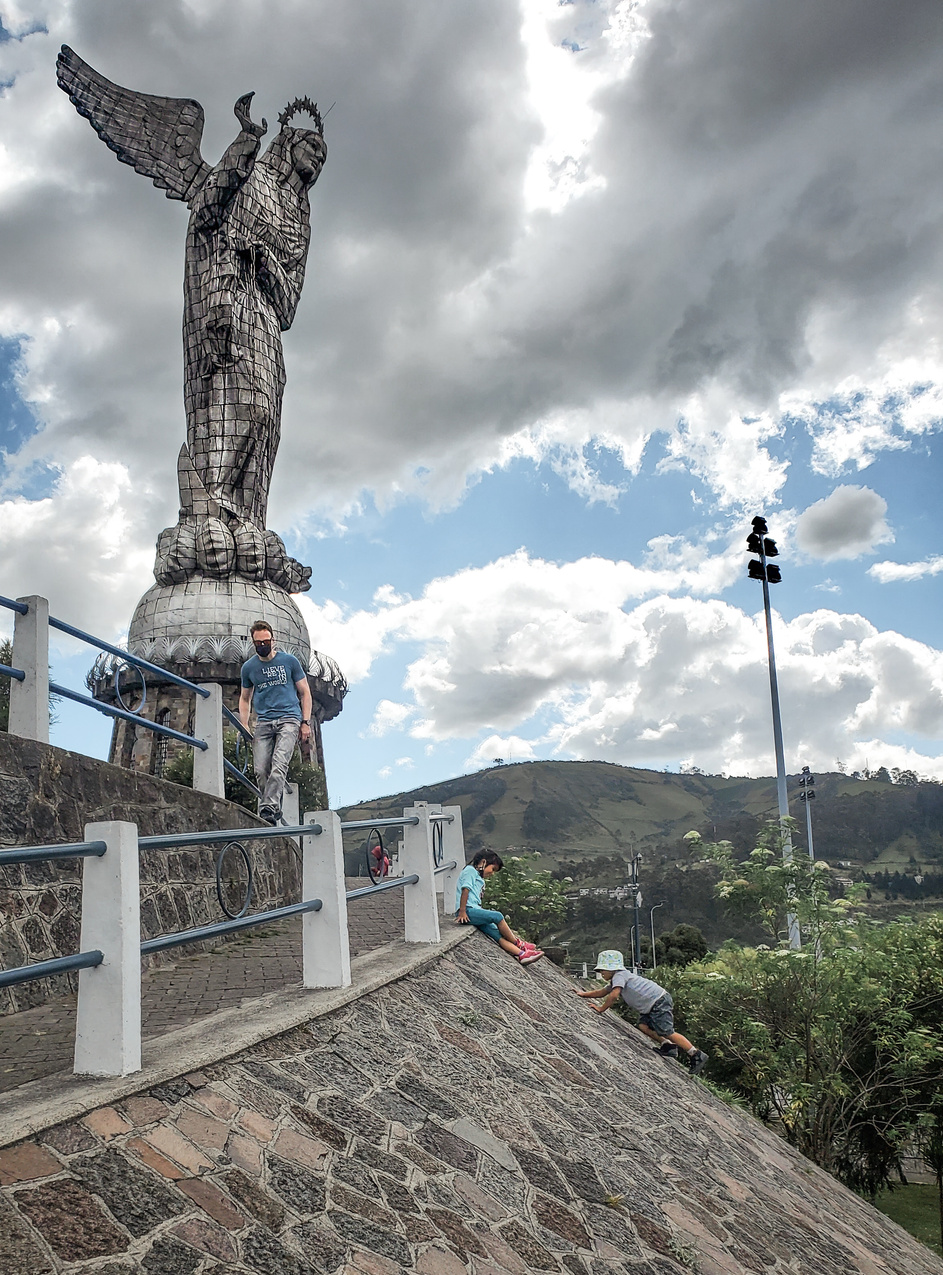
Quito - part 2
Our Lessons
Safe to boil, safe to drink? Up nearly 10,000 ft in altitude, it turns out Quito's water boils about 20 ° F lower than at sea level, but we learned that's still good enough for our tea: In a pinch, bringing water to a boil for 1 minute is considered sufficient to sterilize it for drinking. To be extra safe, the U.S. CDC recommends boiling water for 3 minutes at altitudes above ~6,500 feet (2000 meters)... but more than this is never necessary and just wastes fuel. Chemicals, aroma and taste are another story, of course; we would say Quito's boiled water is best when mixed with strong coffee, not drank by itself.
In Quito, we quickly experienced what it really means to be at a higher altitude: First, temperatures can change dramatically based on the presence, or absence, of the sun. On a warm mid-day, we took the gondola up to Pichincha Volcano, to take in the boundless city view. At the top, we found a swing over the clouds. It was a peacefully picturesque scene... until fast-moving clouds brought frigid wind and freezing rain. This is also where we first came to understand the meaning of the advice to “hike slow” at altitude: your muscles can use stored energy to move fast initially (which feels “normal”)—but once one starts taking deep breaths, it takes much longer to get the oxygen back and catch one’s breath.
And amongst other unusual facts: we found out that the world's tallest aluminum statue is located in Quito. After taking a taxi past a part of downtown which we had been advised was too dangerous to walk through, we spent our final morning in a lovely hillside park, where the Virgen de El Panecillo towers over the city, standing 135 ft tall. Its height also makes this statue the world's tallest “winged representation of the Virgin Mary.”
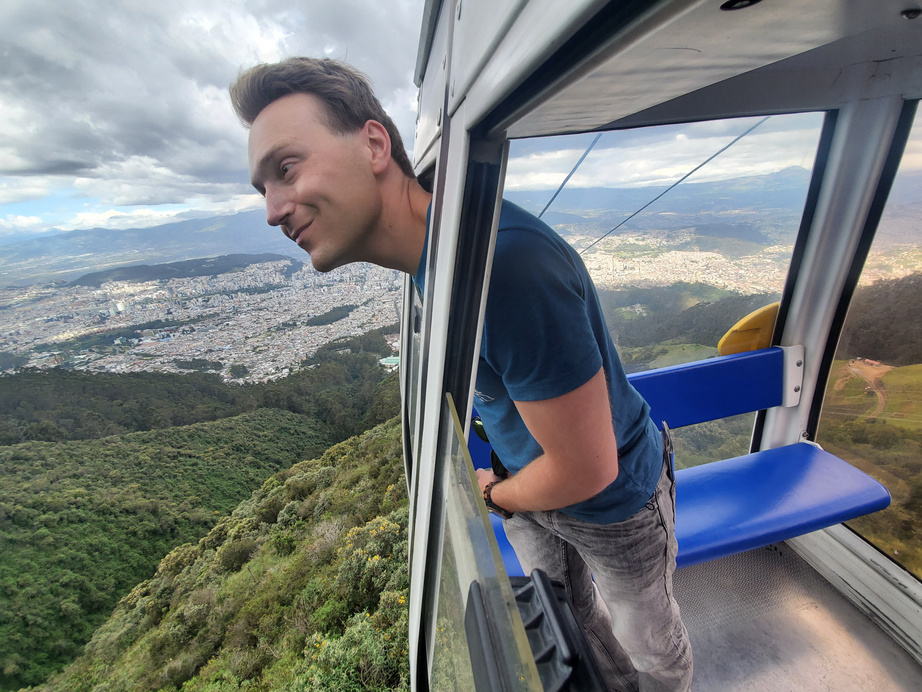

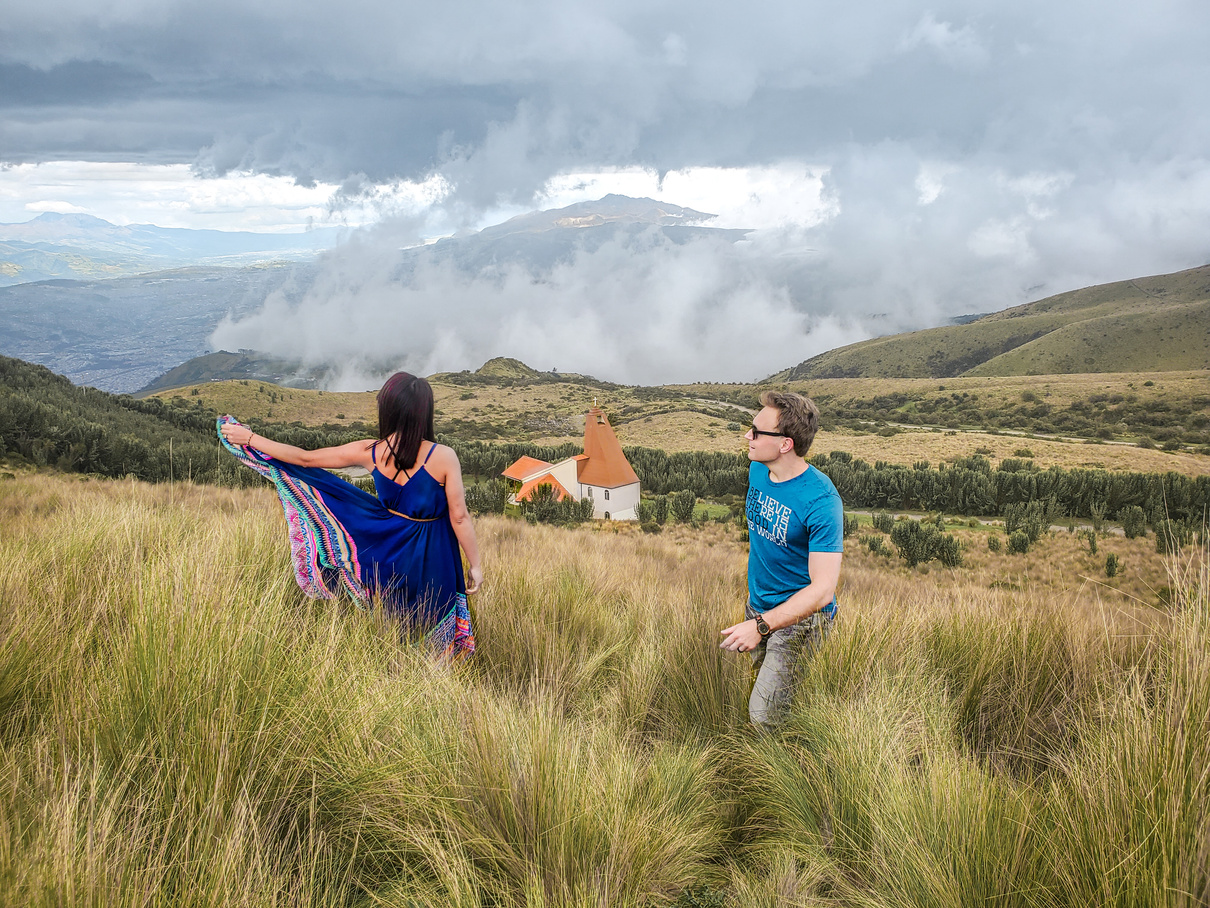

Quito - part 3
Our Lessons
As of July 2021, we appeared to be the only English-speakers in town. As always, Eric patiently translated into Spanish all of my of questions with the locals, who seemed genuinely happy to see us. Economic times are tougher than ever post-COVID, we are told... but people seem to work very hard here, trying their utmost to earn just enough to support their families and keep their businesses afloat. One owner, centrally located in Quito's Plaza Grande, proudly served us her traditional family recipes in a tiny cave-shaped restaurant. She explained to us how this restaurant had been built right into the sides of an old Spanish colonial government building. It has belonged to her family for over 80 years.
As we walked the streets, we observed that everyone here works to earn a living—and there was no ‘begging’ for money in the traditional sense. People would assertively approach us to sell things—a CD, a shoe shining, trinkets—but nobody bluntly asked for "change" without offering a good or a service in return.

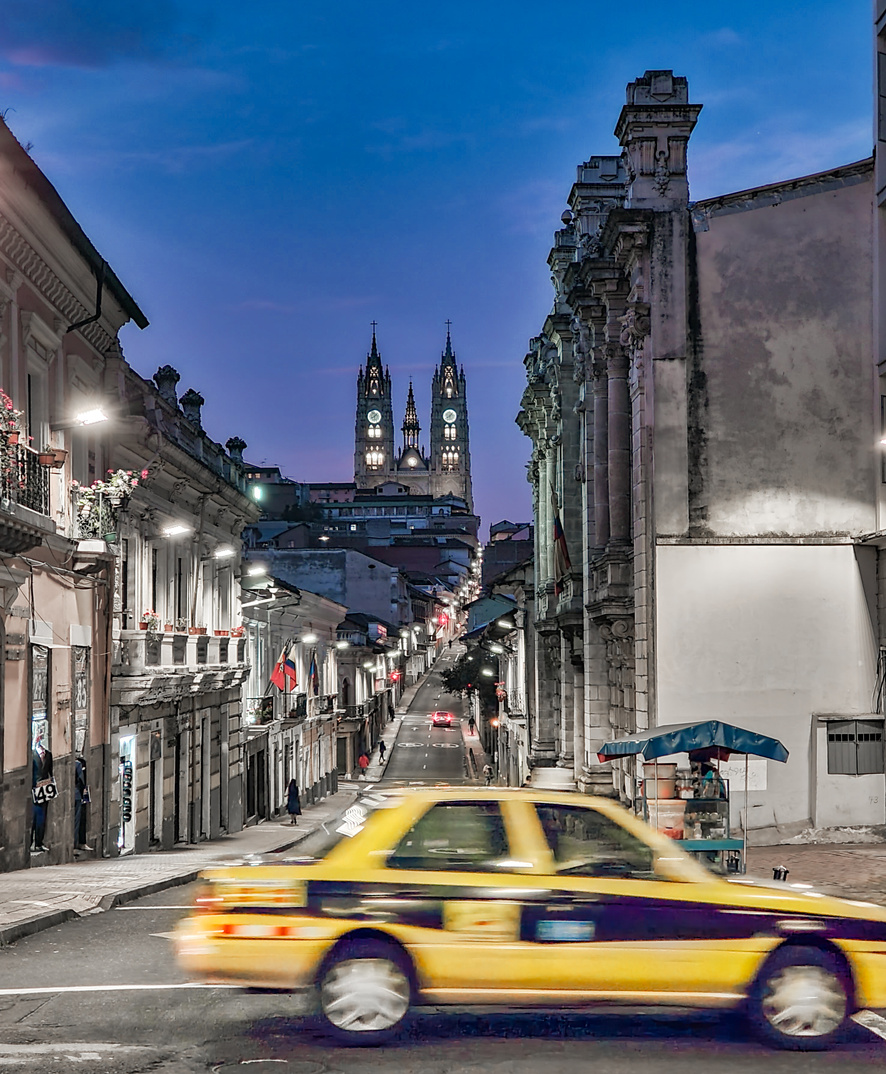
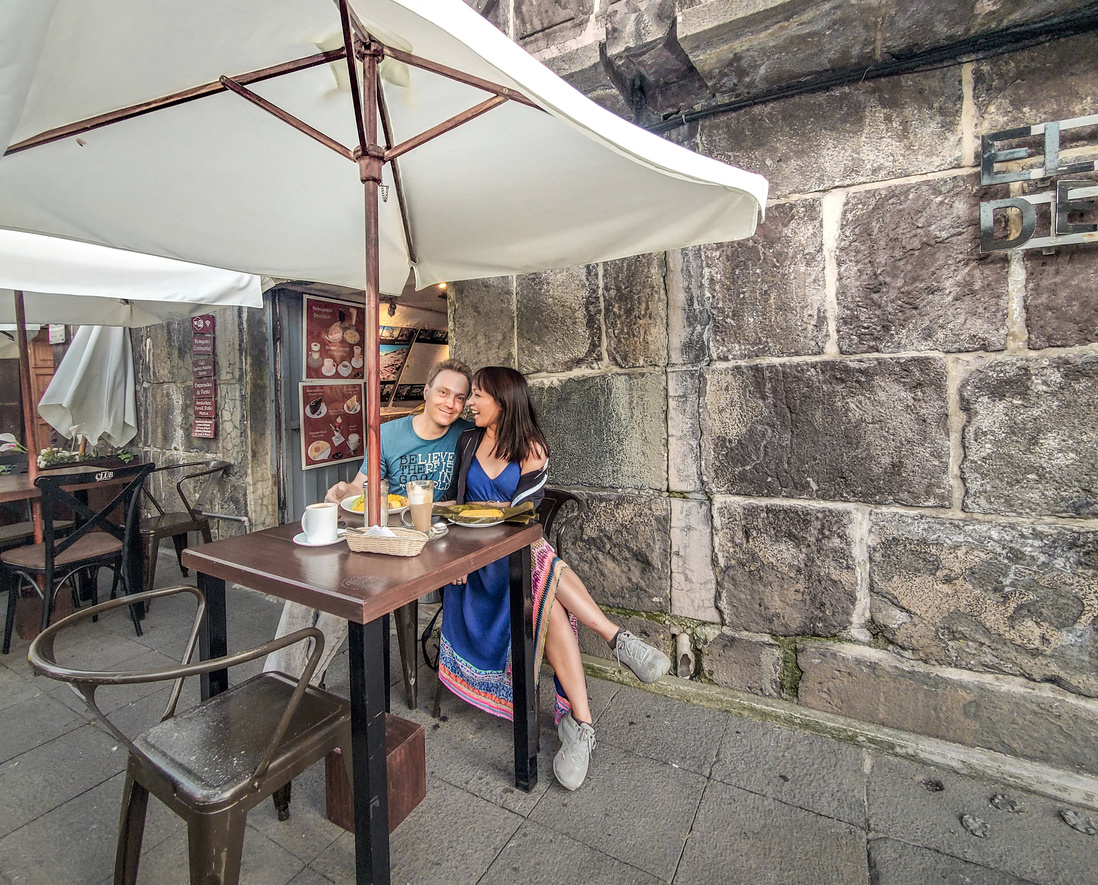
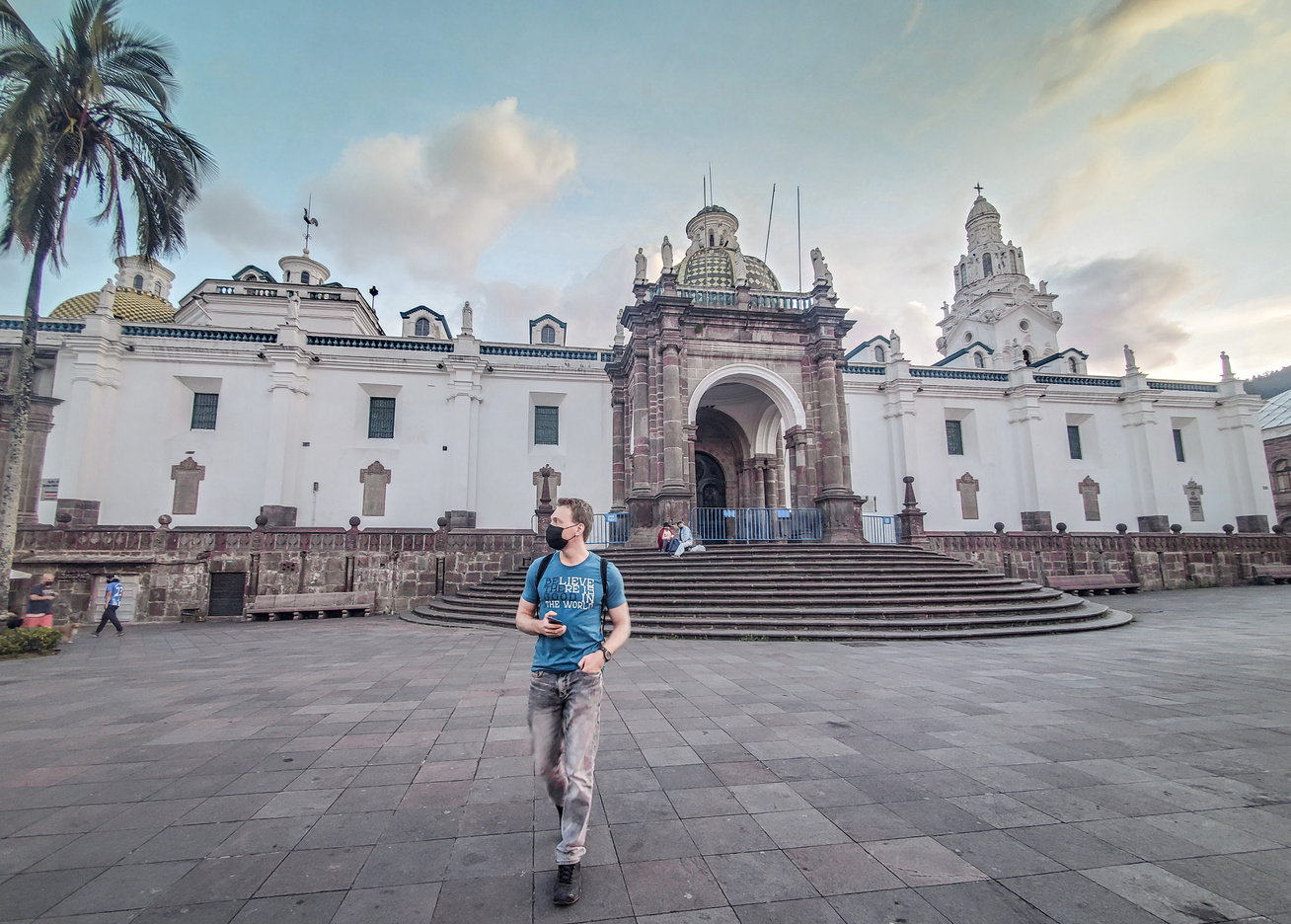

Guayaquil - part 1
Our Lessons
We are told only a small percentage of international tourists actually pause to explore the city of Guayaquil during this standard stopover on the way to Galapagos—unfortunate, perhaps, as Guayaquil was a place of disparity; one which could provide insight into the real lives of local Ecuadorians. This sprawling port city is Ecuador's largest, and unlike Quito, post-COVID Guayaquil definitely struck us as a very busy place. One thing is for sure: with a big, high-floor hotel room at a bargain price, this was a significant comfort upgrade compared to the musty, equivalently-priced homestay we were about to experience in the Galapagos! Amazing rooftop views of the Malecón beckoned: and sure enough, this ritzy waterfront area had no shortage of delicious food, landscaped green spaces, and live music. On the other hand, our hotel concierge made sure to highlight other areas on the map in red: areas that he said we should not visit for safety.
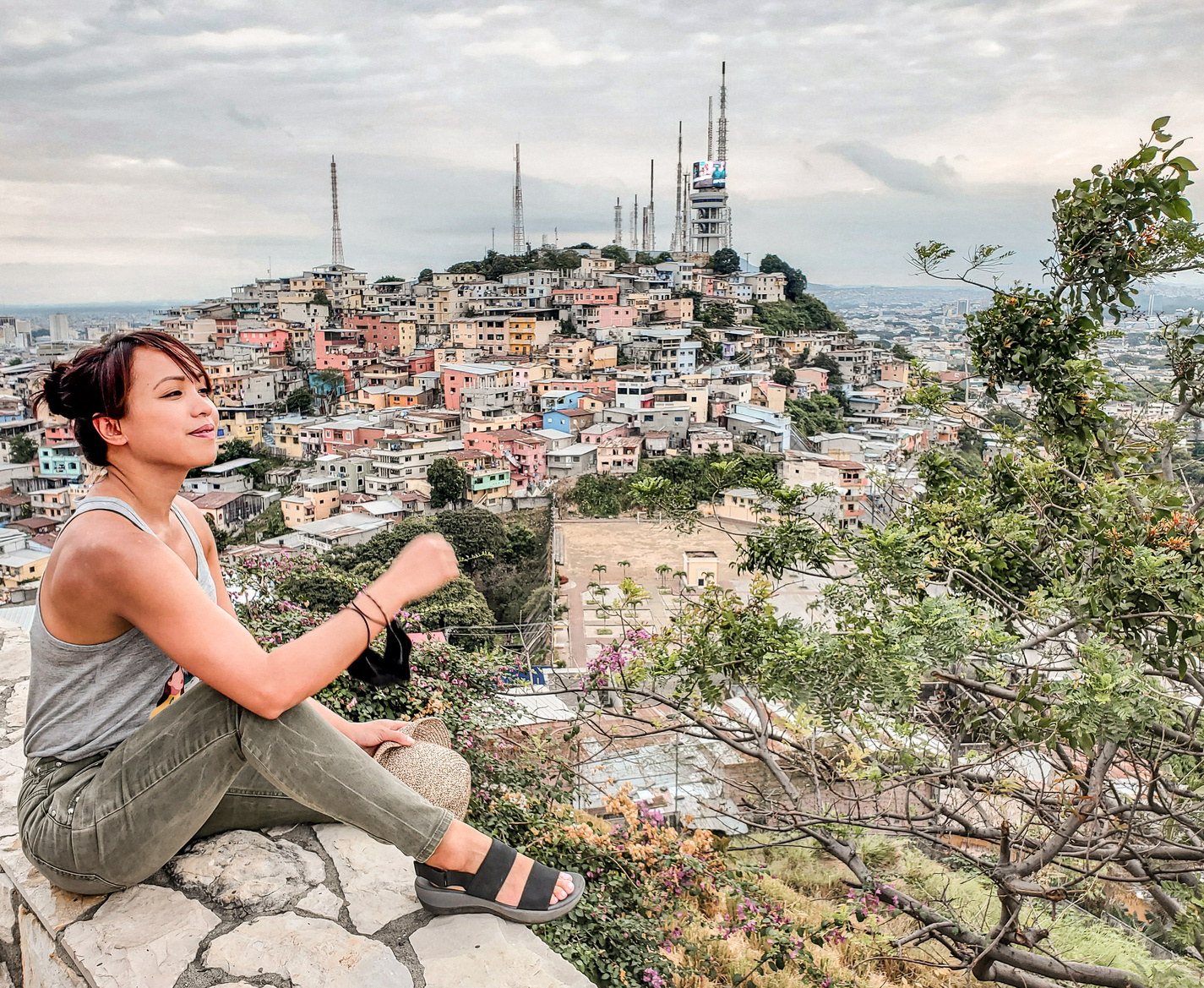
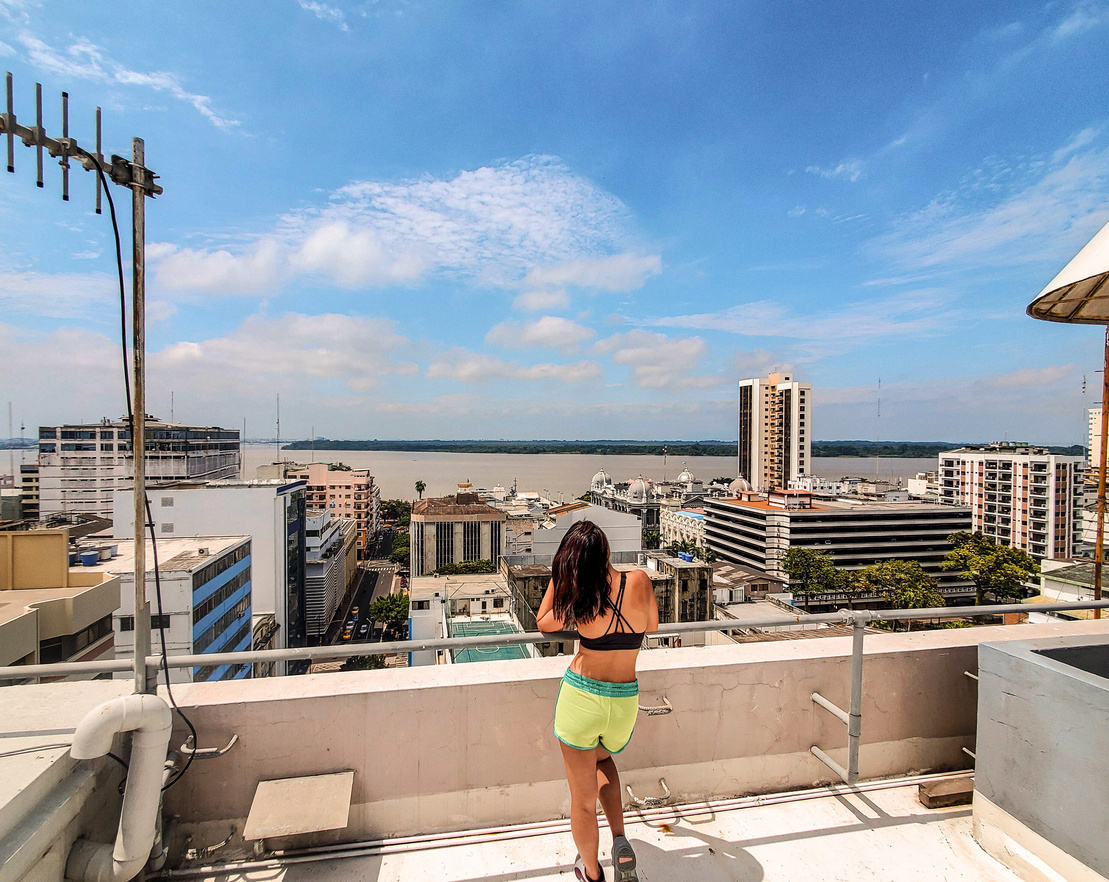

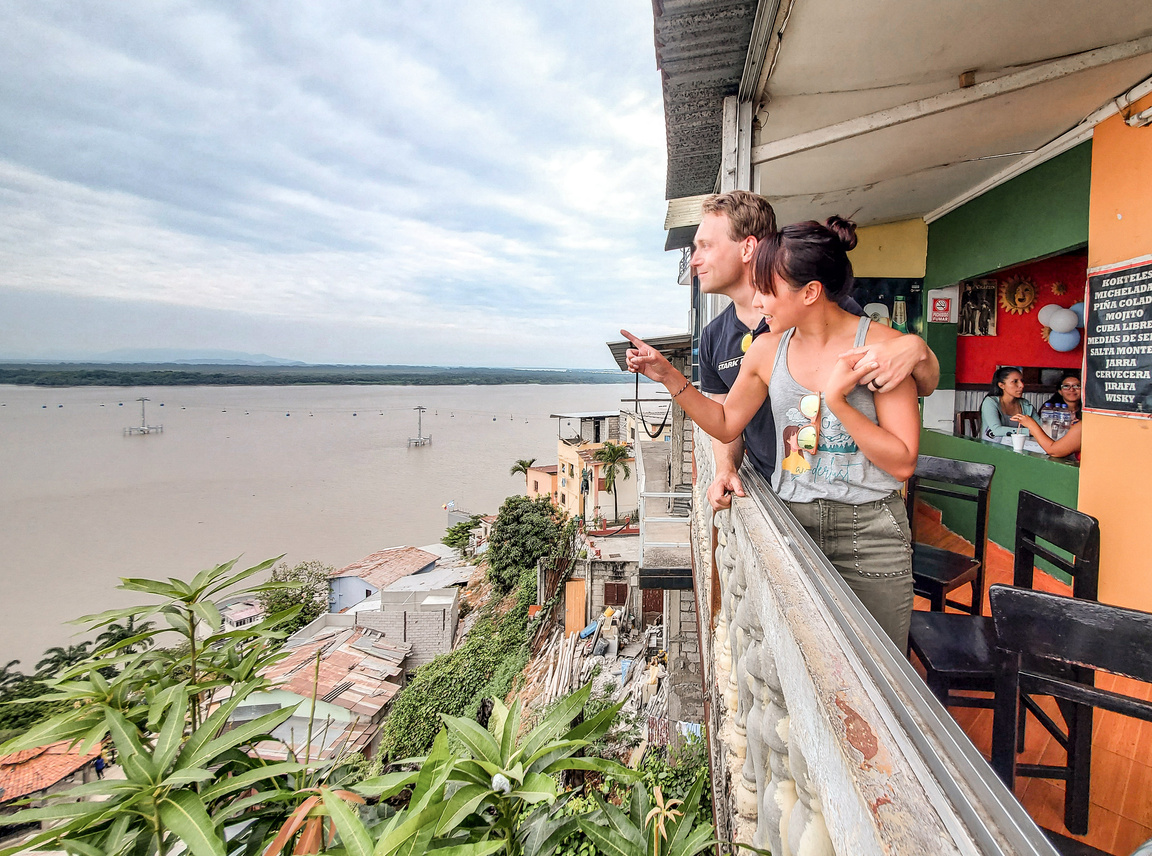
Colorful, breathtaking hillside views, delicious food, and entertaining neighborhood soccer games are integral components of the vibrant Guayaquil neighborhood of Las Peñas. Despite this being Guayaquil's premiere tourist neighborhood, we were easily able to find a full lunch for two people for less than $5 USD.
It felt so unnatural to use U.S. dollars here, but as it turns out, the U.S. dollar is literally the official currency of Ecuador—a change that the government implemented two decades ago. At that time, a financial crisis saw a complete collapse of Ecuador's former currency, the 'sucre.' For financial security, Ecuadorian citizens started converting their savings into U.S. dollars anyway... leading government officials to shrug and say, "that works!", and the switch was made official. Unfortunately, since that time we were told that Ecuador’s economy has been one of the slowest-growing in Latin America.
Guayaquil - part 2
Our Lessons
"Alegria" is Spanish for "Joy." However, it is a word that is often heard at solemn events like funerals, giving it a connotation of "Joy despite great sorrow."
We joyfully took in the beautiful sights and breathed deeply the fresh air along Guayaquil's waterfront pedestrian areas, which have been built in just the last couple of decades. Locals optimistically pointed out to us that Guayaquil's strategic location and recent developments give it the potential to be a real “up and coming city” for tourism... but they also note that it remains one of Ecuador's most 'unequal' cities, with country's highest poverty rate.
Indeed, in newly developed areas, shiny, modern buildings were often still flanked by crumbling ones. In other areas, crumbling buildings remain the norm in Guayaquil. The government is very corrupt, some have commented, stating that people aren't getting a fair chance to advance their careers, and that being an honest street vendor makes very little money. Consequently, we were warned that especially after COVID-19, pickpocketing and robbery had increased significantly. We personally experienced nothing but kindness from the people of Ecuador, but stories of worsening post-pandemic crime rates would become a recurring theme throughout our world travels. Clearly, the pandemic shutdowns of entire economies for a prolonged period was devastating—especially for those just making ends meet. We acknowledge people's calls for 'freedom' from mandatory masks or vaccinations; however, scientifically, we know that strongly enforcing means of infection control can be the key to more quickly resuming business as usual. Tragically, as of July 2021, many Ecuadorians still did not have access to COVID-19 immunizations and would have given anything for a shipment of the vaccines that many US citizens did not even want.
Our hearts ache with sorrow as we encounter so many people experiencing hardship and realize there is little that we, as just two individuals, can do in the moment to help everyone. It creates a dichotomy of feelings, clashing with the unique beauty that surrounds us—beauty which manifests in the gentle smile of a stranger as often as the majesty of any physical place. We hope this journey will help us to teach our future children to be cognizant of the joys and sorrows that connect us, in order to bring happiness to others as well as themselves.
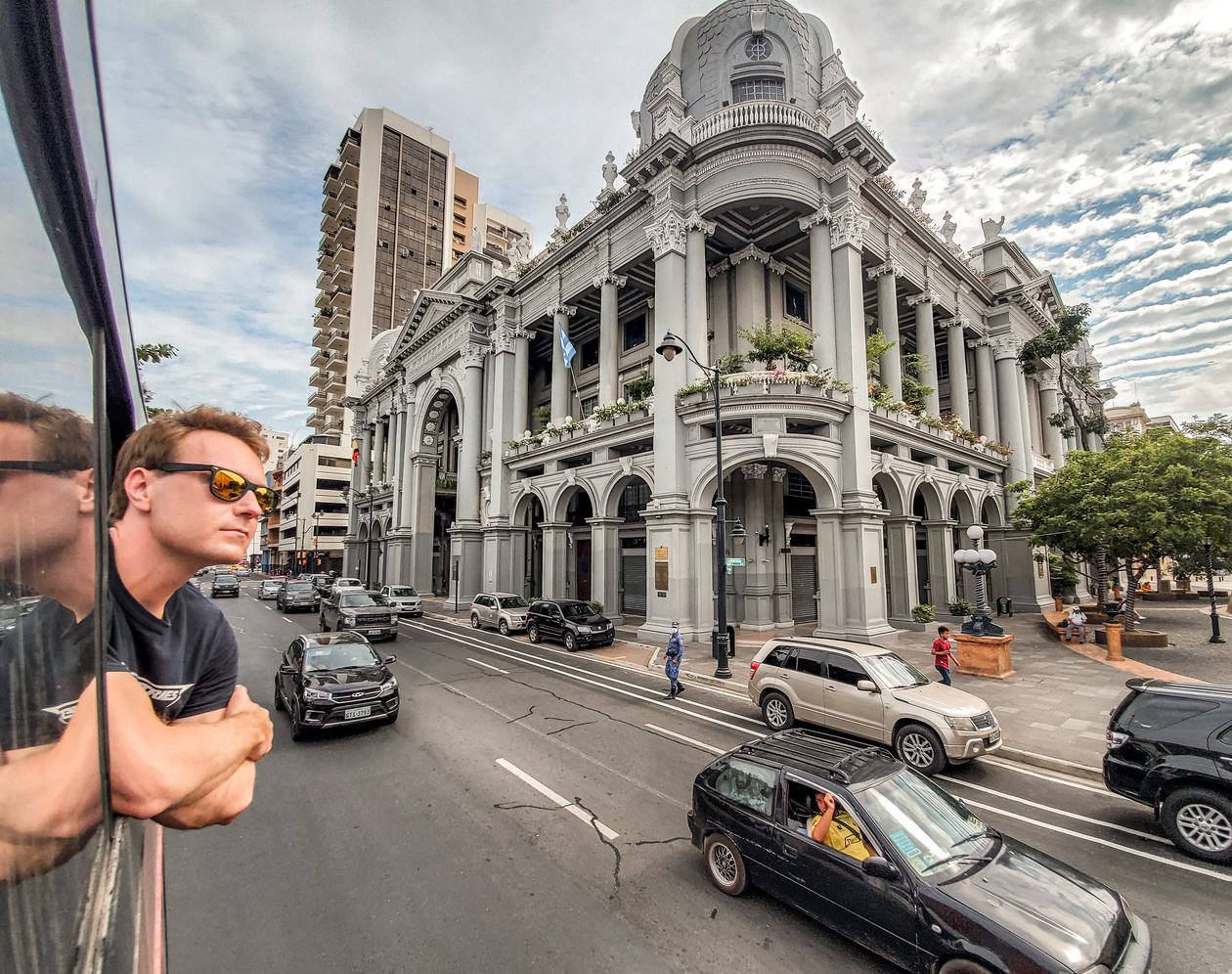
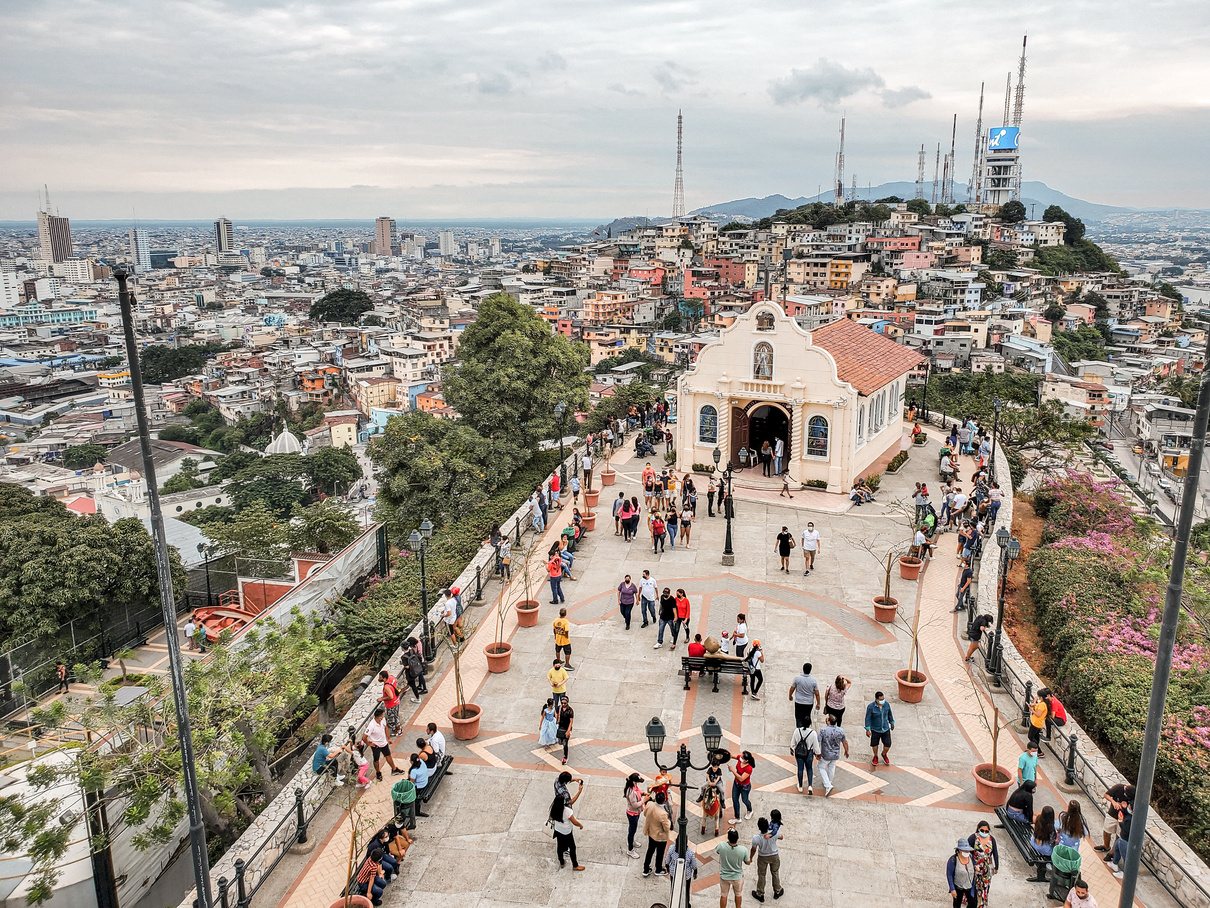

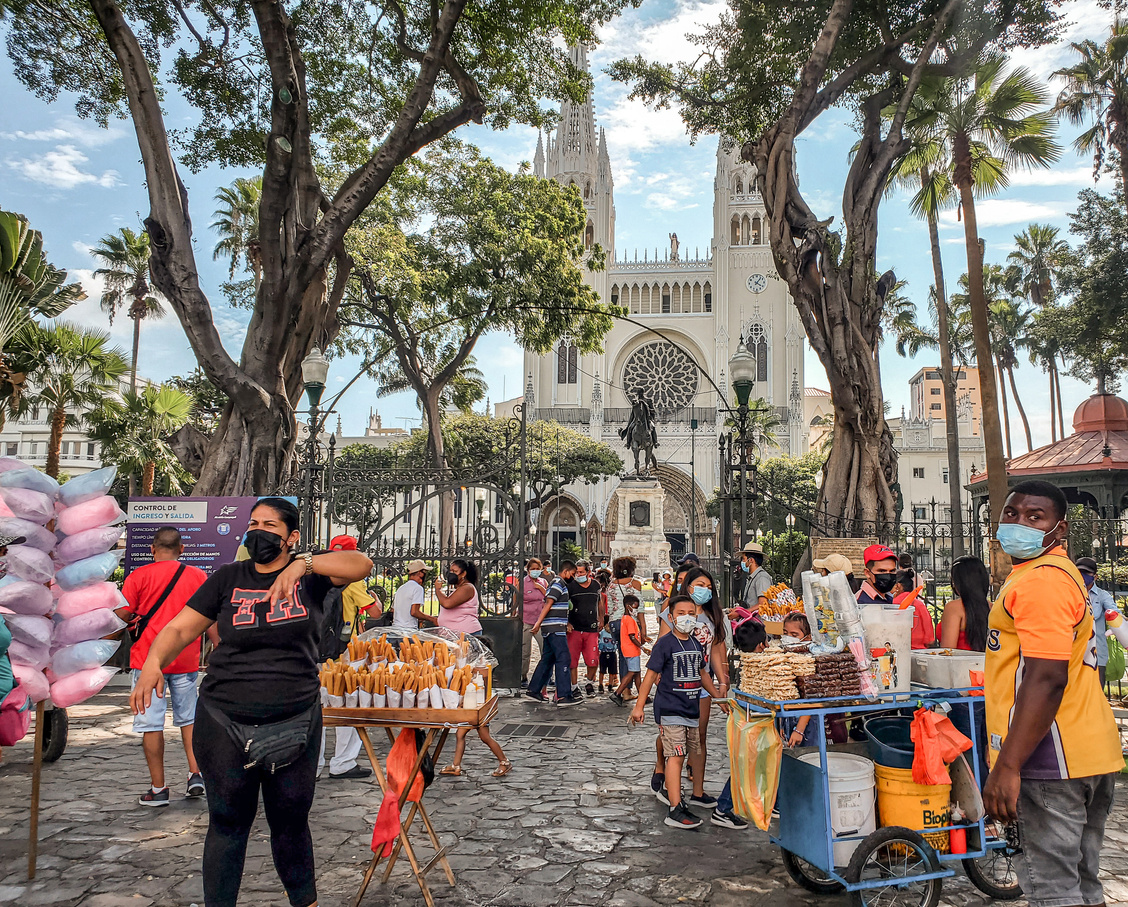
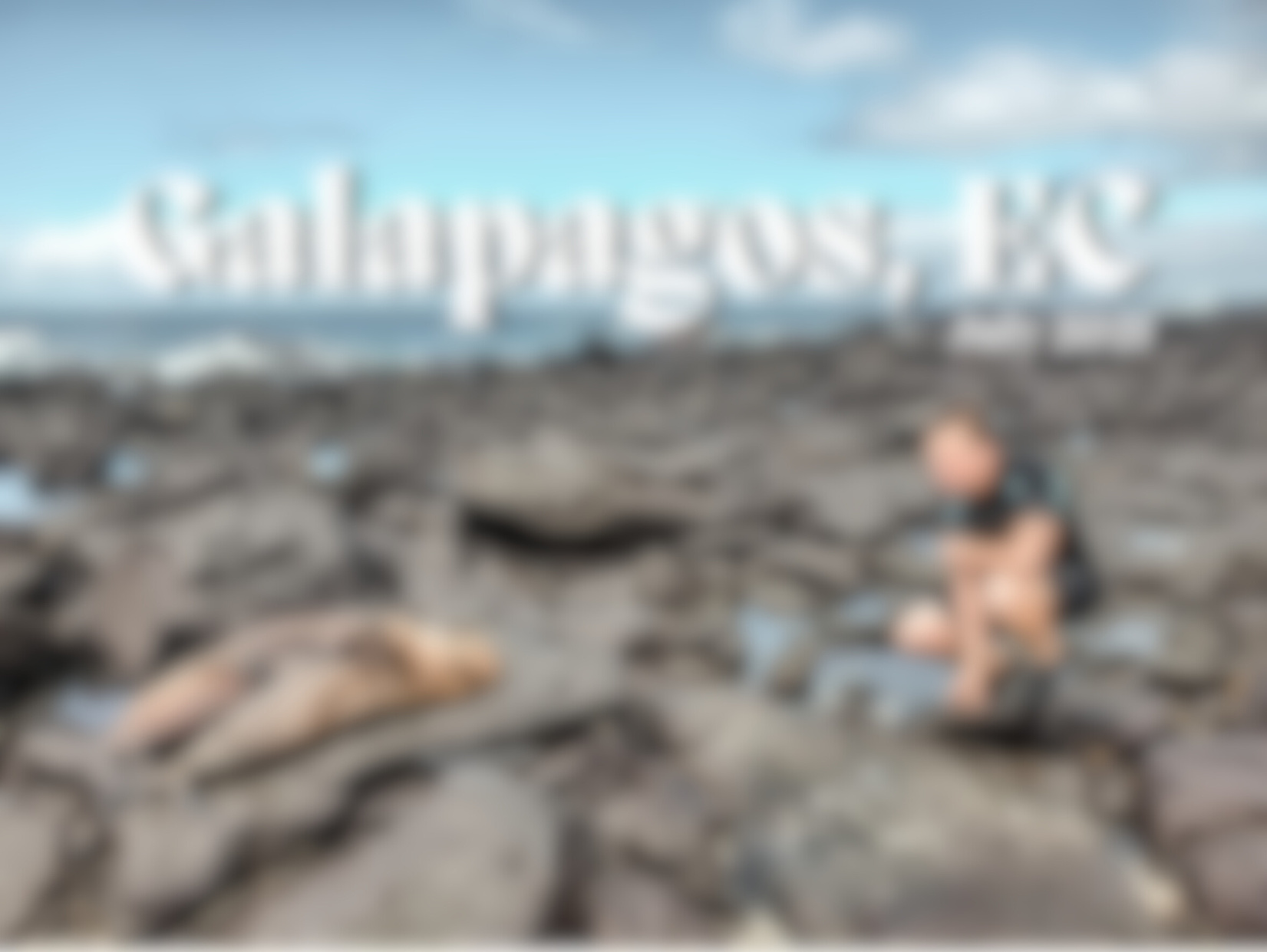
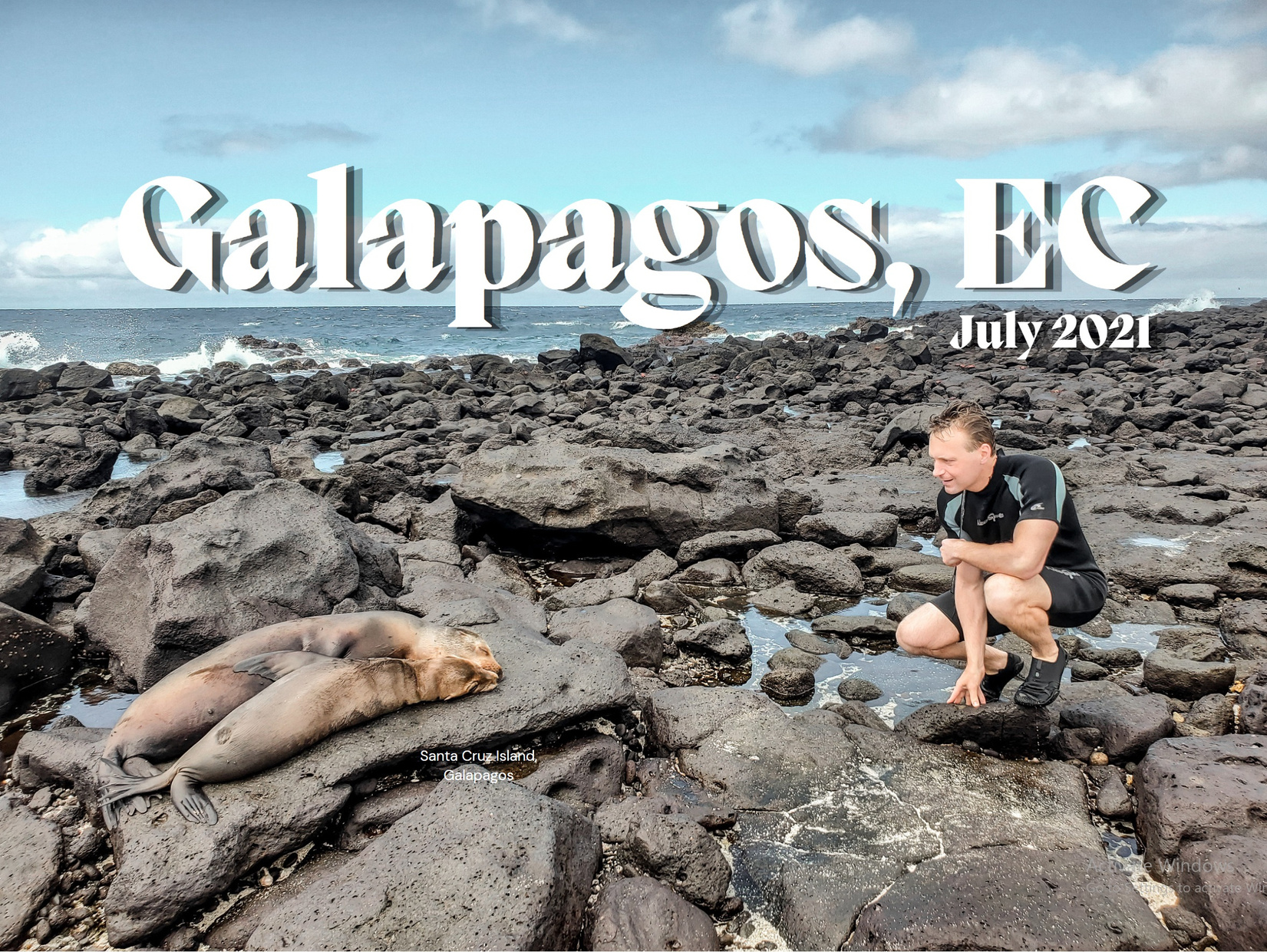

Santa Cruz Island - part 1
Our Lessons
“All the animals here are fearless!” ~Anyone who has ever been to the Galapagos Islands.
The above is an astonishingly true statement; it’s for good reason; and it’s what made this place one of our dream destinations. Just like nosy neighbors, animals of all types here will walk right up to you, out of pure curiosity. Why? Because they've never known any natural predators! Indeed, the Galapagos islands are so remote that no 'big' animals had enough energy reserves to make it here by natural means (such as by flying, or by drifting in the sea without food for weeks on end). This allowed the non-predatory animals that did survive the journey to adapt and evolve a lot faster—because without having to worry about self-defense, they could instead focus all their energy on reproduction.
Today, maintaining a “non-interference” tradition has become dogma in the Galapagos. Strict laws are in place, barring Galapagos residents from touching, threatening, or even shoo'ing the animals—apparently, this law holds true even if a sea lion is literally munching on the fish that you are slicing up on the countertop! On our morning jog by the fish market, we were entertained by the cutest sea lions, iguanas, frigate birds, and their friends, who were all waiting for a bite at the chopping station. Never a dull moment on this island!

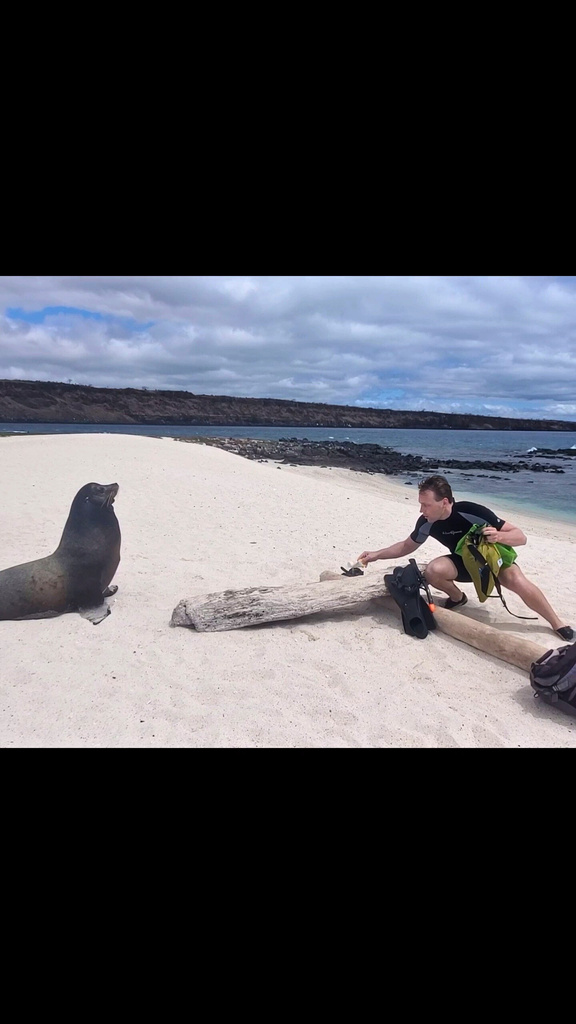
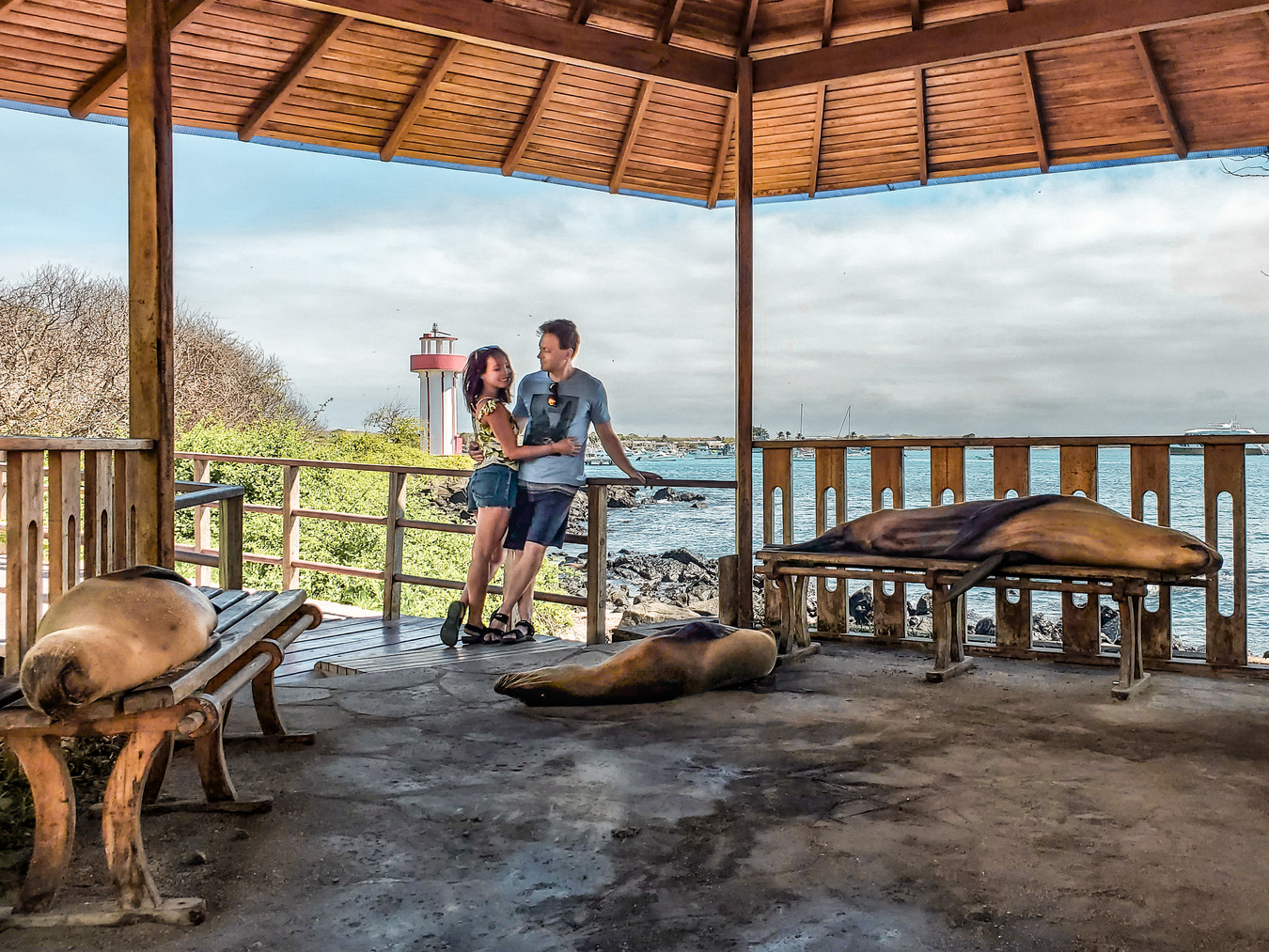

Santa Cruz Island - part 2
Our Lessons
If the animals are free to run the show, then are the Galapagos Islands a nice place for humans to live? To this question, every local we spoke with responded with a resounding 'yes!' Despite its isolated location in the middle of the Pacific Ocean, Galapagos has become one of the most desirable places to become a resident for many Central Americans. We were told there is relatively minimal crime due to sufficient work—and that a worker here typically earns double the wage compared to an equivalent job in mainland Ecuador. School is free until college, and a college education obtained in the Galapagos is sufficiently good that graduates are able to obtain jobs in other parts of the world. As a result, residents seem genuinely happy, have a strong sense of community, and truly love and want to protect their islands.
Unfortunately for many would-be residents, the Galapagos population is tightly controlled. Tourism makes up 85% of Galapagos’ economy—and in order to sustain the ecosystem which drives that tourism, only 3% of the land in the Galapagos is allowed to be developed (the rest is a national park). Thus, our taxi driver explained that an Ecuadorian citizen needs to be married to a Galapagos resident for 10 years to become a resident him/herself (the rule used to be 5 years, but too many people were getting married!).

Isolated from geopolitics and free to switch to full science-nerd mode, Eric spent late evenings streaming David Attenborough and Nat Geo specials over a painfully slow, one-bar wi-fi signal. The next five pages represent a (highly condensed) version of the notes he enthusiastically took over the subsequent week!
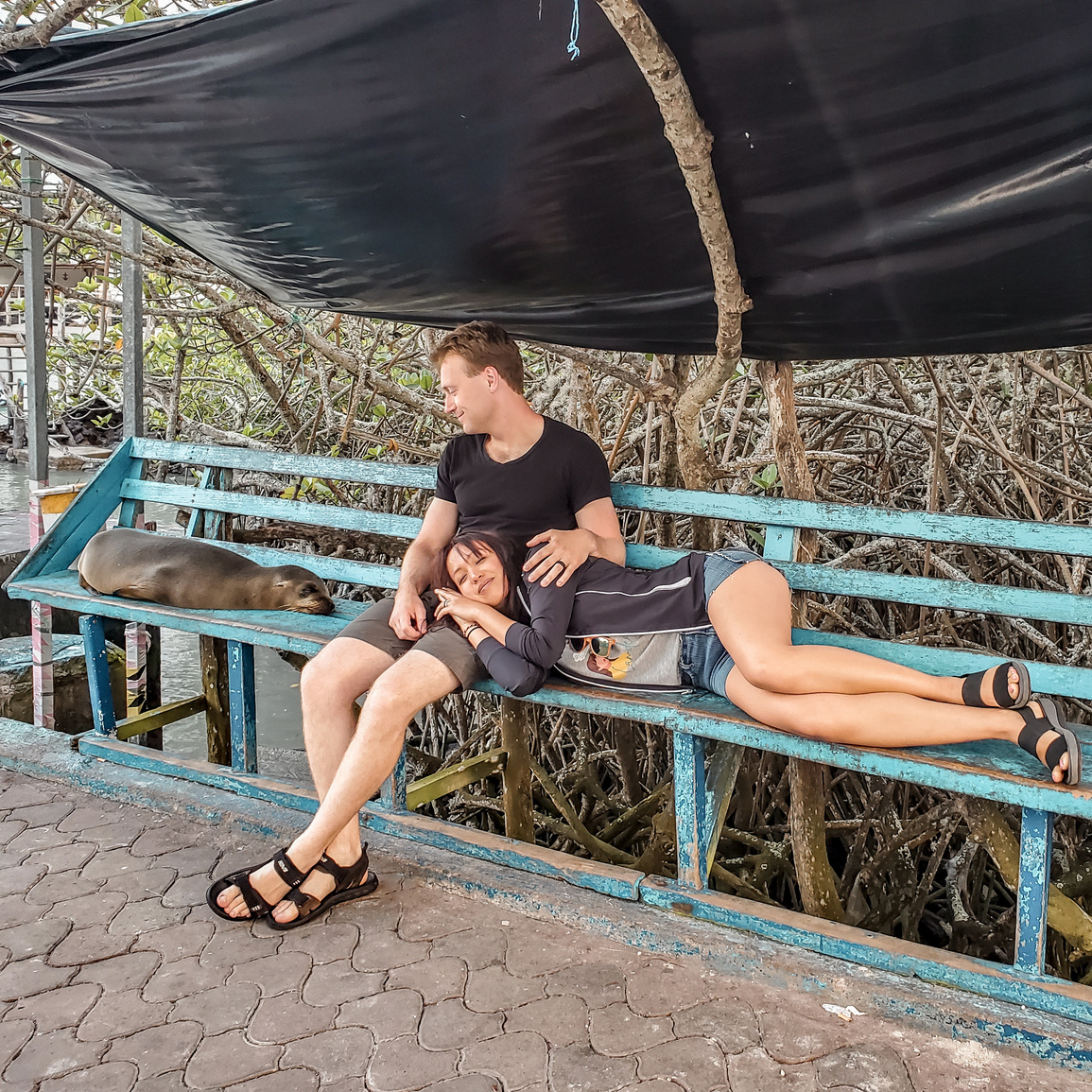


Santa Cruz Island - part 3
Our Lessons
When driving on Santa Cruz Island, watch out for Tortoise Crossing signs! Galapagos tortoises can grow as large as 300 kg (660 lbs), and we received a warm welcome from these ancient giants. Tragically, these guys were almost hunted to extinction by early traders, whalers, and pirates: basically, any long-distance sailors who stopped along these islands for food and rest. What better way to get meat that lasts for months than to haul a slow-moving tortoise aboard? Tortoises can stay onboard in a near-dormant state, needing just a little bit of food and water, until it’s time for the crew to feast. Sadly, these tortoises, who knew no predators prior to us humans, played an important role in the Galapagos' habitat: By grazing on seeds and trampling areas of vegetation, they helped open up new grounds for different types of vegetation to disperse and grow.
Eric enjoyed squatting down and having long conversations with the tortoises. They were very calm, attentive listeners—'wise', Eric called them, after learning that the longest-recorded age of a Galapagos tortoise is 177 years old. The look in Eric's eyes was soul-crushing when the biggest tortoise eventually shooed him away with a bored hiss ("While we're young!" I imagine her saying).
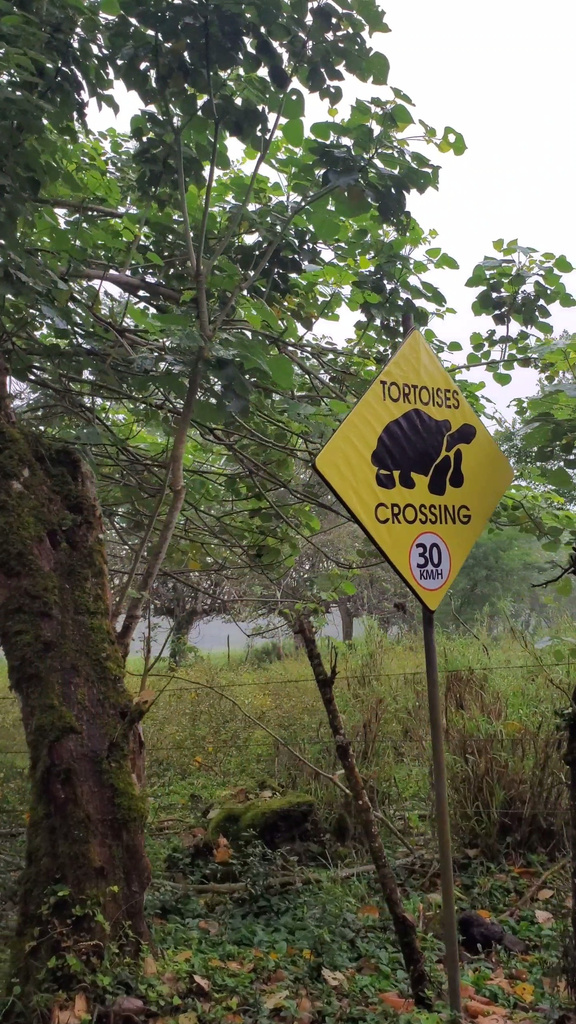

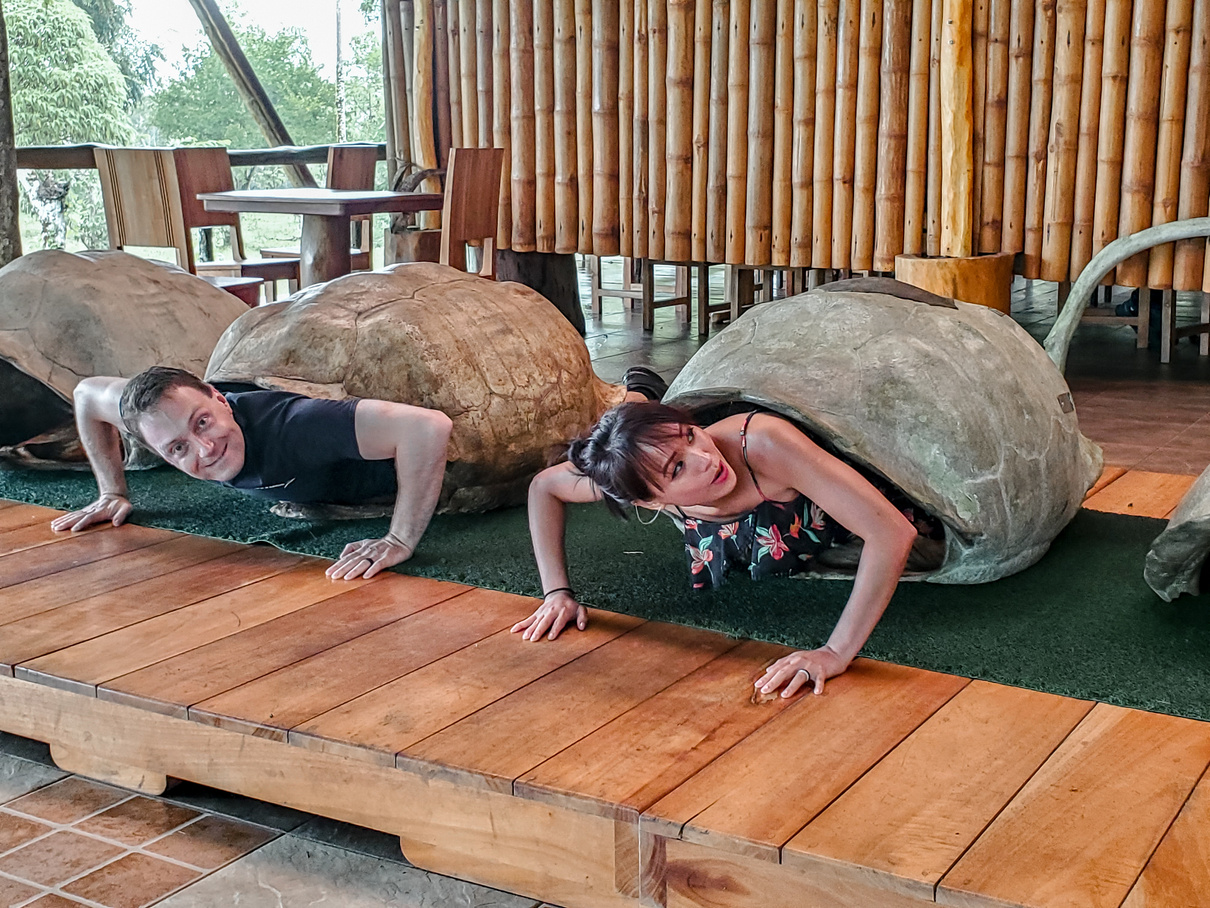



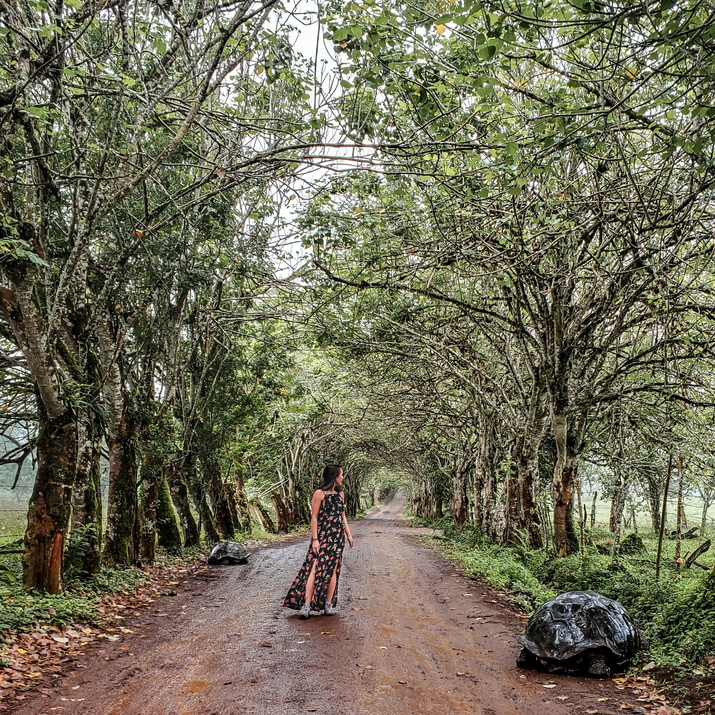
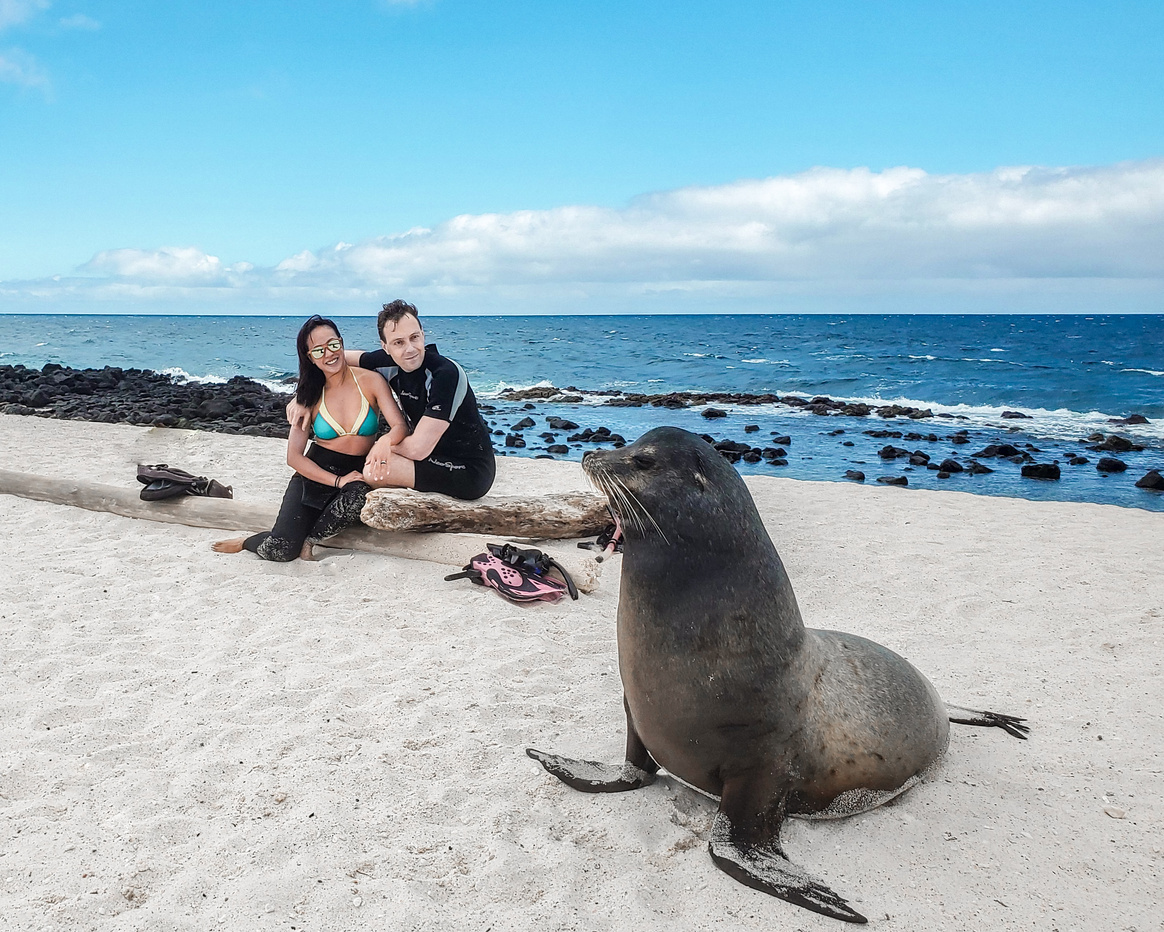
Santa Cruz Island - part 4
Our Lessons
Even typically-'defensive' sea lions have evolved into more docile creatures here, again due to a lack of lack natural predators. Their personality towards humans has likewise evolved. We took a dip with our mild-mannered friend (and back-stretching yoga teacher!). We were warned to be careful around the big "alpha males", though; they can get defensive when you get close to their babies… and in fact, when they stand up straight and arch their back it is a way of expressing their dominance (more sea lion 'yoga' photos to come)

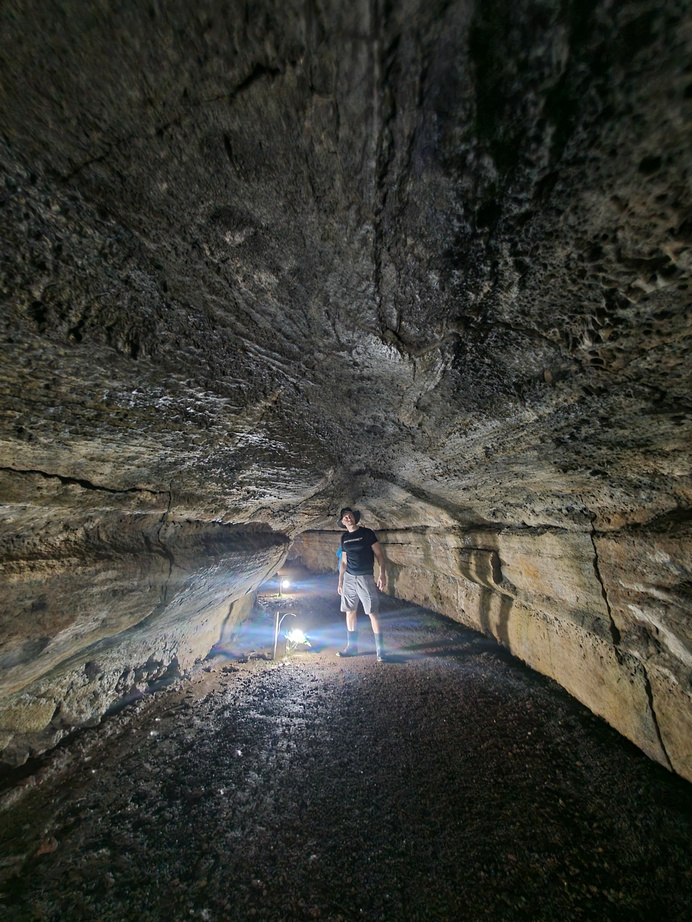
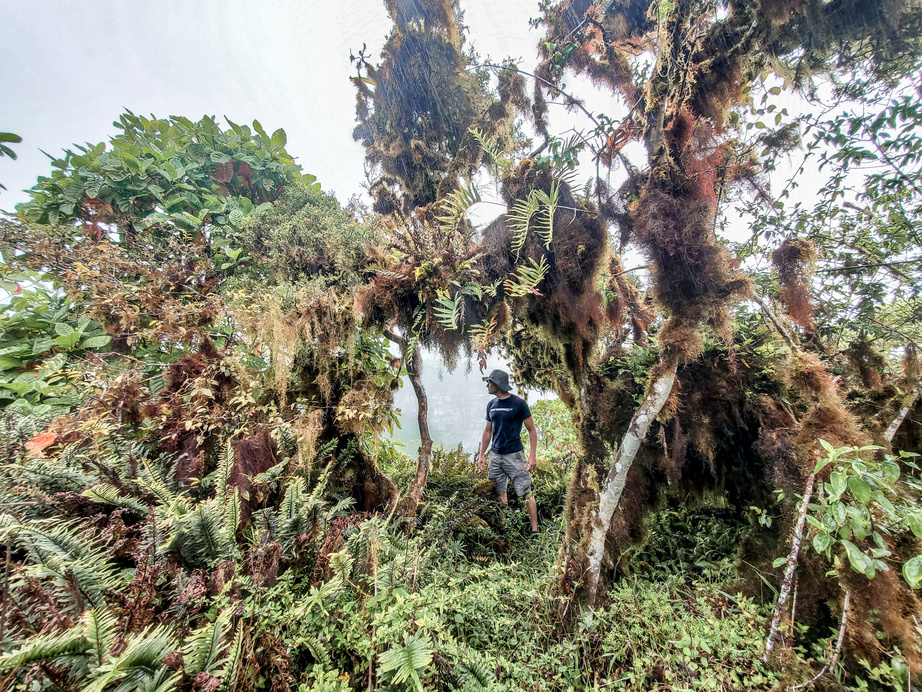


Lava can build mountains... or make the ground collapse from under you! Los Gemelos, aka the 'Twin craters', used to be part of a vast network of underground caverns, forged by flowing lava. Once the lava dried up, the hollowed-out spaces remained. Some caves still exist and can be explored. The Gemelos have long ago lost their ceilings due to collapse, but the remaining sinkholes are massive and breathtaking, covered in lush green flora that has thrived in the nutrient-dense soil.
It turns out cacti don't just grow in deserts; they also grow on tropical islands. A water taxi, followed by a beautiful walk through a cactus forest, brought us to Las Grietas Canyon, where we enjoyed one of the best swims in the still water that lies cradled within the fractured earth.
Santa Cruz Island - part 5
Our Lessons
Galapagos marine iguanas survived by learning to eat algae after getting stranded here, probably having accidentally hitched a ride from mainland South America on a piece of driftwood. Due to this unusual and inescapable predicament, they also had no choice but to learn to swim... and in fact, they are the only sea-going lizards in the world! Since the ocean can be cold, they have evolved to have black skin, which is the best color to soak up the sun's warm rays. They can be seen just about everywhere in the Galapagos when the sun is out: belly-down, legs-spread, basking in the heat.
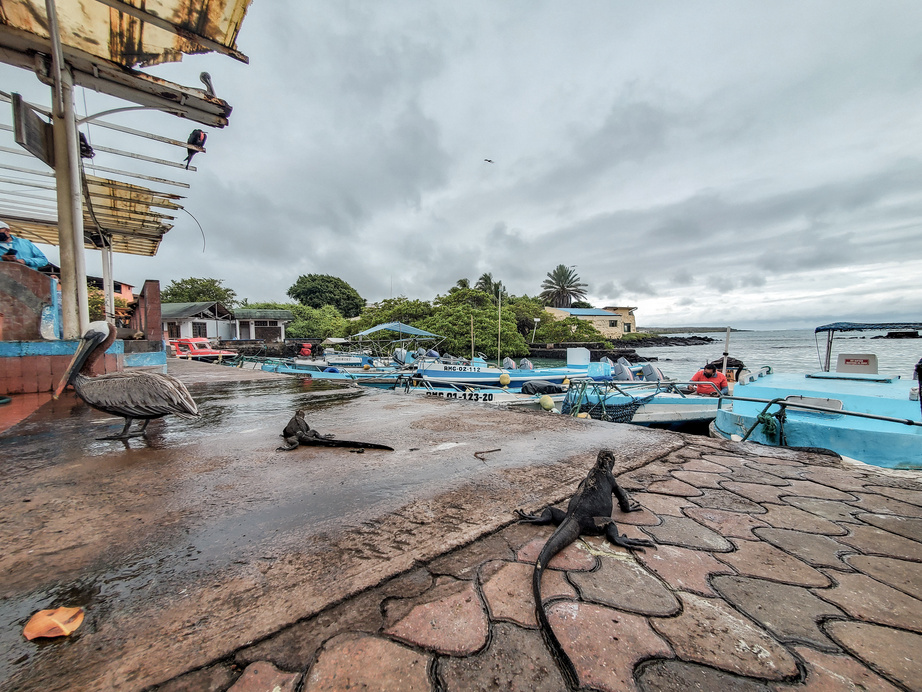
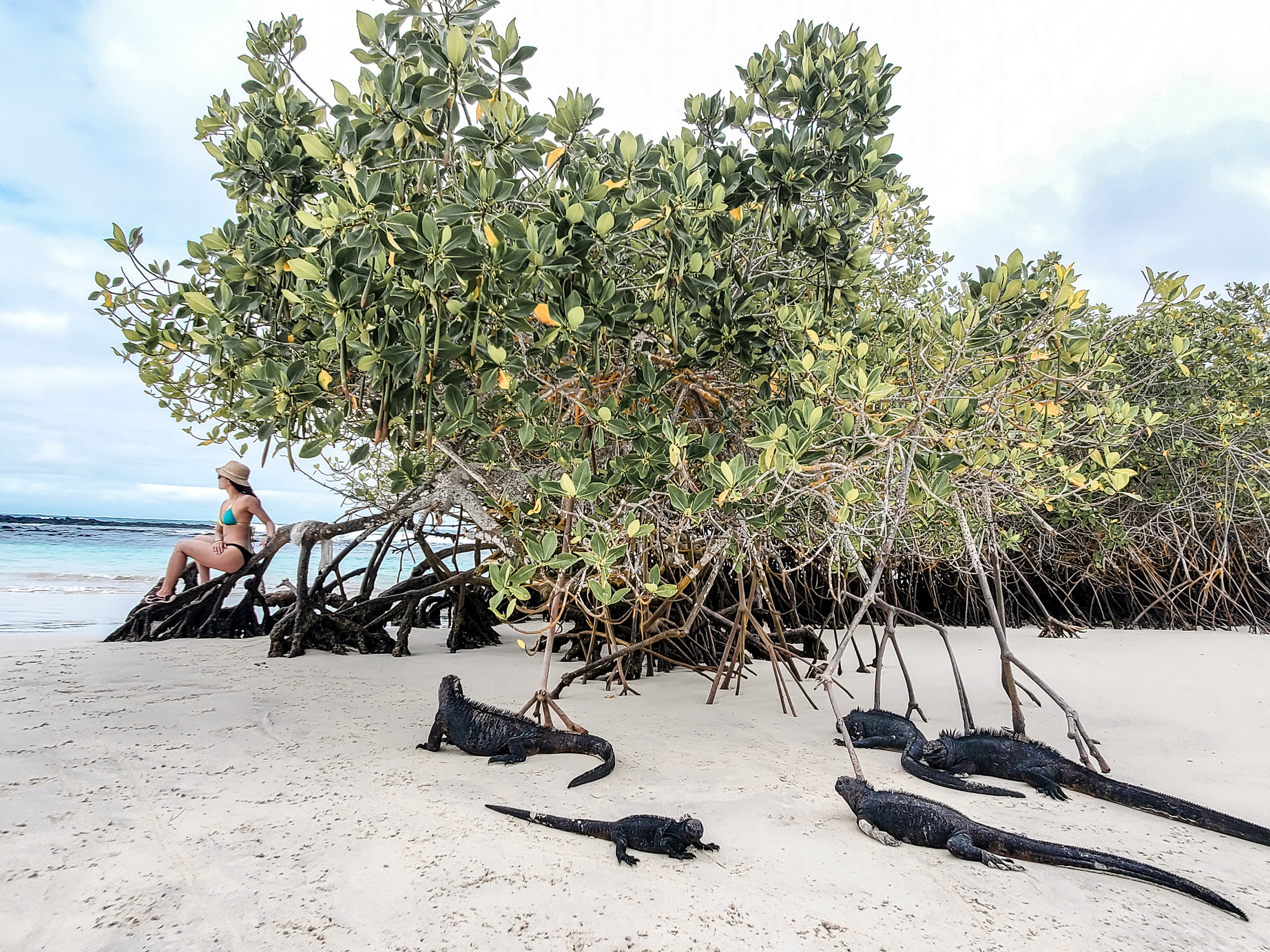

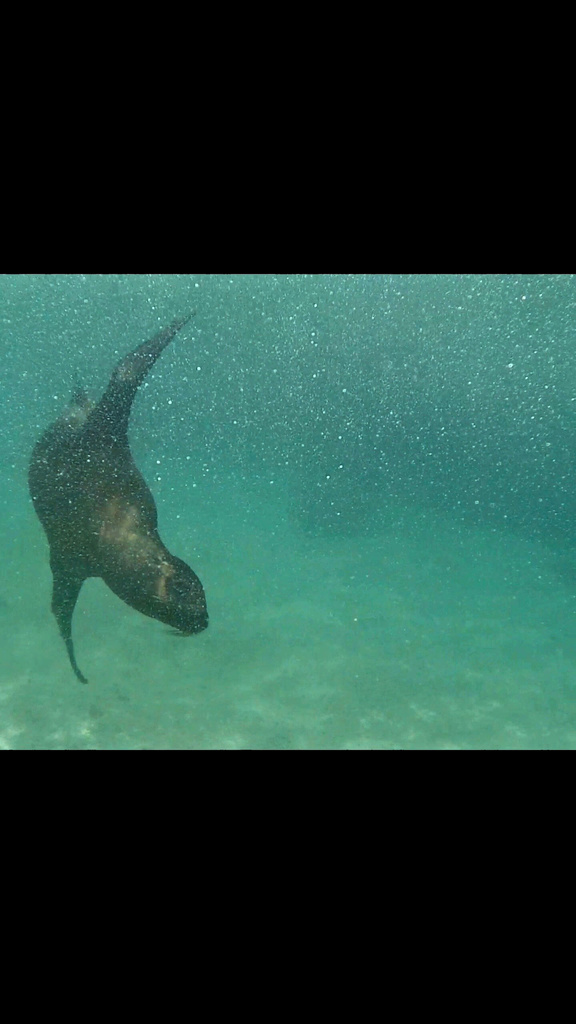
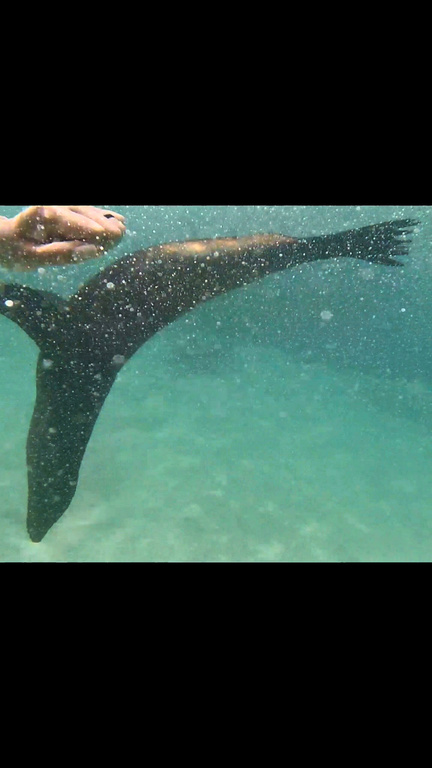
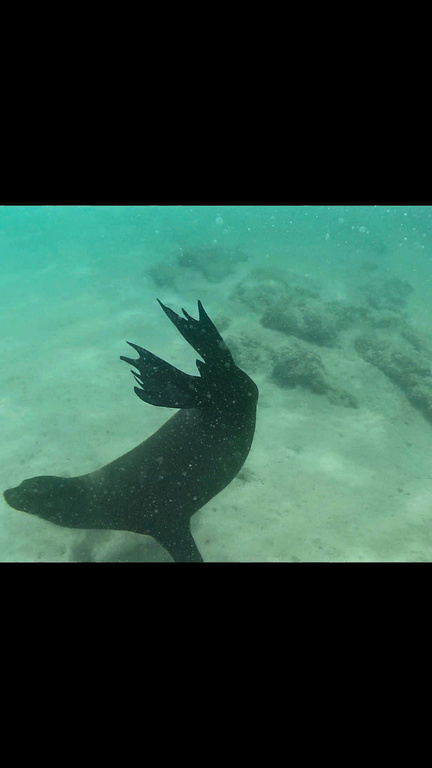

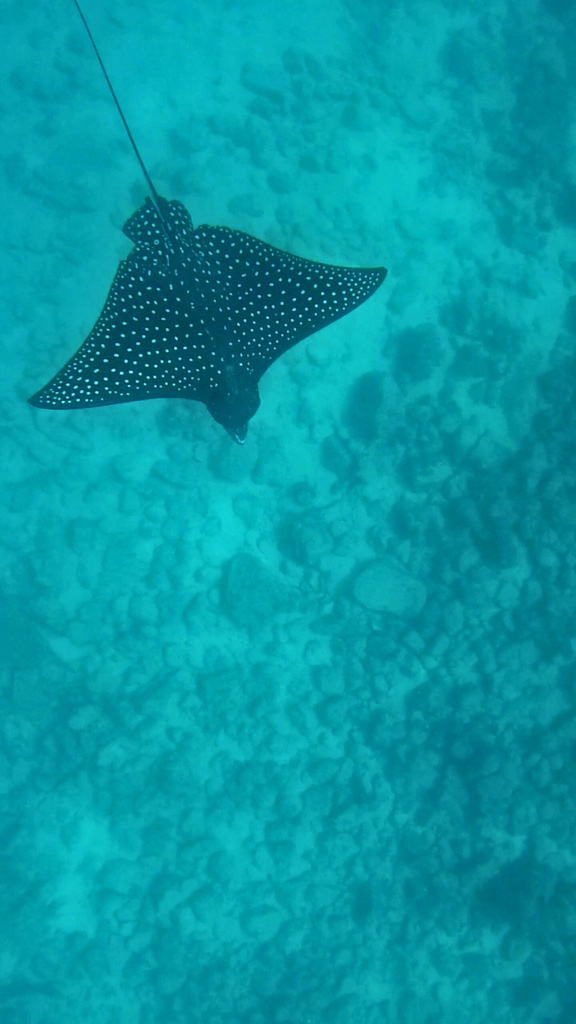

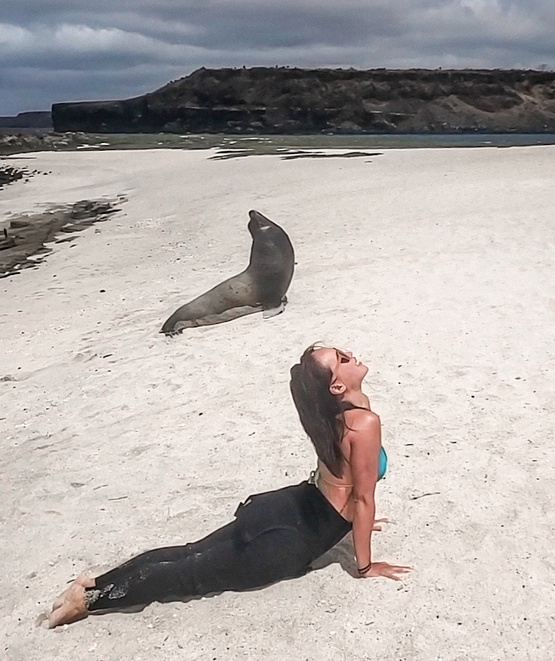
Seymour Island
Our Lessons
The Galapagos islands formed from east to west, due to the gradual movement of tectonic plates. The eastern islands are flatter; the western islands are rockier and more volcanic. This has led to the clustering of certain species onto certain islands, depending on which habitat was most suited for their survival (and each species continued to evolve traits ever-more unique to the Galapagos from there).
On a day cruise, we had the perfect opportunity to see some of the Galapagos’ most iconic wildlife. In addition to Darwin’s fearlessly friendly finches, some of our personal favorites included:
1. Blue footed boobies: The name booby derives from the word “bobo,” which was used mockingly by early settlers because these birds seemed slow on land. However, in the air, boobies are actually lightning-fast hunters, who kamikaze dive-bomb into the water from a hundred feet high when they spot a fish. Their brilliant blue-colored feet are a desirable and attractive trait of adulthood. Meanwhile, baby boobies are stuck with pasty-white feet until they mature.
2. Frigate birds: These graceful flyers are unique in that males attract the ladies by puffing up their bright red chests—literally with air, like a balloon! This display of machismo takes dedication; it actually takes hours to days to get the chest fully inflated.
3. Swallow-tailed gulls: Unique among seagulls in that they have bright orange rings around their giant eyes (also a trait used to attract females). They are also the only night-hunting gull.
4. Land iguanas: Unlike marine iguanas, land iguanas are not strong swimmers, so they spend less time in the cold water and do not require black skin to heat themselves in the sun’s rays. As an alternative to sea algae, land iguanas have evolved to eat unusual land plants, including cacti (so do some giant tortoises actually).
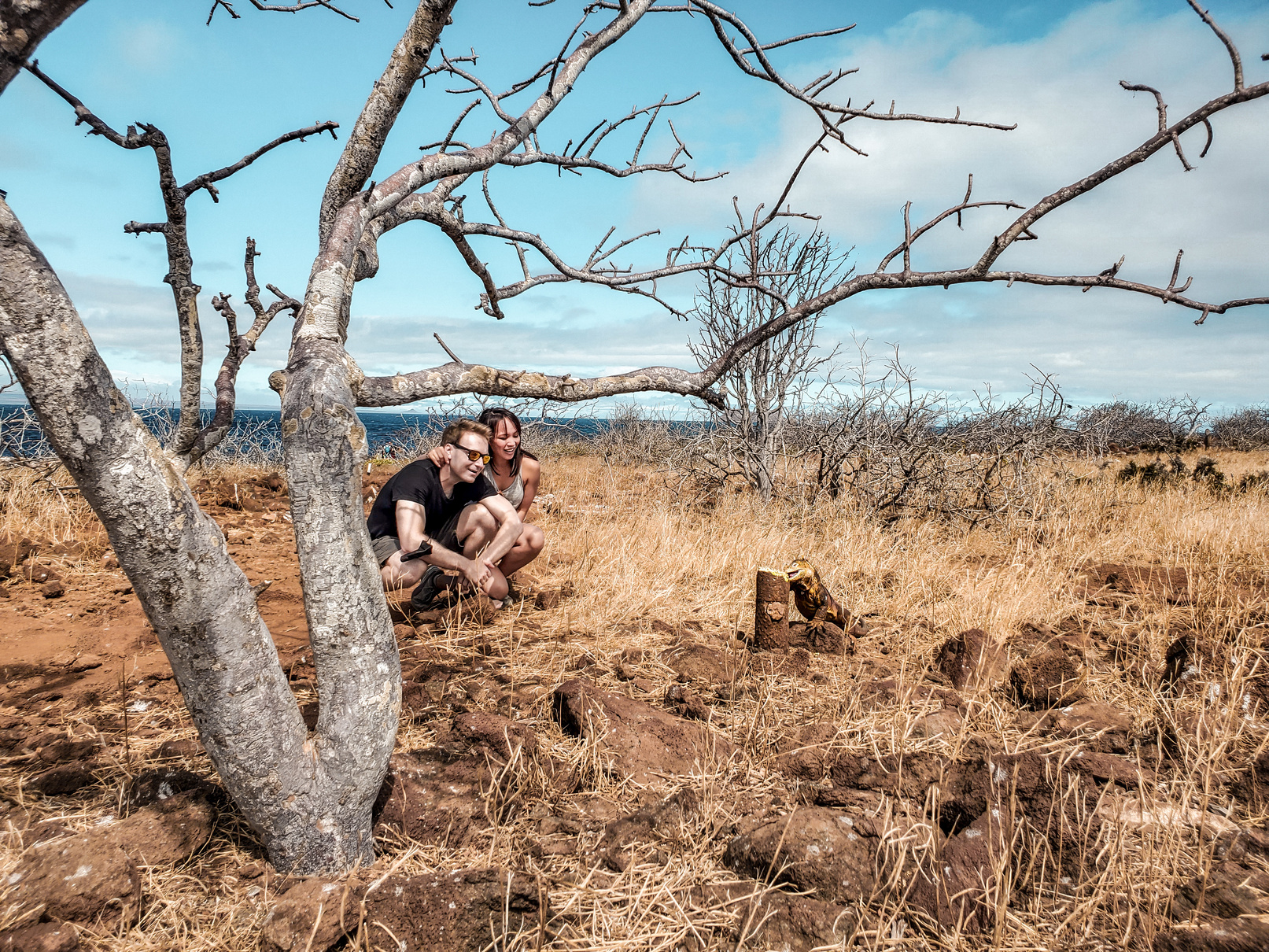
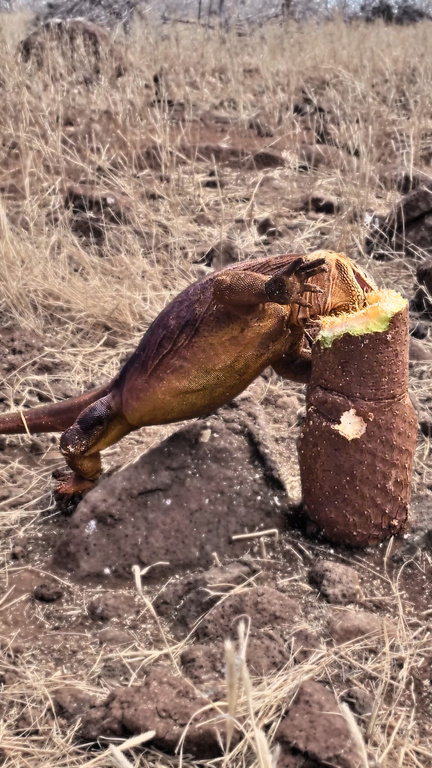

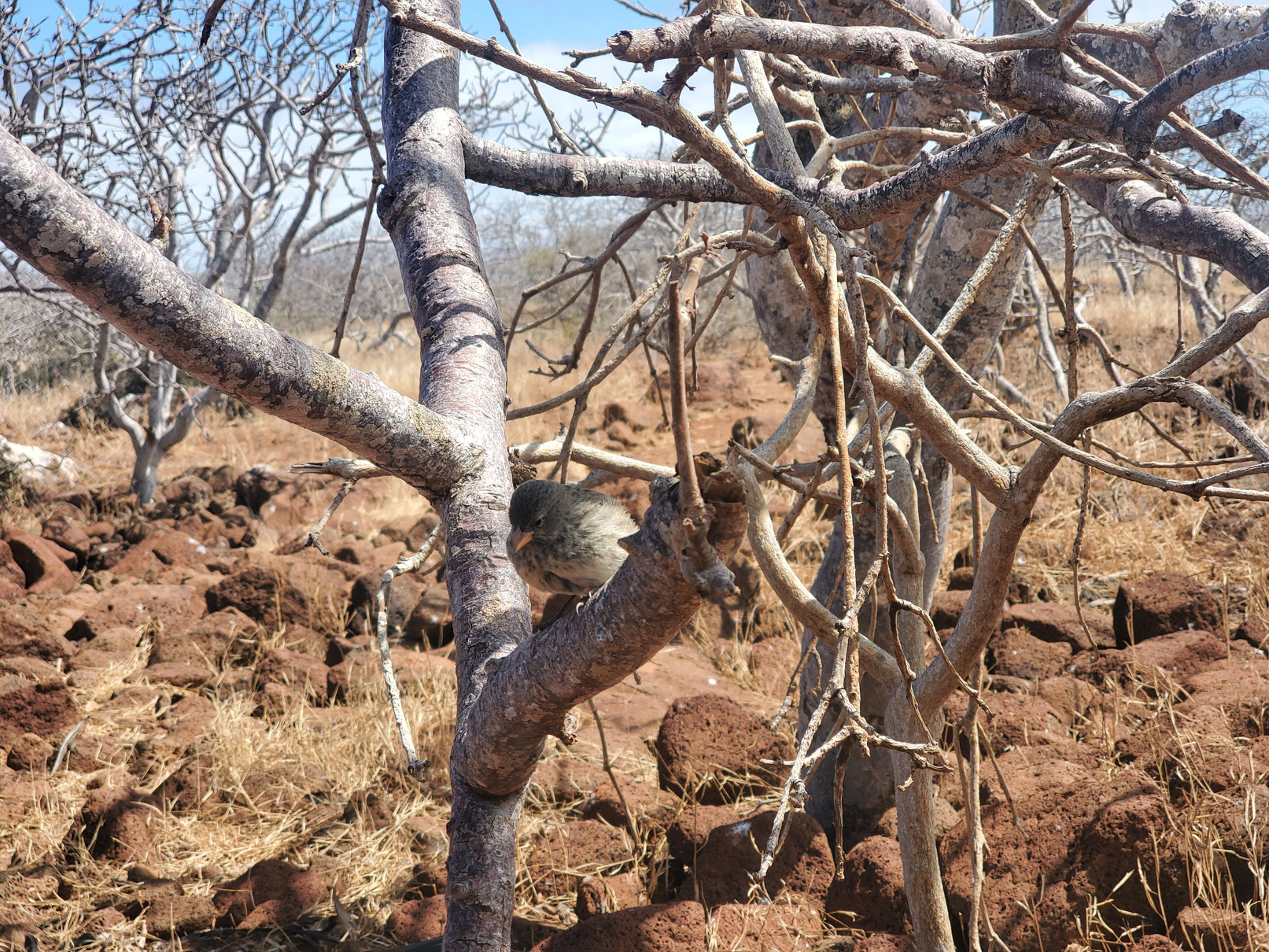
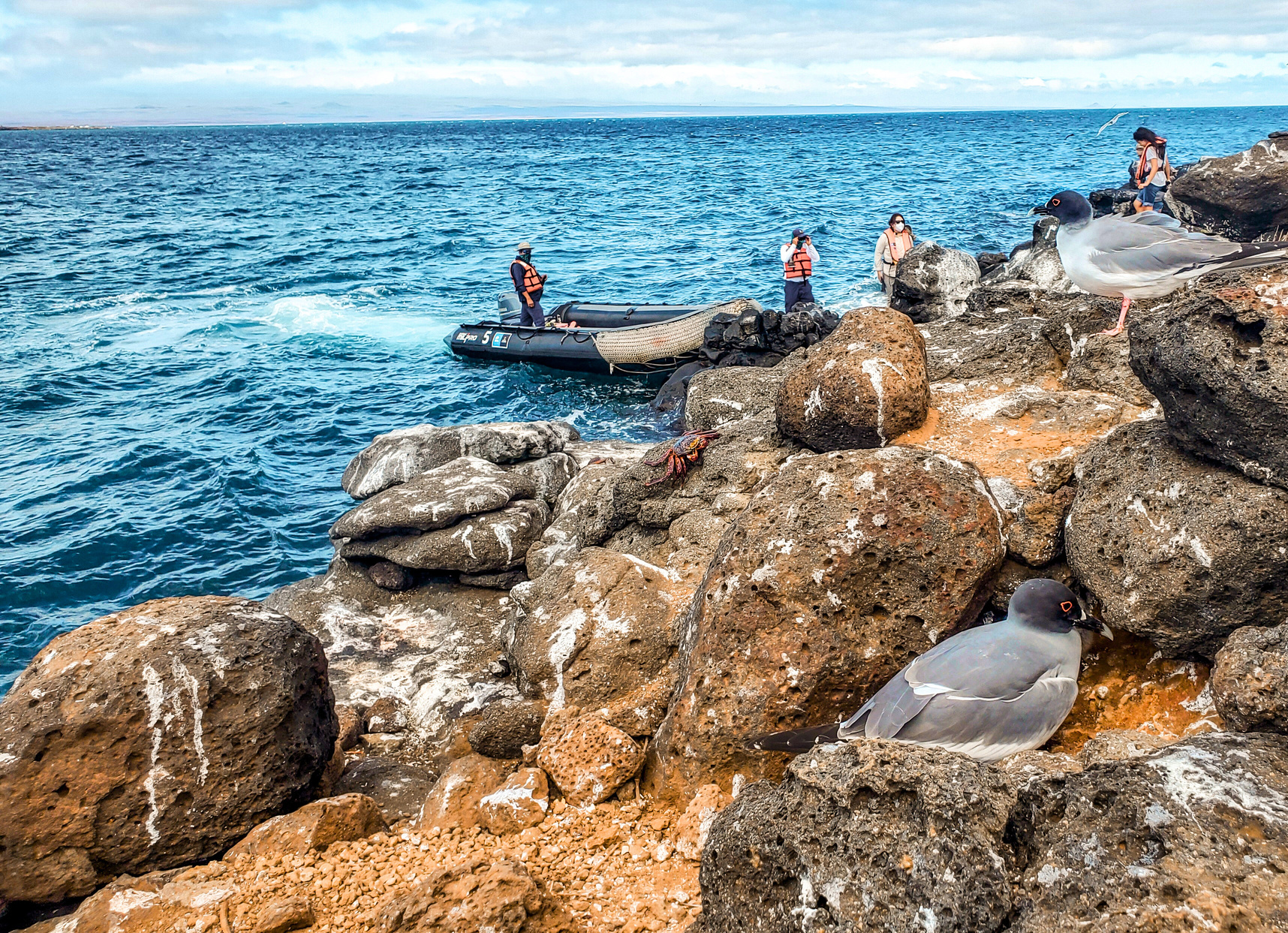

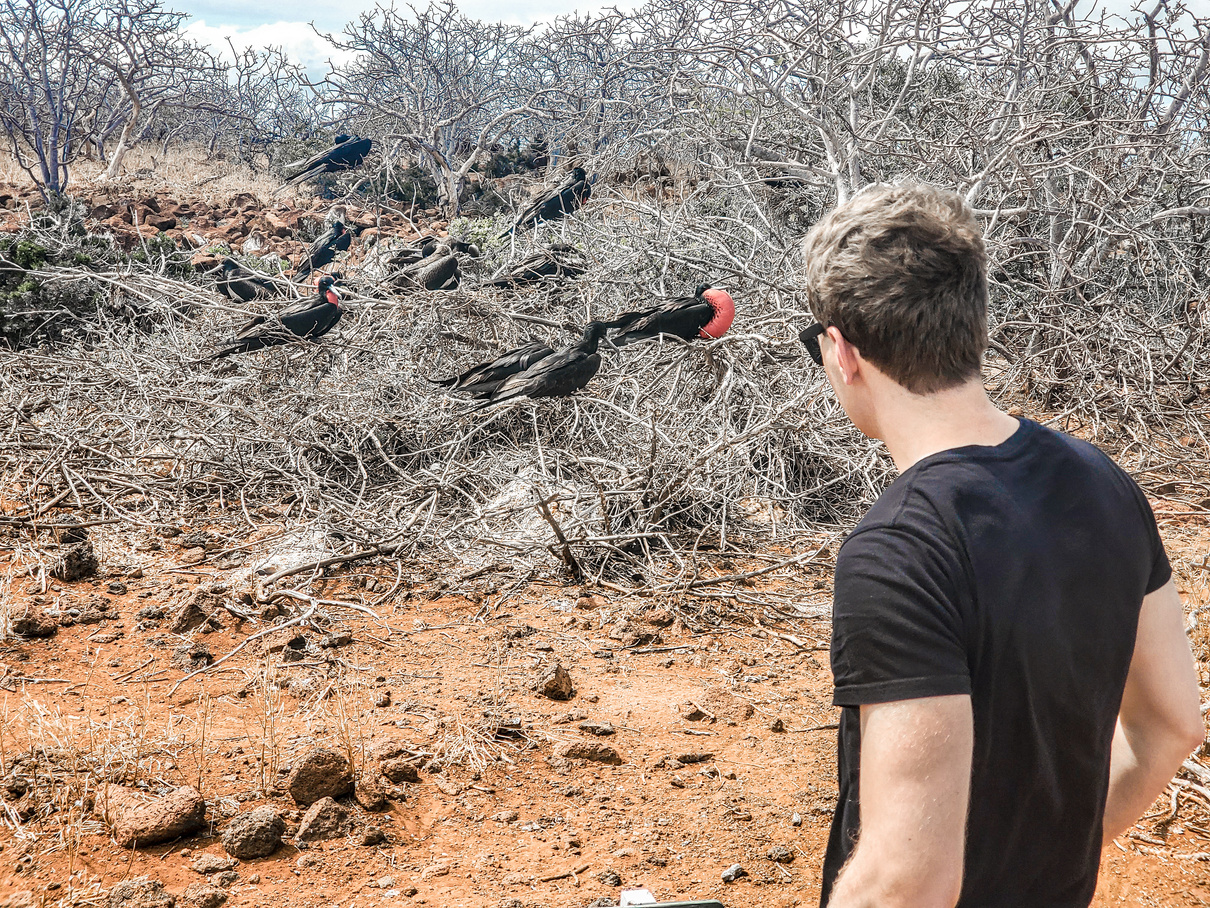
Bartolome Island
Our Lessons
Bartolome, an inactive volcanic island, was riddled with colorful lava "bombs." Lava bombs form when a volcano expels liquid magma so high that it has time to cool mid-air, transitioning into solid rock that smashes back to earth like a terrestrial meteorite! This incredible red-tinged landscape made us feel like we were walking on the surface of Mars.
Penguins in the tropics? In the Galapagos, it seems as if anything is possible. On the shores of Bartolome Island, a colony of Galapagos penguins has taken up permanent residence, made possible by a uniquely cool ocean current here, plus their evolutionary transition to a smaller size. These two features have allowed the penguins to shed just enough heat to live a comfortable life in this relatively warm climate. As we jumped into the water to join them, we learned firsthand that they are incredibly fast swimmers, gliding under us in the blink of an eye!
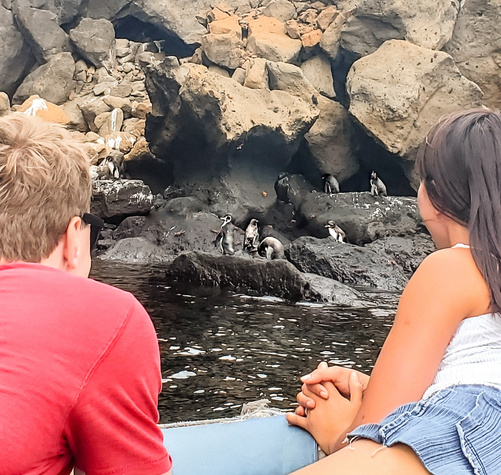
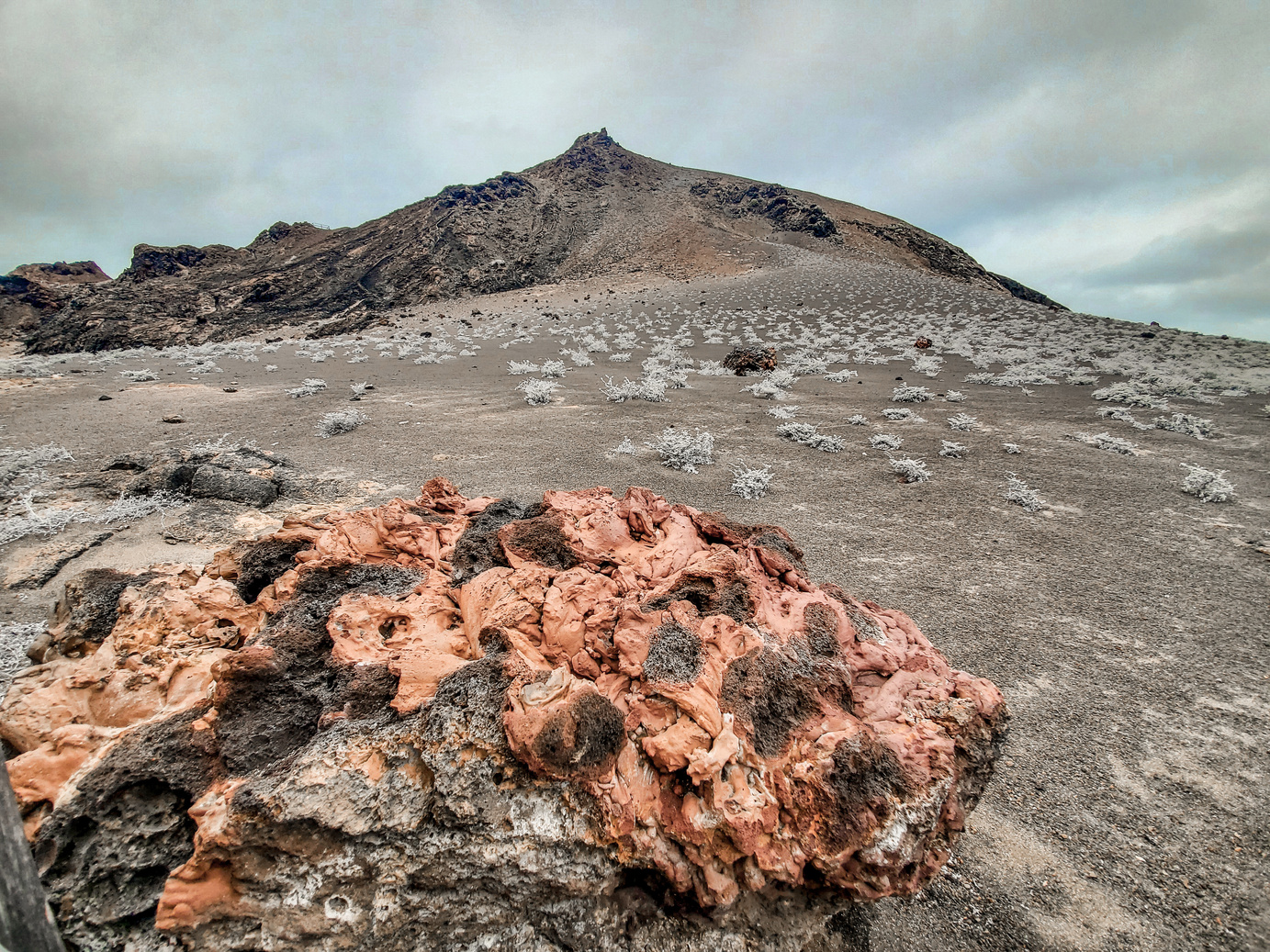
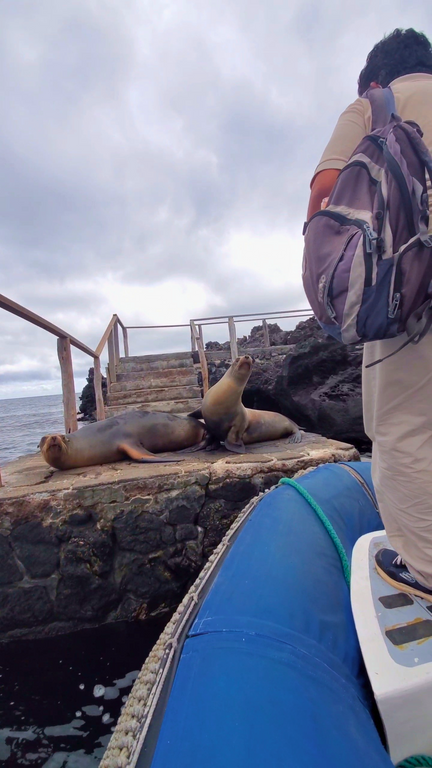
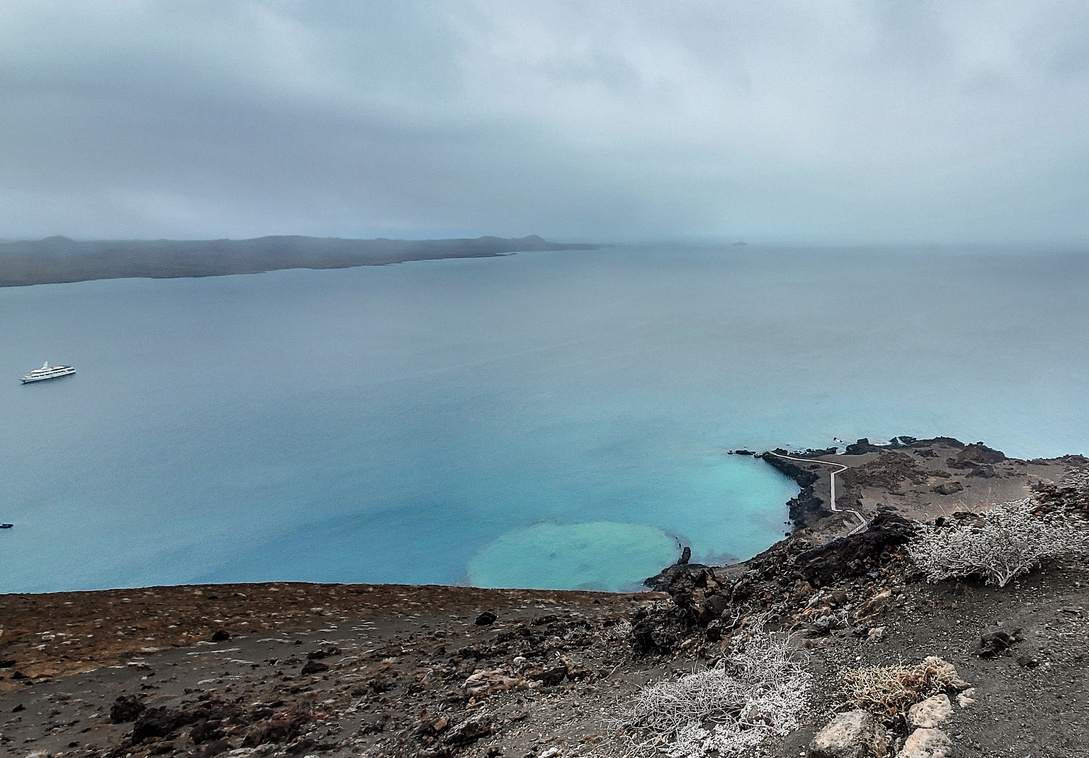



San Cristobal Island - part 1
Our Lessons
Do NOT pet the sea lions! We were regularly reminded of this, because it is so tempting! Furthermore, on the island of San Cristobal, sea lions are literally everywhere. Hundreds of them take over the beach every evening, where their collective barking is so loud it drowns out the sound of passing boats. In the water, the young ones are particularly playful and curiously swam right around us. Unfortunately, if you touch them, we were warned our foreign scent may cause them to be rejected by their mothers. One fellow lad came right up to Eric and even sat right next to him, forging a (contactless) friendship.
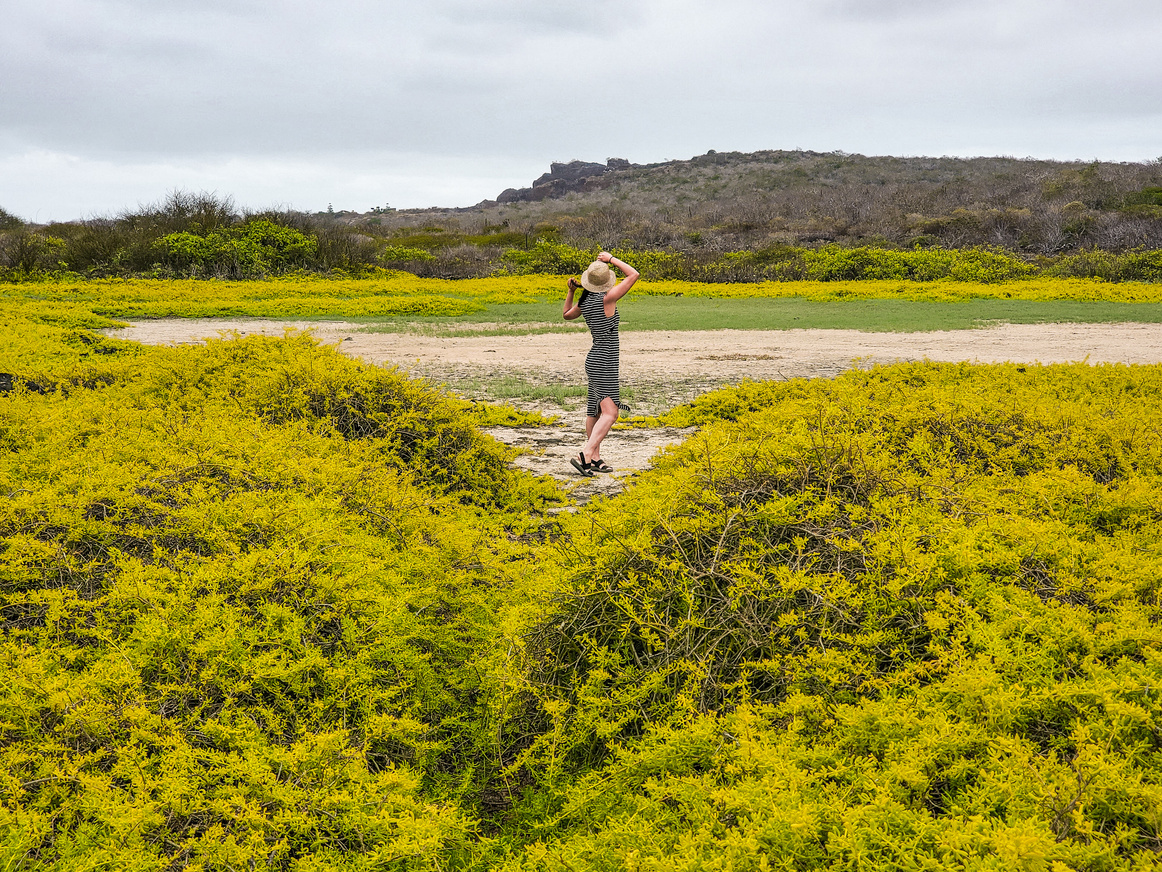
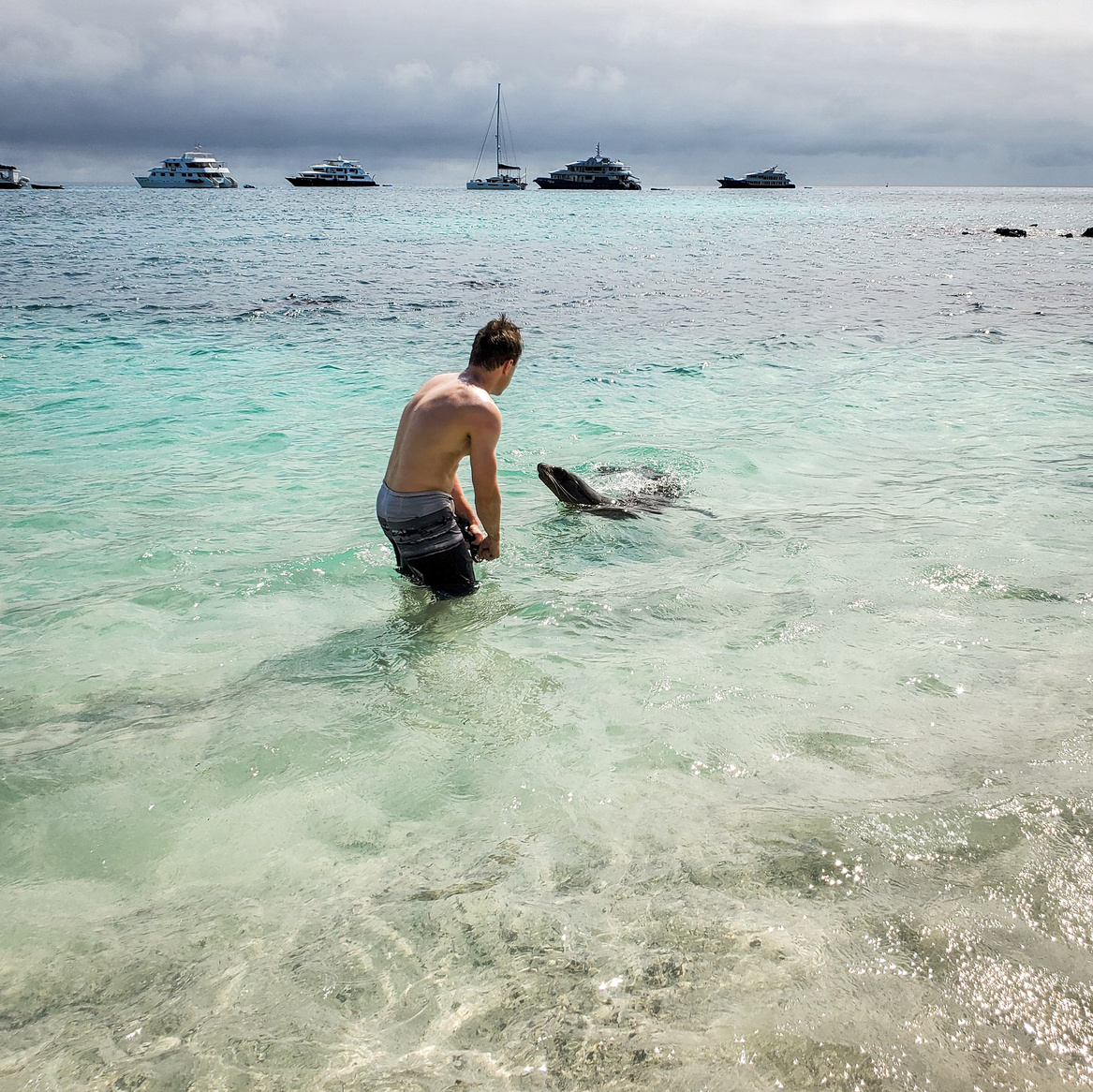
A lesson learned the hard way: They’re called boat "slips" for a reason... and I will now make a point to avoid the wet concrete slopes around the edges of boat docks! After returning from a day cruise, I was enjoying the sunset with these delightfully colorful crabs—so attractive that I just had to get a bit closer. The next thing I knew, my feet had slid out from under me because of the oily moss coating the concrete slope… and I proceeded to make a helplessly slow-motion, frictionless descent down this softly angled dock... until I plopped into the water! Eric ran to my rescue, unaware of why I slipped, only to end up sliding into the water right next to me, where he held me close and waited for a nearby boat to come to our rescue ♥️

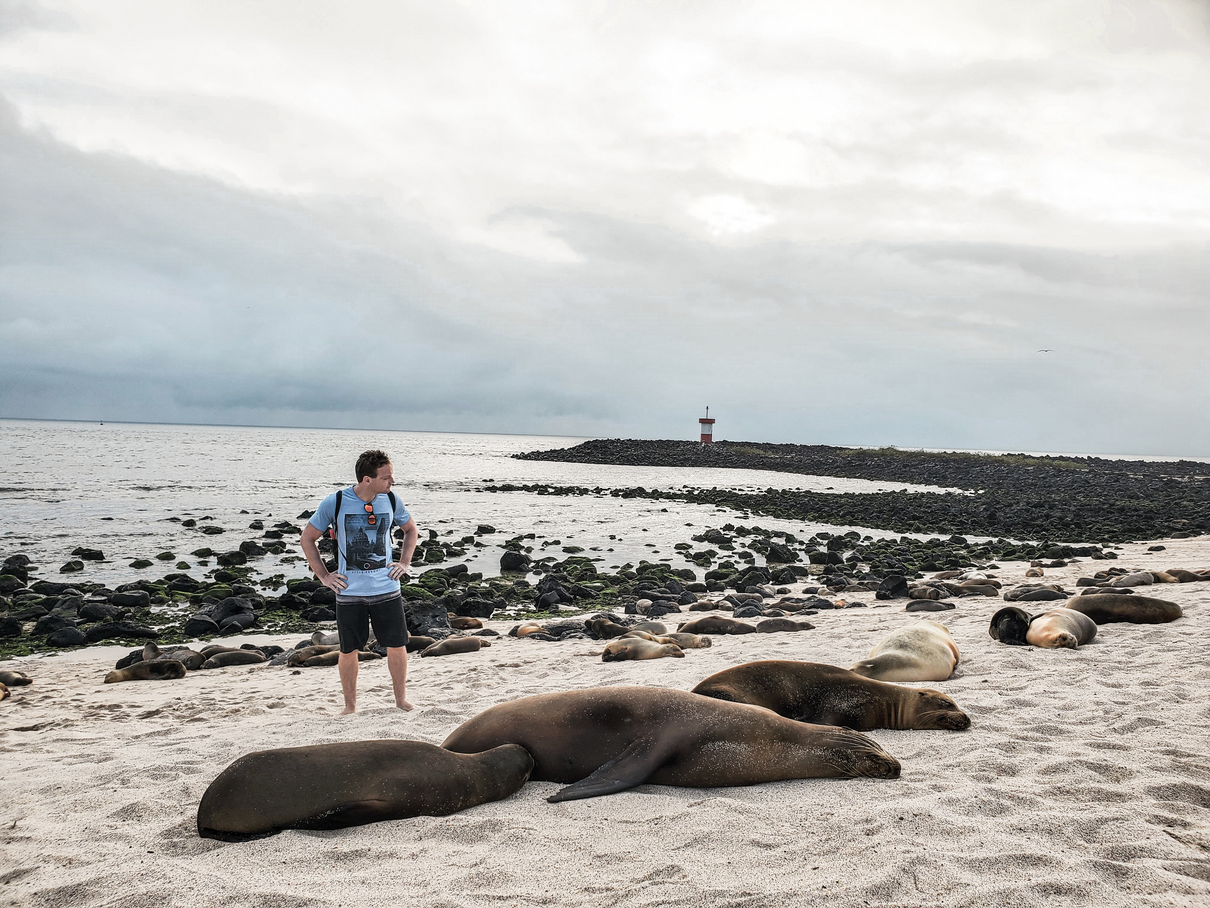


San Cristobal Island - part 2
Our Lessons
One of the original governors of Galapagos bragged that he could recognize a tortoise's “island of origin” based on its shell's appearance… and actually, he was right! For instance, were told the San Cristobal tortoises have evolved higher, more “open” arches on the front side of their shells—a necessary accommodation for their longer necks, which they evolved in order to stretch their mouths high and eat things above them, like leaves off of the trees. This contrasts with the shorter-necked Santa Cruz tortoises, which almost-exclusively eat things below them, like grass (which is more plentiful on islands like Santa Cruz).
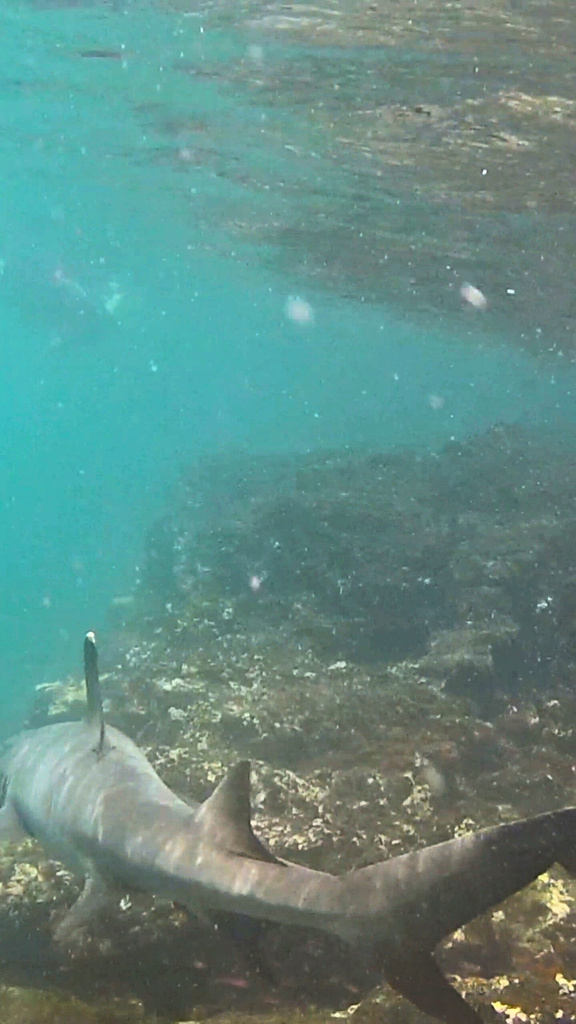
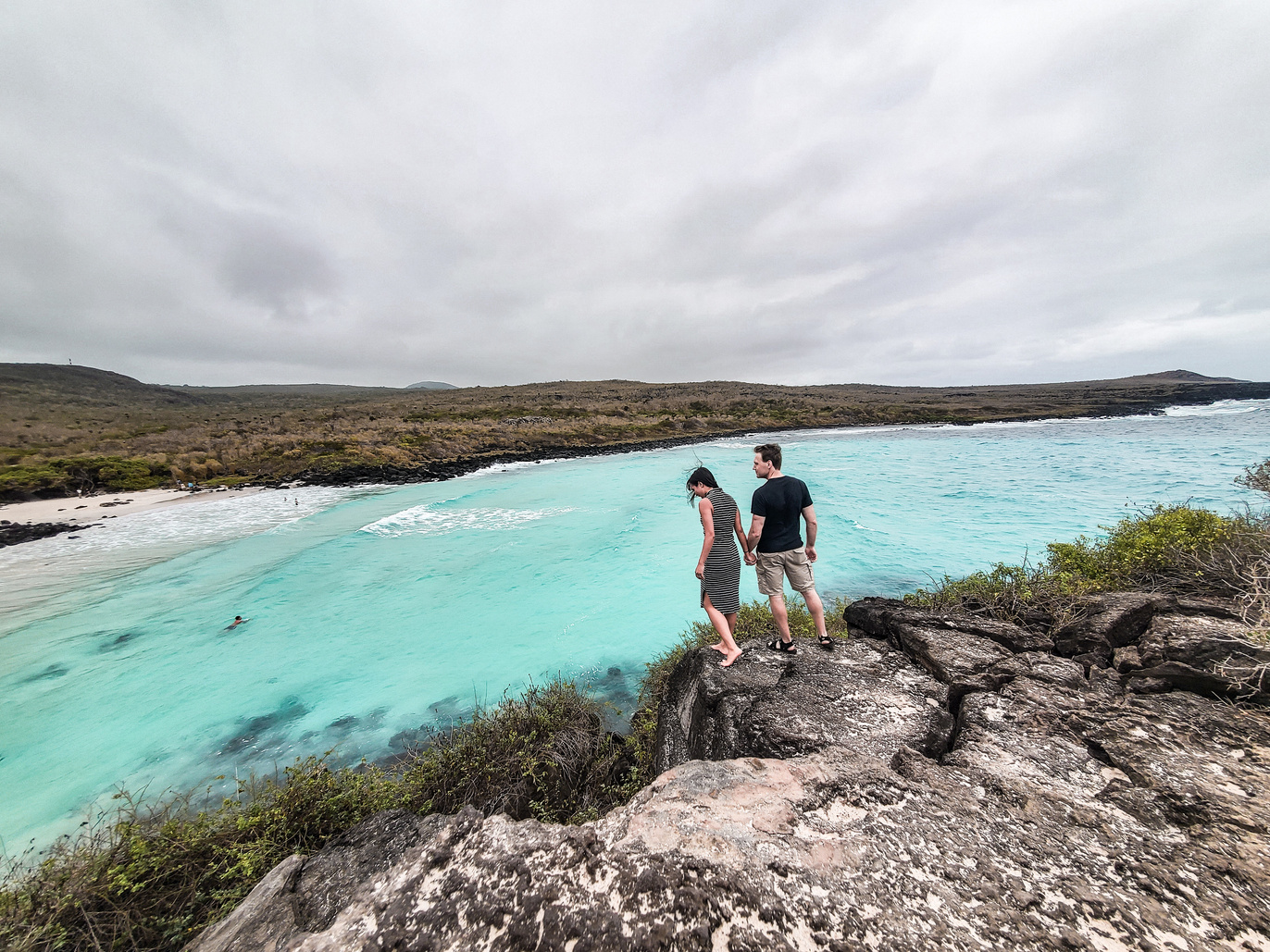

Having spent ten full days on these beautiful islands, it was a pleasant surprise to discover firsthand that a trip to Galapagos does not have to be super-expensive. By avoiding all-inclusive overnight cruises; exploring parts of accessible islands on one's own; taking public boat taxis; and tacking on a couple of "day" cruises, one can get the same “can’t-miss” experiences as an all-inclusive package, for a fraction of the cost. Food, in particular, can vary wildly in price. One great inexpensive option which exists in Spain and some other Latin American countries is to ask for the plato del dia (the “meal of the day”). Often not even listed officially on the menu, this full-course meal typically consists of beans, rice, plantains and whichever type of meat the restaurant has in surplus—and it has been keeping local families (and Eric) full at low cost throughout his past travels across the Spanish-speaking world. With our travel budget thankfully on track, we said a bittersweet goodbye to these amazing islands.




Cusco - part 1
Our Lessons
A jump from the equator at sea level, to the dead of South American winter at 11,000 feet in elevation was a harsh transition; but for the opportunity to traverse a country with some of the most diverse and iconic landscapes in the world, the trip to Peru seemed too good to pass up. Our immediate first purchase: an obligatory Peruvian poncho, and a stylish jacket with some traditional flare for Eric. We discovered this purchase was well-timed, as we had arrived at Cusco's Plaza de Armas right as the sun began to plunge below one of the many high mountain peaks surrounding this ancient city. The bells of the Basílica de la Virgen de la Asunción chimed—only 5 p.m.—so early for sunset! Within minutes, the sun's final orange rays had receded beyond the top of the basilica's twin steeples. Darkness descended unusually quickly, and we instantly felt the dropping temperature which foreshadowed the cold days ahead!
In Cuzco's Plaza de Armas, we were surrounded by cathedrals, great food, and the remnants of some of the world’s most incredible engineering. We quickly noticed that certain buildings had an unusual base of large, gray, trapezoidal stones… and on close inspection, we observed that there was no mortar or cement holding any of these stones together. This was ancient Incan construction! Here, every stone had been carefully hammered down to precisely align with the pieces adjacent to it, so that each would fit snugly, like a perfect game of Tetris! A museum historian explained to us that many of Cusco’s current centuries-old colonial buildings still utilized the original foundations of even older Incan buildings—foundations that have remained perfectly intact since the 1500s. As for the rest of the Incan structures, they did not fall naturally: they were violently torn down by the Spaniards, who wanted to demoralize the indigenous people for rejecting Christianity, and to recreate the city in their own design. Unfortunately, it was not long before the Spaniards realized that their brick-and-mortar constructions were not nearly as stable as the original Incan buildings, leading them to decide halfway through to at least keep the Incan-made foundations intact.
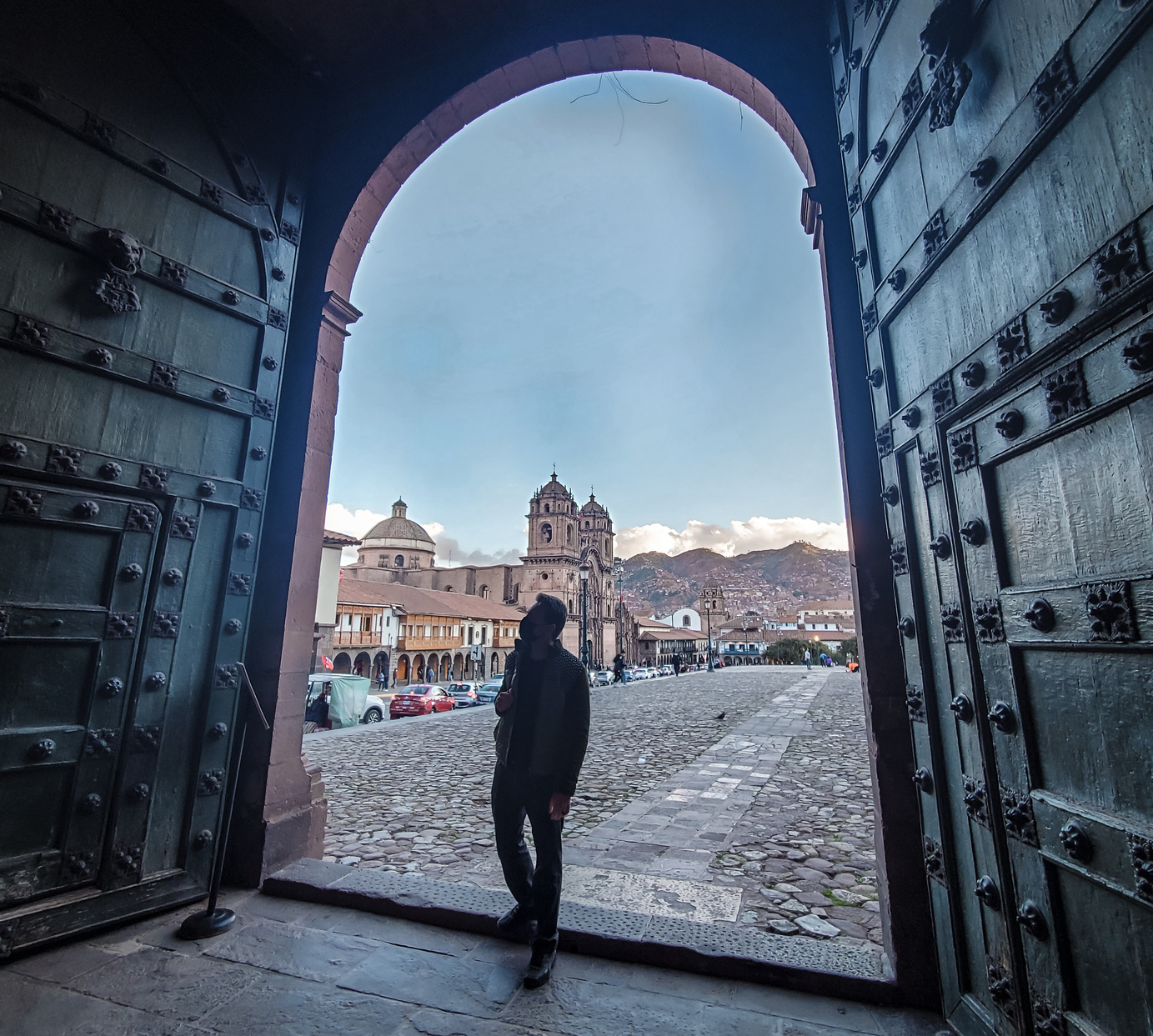
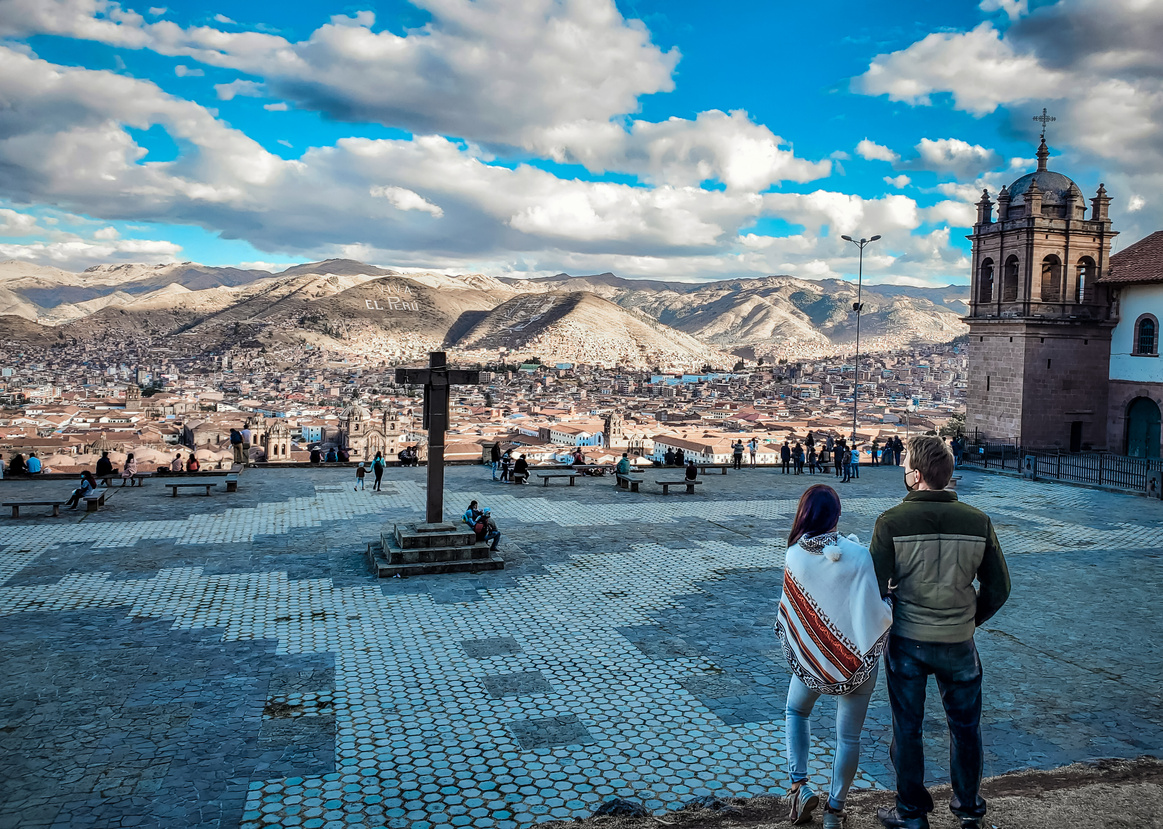
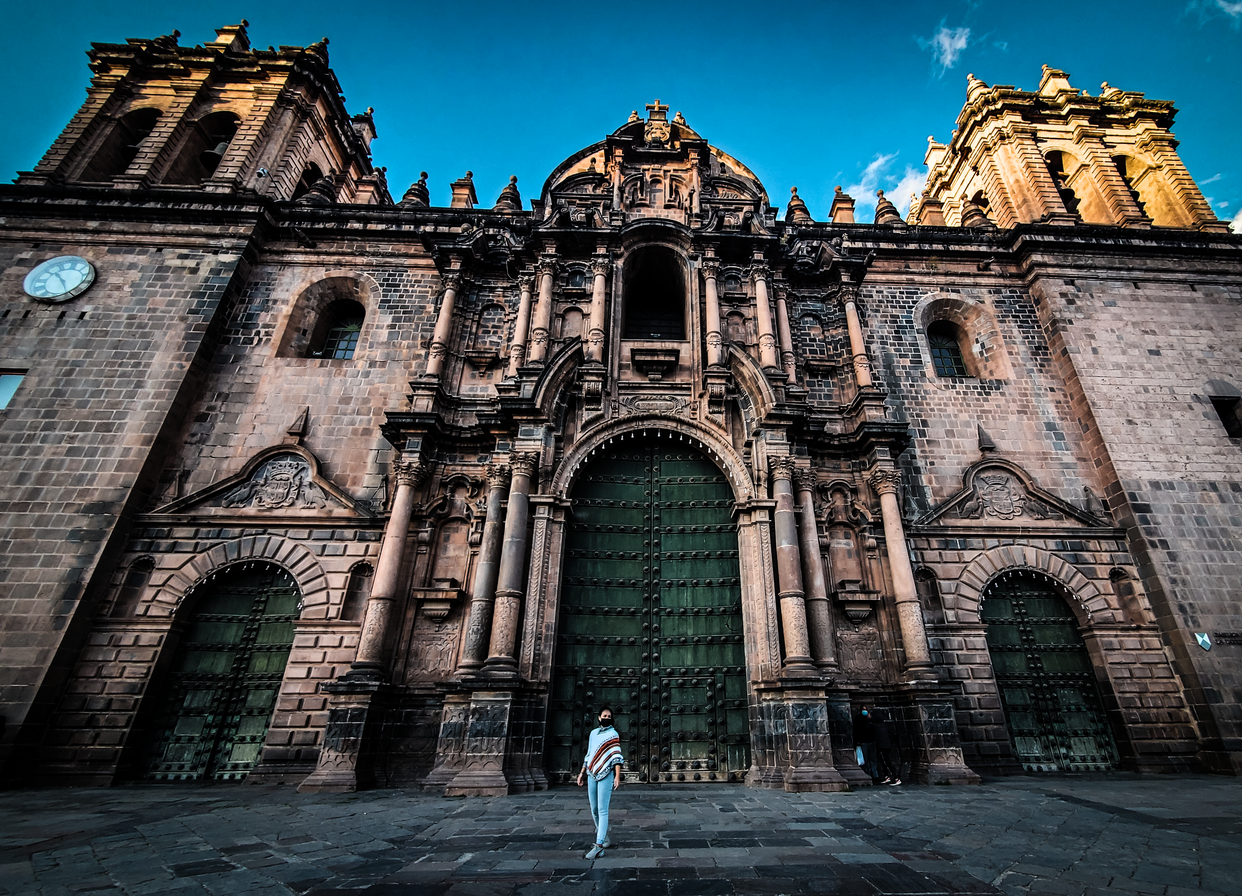
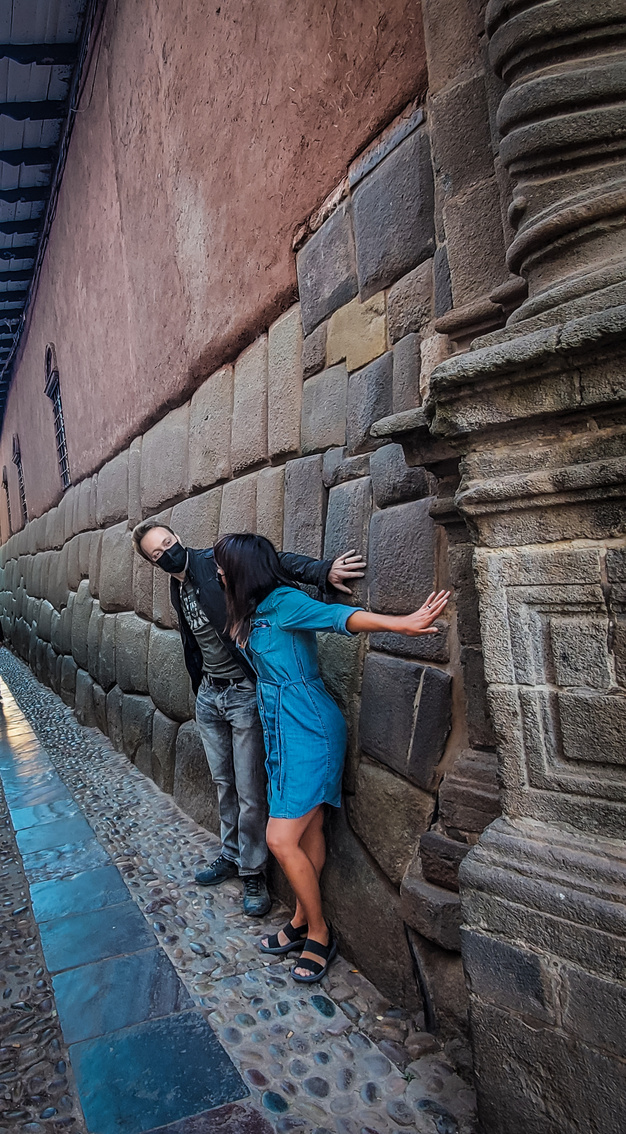
Cusco - part 2
Our Lessons
The markets of Peru were some of the ‘rawest’ we have seen in this hemisphere. The Mercado Central de San Pedro, the biggest in Cusco, was memorable for its meat section, which featured unusual items like a bull snout (apparently good for soup), as well as bull’s eyes (eight for just 12 Peruvian soles or $3 USD... a good deal?). Nearby, a little girl sat in a cubby hole, which her mother had created for her behind the stands of fruit she was selling. The fact that this little one was determinedly doing homework in such an uncomfortable, dimly lit space certainly lent perspective. Perhaps this helped me to take a deep breath and nod in understanding, after being informed that an extra $5 charge had been added to our hotel bill due to our request that a heater be brought to our room (an absolute necessity overnight in this ice-cold courtyard-level space).

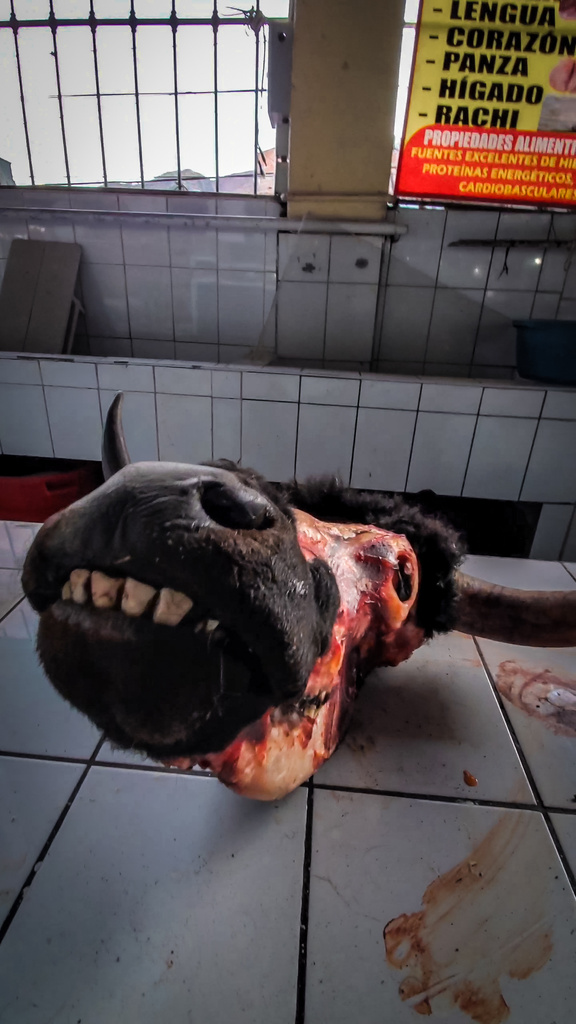


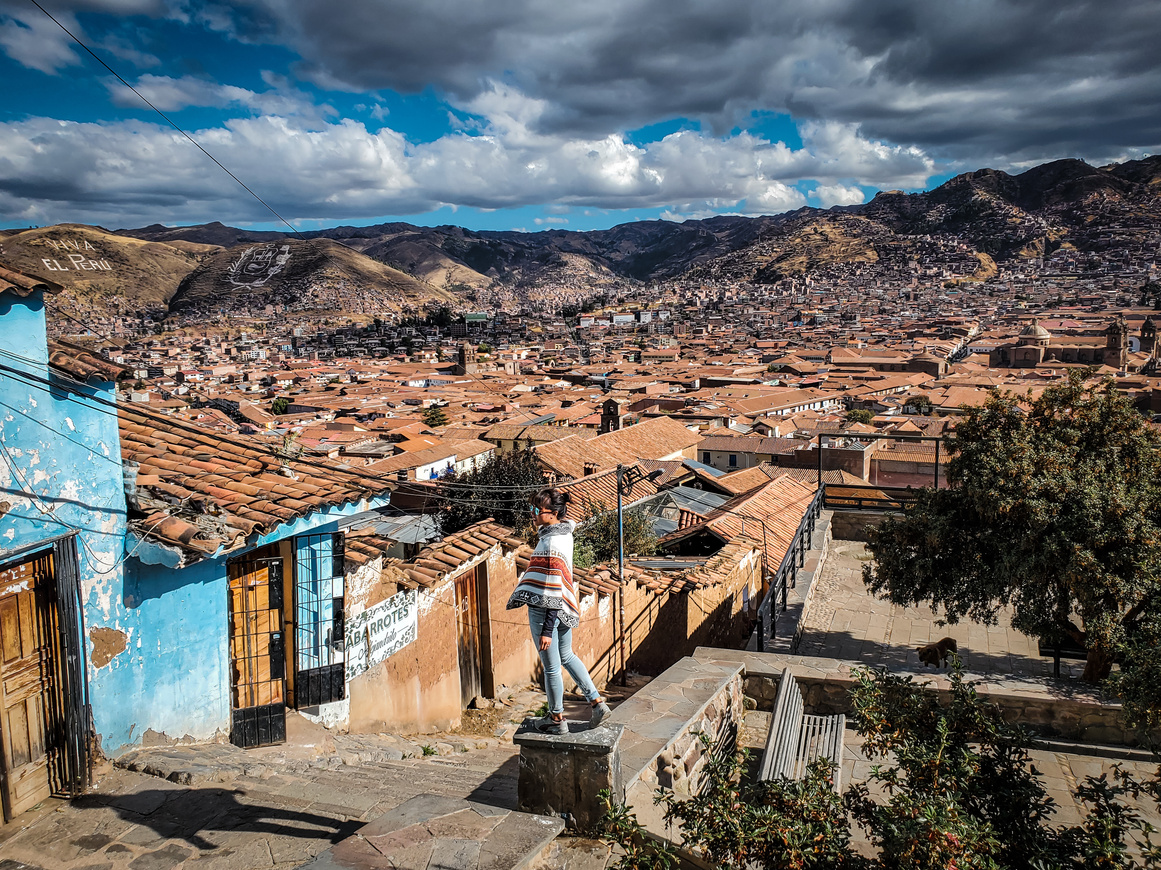
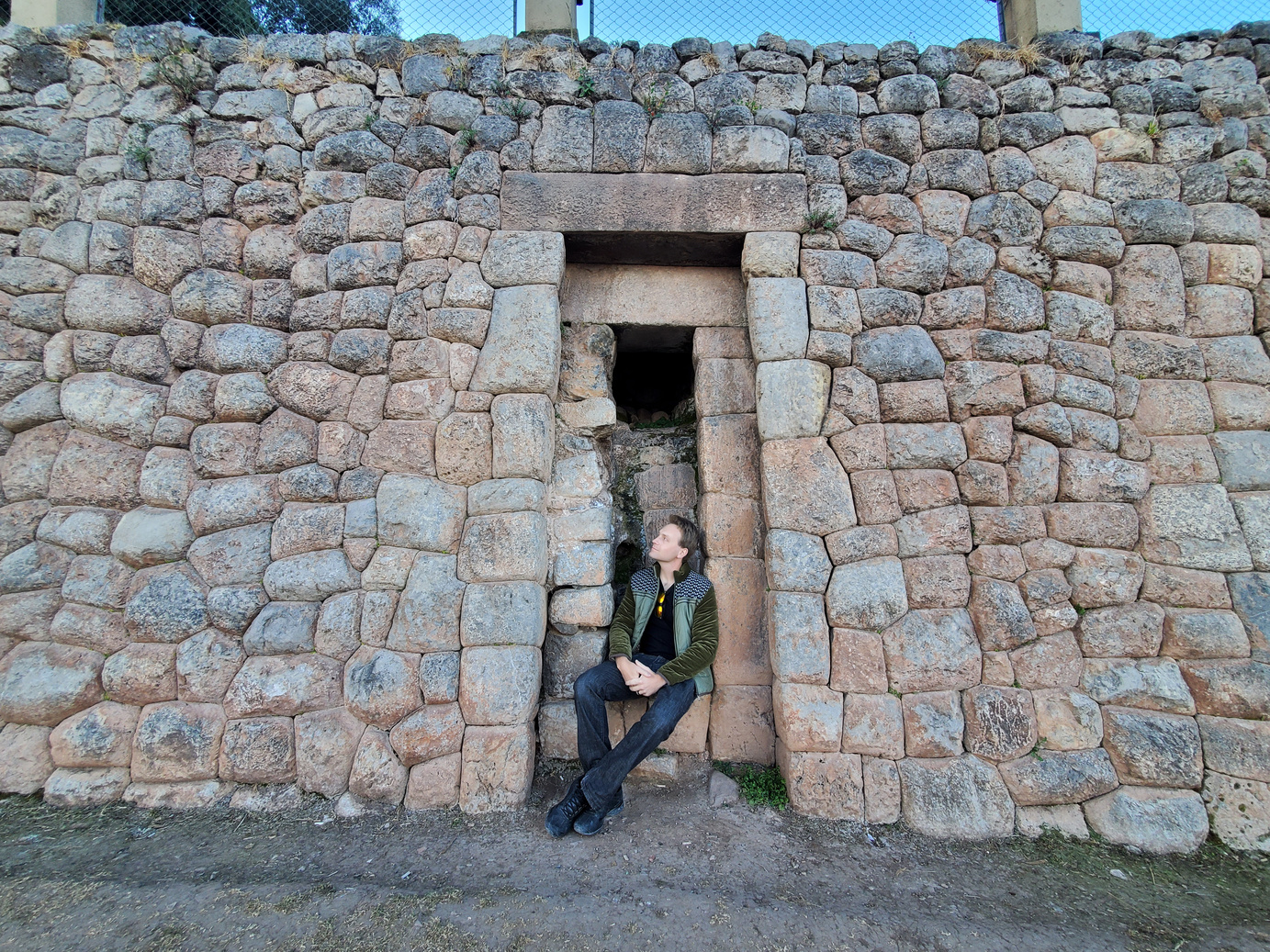
Machu Picchu - part 1
Our Lessons
Making the journey to our first Modern World Wonder was much more comfortable than we anticipated. Electing to bypass the intense 4-day Inca Trail trek (honestly, not a hard decision for us!), we instead took the Perurail: one of two scenic railways that take travelers directly from Cusco to Machu Picchu's base city, Aguas Calientes. Due to a lack of tourists in the wake of COVID-19, we were offered an upgrade to the panoramic-windowed "Vista Dome" train car. Roaming freely around the empty car, we hopped from one side to the other to take in all of the amazing sights, as our train ascended a series of switchbacks up the mountains out of Cusco, and through many different terrains. Passing by busy towns, rolling green hills, snow-capped peaks, and even old Incan ruins, this was truly our picture-perfect "lazy" route to Machu Picchu.


Note to self: Buy the rain poncho that they sell at the base of Machu Picchu, even if it looks like a sunny day! We learned the hard way that the weather here is known to change dramatically, in a matter of minutes. Sure enough, freezing-cold rain clouds rolled in, leaving a soaking wet, poncho-less Eric with shivering chills, intermittently doing push-ups to generate body heat as we explored these ancient ruins. Regardless, no amount of cold could stop us from being in awe of this magnificent work of architecture and precision engineering!
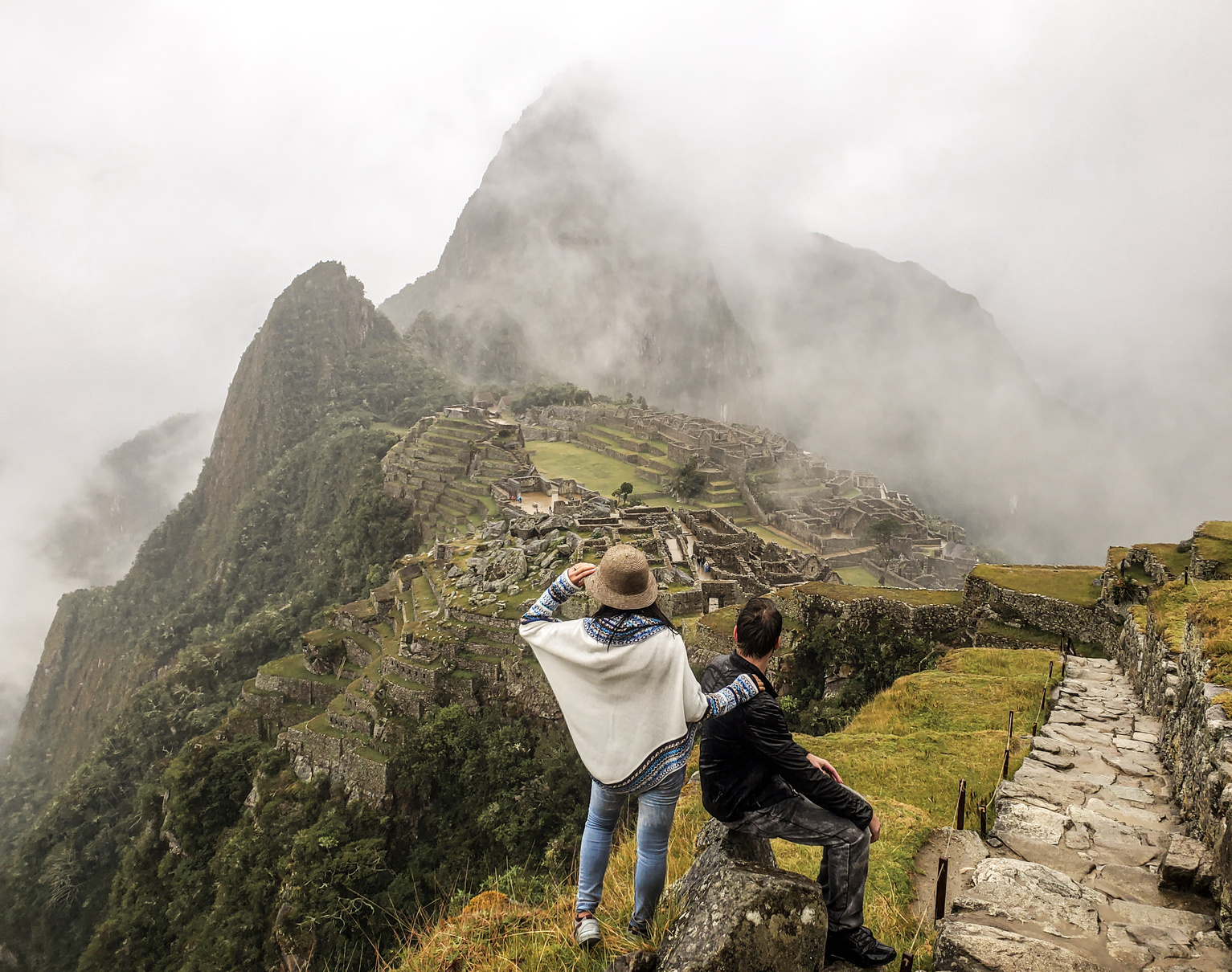

Machu Picchu - part 2
Our Lessons
We were amazed to find out that Machu Picchu's stone terraces were meticulously planned out and constructed to permanently withstand abuse from the elements—which not only includes the region’s massive rainfalls, but also its frequent earthquakes! So far, over 500 years later the structure holds strong, with almost no erosion. In fact, what truly impresses archaeological engineers about Machu Picchu is its robust foundation. Indeed, it is said that 60% of Machu Picchu’s structure lies underground, completely out of sight of the casual tourist’s eyes. When the Incas started the project in the 14th century, they spent years perfecting underground stone lattices, which are 2 to 3 meters deep. Serving as a filtration system, these carefully selected stones allow any water to drain straight into the earth, where it is funneled through underground canals and down the mountain, safely away from the site. Just as incredibly, Incan engineers understood that their precisely-fitting and mortar-free stone walls would 'dance in place' during an earthquake, gracefully resettling back to their original positions after the event!
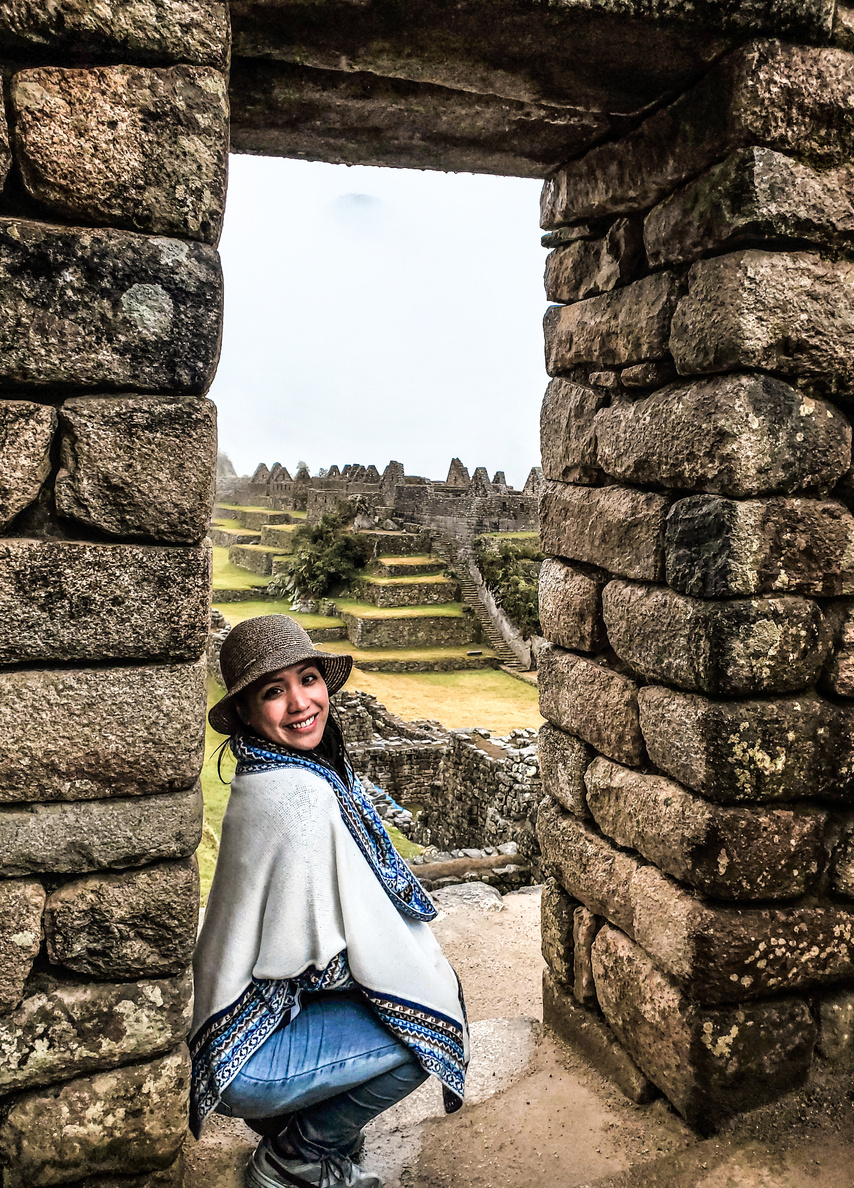

Although Machu Picchu was engineered to last an eternity, it remained in use for a tragically short period of time. It was built as a royal palace at the peak of the Incan empire, but the Incan empire itself only lasted about 100 years! Its people met a brutally abrupt demise when they were slaughtered by the Spanish conquistador Pizarro, who conveniently arrived right as they were being ravaged by smallpox and civil war. Meanwhile, Machu Picchu, a sanctuary hidden high in the mountains, simply became forgotten. Even though the Spaniards deliberately sacked and destroyed all Incan towns, they never found out about Machu Picchu.
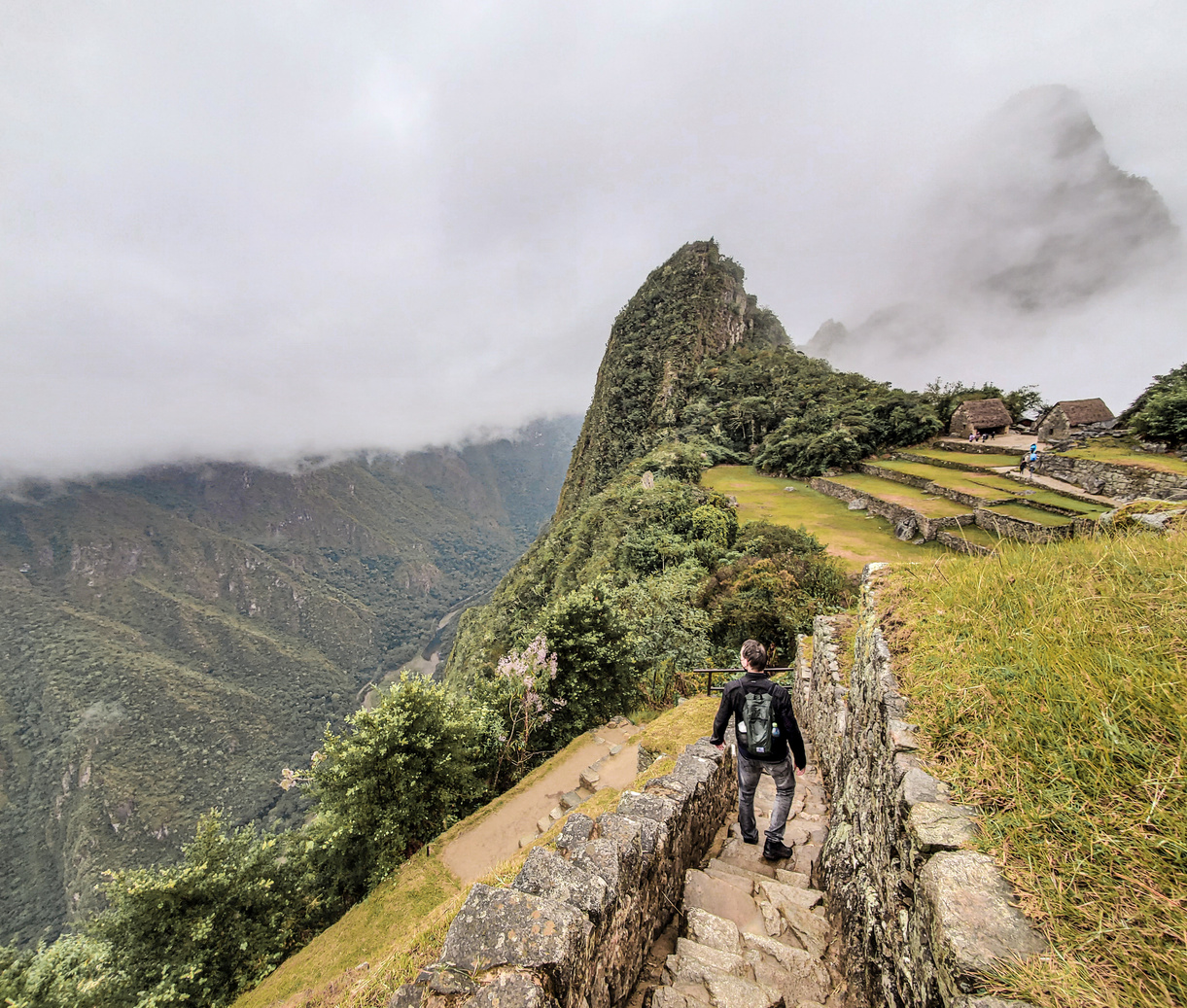

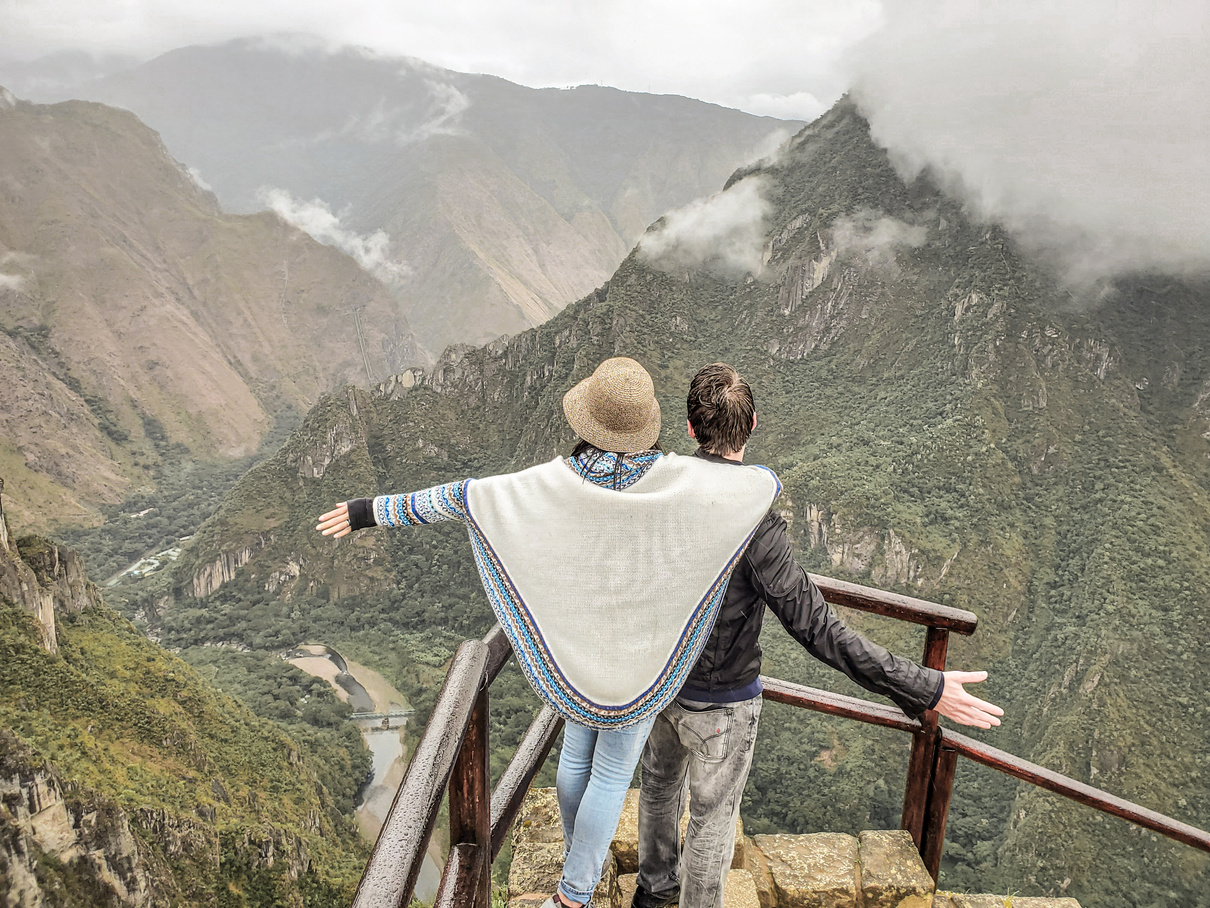
Machu Picchu - part 3
Our Lessons
Snuggled between steep valleys of the Peruvian Andes, the town of Aguas Calientes is relatively new. We are told it did not exist until the early 1900s when Machu Picchu was 'discovered' by American explorer Hiram Bingham. Thereafter, workers settled there as part of the major railway construction projects that ensued. Once the first rail was completed, early tourists began to see Machu Picchu, leading to the town’s expansion as early as the 1930s for hospitality purposes. Efforts to build businesses closer to Machu Picchu have repeatedly been thwarted by the eroding force of torrential rains, so to this day, Aguas Calientes remains the sanctuary’s closest access point.
Given that our focus had been Machu Picchu itself, this town came to us as a pleasant surprise: living underneath these massive, lush-green cliff faces made us feel so small, like being cradled in the arms of Mother Nature. At the same time, Aguas Calientes was vivid and alive. On July 28, 2021 (Peru's national bicentennial celebration), the energy was palpable, with many people out on the streets, and flags flying from door to door.
It was here that we learned not all "devils" are evil in folklore; some, we are told in Peruvian culture, are known to provide safe passage to the afterlife. We saw many symbolic 'devil' masks hanging up in shops and even came across some people dressed as the devil (who in Peruvian culture have large noses and clown-like faces!). We had a great time learning and celebrating while enjoying the best creole soup and beef 'lomo saltado' we had ever eaten.
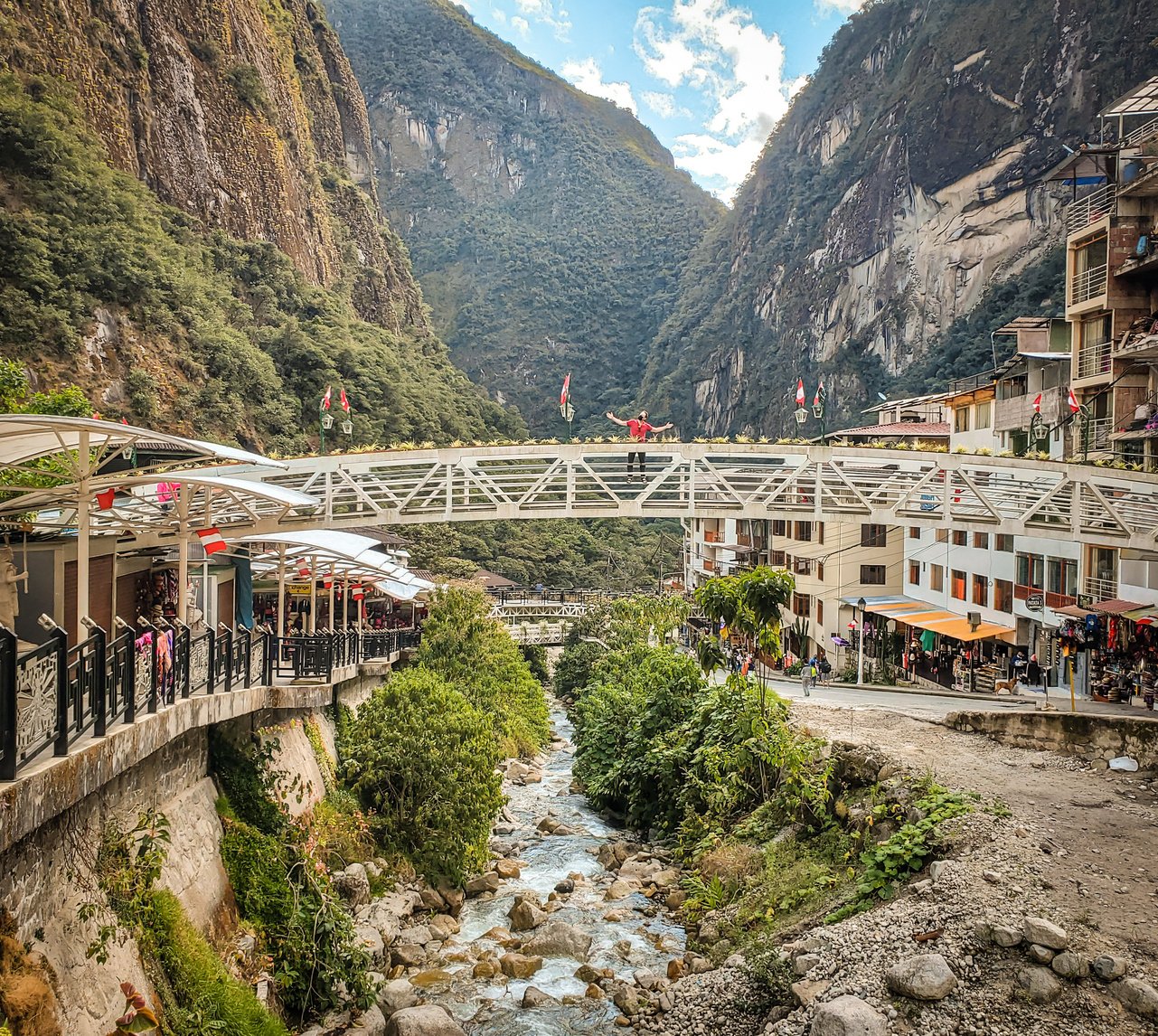

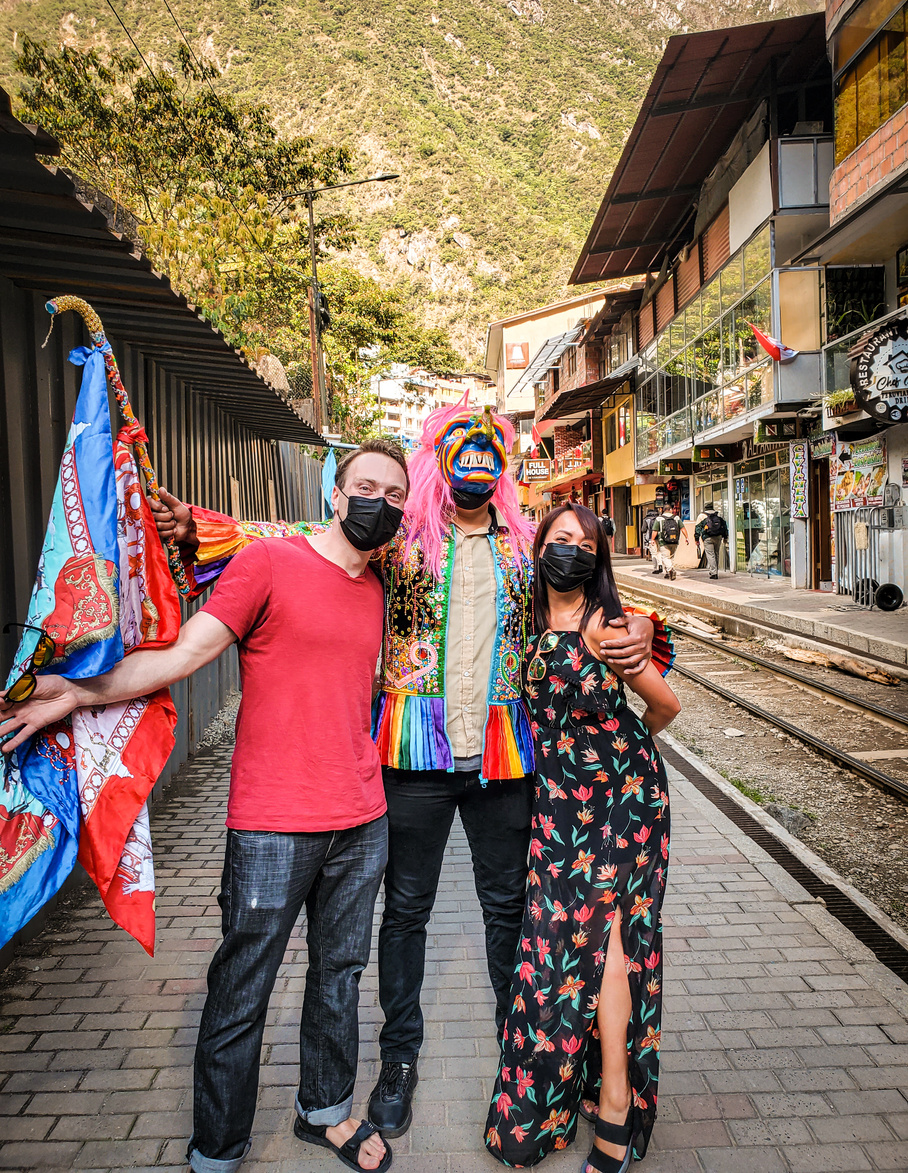
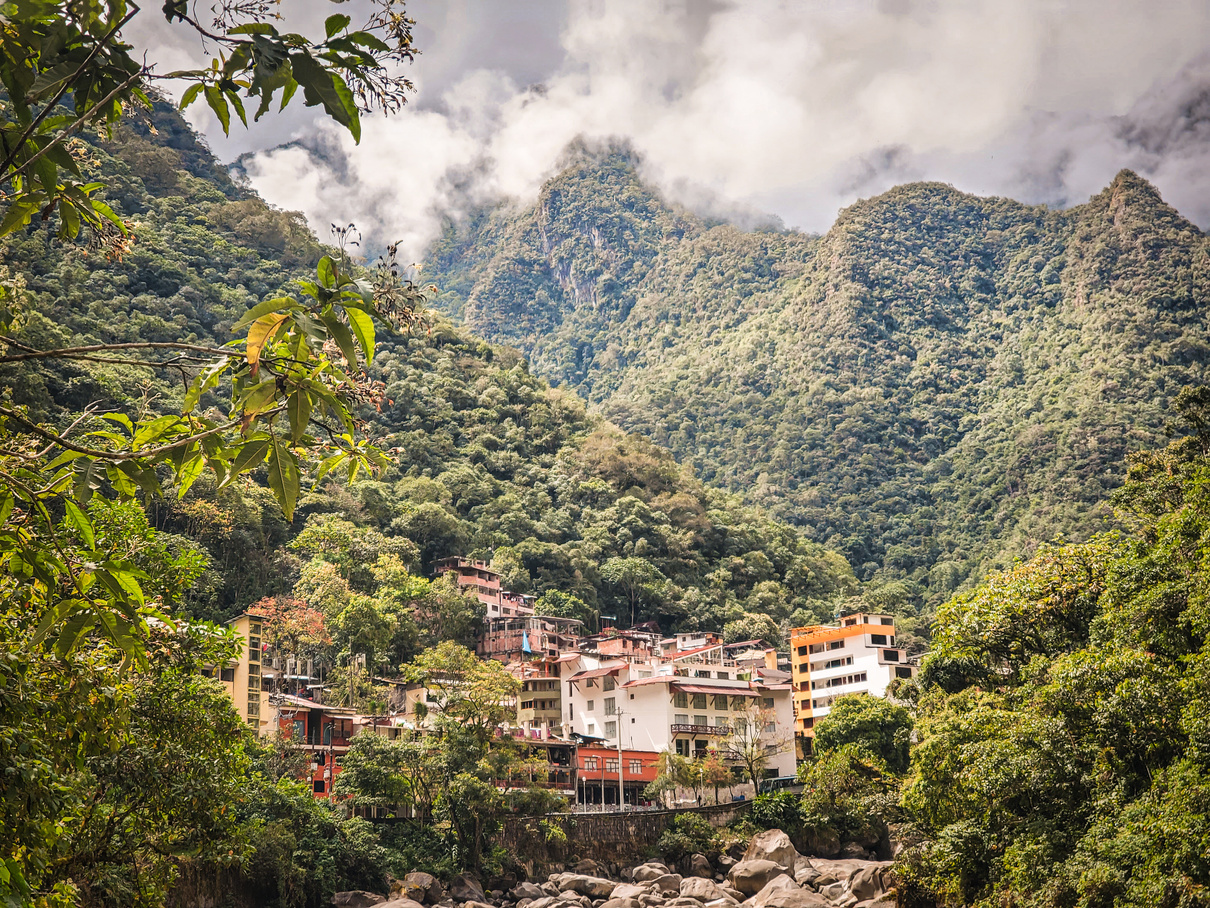
Rainbow Mountain - part 1
Our Lessons
A tale of ice and tectonic plates: we are told the newly 'Insta-famous' Rainbow Mountain was buried under permanent ice and snow until just several years ago when climate change slowly melted the ice away. It formed due to the layering of different-colored minerals, which were deposited over millions of years. These horizontal deposits were then slowly pushed upwards, making an unusual 90-degree vertical turn, as a result of being perfectly in line with two opposing tectonic plates. The end result: the unusually layered mountain we see today!
For us, the hike to this much-anticipated peak was as impressive as the main attraction itself. Despite having to stop every few minutes to catch our breaths, this was one of the most enjoyable treks... with numerous adorable alpacas along the way as icing on the cake. They are really the cutest animals with extremely soft fur! Señora, we would like to please adopt your alpacas, "Mr. Brad" and "Mr. Pitt", to join our family!
Over 5200 m (17000 ft) above sea level, Rainbow Mountain’s altitude was not kind to us on this hike! We had only flown into Cusco 3 days prior, and we read it can take up to two weeks to make enough extra oxygen-carrying red blood cells for the human body to fully adapt. Without this, you don't just have trouble catching your breath. Persistently lower oxygen levels can lead to blood vessel dilation and blood acid-base imbalances: resulting in nausea, dizziness, headaches… and even brain swelling in severe cases (so-called “high-altitude cerebral edema”)! In fact, there were a couple of people on tour who could not get off the bus due to severe symptoms! One medicine we took that helps the body partially adapt faster (within a few days) is acetazolamide. There are other remedies such as caffeine which has shown to help a bit (sort of like treating a migraine) ...
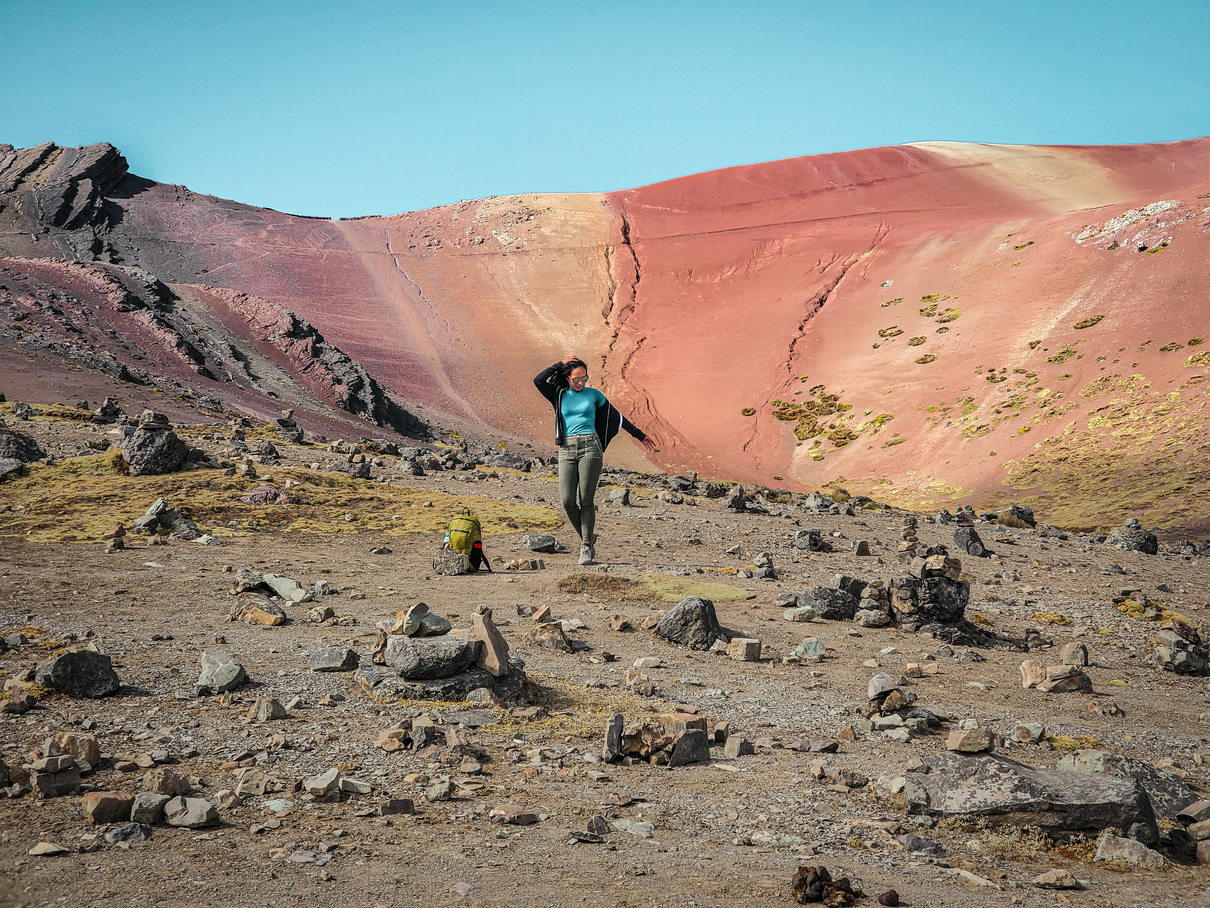
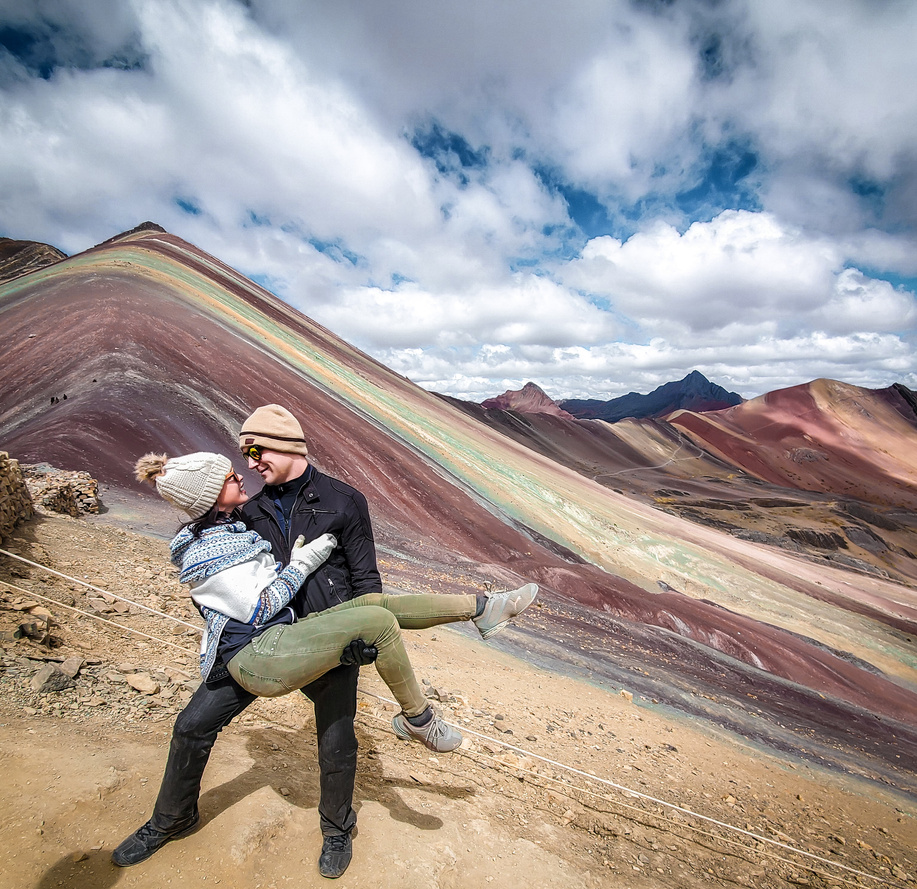


Rainbow Mountain - part 2
Our Lessons
In contrast, our well-acclimated Quechua locals, it would seem, did not mind the altitude. While we were struggling forward with each step, they were jogging up and down the mountain, with only a simple pair of sandals on. To our amazement, vendors offering horse rides down the mountain elected to walk next to their horses on the way up, as to avoid tiring the horses out for customers. It was an impressive task to see! Clearly, these people are in great physical health... but they also swear by the extra stamina boost they get from coca leaves. Coca, the main ingredient in cocaine, was offered to us in the form of tea, as well as a handful of leaves, to be chewed straight up. We declined, as one may test positive on a drug screen after chewing coca!
To our surprise, when we made it to the top, it was packed with visitors. This was the only place we’ve visited so far that still had major crowds, in spite of COVID-19.
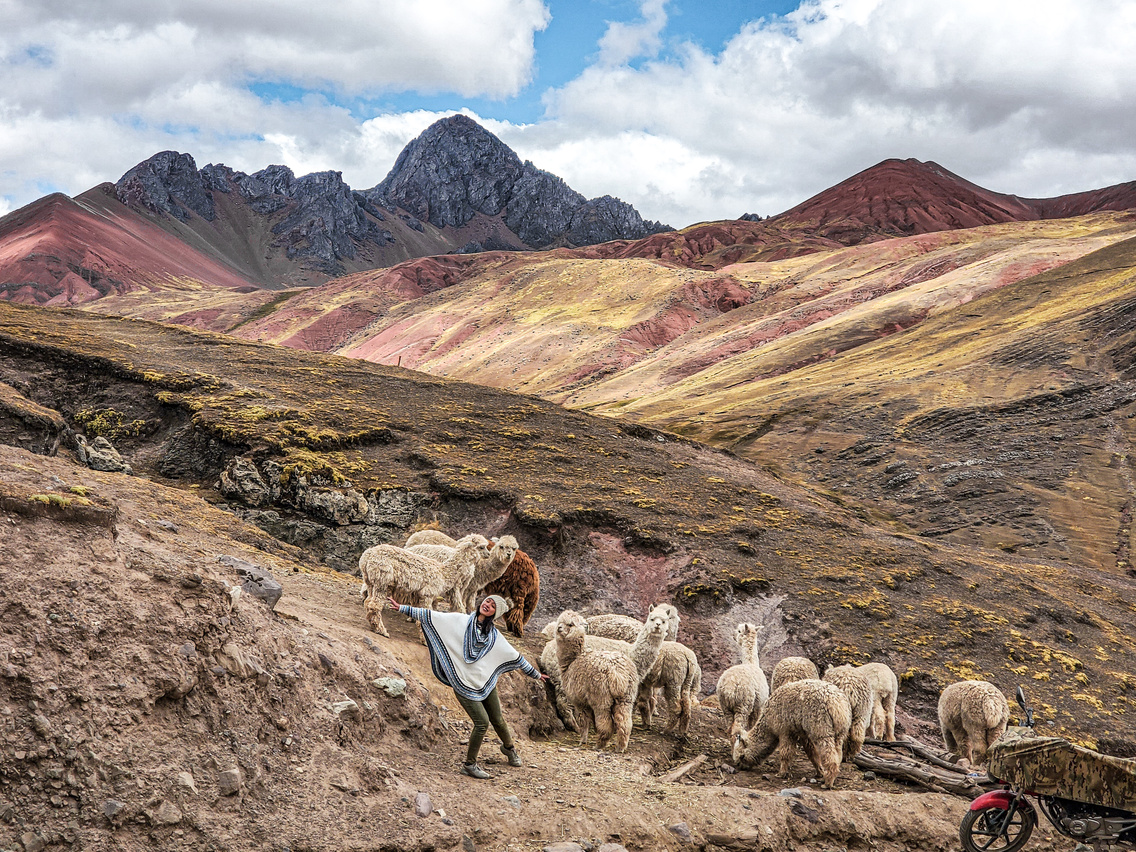


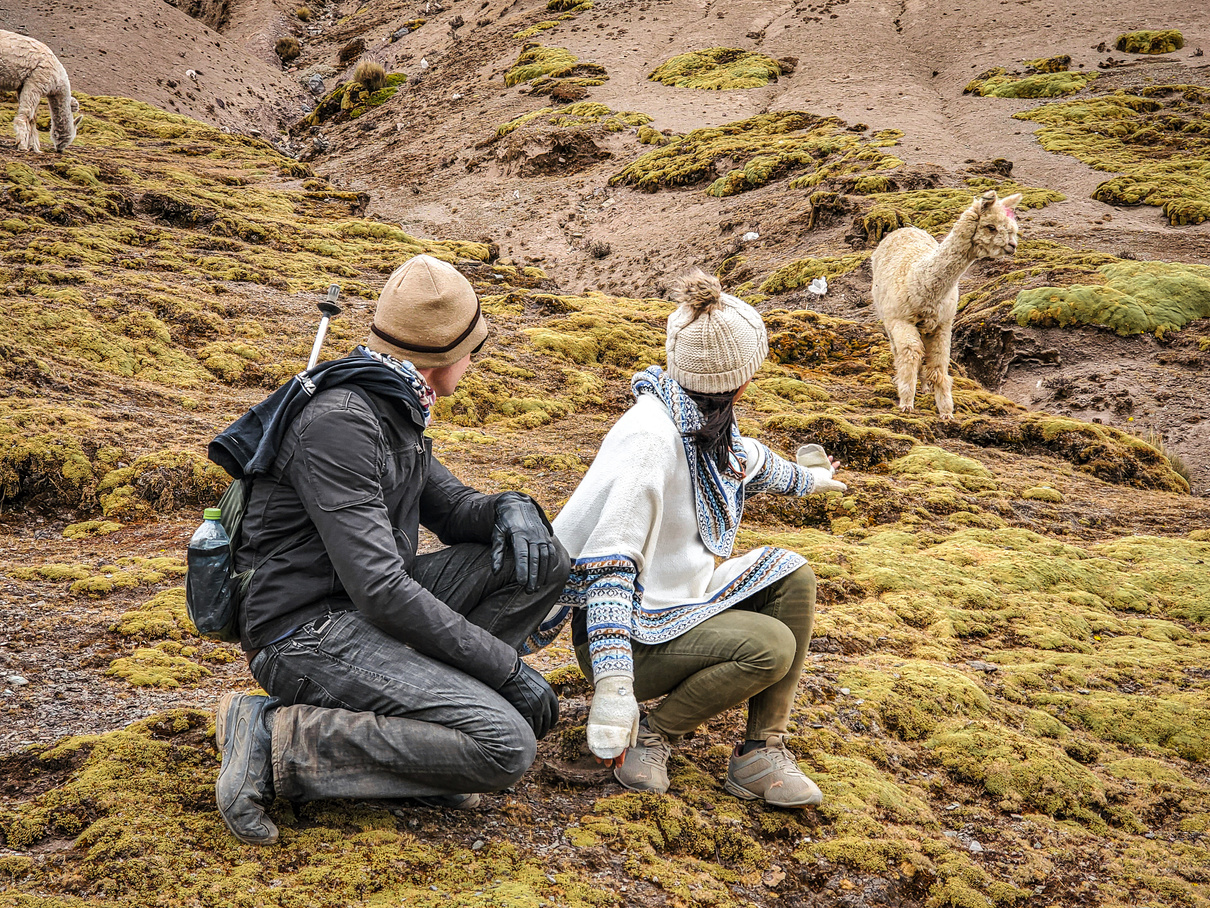
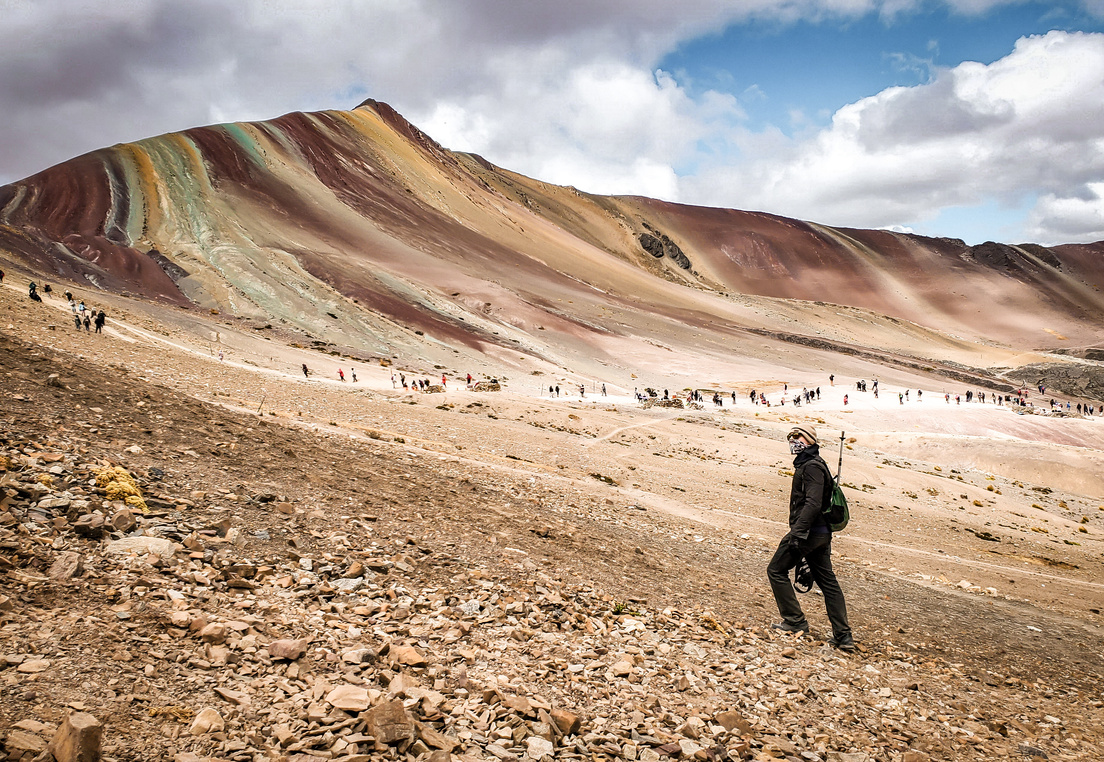
Lake Titicaca - part 1
Our Lessons
Meet the amazing people who live on floating islands: the Uros of Lake Titicaca!
As the doors of our overnight bus opened to the highest navigable lake in the world, the crisp morning air rushed in, followed by a warm welcome from some sweet faces. A modern boat took us offshore to the Uros peoples' unbelievable homes: permanently floating platforms, made entirely of reeds that grow on the lake. Centuries ago, the Uros started making reed boats, which they used to flee to safety during attacks by the conquering Incas. Over time, these resourceful people realized they were safer living out on the lake, and they upgraded to larger 'reed-houseboats'… and then to entire 'reed-islands!' The islands float independently but require constant tender, loving care: Twice a month, new reeds are collected, and a new layer is added to compensate for the decomposing under-layer. After 30 years, we are told the islands get top-heavy, and begin to sink… so they are towed away to biodegrade in the center of the lake after a replacement one is built!
Lucky for us, the Uros floating islanders have learned they could earn money by showing off their way of life to fascinated tourists—and as such, it was time for us to try out living on a private Uros floating home! After transferring to a double-decker reed boat (the so-called "Mercedes Benz" of reed boats), we headed to meet our evening hosts: Felix, Milagros, and their son Axel. Felix has lived on a floating island since the day he was born, and he was delighted to share with us his home, his 'town', and his way of life.

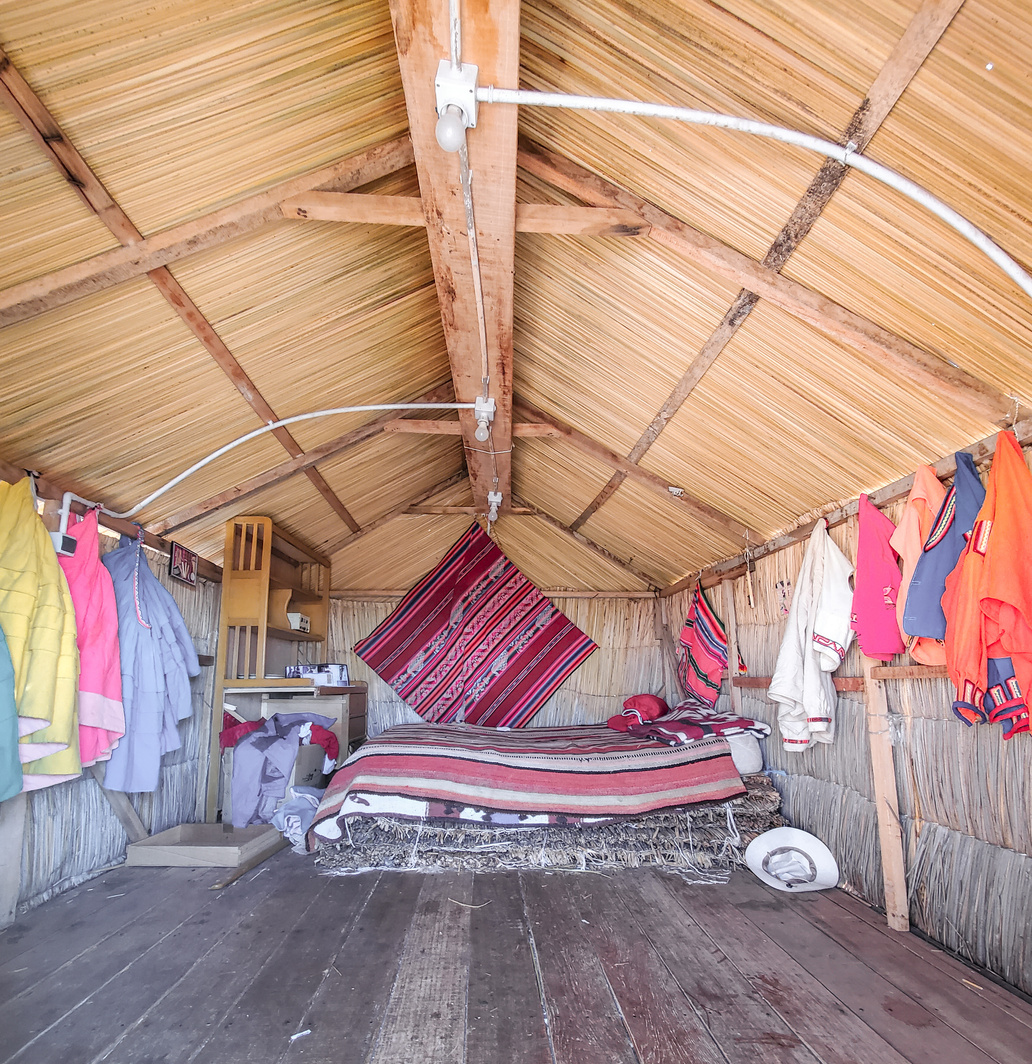
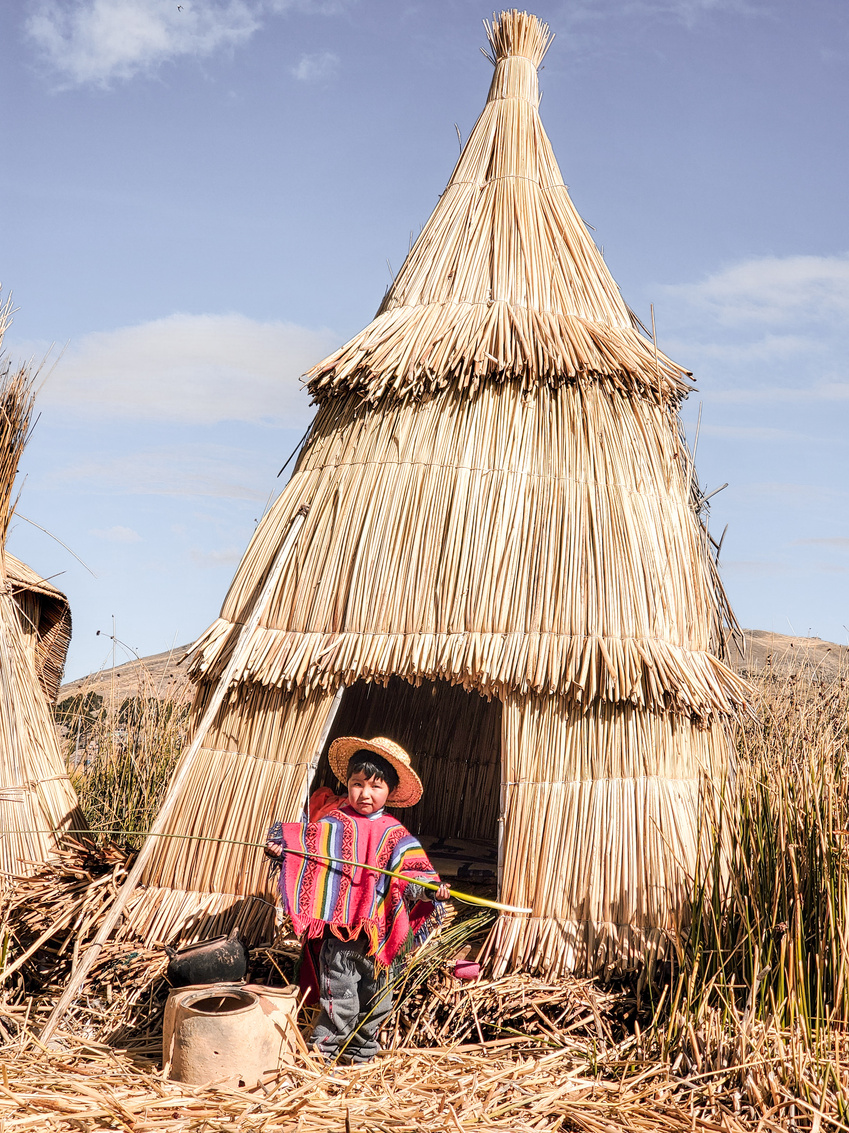

Lake Titicaca - part 2
Our Lessons
Spending a whole day kayaking and exploring the Uros community with Felix and Axel, we learned just how much the Uros have come to depend on reeds. Axel enthusiastically pointed out to us his floating school, their floating medical clinic, and their floating volleyball field! We witnessed reeds being cut and brought to maintain these islands, and we saw firsthand how today's 'modern' reed boats are made—as a new-age adaptation, the Uros fill their reed boats with empty plastic bottles for added buoyancy. The boats last about 2 years before the saturated reeds start to rot. Felix also proudly introduced us to his people's go-to snack: reeds, of course, picked straight from the lake! They taste sort of like mild celery and are purportedly a good source of calcium and magnesium.
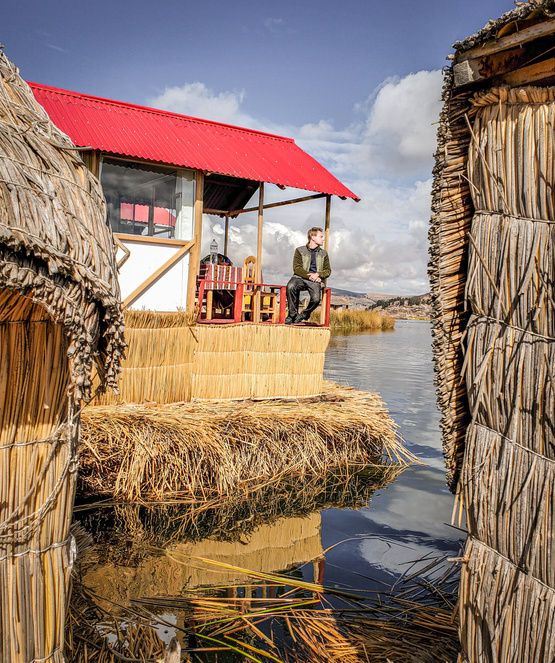

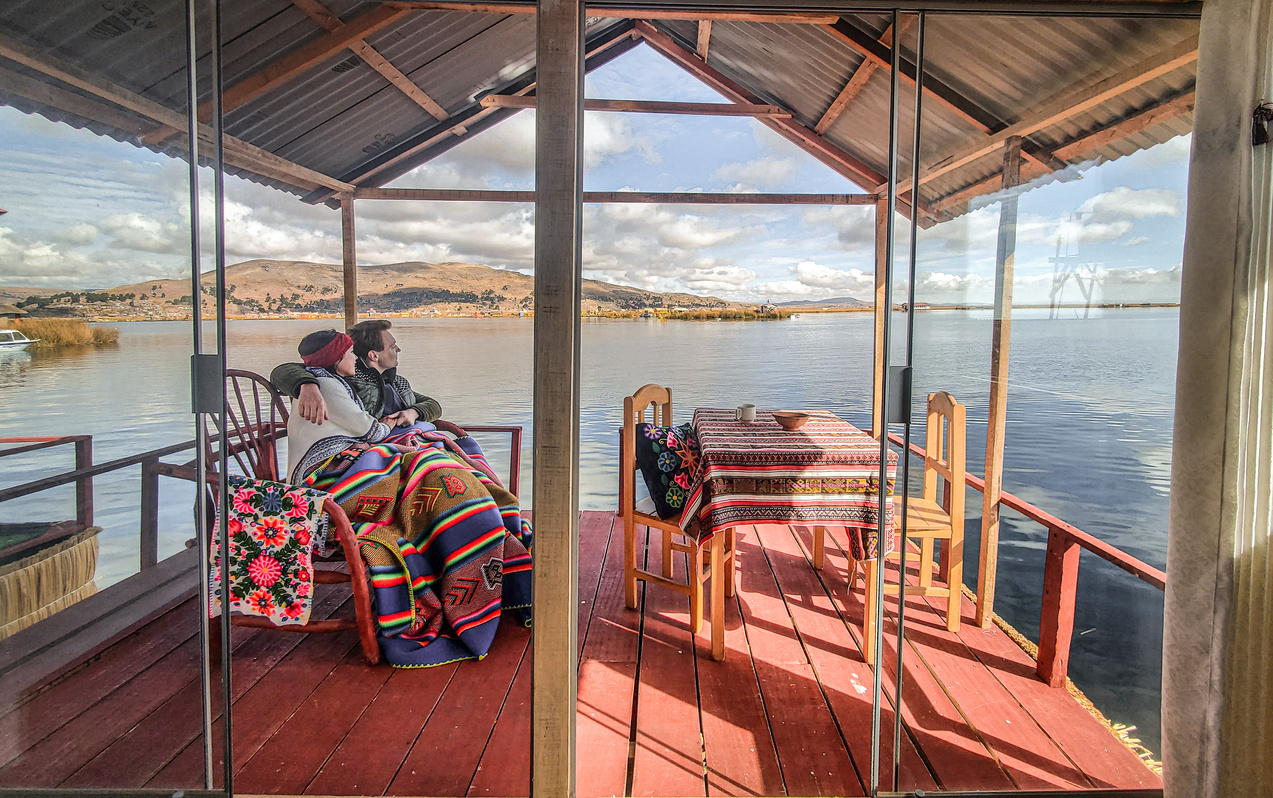
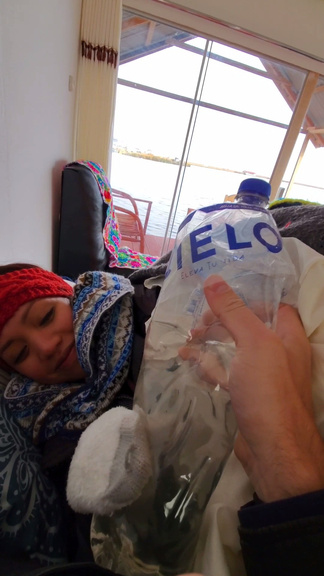
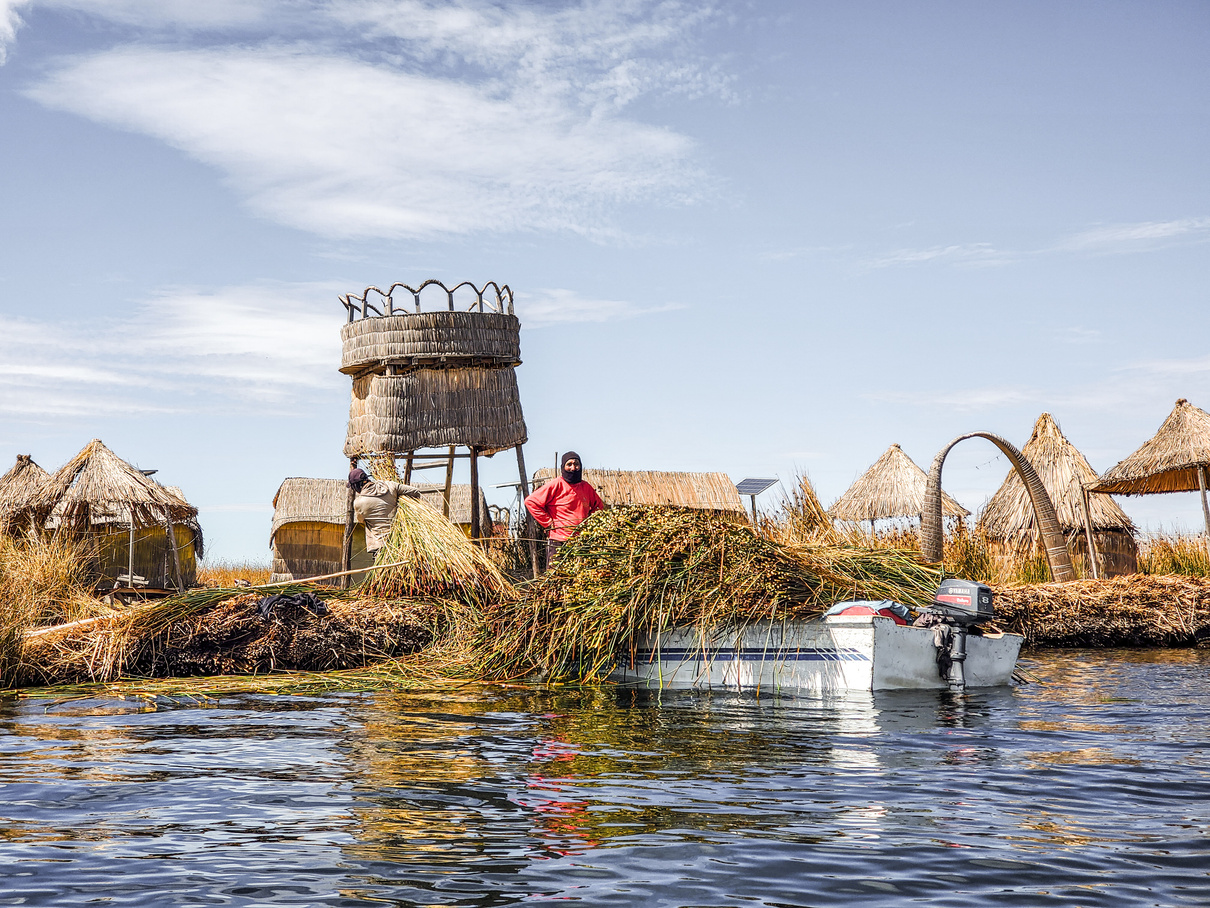
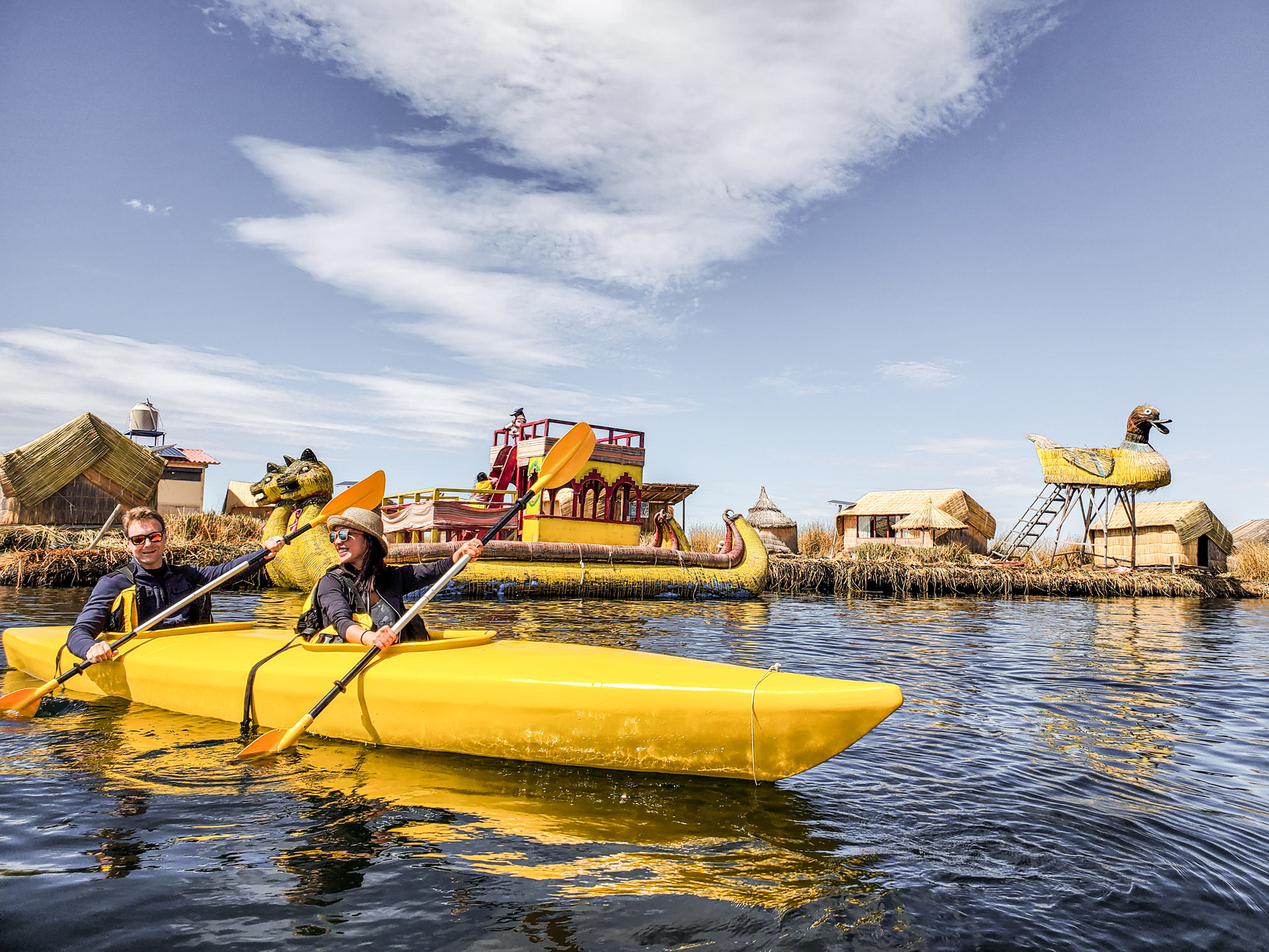

Lake Titicaca - part 3
Our Lessons
Sleeping in a poorly insulated shack during Lake Titicaca's frigid winter may seem intimidating, but that was before we learned the value of a hot bottle of water! We were skeptical when we saw Felix pouring boiling water into flimsy 2-liter bottles for us at bedtime. To our pleasant surprise, we followed his instructions to hold them next to us as we slept... and discovered that the bottles were still warm the next morning! After peeling ourselves out of 5 layers of blankets, we witnessed the most beautiful sunrise beaming over a foggy lake. Food arrived to us via a neighbor, who takes her "floating market" from island to island each morning—indeed the Uros obtain most items by bartering goods in this way (fish in exchange for bread and potatoes, for example!). After delicious quinoa pancakes prepared by Felix, we enjoyed a break lounging on our deck, which thankfully got much warmer in the sun!
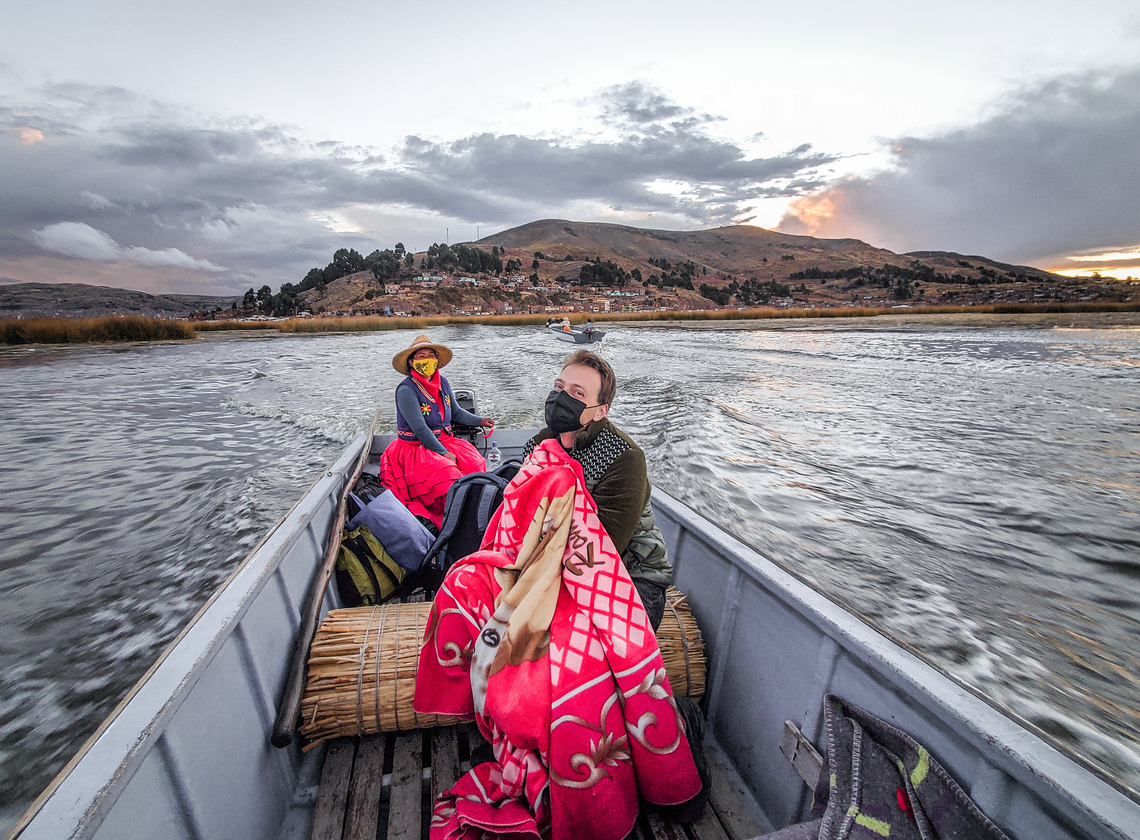

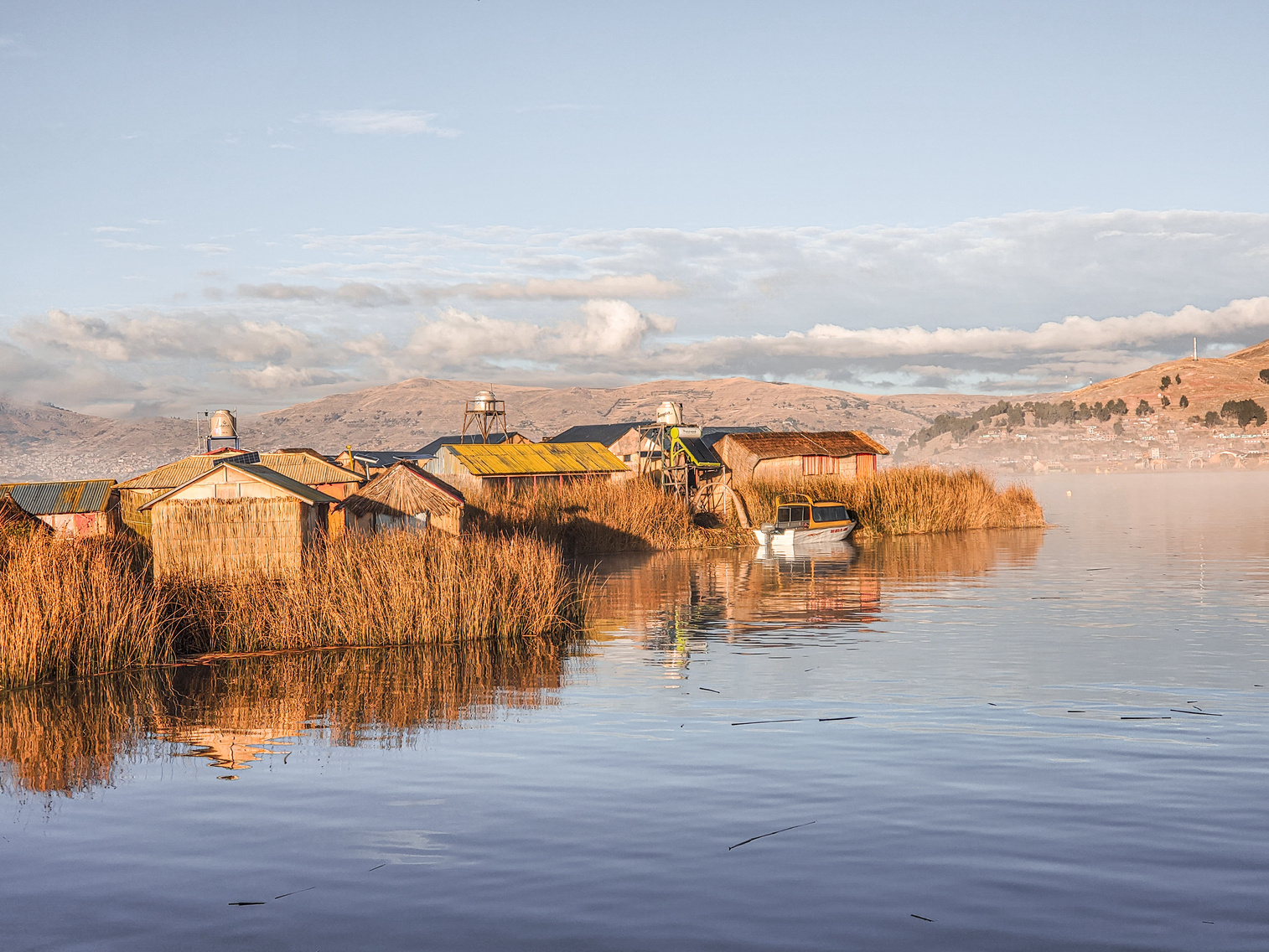
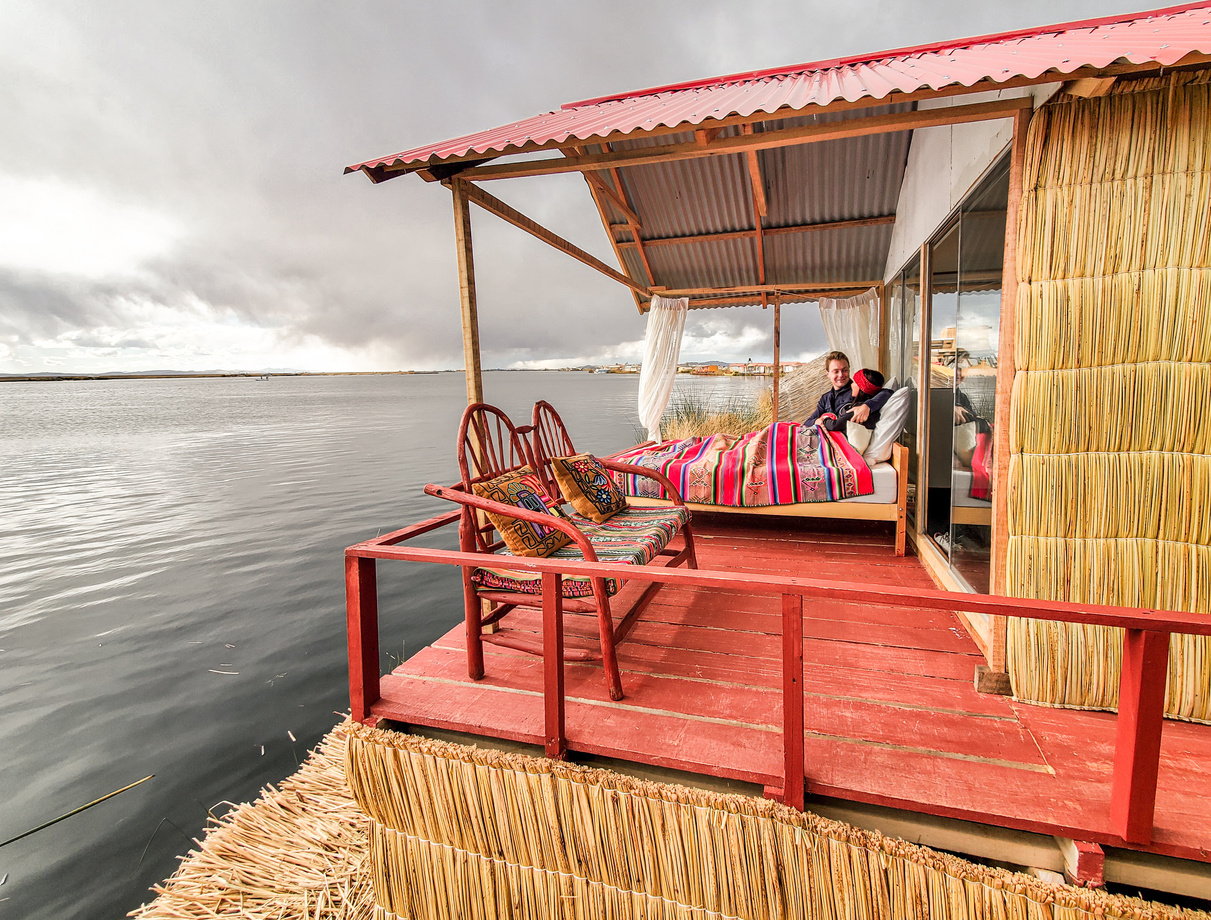

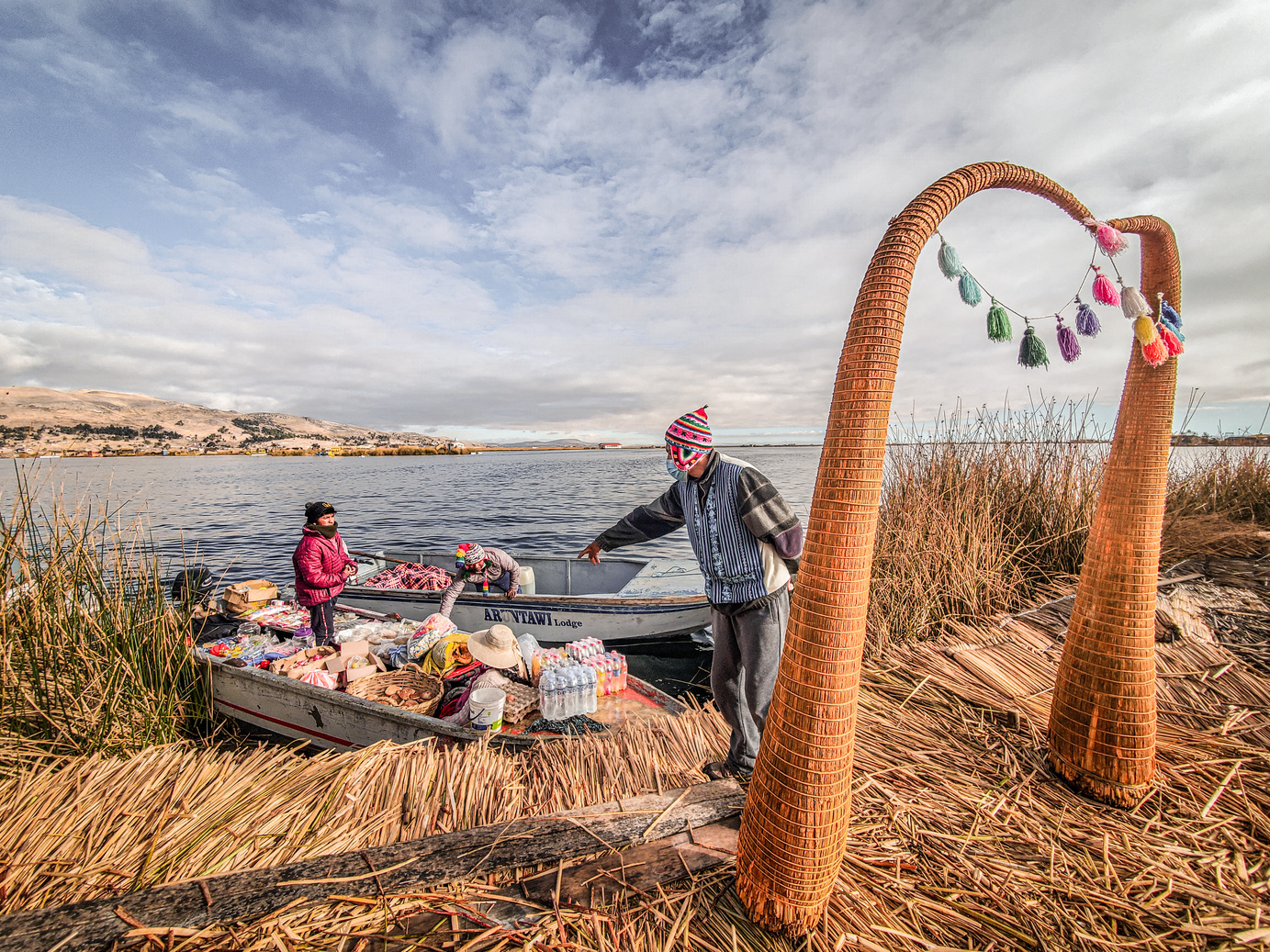
Tequile Island, Peru
Our Lessons
Boy, you'd better knit like your wife depends on it!
It took us a couple of hours to cruise all the way to Taquile Island, which demonstrated to us just how enormous Lake Titicaca is. Here, the native Taquile people shared with us their unique skills. Most notably, starting at a young age, it is tradition that men are expected to become expert knitters, and women to be weavers. These are not only essential skills for the island’s economy; a proudly-made wardrobe is how Taquilenos display their relationship status. Like a game of “red light/green light,” islanders have adopted certain patterns and colors to demonstrate that they are married, and others to show they are single and ready to mingle. During courtship, the stakes are high for the men: apparently for a young bachelor to be accepted by his future father-in-law, he must demonstrate that he can knit a hat so tightly, that even a glass of water poured into it will not leak out! During festivals, married men also wear a special belt that is woven from a combination of sheep's wool and his wife's own hair! Not surprisingly, Taquile textiles are considered some of the highest quality in Peru.
As we watched the Taquile islanders perform a ritual dance for our tour group, we could not help but think that it felt a little like a tourist “gimmick." But then we thought, of course, it is and what's wrong with that? We are mindful that these displays to tourists have become an adaptation; a means of survival in an industrialized world that no longer depends on a small local island to produce its clothing apparel. Sadly, we suspect that trying to maintain cultural traditions, while also keeping at least a small profit margin, will only get harder as modern globalization closes in. We hope the tourist adaptations the Taquile people have made will be sufficient to provide them a happy, prosperous life, on their own terms.
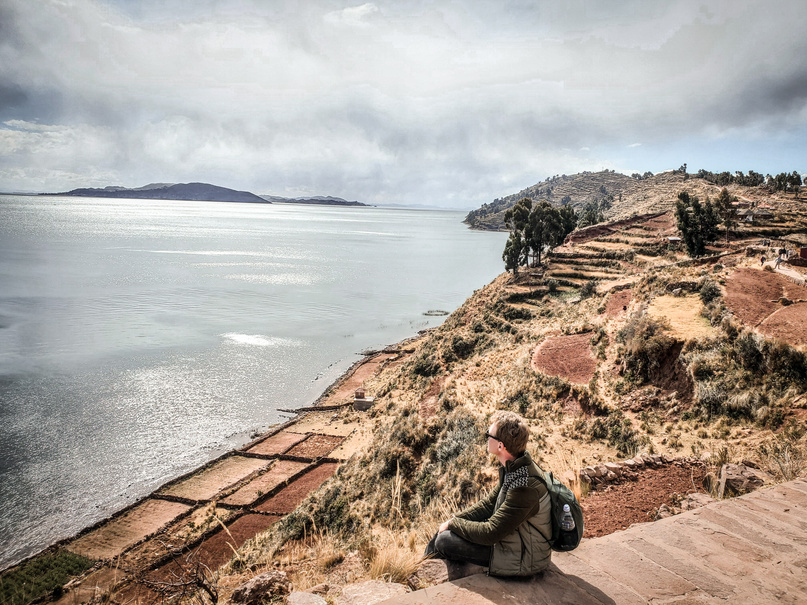
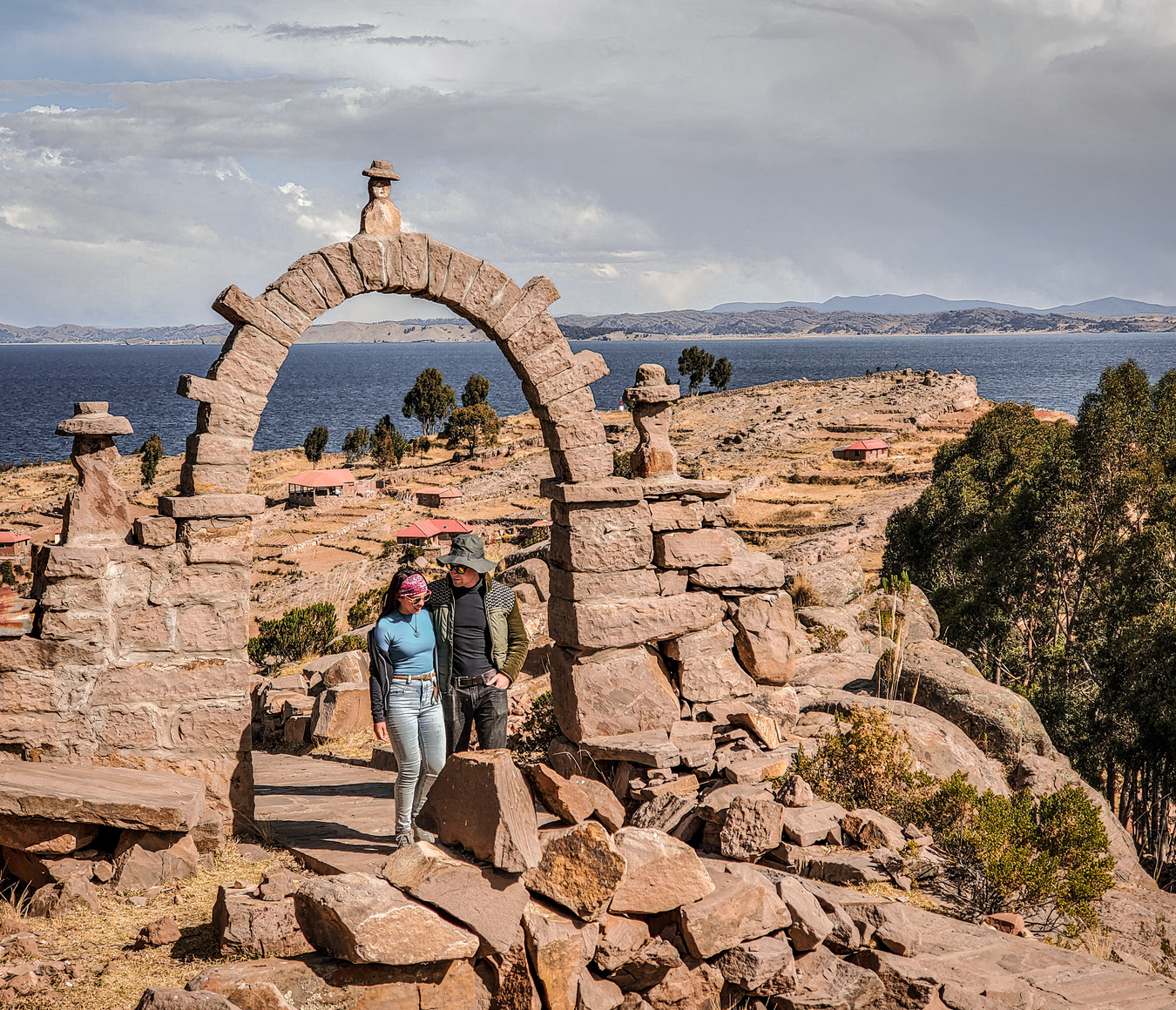


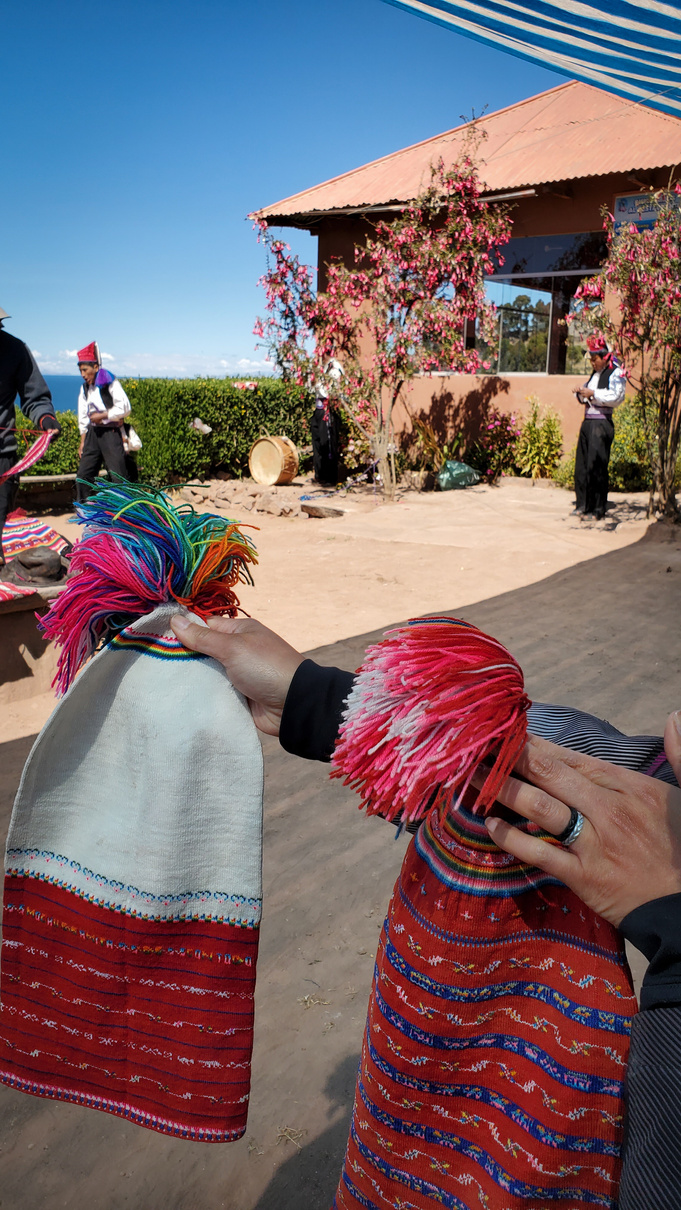

Puno
Our Lessons
Sad images of California’s toxic Salton Sea came to mind when we observed the thick, algae-coated water approaching the port city of Puno. Our boat driver explained to us that the growing presence of algae blooms over the Lake Titicaca has worried local scientists, because it is an unfortunate sign of pollution and climate change. This process of algae overgrowth is known as eutrophication, and it is caused by an increase in the lake’s concentration of chemicals that algae thrive on. These chemicals include, in large part, plant fertilizers from nearby farming industries. When it rains, fertilizer and other pollutants get washed away from saturated soil, and the runoff goes into the lake. This is great for the algae—but if the pollution is not stopped, huge blankets of algae will grow and begin to decompose, resulting in the suffocation and death of the lake’s natural animal life due to a lack of oxygen below the stagnant surface. This will have a particularly drastic effect on the lives of the Uros people, who rely on the lake for everything from food to the water they drink.
Meanwhile, on the streets of Puno itself, we observed a humbling scene: Apparently, it has become common to see people spending hours at the bank, often on a biweekly basis, just waiting to cash work checks or pay their bills—a huge inconvenience when compared to the ease of direct deposit in most of the modernized world. Indeed, we witnessed lines of workers wrapping all the way around to the next block. Interestingly, while the Uros floating islanders have helped Titicaca become a major center for tourism, Puno itself does not have much to offer to tourists. At the time of our visit, this was clearly another city of very hardworking people, who are struggling to make ends meet. Even our hotel, for example, had no soap in its dispensers (during a pandemic!). Disposable items like toilet paper and napkins are also scarce here.


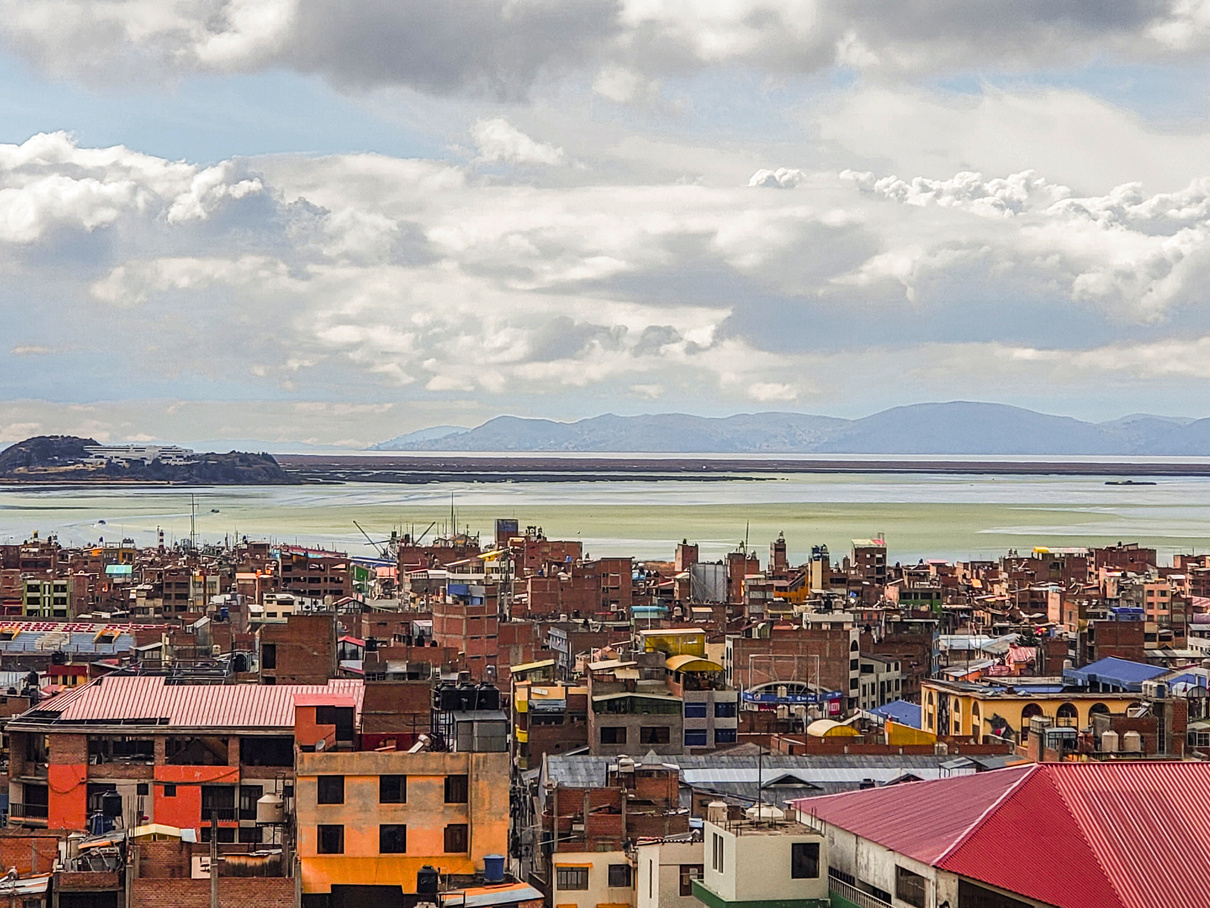
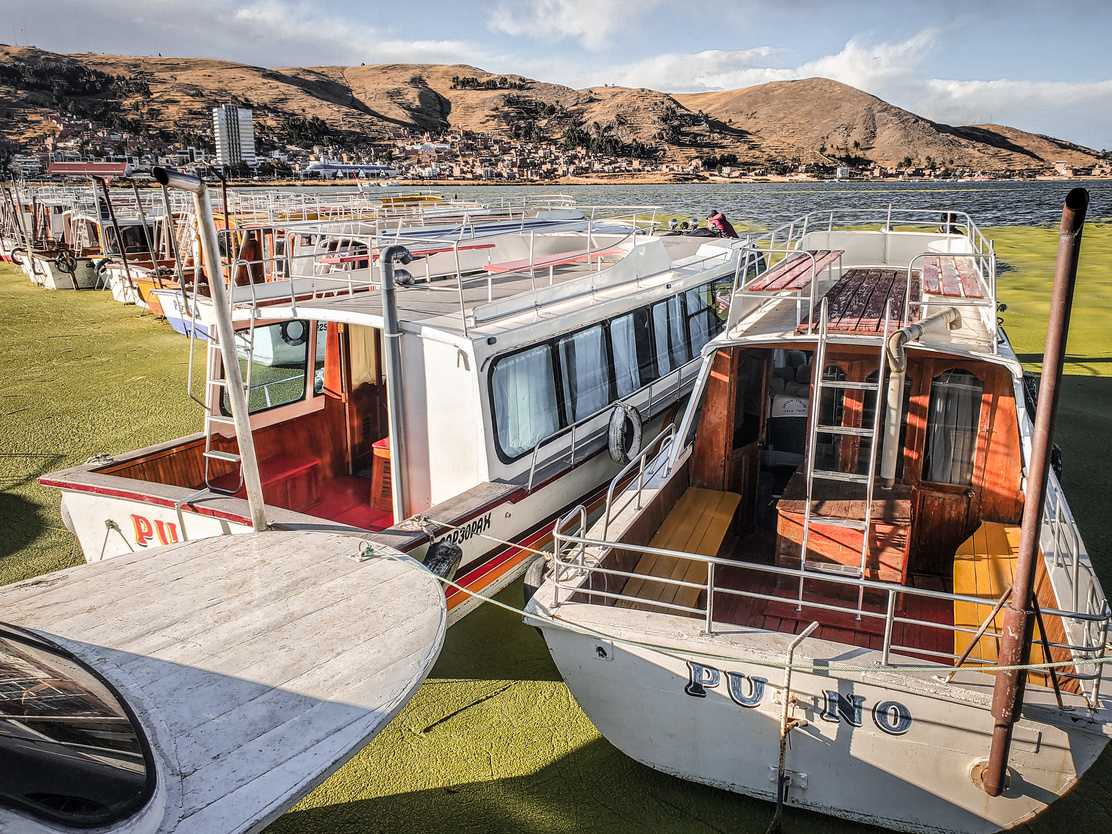
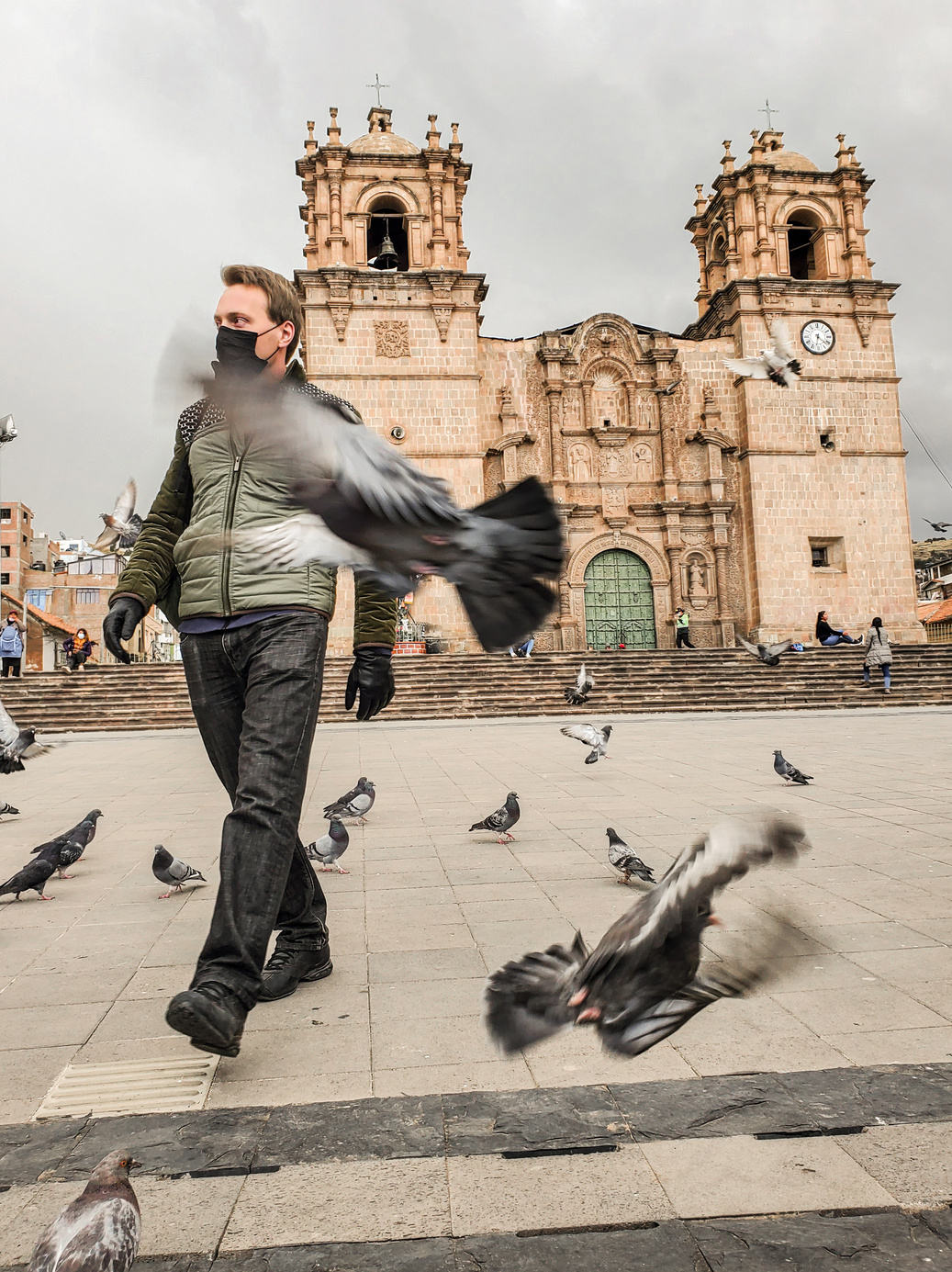
Arequipa
Our Lessons
Arequipa is a sprawling city; the 2nd-largest in Peru, with an urban life and unique character that rivals Lima's, we are told. Too bad we did not get to see much of it, as we were stuck in transit... which led us to wonder: are snow plows a right, or a privilege?
Perhaps the latter, we would learn. Our charter bus was stuck in an unmoving traffic for 10 hours during what was supposed to be an overnight transfer from Puno to Arequipa. Alas, on the mountain highway, an unusual storm left a few inches of snow on the ground. Unfortunately, this was treacherous enough to grind traffic to a complete standstill! While we waited, locals on the bus asked us interesting questions—like: Is it true that people in America own machines for pushing snow out of the way? And, If New Jersey gets a lot of snow, does that mean it’s even higher in altitude?
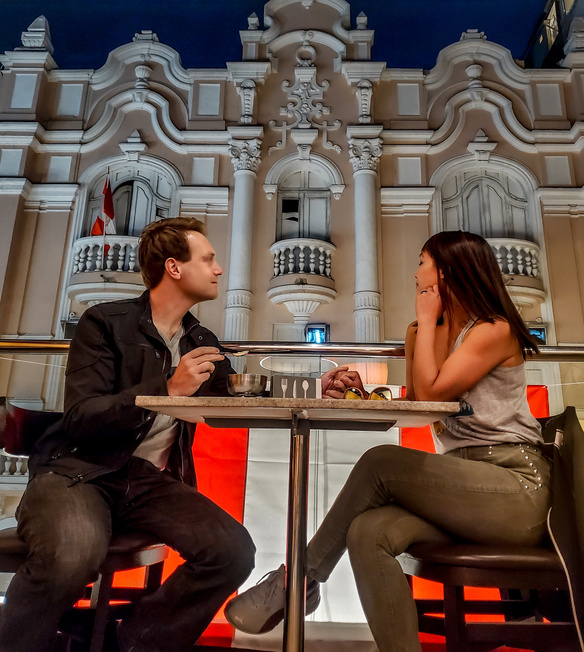



Colca Canyon - part 1
Our Lessons
Peru’s Colca Canyon is not known to most Americans, but it is twice as deep as the U.S.’s Grand Canyon. Although it is less narrow than the Grand Canyon, Colca is a breathtaking spectacle, particularly its areas which are lined with pre-Incan terraces. We are told it is in fact the 2nd-deepest canyon in the world, behind only China’s Tsangpo Canyon. Like in most of Peru's high-altitude zones, it was freezing cold on the bus in the morning (why don't they have heat?), but it got very hot by the afternoon.
The Andean condor, the largest bird of prey in the world, thrives in these areas. The bird was a symbol of the Incan people, who believed it to be an immortal spirit of the heavens. Today, indigenous communities continue to view the condor as a symbol of power and health. Oddly, we learned that because they don't sweat, Andean condors have the unusual habit of pooping on their feet, which helps them keep cool by evaporation.
It is around this point in the trip that we started to feel how exhausting bus travel can be! Colca Canyon was quite far from Arequipa, which meant another early 3:00am start for us. Arriving at the canyon by mid-morning, we spent only a couple hours before having to head back. We were creating new memories at such a fast pace, that we so strongly wished we’d had more time to spend in each place. In this way, upon eventually returning home, sitting down to reflect and research more about the all things we experienced became one of the most rewarding parts of our world tour—such an important aspect of travel in general, we think, regardless of whether the journey is large, or small.




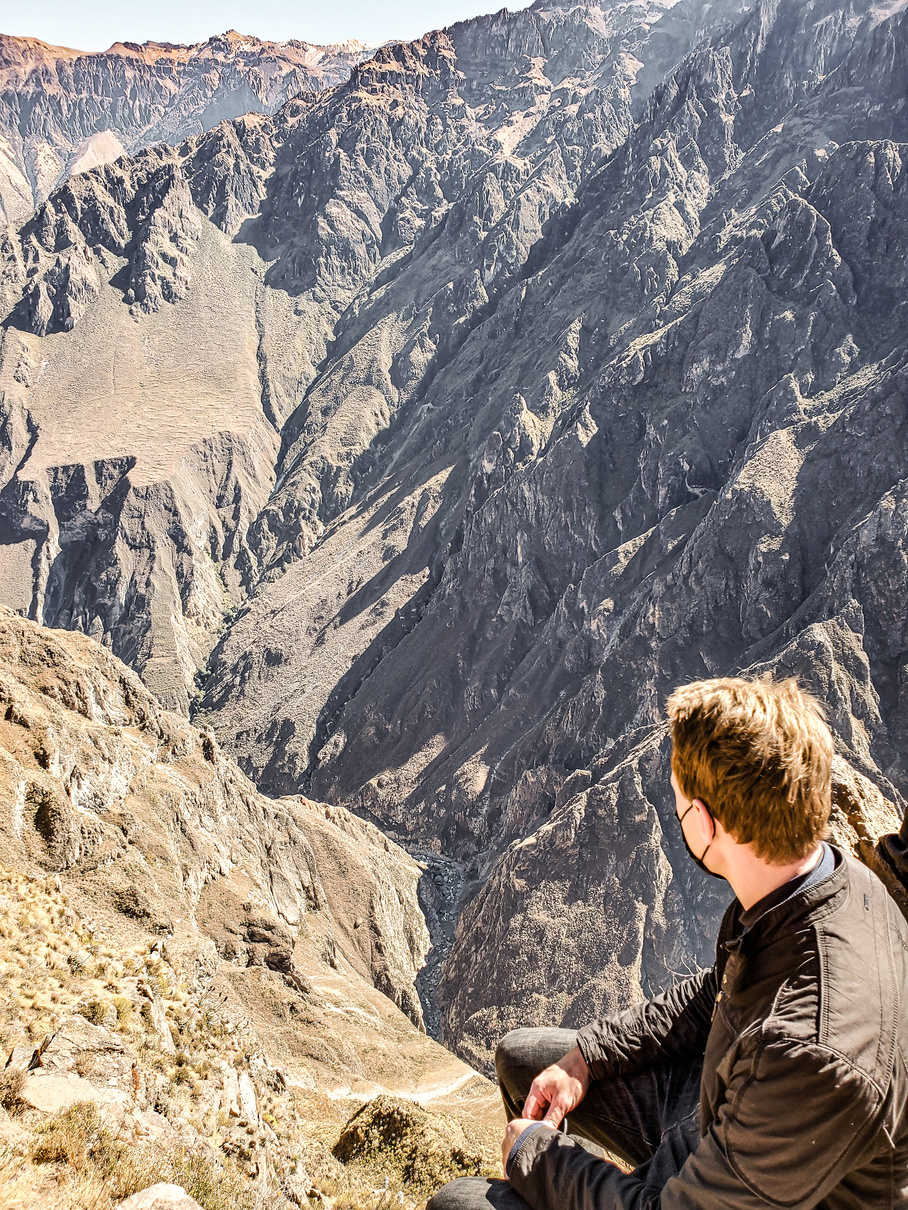
Colca Canyon - part 2
Our Lessons
Driving through the Reserva Nacional de Salinas, we were excited to see Alpacas, and better yet: their young, wild, and free cousins, the vicuñas. "These boys could be making fat stacks selling their fur!" a sleep-deprived Eric commented. True that, hubby: we learned that vicuñas produce only small amounts of extremely fine wool—the most expensive commercially available fiber in the world, because it can only be shorn once every three years, and because it can only be obtained by temporarily catching a vicuña in the wild (for centuries, vicuñas have been protected from being kept in captivity by Incan law, and now by modern Peruvian law). This ‘luxury yarn’ is said to produce some of the softest and warmest clothing in the world, which may lend credence to our tour guide’s claim that a pair of vicuña socks can cost $1000 USD.
We also enjoyed an unexpected stop at Chivay's natural hot springs with a 360-degree gorgeous mountain view. Some of this water was really hot; hopefully hot enough to sterilize our rented bathing suits!
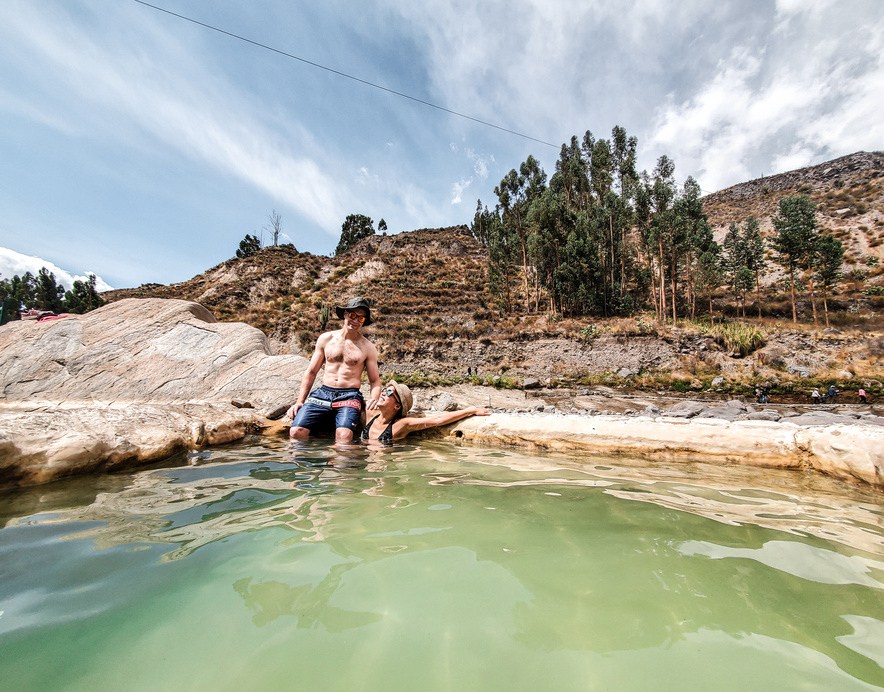
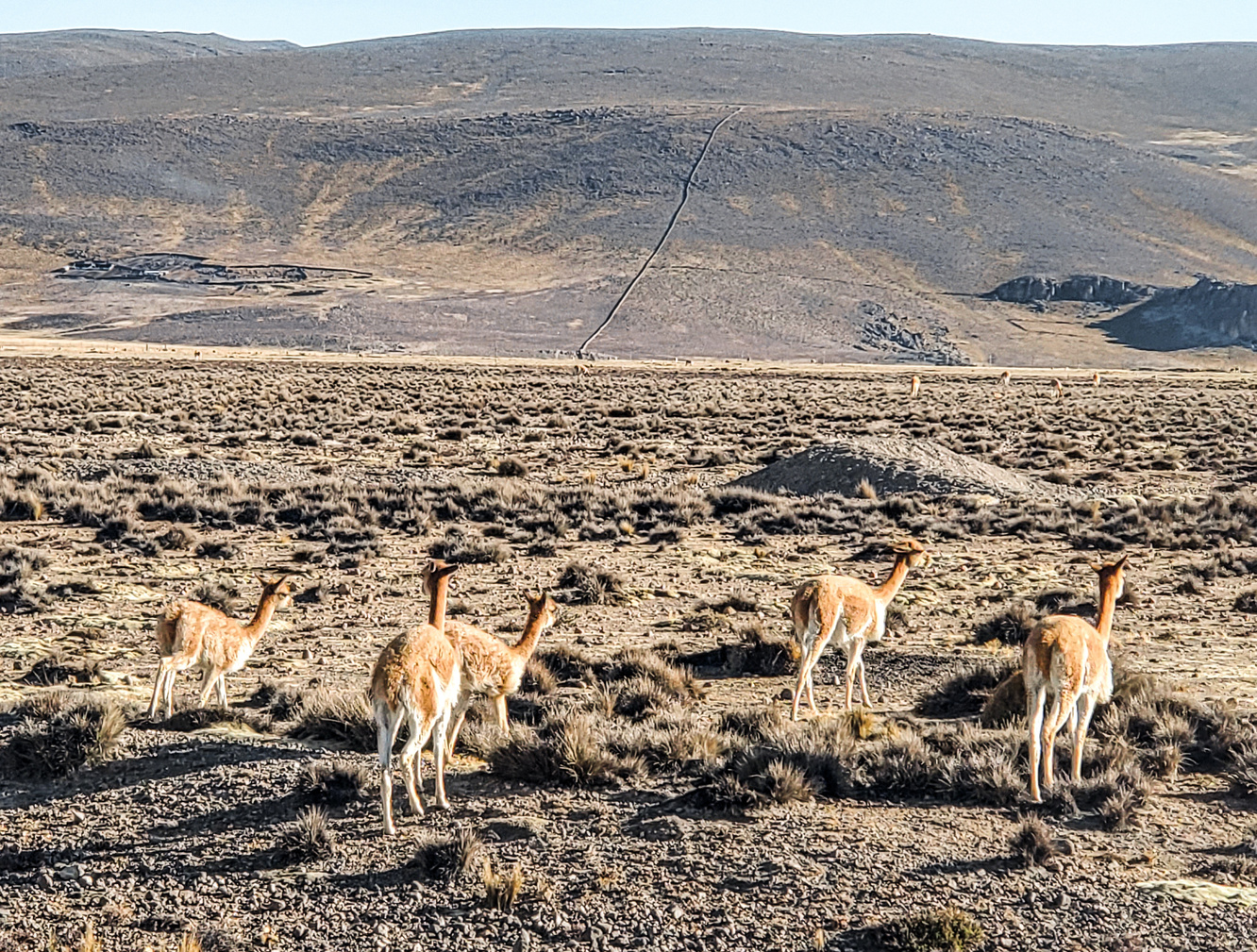
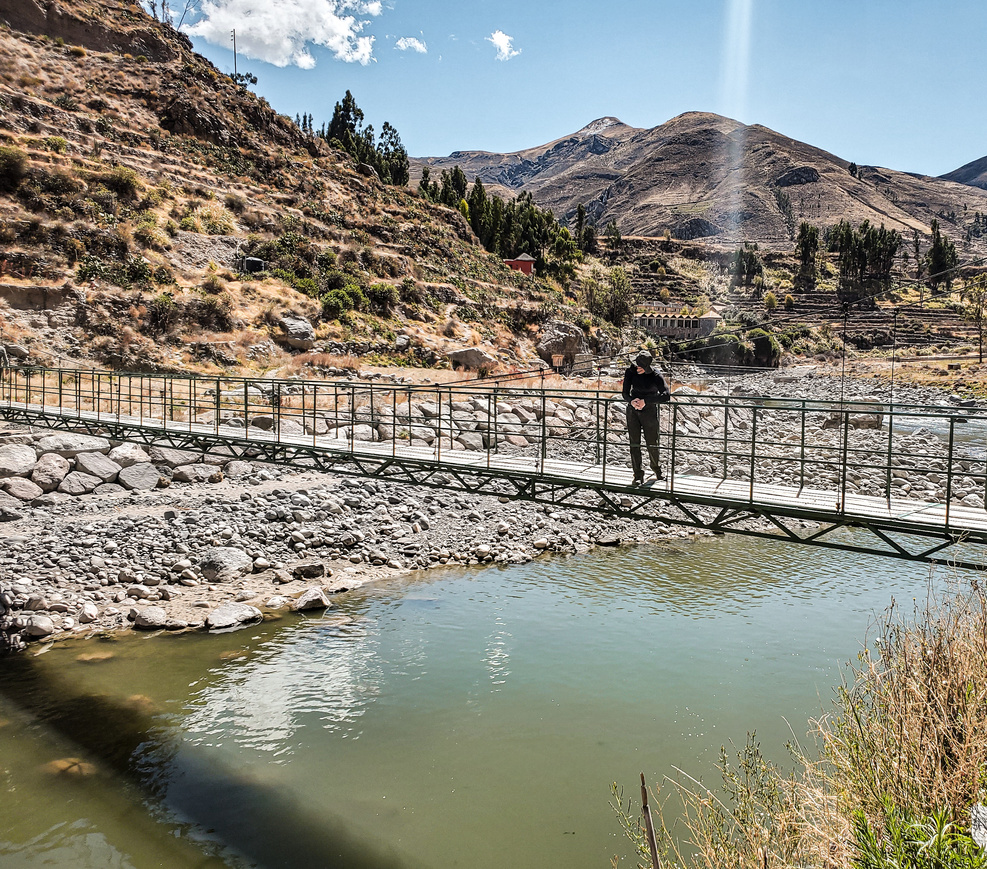
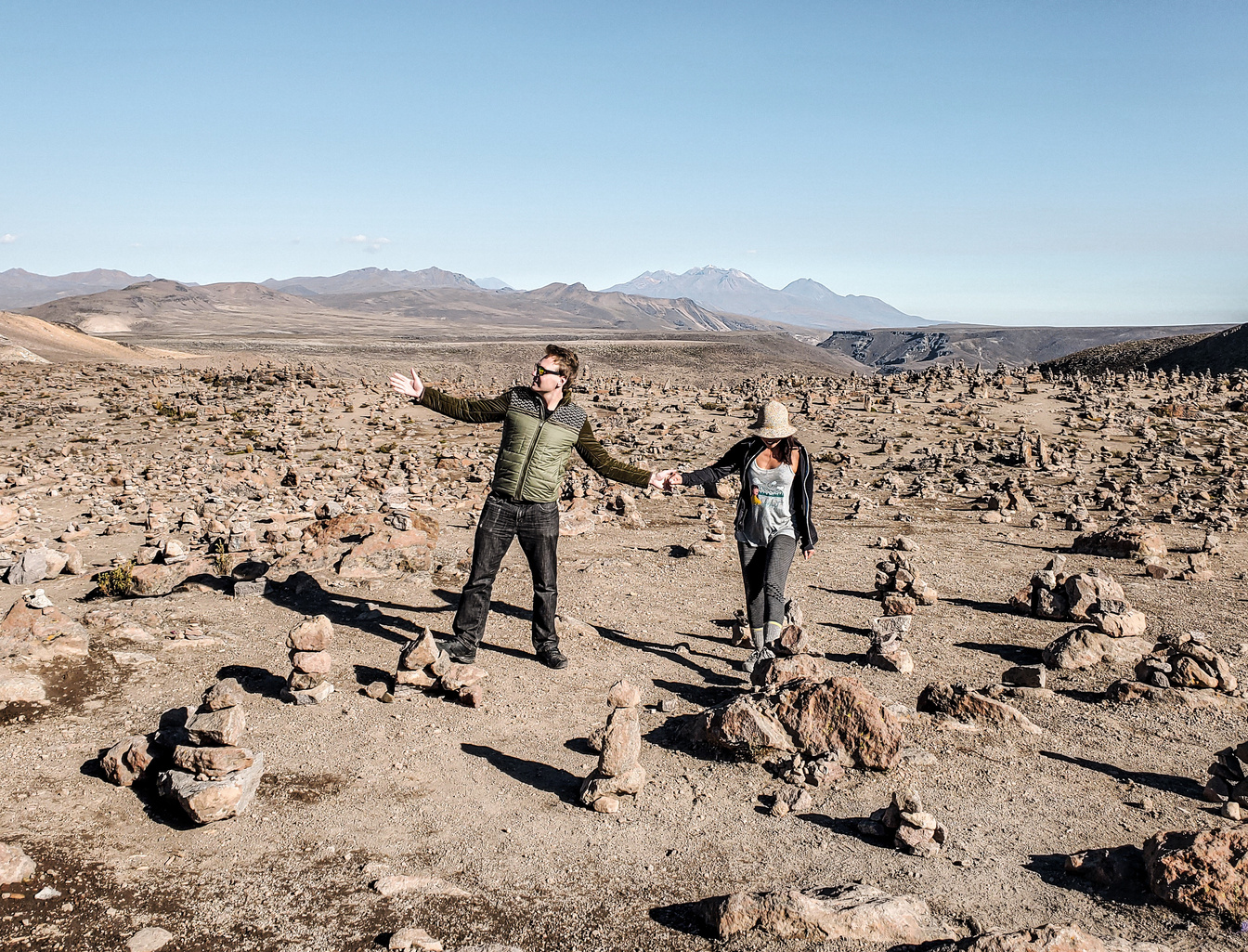
Nazca
Our Lessons
Take-home message: the mystical Nazca Lines were man-made; yes, we humans did it, not aliens! Go humans!
Our flight over these massive desert drawings, visible only from the air, remains a highlight of our year. We learned that these complex geoglyphs are created in a simple manner: just remove the darker-colored stones, and the lighter-colored sand becomes exposed. Simple... except that the oldest remaining Nazca lines were created over 2000 years ago, at a time when no human had access to a plane, balloon, or any aerial view. The precision with which these designs were made required expert knowledge of geometry and scale… and the designers never even got to 'see' their finished work! Why did the ancient Nazcans do all this—a tradition which continued for over a 1000-year span? Archaeologists postulate that it may have been an offering to the rain Gods. Unfortunately, this seemingly did not work too well, as this section of Peru remains a barren, totally rainless, and windless desert! On the bright side, thanks to a complete lack of exposure to elements, the Nazca lines have remained naturally preserved for millennia.
Of course, we modern humans have a way of messing things up... most notably, in 2018 a man tried to avoid paying the toll for the Pan-American Highway and unwittingly drove his truck across the lines.
Apparently, the latest discovery in 2020 was a smaller, hillside "cat" geoglyph, thought to have been made during the 'Paracas era', between 200 to 100 BC. Eric joked that it looks like a three-year-old drew this one, but it is proposed that its lack of geometric precision can be because it is one of the “oldest” geoglyphs. Definitely not a modern, amateur creation to promote tourism, we were assured!
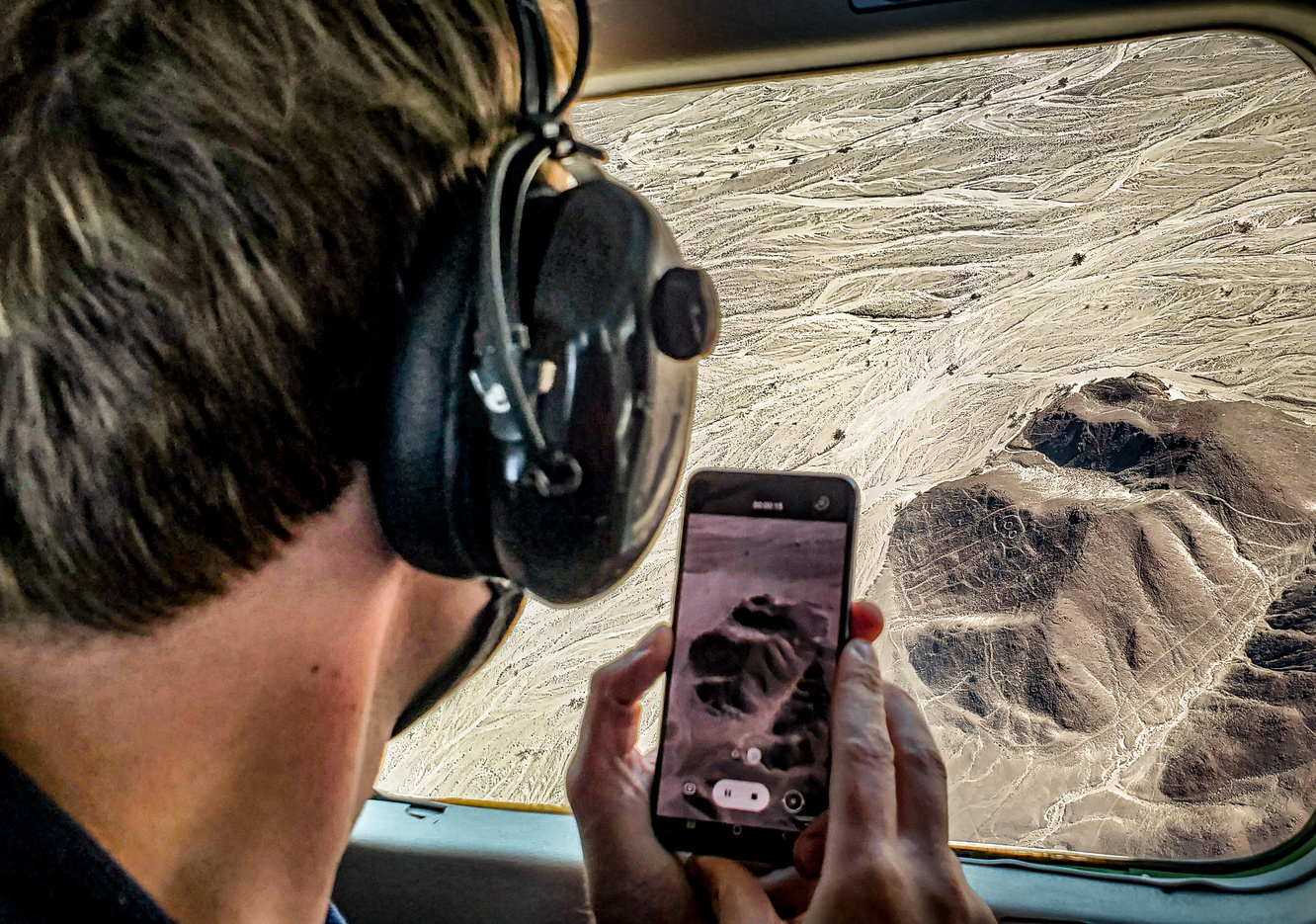
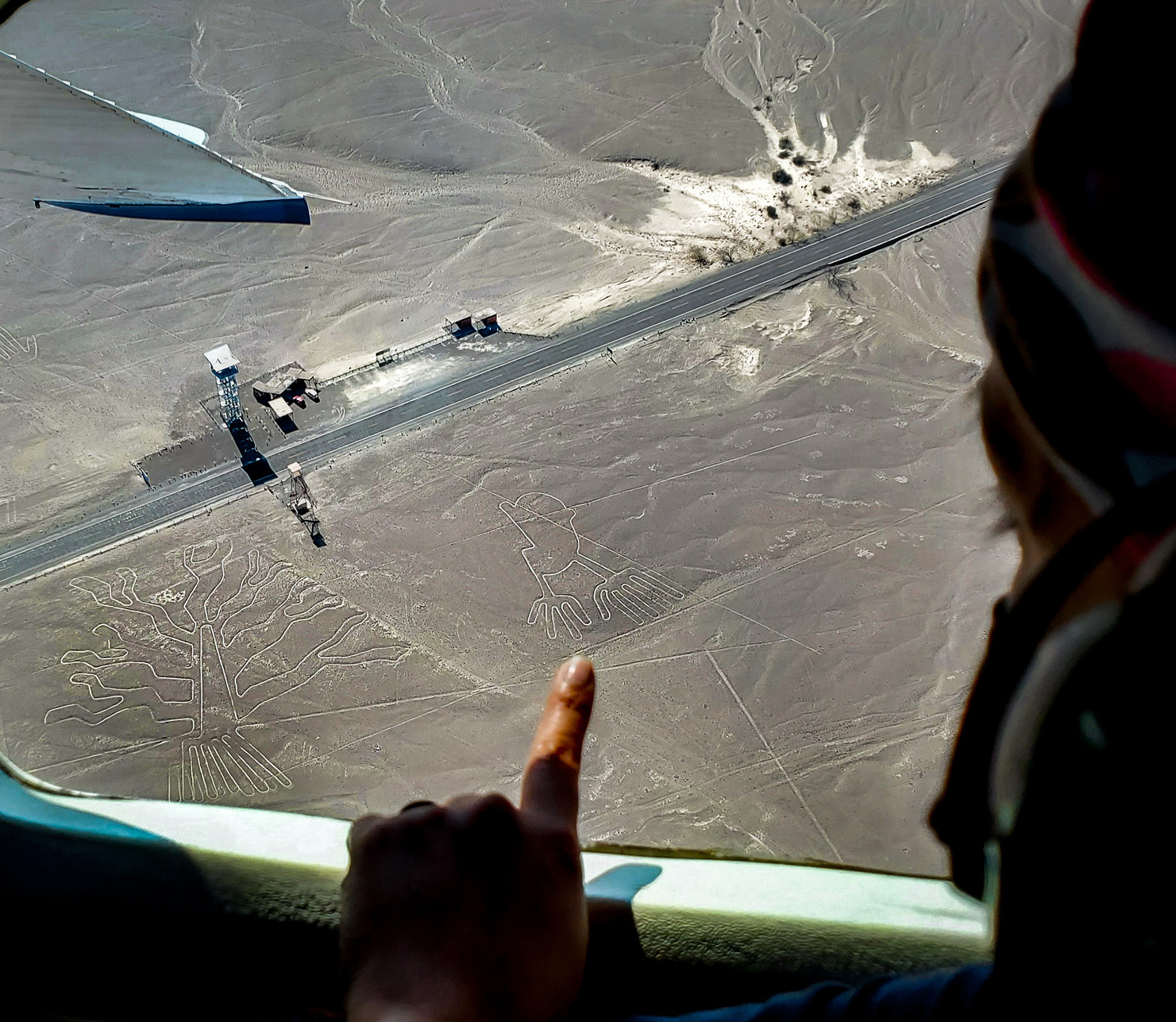

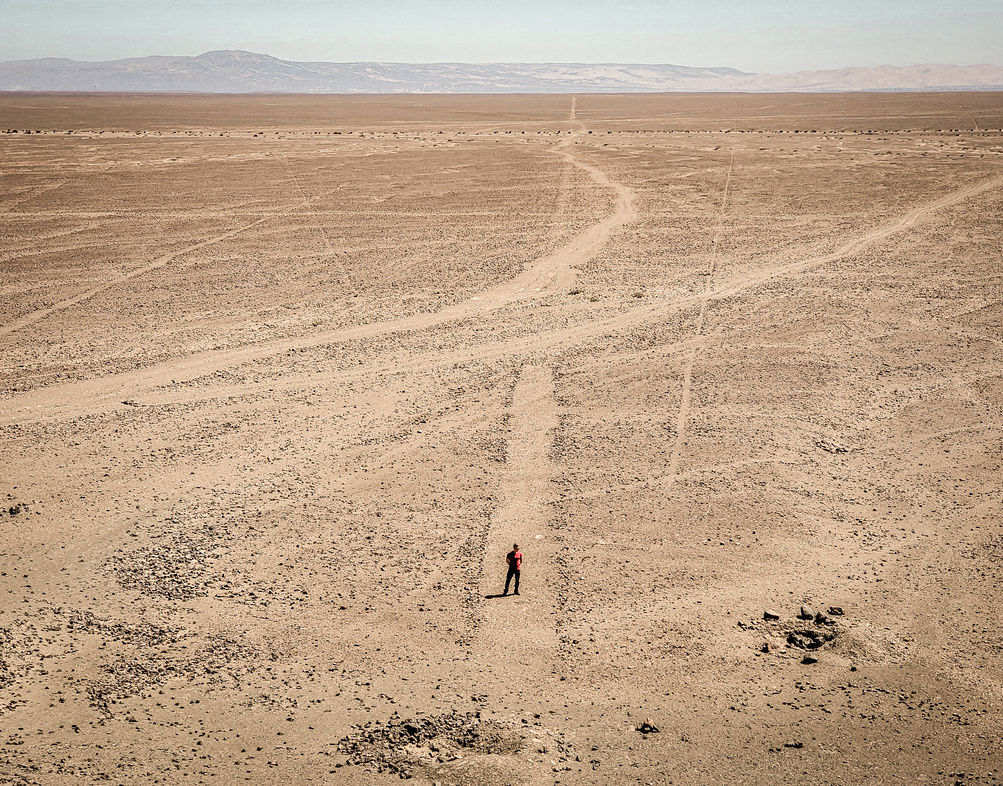
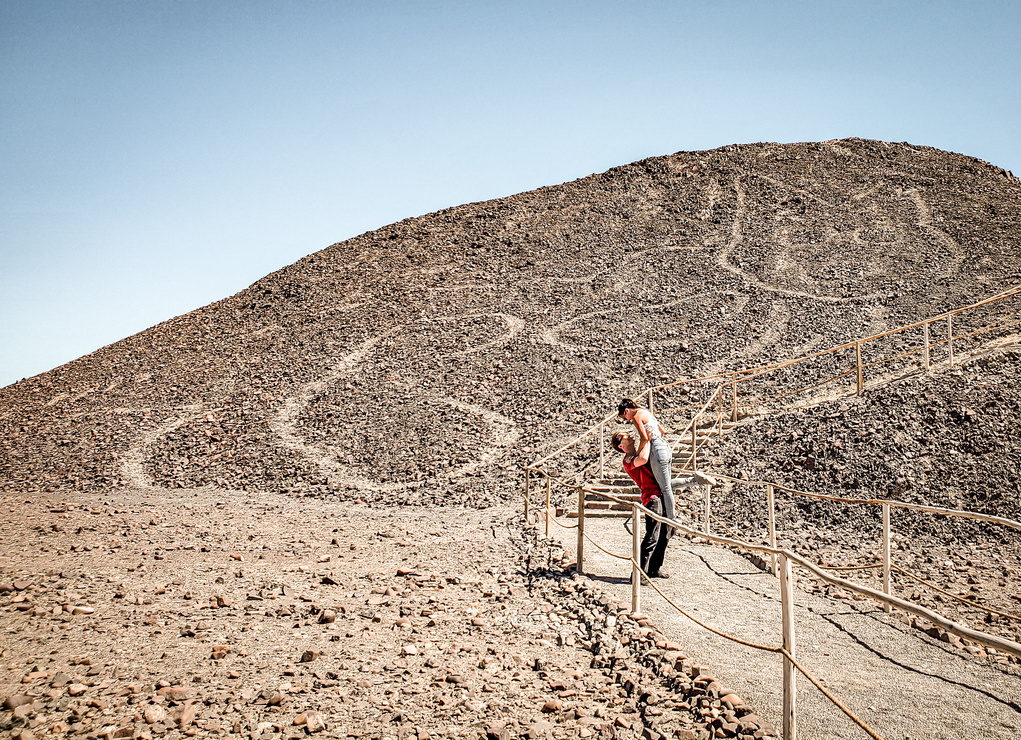
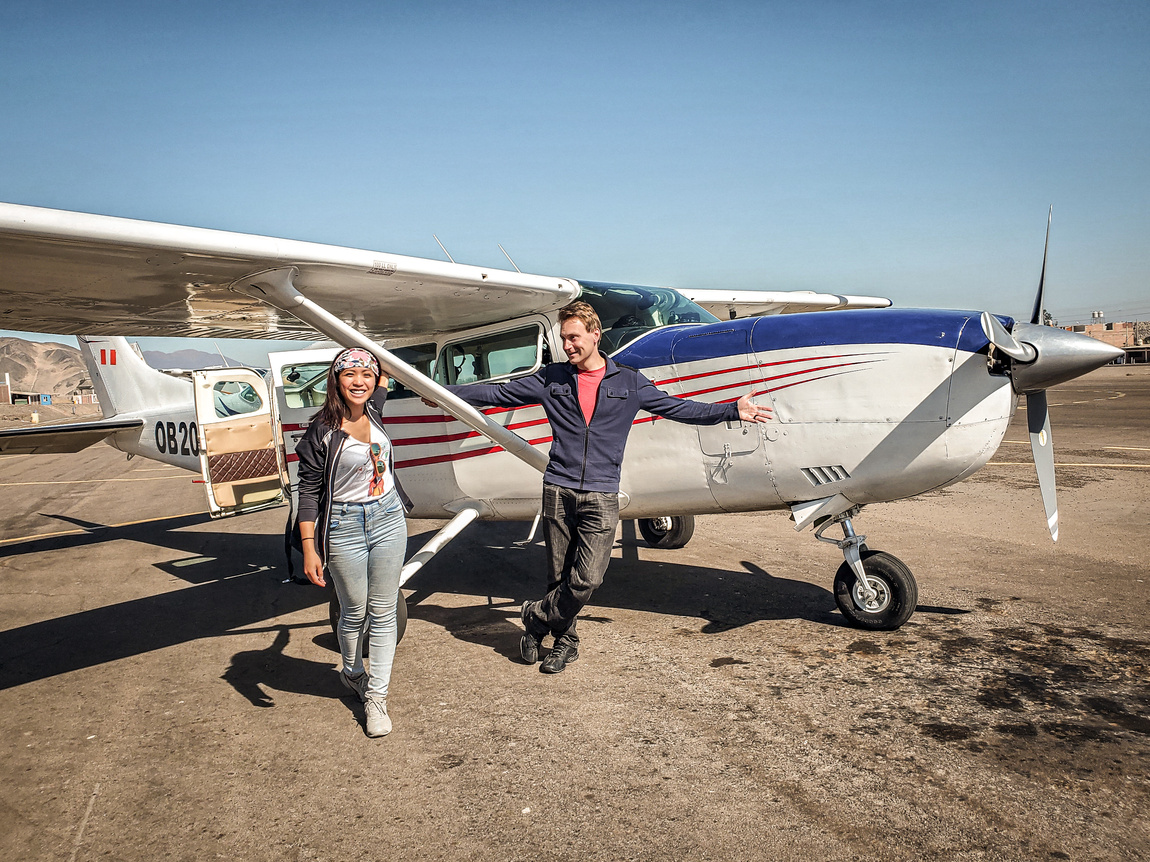
Huacachina - part 1
Our Lessons
Sand deserts that rival the Sahara? Another long drive, and we awoke to the sight of golden-tan dunes surrounding a palm lake: an oasis, in the most epic town of Huacachina. We learned that only a hundred or so people actually live here; yet tens of thousands of tourists come annually—so many, in fact, that the desert lake water is getting used up! Now the local business owners all chip in, to cover the cost of pumping more water in, to keep their tourist site alive and well.
In August 2021, Huacachina was the only place in Peru in which we saw this many international tourists; in fact, with the exception of Rainbow Mountain, seeing any tourists at all was rare elsewhere. It's humbling to observe how many businesses have been forced to close their doors, even here in Huacachina, due to the loss of vital tourist revenue during this pandemic. Peru's vaccination availability was finally increasing at the time of our visit, so our hope is this situation improved soon after.
Total time to hike a Huacachina sand mountain? 1 hour up, 60 seconds down! It's amazing how much speed one can achieve running barefoot down the pleasantly soft sand of these dunes; it truly felt like we were leaping across the low-gravity surface of the moon! But before making a wild sprint down, we recommend enjoying the view from the top a box of our new favorite dessert: Chocotejas (Tejas in this case is Spanish for "sweets"; not “Texas”!). They are sugar or chocolate-coated morsels of dulce de leche, mixed with just a bit of fruit. Apparently unique to this area of Peru, these delicious treats gave us just one more reason to come back soon.
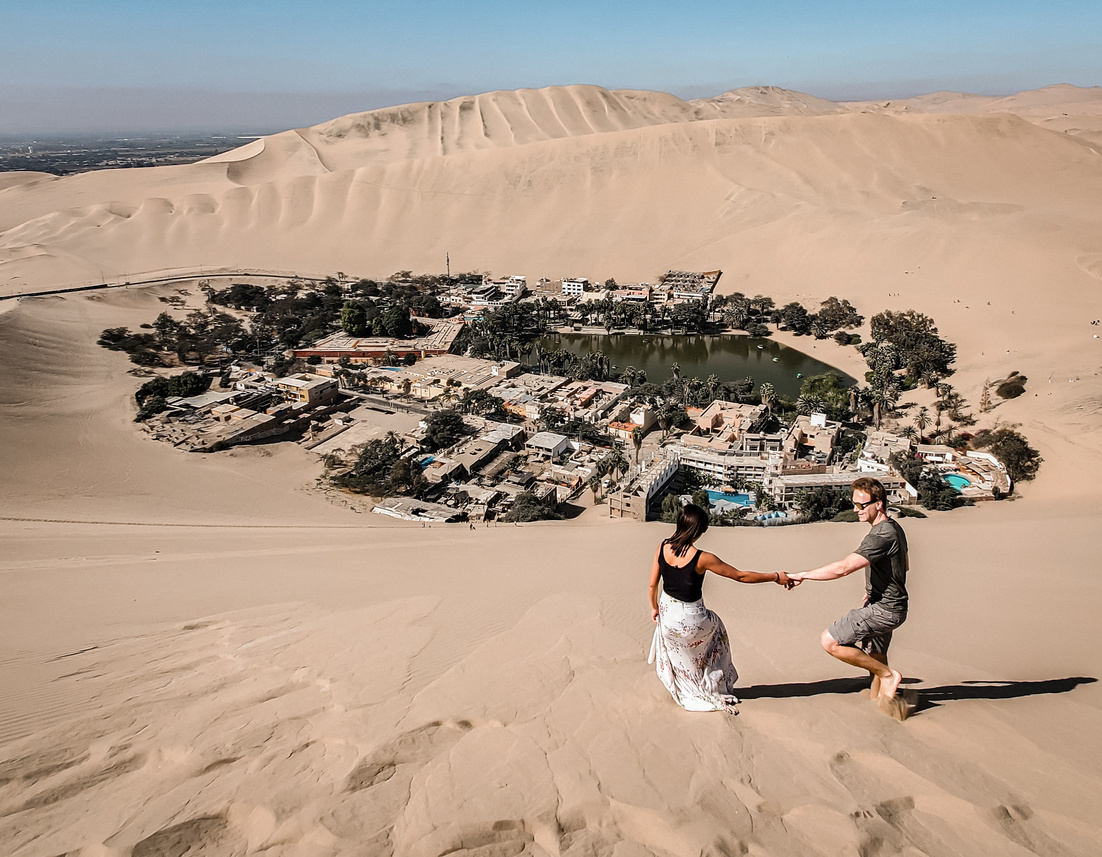
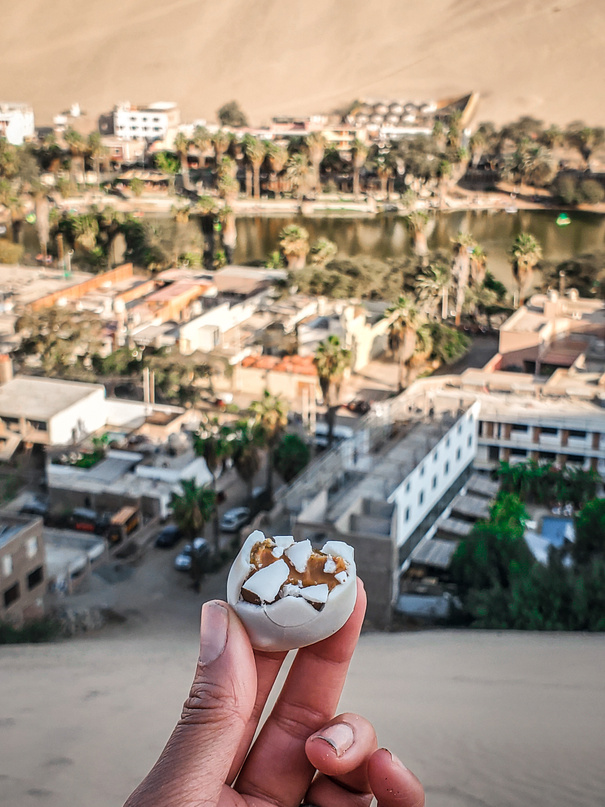
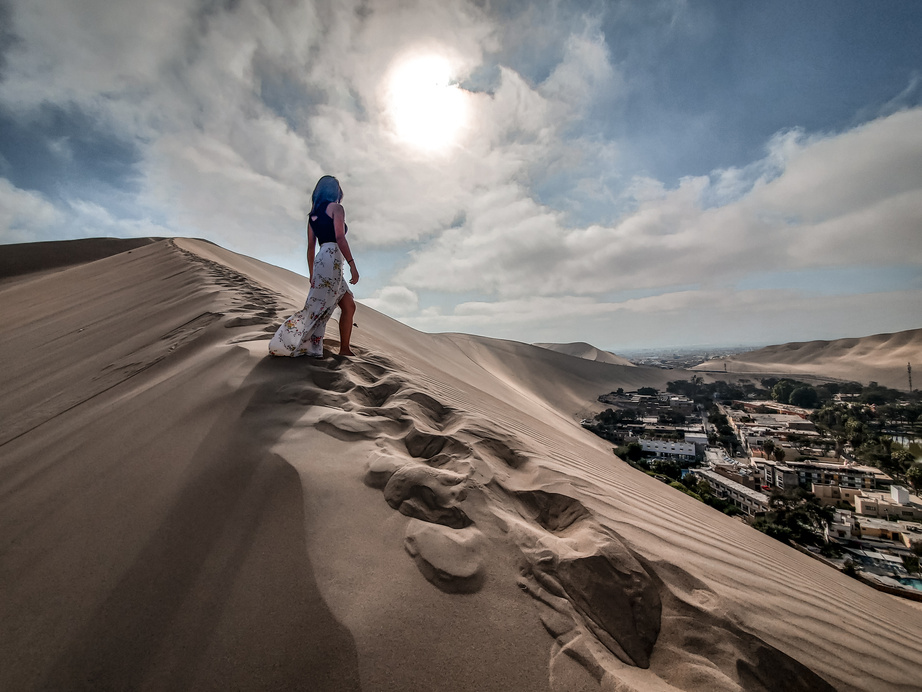
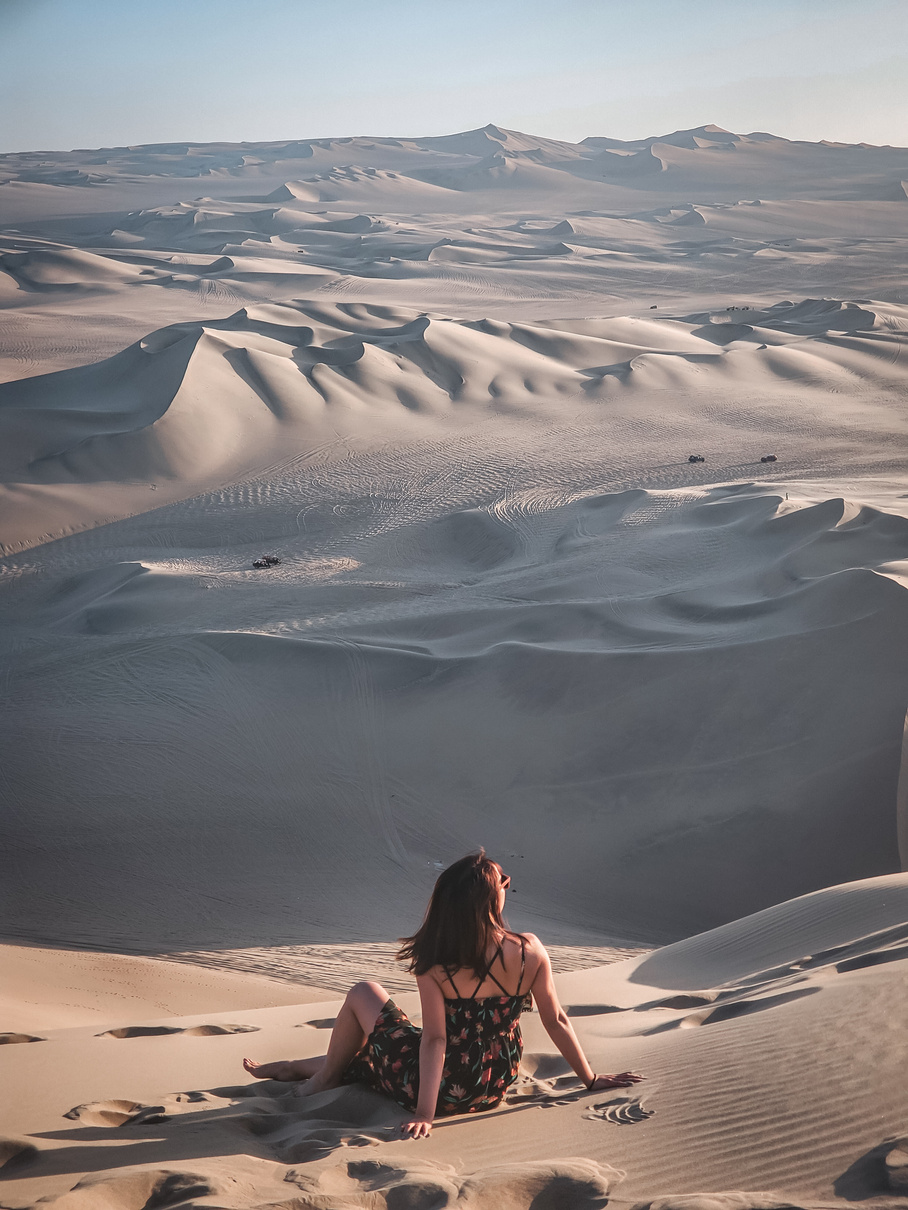
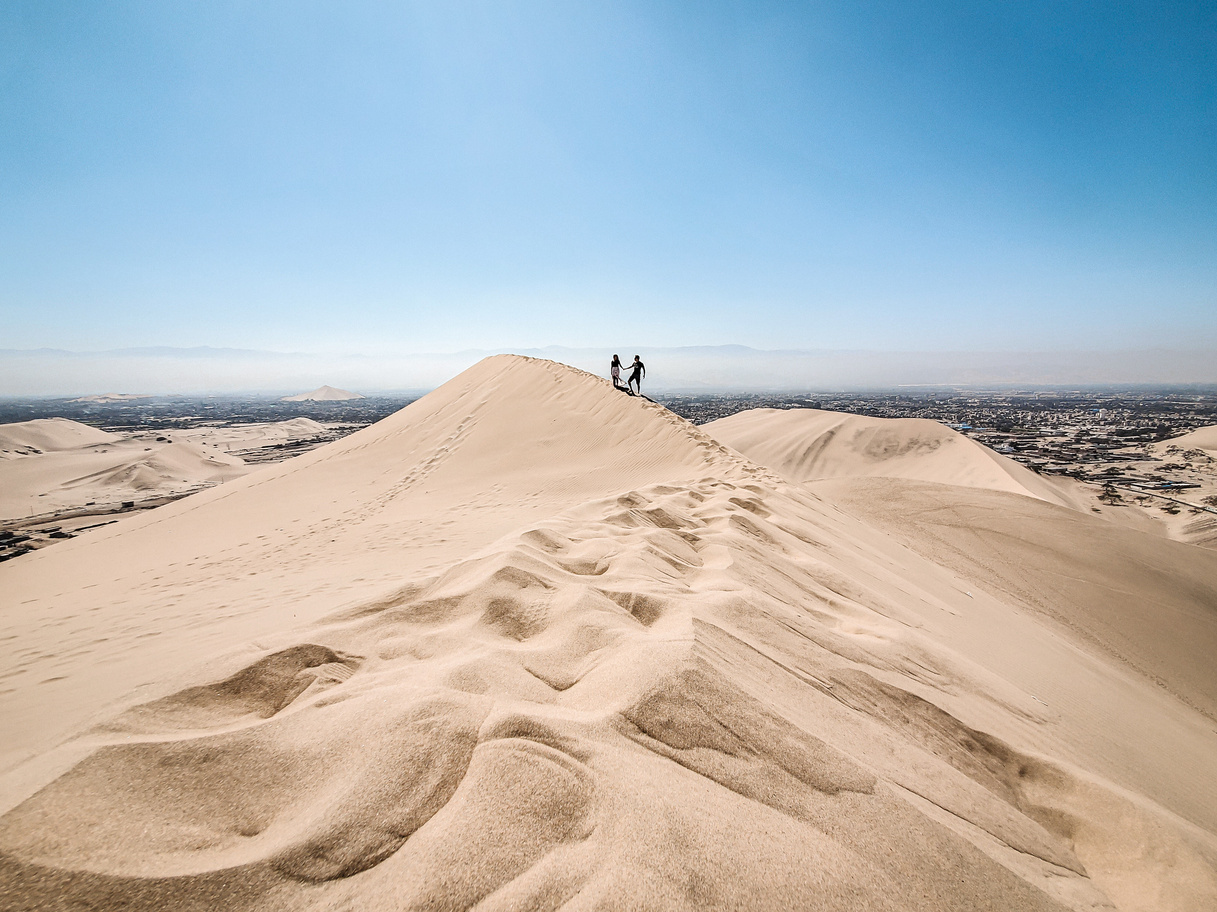
Huacachina - part 2
Our Lessons
Huacachina frankly seems completely out of place in Peru: it has a reggae/hippie/surfer vibe that one would expect more from a Caribbean Island or Californian surf town. Although there are no ocean waves to ride here, alternative activities have been invented: sandboarding and sand skiing. We tried the so-called “less intense” version of sandboarding, which was essentially a belly-down, head-first nosedive down the dune on a narrow snowboard. Building reckless momentum with minimal ability to steer or stop compared to snow, the resulting sand-burn was real, dude… but totally worth it. Thankfully, assistance getting back to the top of these massive dunes can be hired: with the help of loud, gas-guzzling dune buggies.
Eric insisted his personal ‘96 Jeep Cherokee was strong enough to climb these hills (with some additional 'minor' modifications). Actually, to our surprise, we were told these dune buggies began their lives as early-2000s Nissan Pathfinders. Judging from the bare-metal frame, there's not much left of the original externally. However, we were quite impressed to learn these trucks are still running on relatively unmodified 3.5L straight-six cylinder engines. Our driver, who has been doing this job for five years now, stated, “To get up the steepest hills it's 50% the vehicle and 50% the driver’s skill.” As we drifted across the edges of near-vertical dunes at high speeds, it was clear that skill plays a big part! To build momentum, these buggies’ little-engines-that-could would rev to the max, screaming at extremely high RPMs… but with the right tires and suspension, they were indeed powerful enough to get the job done!
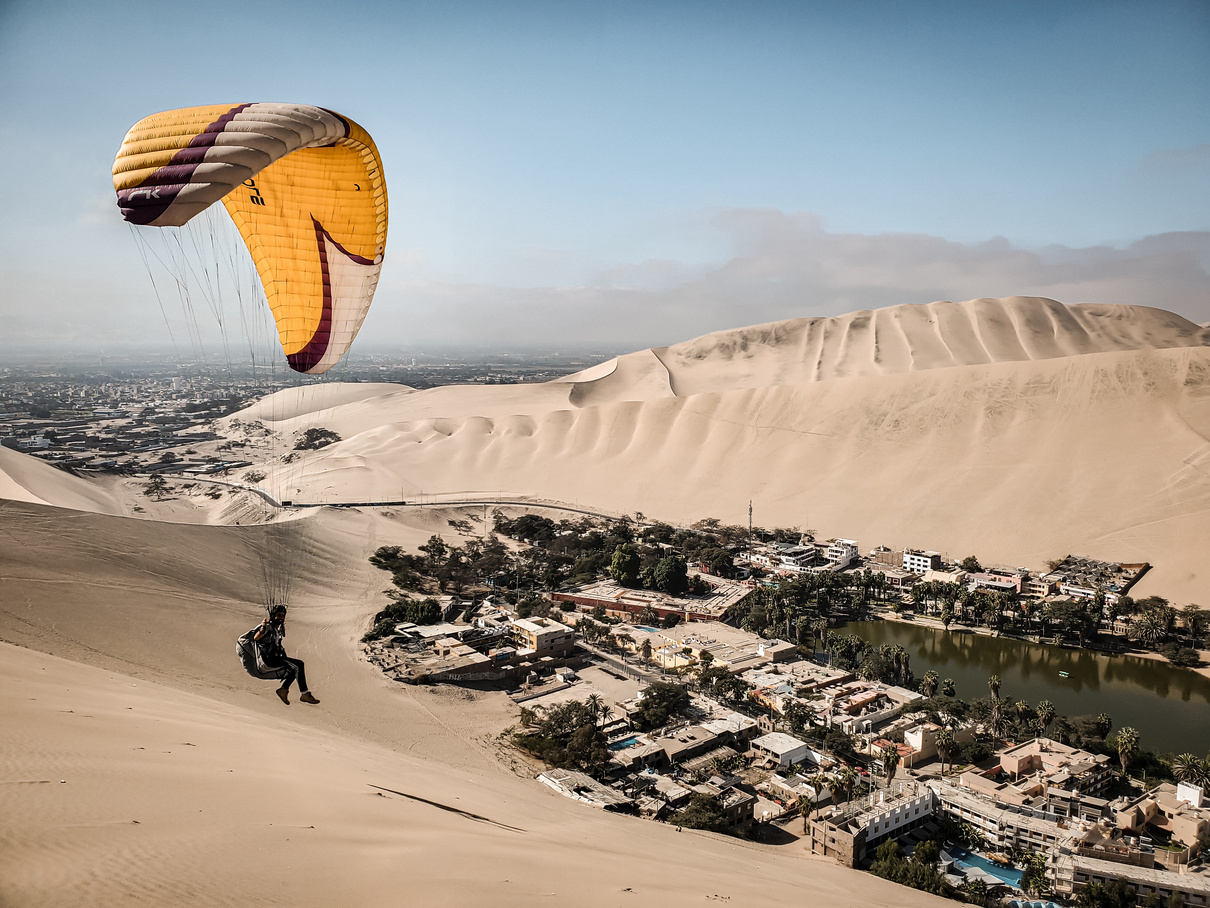
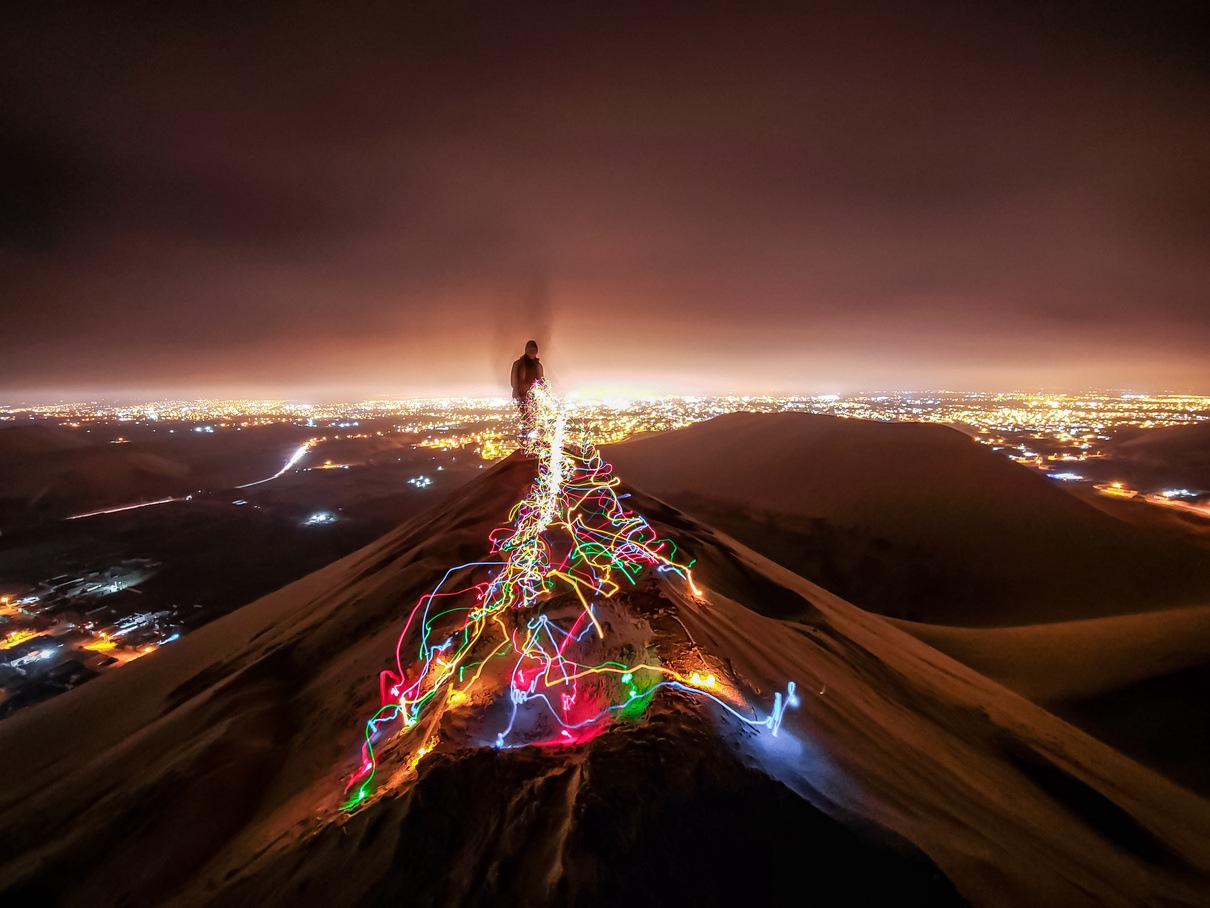


Little copper fairy lights have brought mystical beauty to our campsites, our train cabin, our living room. On this occasion, Eric surprised me with them after an hour-long twilight hike up the tallest sand dune. What a peaceful escape, looking down on the busy town from the dark dune above, while resting on a blanket illuminated only by the mellow glow of these colorful bulbs!

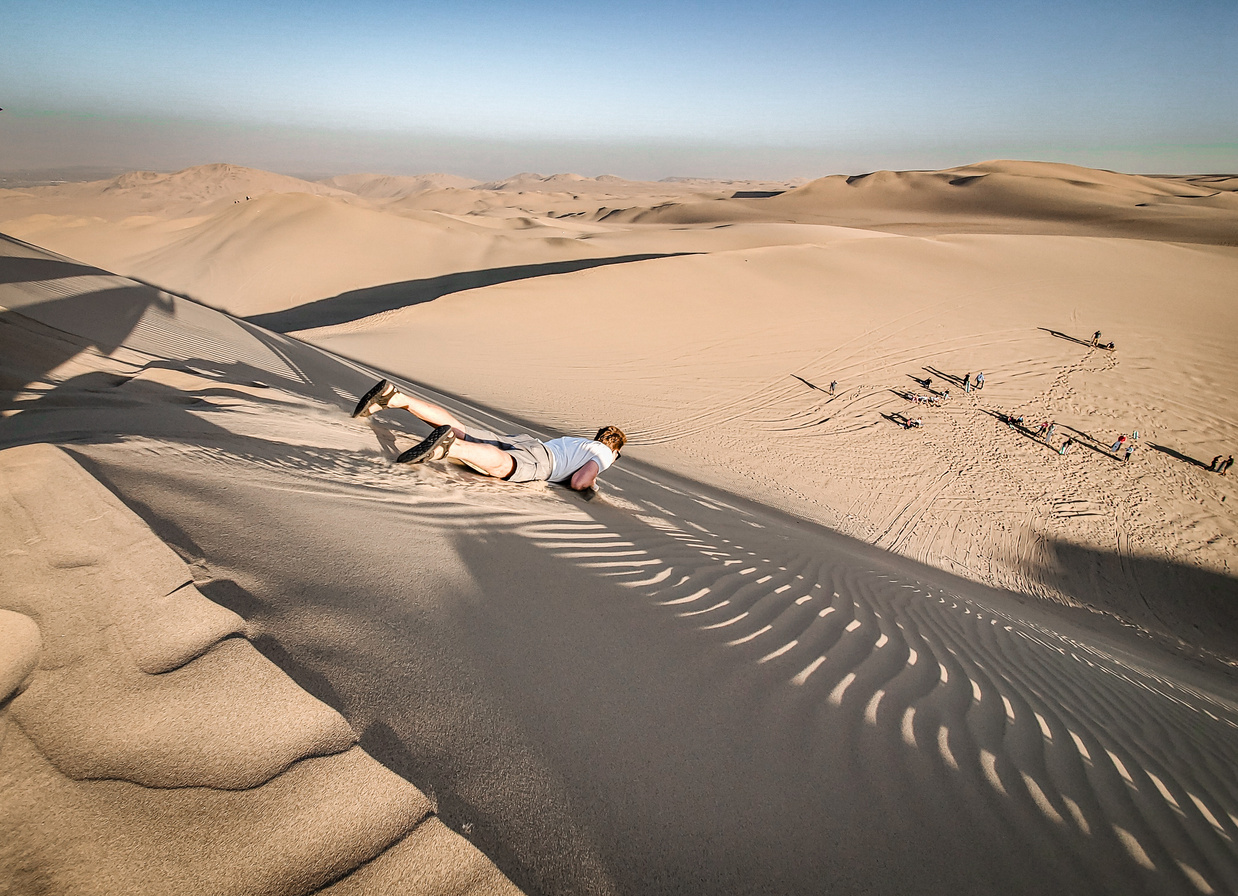
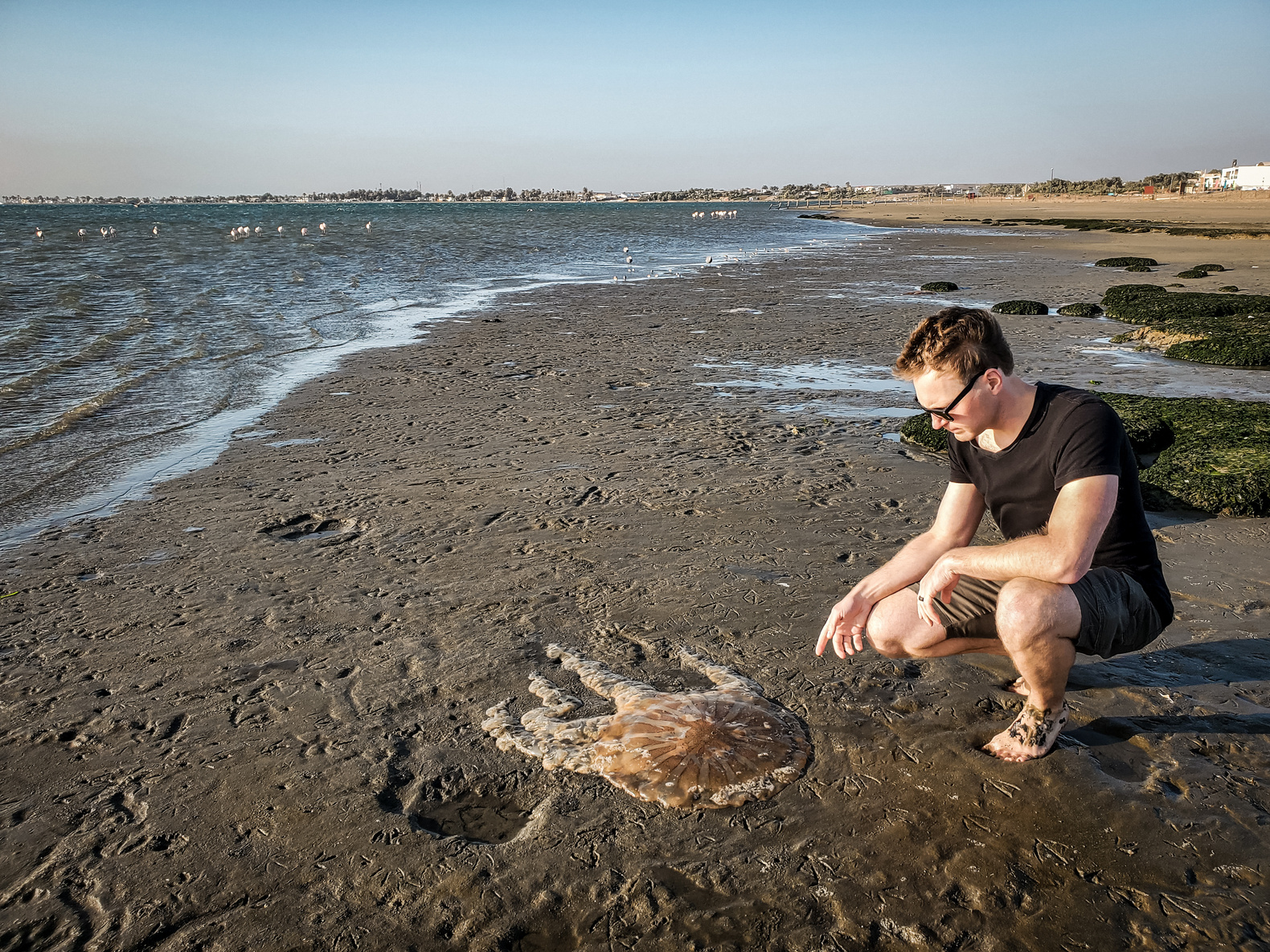
Paracas
Our Lessons
Traveling north along Peru’s west coast, we made an overnight stopover in Paracas National Reserve. This arid coastal zone is home to many fascinating species of wildlife, including beautiful flamingos... and the majestic cousins of Galapagos’ blue-footed boobies: the red-footed Nazca boobies! We once again enjoyed watching these birds pull off their unique extreme aerial stunt: nosedive-bombing for fish. How does such a high-velocity dive into the water not cause head injury? As it turns out, it would for any other bird; but boobies avoid concussion thanks to specialized air sacs under their skin, which cushion their heads' impact with the water.

The “mud” incident: Today we learned about a new kind of warning sign. Misinterpreting our bus driver’s advice, we jogged far south along the Paracas shore, in order to get a close-up view of hundreds of pink flamingos. Continuing past the end of a resort-owned beach, we encountered a wire fence leading up from the water, separating the public beach from a vast, open flat area where the flamingos were resting. At the center of this fence was a small open gate and a reflective yellow sign. This sign showed a stick figure of a person with his hands in the air, up to their waist in what we thought was water, with a big "X"... No swimming, we assumed? No, actually, this was a warning not to go on the beach itself, due to risk of getting stuck… which Eric almost did! As he tip-toed towards the flock of majestic birds, his leg suddenly speared right into the loosely-packed mud, above his knee! His second foot promptly followed, and it took him a minute to wriggle his way out.
While here, we also saw hundreds of very large jellyfish washed up along the shores. This is apparently common in Paracas during years of heightened 'jellyfish blooms.' In spite of this, there were several kite surfers enjoying the fantastic winds along the coast. With all those jellies we might think twice about dipping our toes into this water!
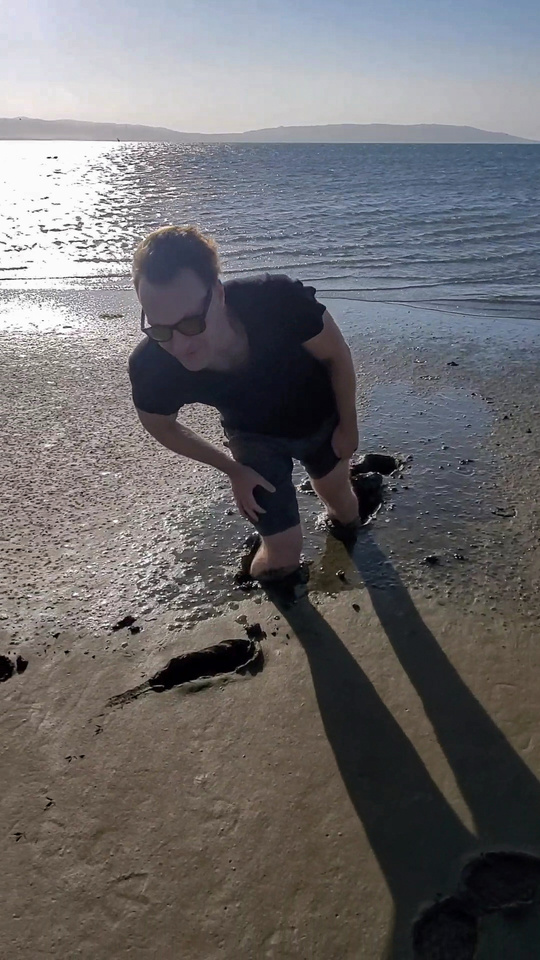


Lima - part 2
Our Lessons
Peru: at a new breaking point or an ongoing struggle? From our hotel balcony in the northernmost part of Lima’s historic center, we could see that many buildings had unfinished top floors, covered with dust—a finding reminiscent of Peru’s financial crisis in the 1990's, and presumably worsened by the COVID crisis this past year. Our taxi driver indicated that work was scarce as of August 2021. At that time, there was a lot of political uncertainty. From locals, we heard that the large-scale migration of people from even worse-off countries (like Venezuela) was becoming a growing problem, in the face of limited resources.
Unfortunately, one year later, news headlines do not seem encouraging: “A year since his moonshot ascent to Peru’s highest office, socialist President Pedro Castillo is in the throes of political crisis. Sworn in July 2021, the campesino teacher and union leader from rural Peru today faces mounting corruption allegations, a grim approval rating and a stillborn legislative agenda thwarted by an opposition-dominated congress.” (AJA Jul 2022) We hope the future begins to brighten soon for the incredibly humble, friendly and caring people of Peru.

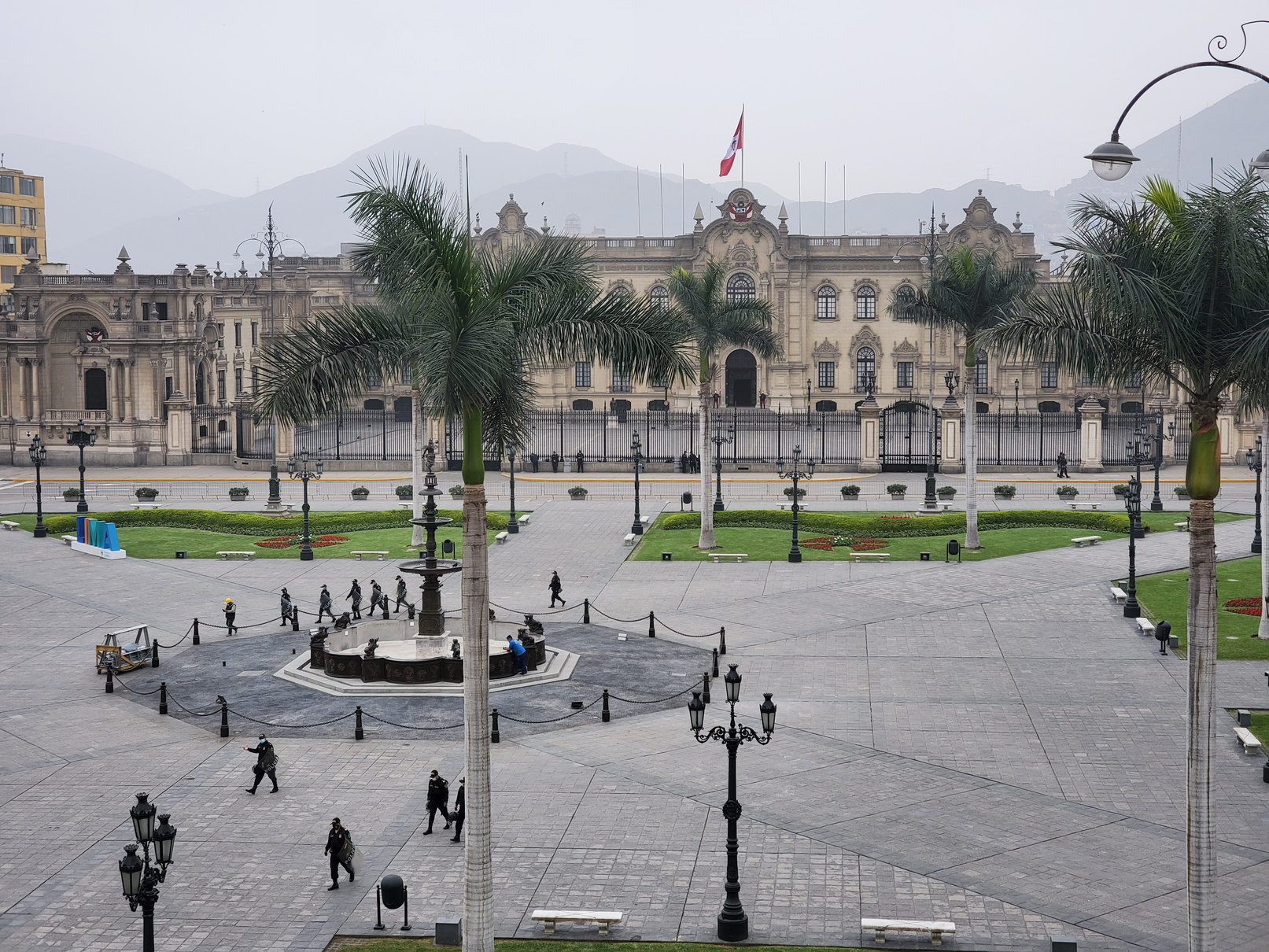


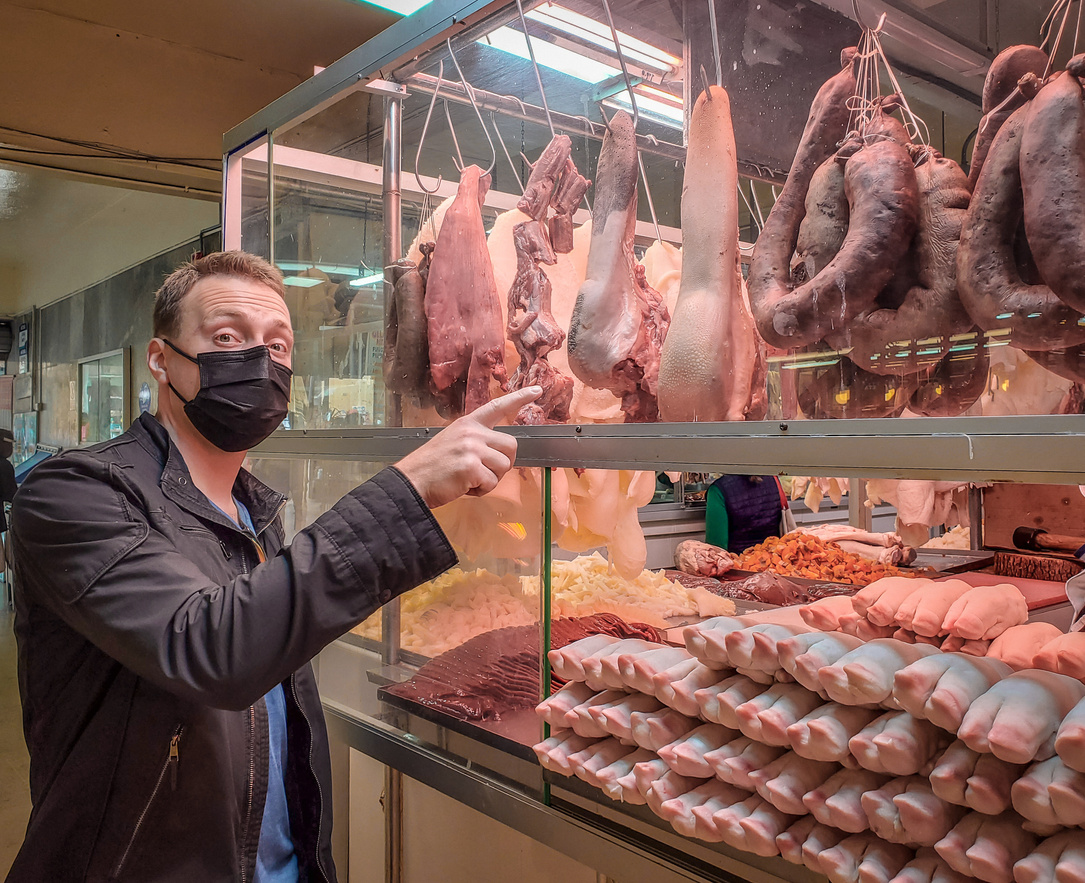
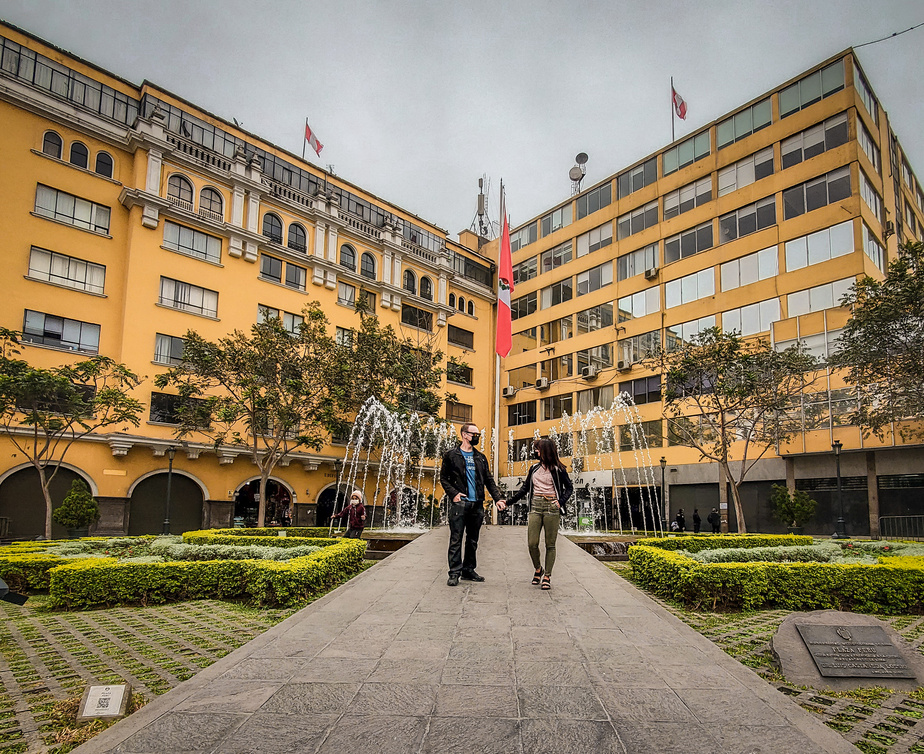



Cairo - part 1
Our Lessons
Finally, we made it to Egypt, free to explore this much-anticipated land, one which which we had been told is so different from our own! Though we had anticipated a certain amount of chaos while traveling during the pandemic, we did not expect to have almost missed our flight here: Upon arriving at the airport, we learned that Egypt had newly mandated a vaccine card with "QR code verification"—which was not even available for us in the United States! Horrified and facing rush-hour traffic, we sprinted on foot for 2 miles outside the airport to the nearest rapid COVID testing center. After dropping a painful $400 USD for a qualifying 30-minute PCR result, we ran back to our boarding gate, and received our 'negative' results via text just in time! A fitting start to our consistently fast-paced, sometimes chaotic adventure through some of the Middle East's most fascinating destinations.
Hearing amazing things about the Islamic section of Old Cairo, we journeyed on foot straight into this most fascinating part of the city to see it for ourselves, without a guide. To describe this immersive plunge as “overwhelming” would be somewhat of an understatement: as in Latin America, we seemed to be the only tourists there at this time; but here, the streets were jam-packed with locals who seemed to take an interest in us. We clearly stuck out like sore thumbs, and consequently, men passing by would often stop to say hello, it would seem simply to be friendly. Most of the time they would offer to give us directions. From what we could tell, people who approached us (always men in this culture) seemed genuine and went to great lengths to reassure us they were just offering to help. More than one person even showed us their business card to demonstrate their respective professions (a lawyer, a business owner) as a means of convincing us that they weren't looking for tips or money.
Making our way past the semi-modern streets of Tahrir Square, we reached the famous Old Cairo market district. The sights, smells, and sounds were surreal! The ethereal mid-day call to prayer pierced the dusty air, echoing out from the many mosque minarets. The streets twisted and turned sporadically, their directions dictated by the old ramparts and buildings that existed long before automobiles. Merchants sat at their storefronts, with a wide array of items for sale… often perfectly stacked with incredible attention to detail.

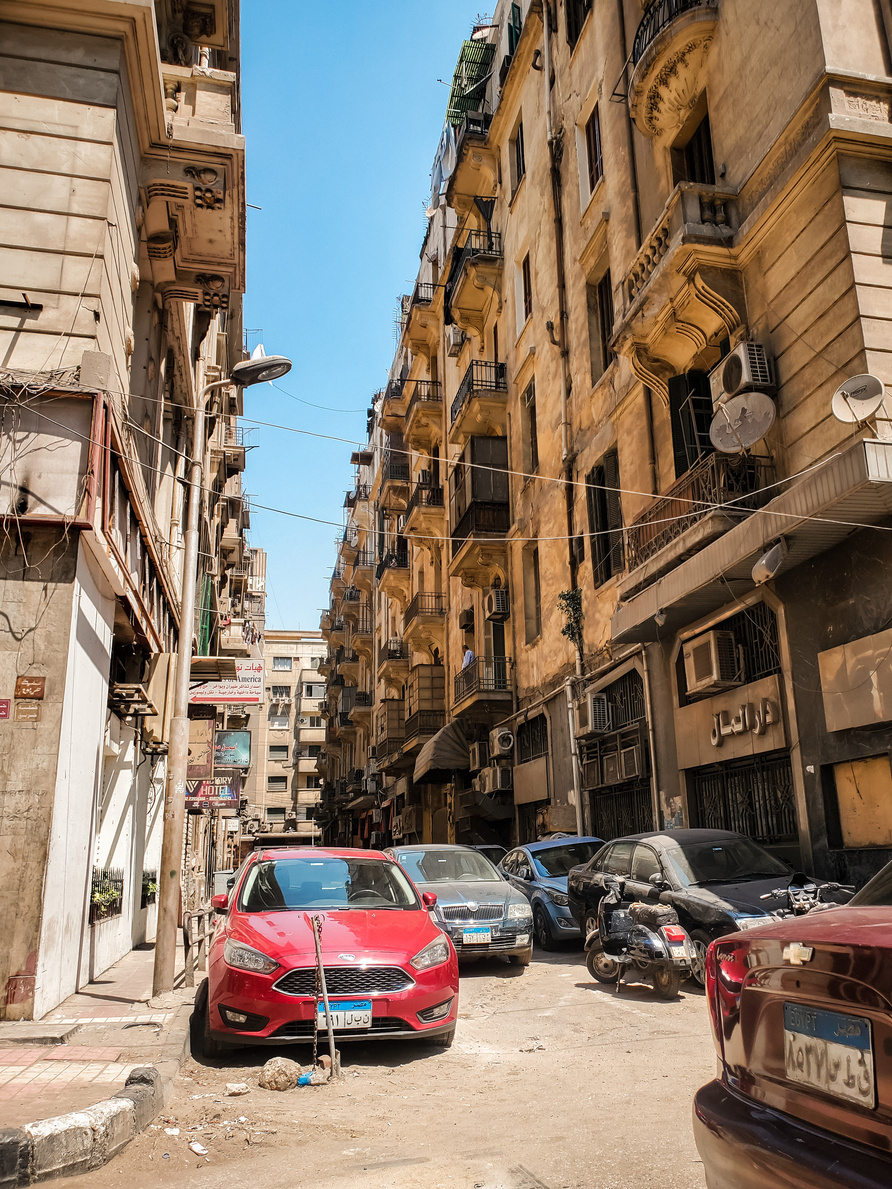
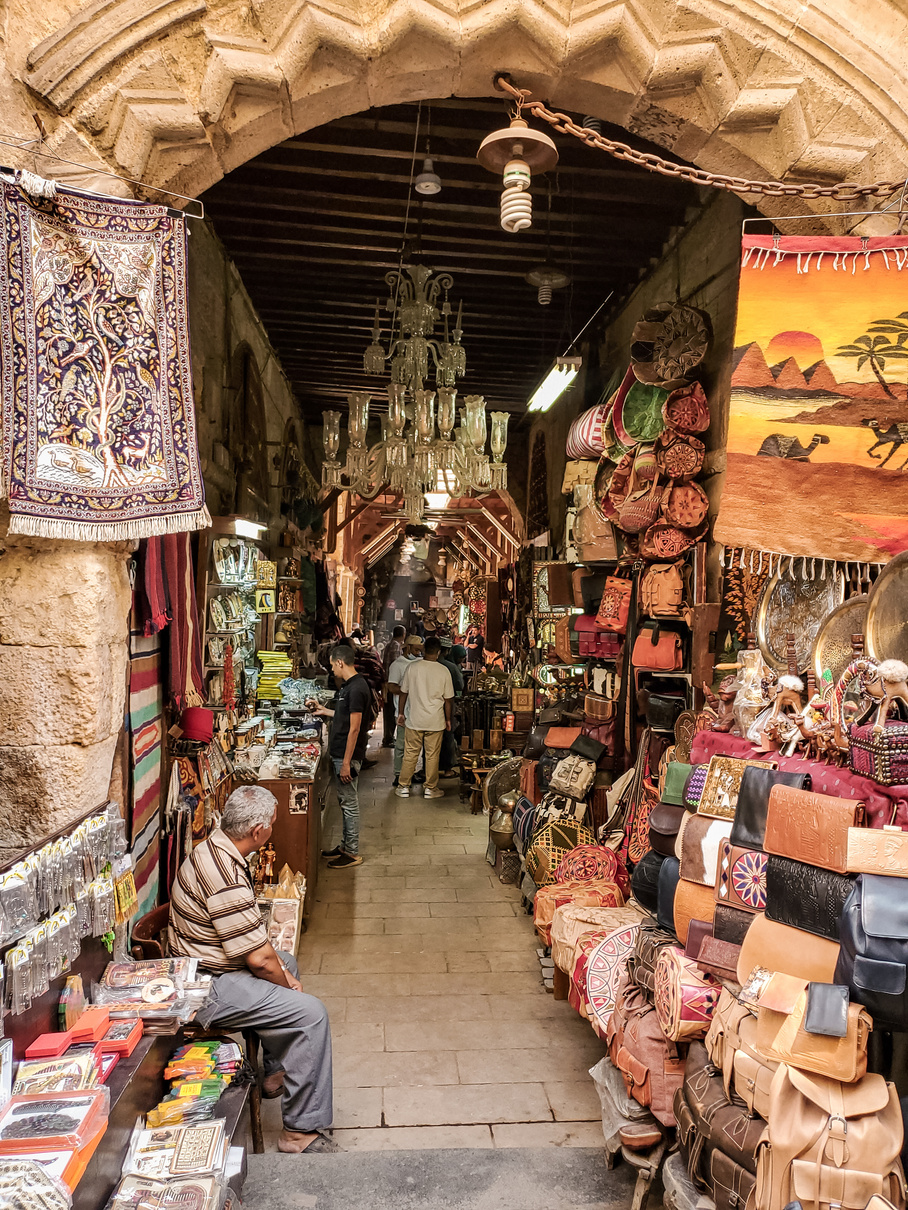



Cairo - part 2
Our Lessons
Anaconda skin, gorgeously detailed lamps, workers with remarkable balancing skills, and traditionally dressed licorice drinks vendors (aka erk sous), are some of the interesting things we saw while walking the streets of Old Cairo! After admiring the erk sous vendors demonstrate their perfectly executed art of long-range pouring, our medical brains jumped to the realization that it's not just the mixing of potentially unsanitary tap water into these drinks that we need to be careful about. Because erk sous contains such a high concentration of licorice, even locals with 'seasoned' stomachs must limit the amount that they drink, as too much licorice root can reduce body potassium levels. Muscle weakness, followed by worsening paralysis and even cardiac arrhythmias can occur with overly excessive consumption!
Wandering down the smaller alleys, the air grew thick with the smell of spices, and the light was shrouded between the tall buildings and merchants’ tarps. More than ever, we were definitely the center of attention here: now, every shop owner we passed eagerly beckoned us to take a look at his stall (with the clear and understandable intention of making money!). However, no one pursued, pushed, or harassed us; and in the daytime with so many people around, we were pleased to find that rumors about safety in the “Middle East” were, in fact, rumors: As we dove head-first into a culture so different from our own without a guide, it is easy to expect the worst, but we received the best. Cairo's market is definitely chaotic, but at least for us, it felt safe!
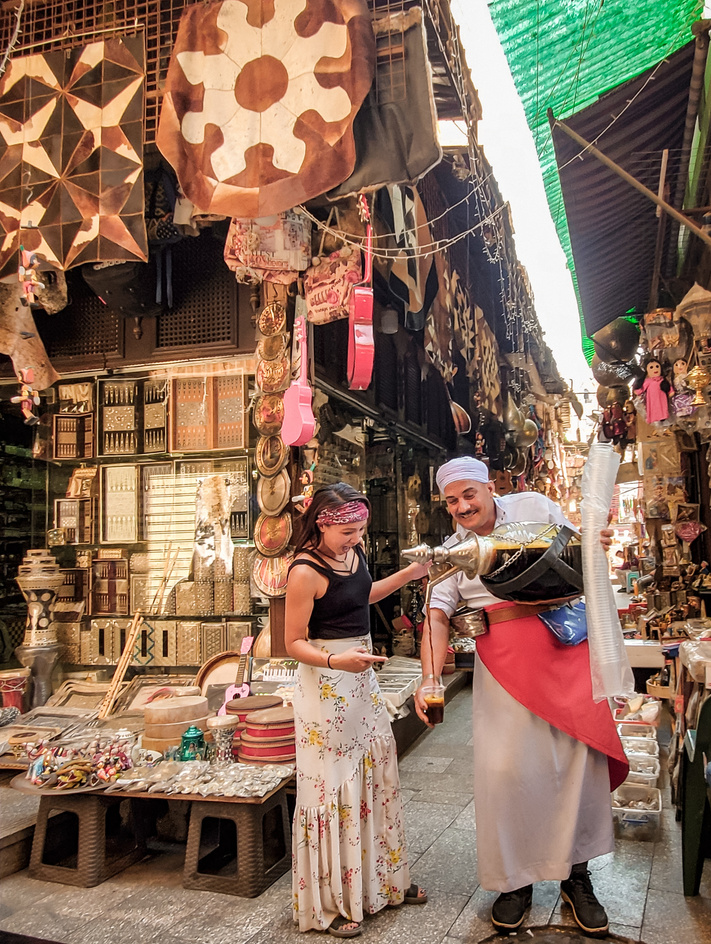
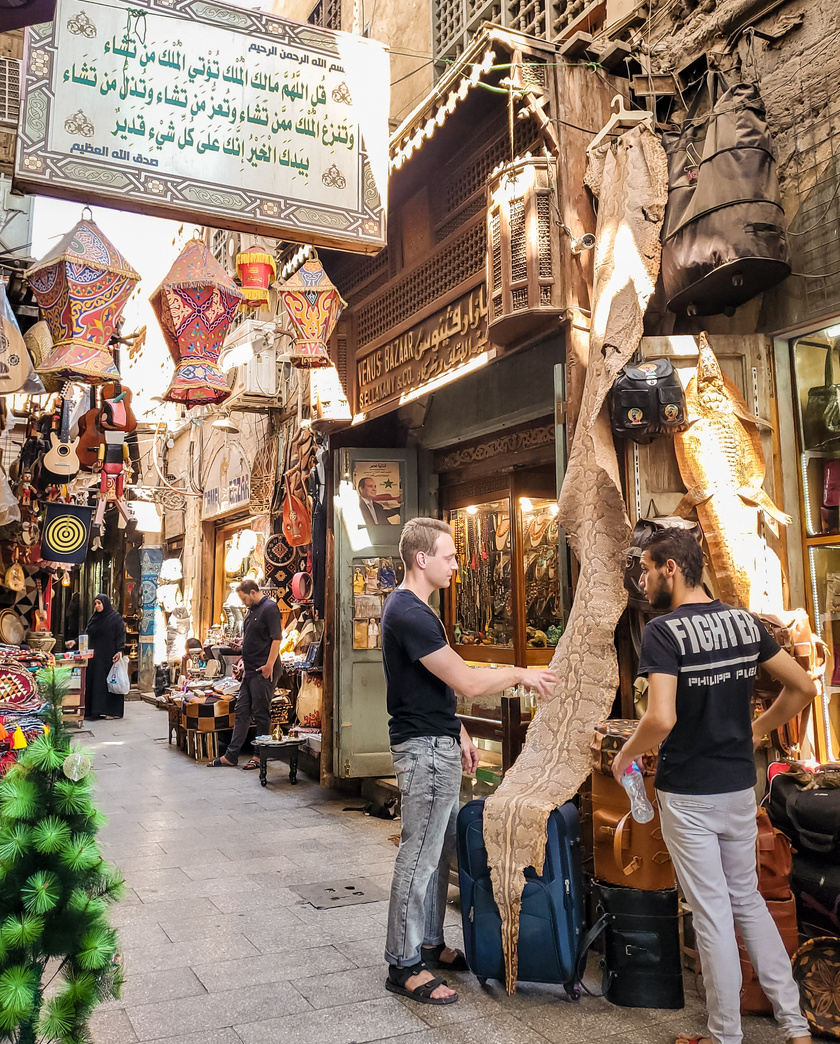
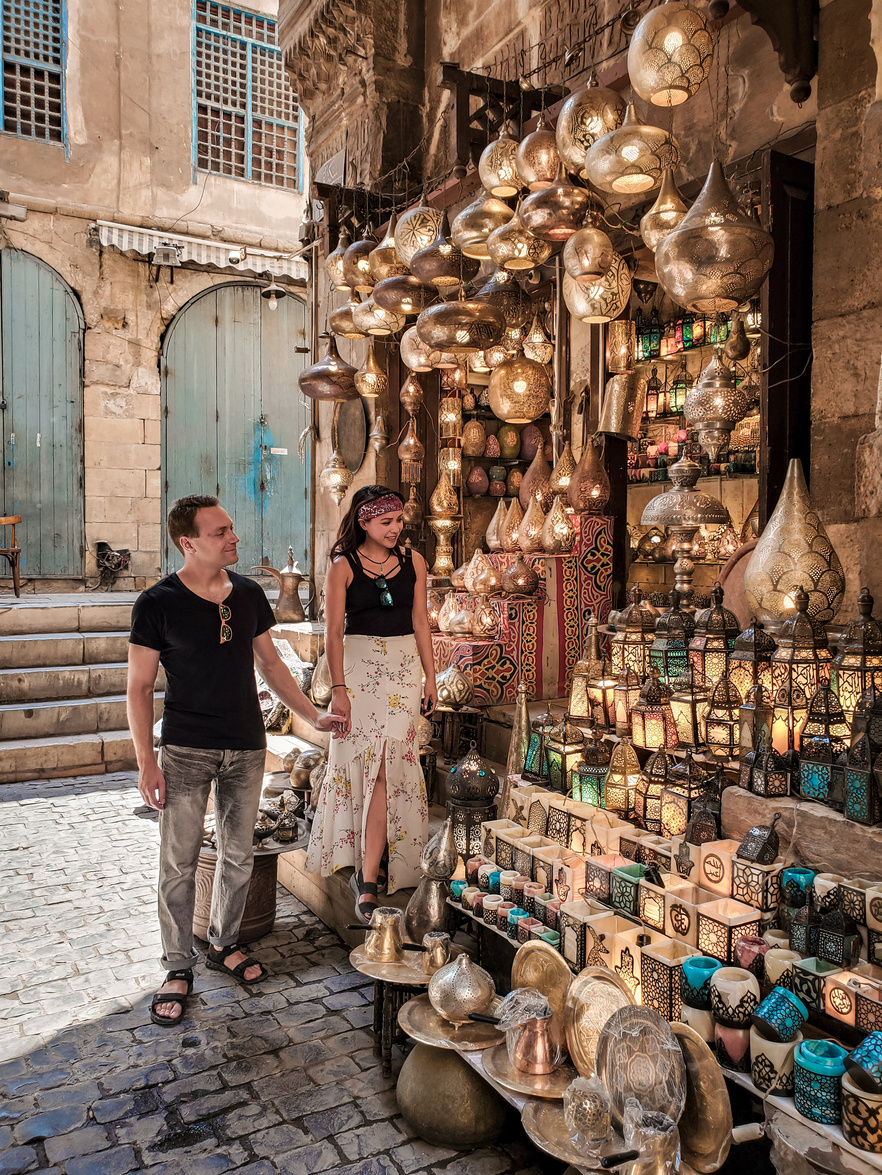
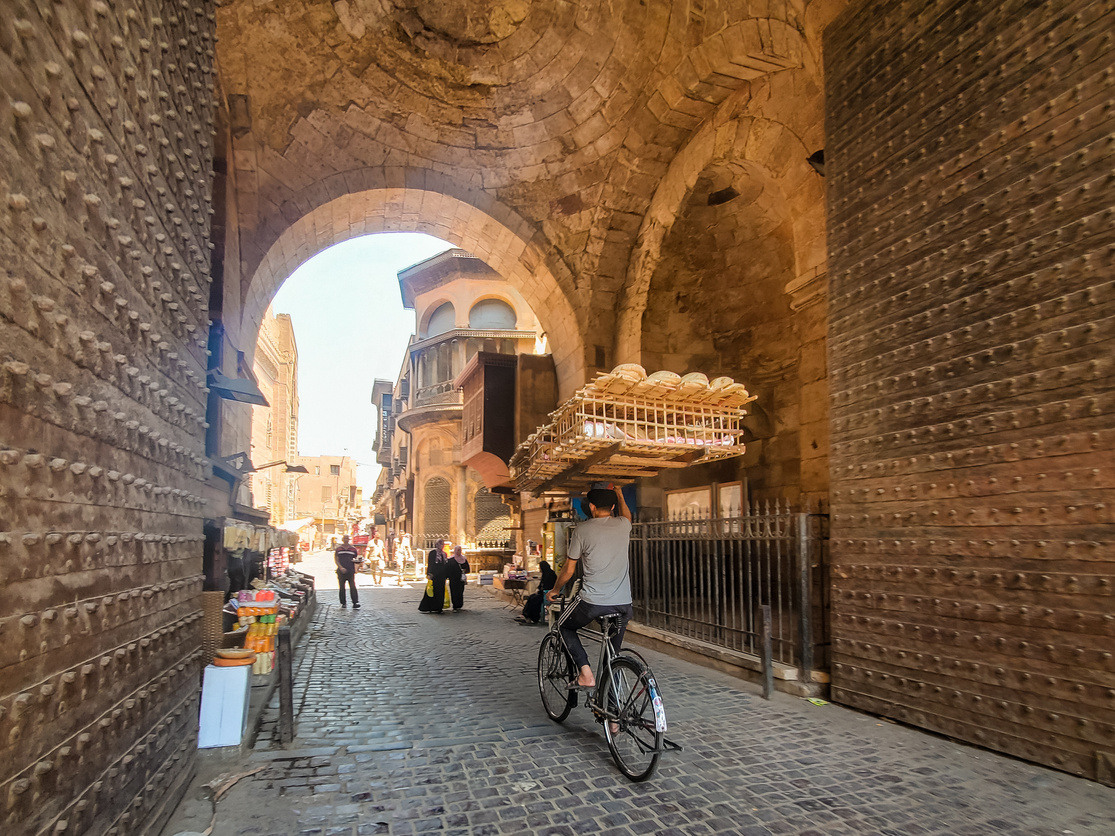
Cairo - part 3
Our Lessons
Beautiful but humbling views of a crumbling city, atop the Bab Zuwayla gate: Standing above it all on the peak of this ancient minaret is like stepping back in time; or perhaps into a level of Assassin's Creed. Escaping the noise and bustle of the market, we we ascended the tower’s incredibly steep and narrow steps. When we emerged at the top, the air was clearer, and the silhouettes of dust-colored buildings came into view. Countless mosques and minaret towers pierced through the haze around us. The Islamic call to prayer here at dusk is particularly mystical.
Sadly, from above, it is clear that the roofs of many surrounding buildings have been reduced to rubble—evidence that this old city is barely holding together. Egypt's infrastructure is known to be bad; so bad that on average a building collapse will occur once every two days somewhere in the country! A guide would later note that this is in part a result of the countless "slums," consisting of unregulated/unsafe construction projects, which have steadily cropped up over many decades. The situation has gotten a bit better in the last 10 years with new government initiatives... but with only 25% of Egypt's land developed, it sounds like municipal governments are often using delegated funds to expand their cities right into the desert, which is seen as a more cost-effective alternative to restoration projects. Examples include “New Cairo” and “New Giza”, which are modern city extensions currently under construction.

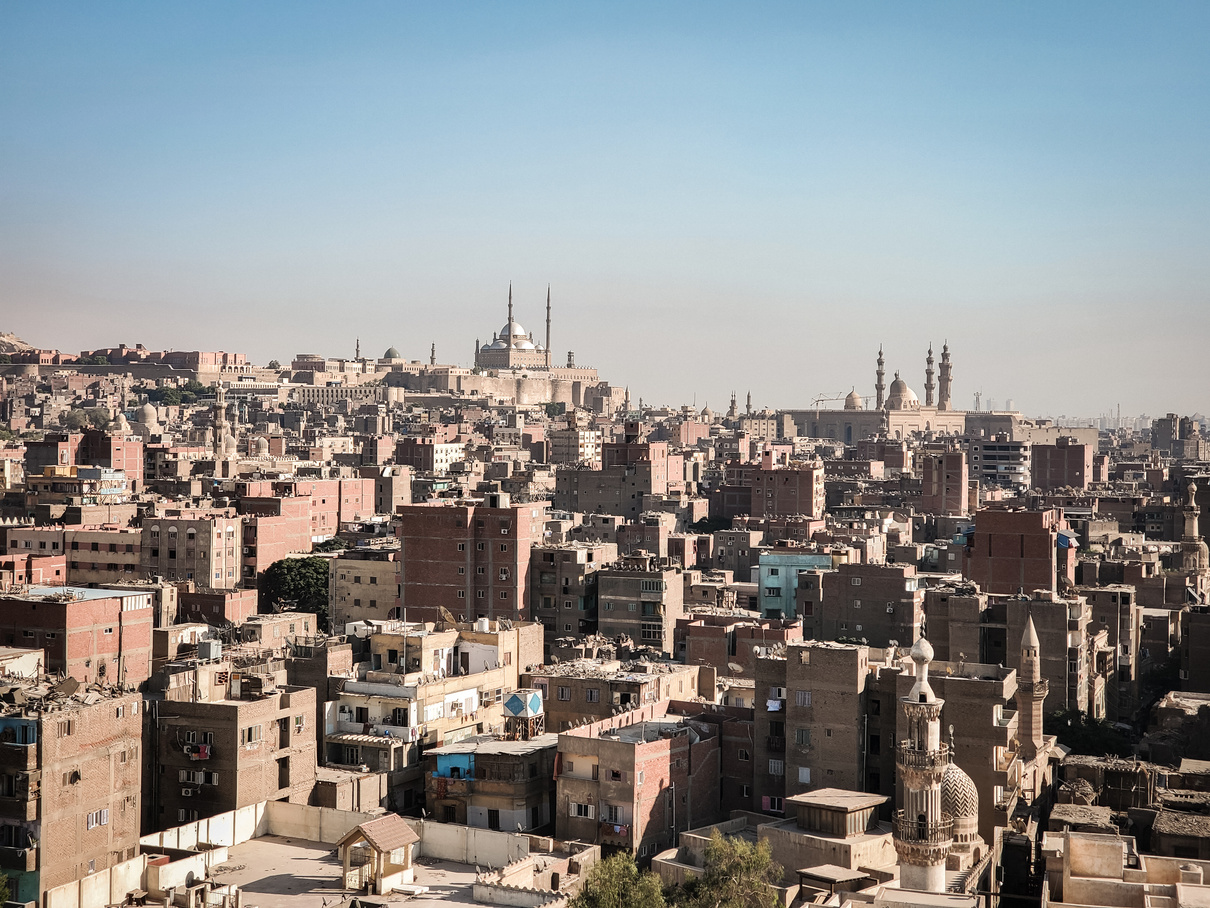

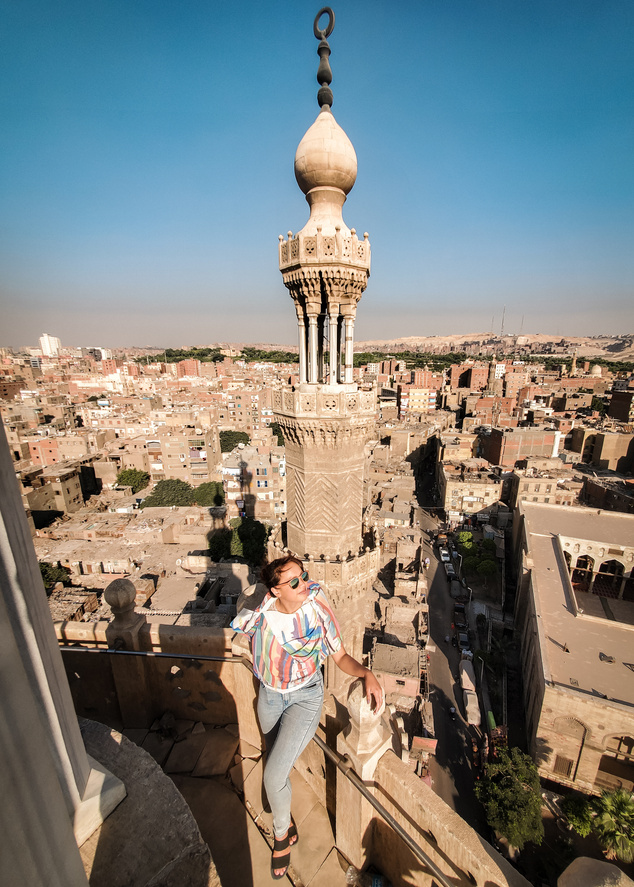

Cairo - part 4
Our Lessons
On this day we walked through the mosque of Muhammad Ali—the respected 19th-century ruler of Cairo, who changed the landscape of the country by modernizing all of its infrastructure. We also learned of his legacy: a “heroic” murderer. Yes, Muhammad Ali is well liked despite some “questionable” decisions... including the celebrated murder-massacres of hundreds of his "corrupt" generals, whom he eliminated in one fell swoop at a "dinner party" to which he invited them all. He also was known to have sold many ancient Egyptian artifacts to other countries, for which he was lauded for leading the country to prosperity. For instance, a famed obelisk of Egypt’s Luxor temple now sits in a central square of Paris!
Meanwhile, in the Coptic (native Egyptian) Christian section of Cairo, there is a 7th-century "Hanging Church." Contrary to what its name implies, this Church—Al Moallaqa—is not actually suspended from anything. Its unusual moniker comes from the fact that it has been constructed on top of the gates of an old Roman fortress. Nonetheless, this very holy site has played a huge role in Christianity. The area itself is considered a location where Jesus Christ may have set foot when his family fled from the Egyptian pharaoh who sough to eliminate him.


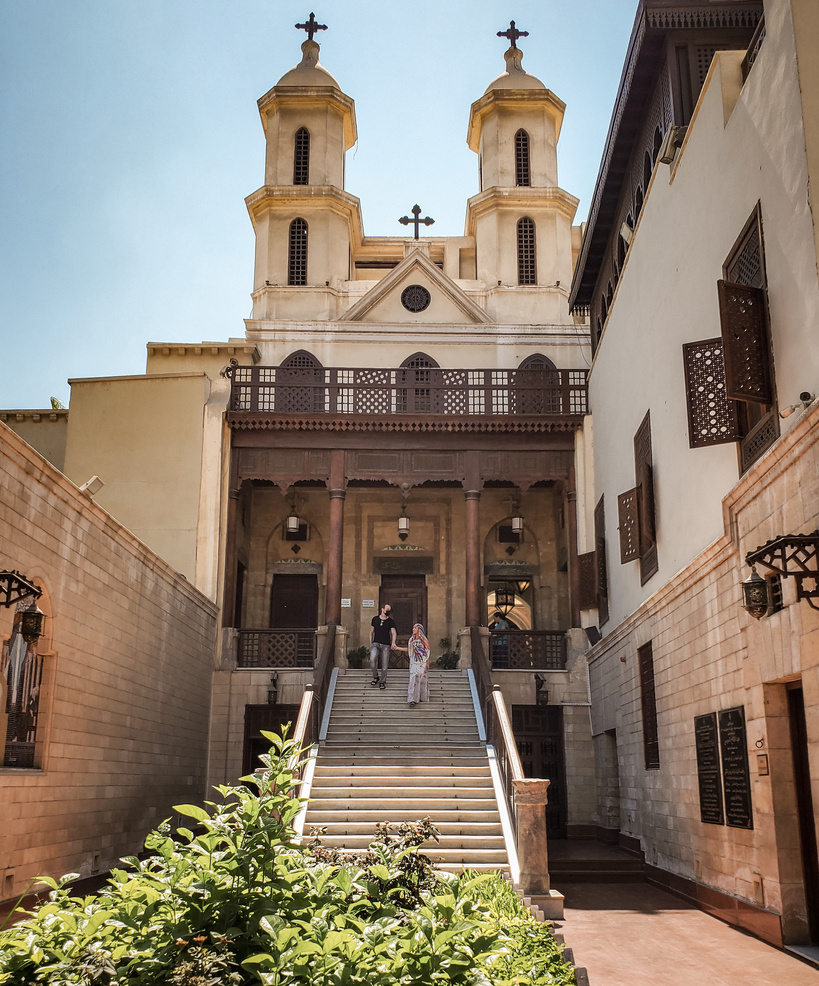
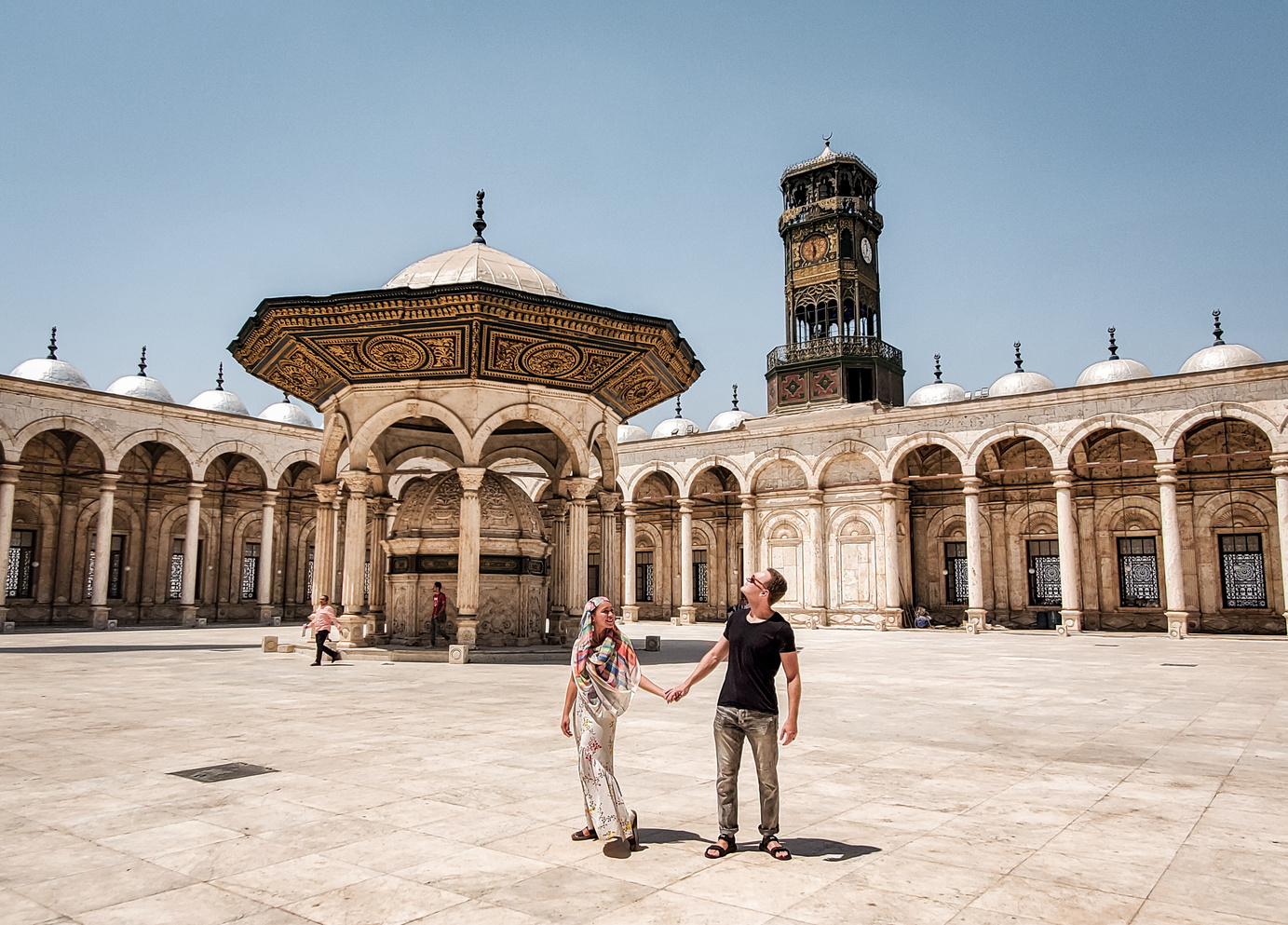

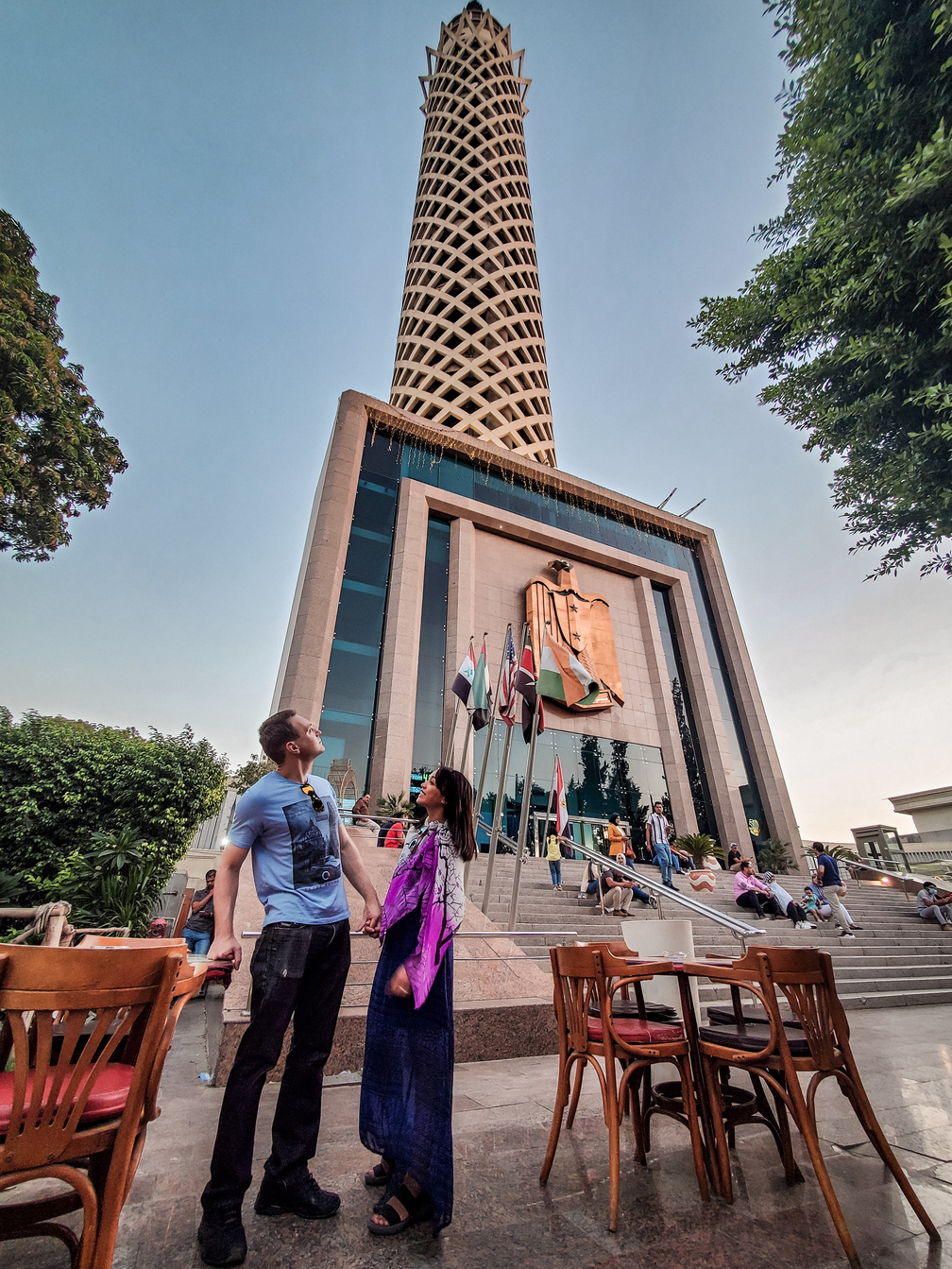
Cairo - part 5
Our Lessons
A night exploring the west side of Cairo entailed several sprints through congested traffic circles with no crosswalks and across a bridge with questionable pedestrian access—an intimidating endeavor, but one which provided our first unobstructed glimpse of the great Nile River.
We made our way to the Cairo Tower, taking in the sunset over this sprawling, illuminated city. From there, we headed to a lively dock venue at the water’s edge, “Nile City.” To our surprise, the "classy" corner restaurant along the Nile was none other than Chili's, the American casual dining chain. Slightly embarrassed, we sat down at a Chili's table, which had the best view of the river. Eric couldn't resist his craving for mozzarella sticks from Chili’s; while I tried stuffed pigeon with freekeh, a roasted cereal food made from green durum wheat (tasted like brown rice). The latter was not on the Chili's menu; rather, I ordered it from an adjacent restaurant! Both businesses were super accommodating: our next-door waiter was invited over to the Chili's table to take our order, to drop off his silverware; his food; and later his check!


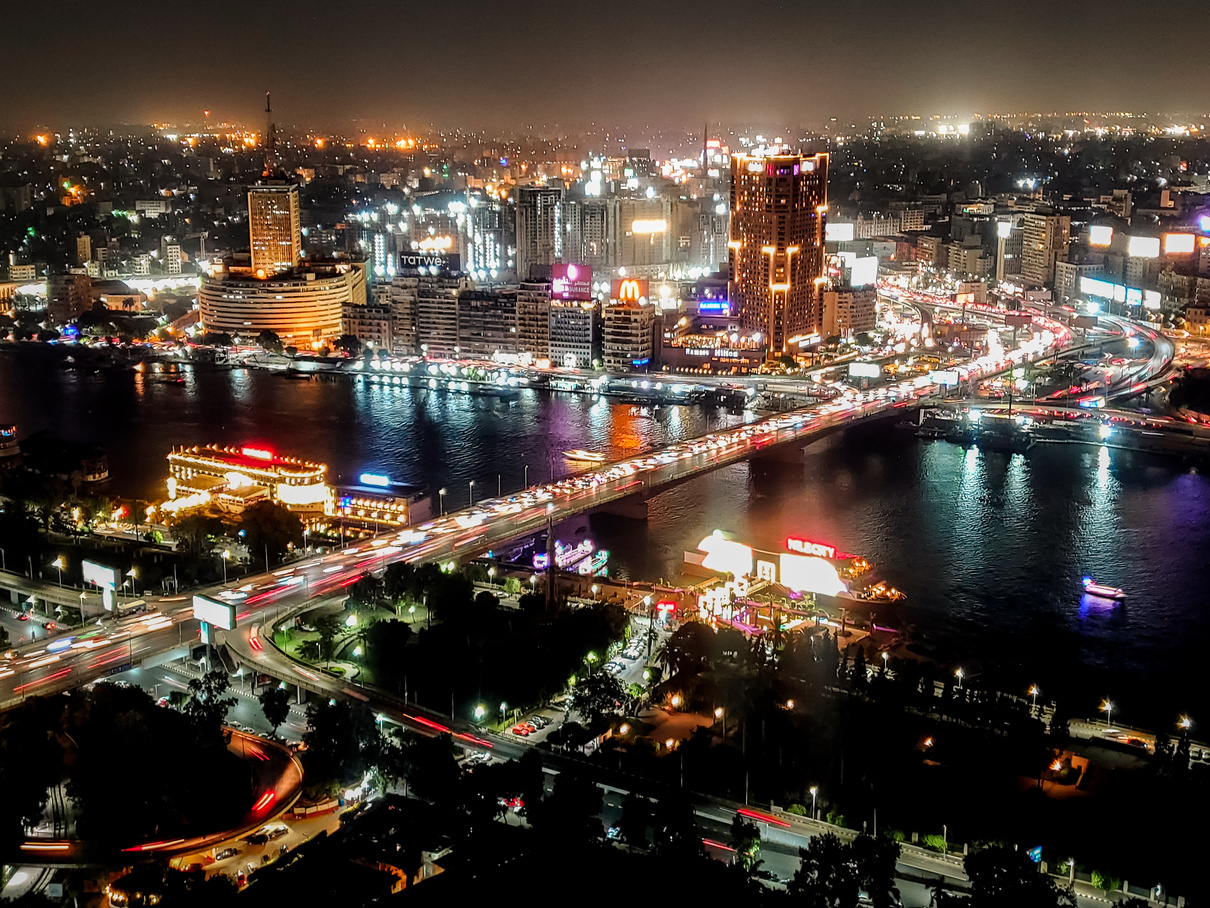
Starting at sunrise the next day, we began what would be the most exhausting 'marathon tour' of our lives: a 25-day, fully planned group trip across Egypt, Jordan, and Turkey. It was an amazing opportunity to see so many different cities and landscapes in such a short time… but we have never been so tired! There is certainly a convenience factor of doing a pre-planned tour; but as the year went on, we discovered that we really preferred the random exploration and memorable moments best found when one travels without a charted path.
Alexandria - part 1
Our Lessons
Built like NYC, with a light beacon to rival Lady Liberty: ancient Alexandria! This legendary Egyptian port is unique in that it was constructed with a "modern" design... over two millennia ago. Alexandria had wide, grid-based roads, and a man-made causeway that extended all the way to an island fortification at the end of the Nile Delta. Here, we stood overlooking the Mediterranean Sea on the former ruins of the Pharos Lighthouse of Alexandria—a wonder of the ancient world! Sadly, this towering 380-foot beacon was destroyed over centuries by earthquakes. Its remaining stones were later used in 1480 AD, to construct a medieval Arabic fort, which we had an opportunity to explore.
Alexandria's ancient architecture is a medley of Egyptian, Greek, and Roman all mixed into one. This reflects the civilization’s acceptance of various religious beliefs, creating a unique culture. The temple containing Pompey's Pillar in Alexandria, for example, has Roman columns, but Egyptian sphinxes. The "pillar" itself is an example of a Roman 'triumphal column', added later to honor the conquering emperor, who made an offering of peace to the resisting Alexandrians with loaves of bread. Hearts are best won with food, not arrows, it would seem!
Nearby, the Catacombs of Kom El Shoqafa were only rediscovered in 1900 when a donkey accidentally fell through a long-hidden access shaft. This historical burial chamber is considered one of the "Seven Wonders of the Middle Ages," and descending the 91 steps of its cylindrical staircase brought us into an amazing lost world. Of note, the name Kom El Shoqafa translates to "Mound of Shards"—because the area used to be riddled with broken terra cotta jars and other objects made of clay. These objects were left by family members visiting the deceased, who would bring food and wine for their consumption during their time in the tombs. Because they did not wish to carry their containers home from this place of death, they would break them. Indeed, we saw lots of broken plates here.
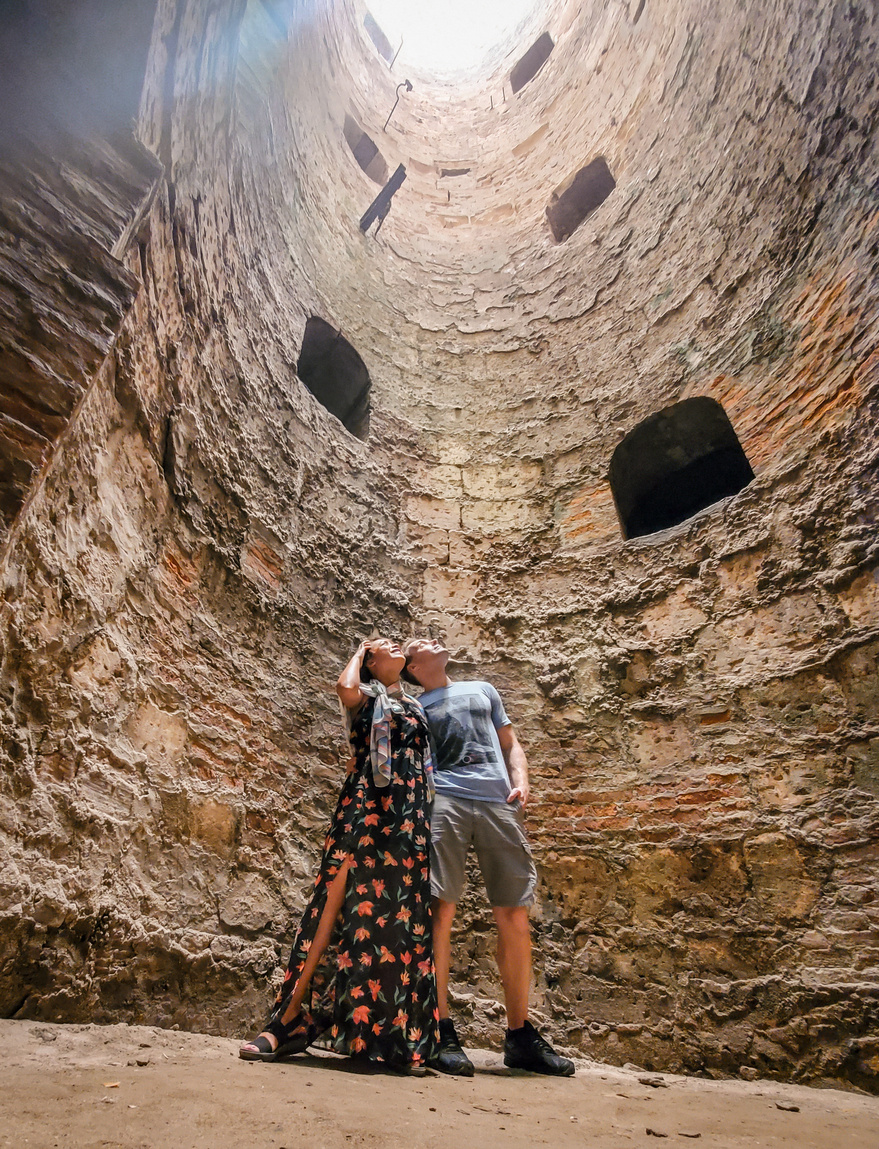

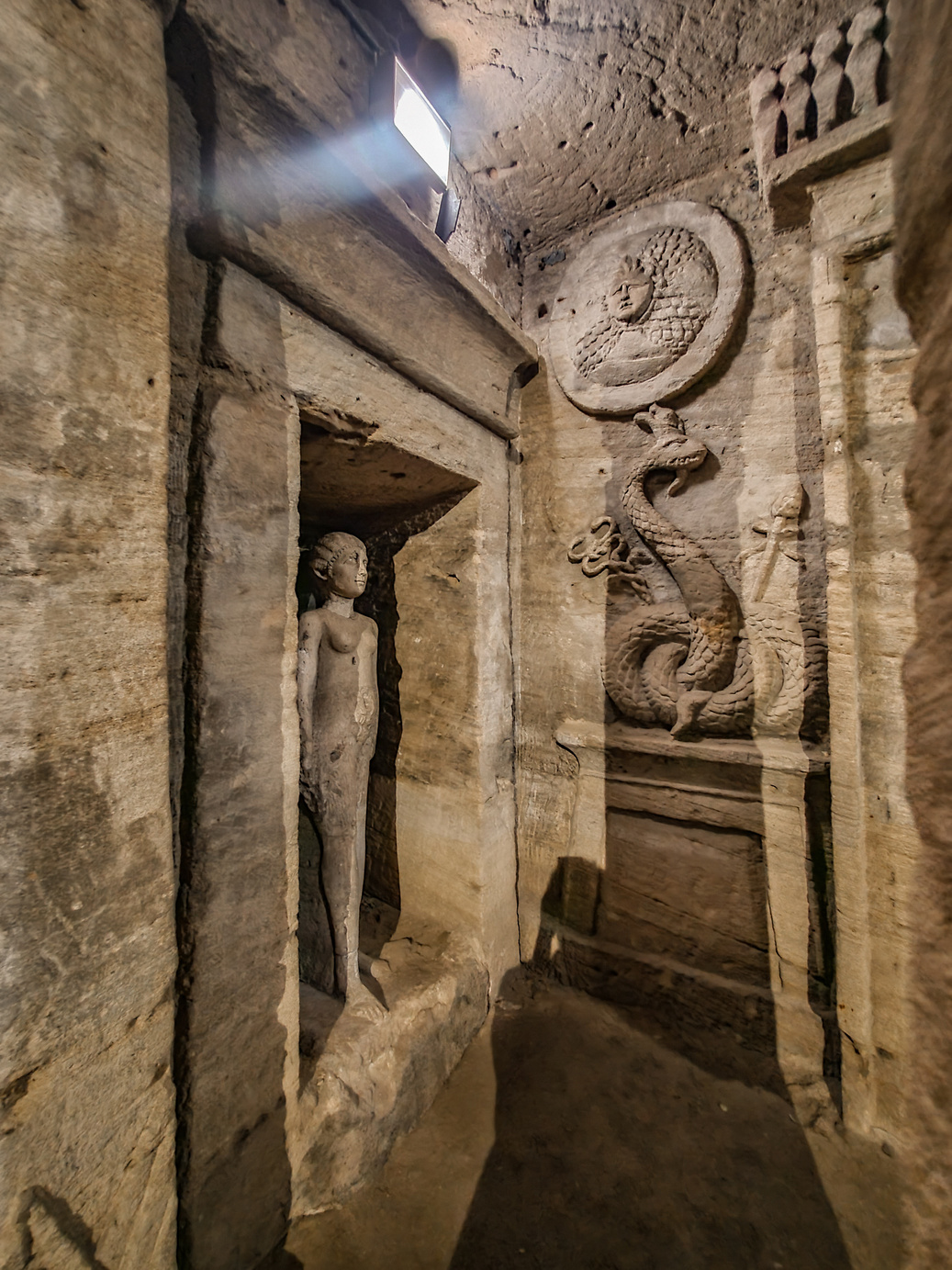

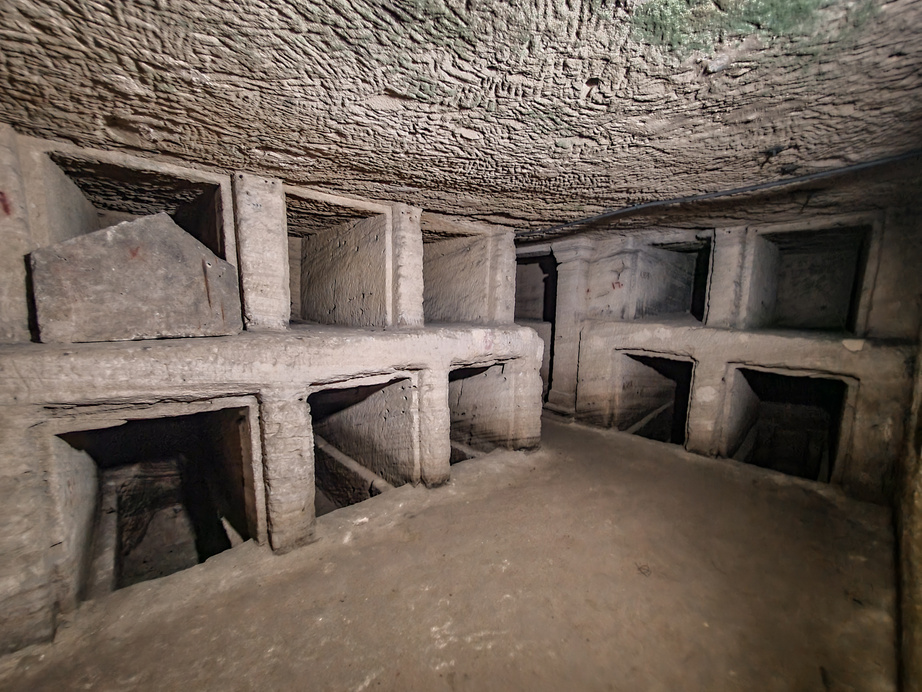
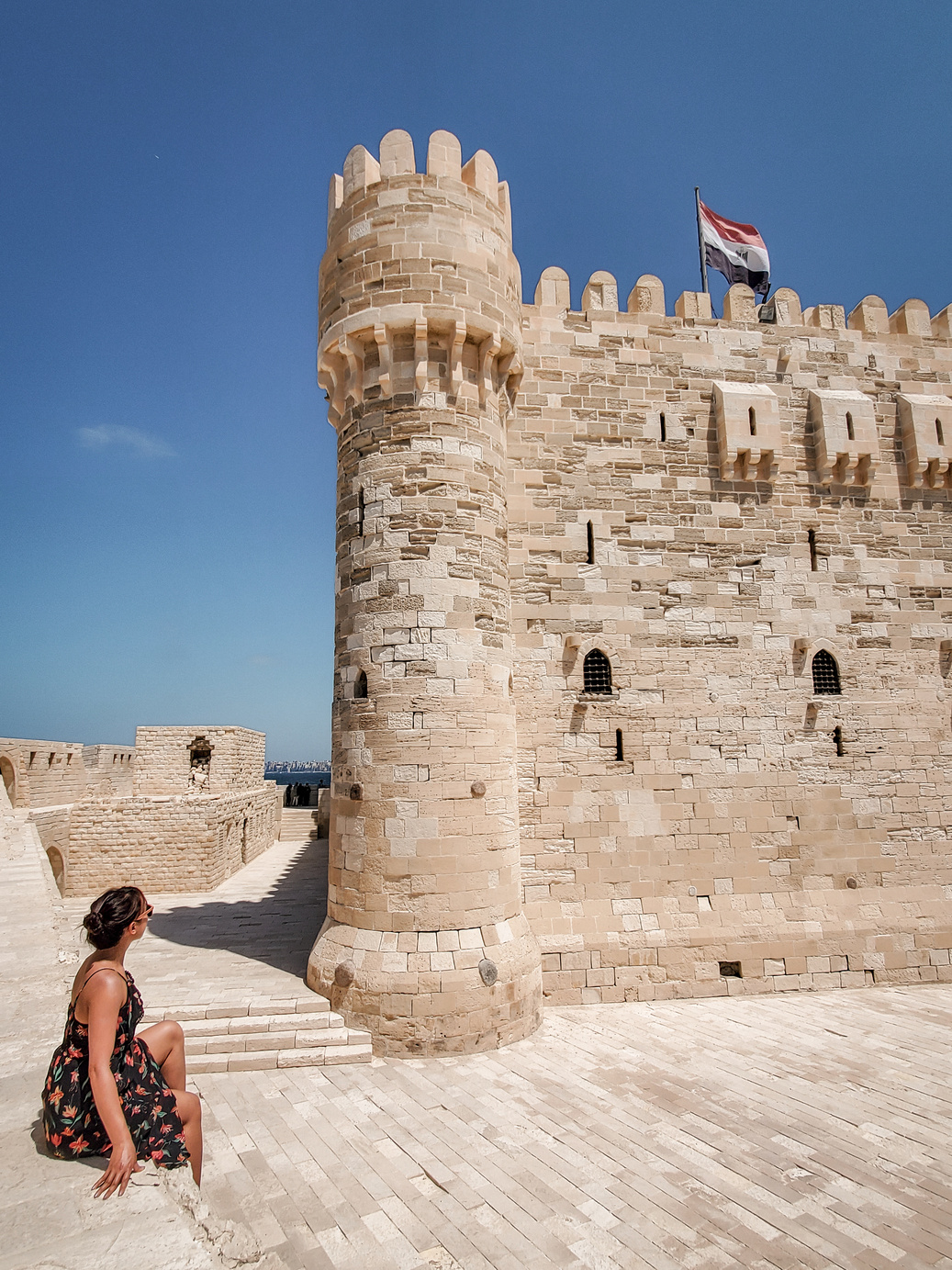


Alexandria - part 2
Our Lessons
Today, Alexandria has long deviated from its grid-like road design. Now, unregulated overpopulation is a big issue, with the average inhabitant needing to resort to clever ways to manage their limited finances. For example, example: auto insurance is not mandatory here. If your car gets into a major accident, it is cheaper to go to the corner mechanic, get them to slice off the “bad” half of your car, and replace it with half of a used “donor” car… just weld the two good halves together and your car is ready to go!

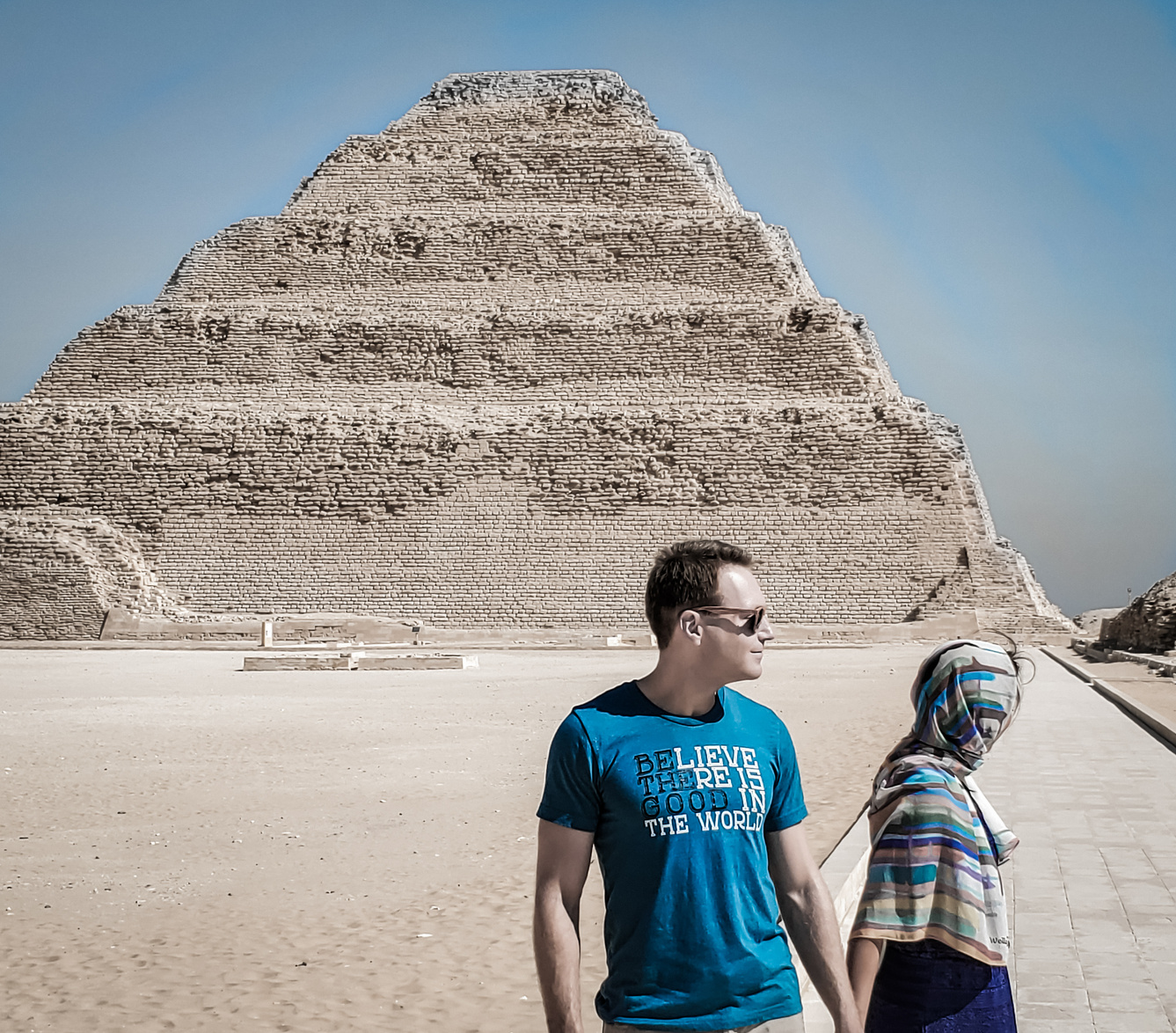
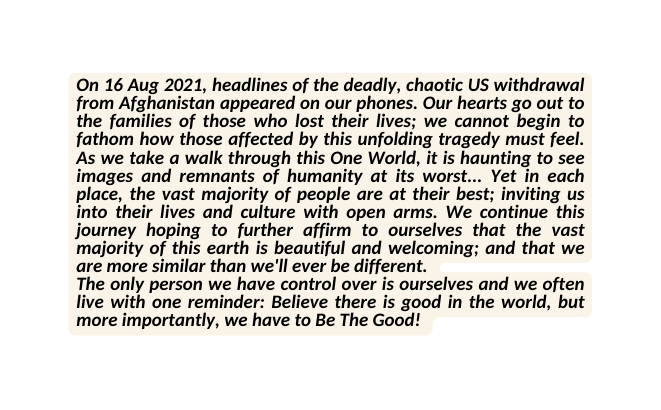

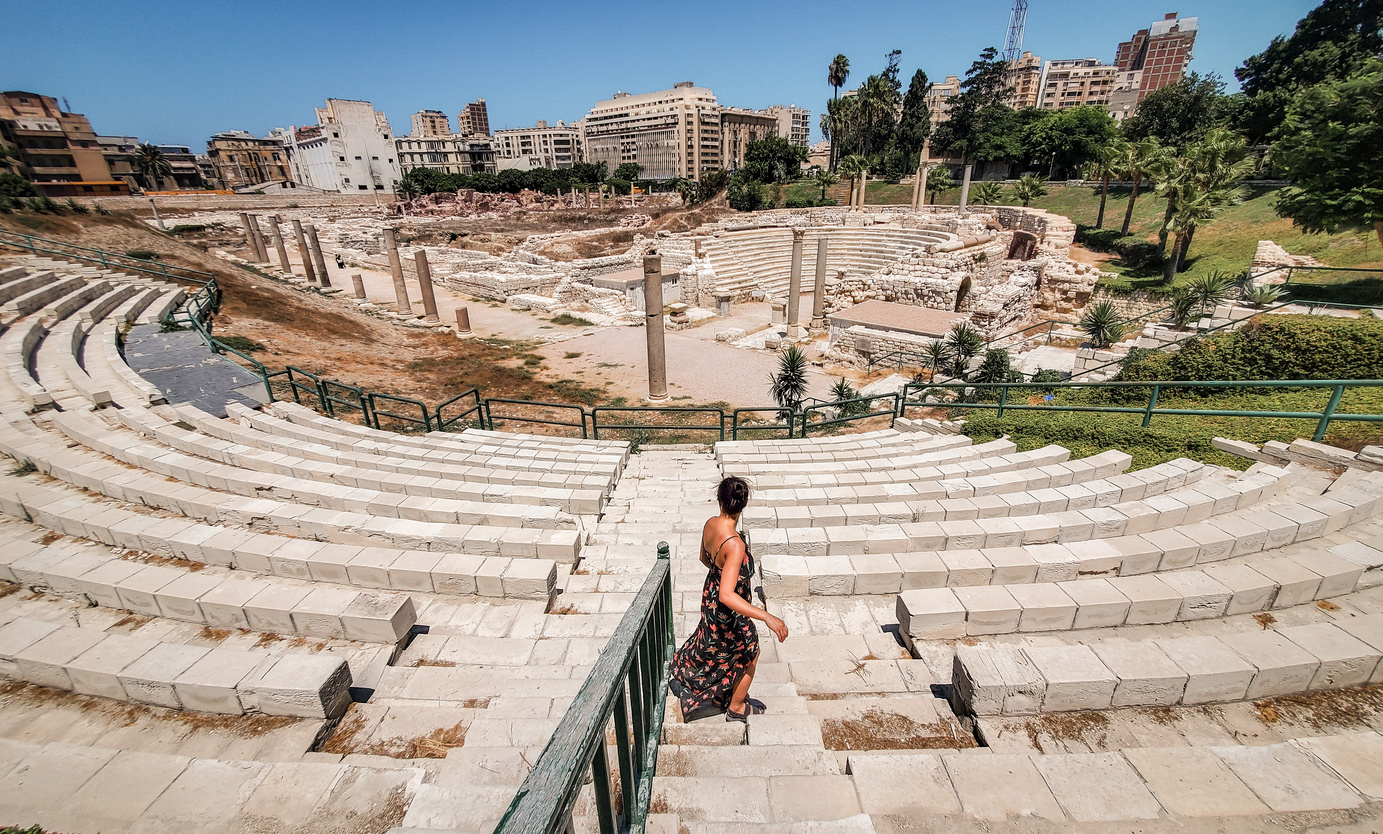
Saqqara
Our Lessons
The next thirteen pages document our extensive journey through Ancient Egypt, following the path of the Nile from Giza to Nubia and back. Each famous archaeological site is so unique and fascinating that we honestly do not feel that we can consolidate this any further! So here goes...
Fittingly, the first pyramid our tour visited just so happened to be the world’s first pyramid! The “Step Pyramid” tomb of King Djoser is the crown jewel of the Saqqara Necropolis… and it was constructed almost 5,000 years ago! This place was equipped with top-notch security: 13 out of 14 entrances were intentional dead ends, constructed with the sole purpose of deterring potential tomb raiders!
To our amazement, we were permitted to walk right up to these pyramids, to touch the hieroglyphics on the walls if we wanted, and to roam unattended around most of the archaeological dig! Incredible, for us... but also humbling to consider that if greater care is not given to these sites, they may not remain intact for many future generations.
We learned that before 'pyramids', Egyptian tombs were single 'mounds' made of mud bricks (or limestone if you were rich).
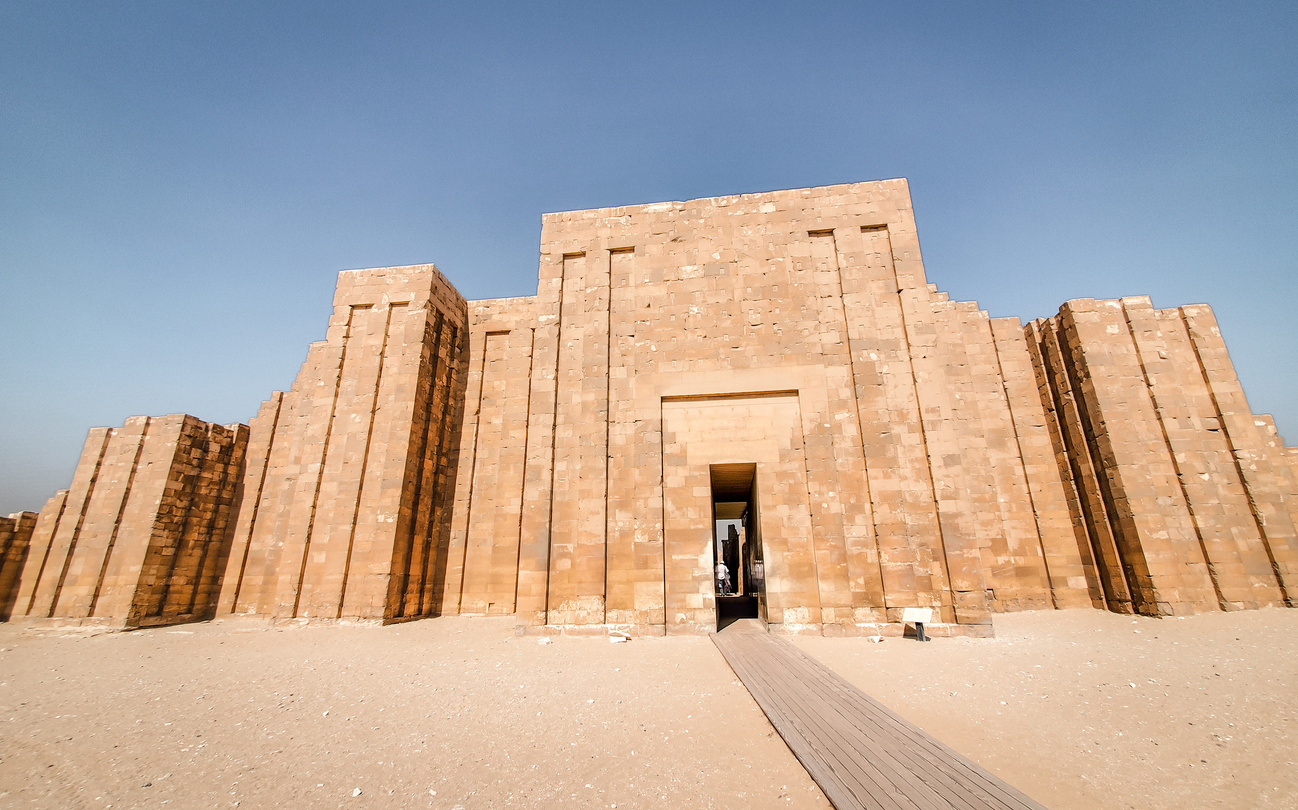




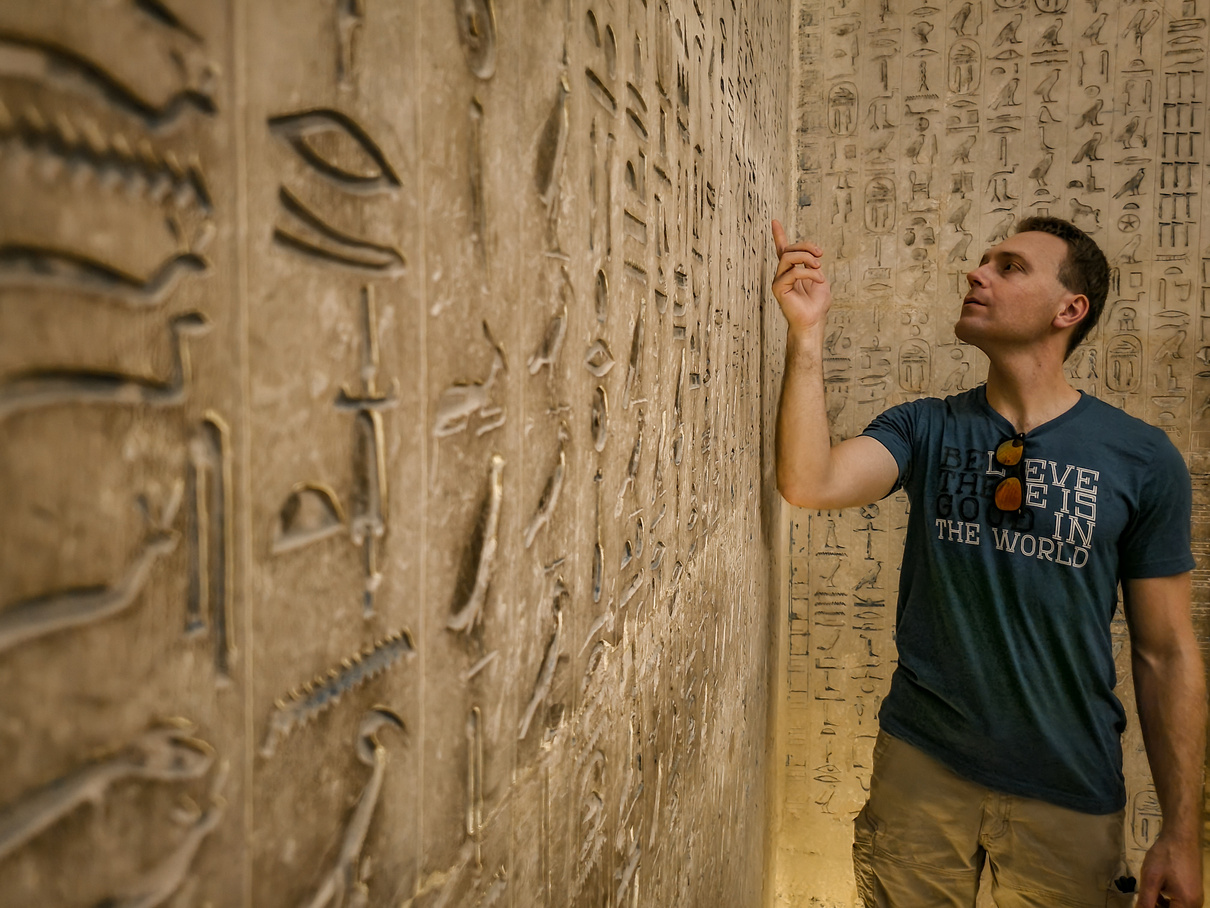
Giza - part 1
Our Lessons
Standing at 454 feet tall, built over just 27 years, with 2.3 million blocks of stone—enough to completely cover the entire border of France, we were told—That is what it took to build the Great Pyramid of Giza! We learned the great pyramids had formerly been covered by an entire extra layer of limestone… which survived undisturbed for millennia until loose pieces began being used to build prominent structures like mosques within the city of Cairo. This practice started in the 1300s and took off in the 1800s by the order of ruler Muhammad Ali, to help construct dams along the Nile, explained by our guide. Staring at this Wonder of the Ancient World puts us in awe of the undeniable strength, mathematical skill, and sheer willpower of human beings.
Journey to the center of the earth? We were amazed to find out you can enter the Great Pyramid of Giza! The Valley of Kings (which we’ll see later) had more ornate tombs, but paying the hefty $25 fee to trek through the labyrinthine corridors of the world’s largest pyramid was an experience not to be missed. It is a long, steeply angled ascent to reach the now-empty tomb of Pharaoh Khufu. The air inside was stagnant but thankfully did not feel too risky for COVID, as there were only a few tourists here as of August 2021.


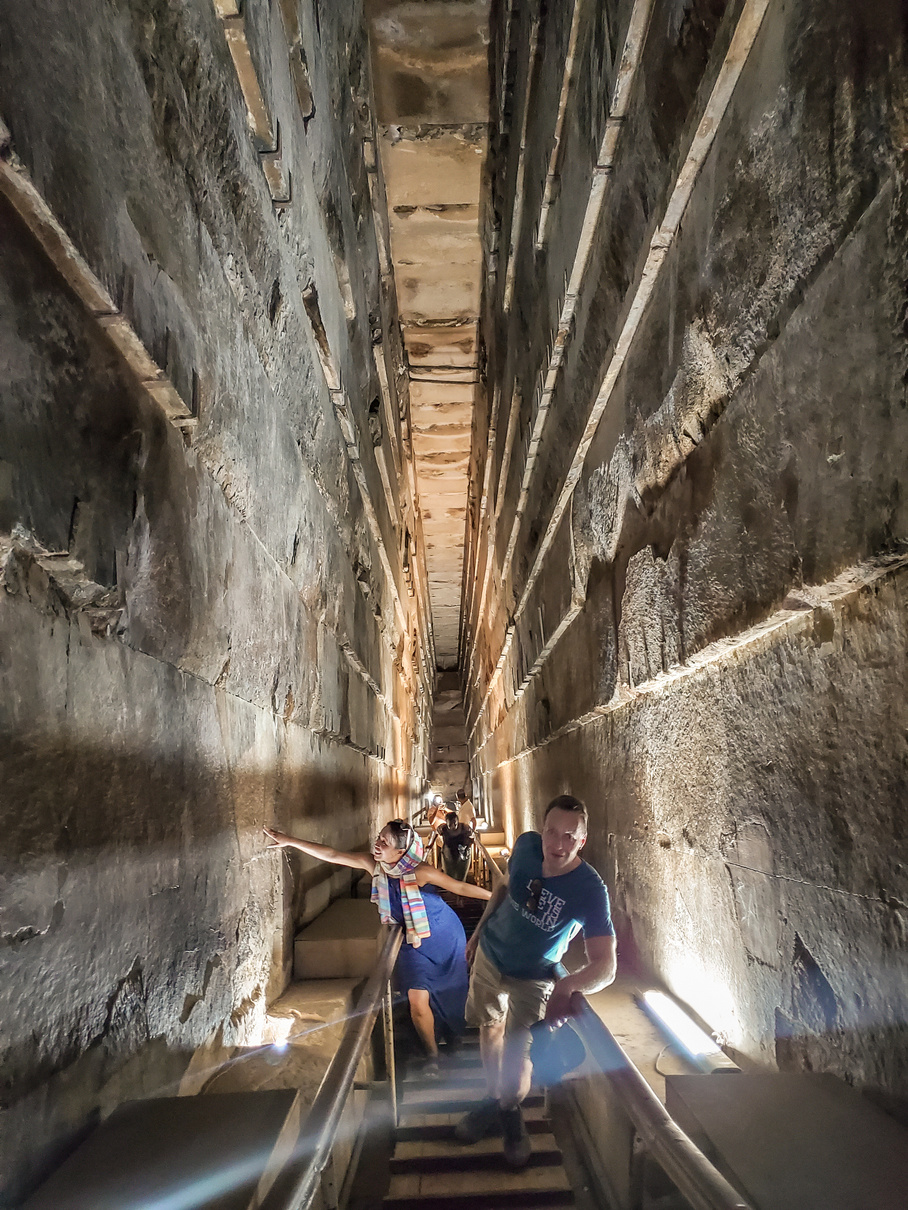
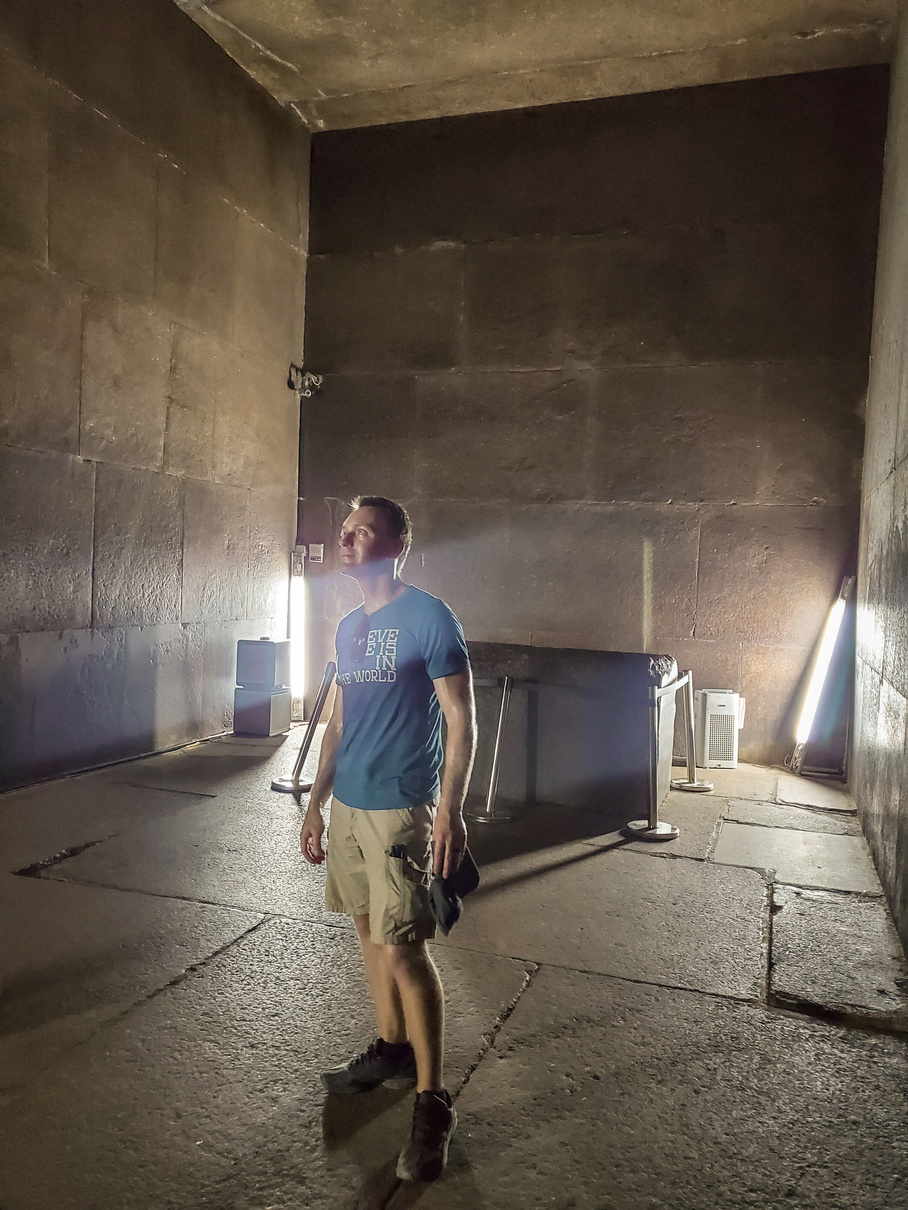

Giza - part 2
Our Lessons
Camels are a tourist trap. Then again, we had never ridden one before, and figured there was no better place than the Sahara Desert, alongside the only remaining Wonder of the Ancient World. Priced at $10 USD for a 20-minute journey towards the towering silhouettes of the Great Pyramids, it was a worthwhile journey. Let me introduce our new camel buddies, “Michael Jackson” and “Casanova”!
Our camels brought us closer to Giza’s other famous structure: the Great Sphinx. This mythical creature, with the body of a lion and the head of a human, was likely constructed to represent pharaoh Khafre, who had this massive structure built as a demonstration of his power. It is well known that the great Sphinx's nose was cut off by Islamic invaders... but news to us was the fact that its beard had also been cut off in ancient times... and that beard was eventually shipped off to England! In a point of recent contention, we read that Egyptian conservationists have requested to have the beard returned, but the British Museum would only agree to do so in "exchange" for other artifacts and treasures of value.

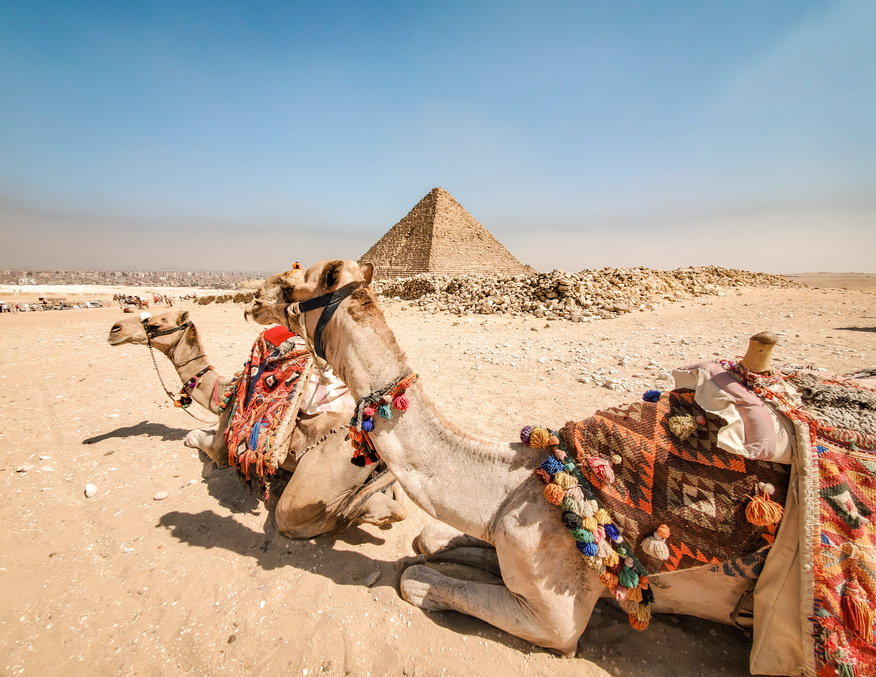


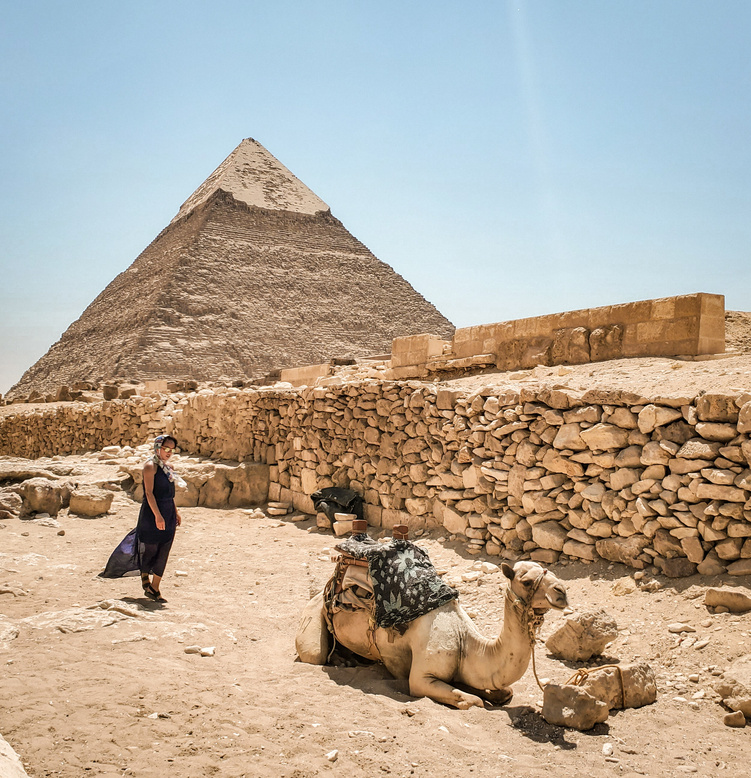
A trip across Egypt would not be complete without an overnight train ride, with some great co-travelers. The train itself was comfortable, although promises of an “upgraded” dinner fell short when we were served hot dogs with a knife and fork! It was on these trains that we also learned the concept of "hopper toilets": in which every flush opens a hatch that dumps your business directly onto the railroad tracks along the Nile River. Hopper toilets are actually way more common than we realized and are still a problem in some modernized countries. Per a quick Google search, it sounds like the U.S. only did away with hopper toilets in the early 2000s… and we read the U.K. has postponed its plan to fully eliminate this style of...elimination... back to 2023.
Recording uncomfortable memories of losing a fight with a train door: note to self, they can swing closed quickly on the turns! I legitimately though they were broken, but thankfully they were not, and a few days of ibuprofen did the job.
Aswan
Our Lessons
In Egypt, we would learn that 'up' is 'down': After a comfortable 14-hour sleeper train, we arrived in "Upper Egypt," which is actually to the south on the map—but higher in altitude than “Lower Egypt,” which is north. Here, the landscape around the Nile River has been changed dramatically by the construction of two dams, which benefitted some, but tragically displaced the people of Nubia in 1900.
Nubians are an ethnic group indigenous to the region which is now northern Sudan and southern Egypt. They are believed to be one of the earliest civilizations in the southern valley of Egypt. Culturally and ethnically distinct from other Egyptians, they speak Arabic and Nubian languages—the latter of which had never been transcribed into a written language until recently (an ongoing project). We had the pleasure of experiencing a bit of warm Nubian hospitality, including a delicious dinner at a local home. We are told Nubian tradition is apparently so welcoming, that it is perfectly welcome for a Nubian who is walking the street to knock on any other Nubian's door to use their bathroom!
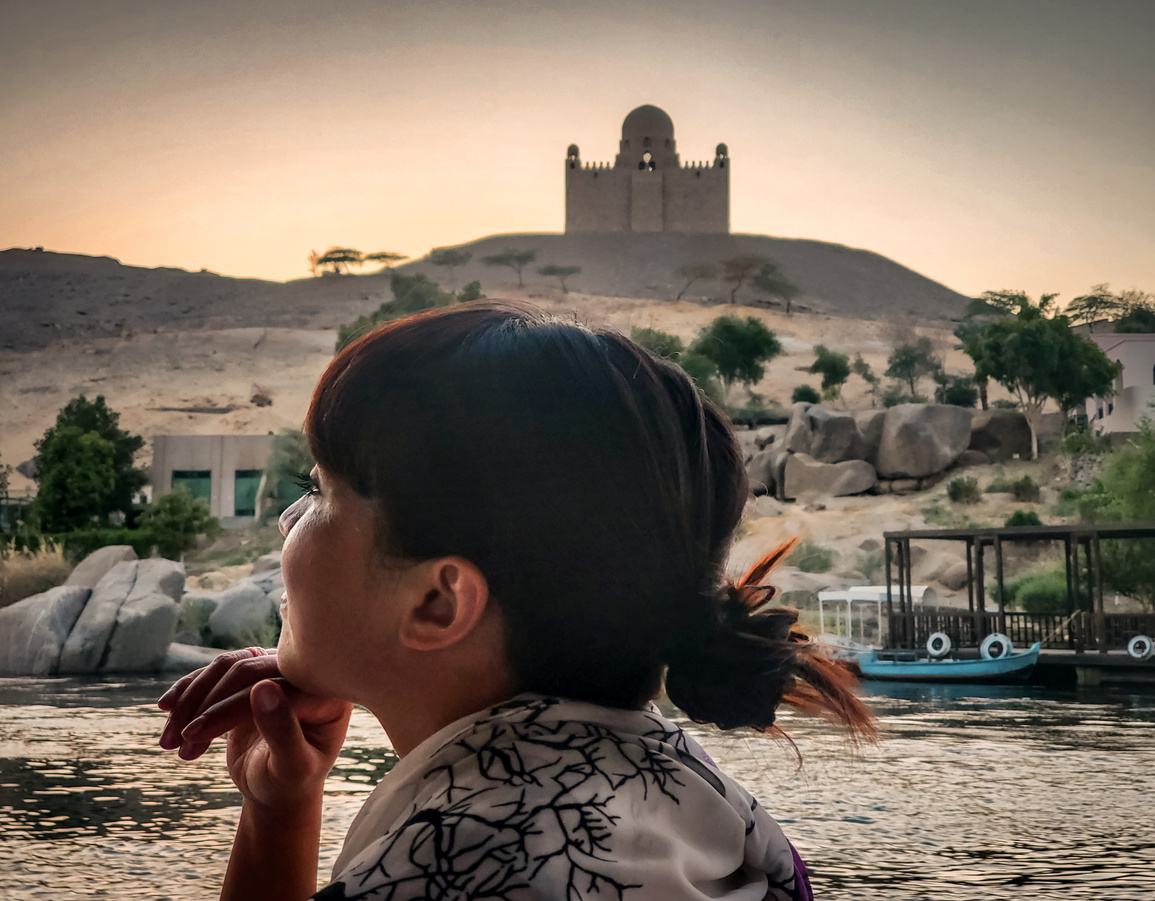
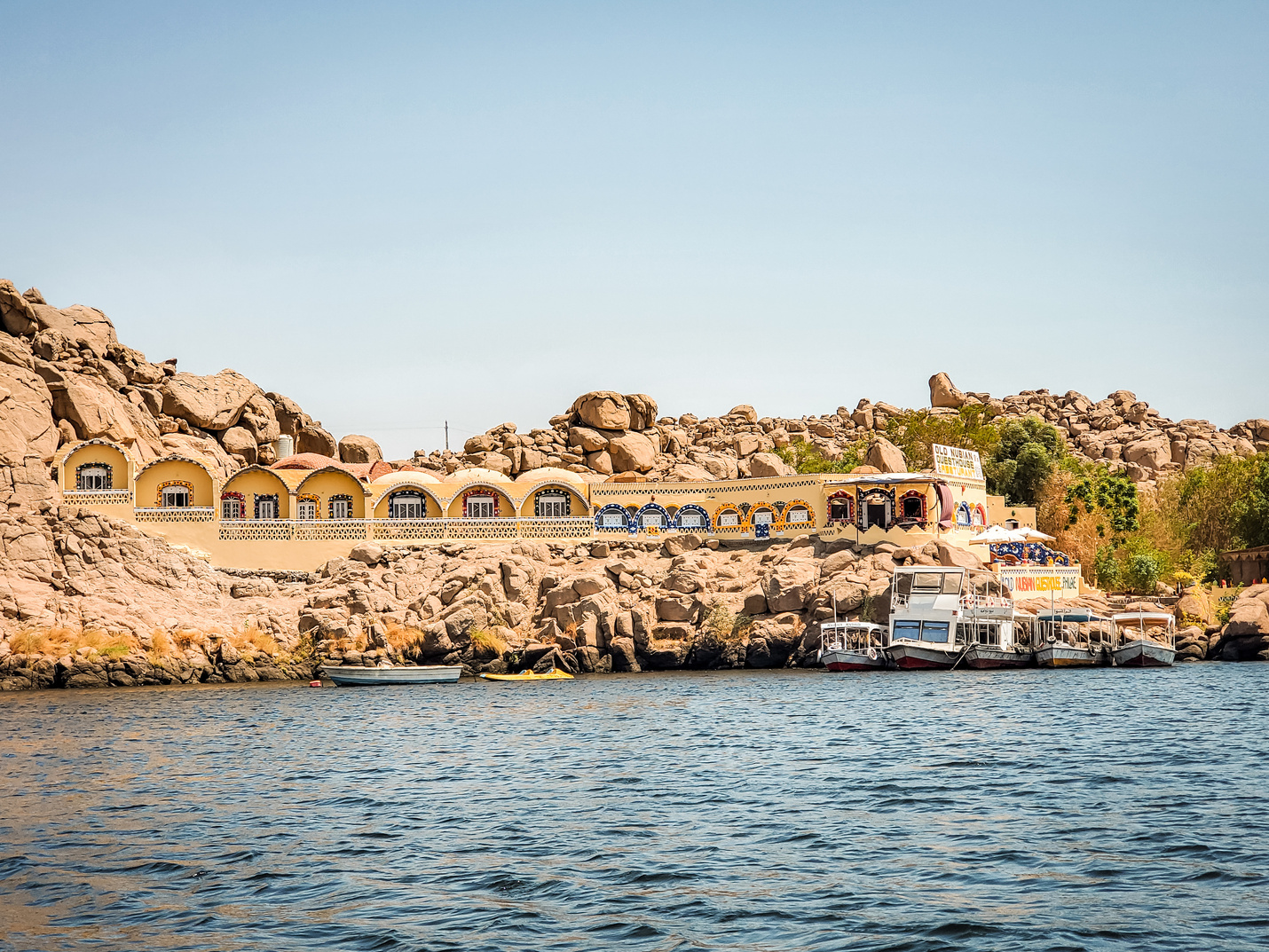


Philae Temple
Our Lessons
Completely alone, we walked through the hallowed halls of the gorgeous Philae Temple—which was once a sunken temple! This place was built for the goddess Isis, and it certainly has had a rough go. First, it was defaced by the conquering Christians (a tragically common theme around the world, it would seem). Later, it was flooded after the construction of the old British Nile Dam around 1900. The resulting submerged temple became a renowned attraction for early divers, who used to explore its underwater ruins for recreation. Then, in a massive UNESCO project in the 1960s, it was literally carved into pieces and relocated to a higher island, where it was re-pieced together. This was one of several insanely complex projects that multiple nations financed in order to save submerged (or soon-to-be-submerged) Egyptian temples. The merits of preserving this historic masterpieces required no further explanation after seeing them with our own eyes.
By the way: all Egyptian temples were places of worship; not palaces or places of living. Even the Pharaohs were not allowed to live inside them.
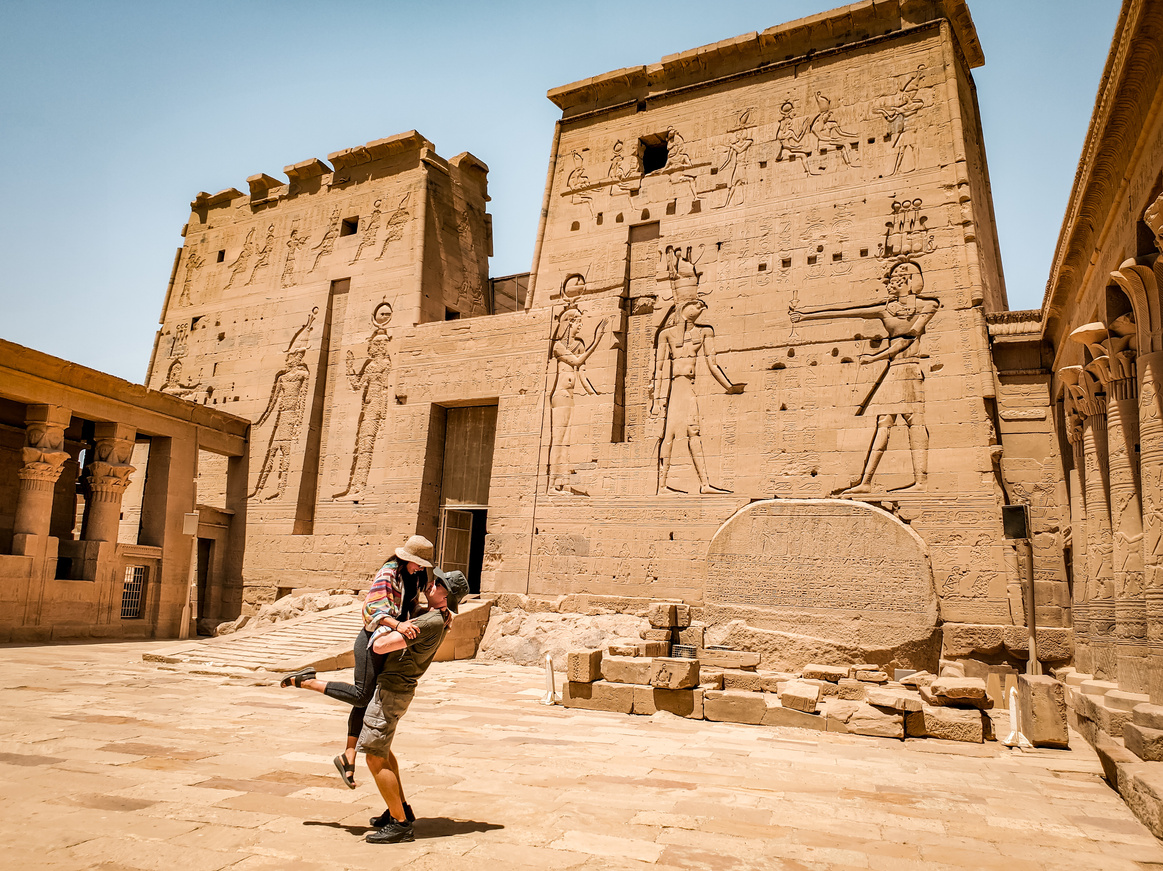
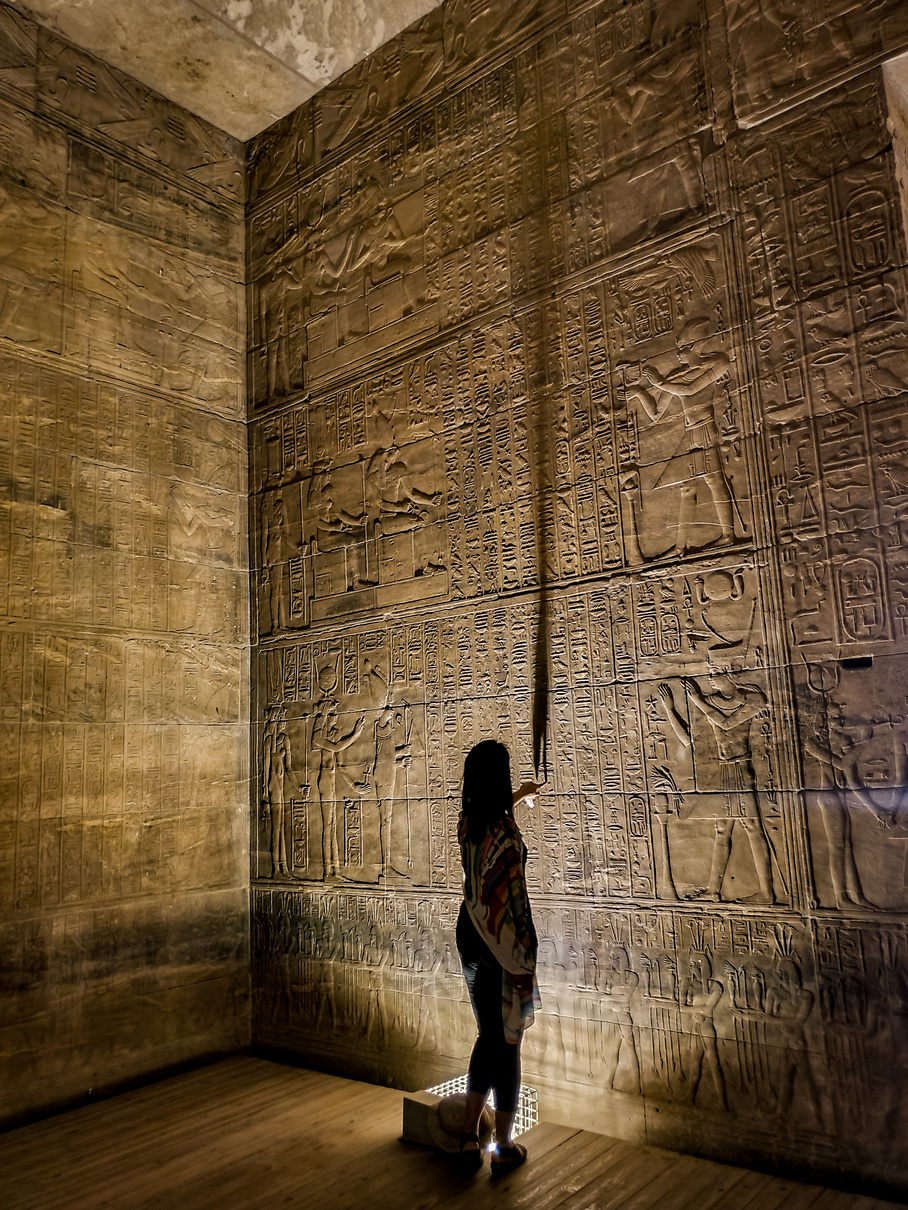
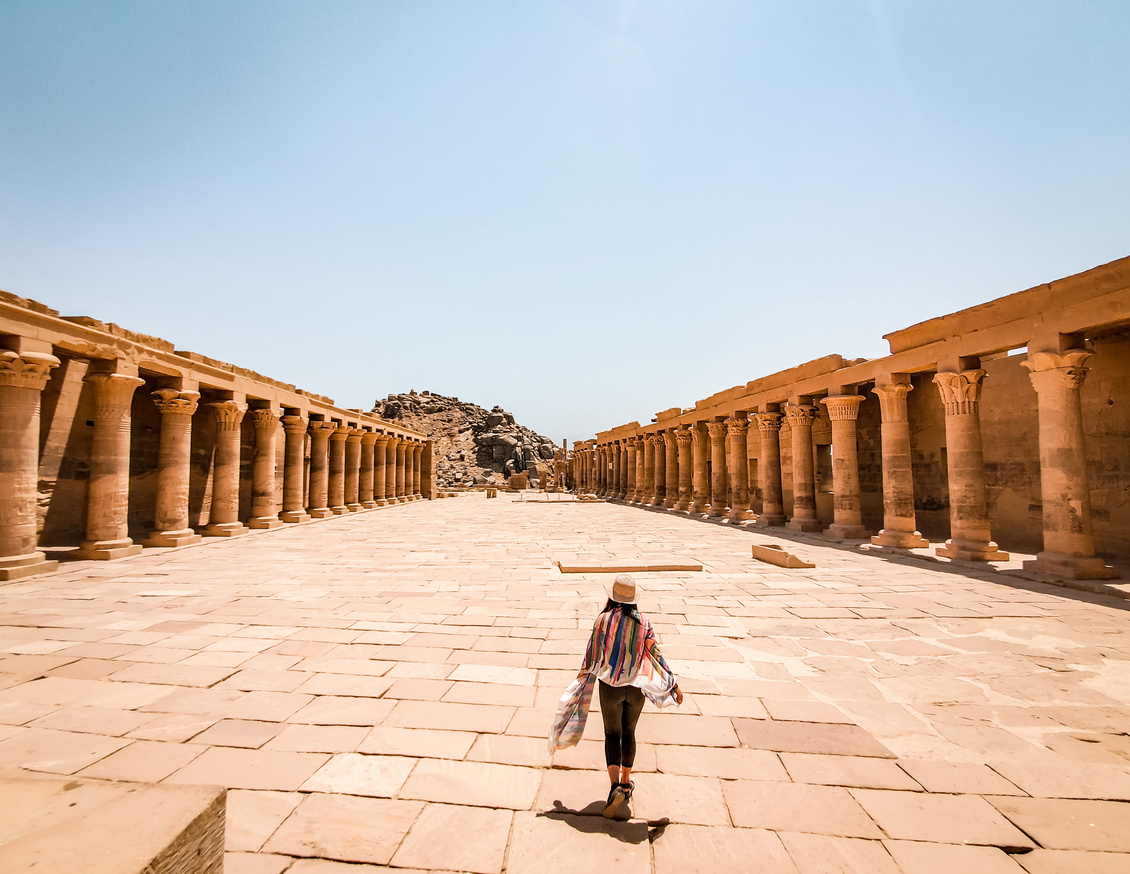
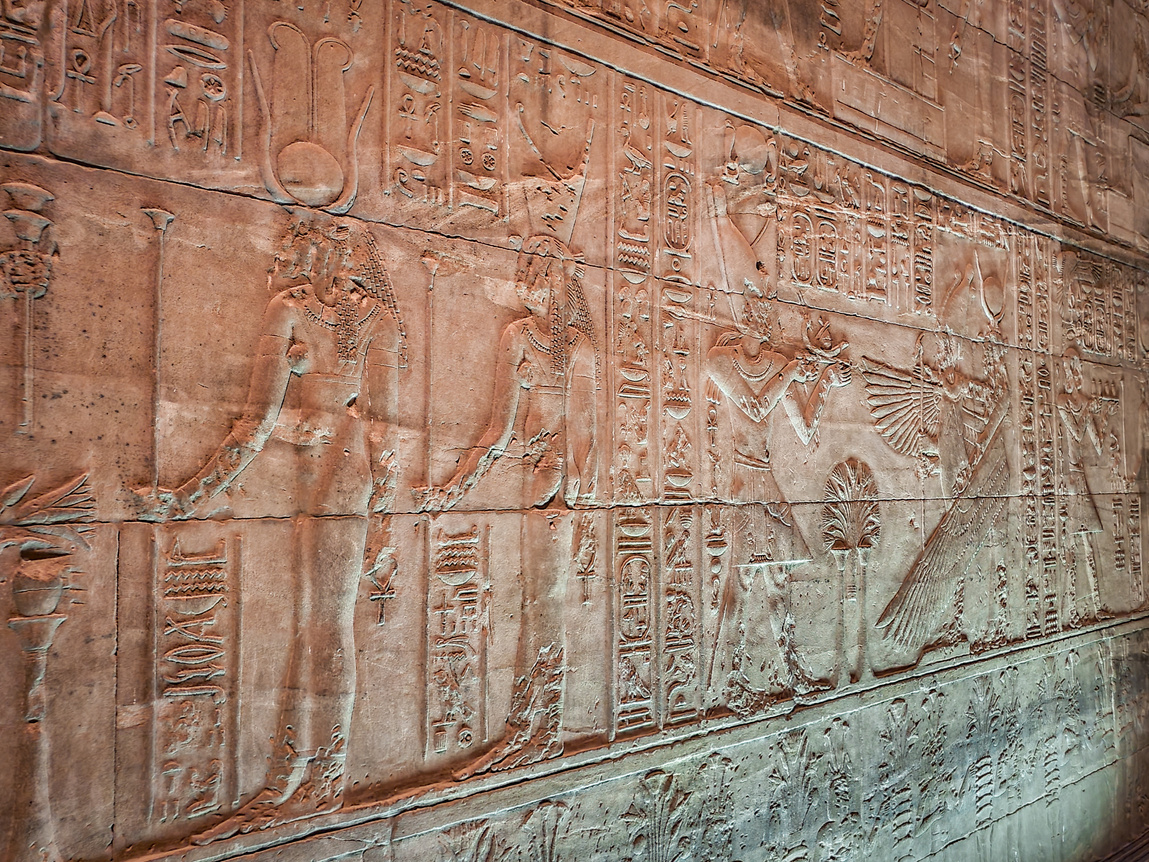
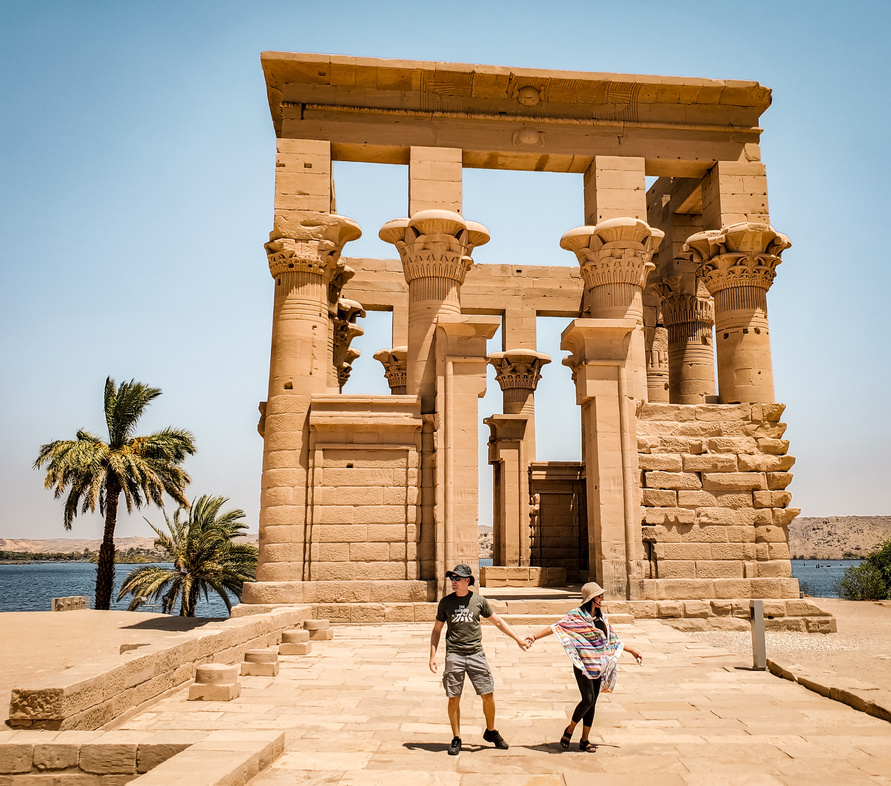
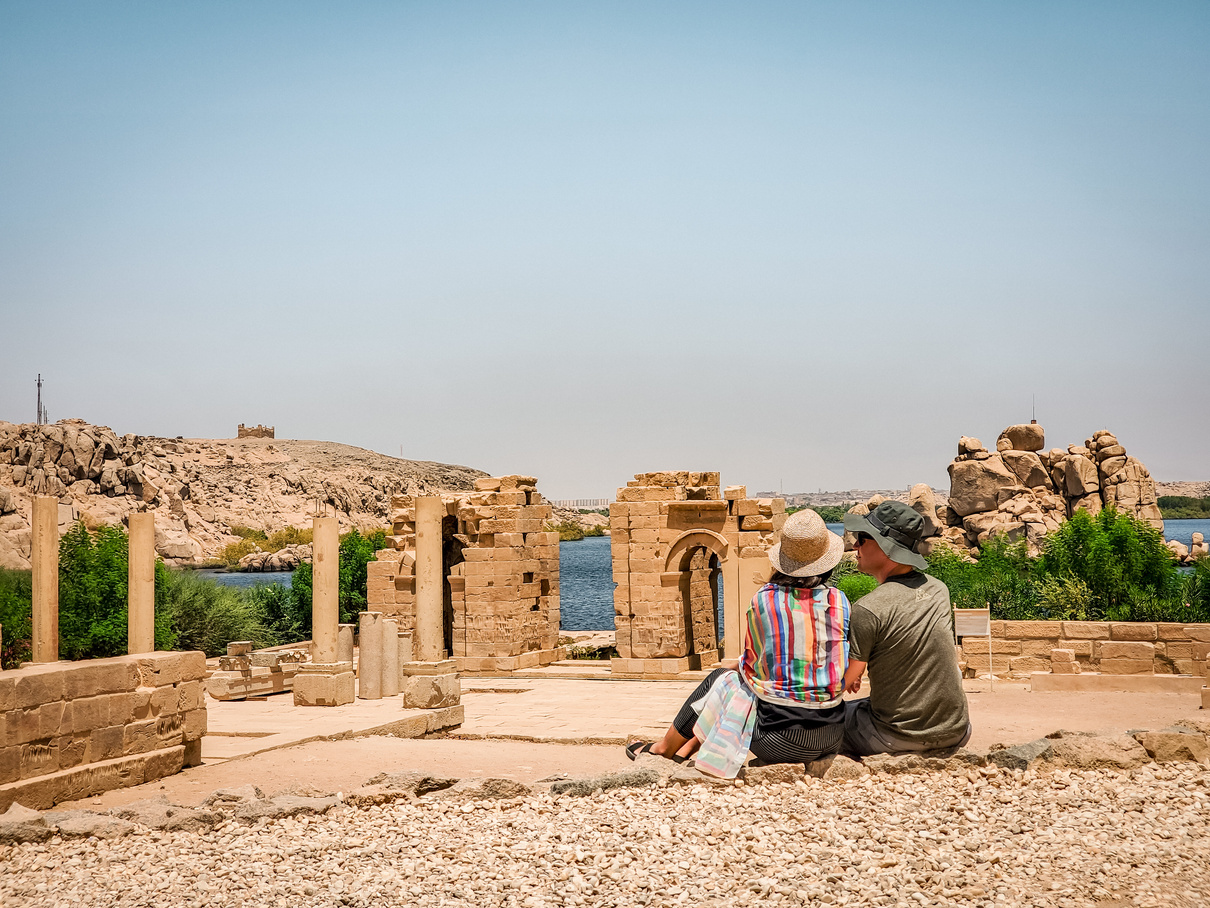
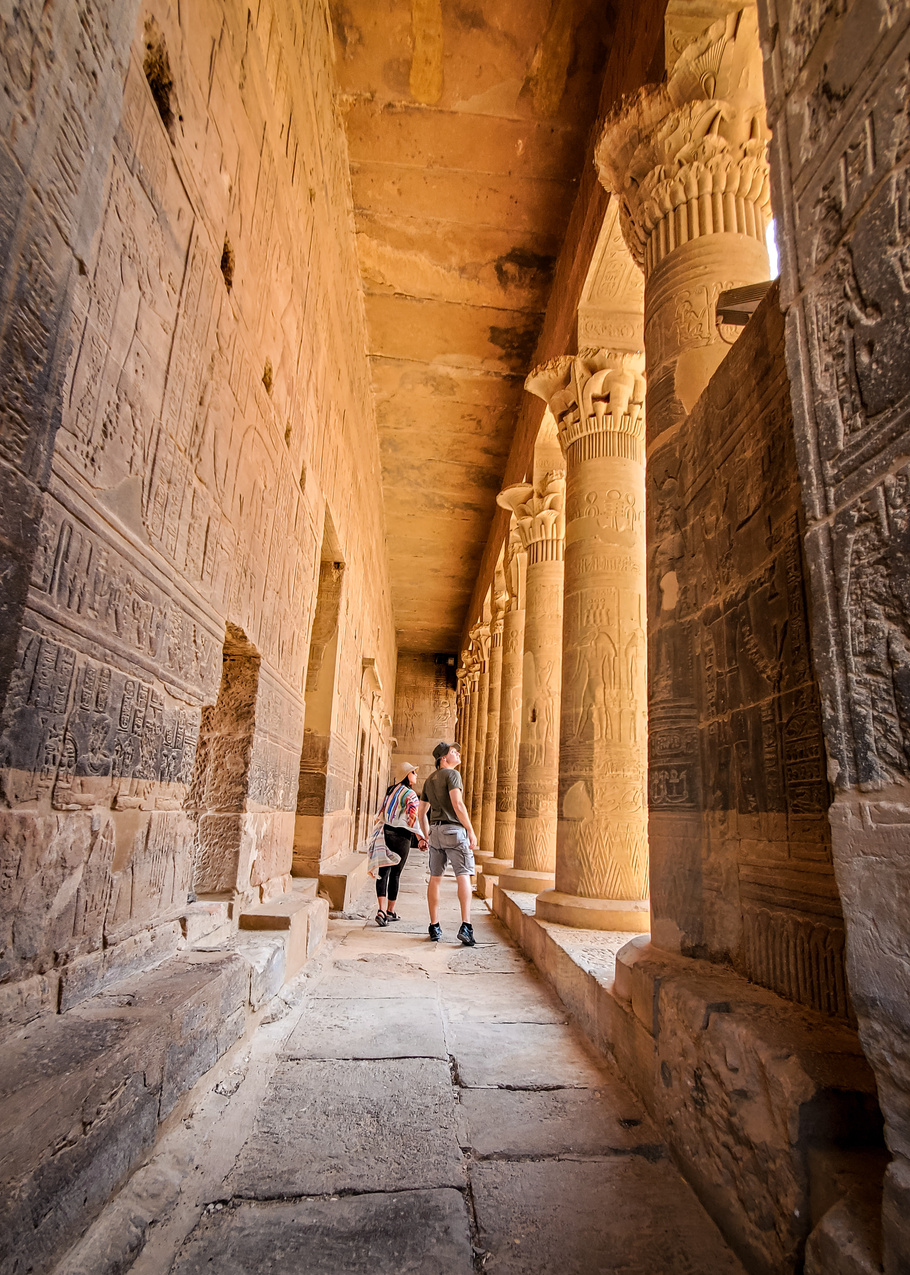
Abu Simbel
Our Lessons
The temple of Abu Simbel required us to make an extra 4-hour drive further south, along a scorching, desolate Sahara road, riddled with mirages teasing false promise of water. Carved out of the mountainside adjacent to the Nile's former 13th-century path, the temple serves as a lasting monument to King Rameses II... and his most beloved wife, Nefertari. How refreshing and unique it is, to see a temple dedicated to a woman! Then again, Nefertari was just one of over 200 wives of Ramses II, according to some sources...
Build big, to demonstrate your power and intimidate your enemies: another recurring theme we will see around the world. We are told that Ramses II built Abu Simbel to serve as a towering “warning” to anyone contemplating sailing their army north up the Nile to attack Egypt. As the massive shadows of Abu Simbel's imposing statues momentarily blot out the sun over passing ships, outsiders may have come to wonder: if the mighty Egyptian empire could build something so grand, all the way down here in the middle of nowhere, just how powerful of an enemy would I be going up against?







Nile River
Our Lessons
What an unexpectedly amazing experience we had spending two nights sailing down the Nile in a traditional Egyptian felucca sailboat! Felucca living space is typically an “open-air” concept, with nothing more than soft mattresses spread out over an empty padded floor (no chairs or any indoor areas at all!). The weather was perfect; even with a gentle breeze at night, we required nothing more than T-shirts and shorts the entire time, relaxing under the stars! Jumping in for a swim during the day is an absolute must in the desert heat.
Although the blistering sun and peer pressure almost convinced me to jump off the boat's upper deck, saner heads prevailed. Meanwhile Eric, a strong swimmer, dove in and was impressed by the cool clearness of the deeper water. As for swimmers worried they may encounter a crocodile’s gently smiling jaws hiding amongst the reeds, we were reassured we may swim at ease: there are no crocodiles in the northern Nile! Once the dams were built, they were hunted and eliminated completely by us humans.
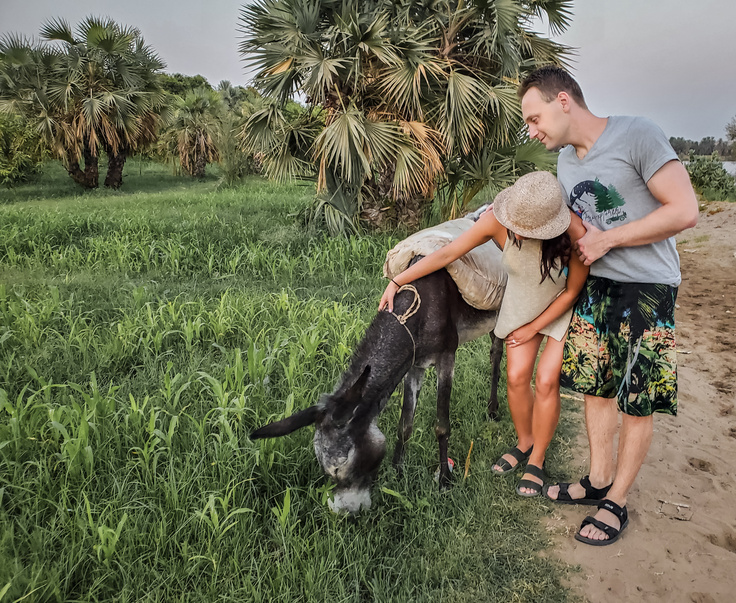



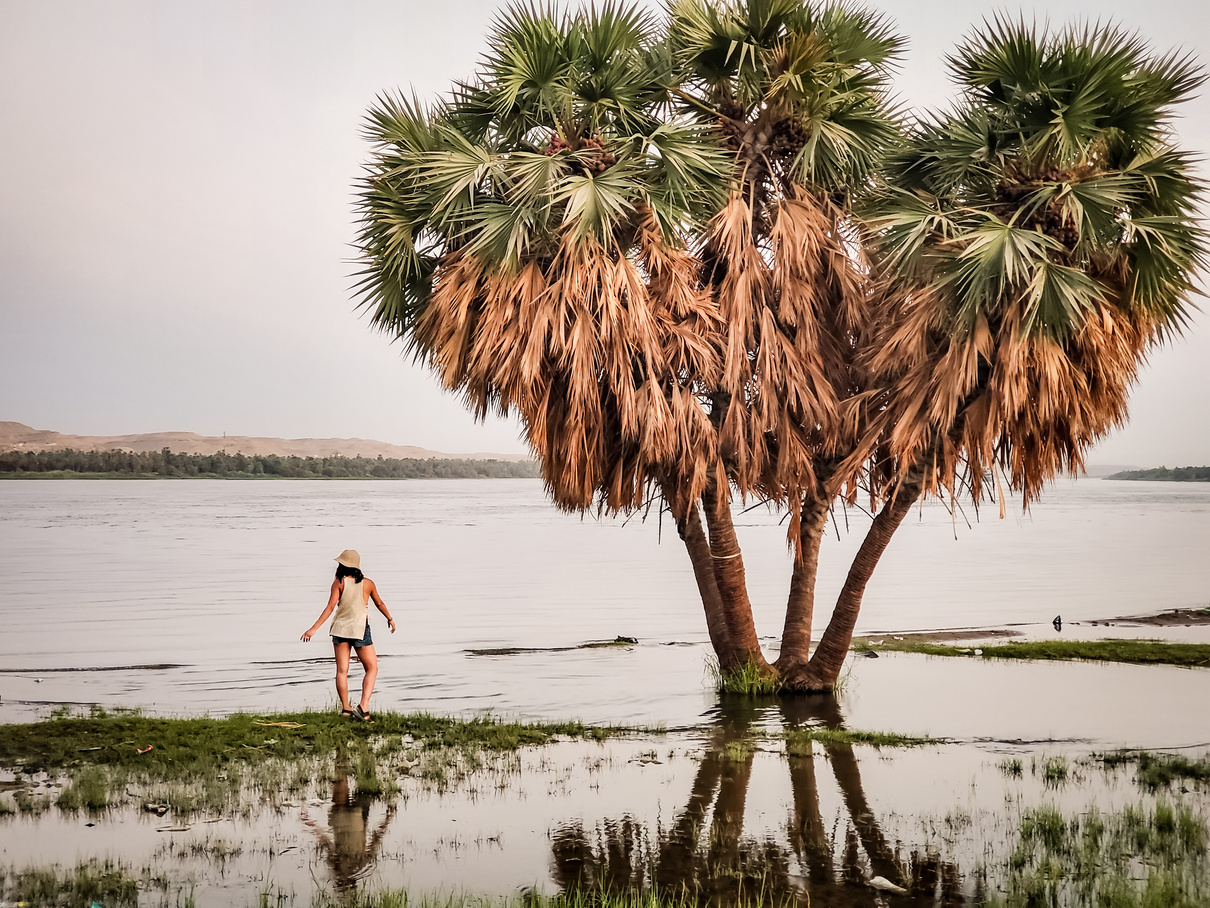
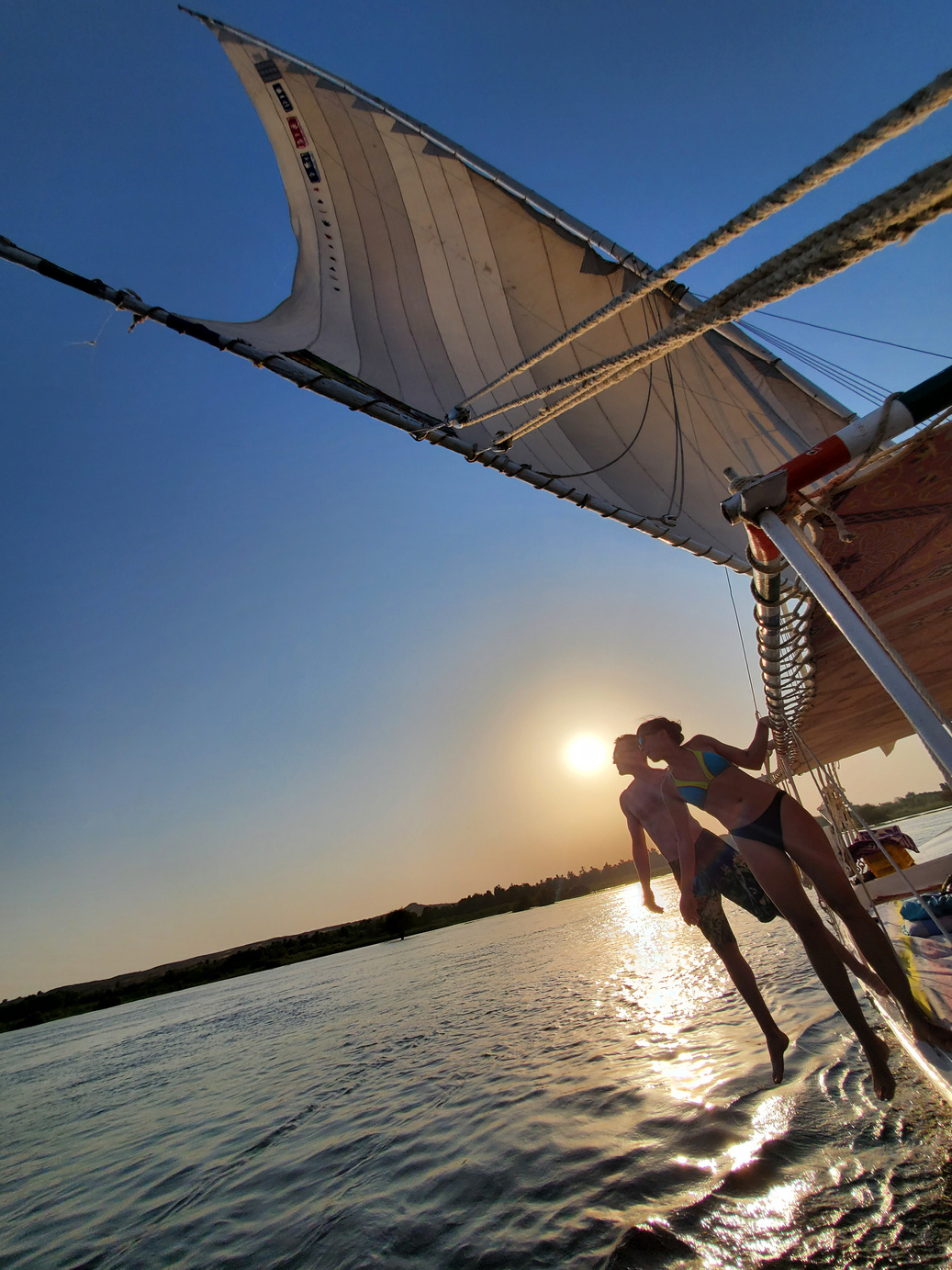
Kom Ombo Temple
Our Lessons
Seriously, ancient Egyptian civilization was so... modern? Here in the temple of Kom Ombo, we were shown that ancient stone carvings demonstrate a 365-day calendar, as well as detailed illustrations of what has been interpreted to be a primitive stethoscope and other medical instruments. Some even say the carvings demonstrate queen Cleopatra having a C-section, to her child "Caesarion"... but history suggests C-sections in that era were only performed to save the baby if the mother had already died (Cleopatra's demise was not until a later time, when she famously was said to have committed suicide via the bite of a poisonous asp). Here, we also saw mummified crocodiles—tributes to the crocodile god of fertility. People struggling to have children would come to this temple for blessings. For similar rationale, we also encountered some uniquely phallic hieroglyphics here (mid lower-left photo).

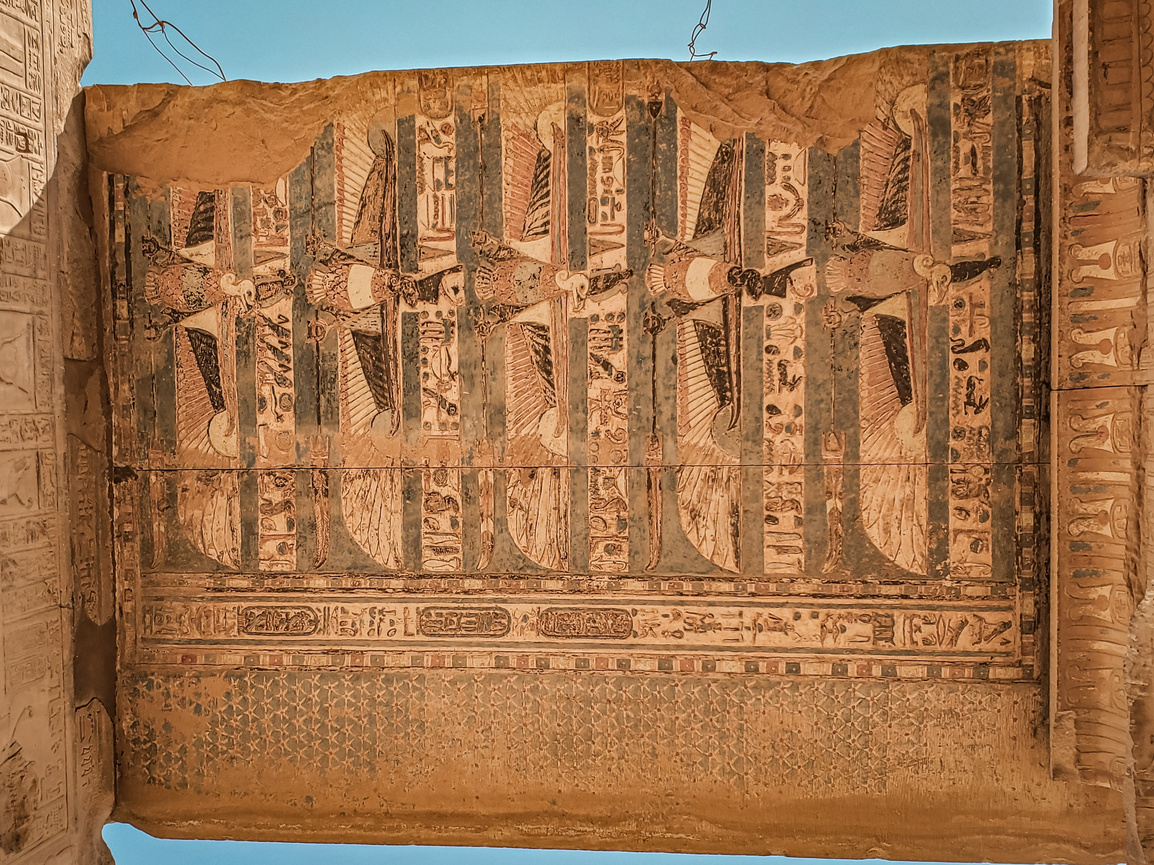


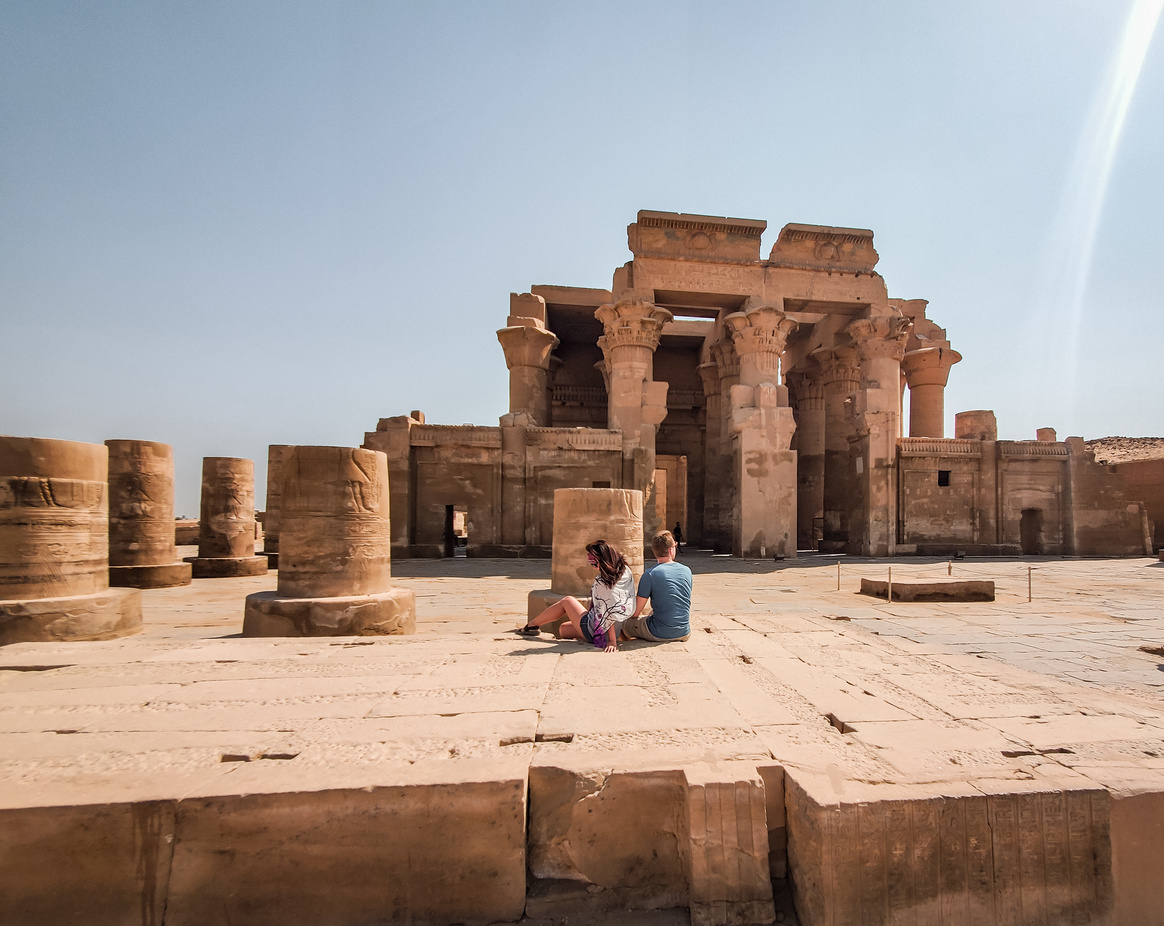


Edfu Temple
Our Lessons
Egyptian lanterns were unusual in that they only used clean-burning oil, which is why one does not observe soot stains on the ceilings of Egyptian temples. One exception to this is the grand temple of Edfu (Egypt’s 2nd-largest): these ceilings are covered in black ash because the later (non-Egyptian) occupants illuminated the space with less-sophisticated torches. On the whole, the temple is still well-preserved, because most of it had been buried beneath the sand for centuries.
A special memory: this is where we met a most-friendly and humble couple: Susie and Jeremy. Since that time, Susie was diagnosed with, and survived, a battle against cancer. In spite of the toll this has undoubtedly taken on her body and spirit, less than a year later, she and Jeremy have started to travel again. This summer, 2022, they skipped the train and conquered the entire Inca Trail to Machu Picchu, on foot! Their strength inspires us.






Karnak Temple
Our Lessons
The temple of Karnak: we reached the 'big one'! Like many others, Karnak owes its grandeur to that most renowned pharaoh, Ramses II ("the Great"), who put his name on all 134 magnificent columns (one column for each major God in ancient Egyptian culture). It's a huge complex, but there are still incomplete sections. Here, one can still observe 'temporary' mud-brick ramps, which were used by Egyptian builders to drag stones up to the highest walls of their temples. Once completed, these ramps would normally have been removed. The ramps serve as an impressive reminder: ancient Egyptian architecture was built without the help of wheels or animals; with nothing other than sweat and lots of human power!
Karnak temple features the Obelisk of Hatshepsut, the tallest standing obelisk in ancient Egypt (8 stories high!). Staring at these massive, single-stone monoliths begs the question: How does one get those pesky obelisks to stand upright? It was emphasized to us that what makes obelisks truly fascinating is the fact that they are indeed extracted as one massive piece of stone, which then had to be dragged and floated downriver from a distant quarry in its horizontal position. Once at its desired location on land, the huge stone was pulled bottom-first up a temporary incline, so that it lies with its base angled upwards. From here, sand and ramp pieces are carefully removed from beneath the base end, until the base begins to hang freely over the edge of the incline. Once enough of the heavier base hangs free, the obelisk reaches a literal ‘tipping point,’ gracefully pitching forward with gravity, tilting itself into its upright position. Once all sand and supports are removed, you’re left with a free-standing obelisk!

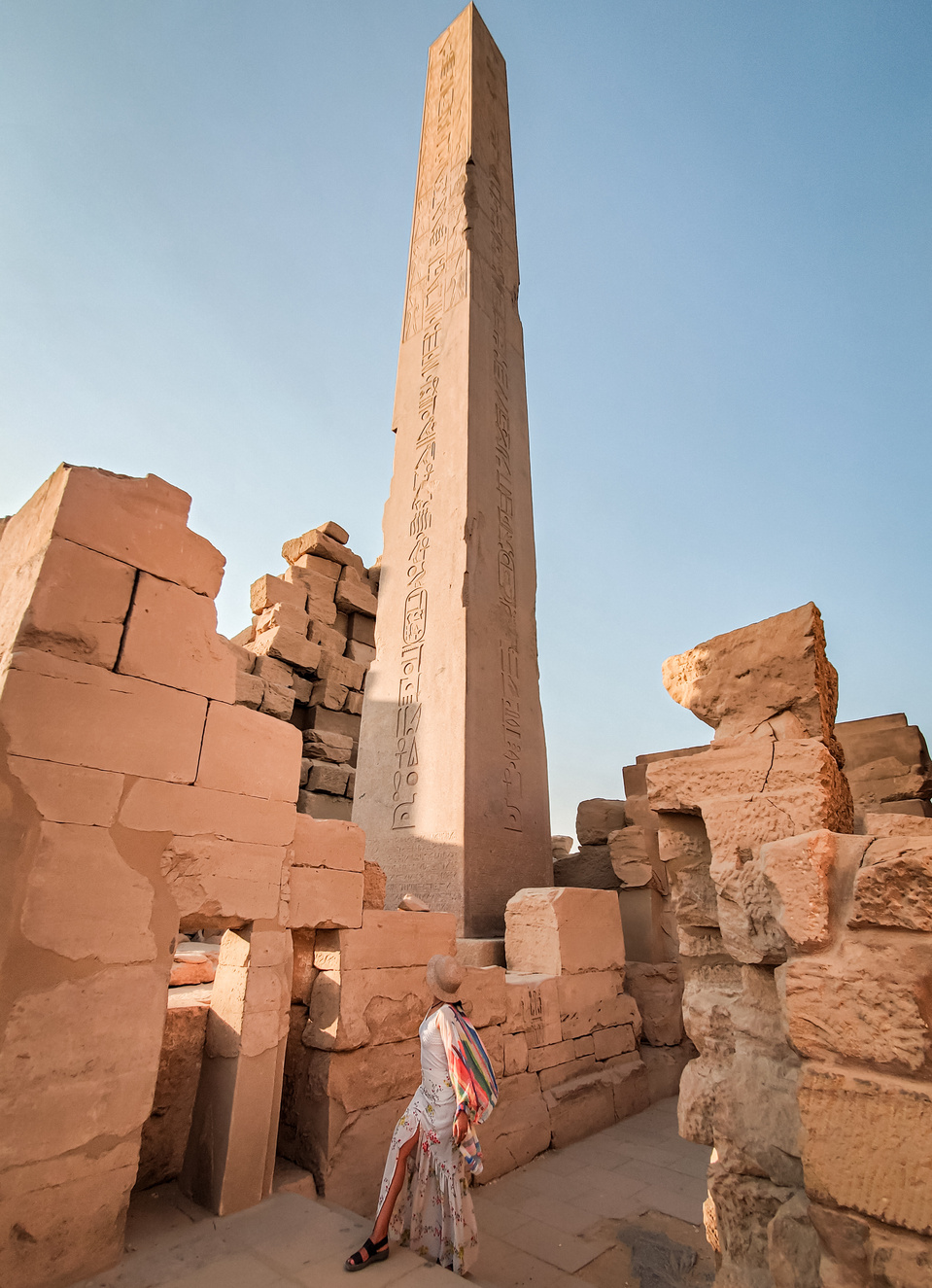
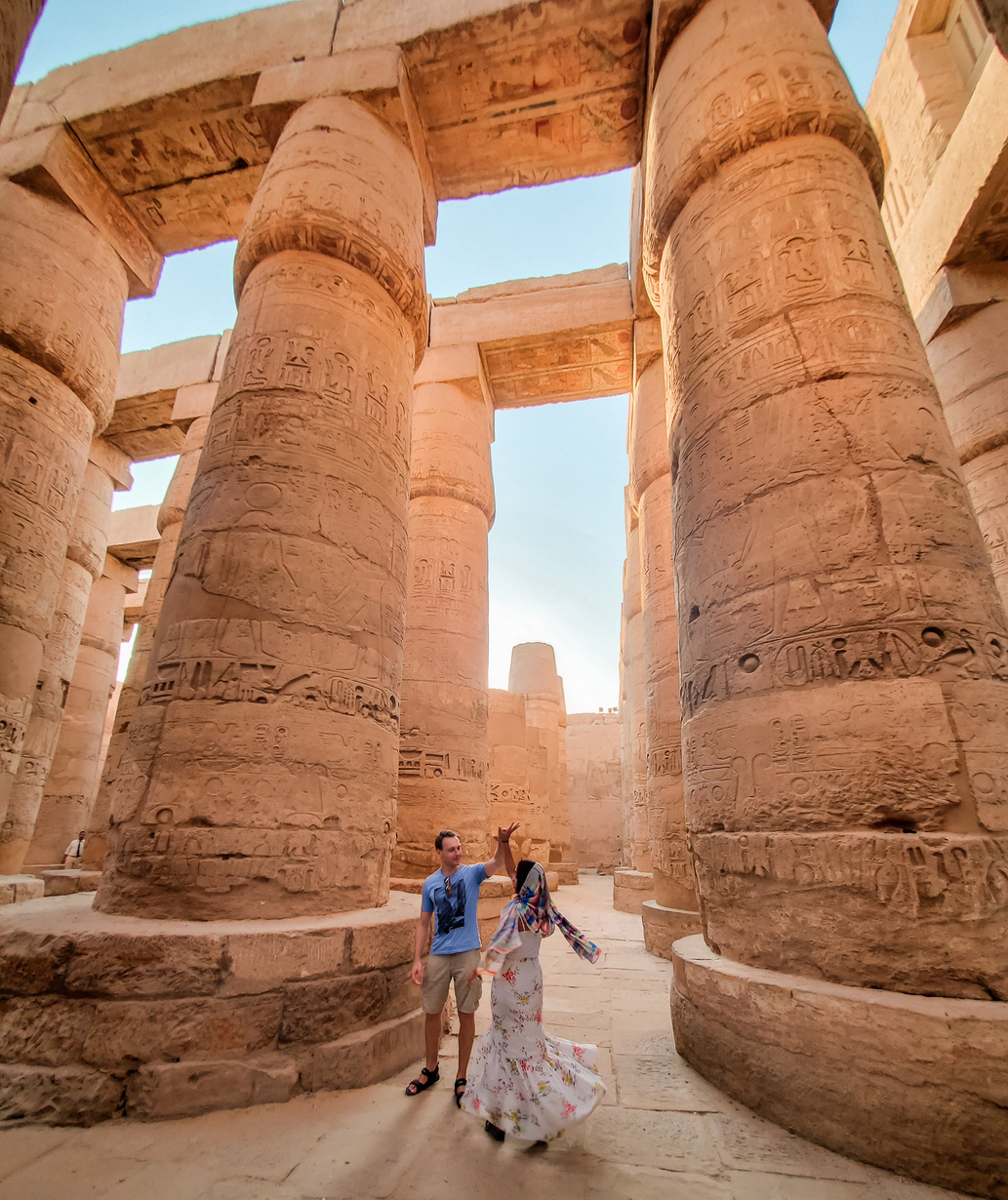
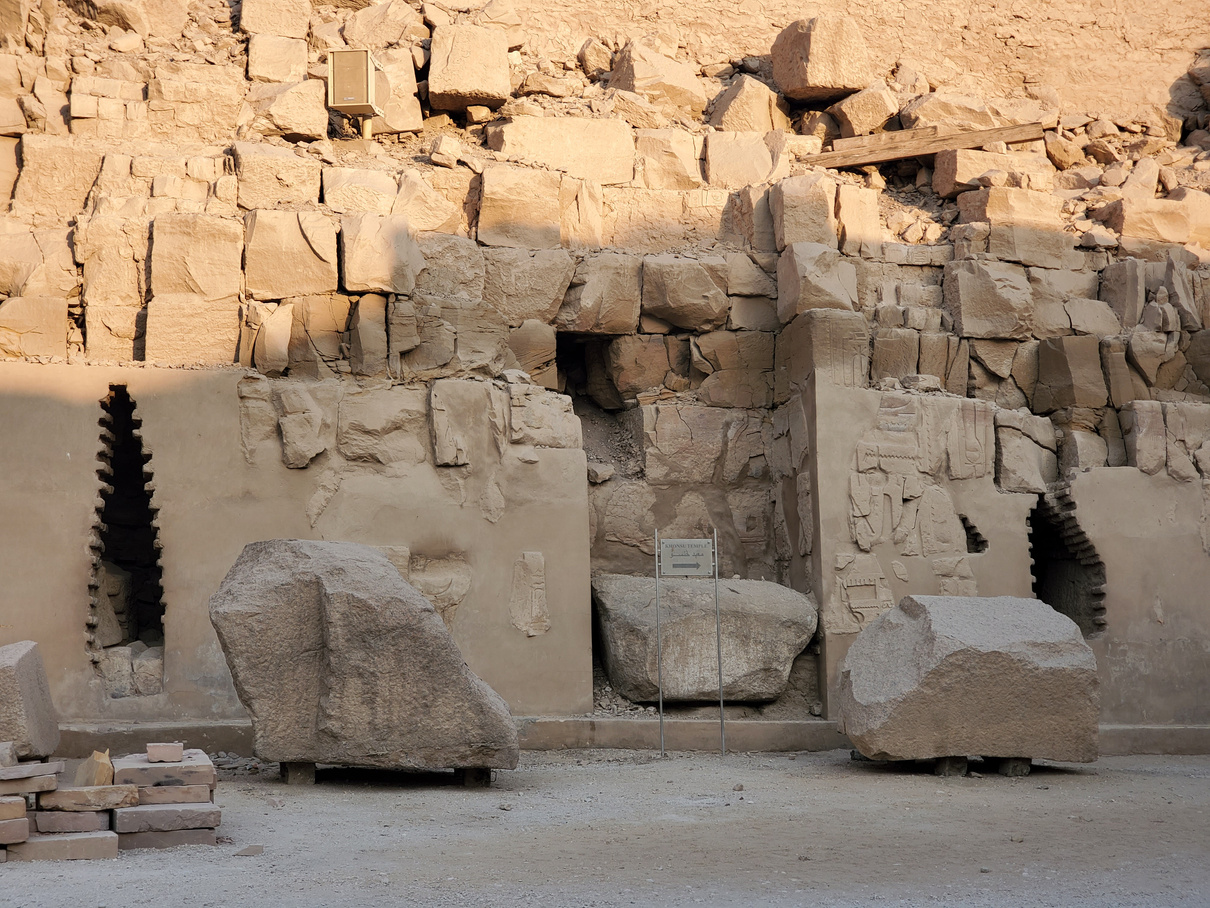

Luxor
Our Lessons
Sorry, but Las Vegas's Luxor Casino has got nothing on the real Luxor City. Vegas' Luxor is admittedly a good attempt, even featuring a replica of the temple's original obelisk, which many of us Americans have come to recognize. Amusingly, as if any competition was necessary, Egypt’s original Luxor has been given some modern flair, with gorgeous night-time LED illumination.
Luxor has indeed been a popular location over its lifespan. Built in the 14th century B.C., its temple was kept in use by multiple subsequent civilizations. For instance, it had a Catholic church built right inside it in the 4th century A.D. If that wasn't enough, later an Islamic Mosque was built right over the rubble of that church in the 7th century, and it continues to be used to this day. In total, this adds up to over 3400 years of continuous use for religious worship at Luxor Temple.
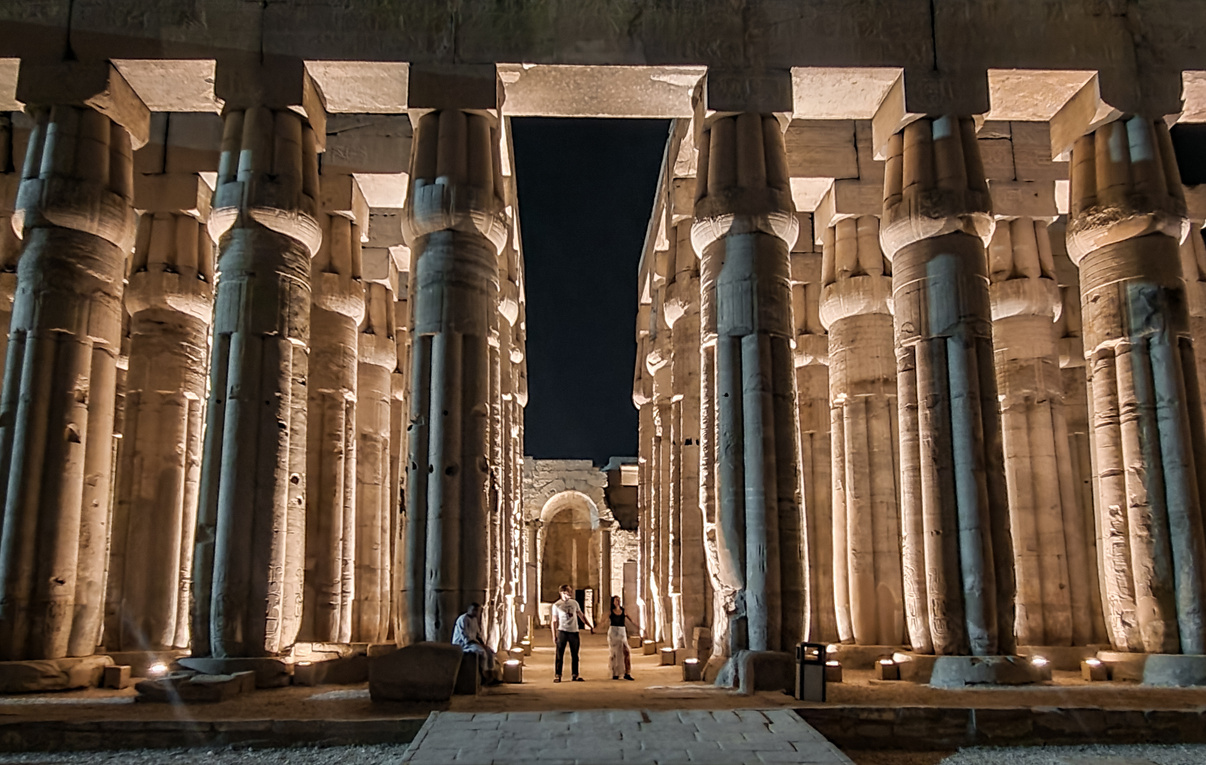


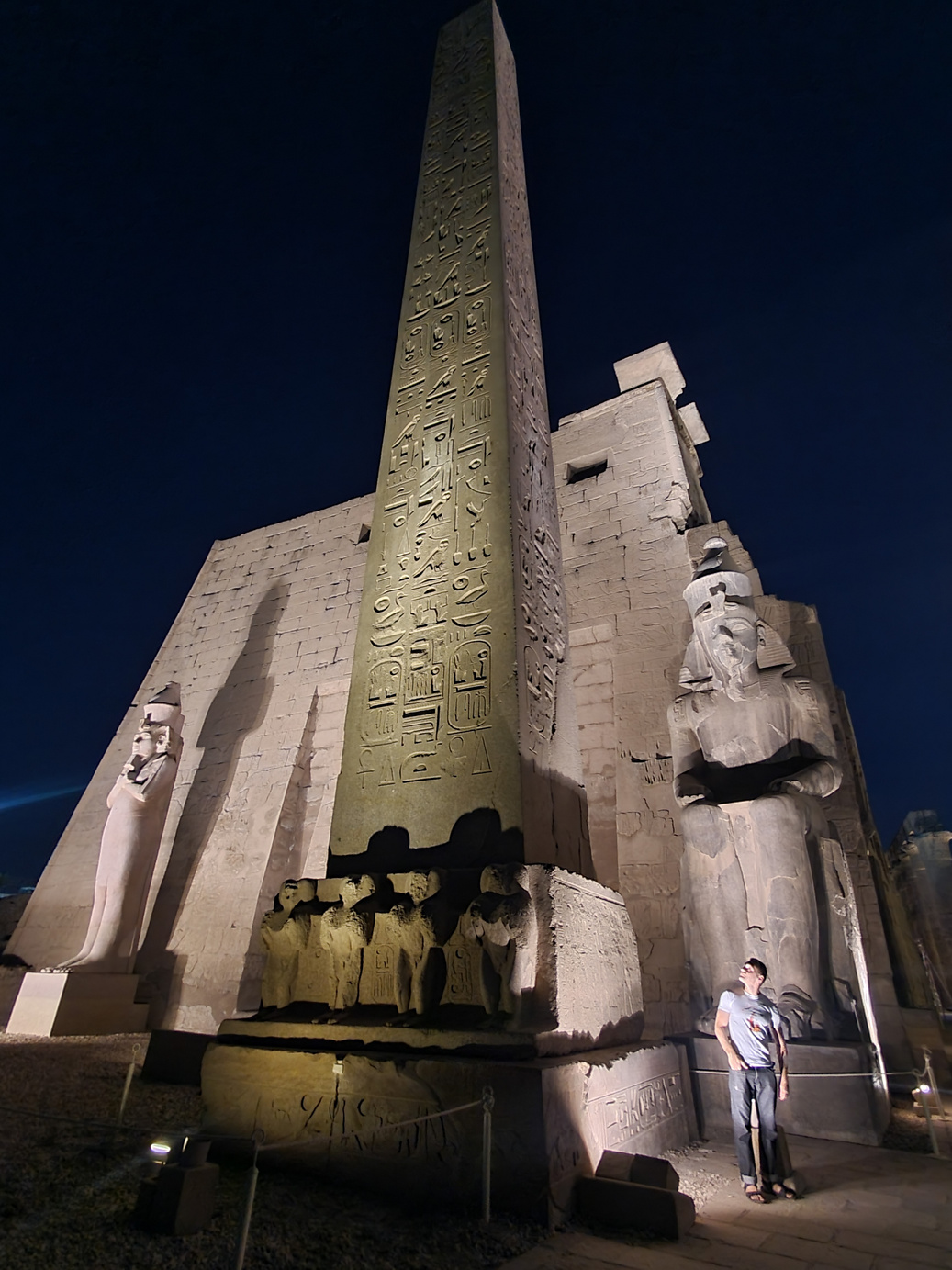
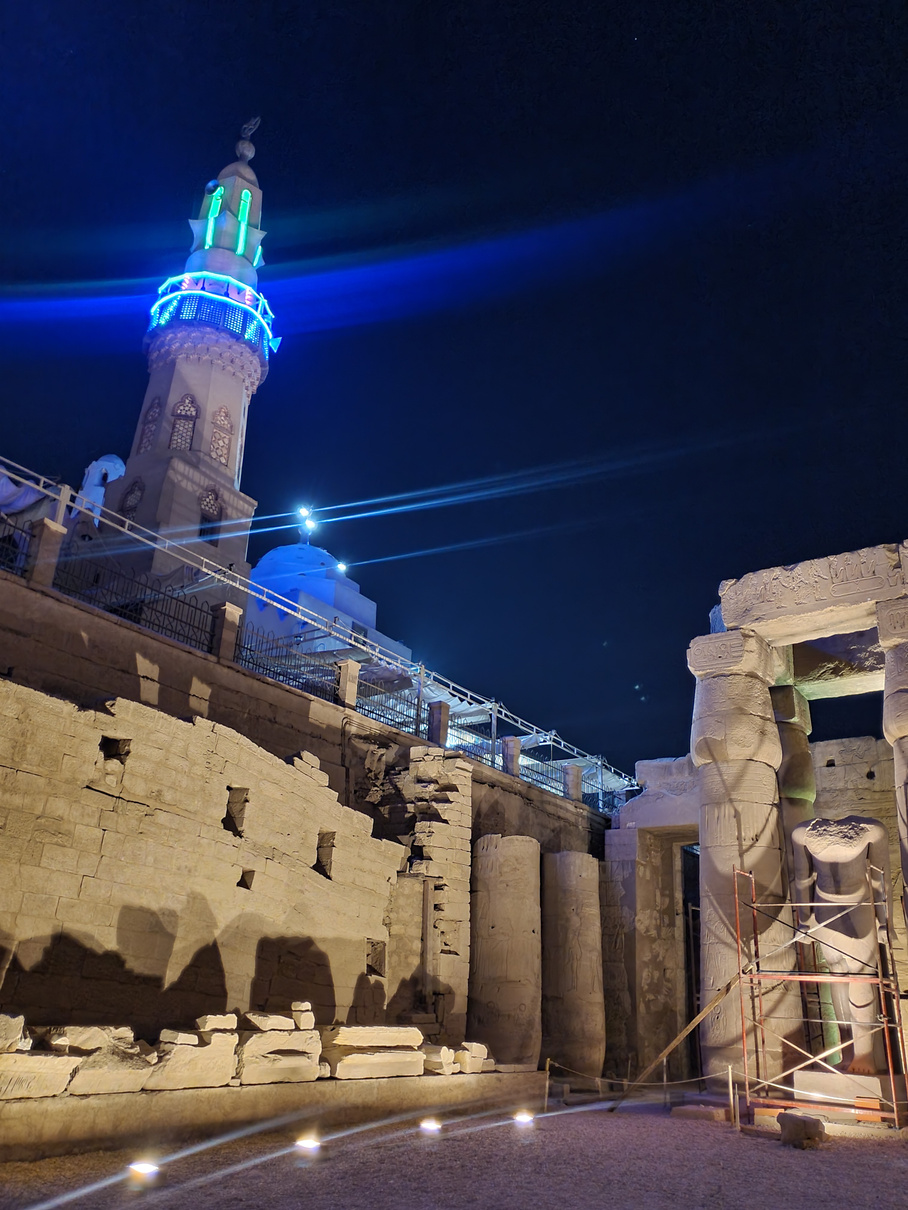
Though surrounded by symbols of "eternal life," we must admit that our mortal human bodies were beginning to fatigue! Every place we visited was an absolute masterpiece; a once-in-a-lifetime opportunity to set foot in each sacred place. And yet… the days were so, so hot; and the tour was so fast-paced, with so much that we were eager to learn, write, and remember! While recognizing what a privilege it was to be here, we would advise prospective travelers to seek out longer, slower-paced tours of ancient Egypt: to have more time to truly appreciate and marvel at the details of one of the world's greatest civilizations.
Valley of the Kings - part 1
Our Lessons
So many tombs; separate labyrinths all twisting around each other; a lost maze hidden beneath the scorching desert sun. Outside of Luxor city, the Valley of Kings has served as the eternal resting place of some of Egypt’s most well-known pharaohs, including King Tut. Tombs here were built long after the end of the "pyramid" era and are particularly attractive to tourists, because they are newer and many had remained sealed and protected from the elements for centuries. As a result, the walls here are still lined with brilliantly colored hieroglyphics that have retained their original paint!
We are told that the area became so dense with tombs, that newer kings sometimes lost track of where their predecessors’ tombs had been built. This apparently led to awkward moments: if a king's digging team “bumped into” the walls of an old antechamber, they would have to change directions to complete their lord’s new chamber (Honestly, hearing this made us raise an eyebrow: Egyptian architects and engineers designed some of the most immense, intricately-planned, and indestructible structures in the world... but it was the simple act of keeping an accurate map that gave them trouble??)
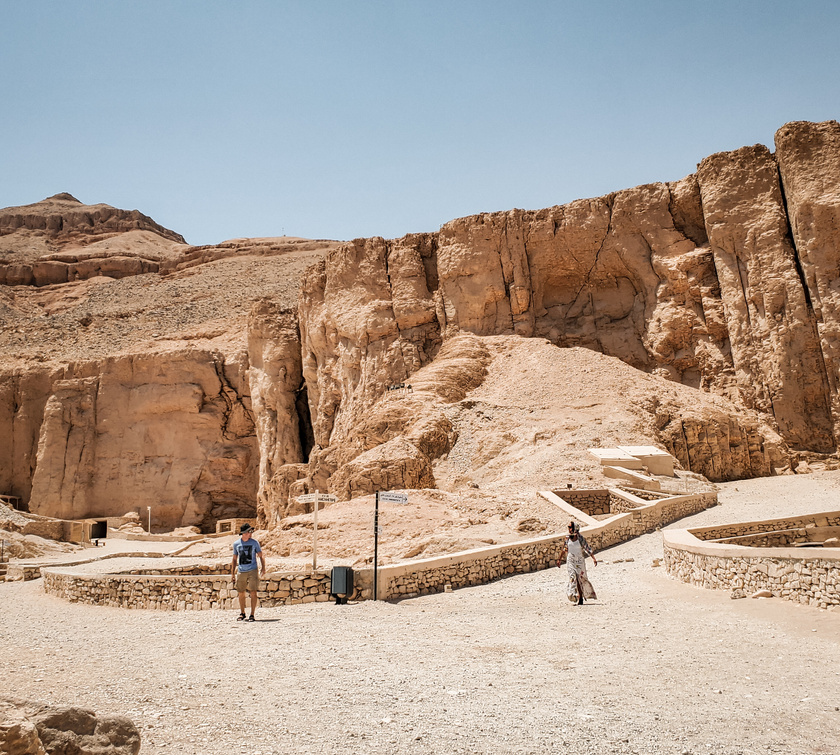

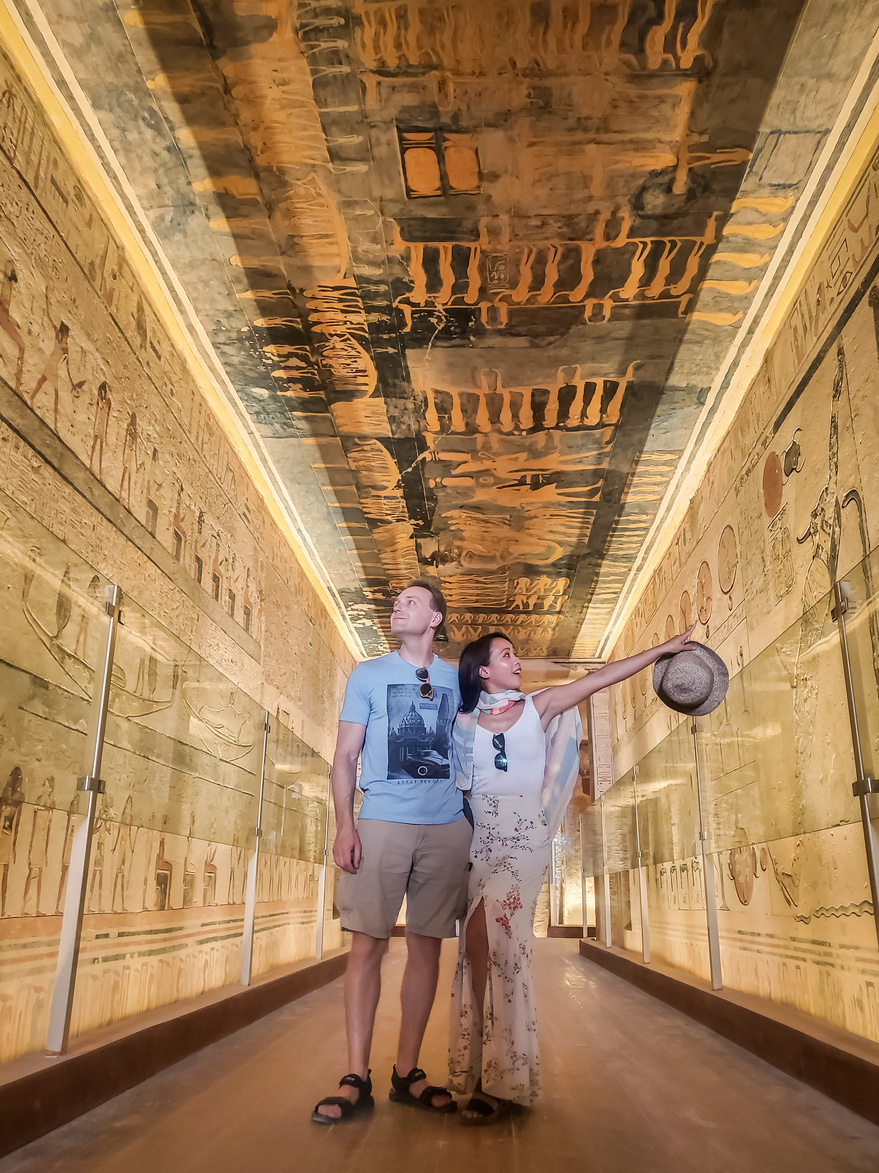

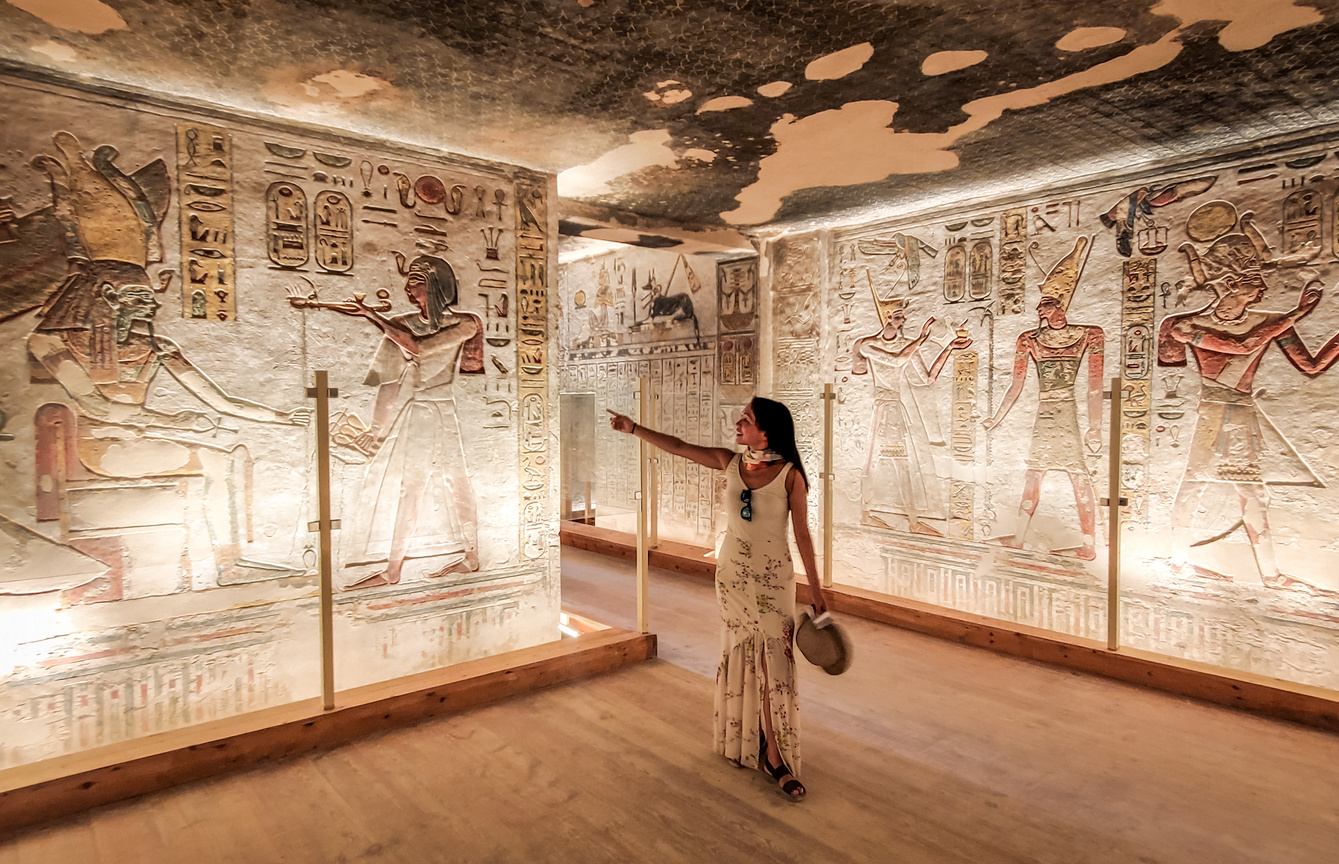
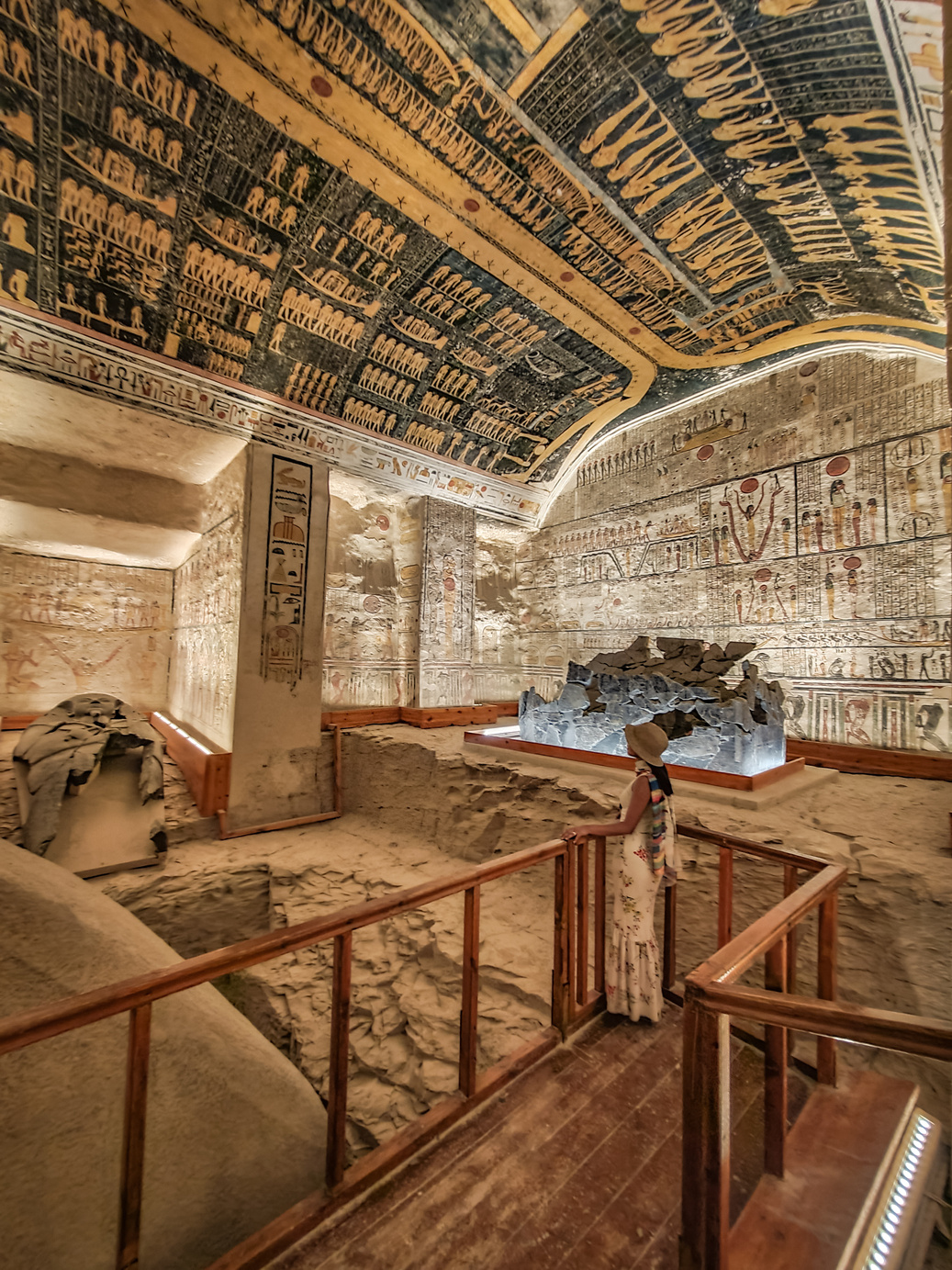
Valley of the Kings + Cairo
Our Lessons
Is it me you're looking for? Well, hello there King Tutankhamun!
During his time period, Tut himself was actually a lesser-known king who died at 19 years old. However, his tiny tomb was the only one discovered in a beautiful, undamaged state in the 1920s. The tomb was opened for visitors in the 1960s—and the style of Egyptian painting inside is very recognizable from Eric’s childhood since the pristine nature of Tut's tomb made him something of a superstar in ‘90s Western culture!
Today, King Tut’s body rests in his original tomb, behind glass… meanwhile, all of his belongings have been removed, and placed in the Egyptian Museum. King Tut's seven-layer gold-plated sarcophagus, gold mask, and his hundreds of rings, necklaces, and other amulets, are on display there. These items were considered an incredible archaeological find, since Tut’s tomb remains the only discovered tomb that was untouched by raiders. Located in central Cairo, the Egyptian Museum's expansive collection contains (amazingly touchable!) artifacts from all eras of ancient Egypt: everything except the mummies themselves...
In the summer of 2021, all the Royal mummies previously on display in the Egyptian Museum were removed—and transported into a separate museum downtown for safer storage. This task was celebrated in a lavish city-wide ceremony called the "Pharaohs' Golden Parade." This was a super high-profile event that temporarily shut down Cairo's downtown area!

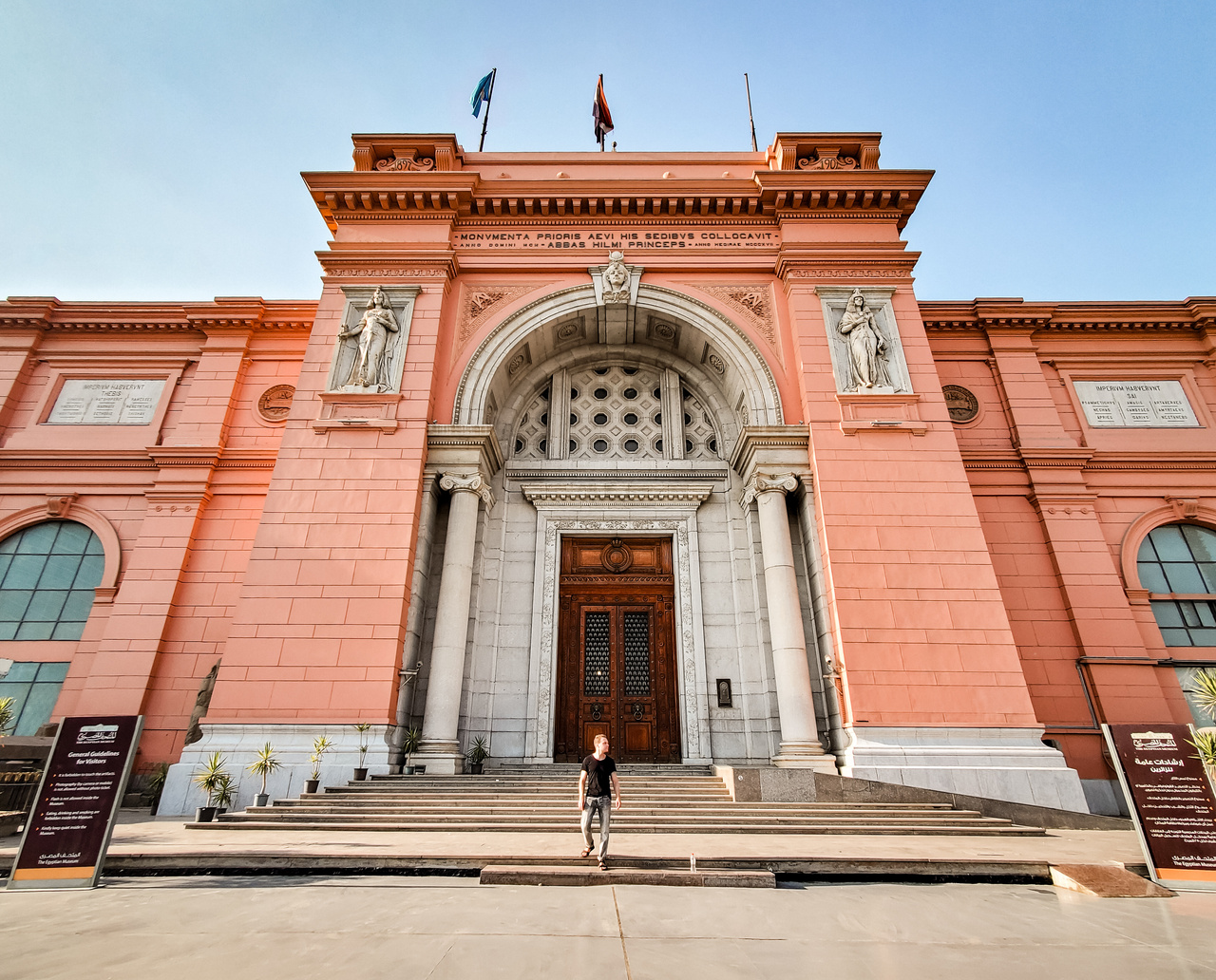
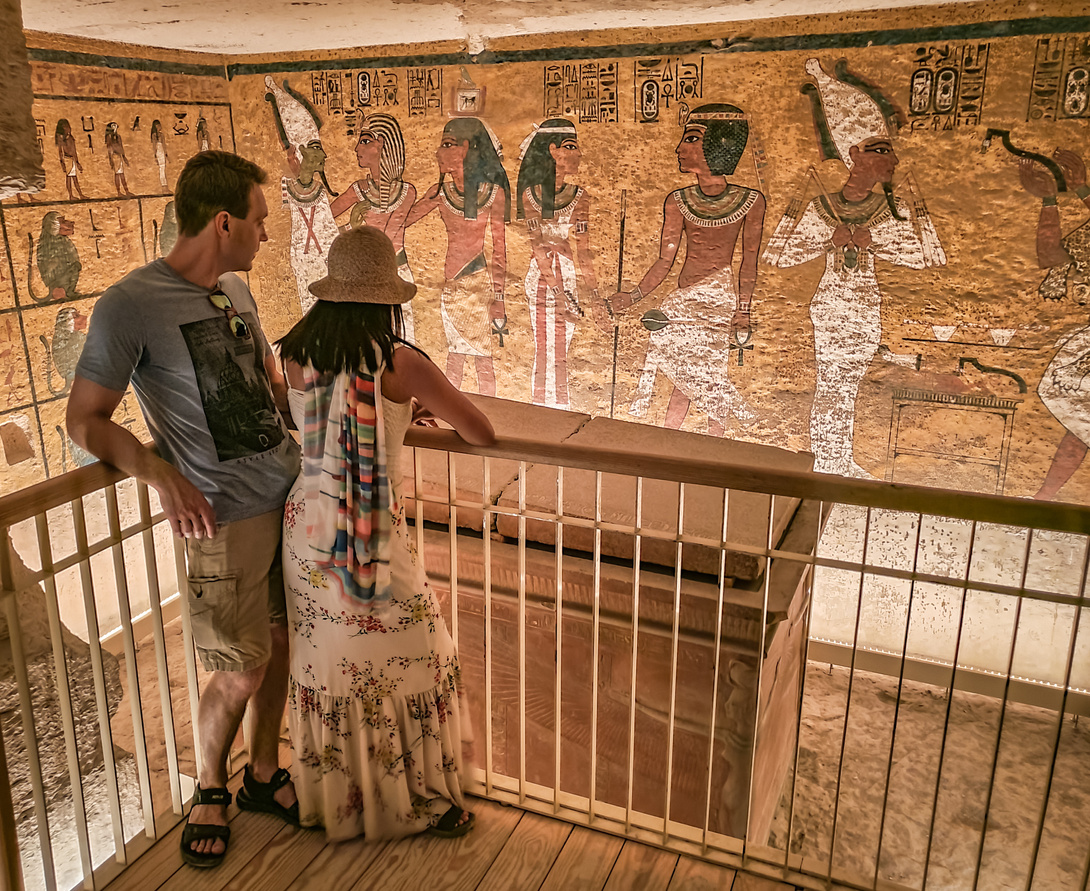

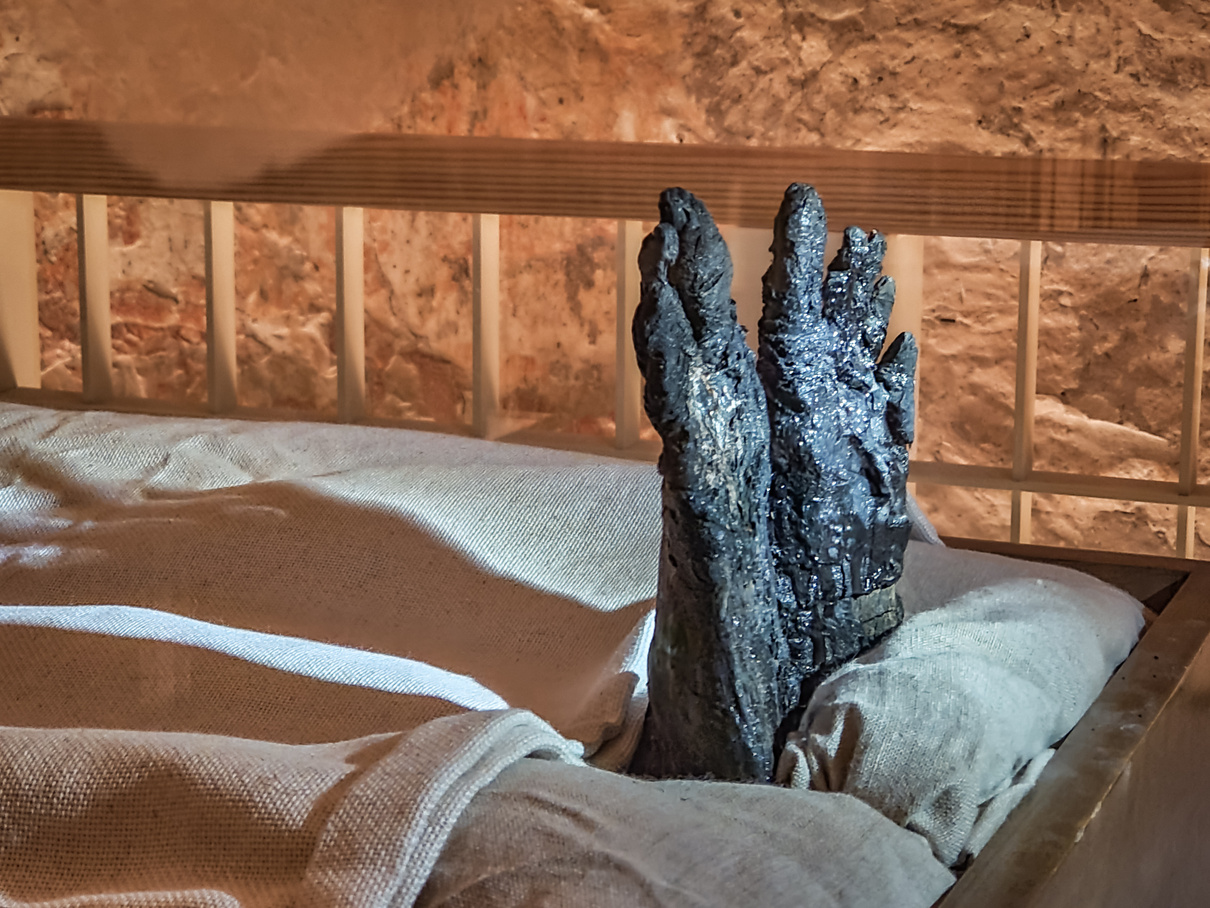
Cairo - part 6
Our Lessons
A final, pensive day in Cairo before we took off on another adventure. Egypt will have a special place in our hearts—a rugged but breathtaking landscape, with an incredibly-welcoming culture that teems with exotic beauty. On top of this, Egypt is cheap to visit on a U.S. salary! The left photos show our third-floor hotel room, with a balcony directly overlooking Tahrir Square and the Egyptian Museum; one of many we were able to find online for just $25 USD/night. It was old, with an elevator door that remained wide open while running... but it was clean, full of charm, and in a great location for accessing the authentic center of Cairo.
One last afternoon marveling at Old Cairo's beautiful alabaster and copper lamps; one last shawarma; one last chaotic traffic crossing, and one last beautiful sunset shimmering across the dusty sky. We leave Egypt with so many lessons learned, and newfound friends who helped us realize that making a poolside human pyramid can also be a very challenging feat.
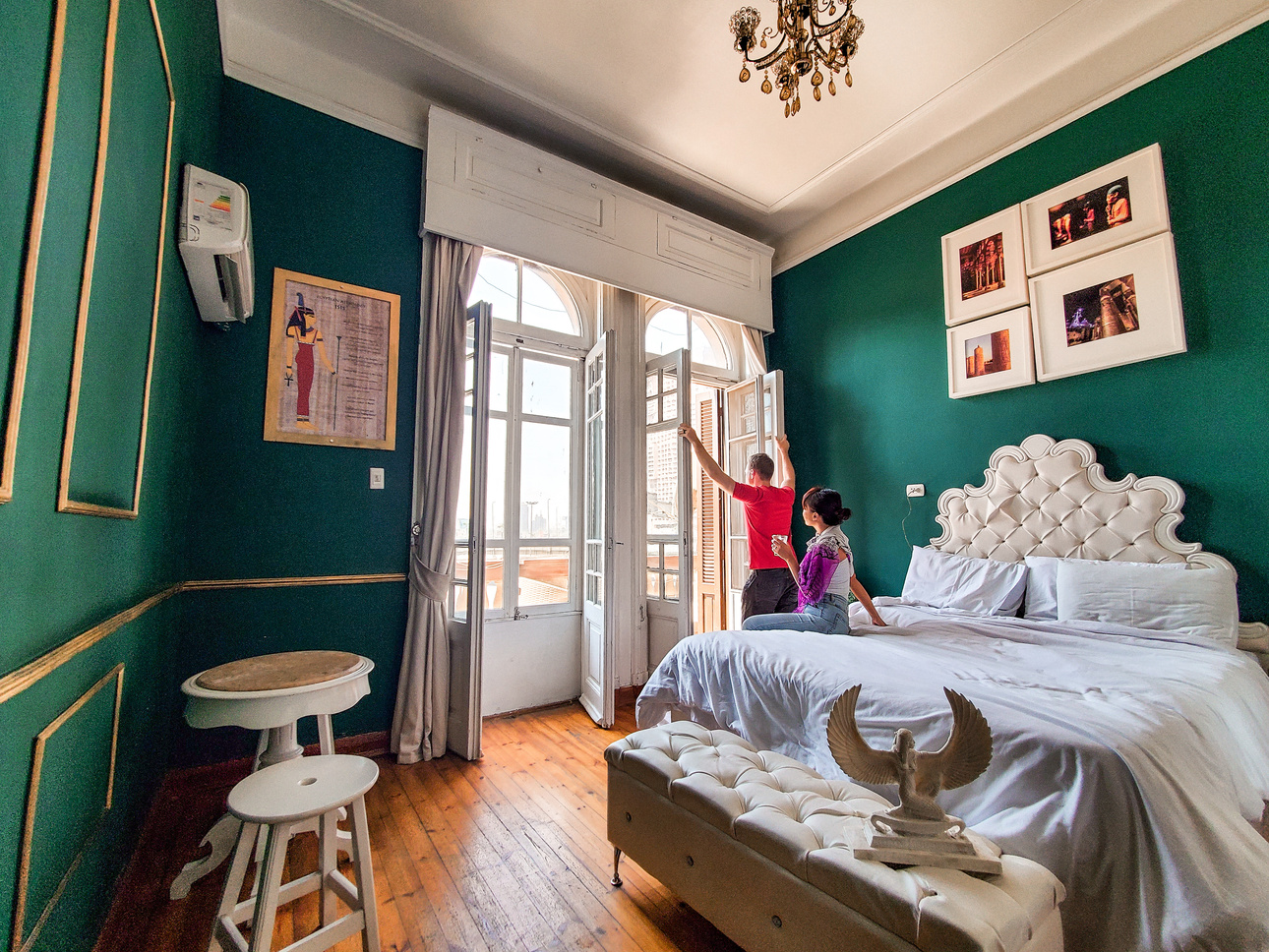
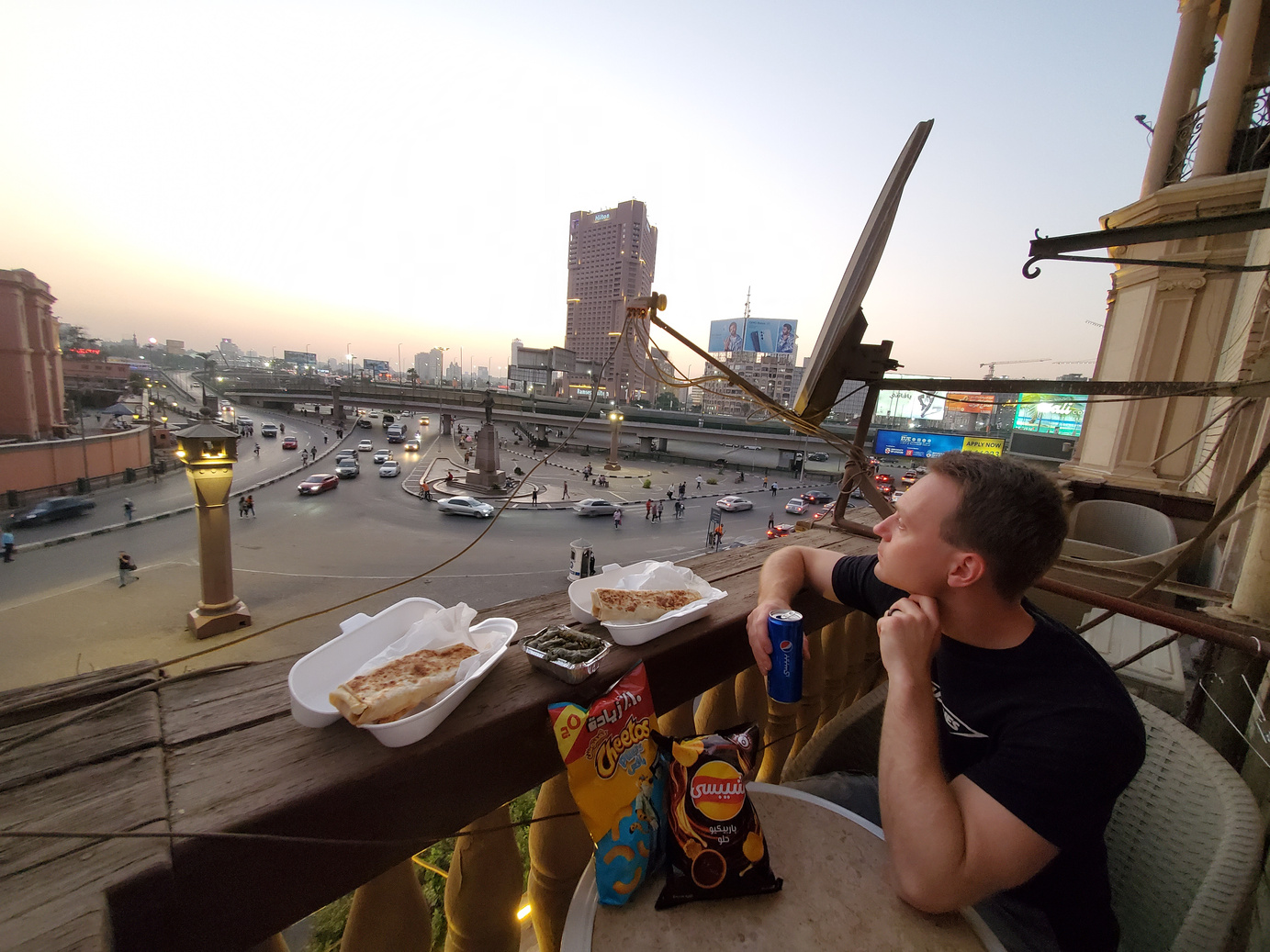


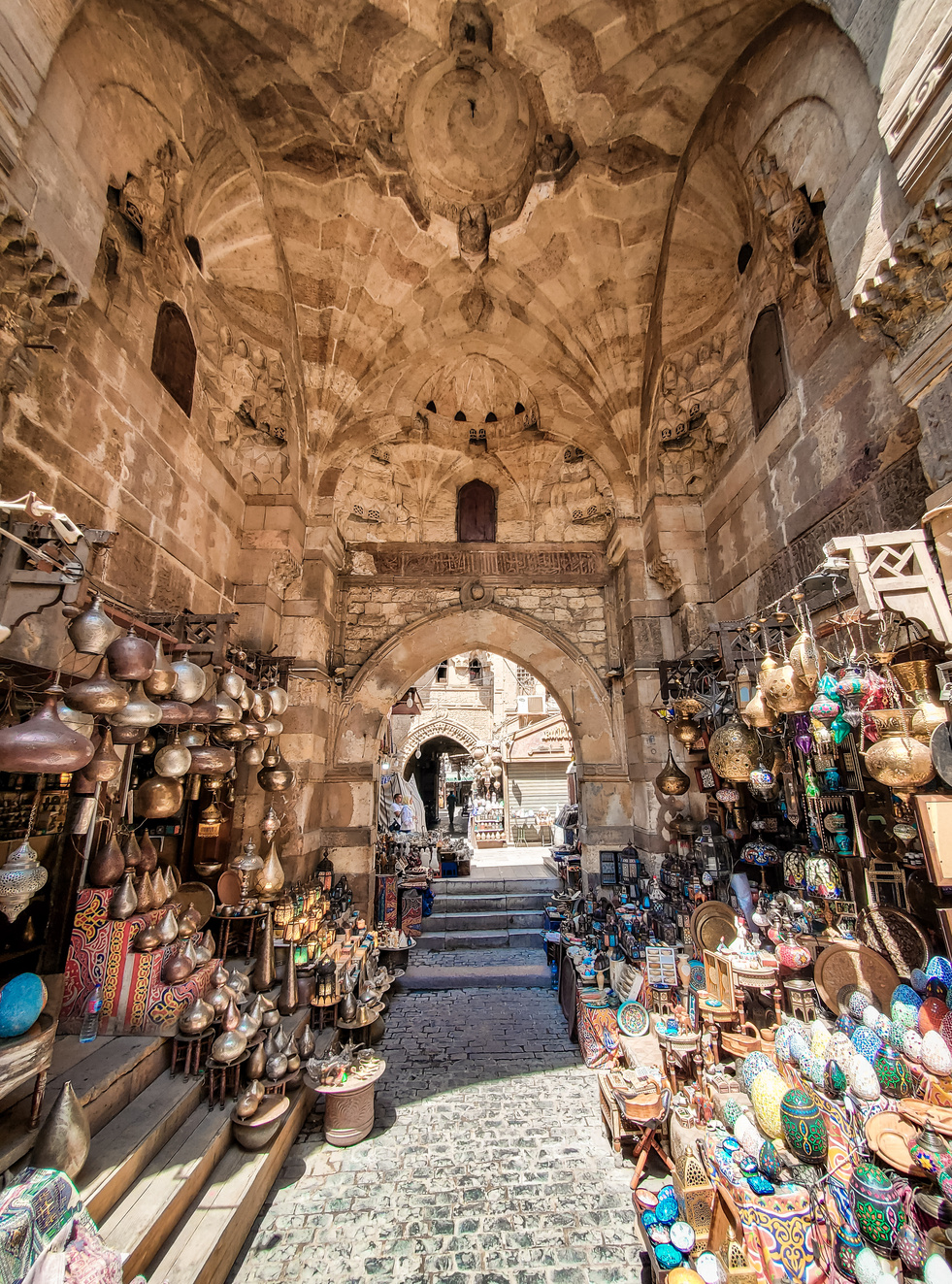
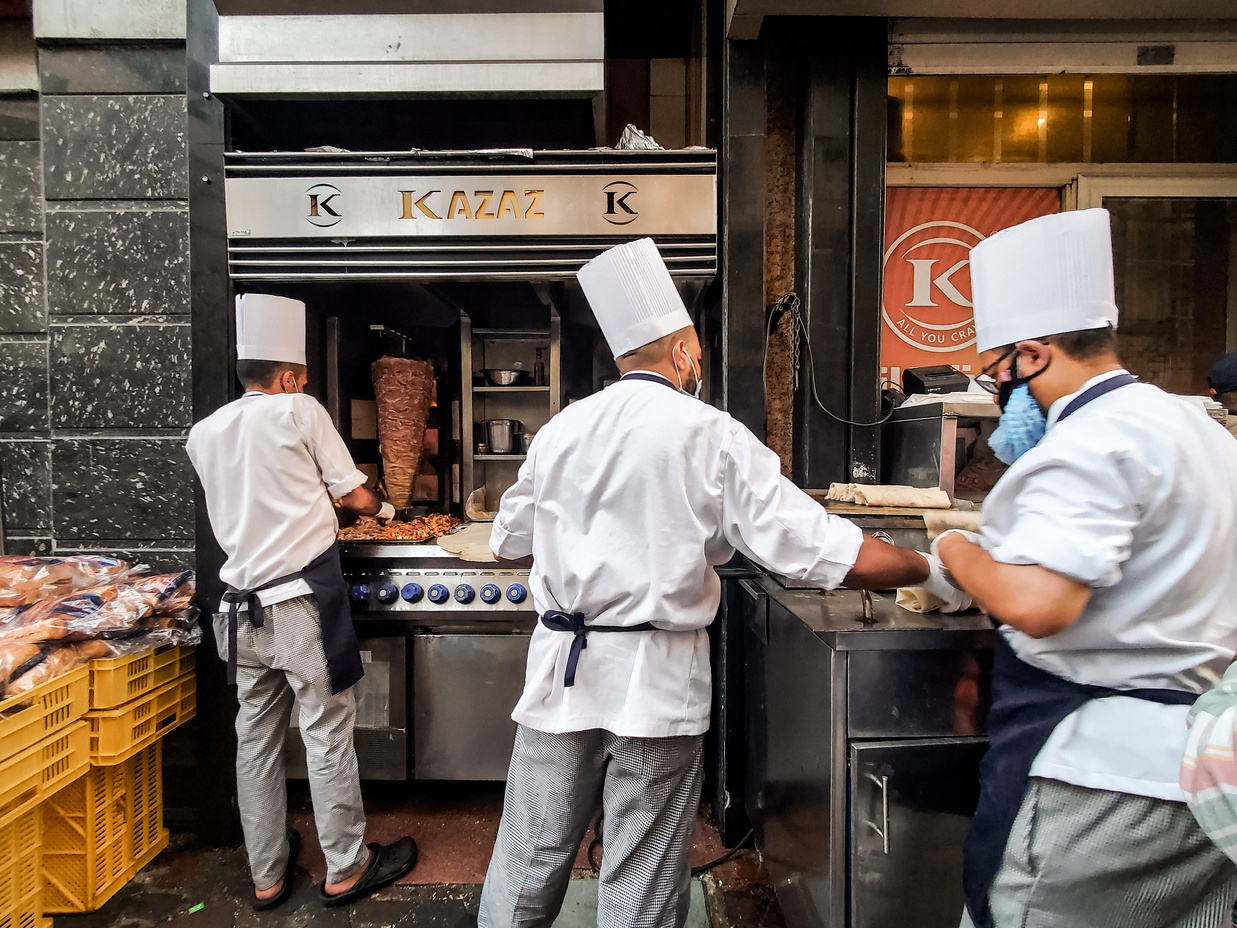



Amman - part 1
Our Lessons
Soaking up the Jordanian sun over the sprawling metropolis city of Amman: Having left the dust from the Sahara behind in Cairo, the first word that comes to mind here is: “clean”! As we admired Amman's sprawling landscape of well-kept brown and tan buildings, we were told Jordanians are actually required to build their homes from limestone, or at least paint them the color of limestone, in order to maintain their "natural" beauty.
Jordan is a constitutional monarchy; its current king is half-British and is apparently well-liked. Unlike other neighboring countries, Jordan does not have an oil industry. Its economy is based highly on tourism and service; meanwhile, its government and military are provided major financial assistance by foreign countries like the United States and Europe. Per the U.S. State Department website, this is due to Jordan's mutual goals of "lasting peace" in the region. Our tour guide’s interpretation: it’s not because they are super-good friends; rather, Jordan shares the largest border with Israel. Hence, if Jordan ever falls victim to destabilization or terrorism, Israel, a larger Western ally, would also fall!
Memories of COVID-19 headaches: To set foot in Jordan, we needed two back-to-back PCR tests (one to exit Egypt, and one to enter Jordan). Each country had constantly changing requirements during these days; so frustrating to keep up to date, but a truly eye-opening time to see the world. Too bad we couldn't pay with these ancient coins with Alexander the Great's face...

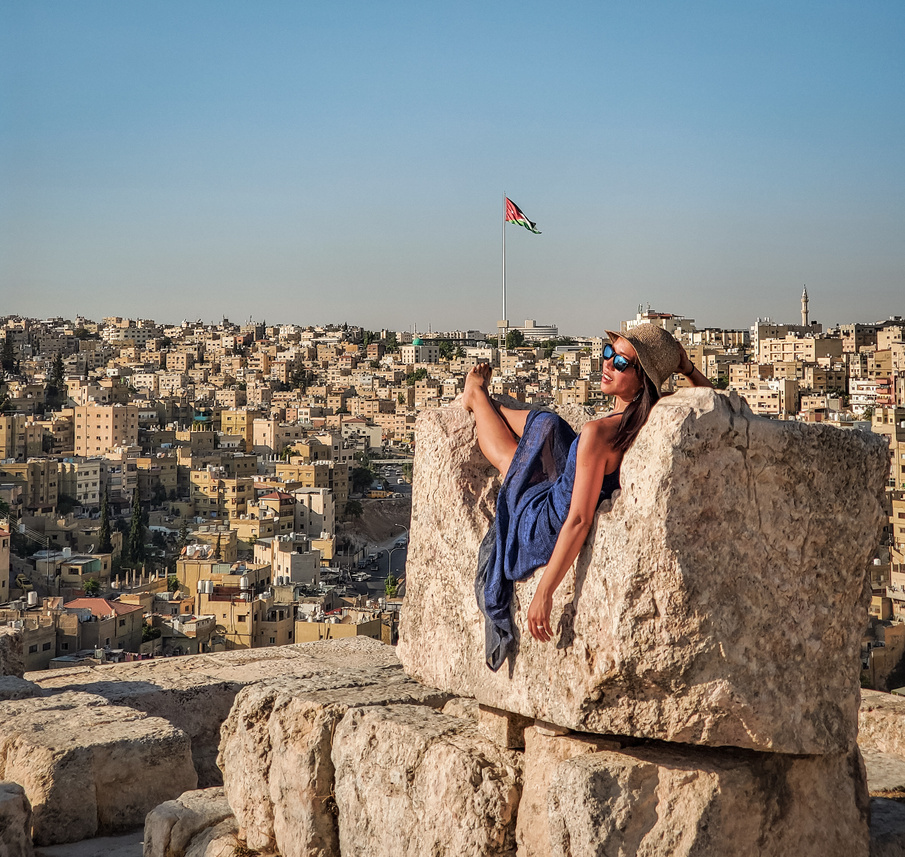
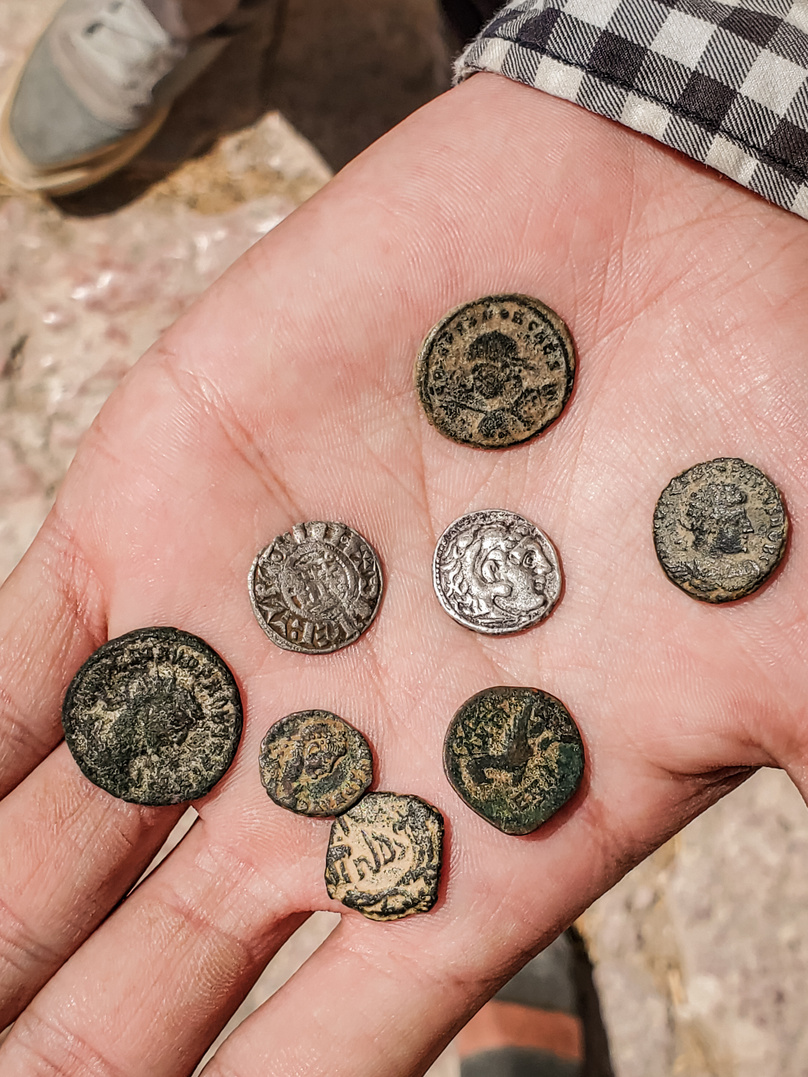

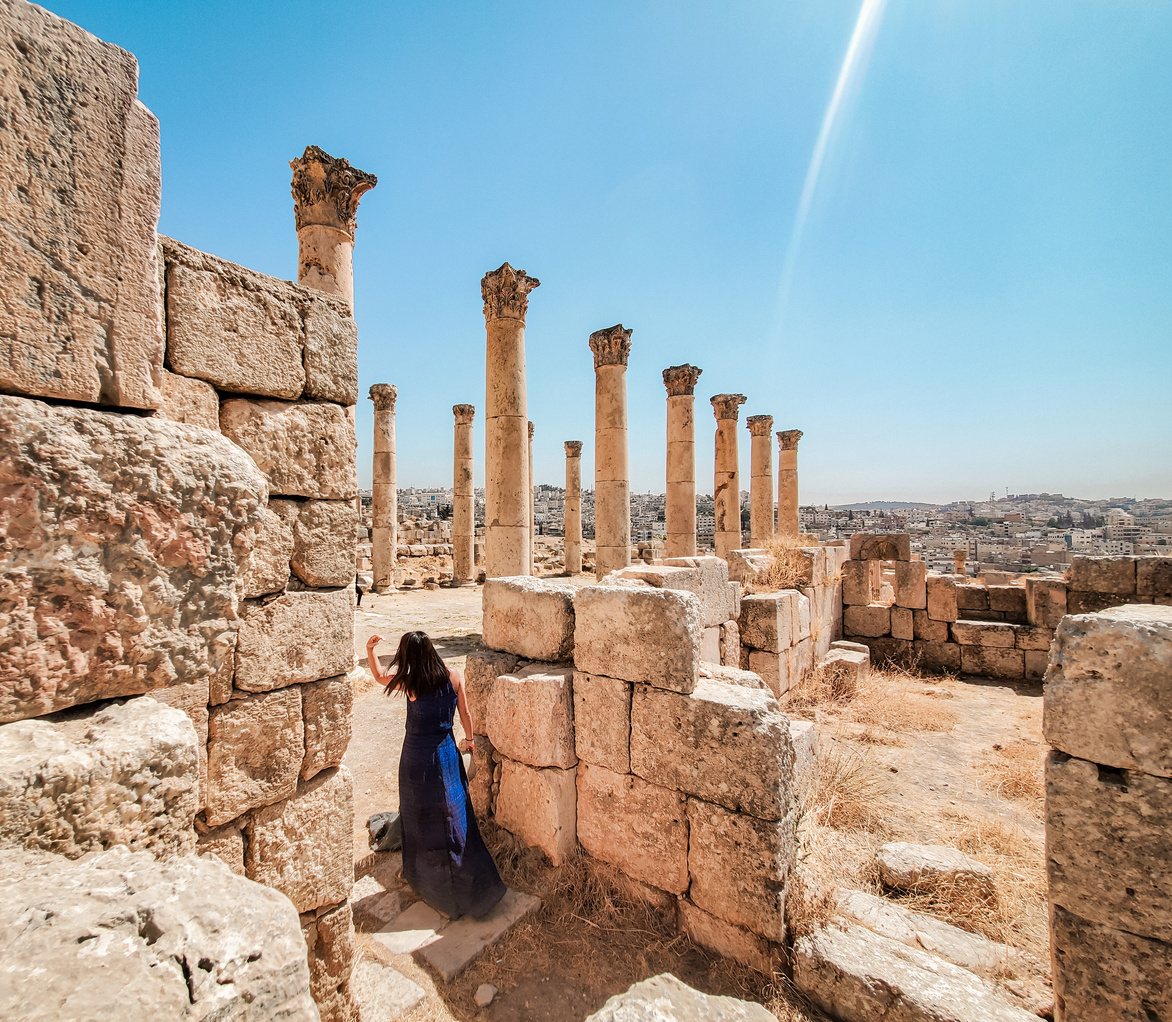
Amman - part 2
Our Lessons
There was so much we had never been taught about these beautiful Middle-Eastern landscapes! In the 6000-year-old City of Jerash, a gorgeous Roman amphitheater and other major structures remain fairly intact. They were built in the Greek era (around 300 BC, the time of Alexander the Great). This whole area is considered an acropolis: a fortified part of the city, where government and religious structures are.
From there, we headed to the castle of Ajloun, which was the ending point of the Second Crusade. The Crusades were a dark time for Christendom, we learned: Between 1095-1291 A.D., poor peasants of Europe were repeatedly promised by the Pope himself that they would be rewarded spiritually for their quests to save persecuted Christians from “savage” Islamic invaders. In reality, this was mostly politically-motivated deception... and if eternal salvation was not enough, religious leaders further promised crusaders that the Middle East would be the “land of treasure and riches,” which they could bring back to their starving families. Unfortunately, more often than not, the Crusades benefited only a small minority of individuals, at the expense and lives of many.


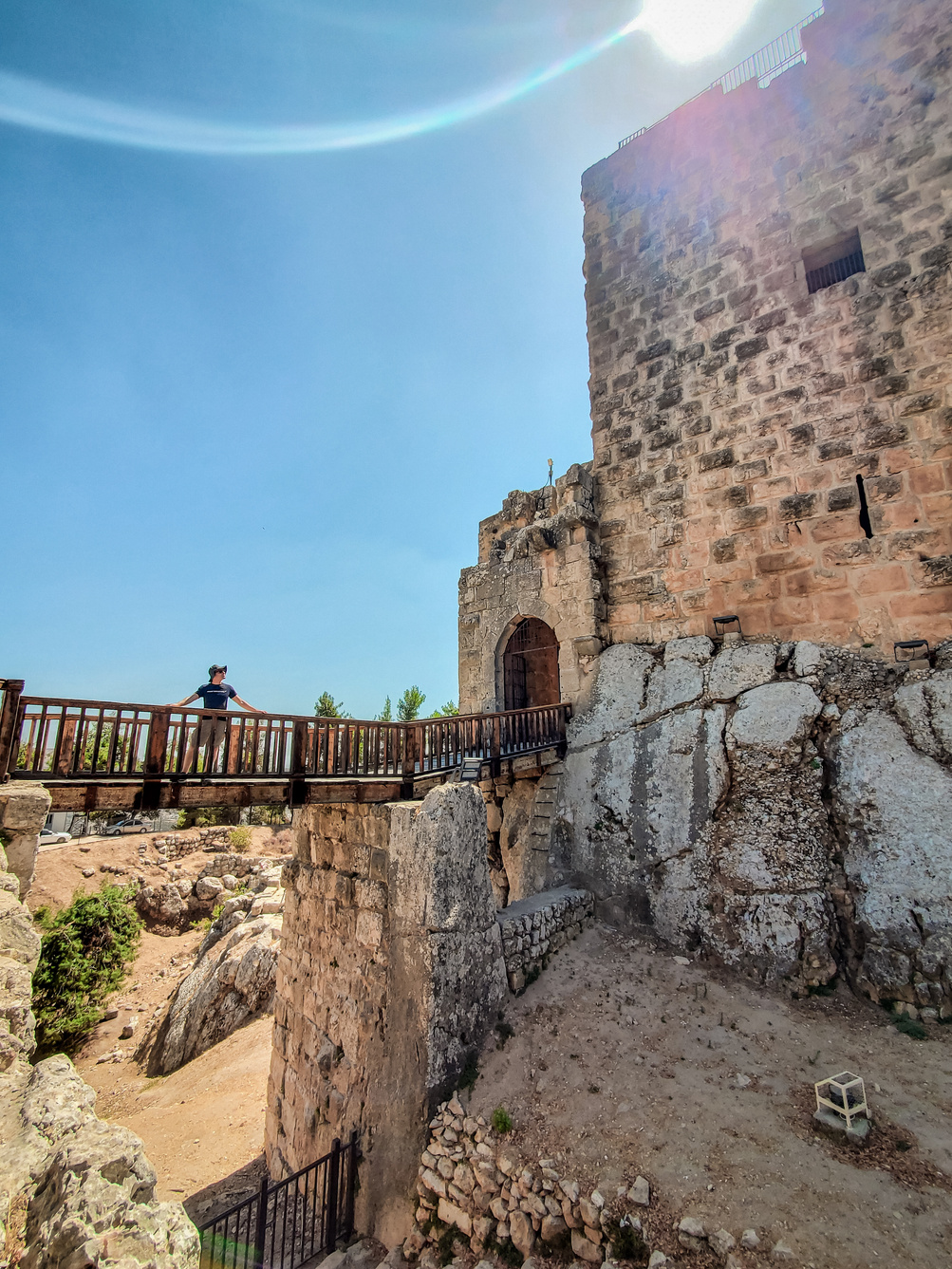
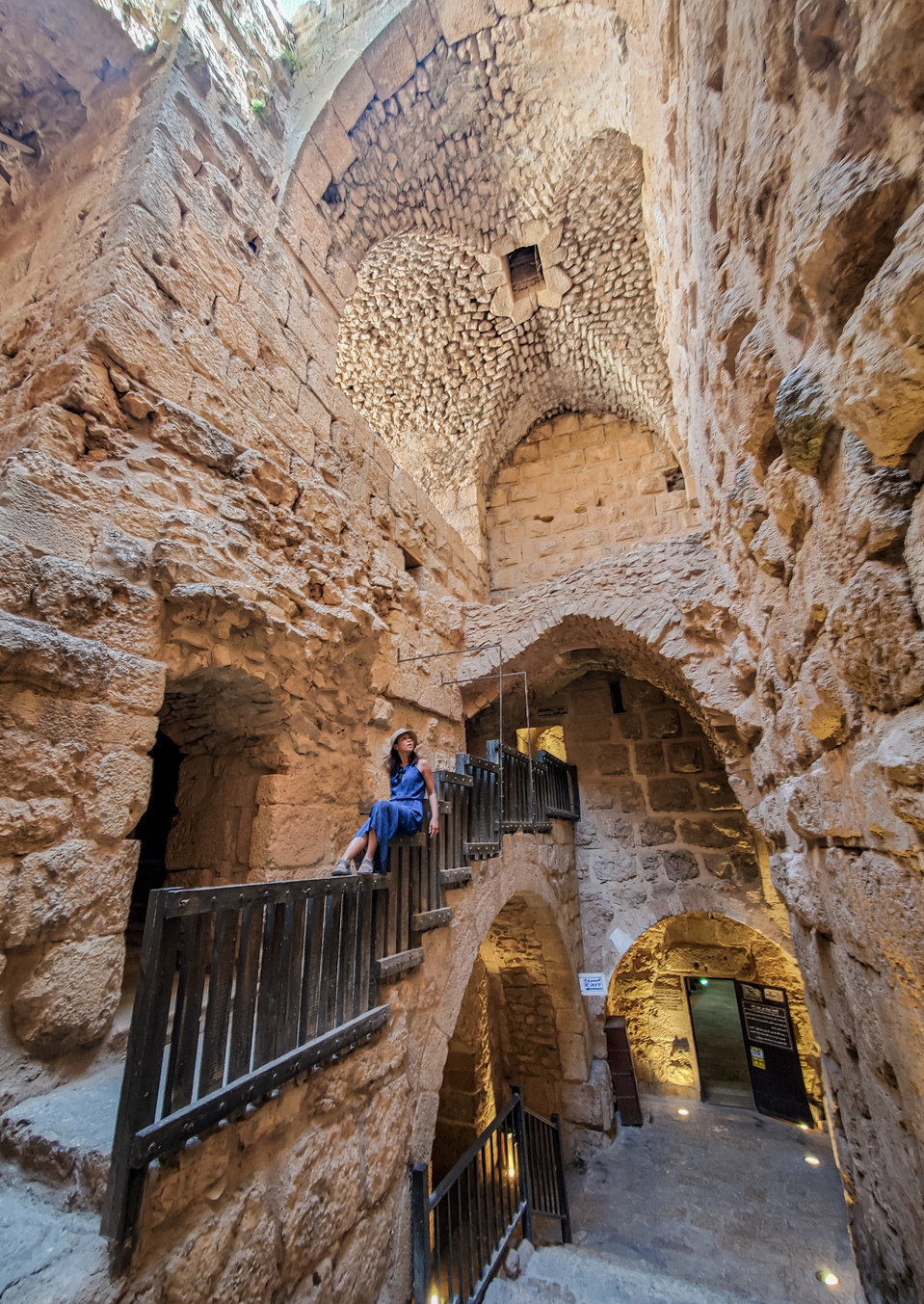

Wadi Rum - part 1
Our Lessons
Wadi Rum, one of the most breathtaking natural landscapes we experienced this year, seemed oddly familiar to us. Without realizing it, we have seen this famed red-sand desert in countless movies: The Martian, Star Wars, Transformers, and John Wick to name a few. The infamous historical figure, Lawrence of Arabia, spent time here while rallying the local Bedouin people to support the British in a war against the Ottoman Empire a century ago—ending in a British victory, largely thanks to the Bedouins. This contributed to the formation of some of the Middle Eastern borders that we have today.
On our way to Wadi Rum, we made a quick stop at the historical Hejaz Railway, whose destruction was key in cutting off supply lines and the subsequent defeat of the Ottoman rule over this territory.
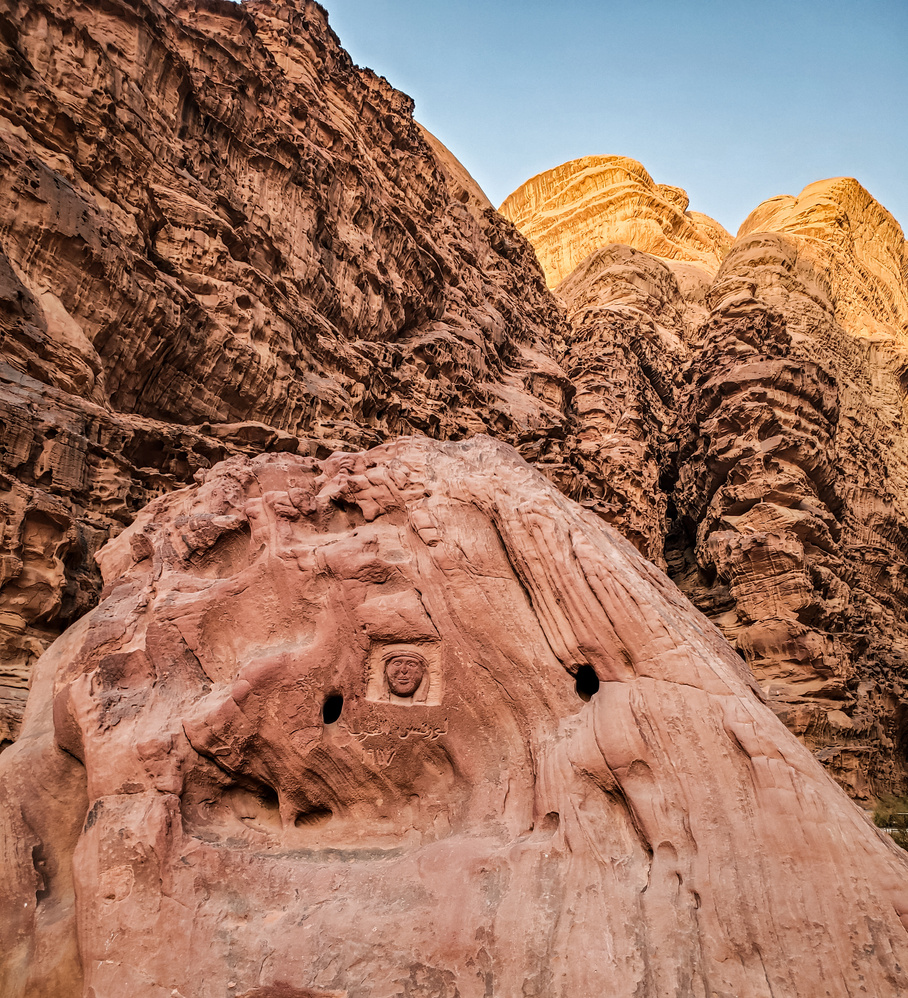
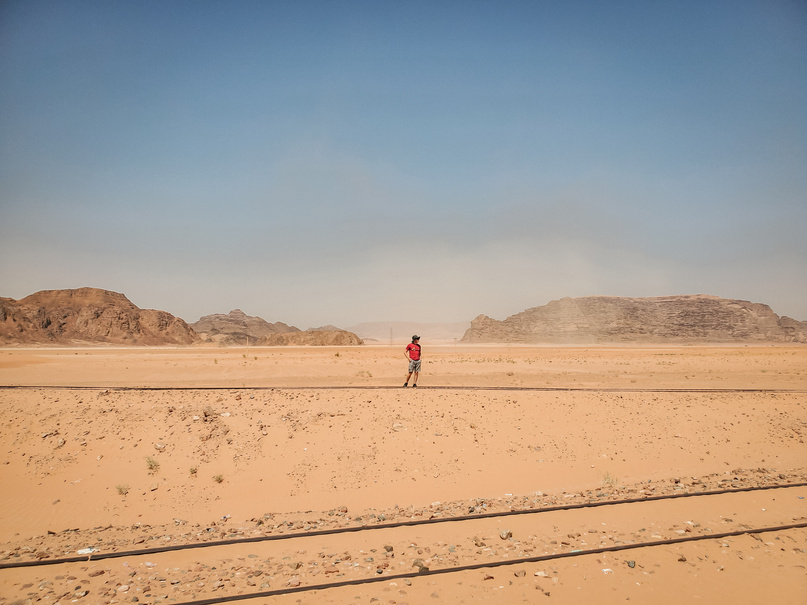


Wadi Rum - part 2
Our Lessons
Wadi Rum's sandstone cliffs look truly otherworldly: over the ages, they literally have assumed the shapes of mushrooms and melting wax! The colors here are incredible: most prominent is a deep red, from an abundance of iron. What makes it truly eye-popping, however, is the addition of purple, yellow, and white accents (from manganese, sulfur, and calcium, respectively). The resulting formations are renowned as a rock climber's paradise, with perfectly rippled handholds. We spent hours riding in the back of a pickup truck, taking in the sights while enjoying a much-needed breeze. There is something unforgettable about this desert sunset!
Today I am appreciative of having made a new (similarly sized) travel friend, who enjoys trading clothes with me, so we can both add some variety to our lives! A small problem with backpacking is your wardrobe is extremely limited :)




Wadi Rum - part 3
Our Lessons
We were pleasantly surprised to find that our Wadi Rum desert tents were equipped with air conditioning! This definitely qualified as a serious ‘glamping’ experience. We had a fun night dancing around the campground with our Jordanian friends and even practiced some traditional dances ourselves. Here, we learned it's normal for Jordanian men to hold hands when dancing, and we had a great time joining in as formed a larger dance circle. We also enjoyed a delightfully mouth-watering zarb cookout. Zarb is a traditional way of cooking of the Bedouin desert nomads, in which an underground 'oven' of hot coals is created by digging a hole in the desert sand! After a few hours of cooking, the meat becomes so tender that literally falls off the bone.

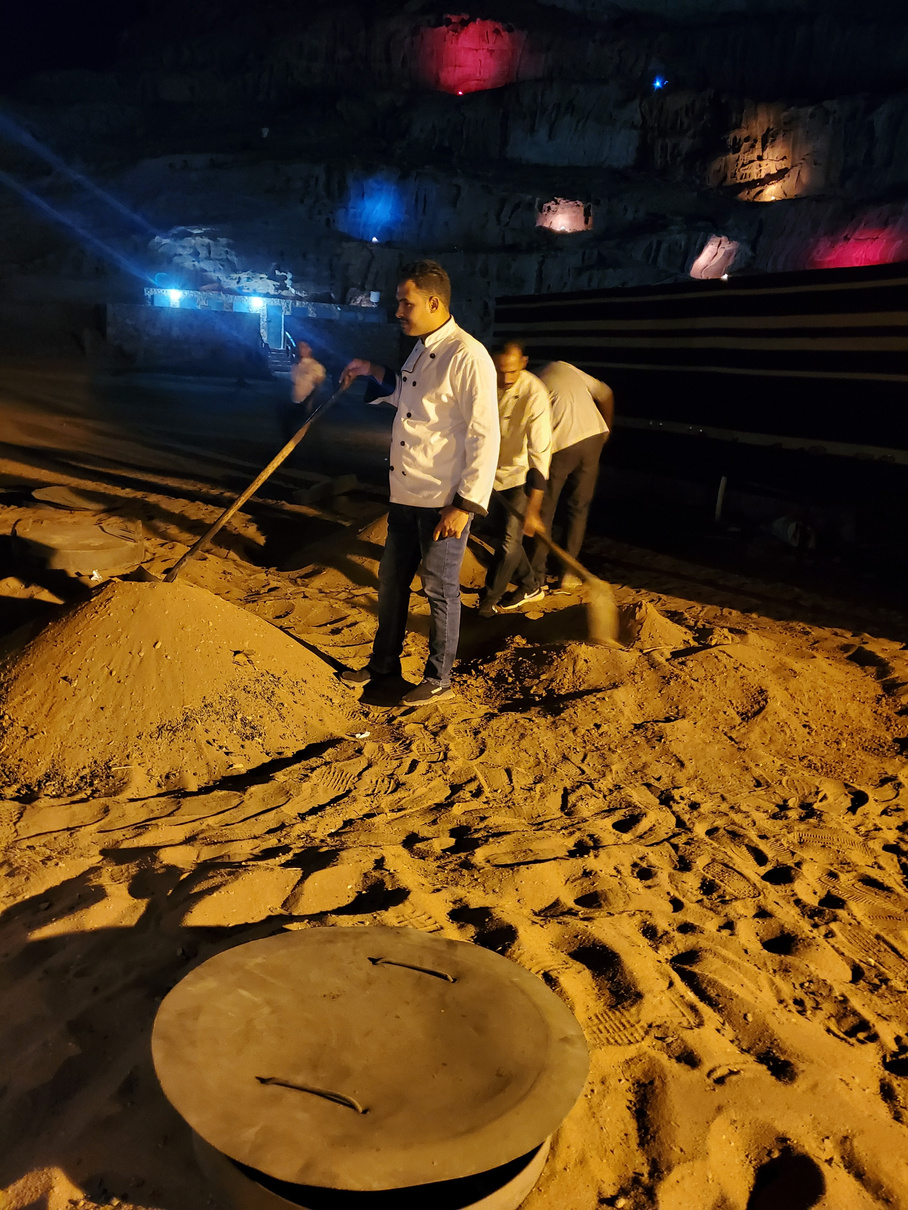
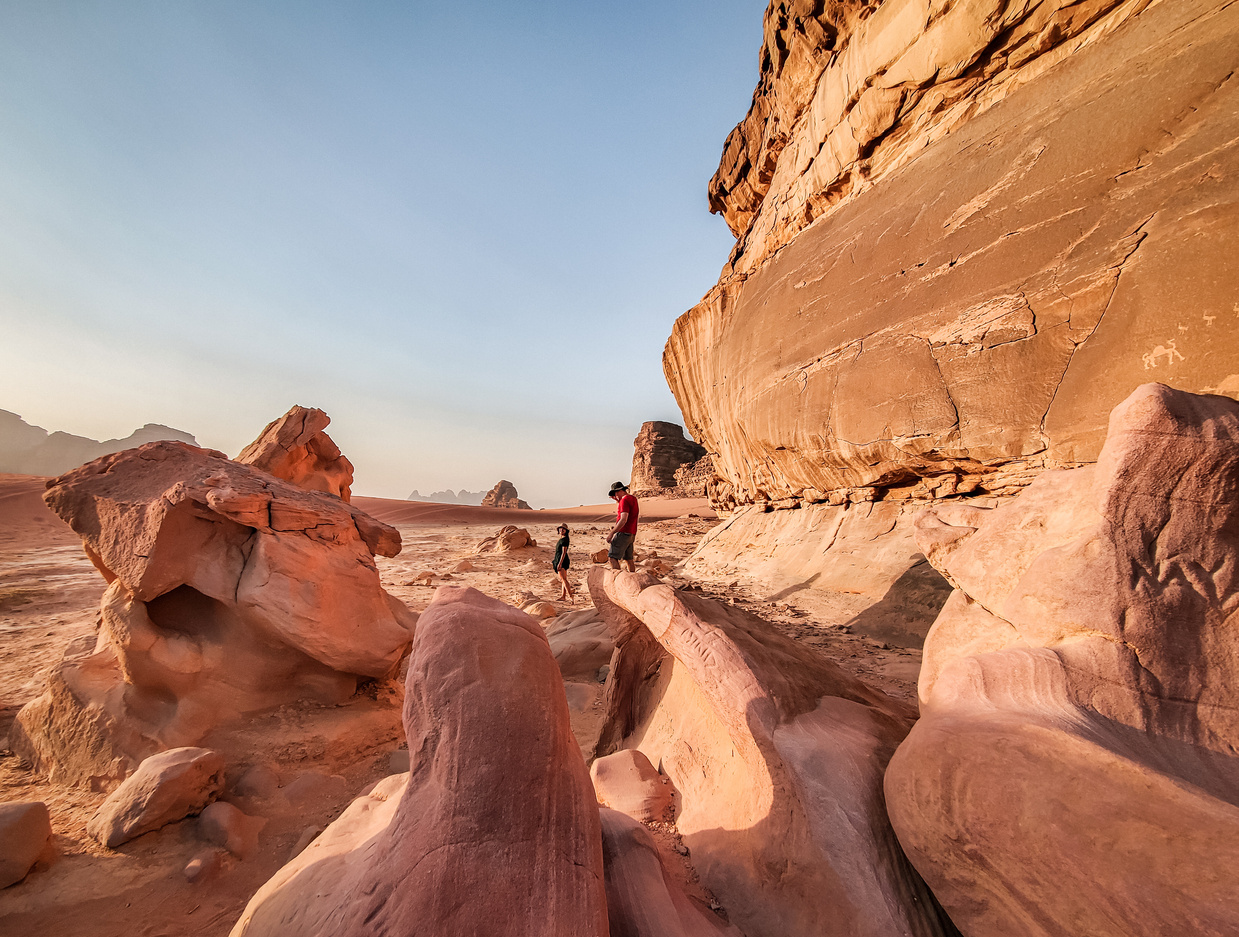
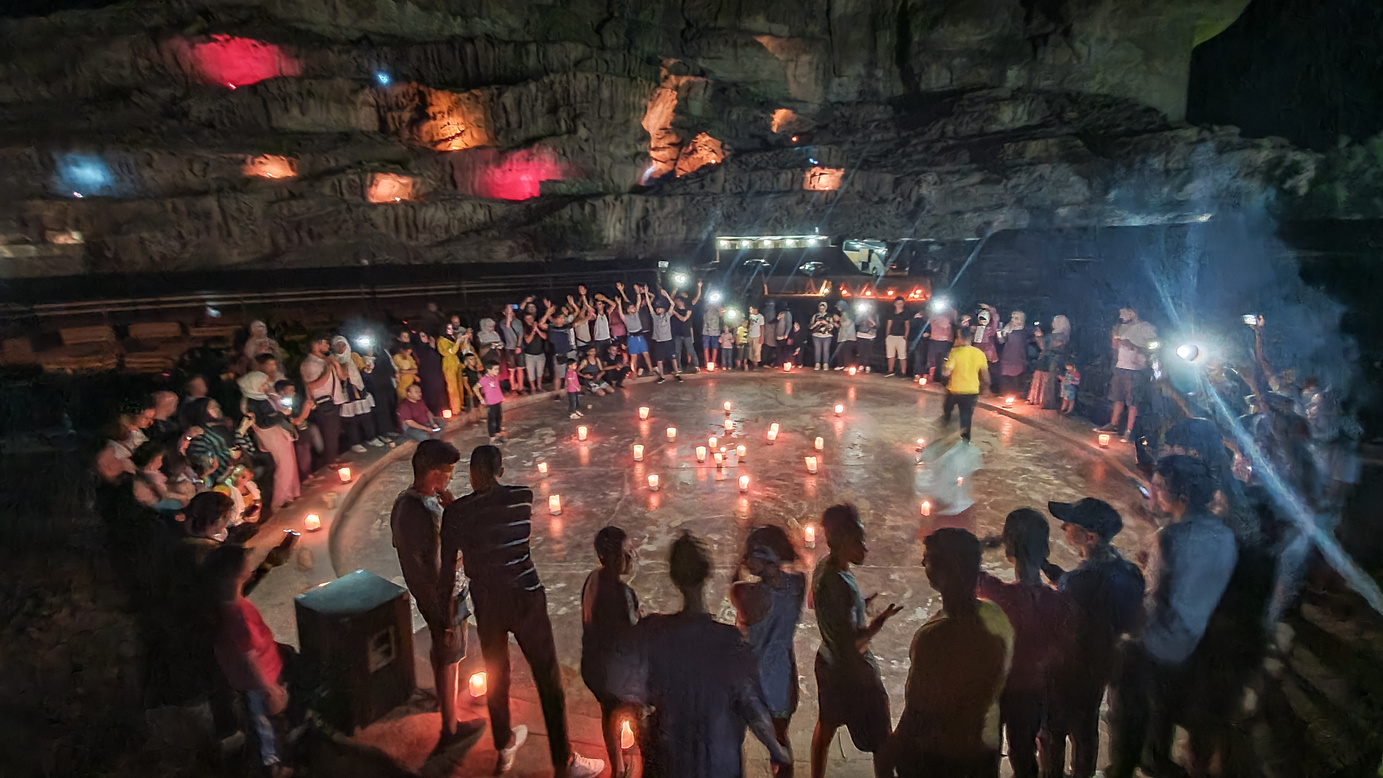
Petra - part 1
Our Lessons
Similar to the famed “Silk Road” of Asia, the “Incense Road” was a trading route of great importance in ancient times, and it is largely responsible for putting the ancient city of Petra on the map... that is, until Petra was ‘lost’! 2,000 years ago, the city’s location allowed it to serve as a strategically located “oasis,” where traders came from far and wide with frankincense and other luxury commodities. Being in the right place at the right time bestowed tremendous wealth and power upon Petra’s inhabitants, the Nabataean civilization. Cleverly, the Nabataeans elected to build Petra behind vast cliffs, so approaching armies would struggle to overtake it.
The majestic “Treasury” building, whose façade was featured in Indiana Jones and the Last Crusade, is just one of Petra’s ornate tombs carved into the cliffsides. While the Treasury was indeed magnificent, we were so much more impressed to learn that Petra was actually a sprawling city, with over one thousand tombs, and huge stand-alone stone buildings! Even more amazing, Petra is now known to have had a highly sophisticated system of water acquisition: so advanced, in fact, that its pipelines are believed to have carried enough water from 7 kilometers away to have supplied fountains within the central city! There is even some evidence that the city featured an enormous pool—all in the center of an arid desert (sounds a little like Las Vegas to us!).
Tragically, the combination of occupation by greedy empires, the establishment of alternative sea trade routes, and massive earthquakes eventually led to the downfall of the Nabataean Empire and Petra. In the end, its people simply left what remained of Petra behind. As generations passed, the city’s ruins were so well-hidden within its protective canyon, that it was completely forgotten for over a millennium... until nomadic Bedouin tribes rediscovered it in the 1800s, and mistakenly thought its tombs contained hidden riches. Unfortunately, this was not the case, but not all treasure is silver and gold: Now, Petra is one of the most awe-inspiring sites on Earth, and like Machu Picchu, it is listed as a Modern Wonder of the World!
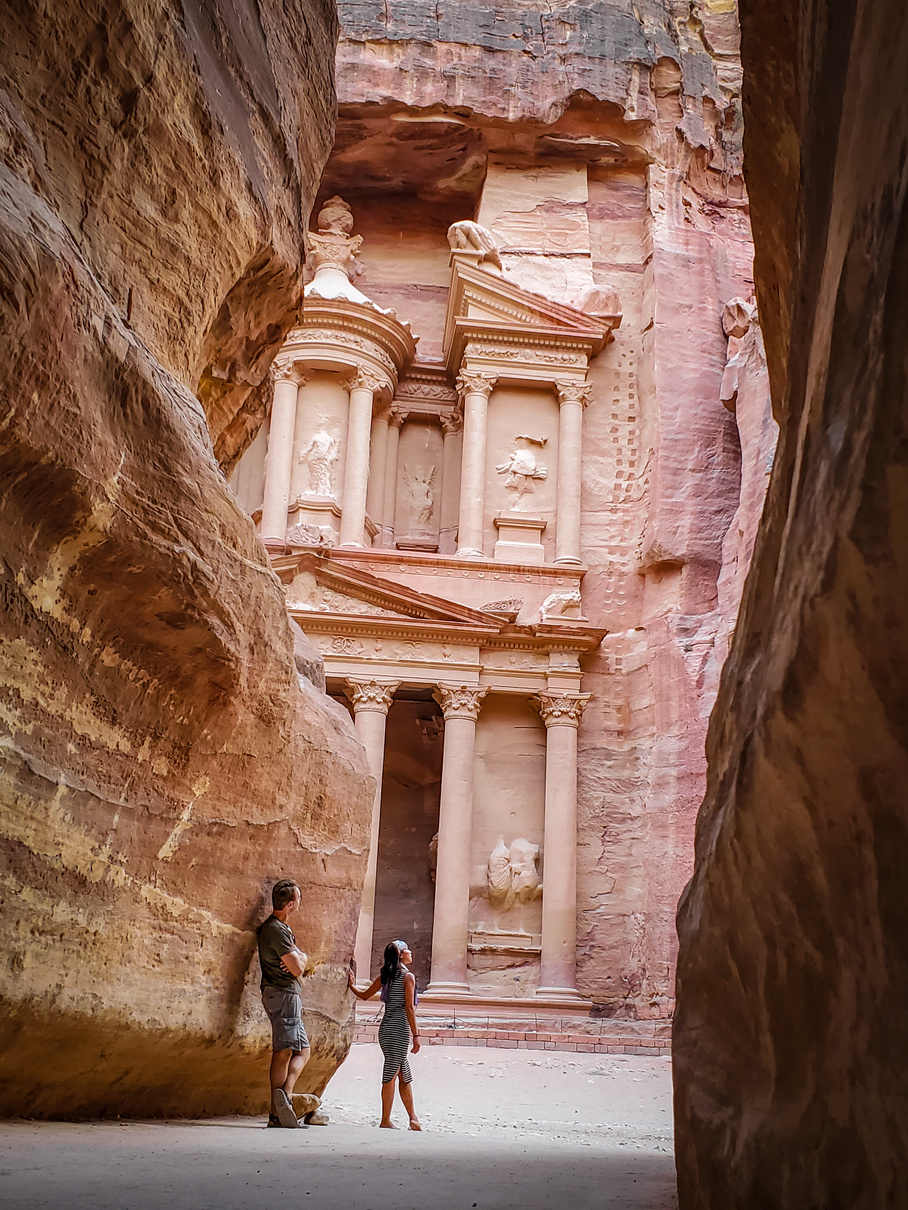
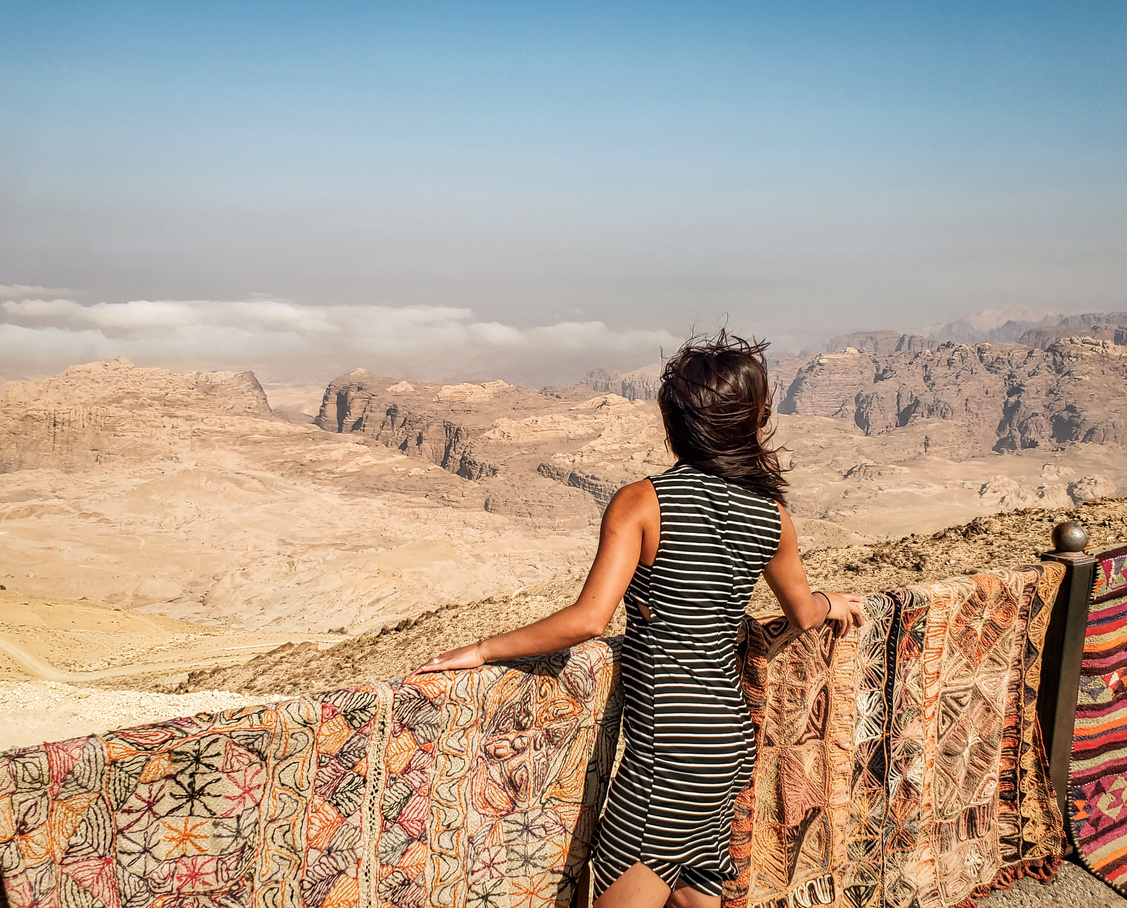


Petra - part 2
Our Lessons
In recent centuries, Bedouin nomads began to occupy Petra's abandoned caves. However, when Petra was declared a UNESCO Heritage Site, no one was allowed to live there anymore. Unfortunately, this led to the displacement of some Bedouins from their 'homes.' Now they are only here during the day to conduct business... and as we explored this vast ancient landscape, we occasionally came across commuter cars parked right inside the caves! We think it's worth remembering that although Bedouins have been chastised as “squatters,” technically they were here before the rest of modern civilization!
Another masterpiece that shouldn't be missed is the beautiful "Monastery" (so named by explorers; however, like all of the other ornately carved structures here, it is actually a tomb). Standing 47 meters tall at the top of a mountainous ridge, it was definitely worth the journey up 900 slanted and steep cliffside steps to marvel at its grandeur.
Having two full days to whimsically wander through Petra was an unforgettable experience. We were completely taken aback by its expansiveness; it's an entire ancient metropolis, with so much to see beyond the few, repetitive images that one frequently finds online and in travel books!

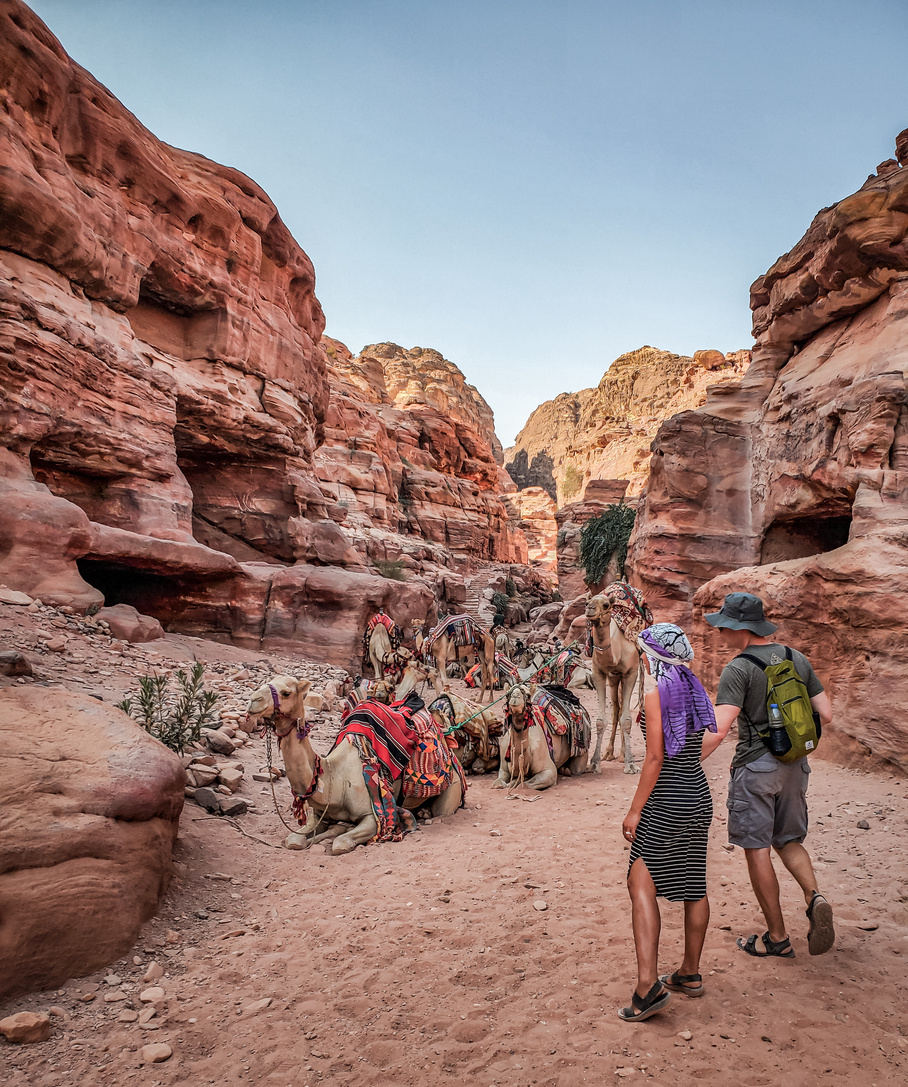
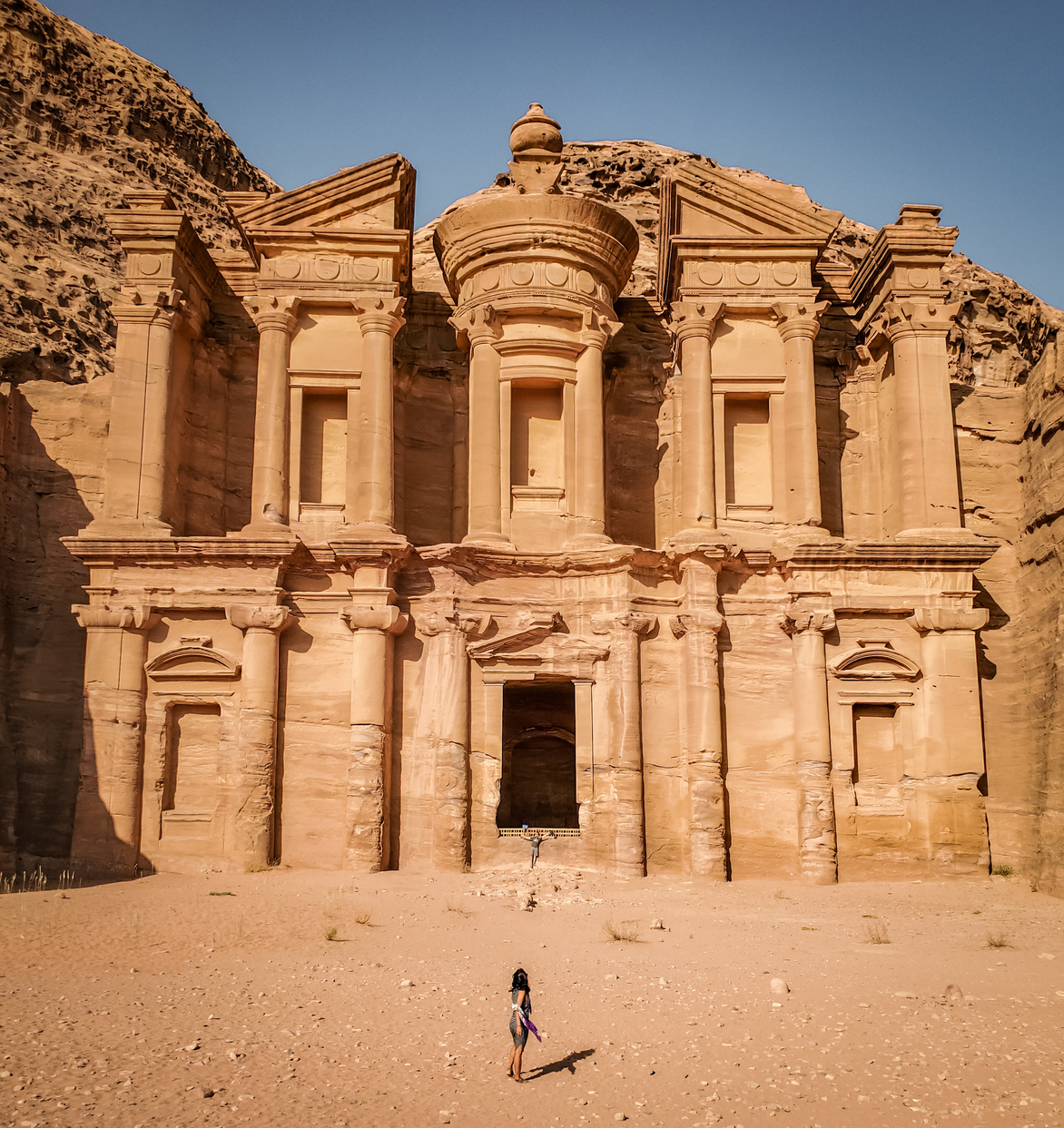
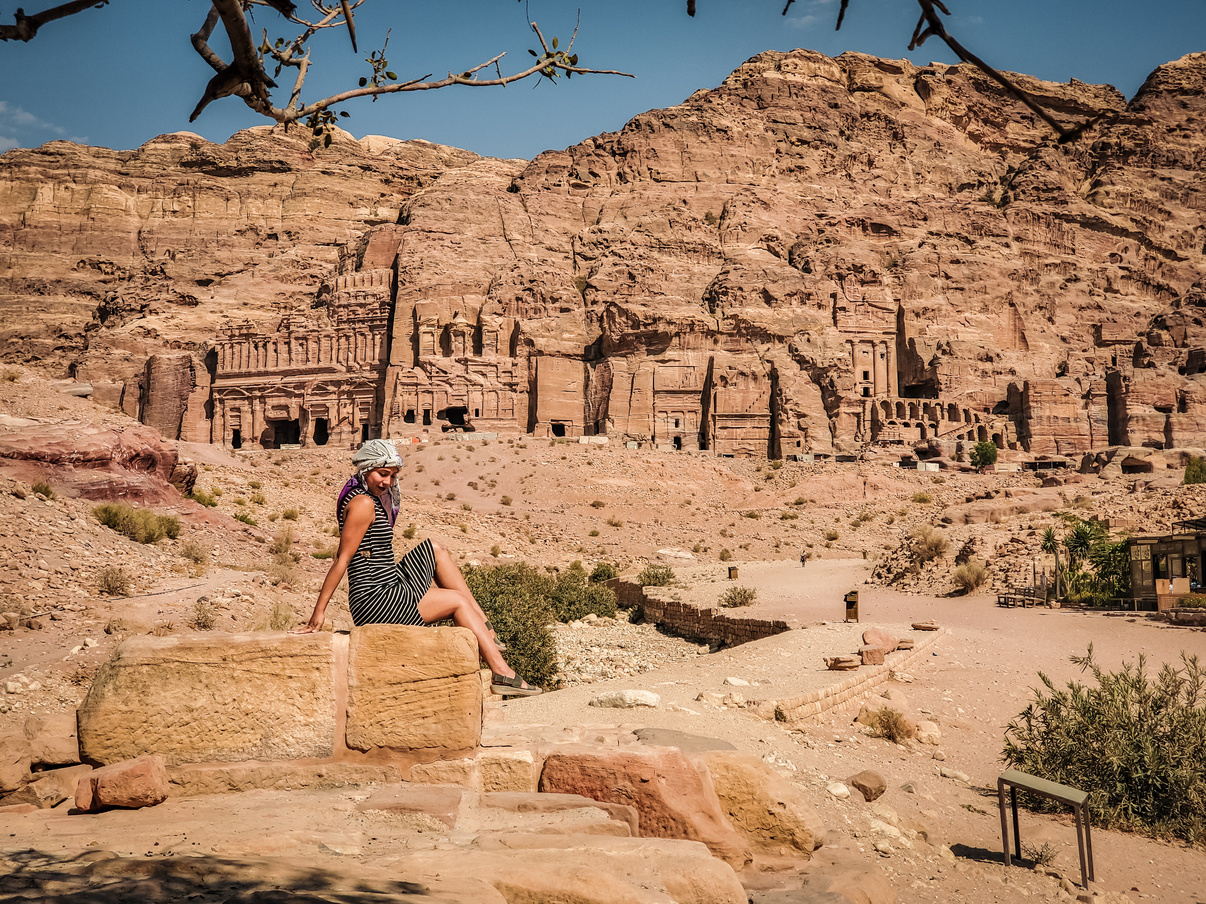
Petra - part 3
Our Lessons
Any event that happens to us can become a life lesson, and by allowing life to become our teacher, we find ourselves growing every day. The following event is a reminder to us: it is human nature for “bad” news, and bad experiences, to stick with us longer than the “good”; so, don't lose track of the good!
In an uncomfortable encounter, we met an angry teenager while on our hike to see Petra from above. Clearly looking for money, he insisted on giving us a donkey ride up the mountain. When we declined, he said the trail was closed. Then he threatened to throw rocks at us if we did not accept his ride or pay him. Keeping a distance, we again declined, while trying to remain respectful. We walked past him calmly, and thankfully, he did not follow us.
Sadly, the emotion of fear makes us more readily remember that (relatively small) moment, than the entire amazing evening that followed: we had a beautiful hike and met some amazing local Bedouin people at the top of the mountain, who owned a makeshift ‘café’ at the edge of a cliff. The café owners were eager to sit down with us to talk about their lives. They let us relax for hours on their carpeted, cliff-front steps—literally the world’s best view of Petra—with no expectation for payment/tip other than for the $3 cups of tea we bought. Such a beautiful experience!
We do wish to remember this story, but also recognize that the bigger picture leaves a positive perspective: In spite of being literally the only tourists on this side of Petra during a period of financial crisis, every single local we met—except for just one—was friendly, polite, and more than happy to talk to us or provide directions. Seriously: how unlikely would this be for someone touring New York City for two nights straight?
As tourists, it is natural to be concerned about safety; but to us, the Middle East—and most of the world for that matter—gets a bad rap. We cannot let an occasional scary story or experience let us live in fear of a place, or worse, a people. The more people we meet, the more we see that most people are genuinely good. We also remind ourselves that people naturally respond with respect when shown respect; with trust and positive energy when shown trust and positive energy :)

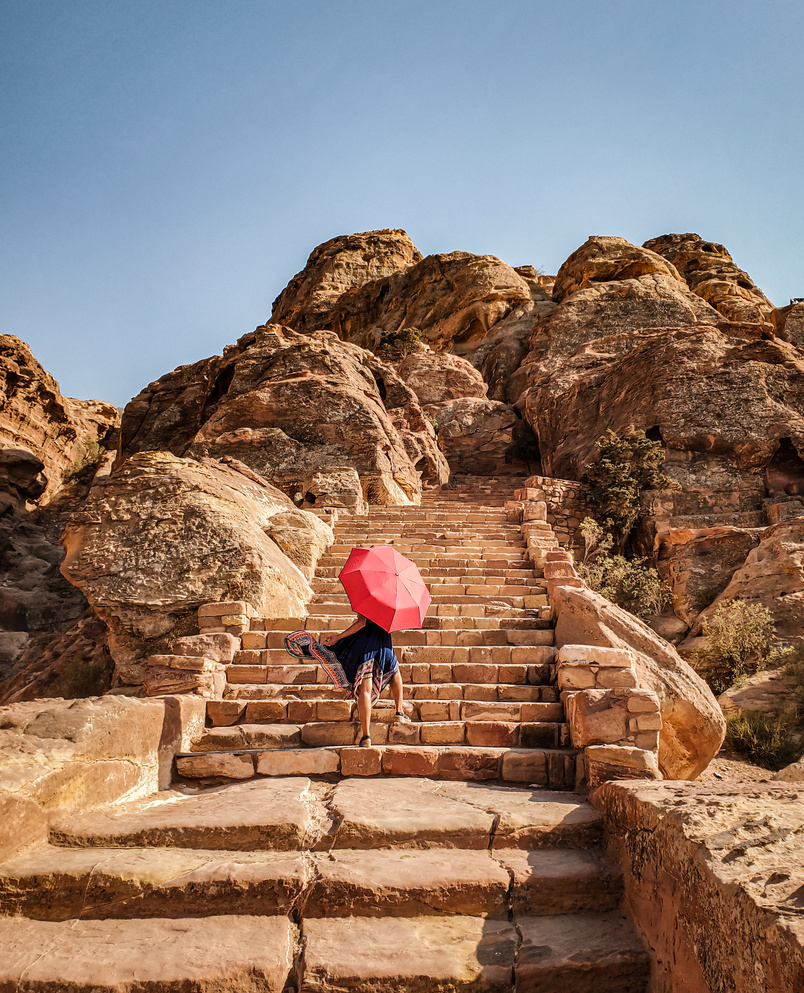
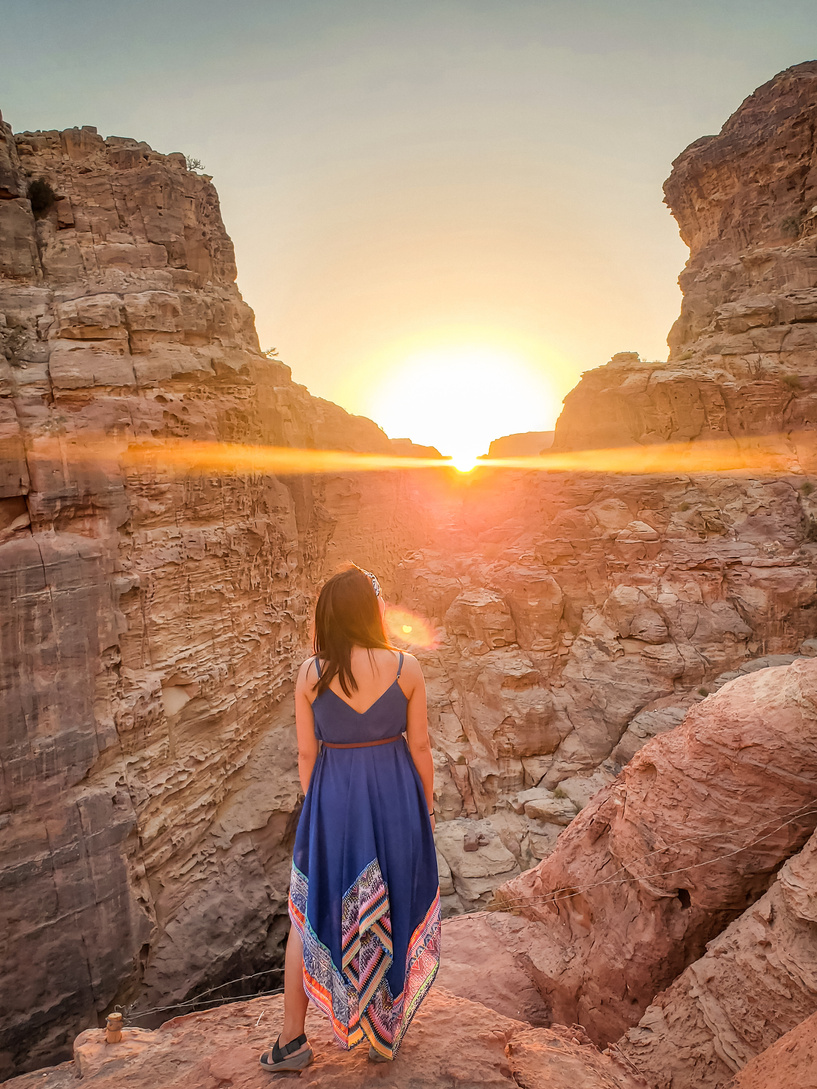
Petra - part 4
Our Lessons
They say that shadows only exist due to the presence of light.
Basking in a clifftop view of the sunset over this Lost City is a sight to behold… but the twilight return down the rocky mountain trail was slow! It was quite dark by the time we made it safely to the flat canyon floor, and it became apparent that there were no lights at all on this side of the canyon. Walking past a thousand caves, shrouded in pitch darkness was probably the eeriest experience of our travels so far… but then, as we approached the main canyon leading back towards the Treasury, we began to make out a faint orange glow, flickering on the walls…
This was truly a walk to remember: making our way through Petra's winding central canyon; our path became lit by shimmering candles, and the stars above. With the cliffs blocking out all external noise, we walked hand-in-hand, in silence. For a moment, we truly felt disconnected from the rest of the world, as if we had been transported into an ethereal fantasy (surely this mystical candlelit path marked the way we must venture to slay the dragon?).
Finally passing through the far side of the canyon, we gazed upon the Treasury, beautifully illuminated by the combined strength of a thousand candles. We sat peacefully, listening to the soft sounds of the wind and music, reflecting on how appreciative we are for the many beautiful moments in our lives together.
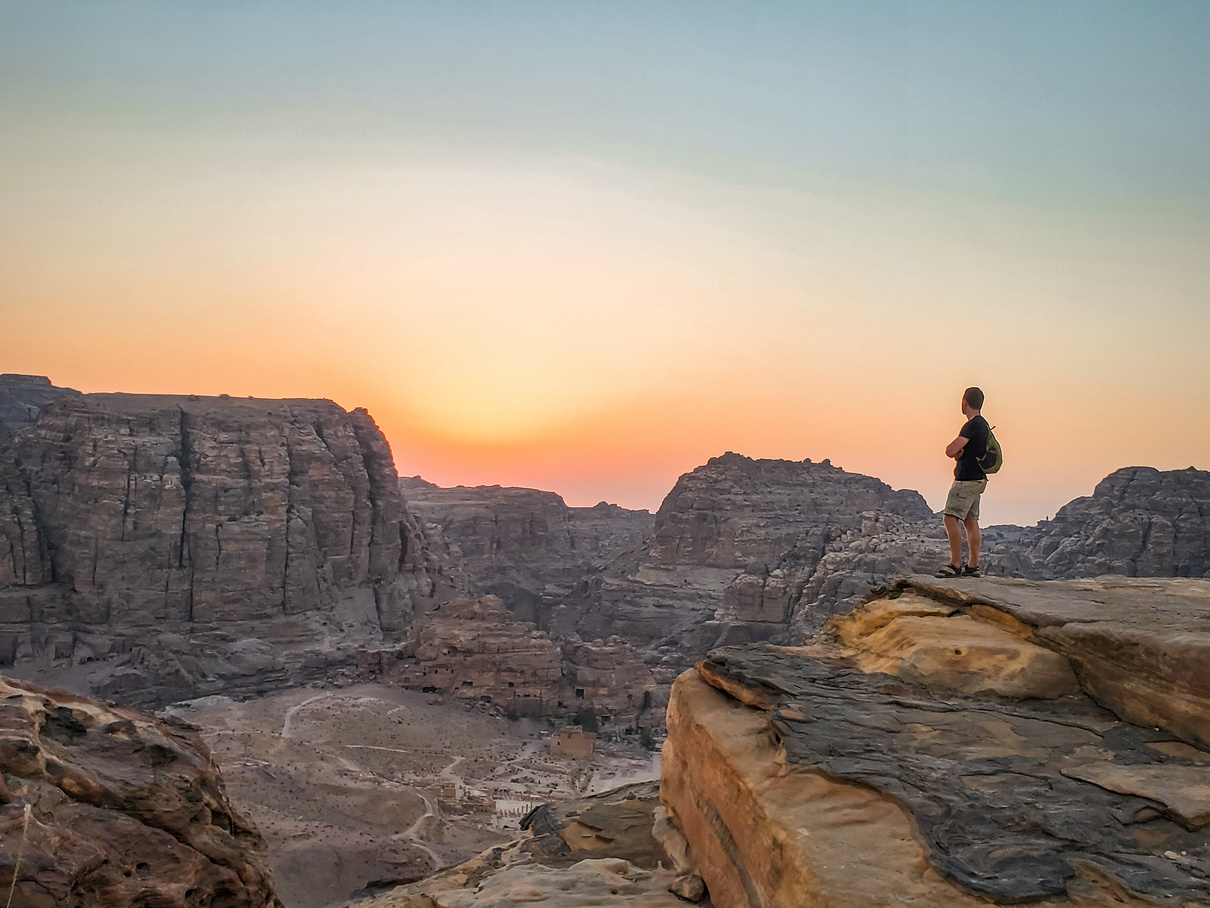

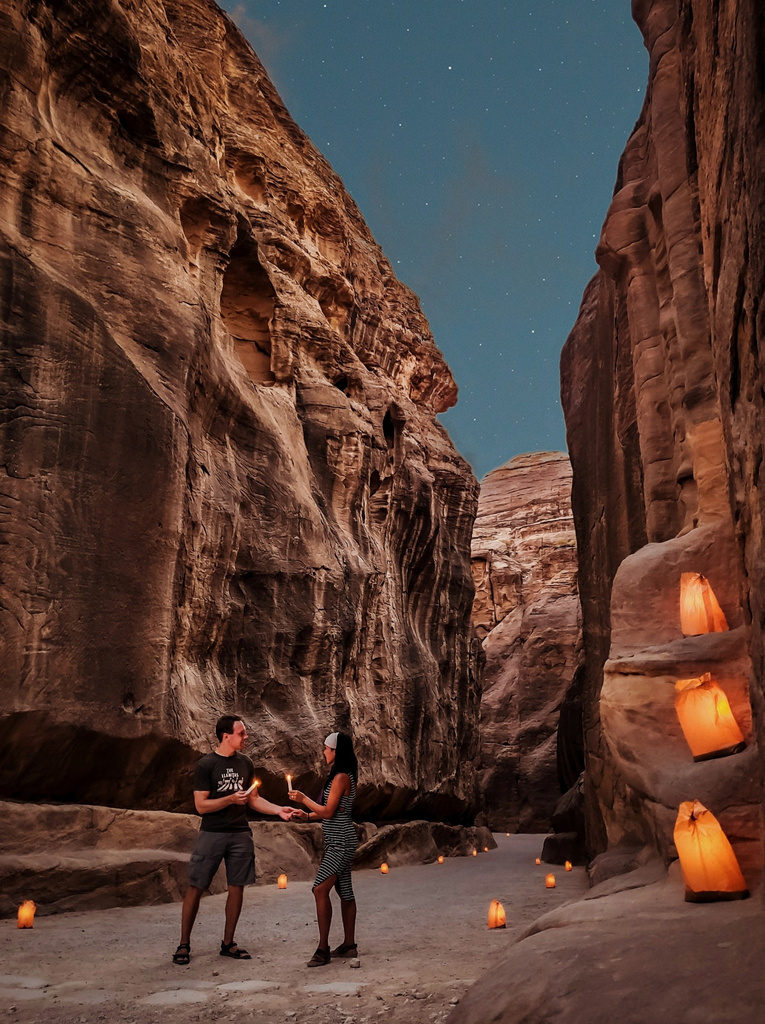

Petra - part 5
Our Lessons
After two days of exploring Petra in the desert heat, we cooled off and enjoyed an authentic Jordanian dinner, with a very hospitable local family over a homemade rice dish called maqluba, made in a giant inverted pot. Once the meal is cooked, the pot is literally flipped over onto a large platter. When removed, the meal retains the shape of the pot, forming an enormous solid tower of stewed chicken, vegetables and rice. We are told this is a traditional Palestinian dish—and in fact, the word maqluba literally means “upside down”!
From this kind family, we learned that it is considered rude for any Jordanian family to not invite a 'guest' into their home for at least 3 days (including cooking for them!), no questions asked... Apparently, this rule holds true regardless of whether it's an acquaintance or a complete stranger. If this is accurate, Jordanians win our award for most generous world culture!

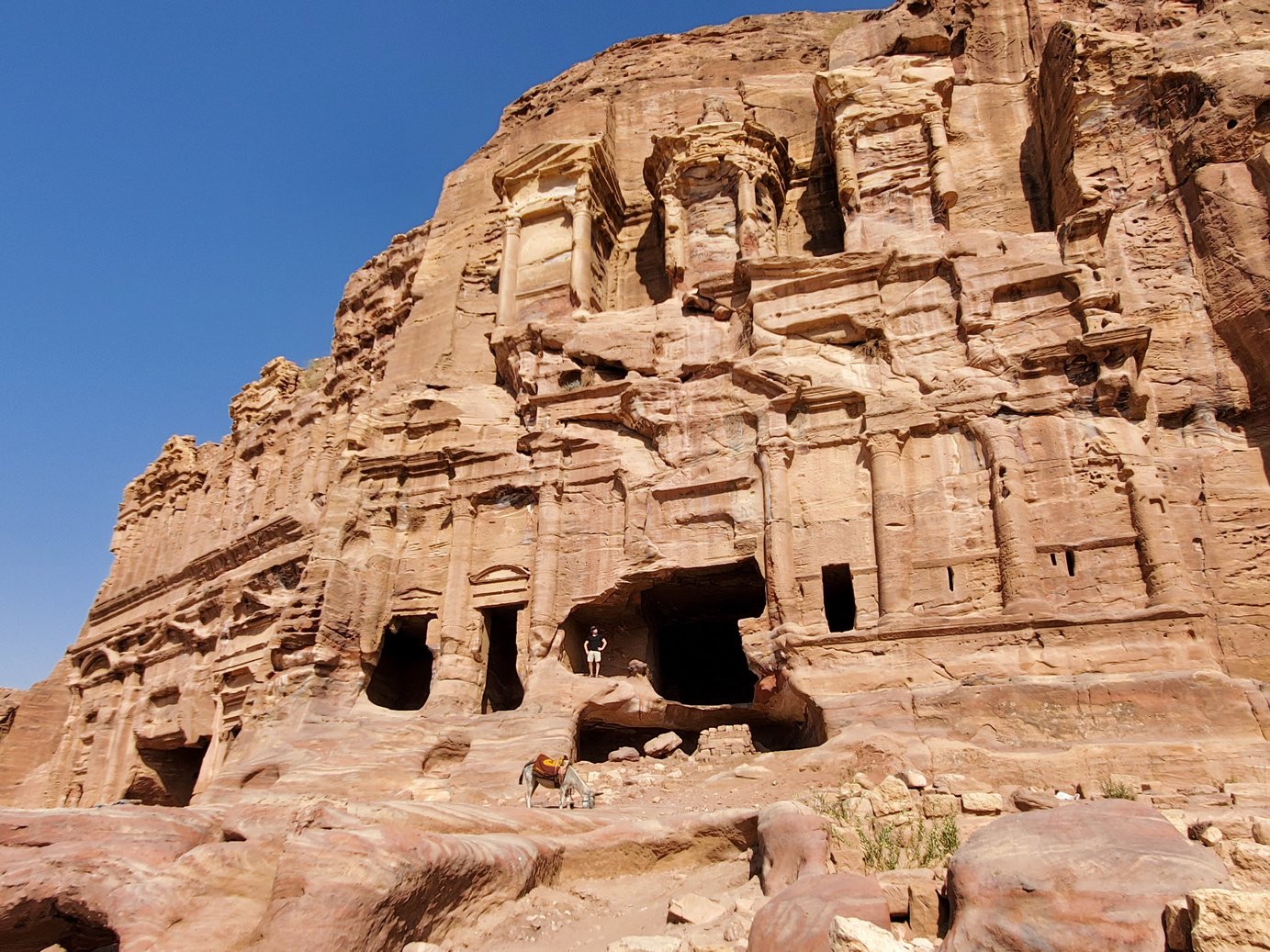
Drink upstream and pray for the best, Eric! Along the road, our tour group stopped for a sip from a basin of slowly flowing water. This, we were told, was water from the official spring which miraculously began to flow out of a rock that had been struck by the staff of Moses himself in the Old Testament! We are told that this spring has been constantly flowing ever since. Humbling himself before God, Eric got down on one knee, took a large sip from this rather stagnant-looking water, and prayed for a fortuitous and safe year of travel... and that he would not contract dysentery. Looking back, we feel blessed that both prayers have come true!



Dead Sea
Our Lessons
Our excitement over the experience of being able to "sit up" in water was partially tempered by the stinging in our eyes from the highly concentrated salt... and the realization of a striking fact: the Dead Sea is dying!
Water that supplies the Dead Sea is being pumped out of the upstream Sea of Galilee and River Jordan at an alarming rate, to feed industry and the growing populations in new (primarily Israeli) settlements. Water is likewise being redirected into shallow, man-made tide pools for “Dead Sea tourism”... however, we are told many of these resorts have been reclaimed by the Earth—literally collapsing due to the sudden formation of giant sinkholes. We learned that as the Dead Sea dries up, the formerly stable, salty ground is rapidly exposed to fresh rainwater. The rain dissolves the salt, which leads to the collapse of nearby land. As a result, entire roads around the Dead Sea have been swallowed up over the last five years, and many areas are now off-limits.
While some may argue the loss of the Dead Sea is a small price to pay for richly irrigated farmlands upstream, the distribution of the water is not equitable. Israel was supposed to surrender its occupation and sole ownership of the water supply in the 1990s, but local Jordanians tell us this never happened (with even the Times of Israel indicating that no more than one-fifth of the water that was promised under the accord of 1994 has ever been exported to Jordan). Summer 2021 news headlines confirmed that Jordan was experiencing severe water shortages... and unfortunately, this is just one way that Palestinian families living in this region felt betrayed by the Israeli occupation of their lands. At that time, Israel indicated that it would increase water exports and trade limitations with Jordan. As of August 2022, possibly some good news: Israel is in the process of constructing a pipeline that pumps desalinated water from the Mediterranean Sea back into the Sea of Galilee; hopefully a step in the right direction towards replenishing desperately needed water sources.
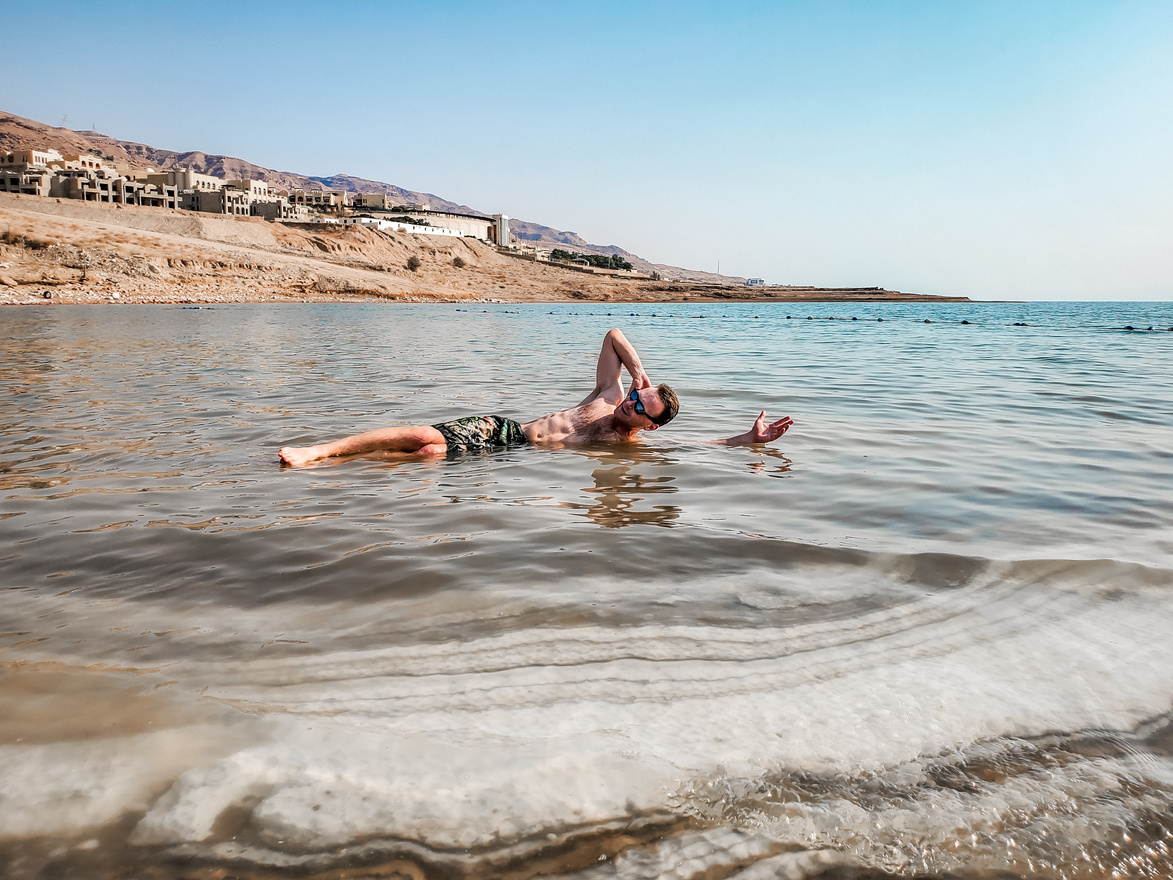
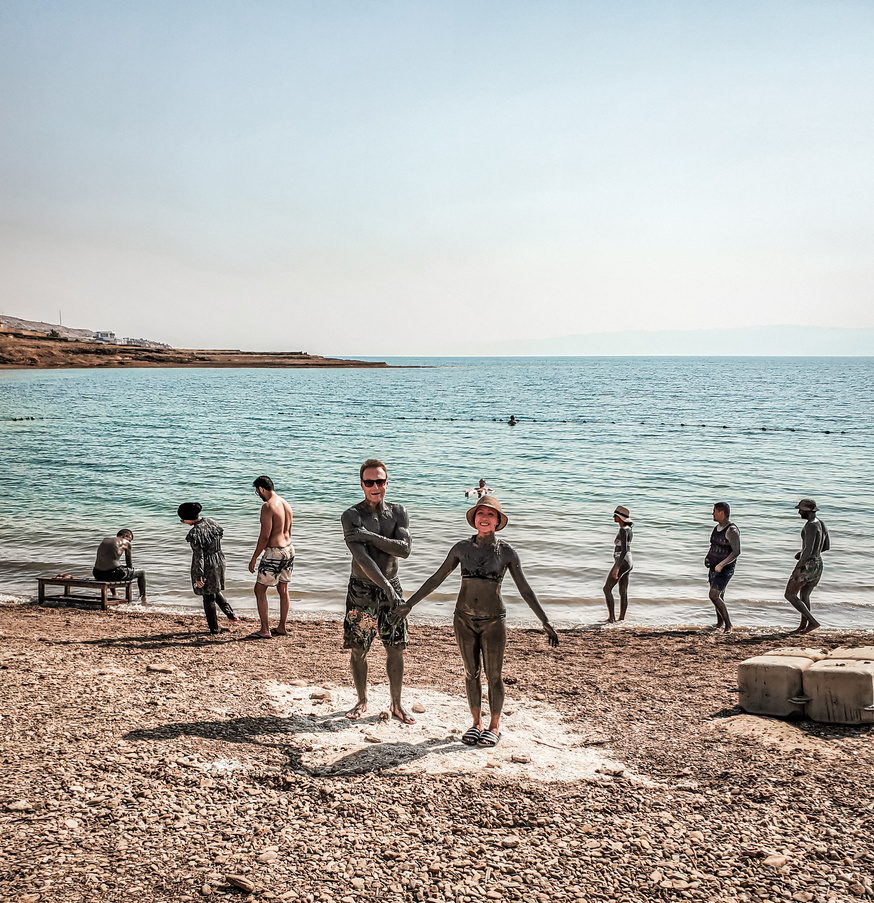
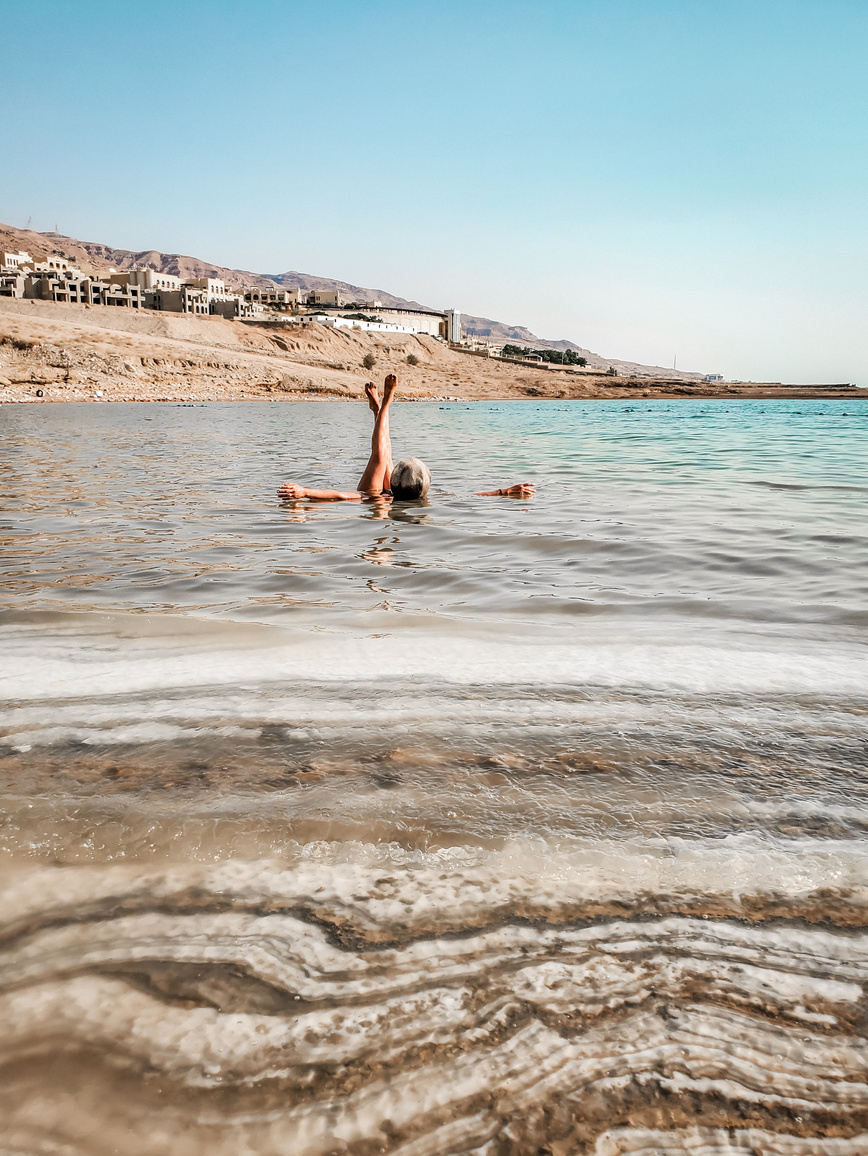
Shobak Castle
Our Lessons
Memorable images of us exploring the ruins of Shobak Castle, a fortress of the Second Crusade. The Christian crusaders initially built it, but it was taken over by the Islamic armies after they recaptured this area. This place is unique in that we can see stones with Arabic writing added to the top of the original crusader design.

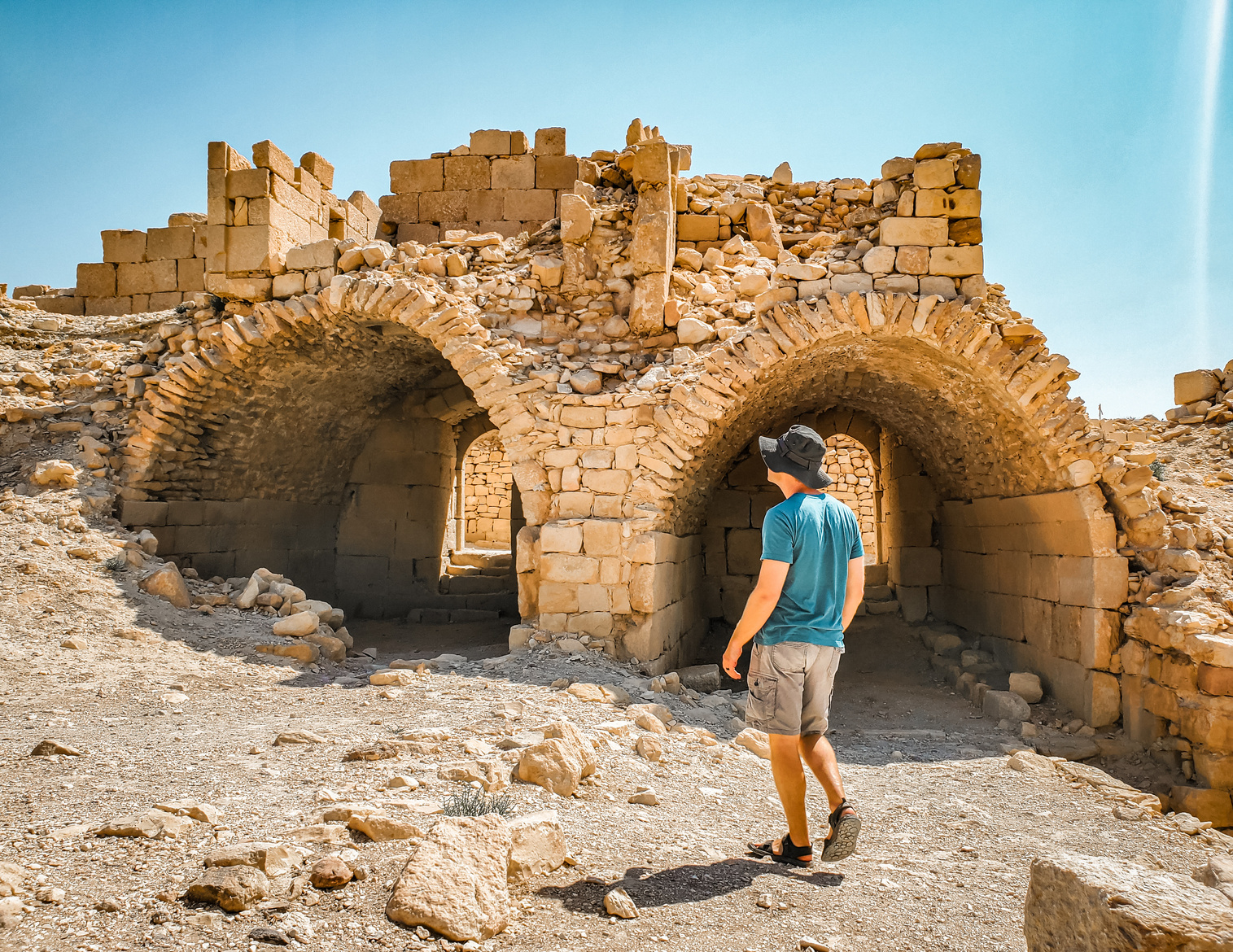
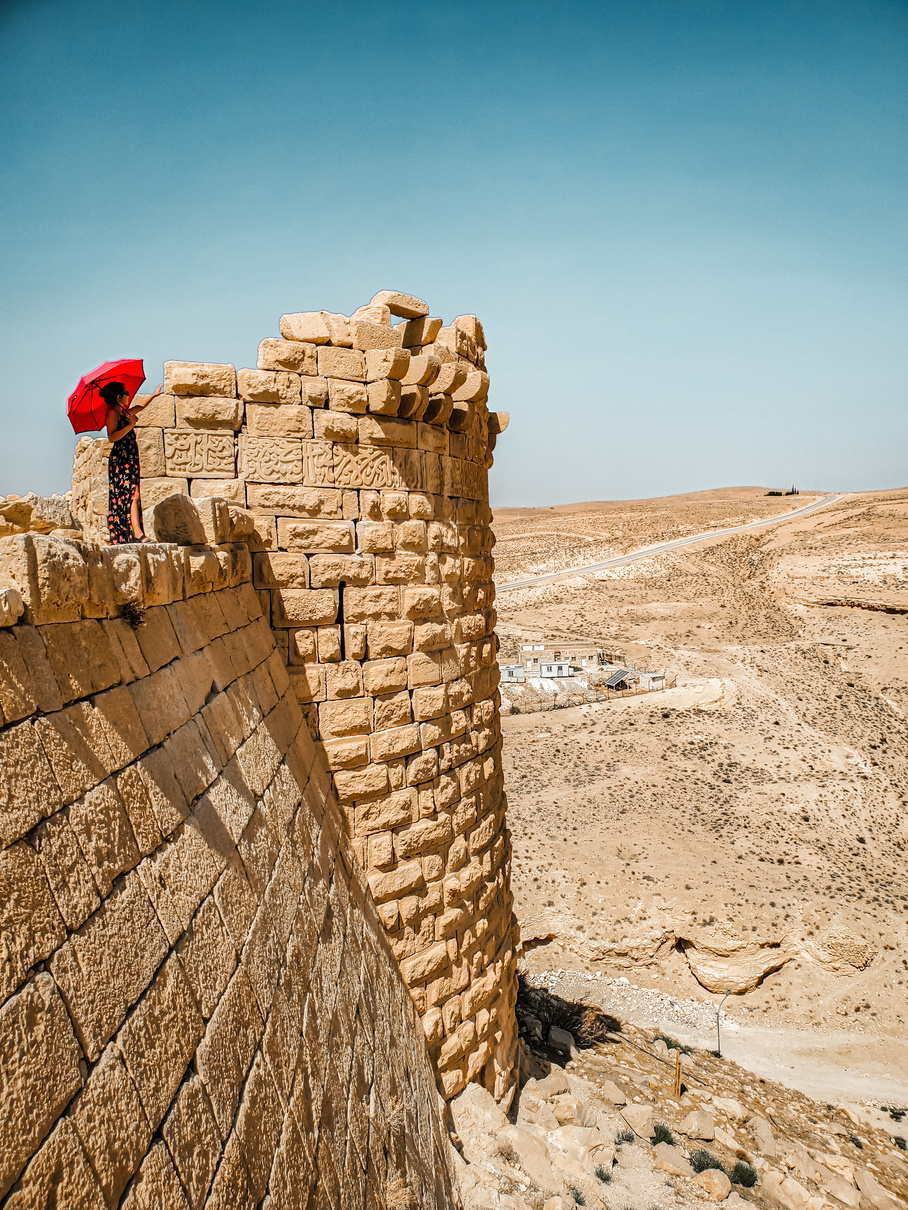
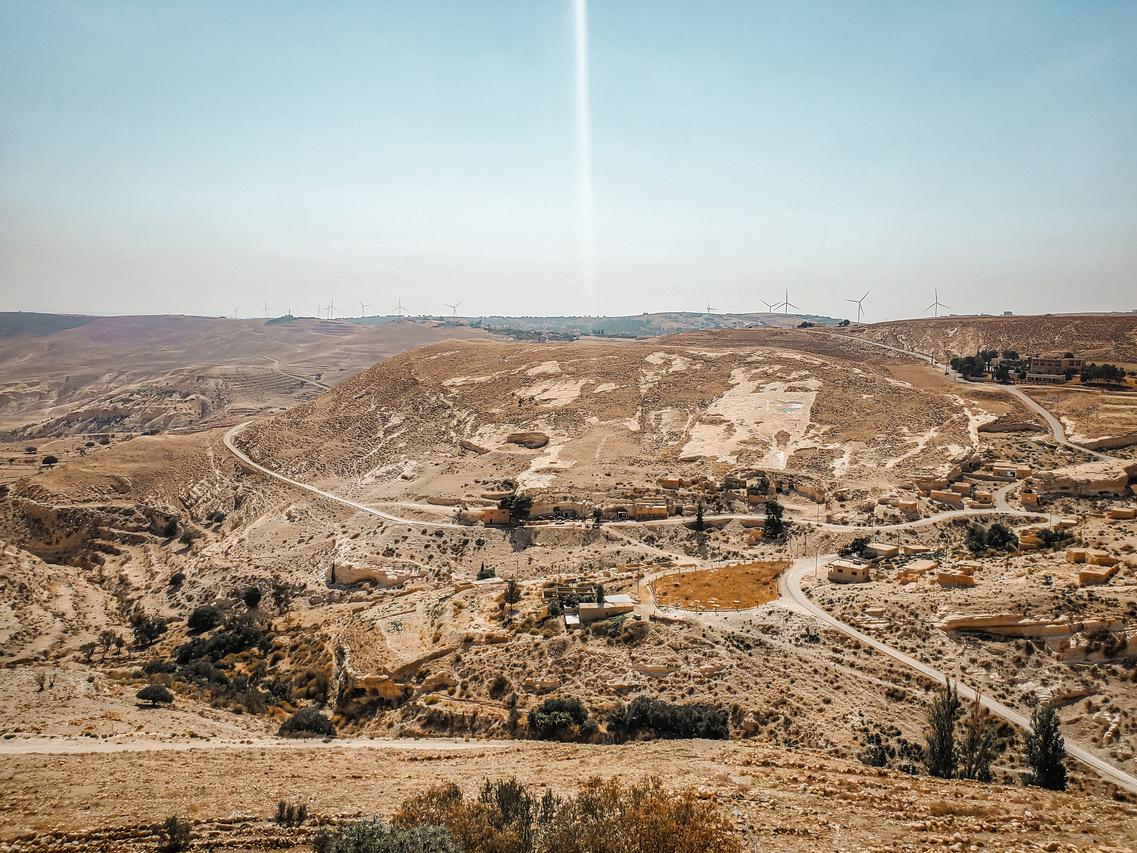
Jordan Perspectives
Our Lessons
Our adventure in Jordan was educational—full of diverse cultures and perspectives. As we had one last meal with our self-named ‘falafel family’ before we headed out to Turkey, we took some time to reflect on the experiences of our fellow humans: Palestinians and Israelis.
There are at least two sides to every story. While this is obviously a hugely complicated topic, it is interesting to hear perspectives less frequently mentioned in Western media. One thing the Jordanians we met want us to understand is that the current Israel/Palestine conflict is only decades old. It should not be erroneously dismissed as a centuries-old religious war; rather, the Palestinians were displaced from their homes when post-World War II Western powers divided up and distributed their land without consent. We were told that many Jordanians identify as "Palestinians," and even today, in Jordan’s city centers, there remain large refugee populations from the West Bank and Gaza Strip. Indeed, some refugees have been in cities like Amman as far back as the 1940s. We are told that many Palestinian refugees still keep the keys to their homes in the land occupied by Israel (sadly, homes which by now may have been bulldozed for new Israeli settlements). Even access to vital water is reportedly being restricted by these new settlements and industries, as we learned at the Dead Sea.
Our tour guide speculates that if the refugees were offered their land back today, maybe 70% would not actually go back; and obviously, this would be hugely challenging anyway, because of the new Israeli settlements. But maybe by adequately acknowledging their plight, ceasing further advancement into their territory, and having serious discussions with the Palestinians about what might truly be acceptable to them as compensation...perhaps this would bring this clash of disproportionate powers to an end. In the meantime, there will continue to be losses on both sides; and if recent history is any guide, it is clear that the Palestinians will disproportionately suffer more, due to the technological superiority and monopoly on resources that the Israelis currently have.

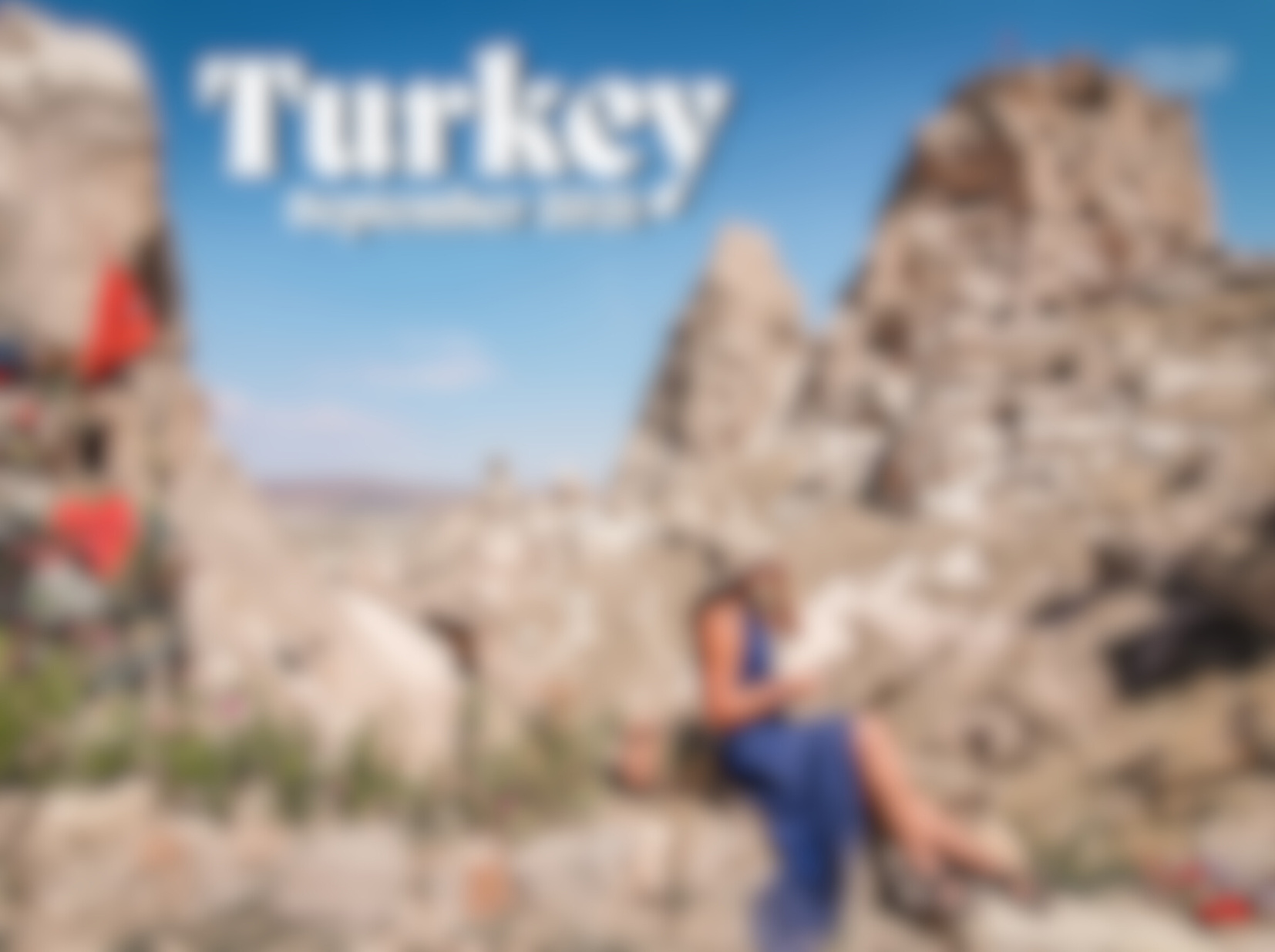
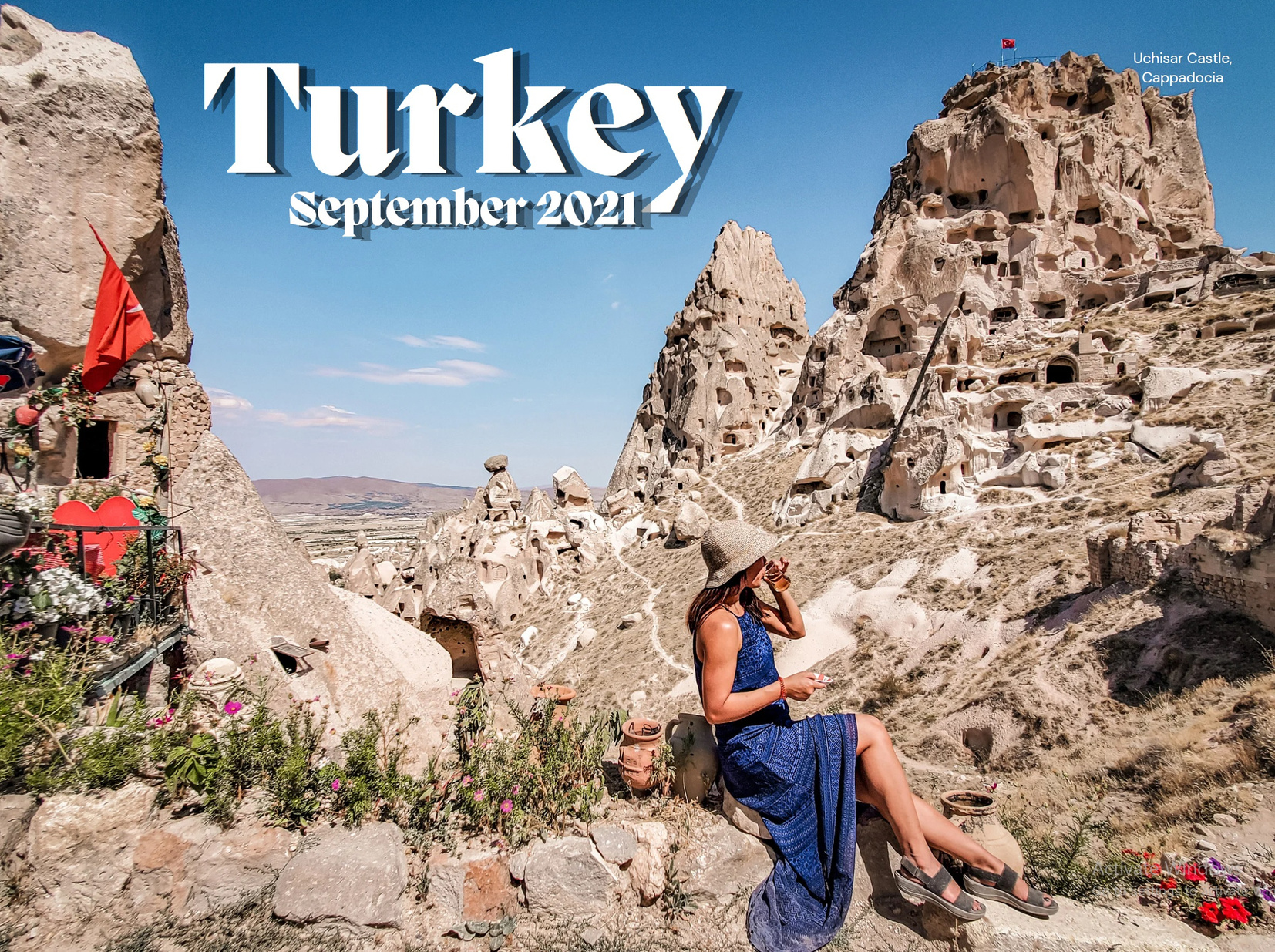
Istanbul - part 1
Our Lessons
Our next destination has been often-misunderstood by Westerners in modern times. Formerly "Constantinople," the city of Istanbul is the most populous city within Europe’s borders, and it was long-considered the nexus of civilization. In past epochs, it was a key strategic city of the Byzantine (post-Roman) and Islamic Empires. Today, it serves as a ‘gatekeeper’ for Russia’s war on Ukraine (more on this later). It has been consistently a major religious center for both Christianity and/or Islam... depending on who had control of the city in a given century.
We began our exploration of this marvelous city with the breathtakingly huge Hagia Sophia mosque. Fascinatingly, Hagia Sophia was formerly a Greek Orthodox cathedral—which the conquering Islamic sultan decided to respectfully preserve and repurpose, rather than destroy. Stepping inside this ornately designed place of worship, we immediately felt a sense of peace from its warm, yellow lights which illuminated even the smallest mosaic artwork. It was interesting to see well-preserved representations of both Christianity and Islam under the same roof. We fondly remember the moment that our tour guide, Aykut, sang to us an example of an Islamic hymn—a lovely reminder that this is a beautifully peaceful and reverent religion which stemmed from Christianity and Judaism.
Interestingly, the Hagia Sophia stands juxtaposed to Istanbul's famed Blue Mosque. We were able to admire views of both mosques from our hotel roof; and we got to witness something unique from our physical location: Istanbul’s “dueling” calls to prayer! Each mosque has an imam, who reads the universal prayer of the day over the loudspeaker at designated times… and with the two mosques in such close proximity, one mosque's imam would sing a verse, and then wait in silence for the other mosque to do his “rendition”... and back-and-forth they went. Even better than Dueling Banjos?

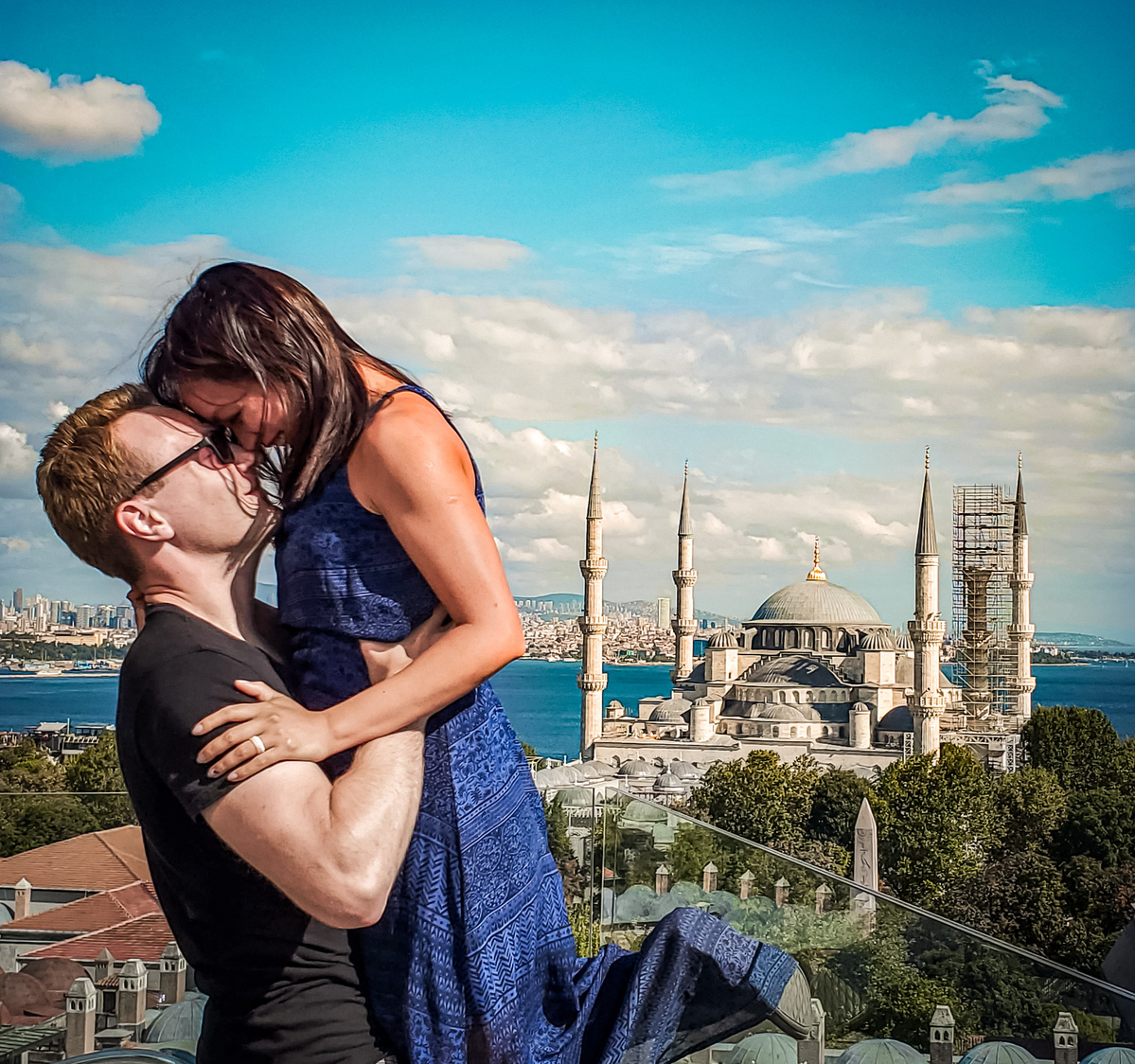
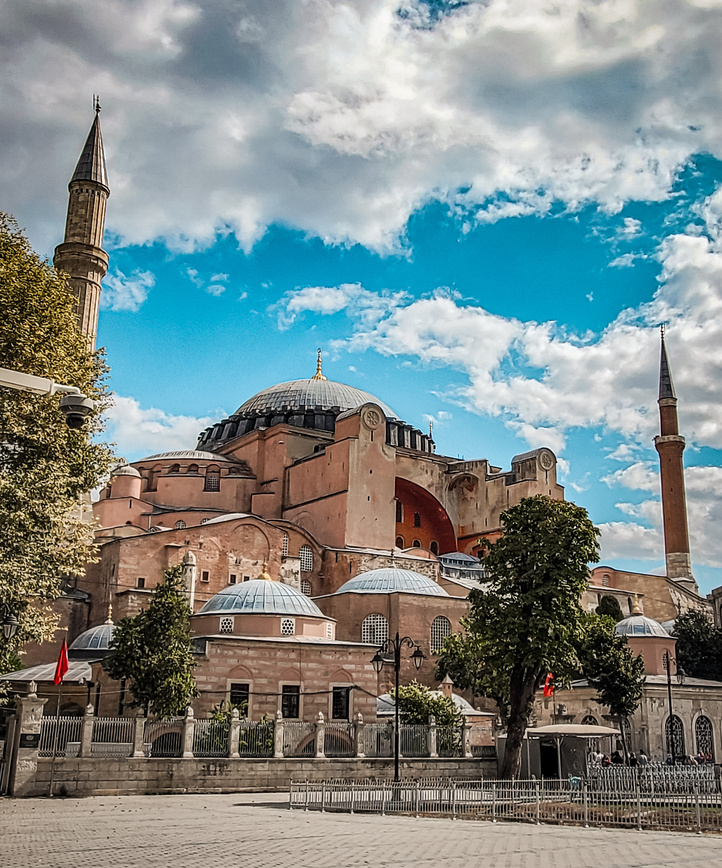
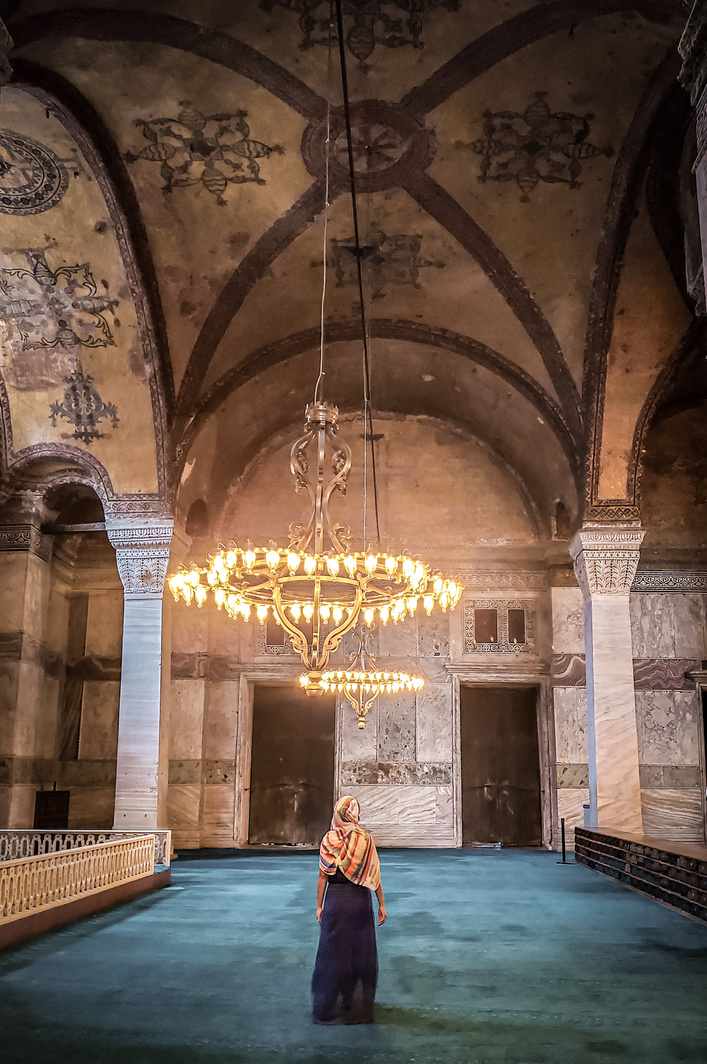

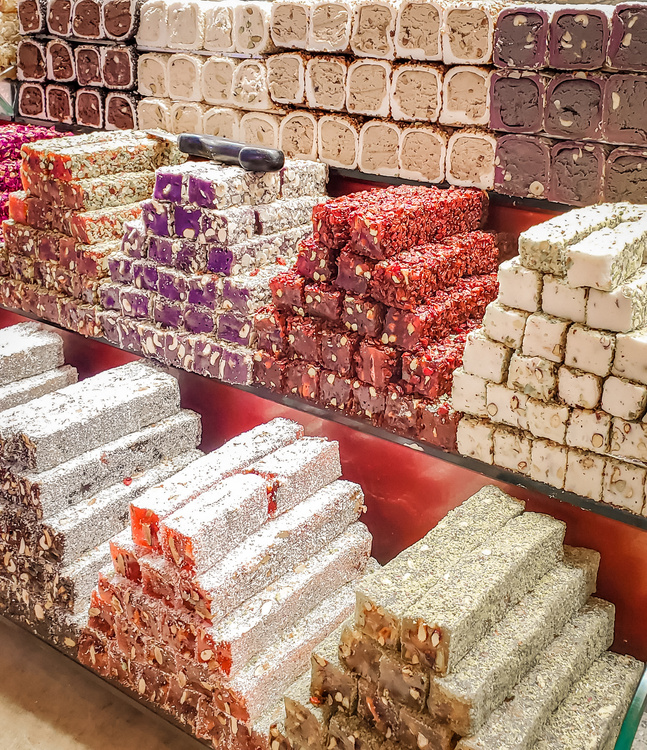
Istanbul - part 2
Our Lessons
Istanbul is nothing like it is typically depicted in Hollywood. We came here honestly expecting a chaotic, gritty experience similar to that of Old Cairo, but we instead encountered the complete opposite: Istanbul is modern, clean, and safe! Its famed Grand Bazaar was lively and felt like any modern shopping center in the United States—just in an older building with a much, much prettier ceiling! Delicious aromas of all types of tea and scented oils fill the air. All the shops are well-organized and have permanent storefronts; the hallways are wide and orderly; not haphazardly lined with makeshift stands, like during that James Bond chase scene (Oddly, the only accurate part of Skyfall’s cinematic Istanbul chase was the Bazaar's central roof: It does, in fact, have a flat midline slab of concrete... so perhaps Bond really could have ridden a motorcycle across it?)
After the Grand Bazaar, we made a quick pass through the Spice Market—which we think should officially be renamed the ‘Turkish delight market.’ Like the Grand Bazaar, this is once again a very clean and organized place. The best part: free samples were being handed out at every storefront. Vendors acted as if they would be saddened if we didn't at least take one... so how could we say no? Our favorites were the roasted hazelnut, rose-infused, and pistachio flavors.

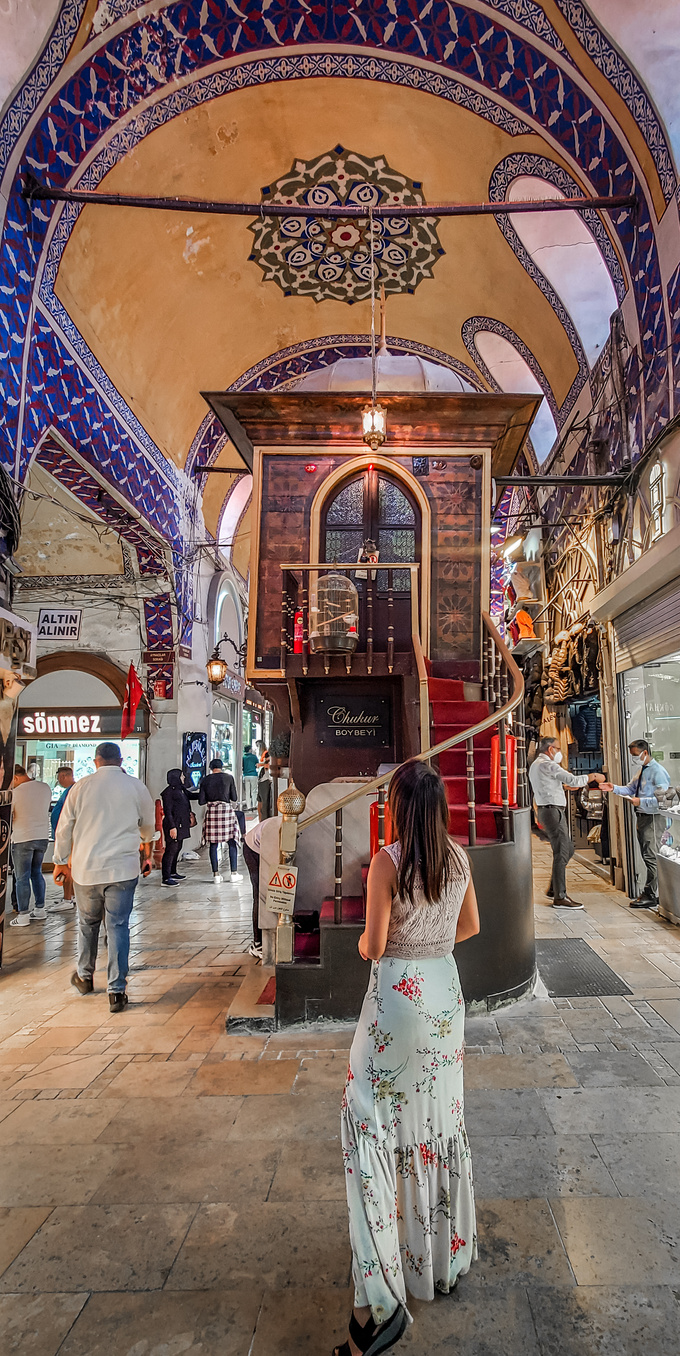
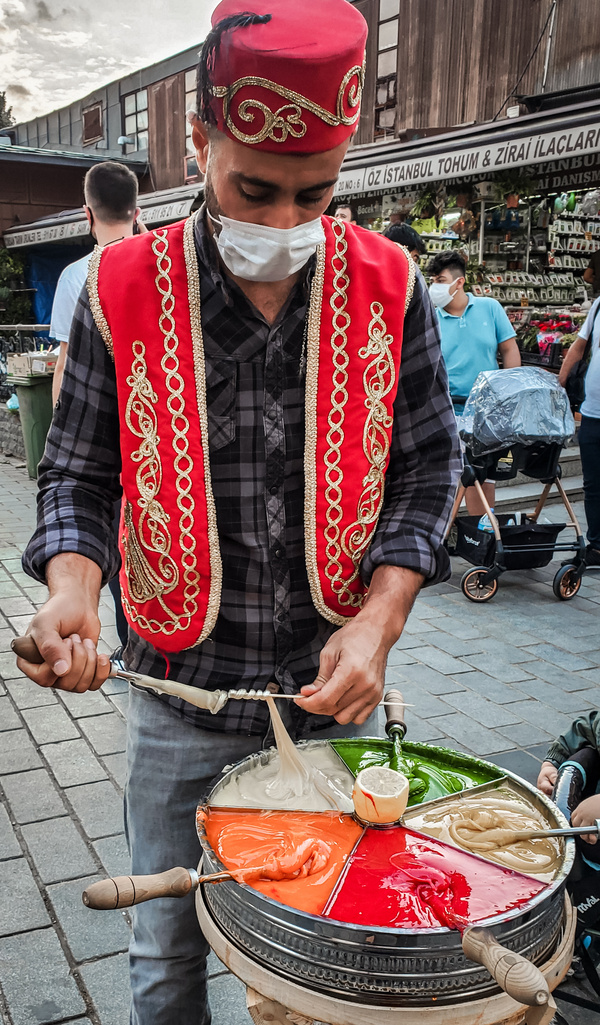

Istanbul - part 3
Our Lessons
While walking the streets of Istanbul, we snacked on roasted chestnuts at least twice daily. Before Turkey, we had no idea why people were singing Christmas songs about these things; now we realize just how delicious they are.
Meanwhile, Turkish ice cream vendors have become famous for their 'tricks,' which we experienced firsthand. It made my day watching the shop owner use a long spoon to twirl a sticky cone around Eric’s hands, and watching Eric repeatedly try and fail to snatch it! Of note, this is probably the only ice cream in the world that you could eat with a knife and fork, because it is chewier and takes much longer to melt. The elasticity and unique flavor are from salep, a powder made from a type of wild orchid bulbs that are native to Turkey!
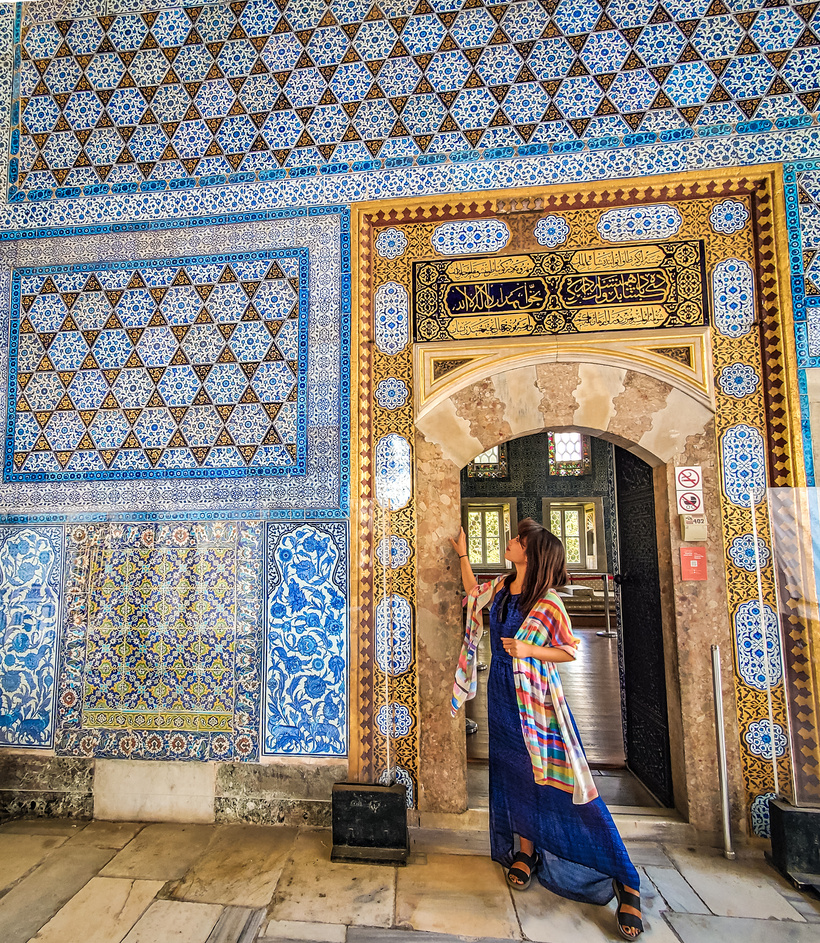
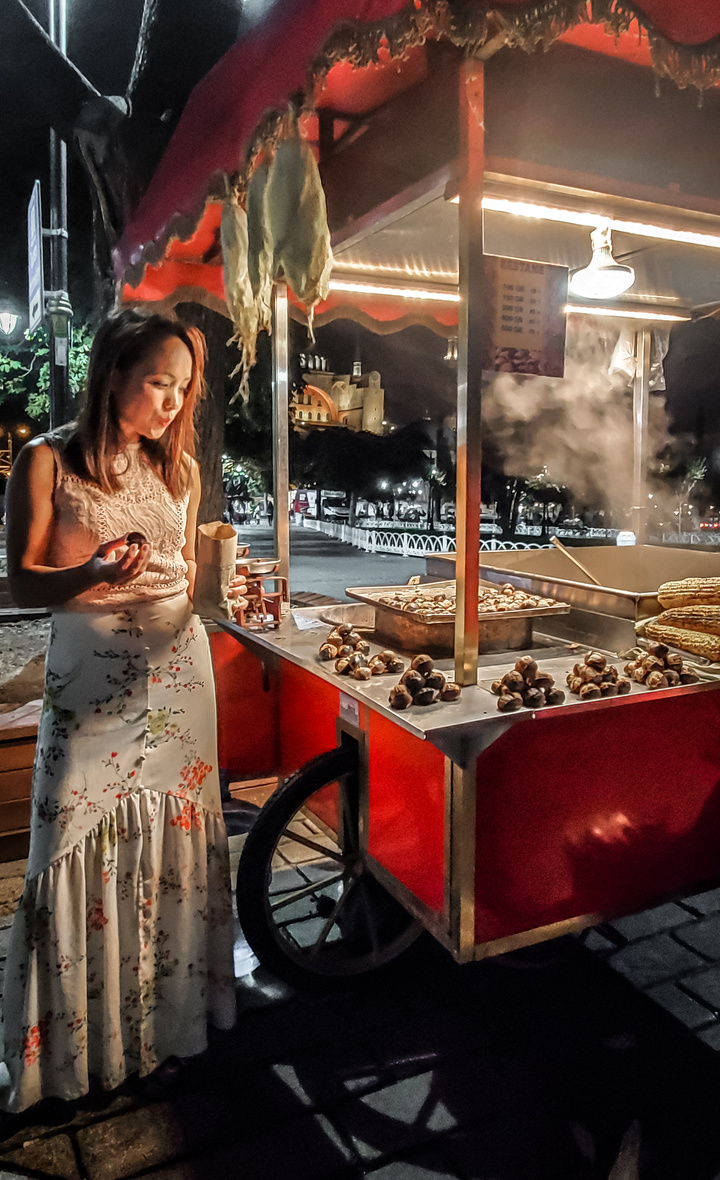

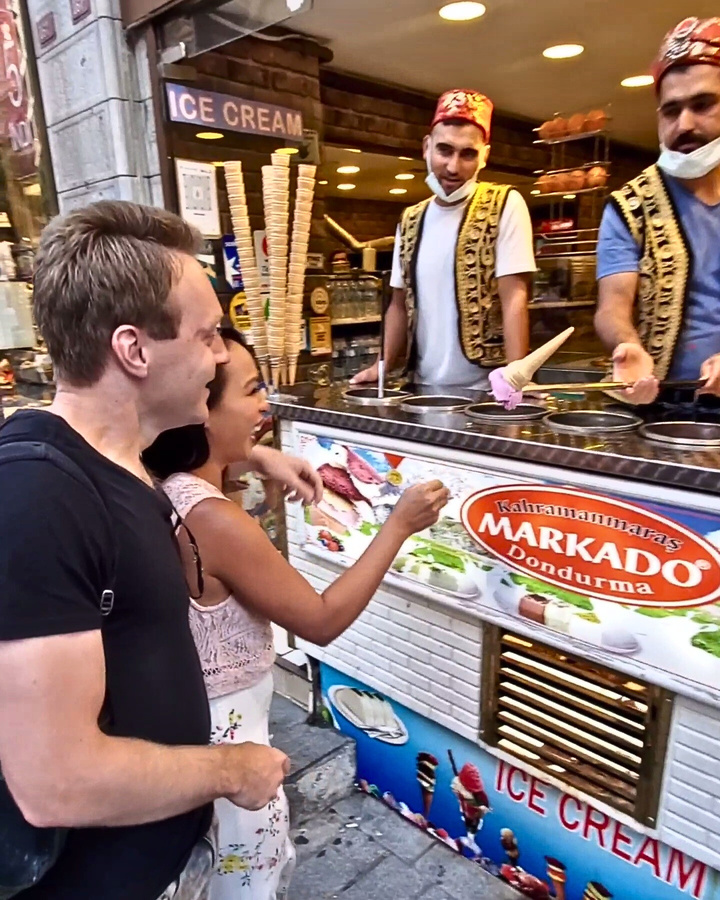

We walked the halls of Topkapi Palace, where we laid eyes on some of the most famed religious relics in history... including (purportedly) the actual staff of Moses, the sword of the prophet Muhammad, and the right arm of John the Baptist?? While photos are not permitted and the authenticity of these items cannot be proven scientifically, we do know that Ottoman sultans acquired these and many other religious pieces around the 16th century or so. We also know, over a millennium ago, that Constantinople was a center for collecting and preserving artifacts from around the world... before many of these were looted by the Crusaders. So it’s hard to say for sure, but we’d like to think it could be plausible that the stick we saw had truly belonged to Moses?
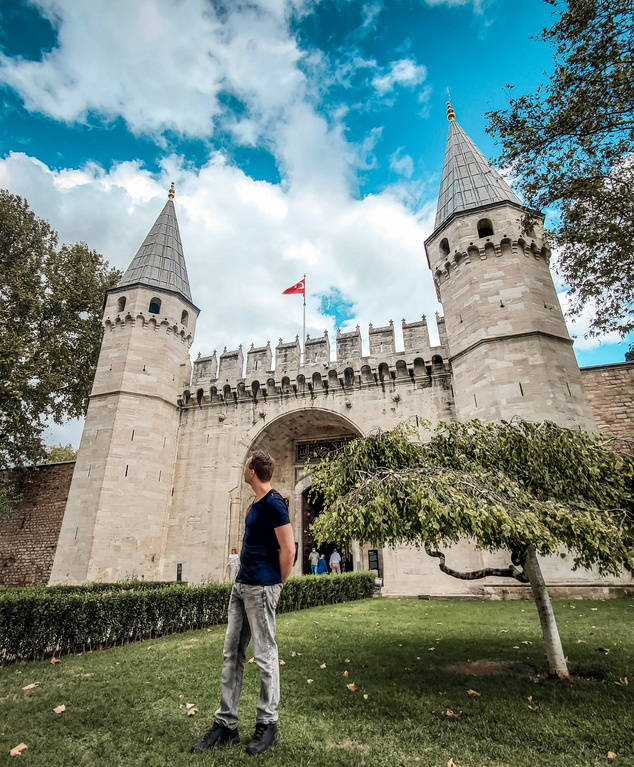
Istanbul - part 4
Our Lessons
It's not every day you get to readily hop back-and-forth between two continents at once... unless you are crossing the Bosphorus Strait, which divides Asia and Europe. The city Istanbul sits on both sides of the divide, so never has there been an easier spot to cross over. Geographically, this helps explain how important Istanbul has been for international trade: the Bosporus Strait is the only connection between the Black Sea (bordering Russia, Ukraine, and other Eastern European nations) and the Mediterranean (Western Europe, and the rest of the world). In the modern day, Turkey continues to wield substantial strategic power: the Montreux Convention gives Turkey, a NATO power, the right to close the Bosphorus strait to any nation's warships during wartime—which it did in February 2022, barring warships from every country following Russia's invasion of Ukraine.
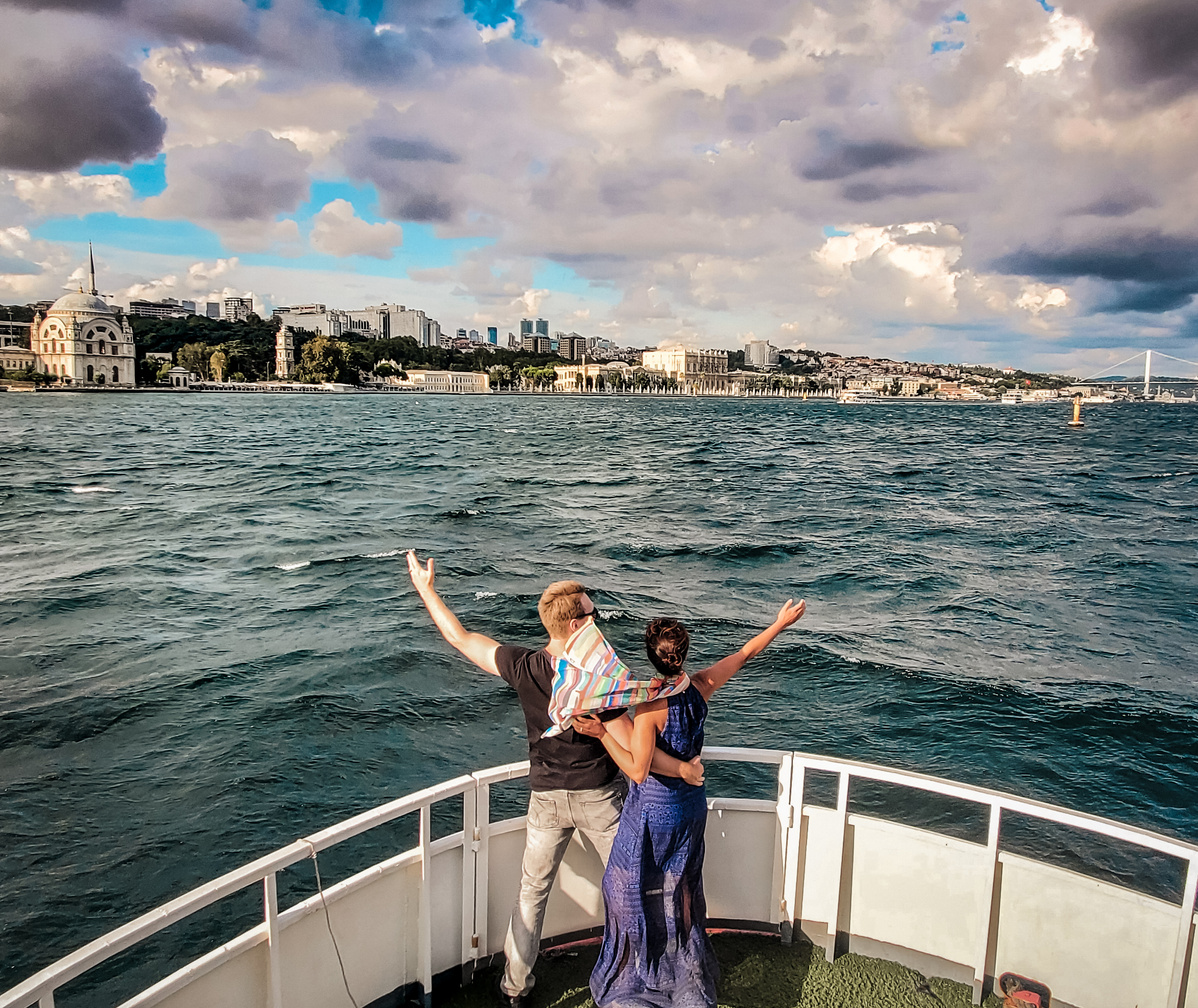

Meanwhile, at Istanbul's Galata Tower, we learned that the Wright Brothers were far too late to have participated in history’s first “human flight." Indeed, the first "flying person" was Ottoman inventor Hezarfen Ahmet Celebi, who reportedly accomplished this feat way back in the 1630s! That year, multiple historical sources verified that Celebi constructed a set of "wings," and leaped off the nine-story tower into the wind. He may have even glided up to a few kilometers, although the exact distance of his flight and whether he made it across the entire Bosphorus River is debated. The crazy ending to Celebi’s story: Upon hearing of his accomplishment, the Sultan was so “impressed” that he rewarded Celebi with a sack of gold coins—and then exiled him to Algeria, out of fear that he was “too cunning,” and thus a threat to the Sultan’s rule!
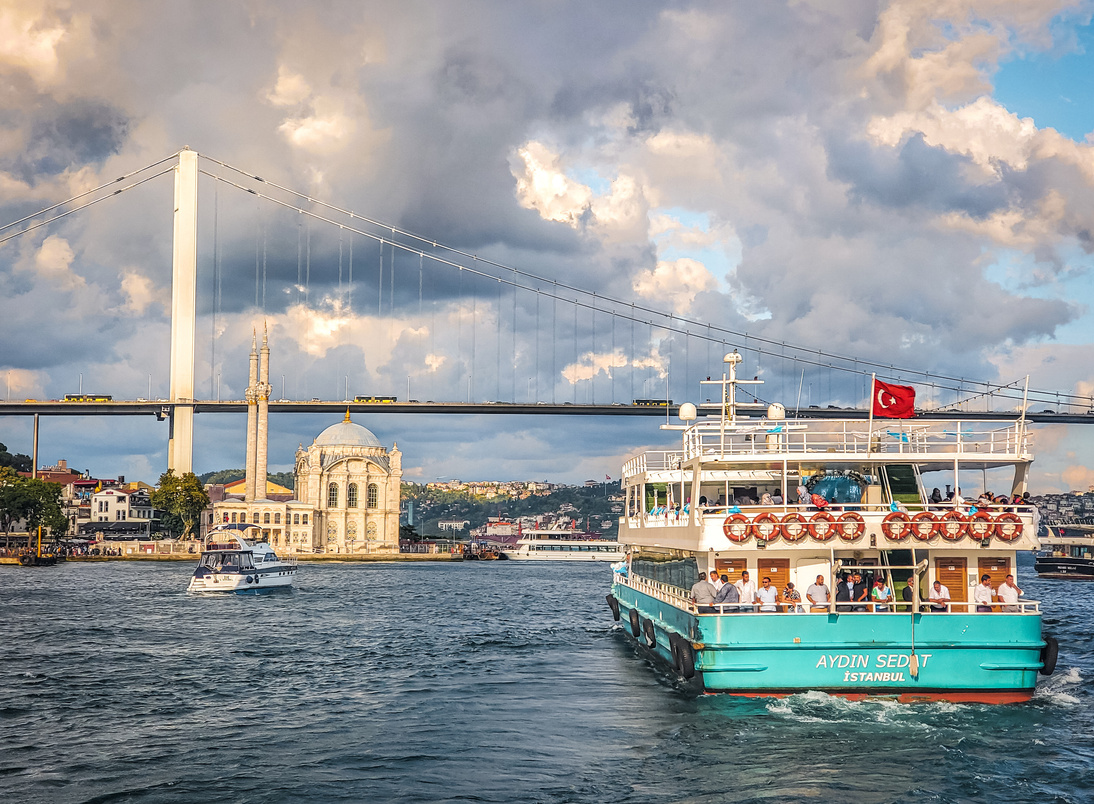
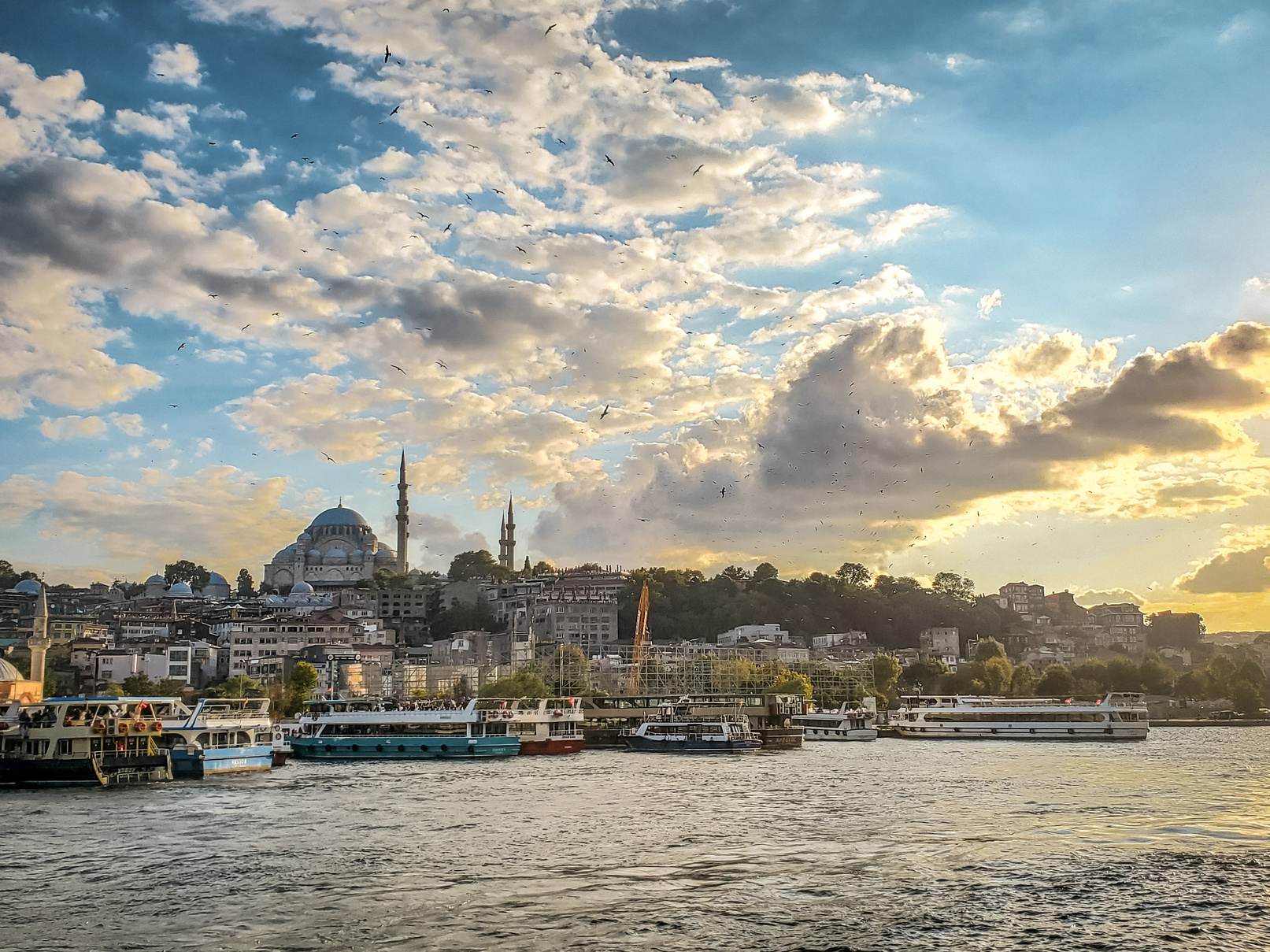
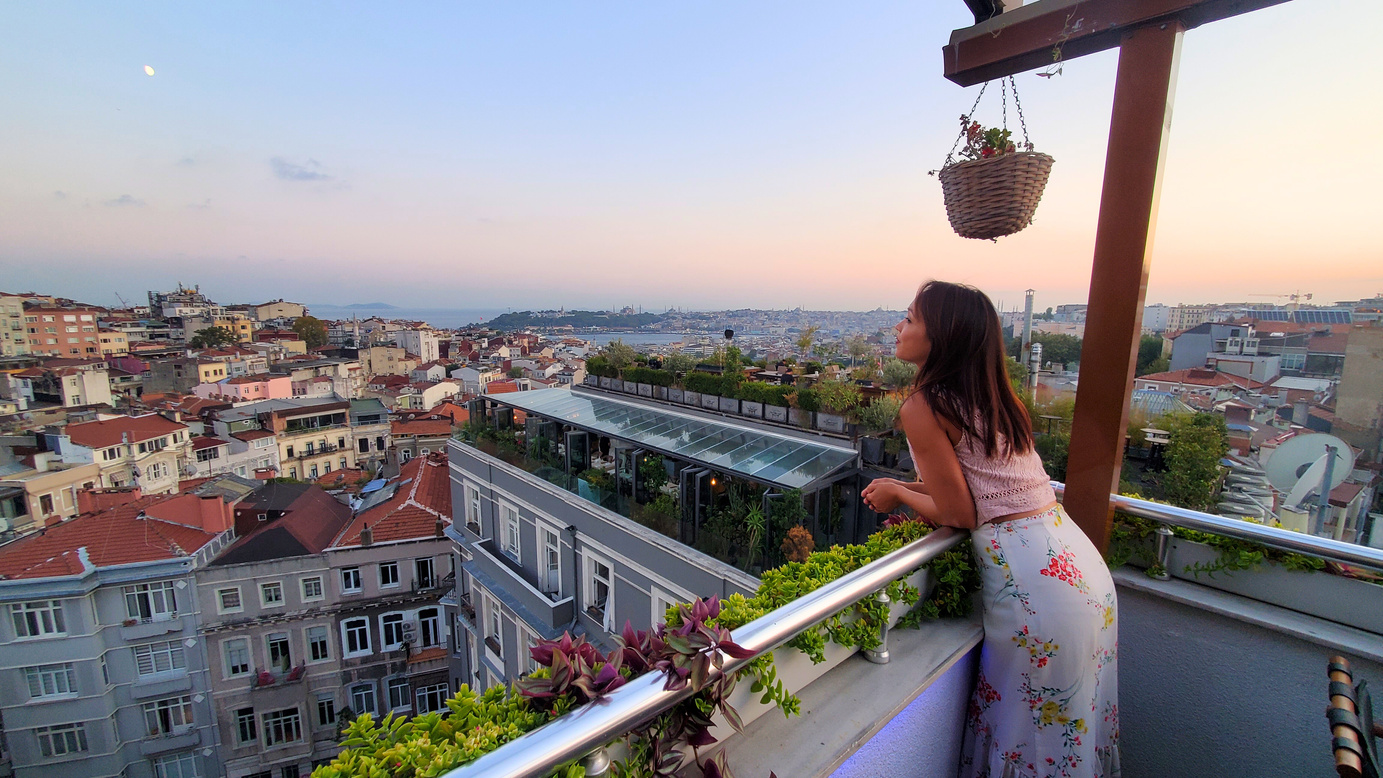
Istanbul - part 5
Our Lessons
As we took in all of Istanbul's sights and sounds, our tour guide explained that Turkey has the largest population of all European countries. Furthermore, it is estimated that 4-5 million Syrian refugees now live in Turkey; and a wave of Afghani refugees began in the fall of 2021. At the time we visited, most Turks were supportive of the refugee crisis, however, there is an increasing sense of nationalism and isolationism as overpopulation becomes a problem. VOA News headlines in June 2022 gave a glimpse of the evolving challenge of this situation: "Turkey is deporting thousands of Afghans despite an international outcry about the dire humanitarian situation in Afghanistan, where the Taliban have been accused of human rights violations." A complicated issue, especially since influxes of refugees have been shown to lead to economic prosperity in the long term; however, this may depend on the ability to adequately finance resettlement and social supports up-front, which not all countries can manage. We praise Turkey, a modern and highly capable country, for doing its part to help refugees as much as it has the capacity to do so.
One certainty which bears repeating: it saddens us that Turkey has been intentionally and inaccurately depicted as a “dark” and "dirty" place by Western media. Before seeing Istanbul for ourselves, how were we supposed to know that Liam Neeson's Taken 2 directors went to great lengths to bring in old, beat-up taxi cabs and police vehicles from the 1970s... or that they had made a conscious effort to assure that all the women who appeared on screen during the Istanbul scenes wore face-concealing veils and burkas? These deceptive choices may “better fit the atmosphere” of a movie about hostage-taking, as the producer stated, but the problem is that people who watch the movies believe it! Our time spent in Istanbul was truly eye-opening: it is a sprawling modern metropolis, and tourists from every corner of the world come here. This country easily takes a slot as one of our top travel destinations.

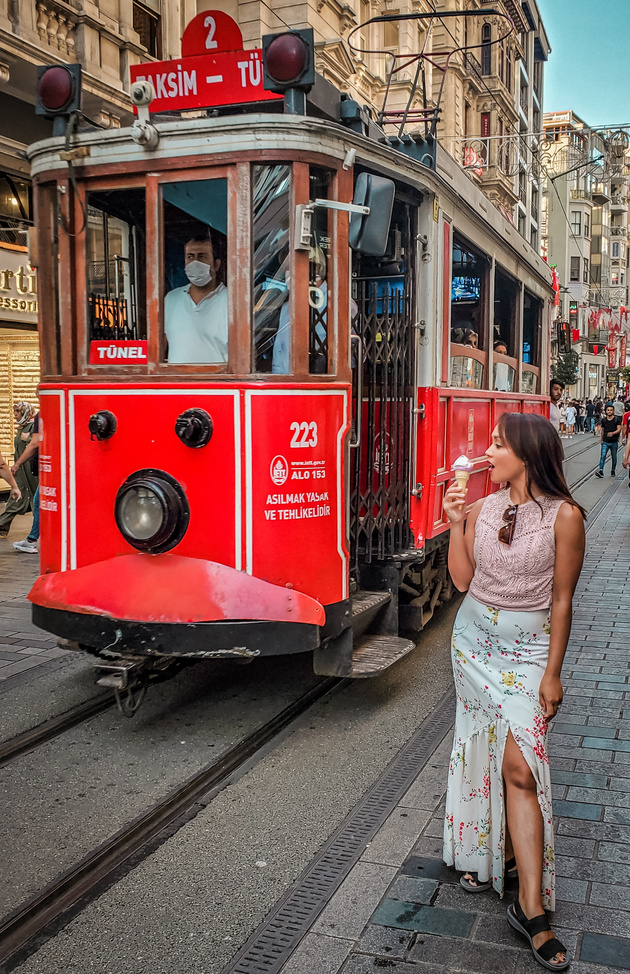
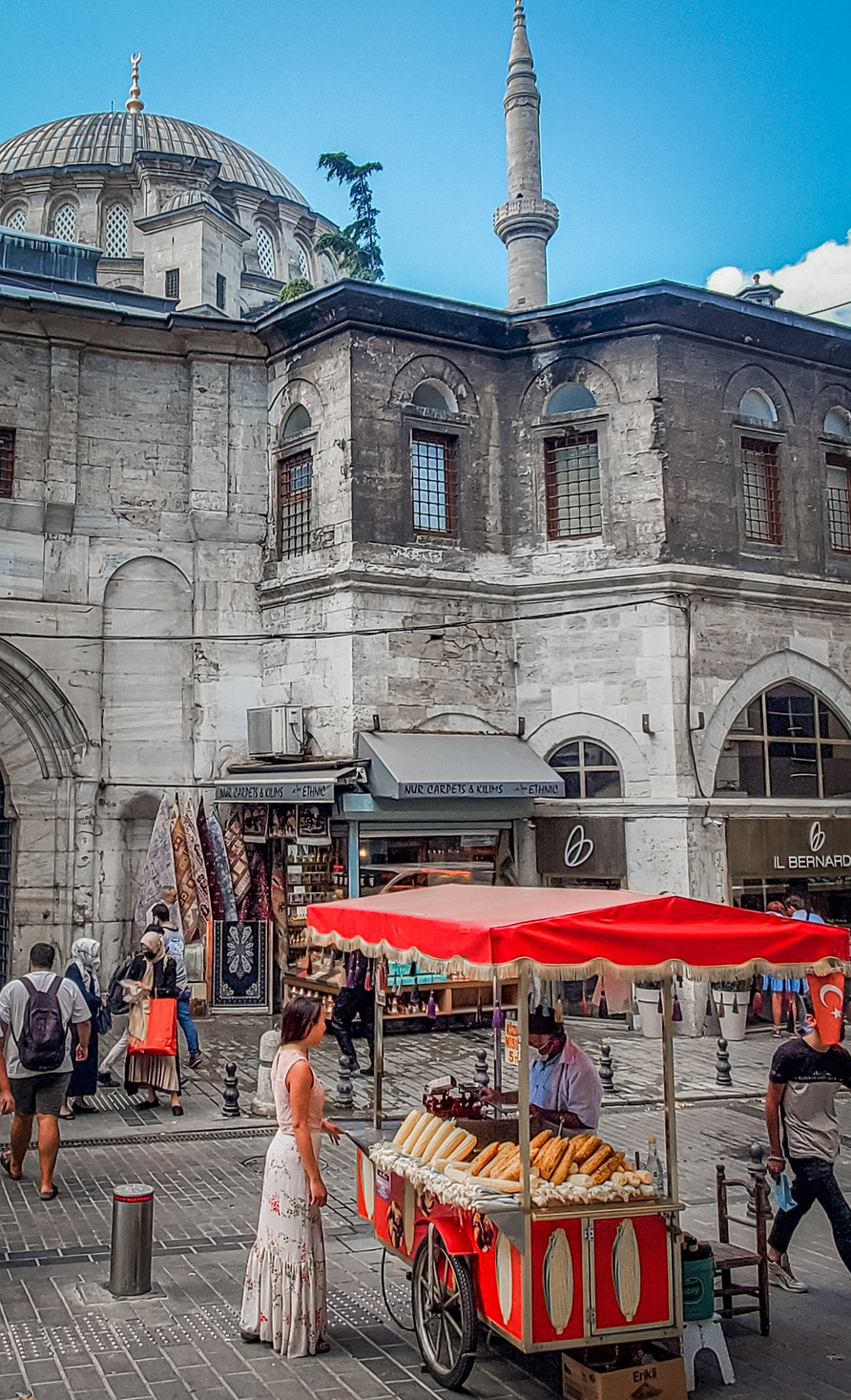
Gallipoli
Our Lessons
"Their name liveth for evermore."
Today we stood on the solemn grounds of Turkey’s Gallipoli Peninsula, where over 500,000 men perished in one of the bloodiest, months-long battles of the first World War. We listened with curiosity as our tour guide explained Turkey's version of why his nation sided against the Allies during the war: Great Britain rejected them! Apparently, at the beginning of the war, Turkey made Britain an offer for a former alliance, but Britain declined. Britain then backed out of a prewar deal to provide Turkey with battleships which Turkey had already paid for, reportedly due to immediate need for the ships itself. Turkey interpreted these moves as preparations for aggression against them, so it sided with the Central powers. Following Turkey’s declaration, the Allied Forces' Australian/New Zealand ('ANZAC') division led the invasion of Gallipoli, expecting Turkey to topple easily. This would have allowed the Allies to flank Germany and provide reinforcements to Russia via the Black Sea... but Turkish forces fought with valiant commitment, eventually leading to Allied defeat.
Fascinatingly, Gallipoli was often described as "the last Gentlemen's War." Opposing armies’ trenches were as close as 8 meters apart, which provided opportunities for a sense of humanity for one's enemy. Intermittently, Turks and Australians declared a ceasefire and mutually helped each other collect their dead. During these moments, they showed each other photos of their families back home—and over time, grew to understand so well that their enemy was not so different from themselves, that at night they would toss food, tobacco, and notes to one another across the trenches. They would even applaud when someone on the opposing side was overheard playing a song on their guitar. A touching reality check about the absolute horrors of war; one can only hope that in the future, we can better get to know each other before the fight and avoid it altogether.
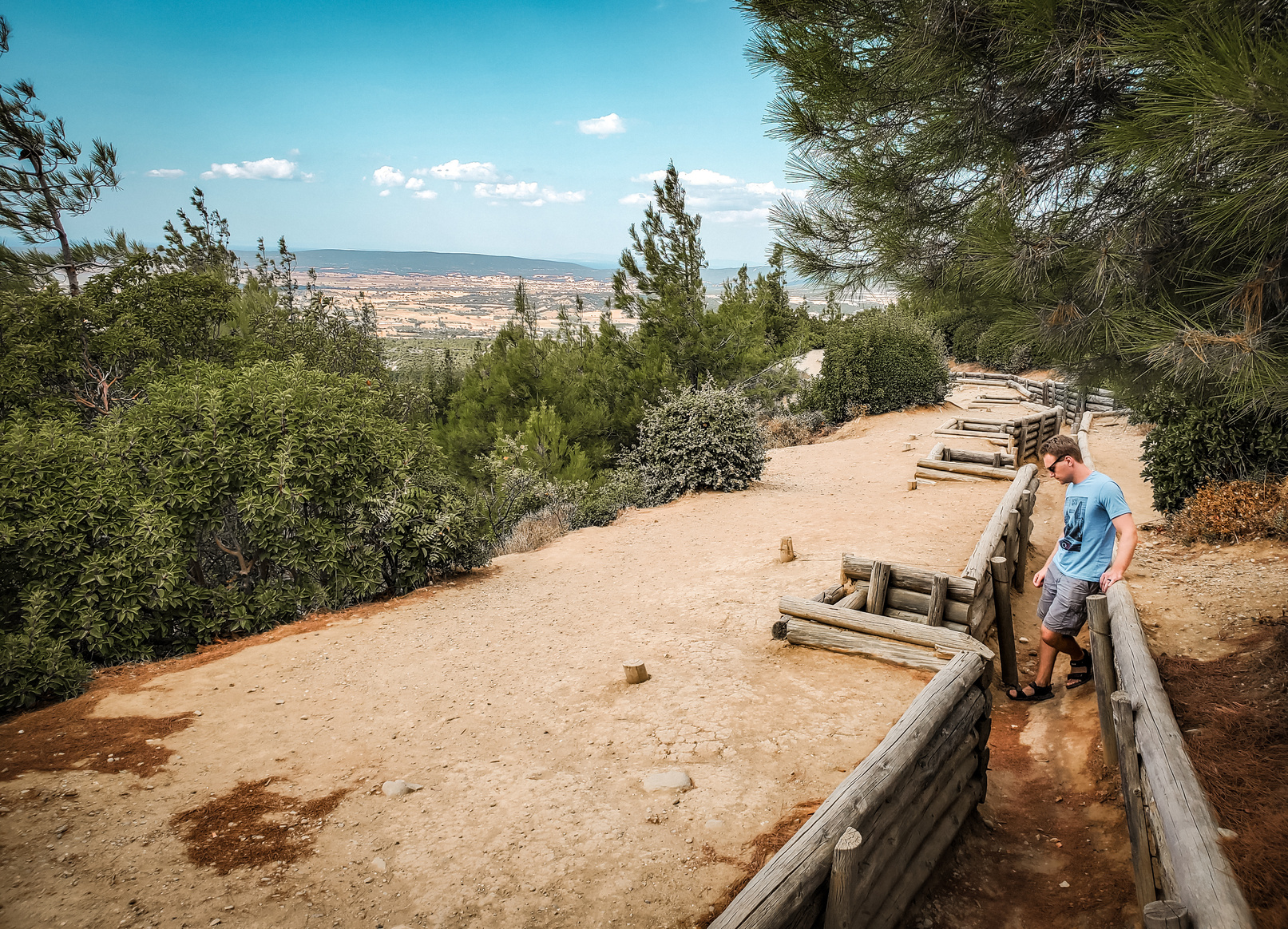
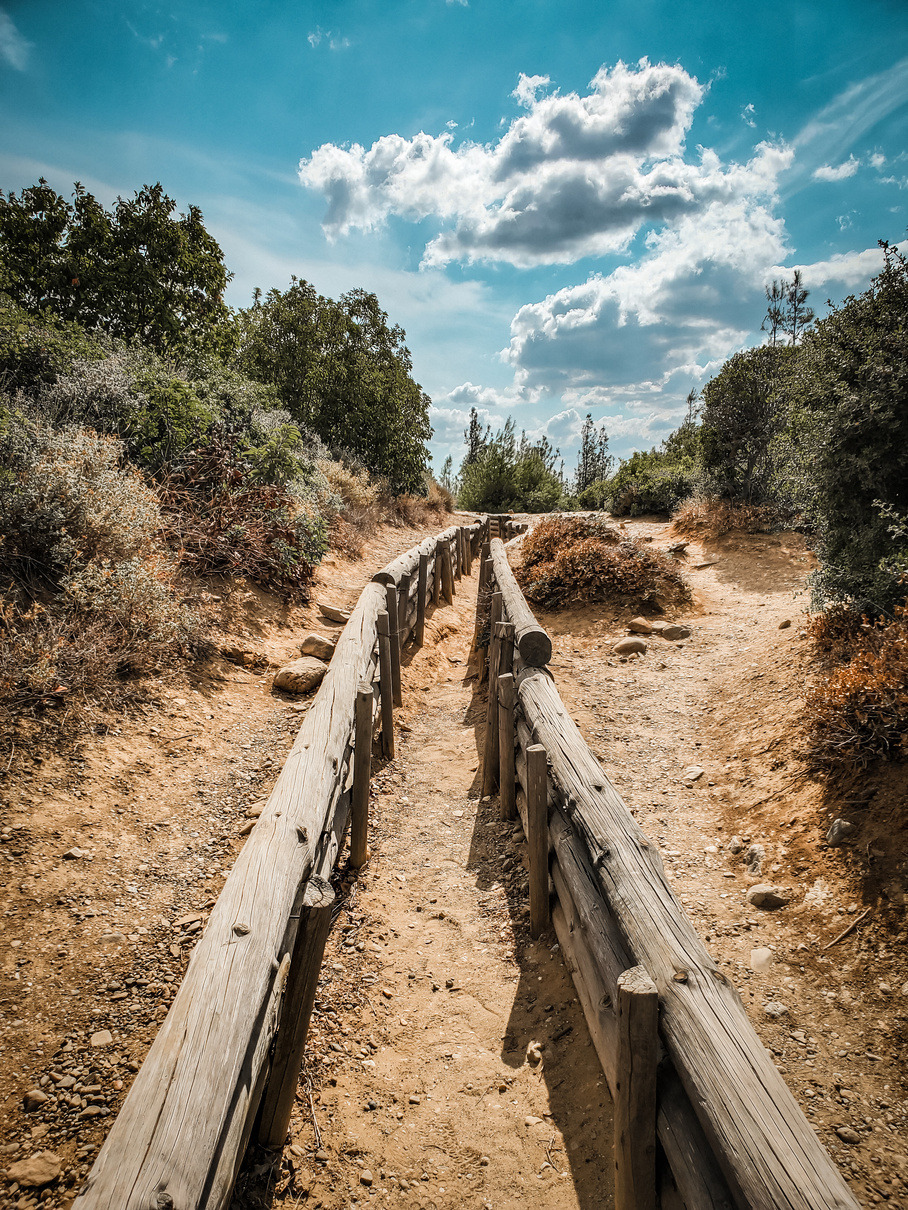

Troy
Our Lessons
Is the "Trojan War" fact, or fiction? We still don't know for sure. Back in 19th century, it was thought that the city itself was pure legend; however, starting in the 1870s, archaeological excavations on this site revealed the remains of numerous earlier settlements. Several of these layers resembled literary depictions of Troy, leading some scholars to conclude that there was at least a kernel of truth to the ancient stories.
Today, the archaeological site of "Troy" consists of nine major “layers”—indicating that this ancient city was rebuilt nine times. Remnants of the city's oldest walls, dating back all the way to the early Bronze Age, were made of mud bricks that decayed over time. Disintegrated walls formed mounds, which raised the level of the ground, onto which subsequent (higher) walls would be built. Some of these different layers of Troy have been numbered for tourists to see.
After Brad Pitt's movie Troy finished filming, the film crew actually left the trojan horse movie prop in the town square. We passed by it, but the one we took photos of is the old “classic” replica created for the archaeological site. It now guards the gate at the ancient city's ruins.


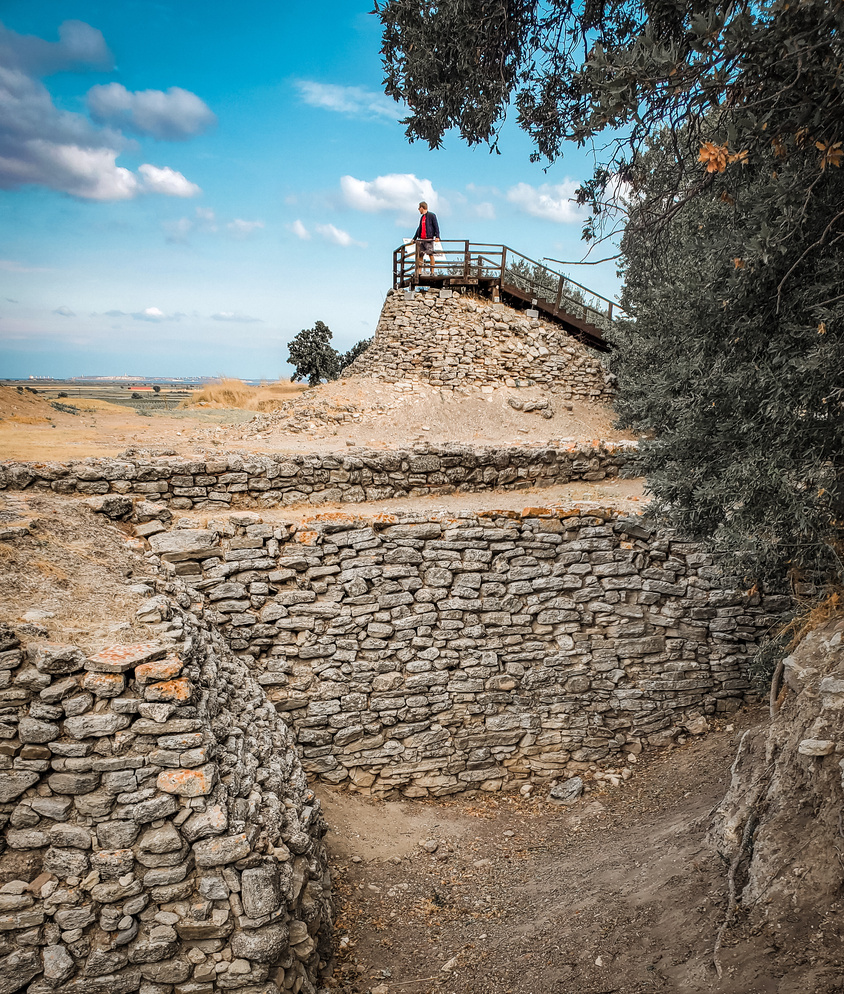


Ephesus
Our Lessons
We stood under the remains of the Library of Celsus, the third largest of the ancient world, marveling over the intricate stone carvings that surrounded us. This and other remaining structures here were once part of the sprawling ancient city of Ephesus—perhaps best known to Catholics from that time St. Paul lived here and wrote his biblical "Letter to the Ephesians"... but there is much more fascinating history here!
For instance: we were told the origin of the "Red carpet" came from Ephesus. After Marc Antony and Cleopatra got married, they came to Ephesus for their honeymoon. As a way of welcoming them, the citizens of Ephesus poured red wine all along their walkway. This tradition eventually transitioned to our modern-day custom of "rolling out the red carpet" for an honored guest.


A side note for cat-lovers: it would seem that cats in Turkey should receive their own citizenship! Here, citizens treat cats like family members—even in the ancient ruins of Ephesus. Our tour guide told us that everyone feeds and takes care of cats in Turkey. In fact, on one occasion our tour guide went so far as to pick up a stray cat from the street outside our hotel, bring it to lobby, and let it sit on his lap (the hotel receptionist didn't even bat an eye—apparently this is not an unusual thing to do here!).


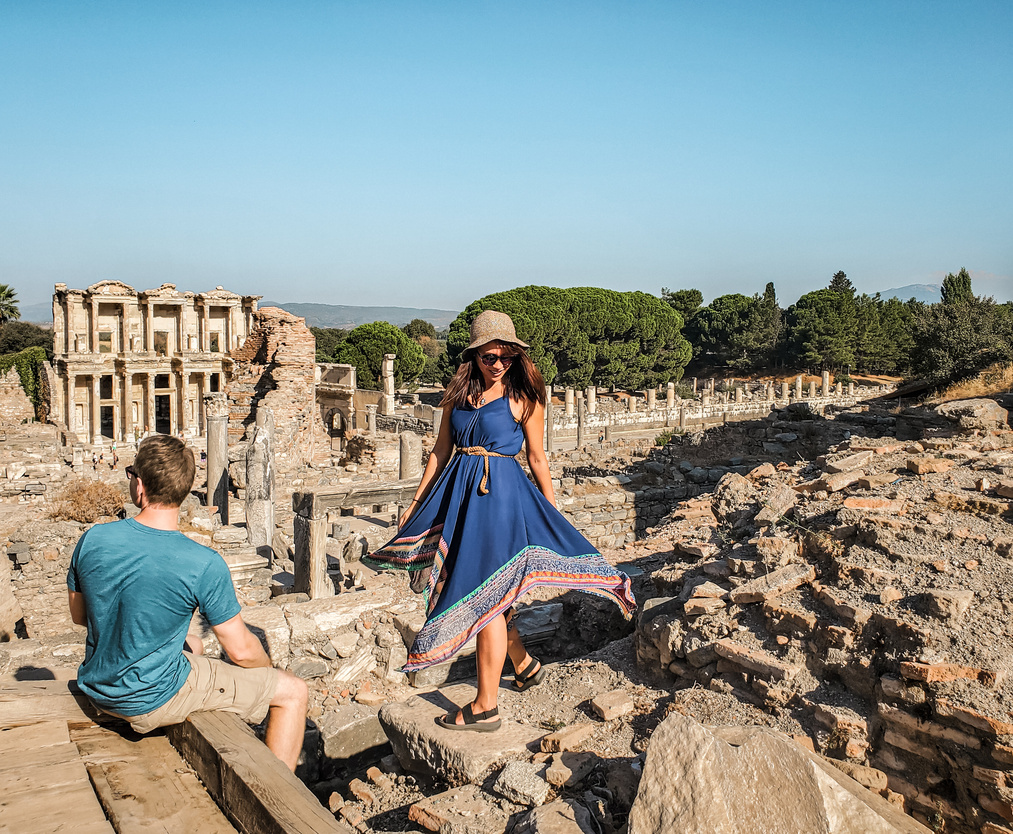
Izmir
Our Lessons
Turkish pottery, we were told, is known to be top-notch. Certainly our travels across Turkey exposed us to dazzling combinations of colors, textures, and artistic designs. During a ceramics factory tour, we were impressed to see a skilled artist's speed as he precisely covered an entire bowl with 3-dimensional dots. It was demonstrated to us that when you knock on a Turkish bowl, its "rings" like a bell, rather than making a dull "thud" that hitting clay would make—an apparent demonstration that this pottery is robust? A quick internet search did not readily reveal literature correlating pottery's vibratory acoustics to its relative strength; but it was certainly a convincing sales pitch!
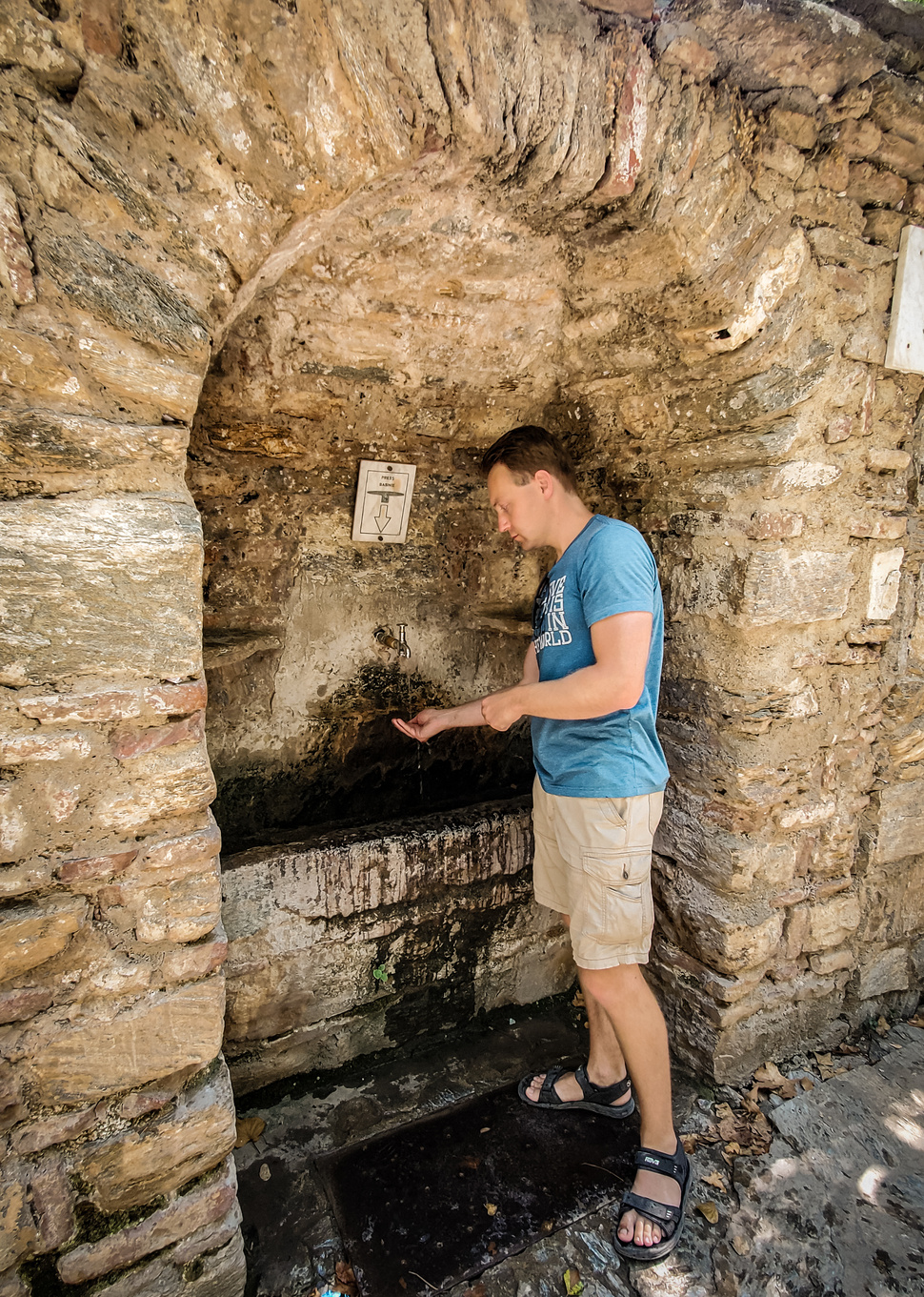
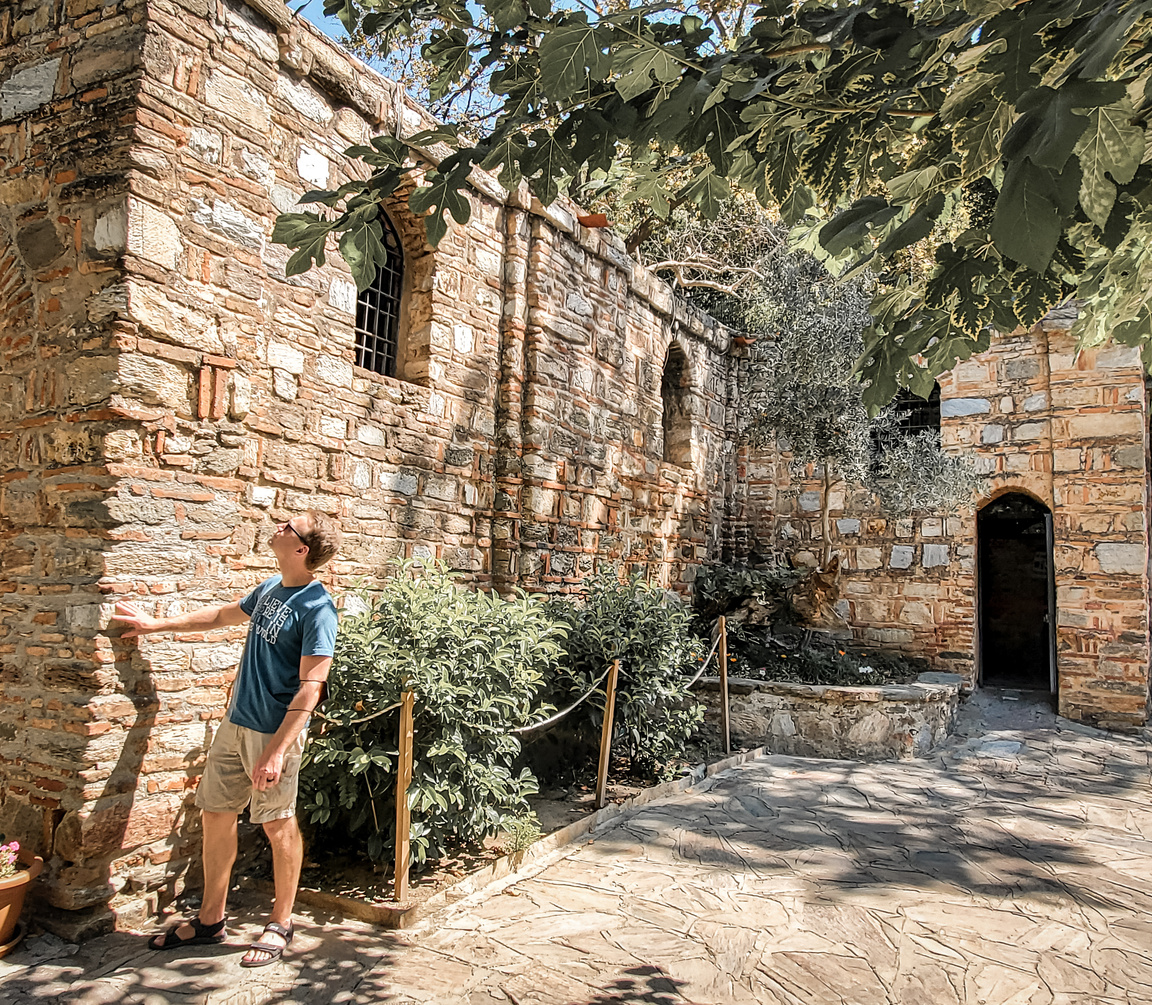
We spent a moment of reverence in what is thought to be the remains of the House of the Virgin Mary, where the Blessed Mother lived out her final years under the care of St. John. We’re not sure what was more humbling here: to have set foot in this tiny place where all the Popes of the past century have stepped... or to have had a generous bystander tear up his COVID PCR result for us—so that we would have a piece of paper to write our prayers, which visitors customarily wedge into to the site's sacred "Wishing Wall." Eric and I enjoyed a quick sip of the cool spring water on the side of the house... and observed that behind us in line, more enthusiastic voyagers came carrying large containers to take bigger quantities of this most-holy water home!
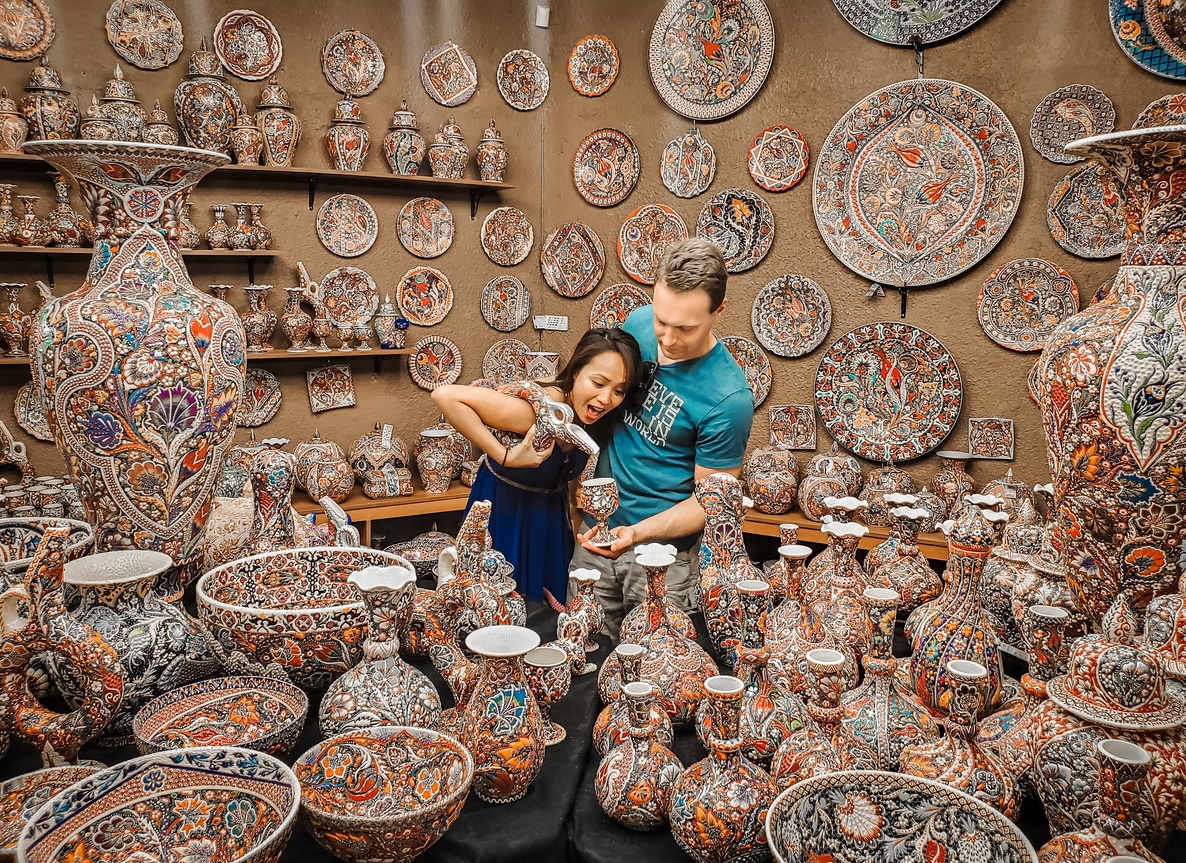


Temple of Artemis + Kusadasi
Our Lessons
Today we gazed upon the ruins of the only remaining column of the legendary Temple of Artemis... after sneaking through the overgrown shrubbery of a restaurant's backyard and peering through a barbed wire fence! Yes, there is a normal and correct way to see the temple; but this is apparently a detour up a very slow, winding road, and our tour did not include this stop officially. Horrified that we were going to miss one of the Seven Wonders of the Ancient World, our tour group emphatically convinced the driver to improvise!
There is some historical uncertainty about the Temple's final destruction. It is apparently well-accepted that Germanic Goth raiders did much of the damage in the year 262 A.D. Whether the rest of the temple simply succumbed over time to earthquakes is uncertain. Fun engineering fact: the temple was built on "marshy ground," as this was apparently thought to reduce risk of earthquake damage. If true, this logic turned out to be reversed: If buying a house today in a quake-prone area, it is advised to avoid soft earth. It is now known that softer earth has an amplifying effect on earthquake waves, making them bigger and more damaging!
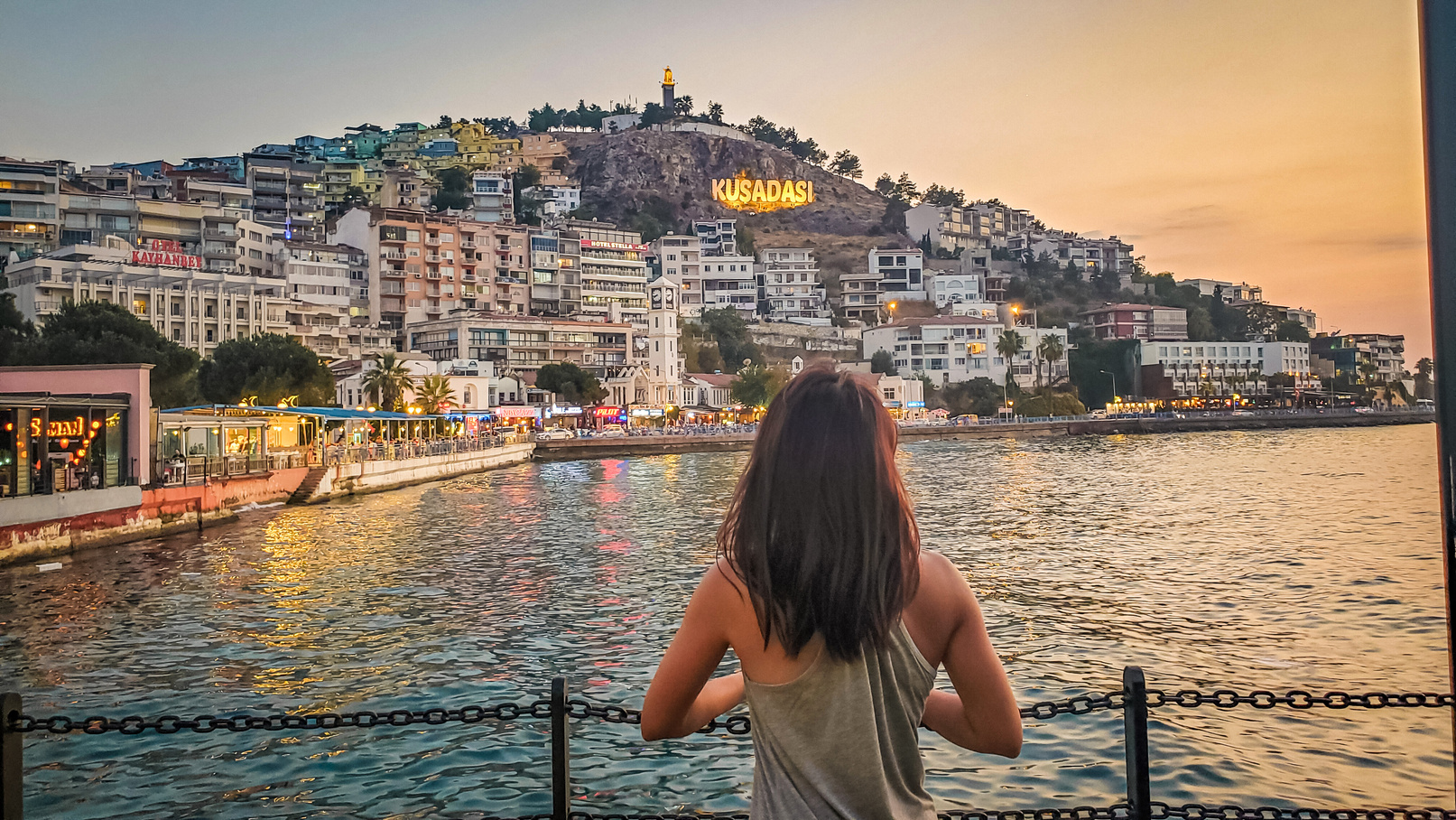
We ended the day's activities in the town of Kusadasi, bordering the Aegean Sea. Our efforts to go jogging to stay in shape got cut short as usual, as we quickly found ourselves pausing to admire a breathtakingly bright orange sunset and pierside views of this colorful city. Kusadasi's lively shoreline was filled with music, shops, and countless smiling faces. Without a doubt, sticking to an exercise routine was one of our biggest challenges while traveling long-term. We certainly lost some muscle mass over the year, but with all this hustling, our endurance remained quite good!
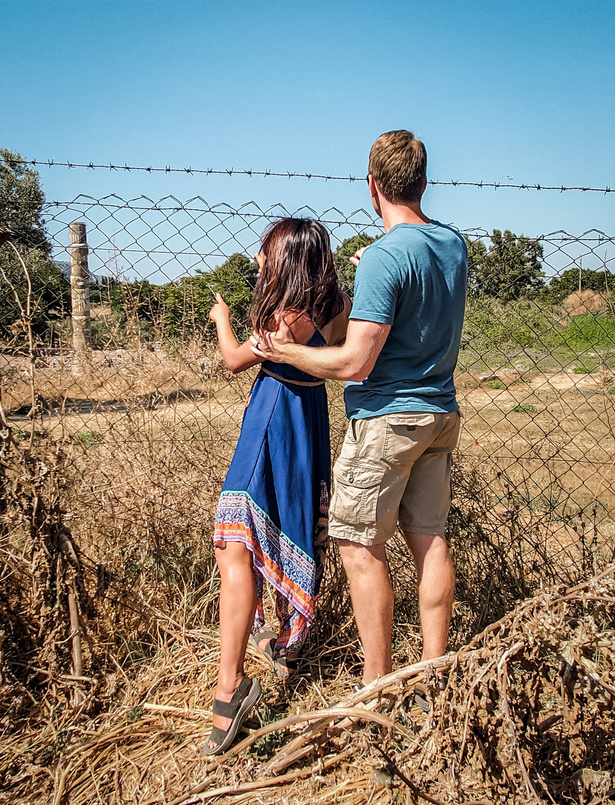
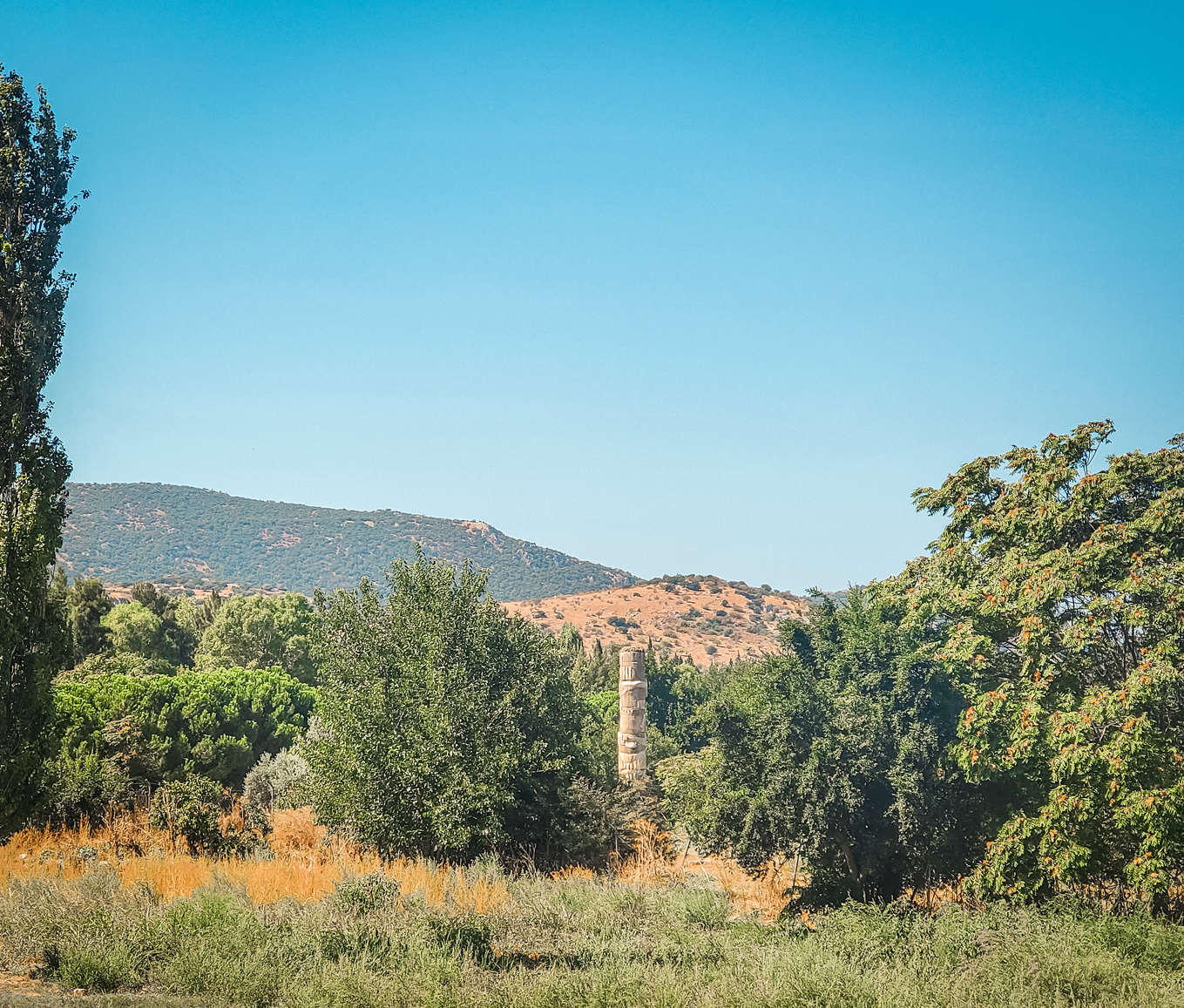

Iztuzu + Ölüdeniz
Our Lessons
The unusual problem of too many "lady" turtles: Iztuzu Beach along the Eastern Mediterranean is a beautiful national reserve for endangered loggerhead turtles, who lay their eggs here. Although their nests are now physically well-protected here, climate change is affecting turtles around the world in an odd way, due to a strange fact about turtles: their sex is determined by the temperature of their eggs. If the average sand temperature around the egg is above a delicate threshold (usually ~80 degrees F), all the eggs will develop into females and the species' survival is put at risk!
Escaping the beautiful but crowded beach, four of us successfully swam across the strong current of the narrow channel, to a completely empty lagoon along the adjacent shore. There, in the calm waters we saw lots of blue crabs and even a couple elusive loggerheads.
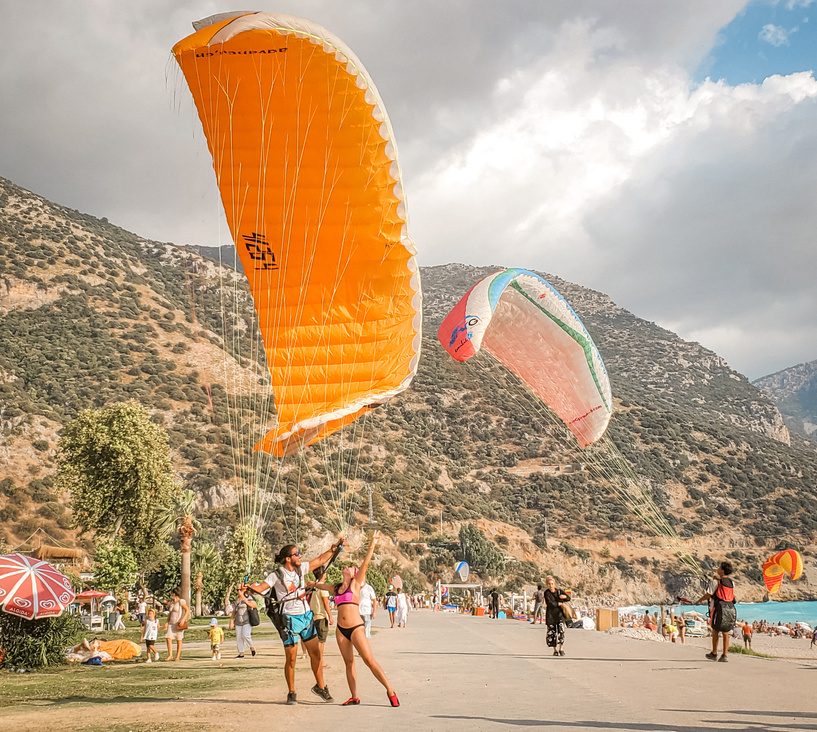
On the way to Iztuzu Beach, we also saw remnants of the Lycian civilization, who carved their tombs into the cliffside, similar to the Nabateans of Petra. The Lycians came to an abrupt end after being conquered by the armies of Alexander the Great. Hints of this sudden cultural disruption can be observed in some incomplete tombs, whose construction was halted at the time of the civilization's downfall.
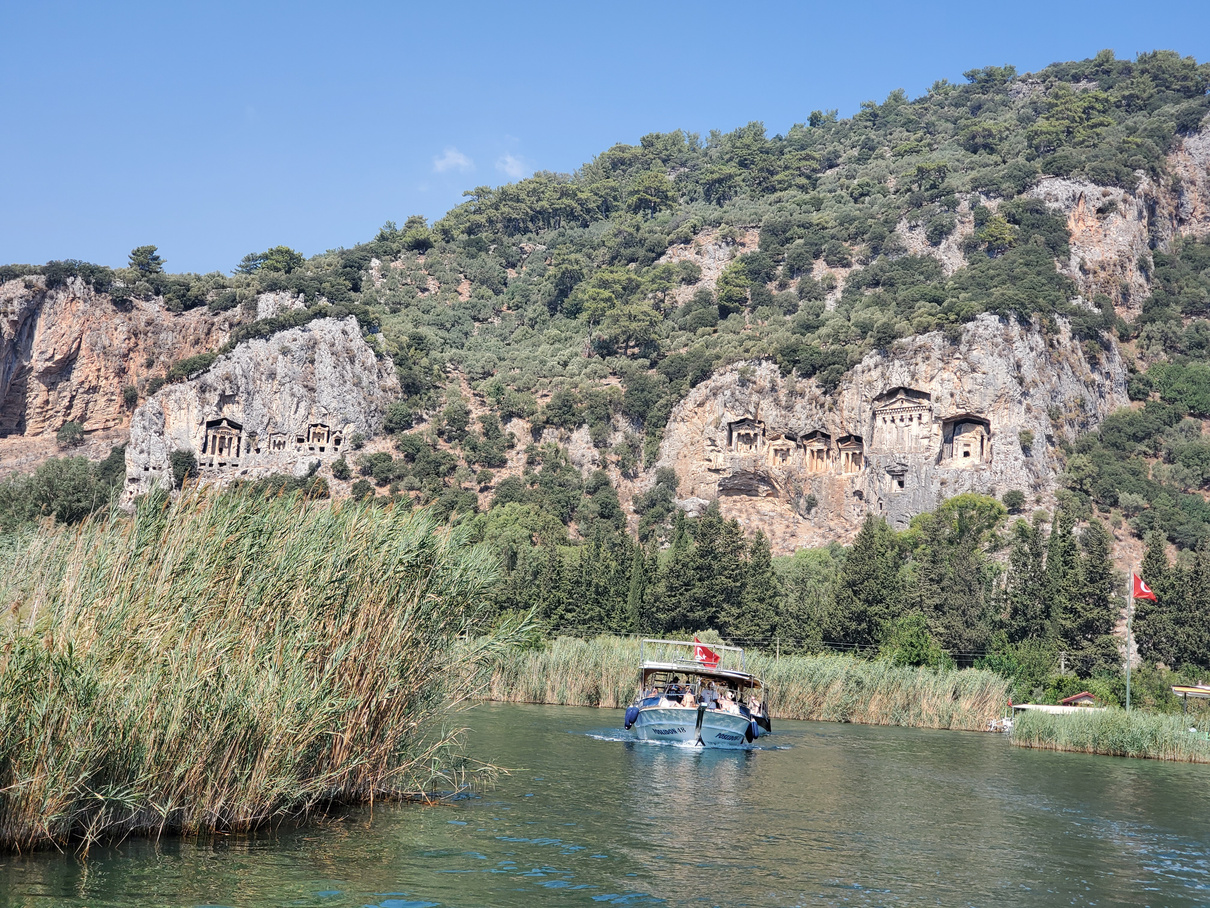
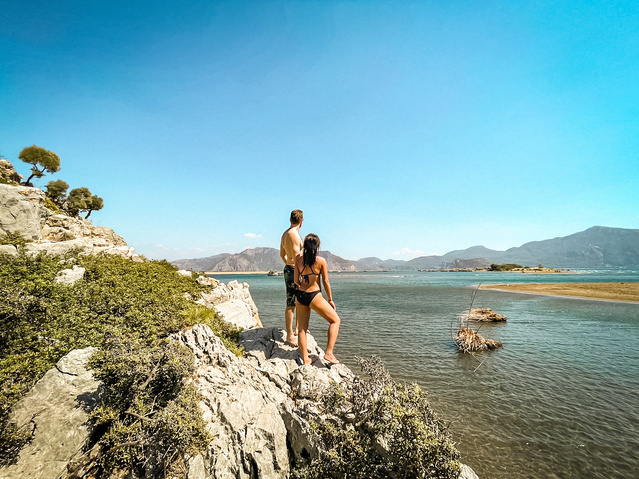

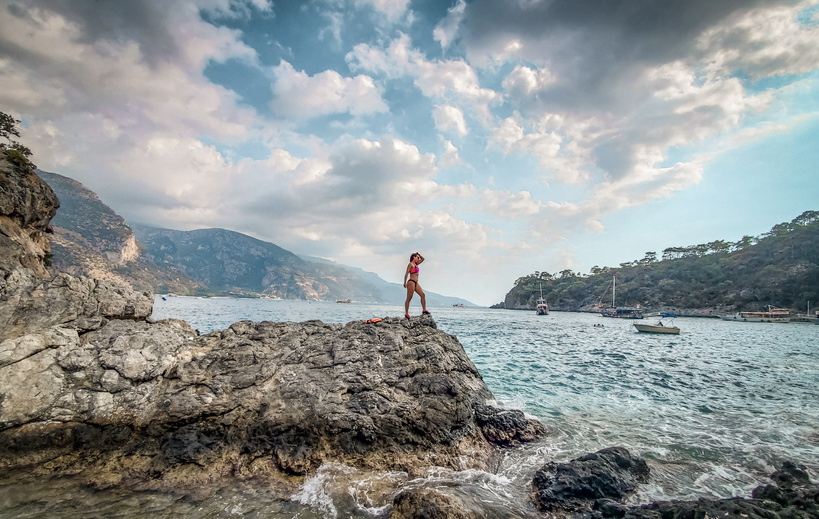
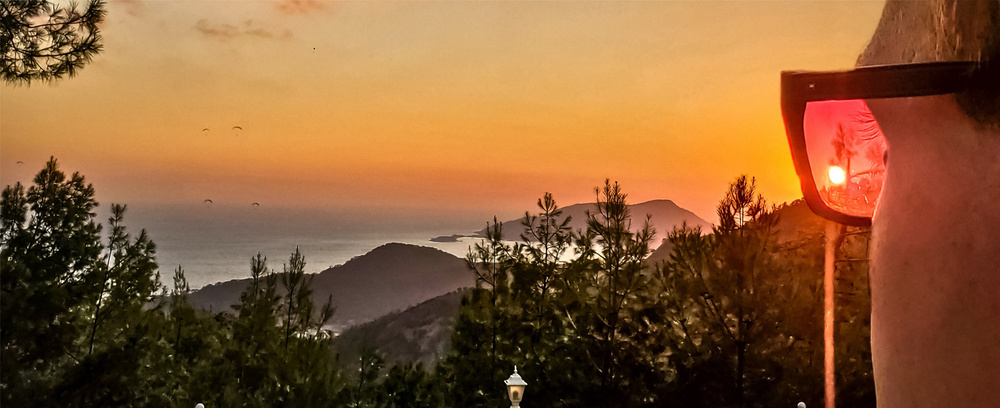
We enjoyed the next afternoon soaking up the sun at one of Turkey's gems: Ölüdeniz's Blue Lagoon, which had plenty of tourist luxuries as well as isolated areas with calm waters. Given our adventurous spirits, we rented a paddle boat and set out to explore the nearby rock islands. Ascending to a higher vantage point, Eric captured breathtaking views of the surrounding mountains, and a beautiful sky full of parasailers who boldly leapt from the highest cliffs. The turquoise hues of the water intensified with the rays of the sun, providing much visibility to the ocean floor as Eric enthusiastically jumped in.

Saklikent
Our Lessons
Adventure is never far away with Turkey's plethora of diverse landscapes. We started one morning by trekking through the icy stream of Saklikent Canyon, the 2nd largest canyon in Europe. The gently-flowing waters mixed with the pale clay to create a unique milky-bluish color below our feet. Navigating these narrow crevasses reminded me of The Narrows at Zion National Park in the U.S. (thankfully, Zion's iconic "flash flood" warning signs were not present here).
With no time to rest, our next activity was a surprisingly intense 'tubing' adventure. As the worker fitted us each with helmets and paddles, we were told that this would be a chilly but "relaxing" ride downstream. The latter was not an accurate description, as this was the polar opposite of a “lazy river.” The crystal-clear blue water pouring over bright off-white river stones created a gorgeous foreground... but this fast-flowing river had lots of large rocks to avoid, and changes in depth that led to sudden waves and mini rapids! Intermittent soakings with frigid-cold water added to the thrill; but thankfully we did not suffer a fate as dramatic as our friend, Ray. Paddling directly to our right, we watched helplessly as Ray’s tube suddenly hit a hidden rock, causing his body to body to do a a complete 360-degree forward somersault! Ray lost his tube to the fast-flowing current, meaning he had to do a 500-meter walk-of-shame down the river and back to the road, but thankfully he somehow survived the event without injury and in admirably good spirits. Truly a one-of-a-kind tubing experience.


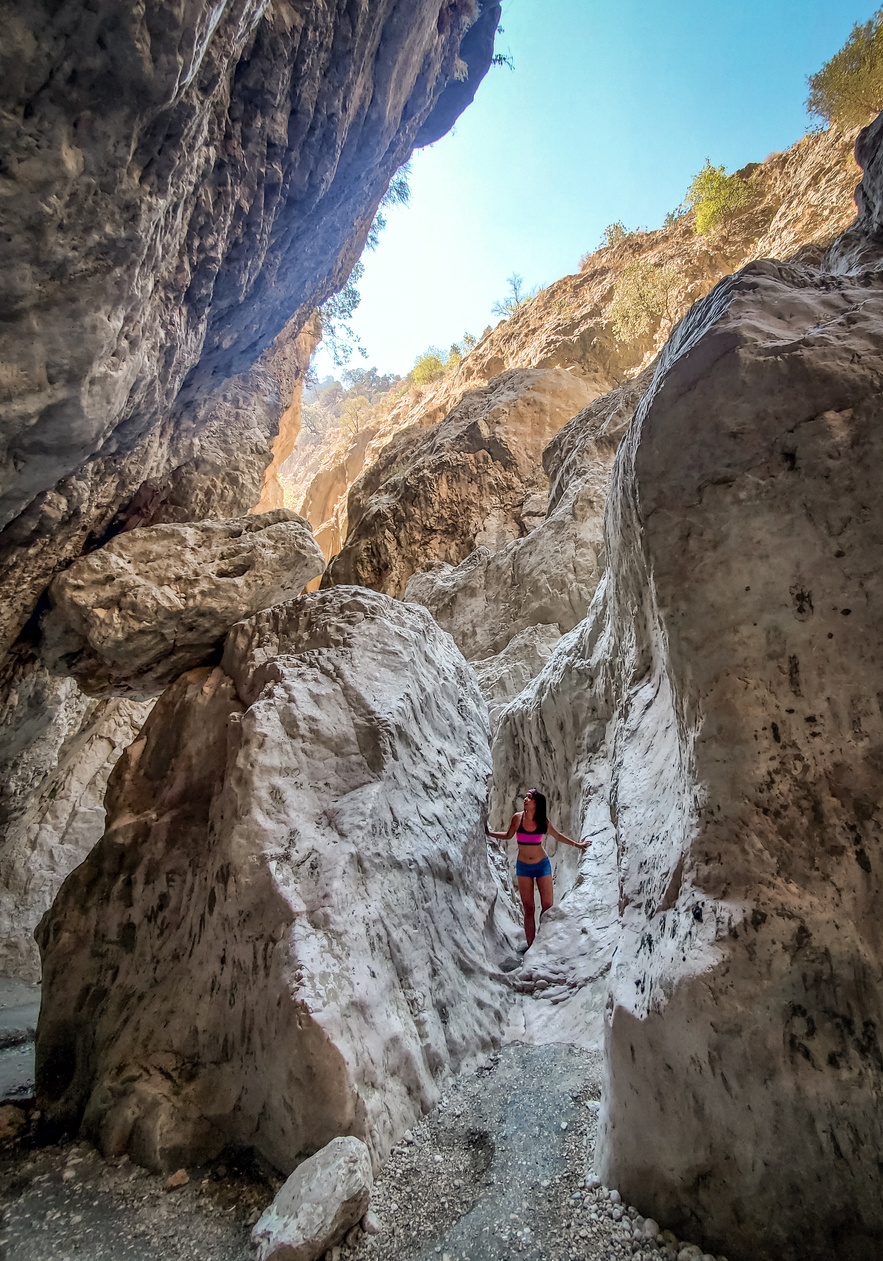
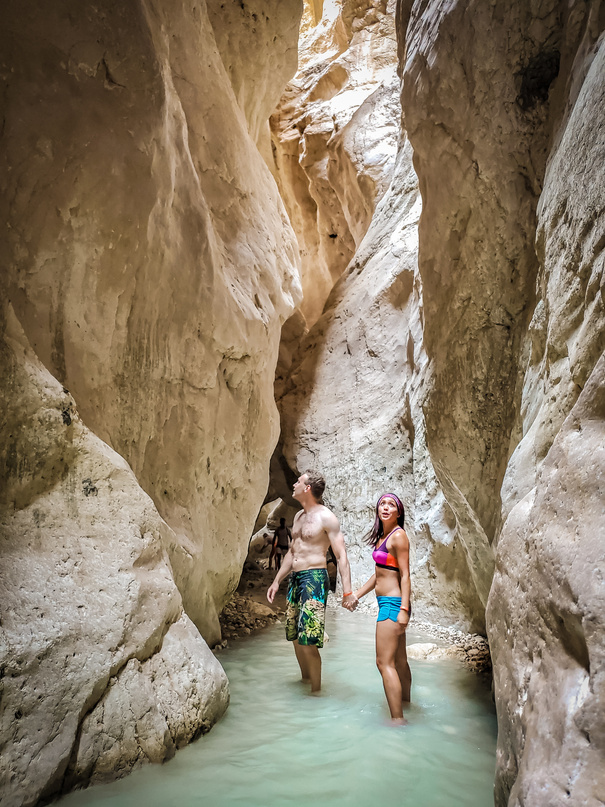
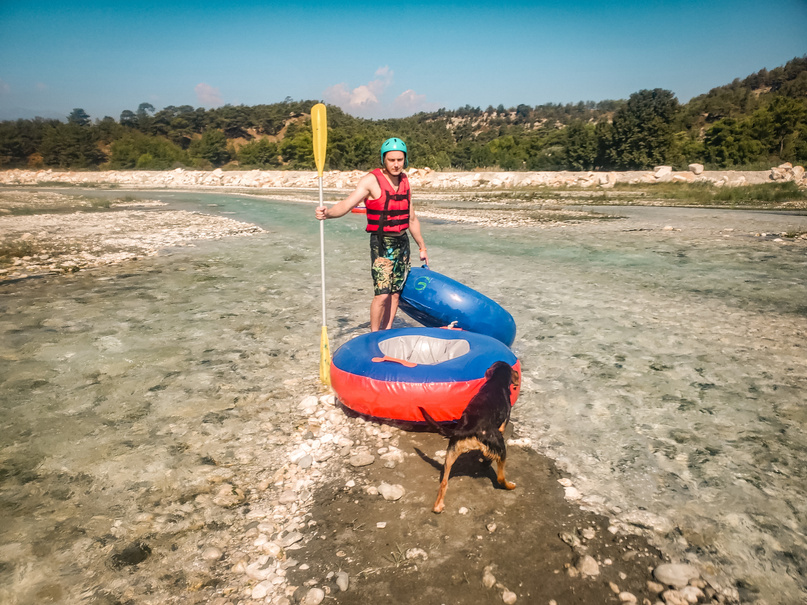
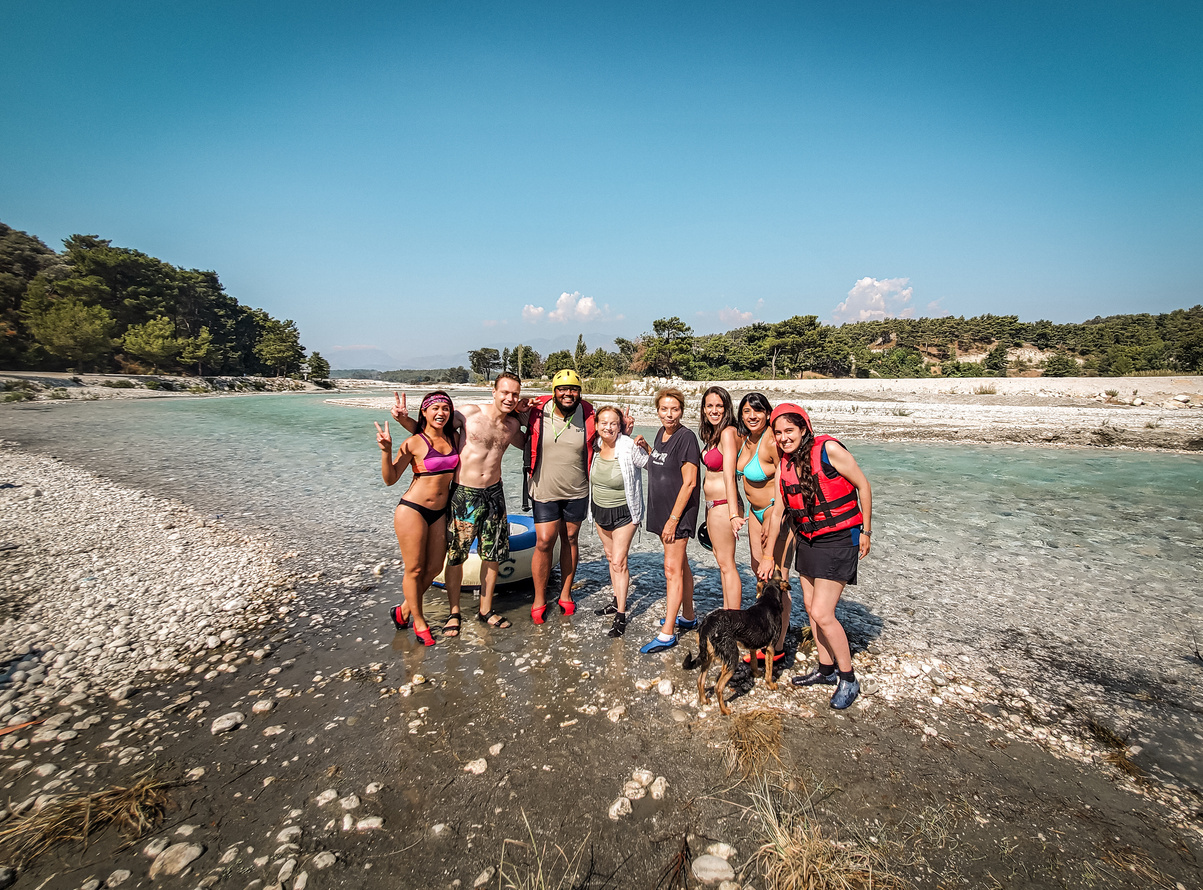
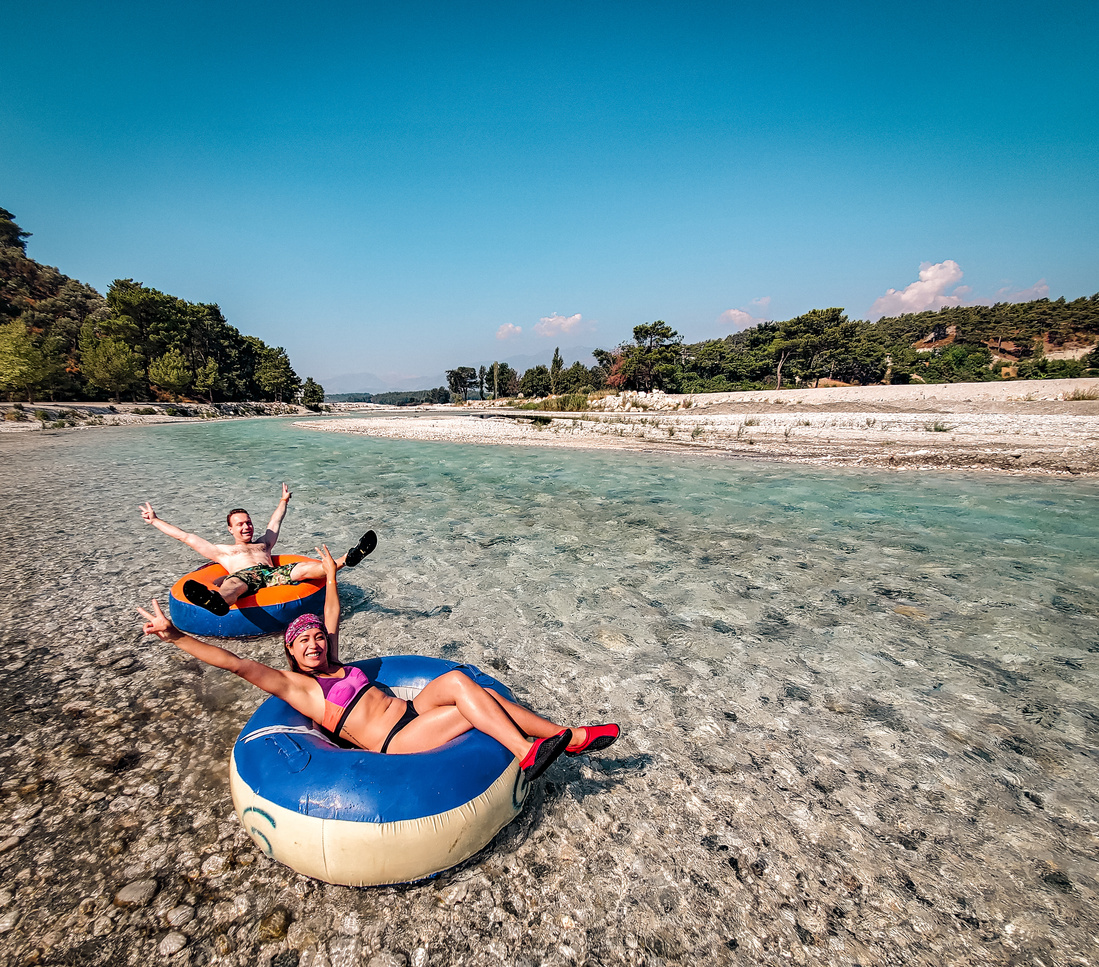
Pamukkale
Our Lessons
Pamukkale is the largest example of white geothermal “travertine” terraces in the world... with the U.S.'s well-known Yellowstone National Park being a runner-up. These terraces form when warm spring water pouring from the top of a hill contains super-high concentrations of calcium. This water decreases in temperature as it drips down the hill, leading it to solidify and form white-colored limestone.
The white stones are smooth and blindingly bright when the sun hits—so attractive that citizens of the 2nd-century ancient city of Hierapolis used it as a spa. Not surprisingly, in modern times, a spa-hotel was built here too. In 1990, this hotel began siphoning Pamukkale’s water to baths for hotel-goers, before transferring it back to the terraces. This unfortunately led to 'dirty' water that discolored the terraces... and so much public outcry resulted that the hotel was closed, and demolished. What an impressive response!
Today, Pamukkale is a protected site. The spring water is siphoned to different areas of the terraces on a rotating basis, in an effort to promote rejuvenation. Hopefully this ends up as a 'win' for nature. Although tourist areas are limited, we were able to find a pool and cover ourselves in clay while soaking up the sun. Note: it's fun to bathe in these waters... but when you lift your feet up, along with thick, white clay you will also find plenty of clumps of hair from previous tourists weaved between your toes! Luckily, our hotel’s hot spring pool seemed much cleaner, and we promptly washed off thereafter.
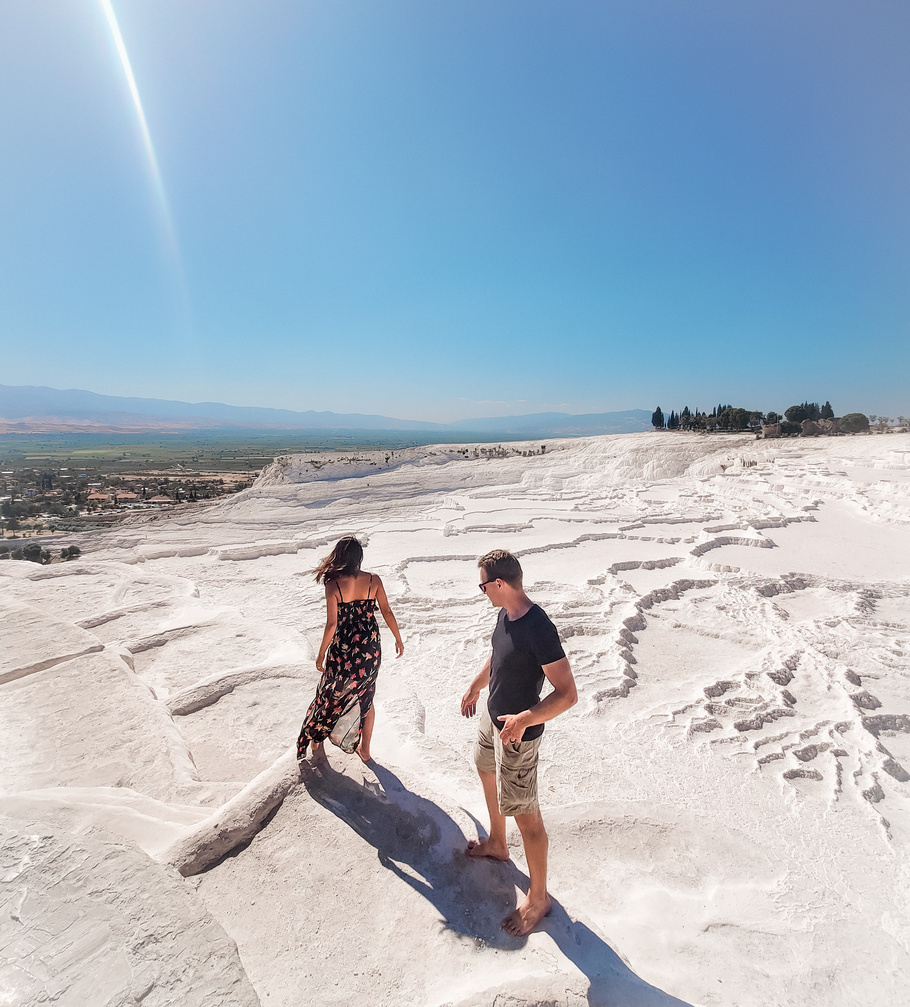

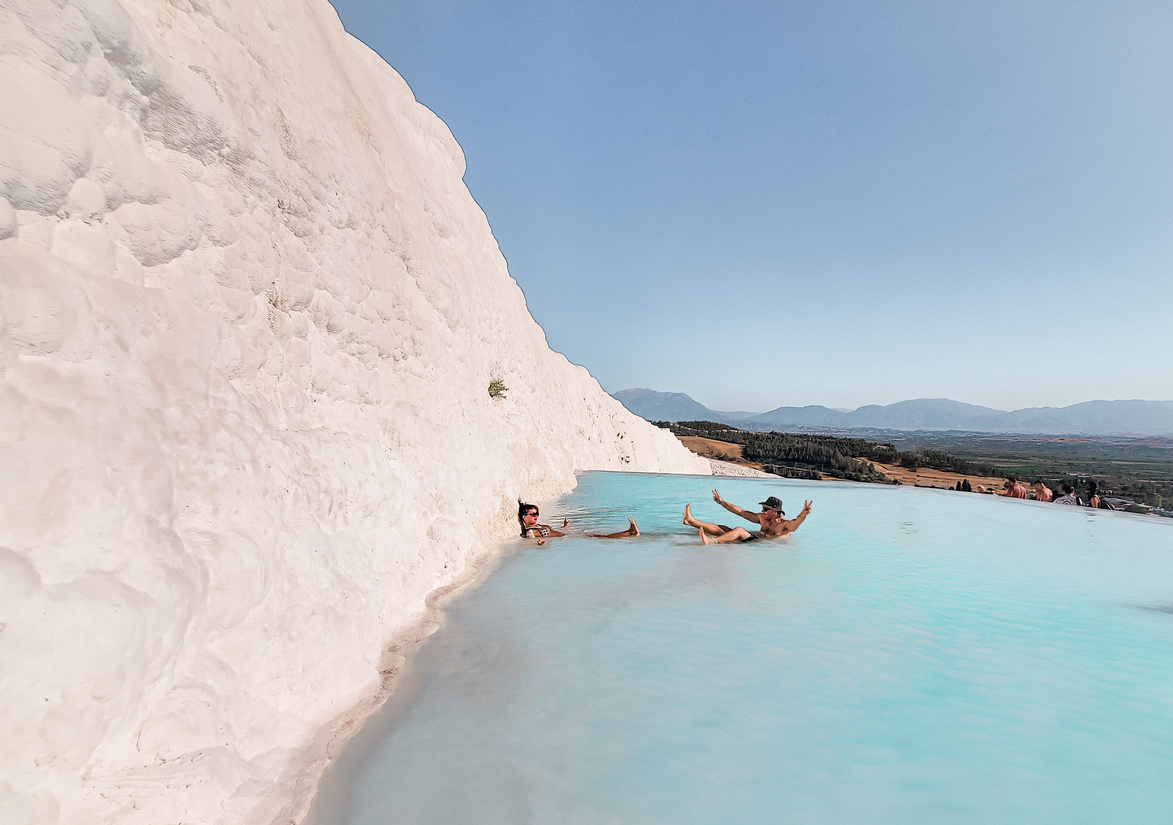
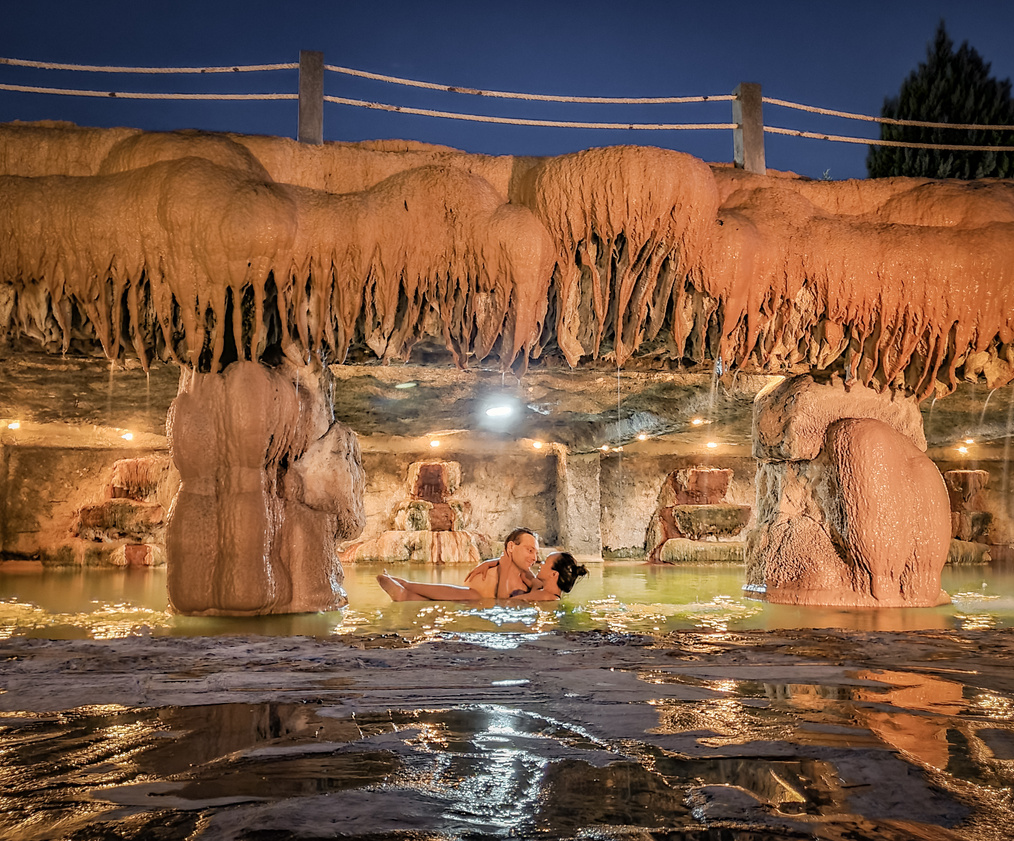


Cappadocia - part 1
Our Lessons
On our way to see the fascinating landscapes of Cappadocia, we stopped to admire the incredible underground cave "cities" that were once used as protective fortifications. These labyrinths were built by local Christians, and they were used for safe shelter: first from the Romans, and later from Islamic raiders. One particularly large room was even built laterally in the shape of a cross—a large underground church!
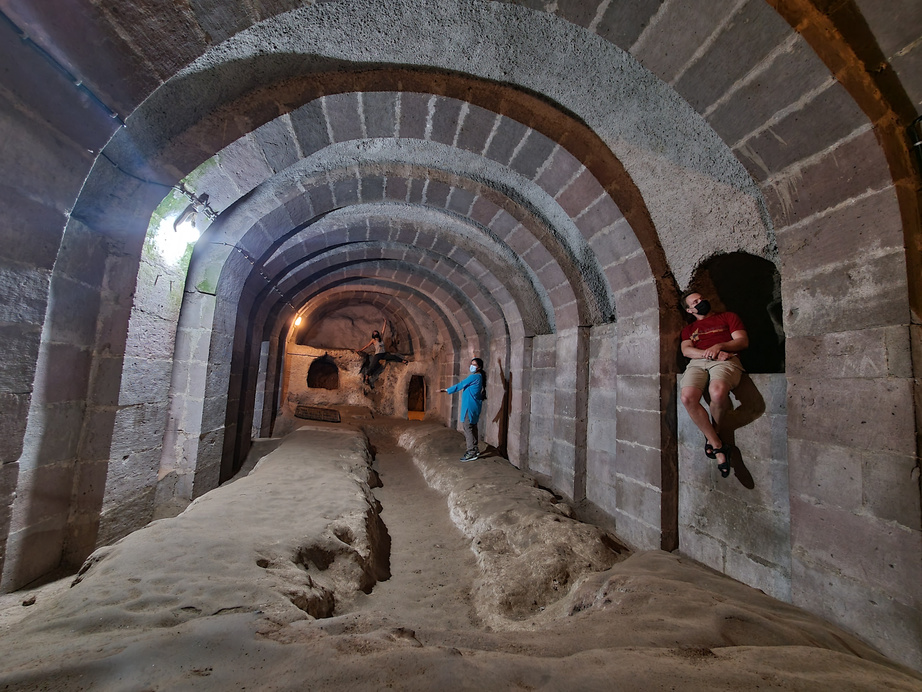
We learned just how extraordinary these subterranean cities were: the largest discovered city was 10 levels deep, and was estimated to have housed up to 10,000 people! As we descended as deep as 8 stories below the surface during our tour, the narrow passages connecting each level kind of reminded us of the tunnels of an ant farm.
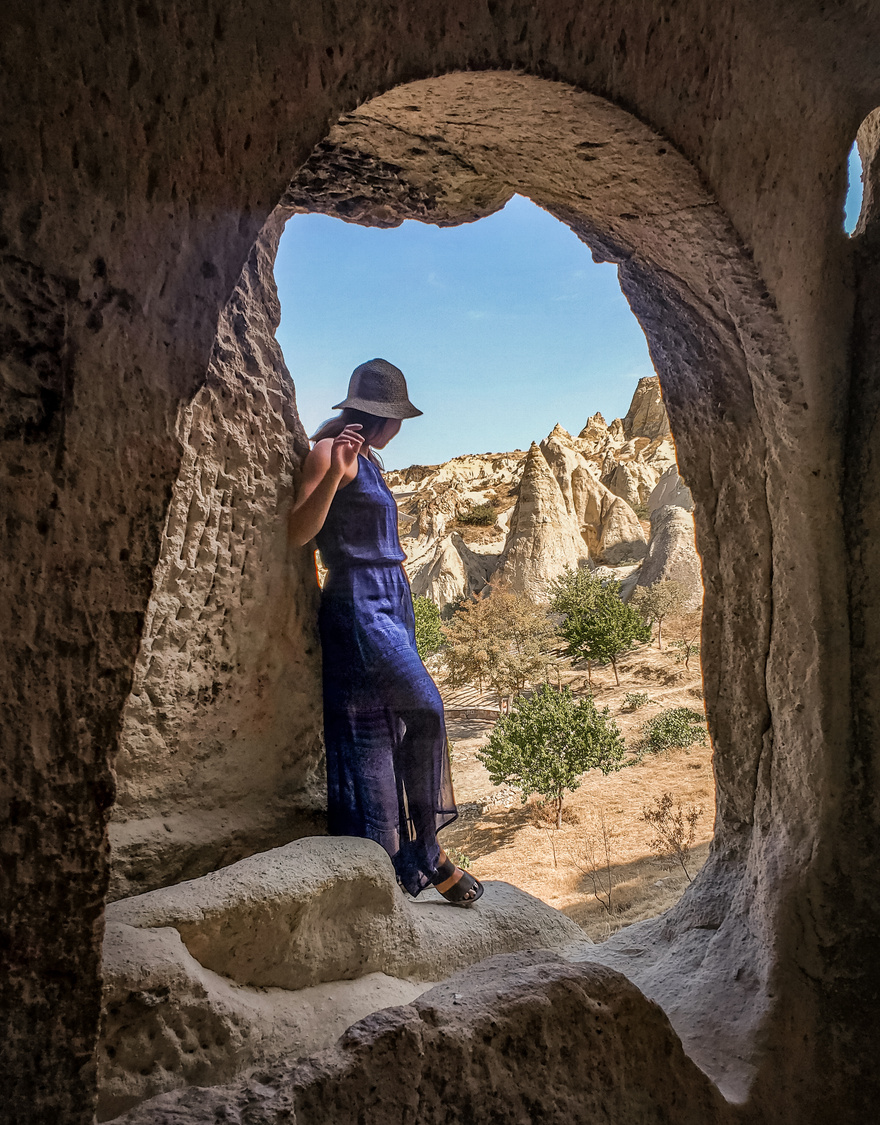
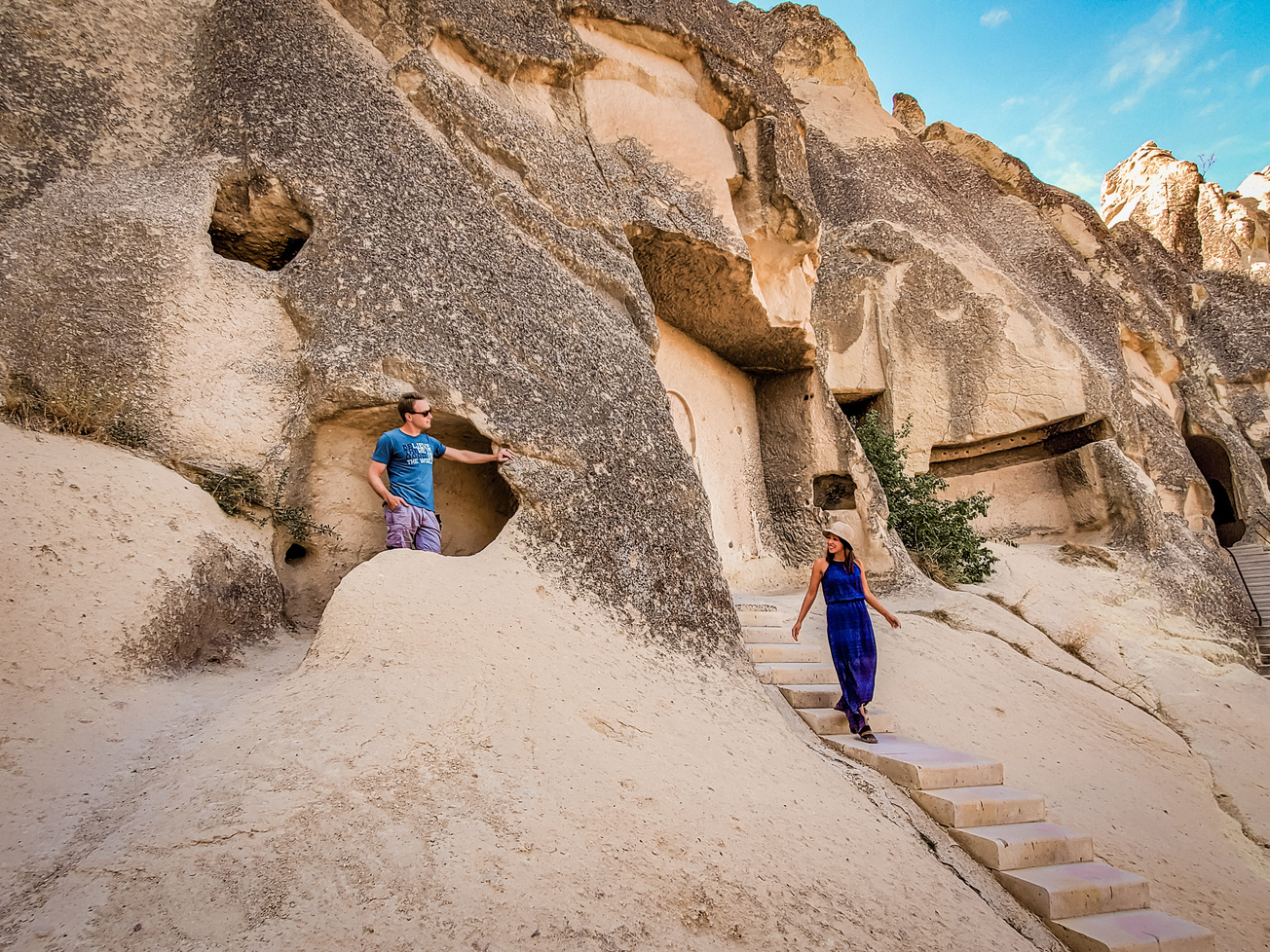
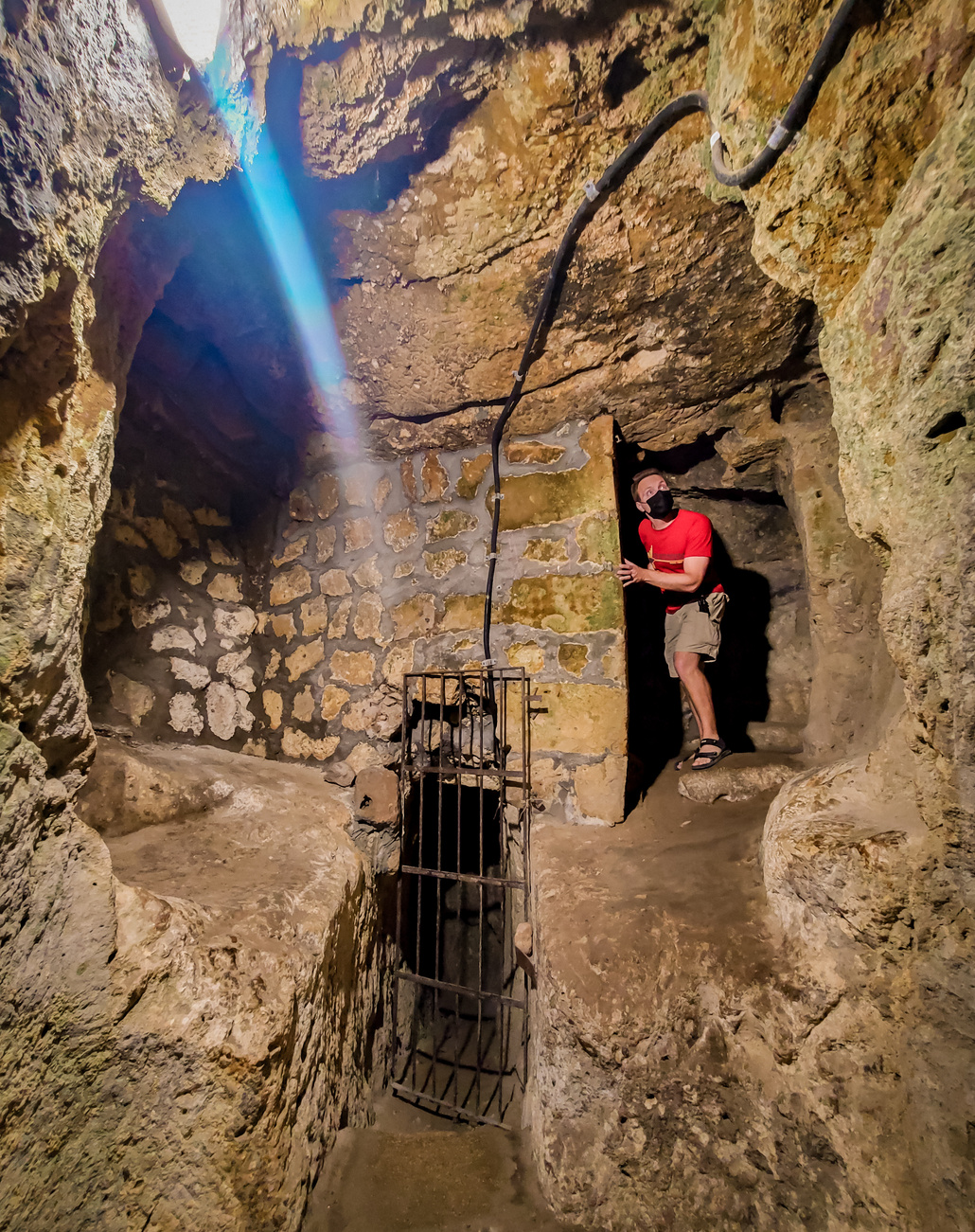

Cappadocia - part 2
Our Lessons
Walking around these hollowed-out cities, we imagined ourselves having been transported into an episode of The Flintstones. Living quarters, animal shelters, churches, and other spaces had all been carved out of soft rocks! Such living was undoubtedly hard, but cave-dwellers still had time to appreciate art and culture! Many caves preserved in the region known as the "Goreme Open Air Museum" still contain original color frescoes, dating back as far as the 11th Century!
Luckily, staying in Cappadocia today does not involve any hardship. In a smart business move, many owners of cave dwellings and former "fairy-chimney chapels" have converted their spaces into boutique hotels, where visitors can live out their best “troglodyte” fantasy lives in luxury.

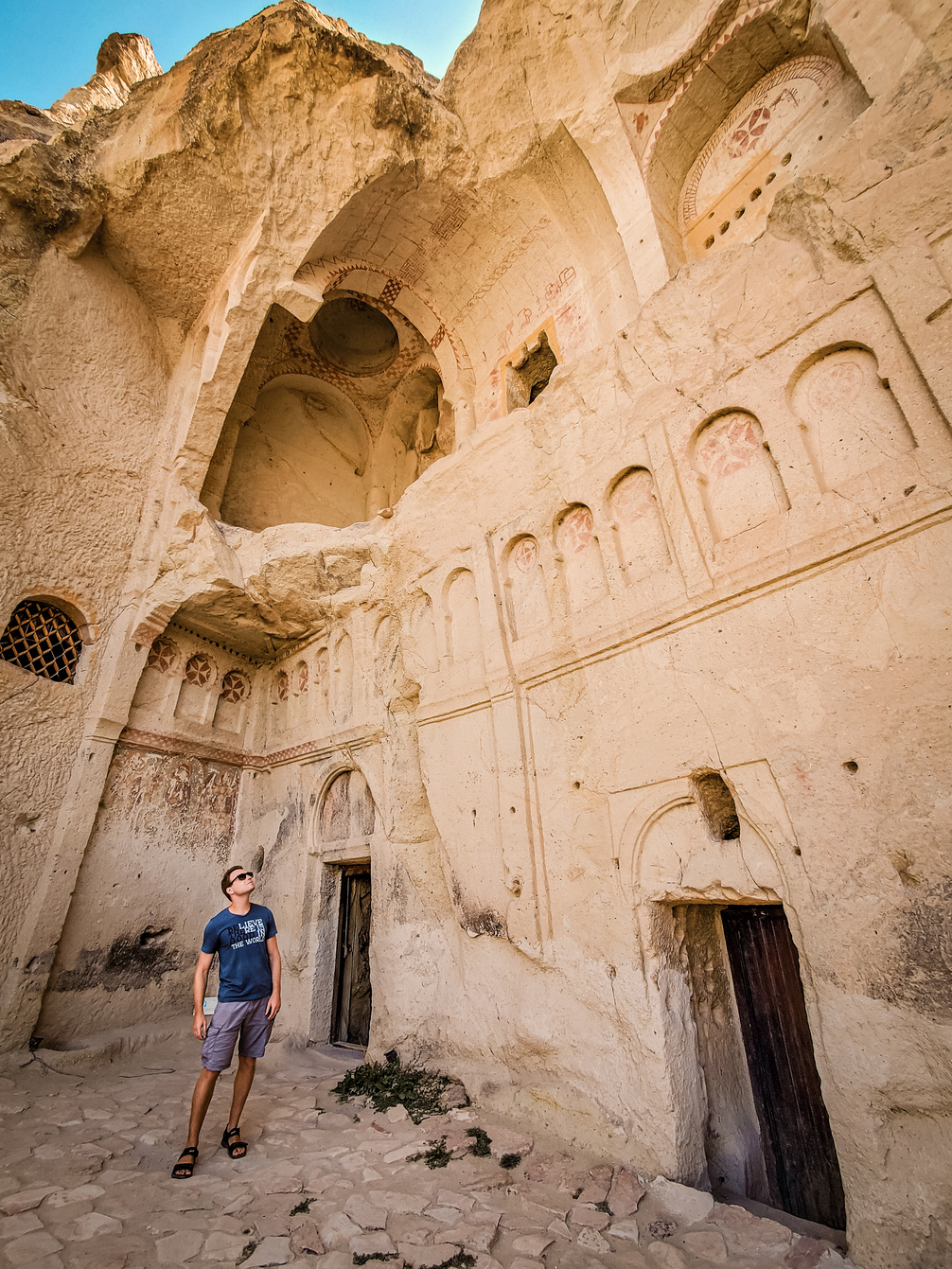
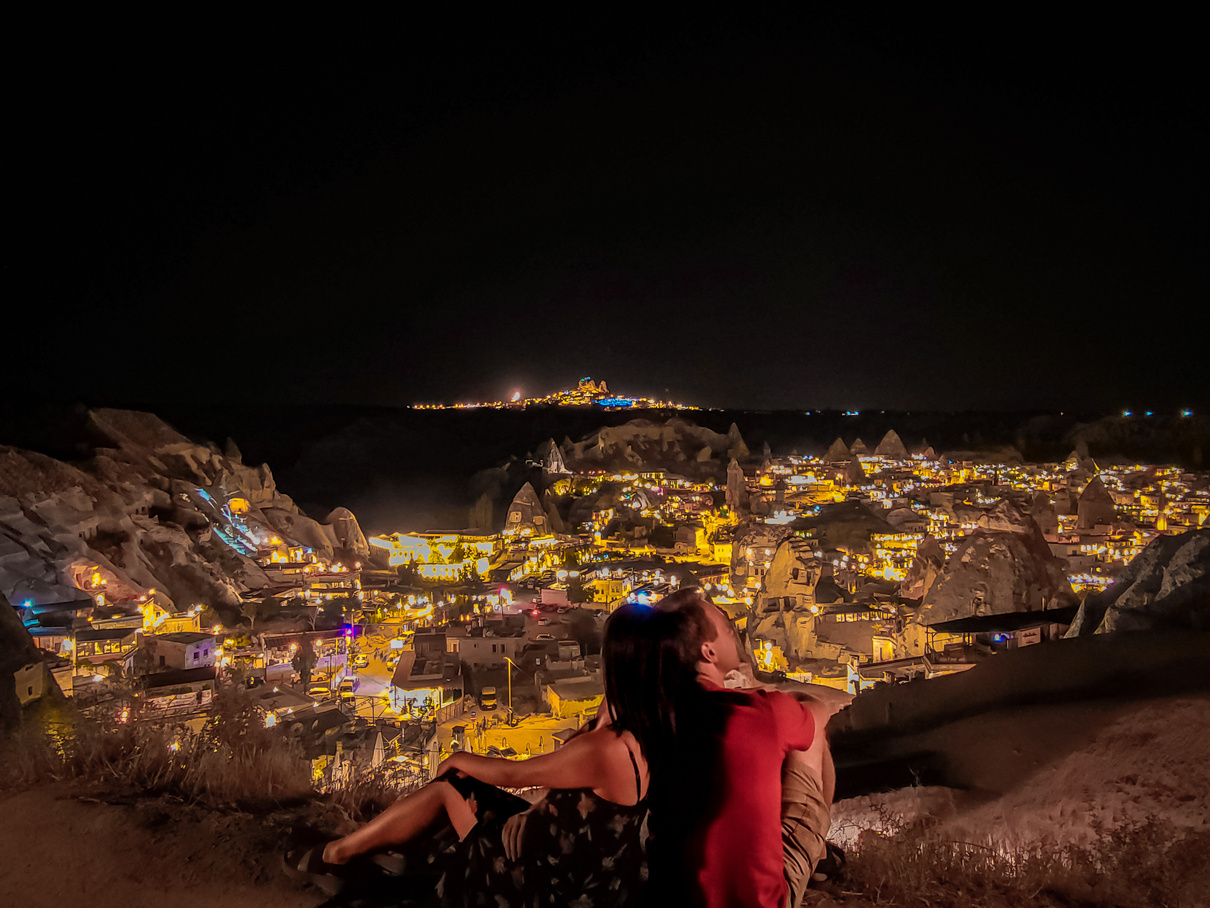
Fighting back travel fatigue on our only night in Cappadocia, we stayed up late to take a taxi up the mountain to see the cave houses all lit up! The nighttime views were spectacular, especially with hot apple tea in hand (a favorite beverage for us in Turkey).
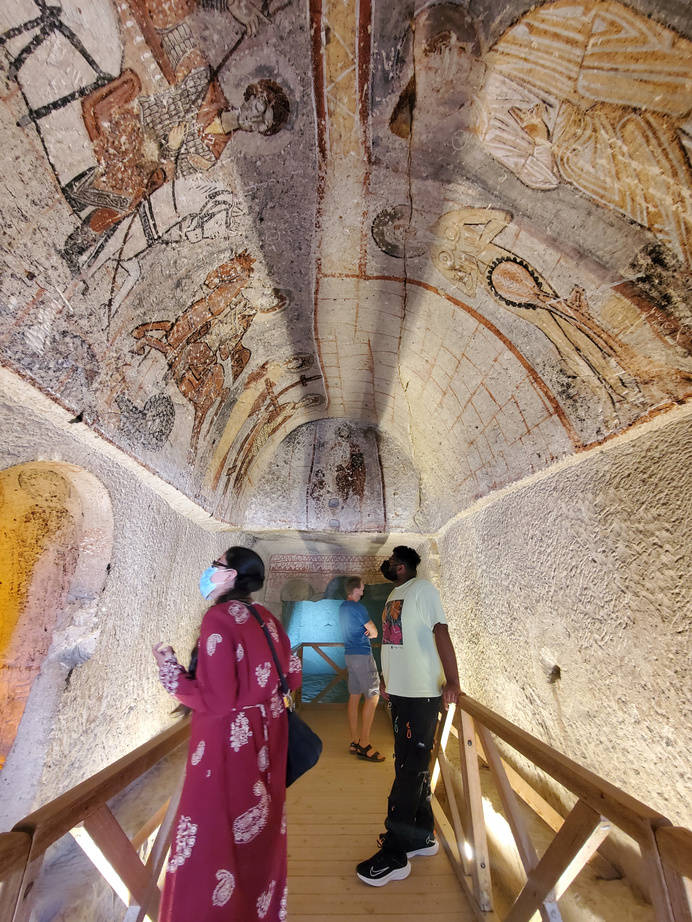
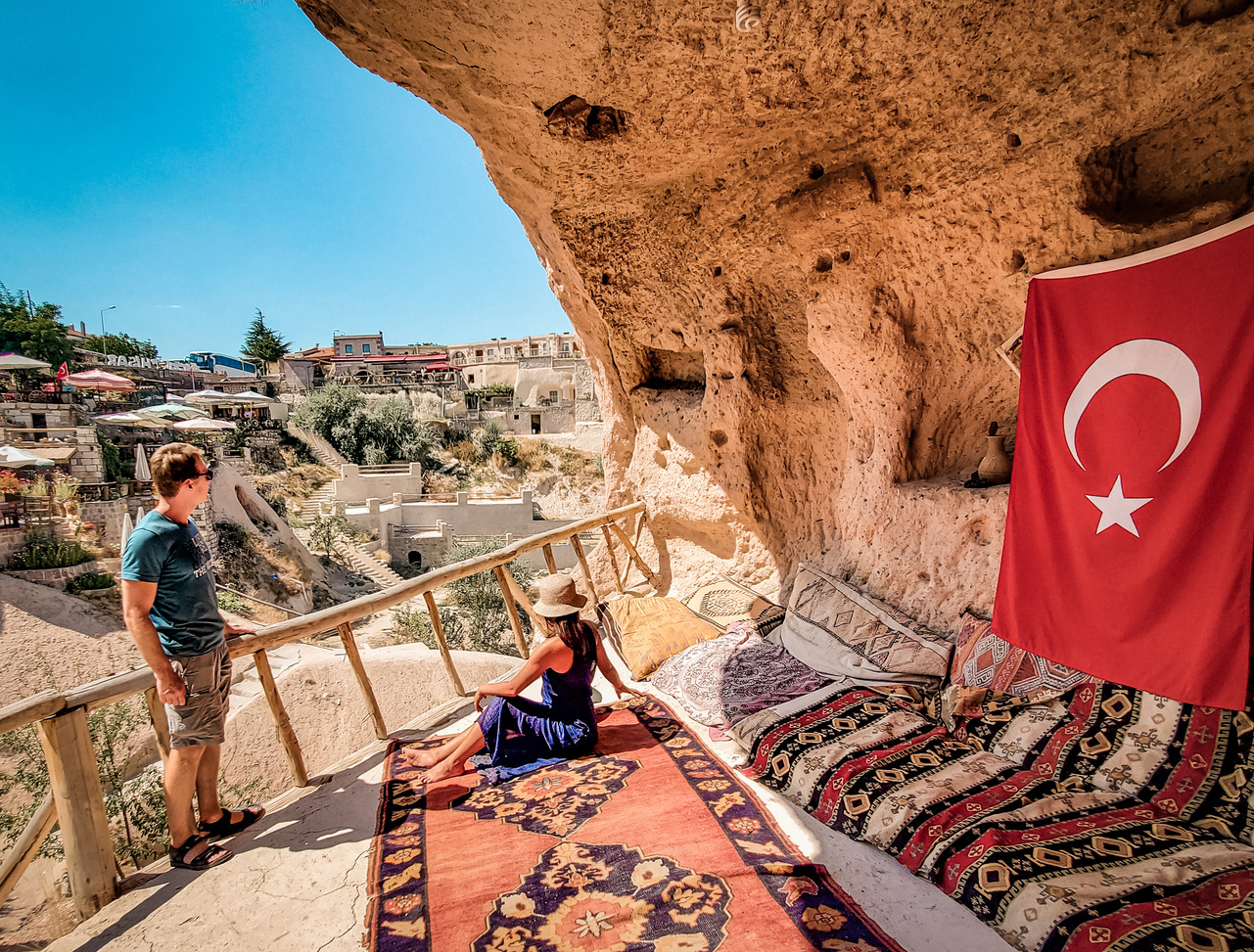
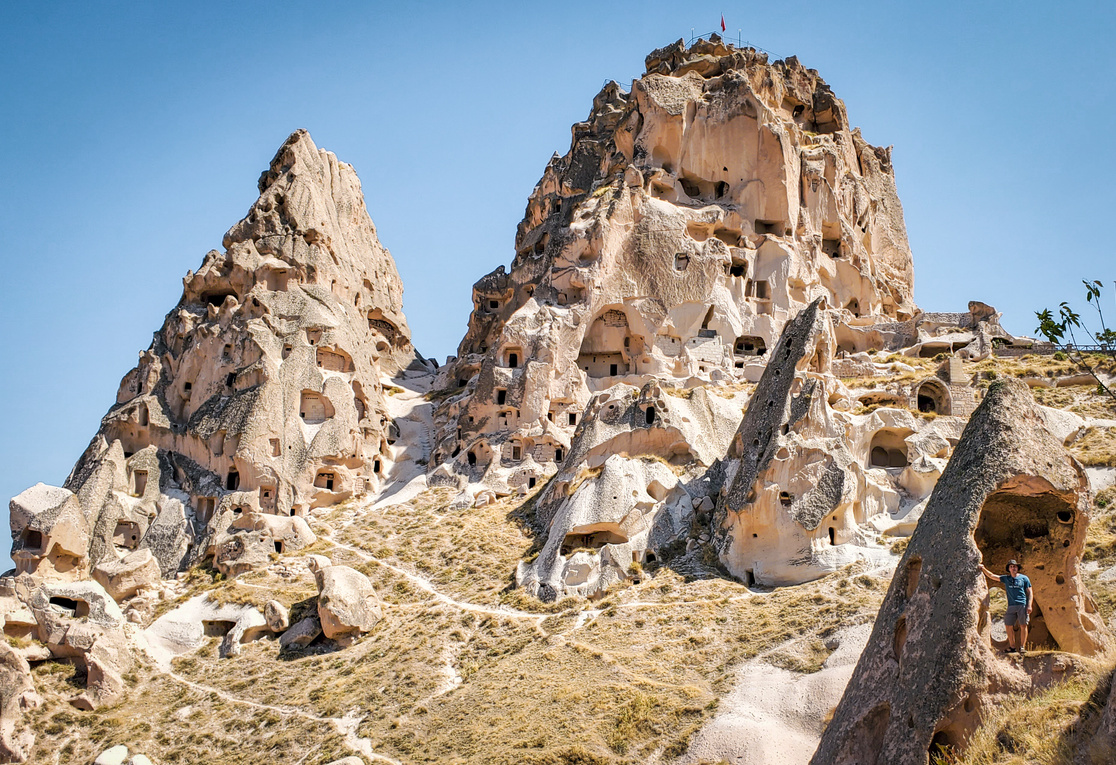
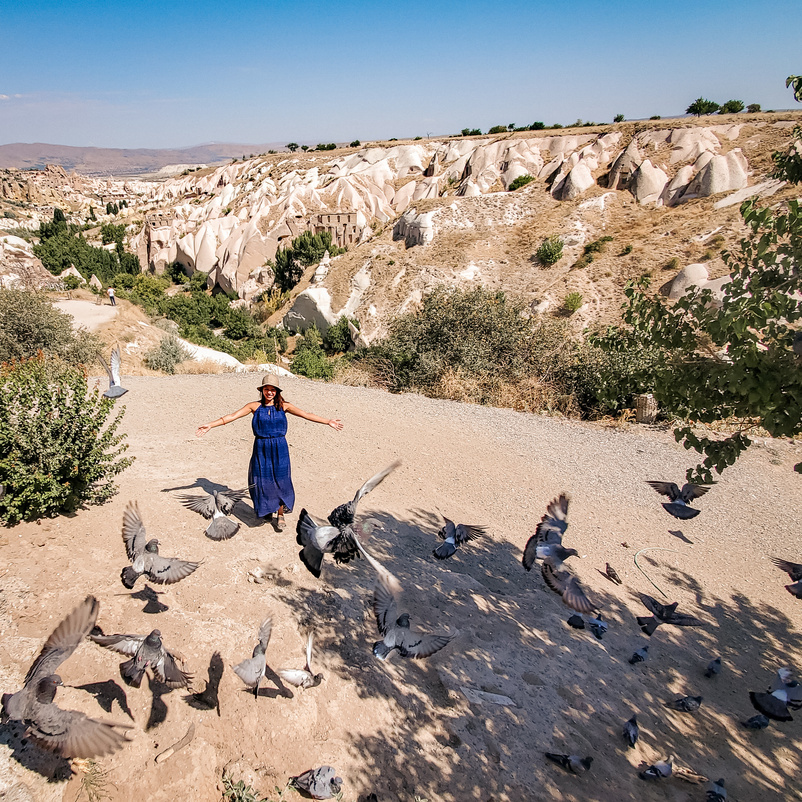
Cappadocia - part 3
Our Lessons
So how did Cappadocia's mesmerizing 'fairy chimneys' form? It turns out they are a result of a geologic process that began millions of years ago, when volcanic eruptions rained ash across modern-day Turkey. The ash hardened into tuff, a porous rock, which then became spotted unevenly with pieces of basalt, a harder rock. The basalt erodes more slowly than tuff, so places with heavier deposits of basalt essentially had a protective 'cap' that slowed the erosion of the tuff directly below it. In surrounding 'unprotected' areas, the softer tuff wore down more quickly, giving way to basalt-capped pillars that stand as tall as 130 feet. Just like that, a fairy chimney is born—"no pixie dust required," our guide joked.
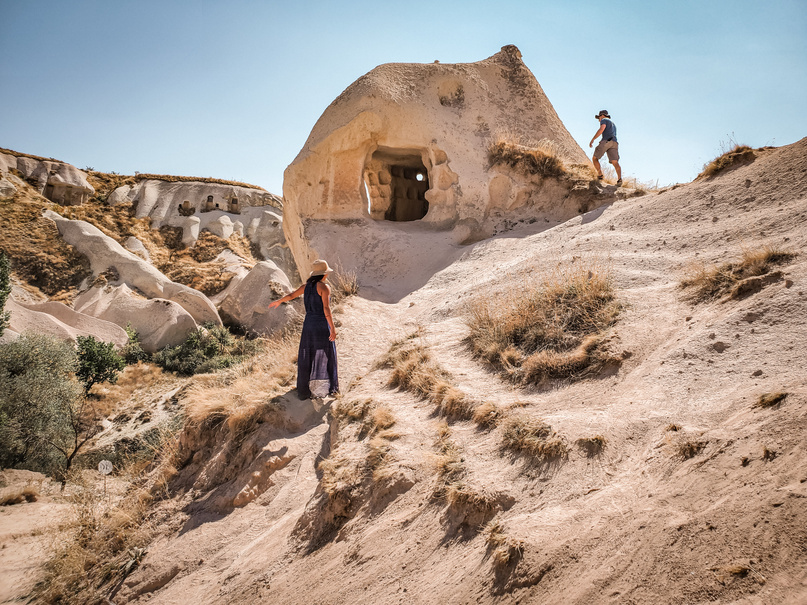
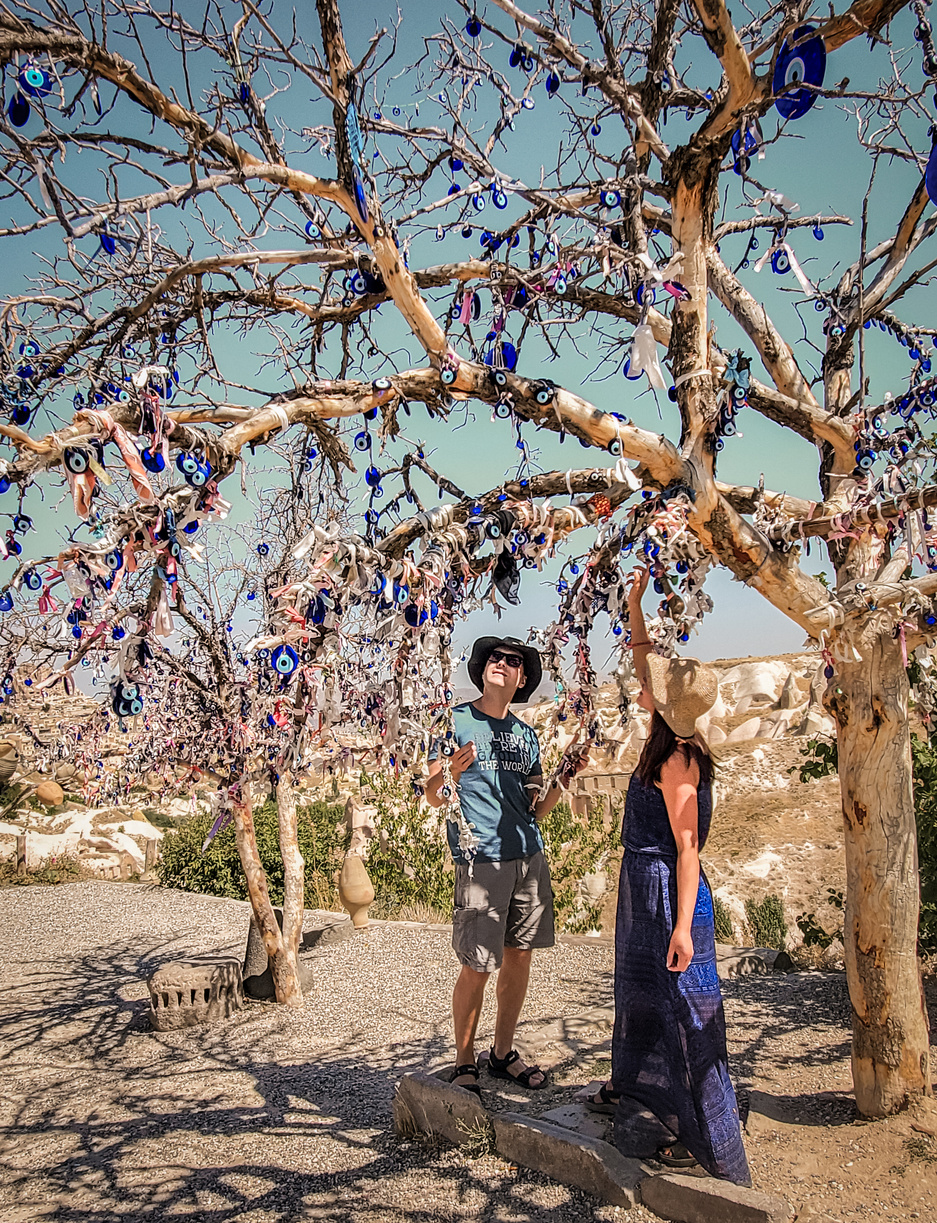
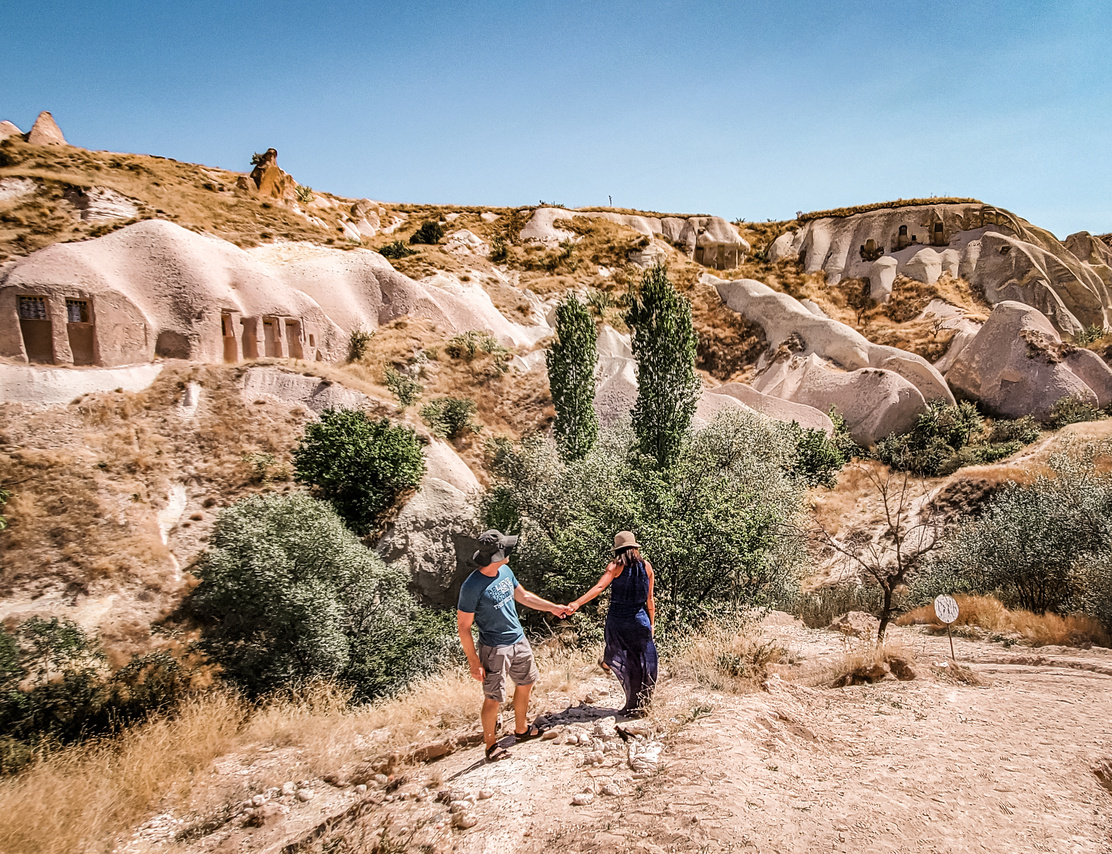
Follow the pigeons? We received a warm welcome from these fearless birds at "Pigeon Valley." Pigeons, like the humans of past eras, seem to enjoy making their homes in the fairy chimneys. However, they had no reservations about leaving the protection of their caves at the first sound of a human sprinkling food on the ground.
Here we were intrigued to find a tree covered in Nazar Boncuk charms, also known as the Turkish “evil eye.” Like the ancient Egyptian Eye of Ra or Eye of Horus, it is believed that this blue amulet repels evil spirits and keeps wearers safe from harm.
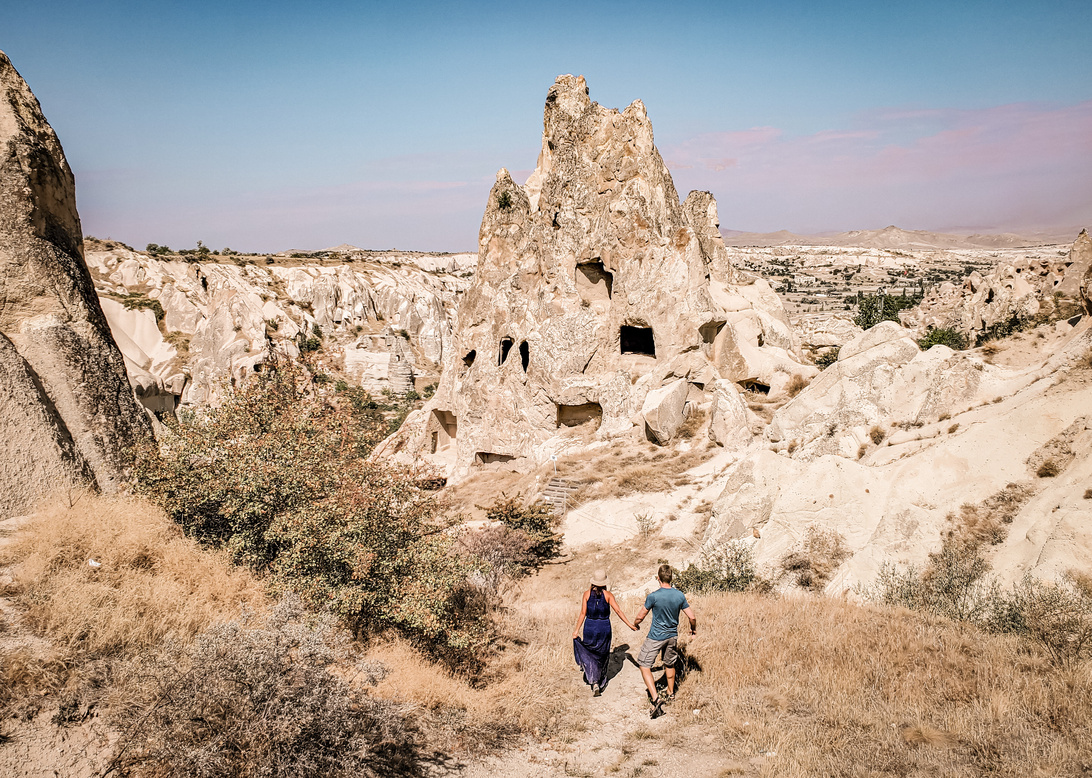
Cappadocia - part 4
Our Lessons
I must admit, my 33rd birthday this year was pretty amazing. First, our Egypt tour group threw me a surprise party in Luxor. Then, I received a special gift from my sweet husband: a chance to be hundreds of feet up in the air in a hot-air balloon ride, soaring high above Cappadocia!
Ballooning is the ultimate way to see this area’s unique landscape: drifting silently over beautiful pillars, hollowed-out hills, river valleys and cliffs at dawn. This was my best sunrise so far; the perfect way to celebrate turning another year older... with a champagne toast to boot!



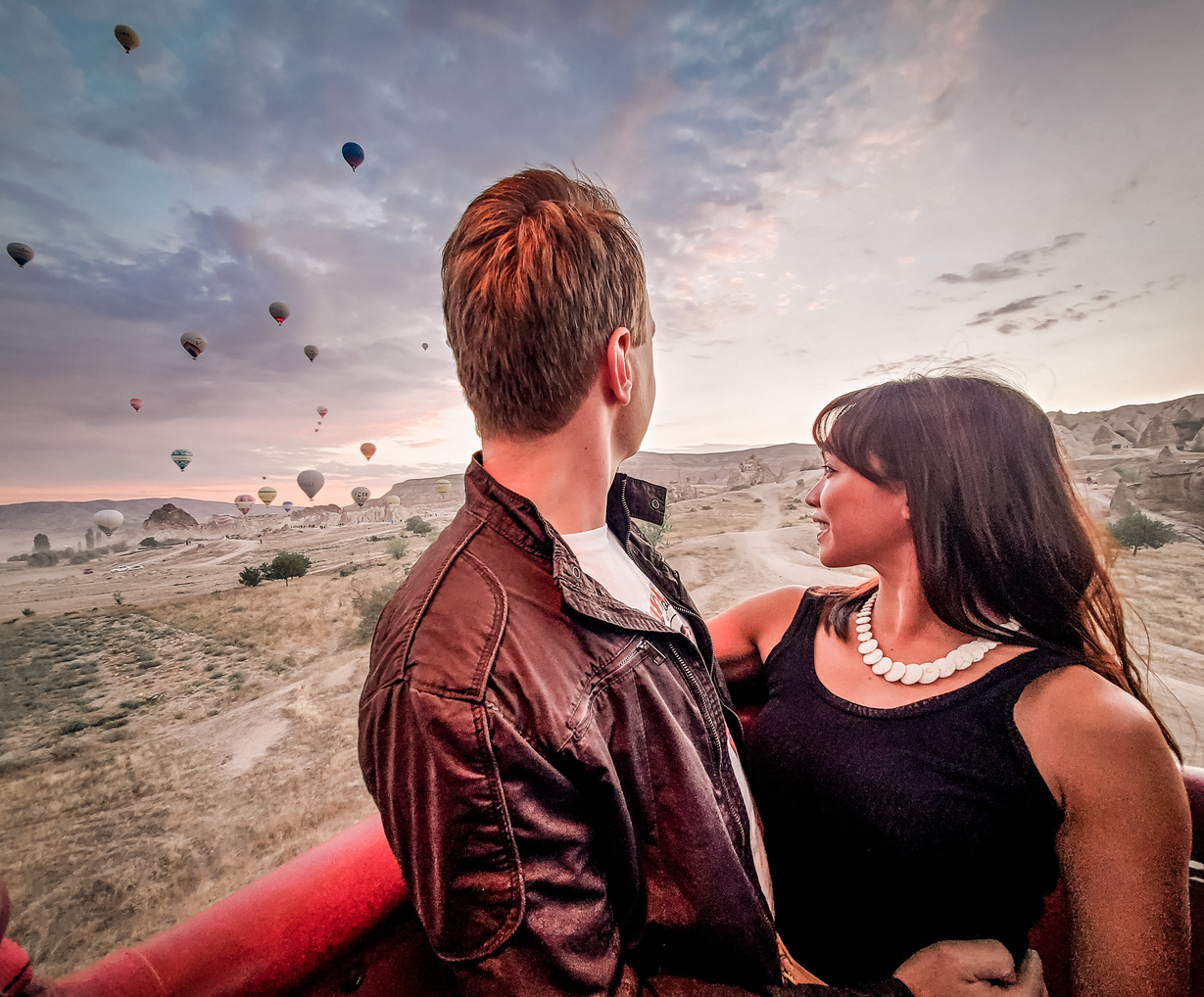

Istanbul - part 6
Our Lessons
No trip to Turkey is complete without exploring a beautiful shop of Turkish silk rugs... or without experiencing first-hand a Turkish bath, or hammam.
Unsure of the etiquette, we opted for the "shorts-and-bathing-suit-on" version, which was nonetheless almost a full-body scrub. The accommodating staff began by taking me and Eric together as a couple to the beautiful white-marble communal bathing room, where we had half an hour to ‘loosen up’ our skin in a hot steam + cold-water sauna (it never seemed so refreshing to repeatedly empty pots of frigid water over ourselves… until we felt heat this intense!). With our skin all pruney and ready be sloughed off, we were taken to the scrubbing room, where our entire bodies were then exfoliated using what felt like sandpaper mitt (Eric kept asking what the point of this, was but he was clearly in his happy place when the exfoliator scratched his entire back!).
The final step was a soap-bubble massage, where a garbage bag-sized layer of foam was emptied onto our bodies, massaged in, and washed off like a baby. After this, we were wrapped up in towels and given free time to sip tea or take a nap (I took the liberty to enjoy both). That evening, as he gingerly applied Vaseline to several areas of over-chafed skin, Eric declared he would prefer to keep his epidermis in the future. Perhaps my attendant had been more skilled, because I had no such after effects and would enthusiastically say this is an experience everyone should try at least once while in Turkey.

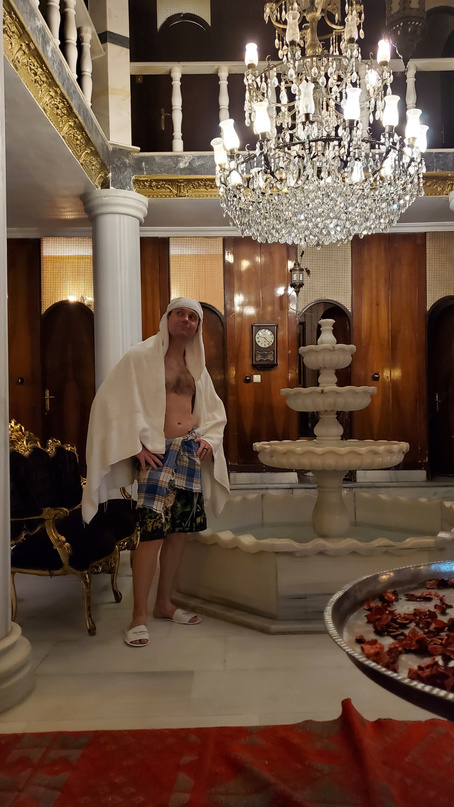
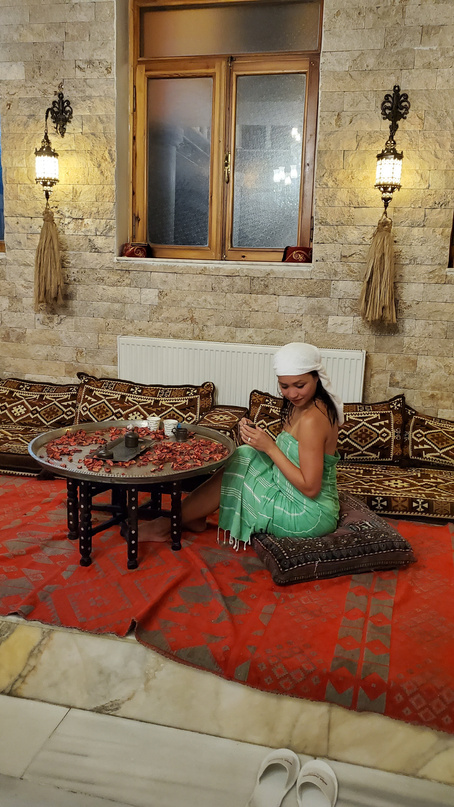


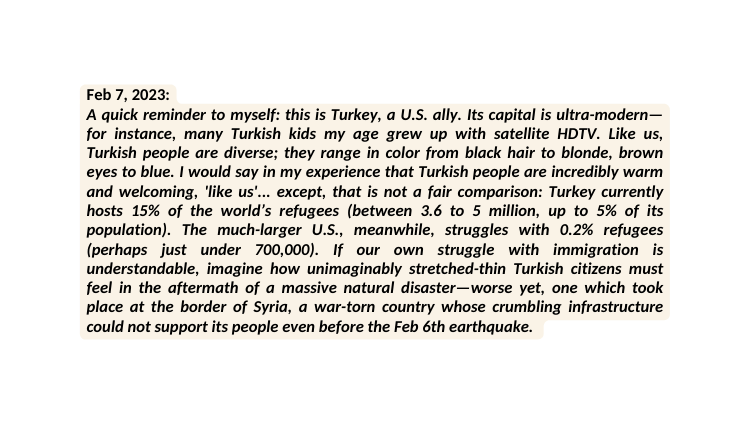
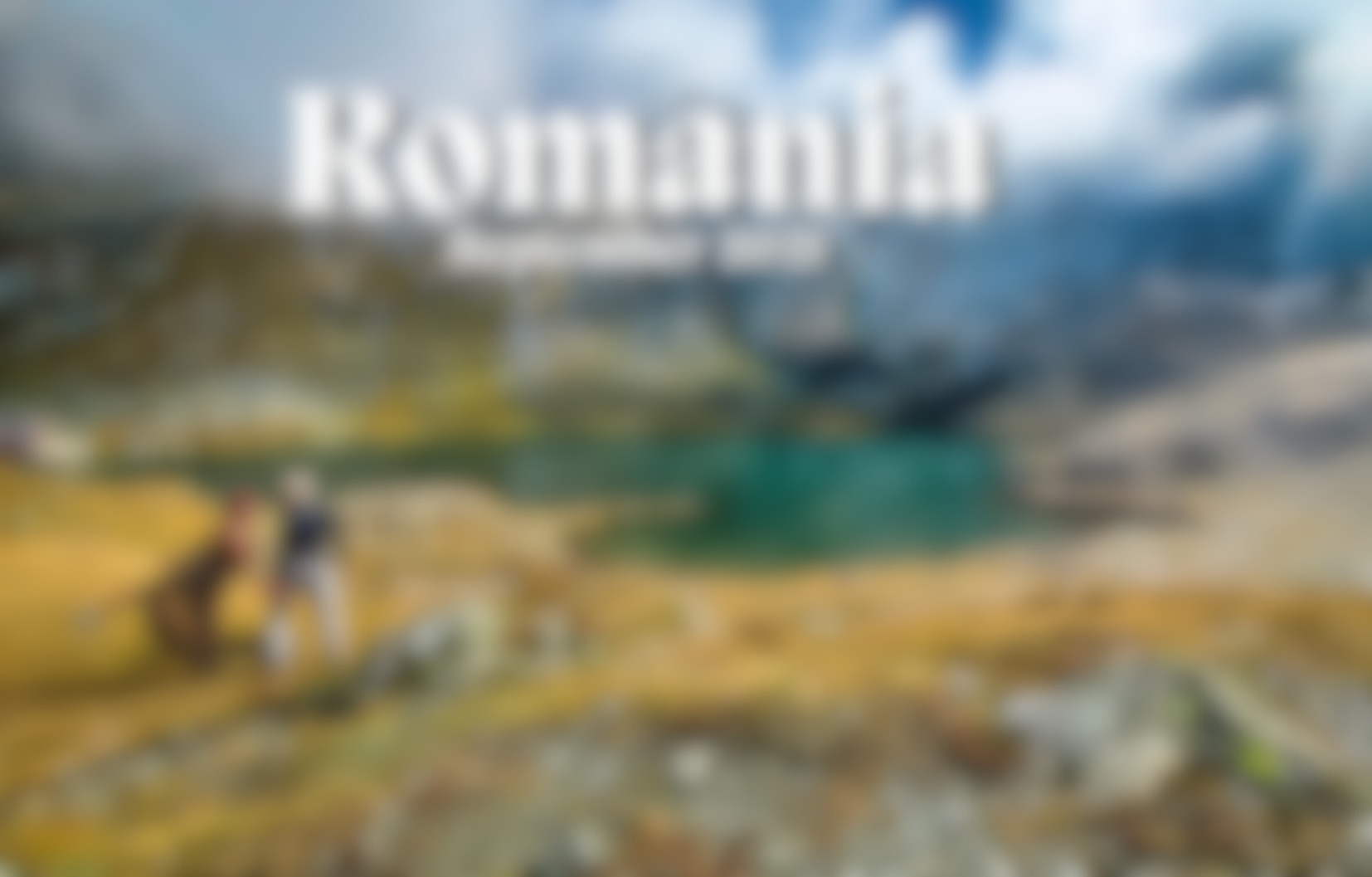
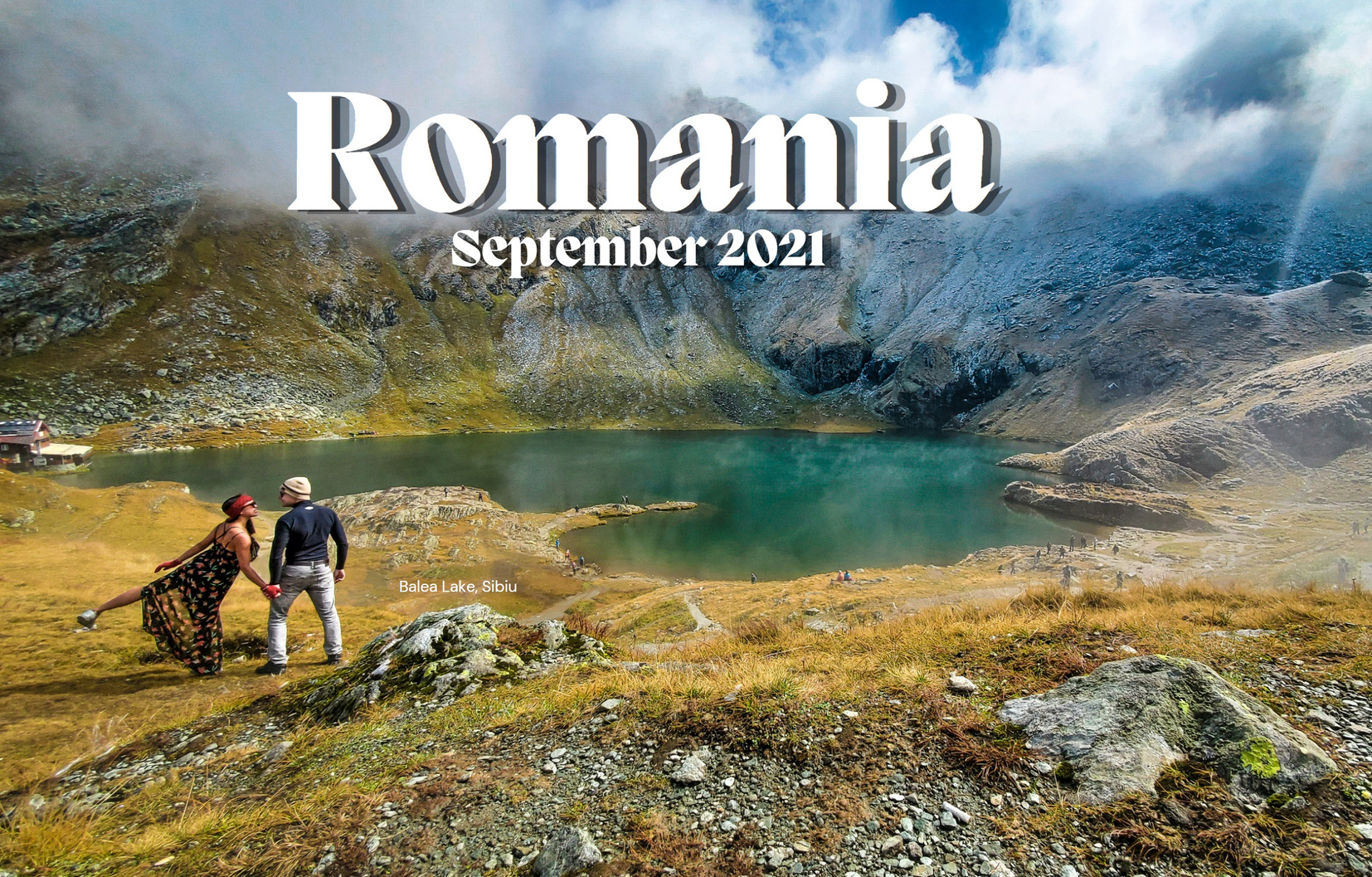
Bucharest - part 1
Our Lessons
Jumping from the Middle East to former Soviet-controlled Eastern Europe was an abrupt transition. We first touched down in Romania’s capital of Bucharest, where we encountered mix of ornate, classical, primarily French-inspired architecture... juxtaposed with aged, squared-off concrete of Communist-era buildings. A few of these buildings had freshly painted facades; but many were crumbling (really, even the buildings with the best-maintained concrete fronts appeared to be in poor shape when viewed from the back). The vast majority of buildings are riddled with graffiti—which we are told is rampant in many cities formerly behind the iron curtain. We are told that graffiti here is generally not indicative of a "dangerous" neighborhood in the way it is thought of in the U.S. Actually, everyone insists that Bucharest is very safe; and indeed, we felt perfectly comfortable walking around its wide streets at night.
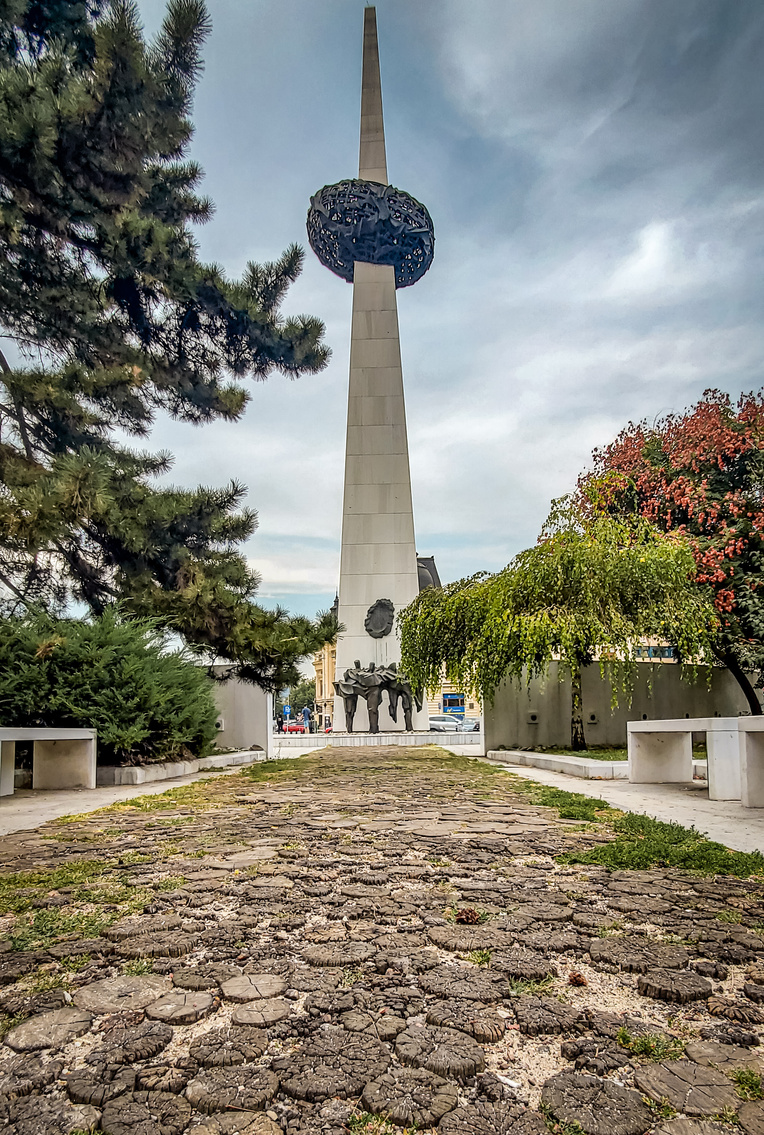

Beginning with a walking tour of Bucharest’s old town, we learned that Romania had a uniquely tough time in World War II: the nation was bombed by both the Nazis and the Allies in the same year! This occurred because the country switched sides from Axis to Allies—a momentarily smart move for Romania, since Nazi Germany was losing, and the Soviets were invading their eastern front. However, a condition of the Soviets' peace offering was that Romania would be forcibly incorporated into the USSR thereafter. In spite of the fierce air raids, Bucharest's old town still contains ornate buildings from the early-1900's monarchy, at least some of which have survived the bombings.

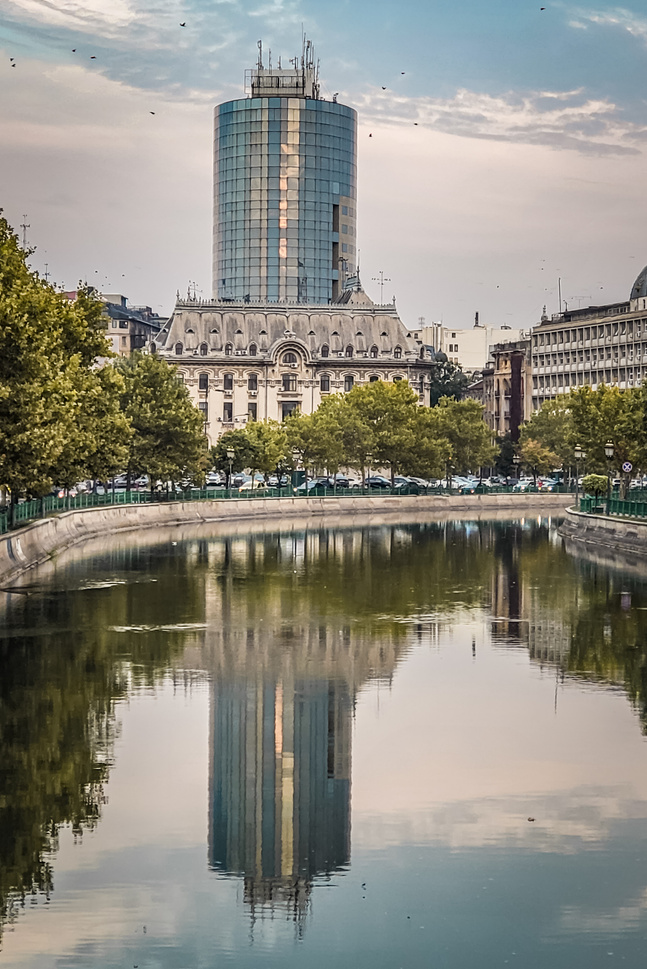
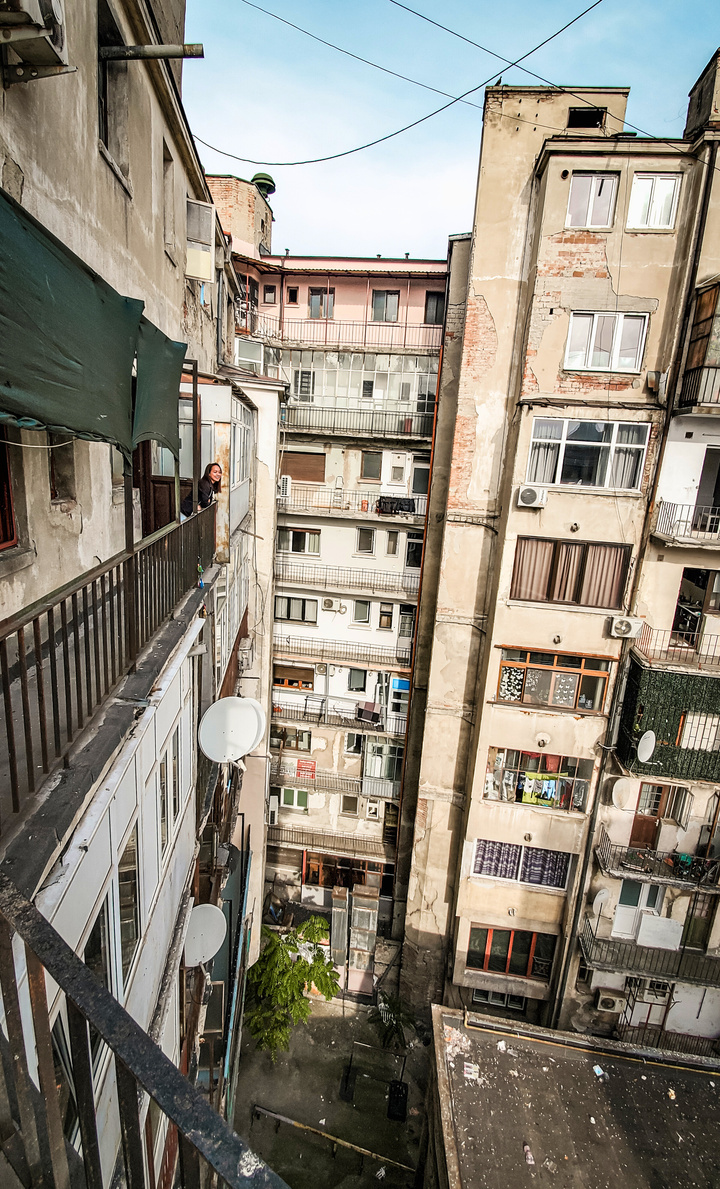
Bucharest - part 2
Our Lessons
On a should-be-busy Friday night, most areas felt fairly empty here. We wondered if this was COVID-related, or if perhaps it relates to the fact that many young people have reportedly been leaving Romania for better opportunities elsewhere. On a positive note, we were advised that Romania's standard of living and GDP have been on an upward trajectory, especially over the last decade. Quality jobs are apparently still tough to find, however, and the government is still known for corruptly making infrastructure projects "more expensive" than initially projected (and keeping the profits).
Still, just about anything is a dramatic improvement over Romania’s former communist dictatorship of Nicolae Ceaușescu—a man who was known to idolize Kim Jung Il, to open fire on peaceful protesters, and to pour all of the nation's riches into constructing the largest house of Parliament in the world at a time in which his citizens were dying of starvation. In fact, Bucharest's Parliament holds the general record for the "second largest government building in the world" (alas, it is a bit smaller than the United States' Pentagon). As for Ceausescu, he and his wife met an infamous end when they were put to death by his own army's firing squad, on Christmas 1989—a filmed event which we were creepily able to find on YouTube!
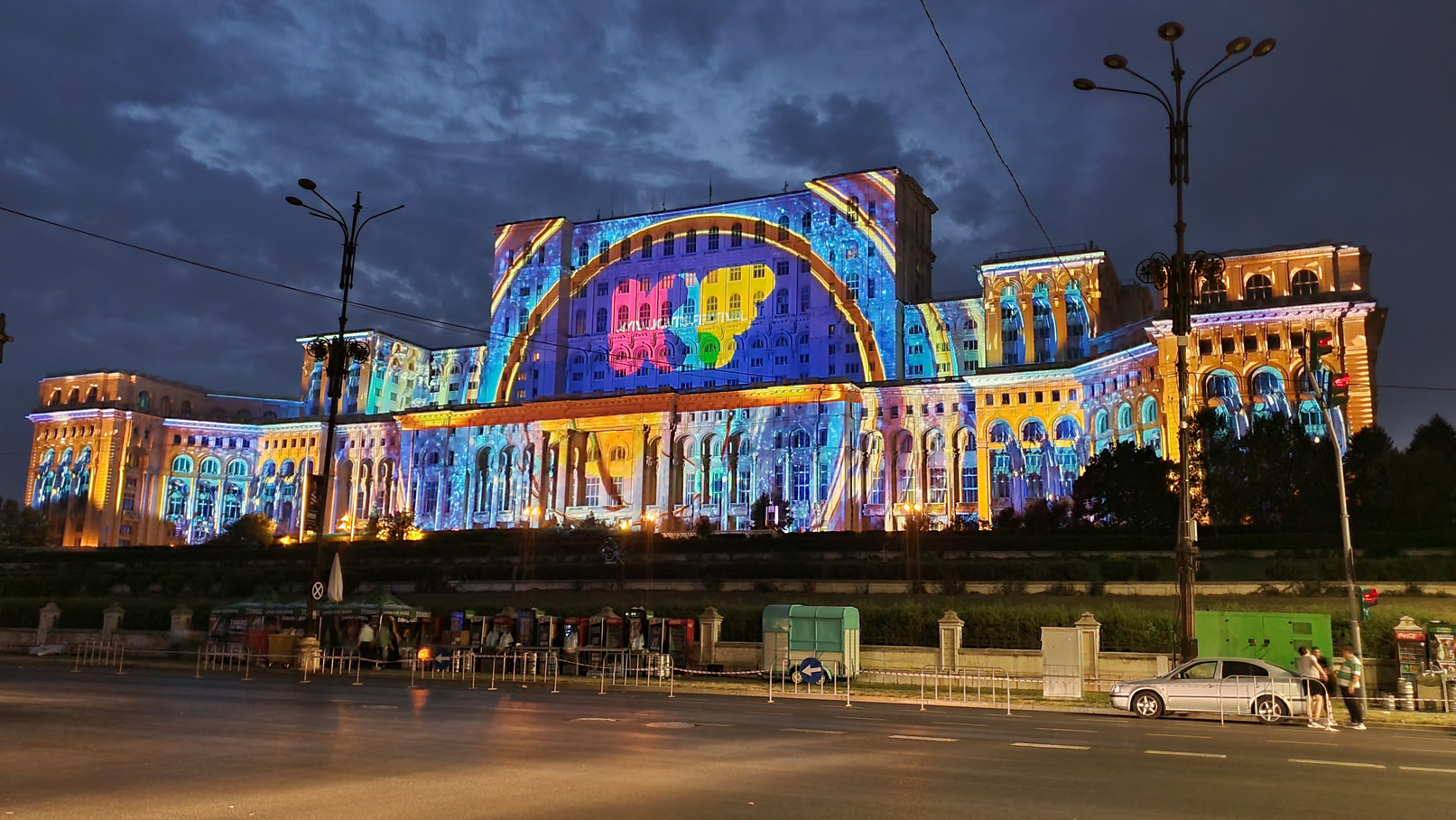
A church on wheels? Yes, because it would have been in the way of the new Parliament building, the church seen here was literally lifted onto a series of rails, pushed out of the way, and placed down. Unfortunately, its new home was somewhat hidden, which was a common Soviet practice, we are told: new communist government housing and buildings were often deliberately built right in front of places of worship. This was an attempt to diminish the importance of religion in the Communist dictatorship.
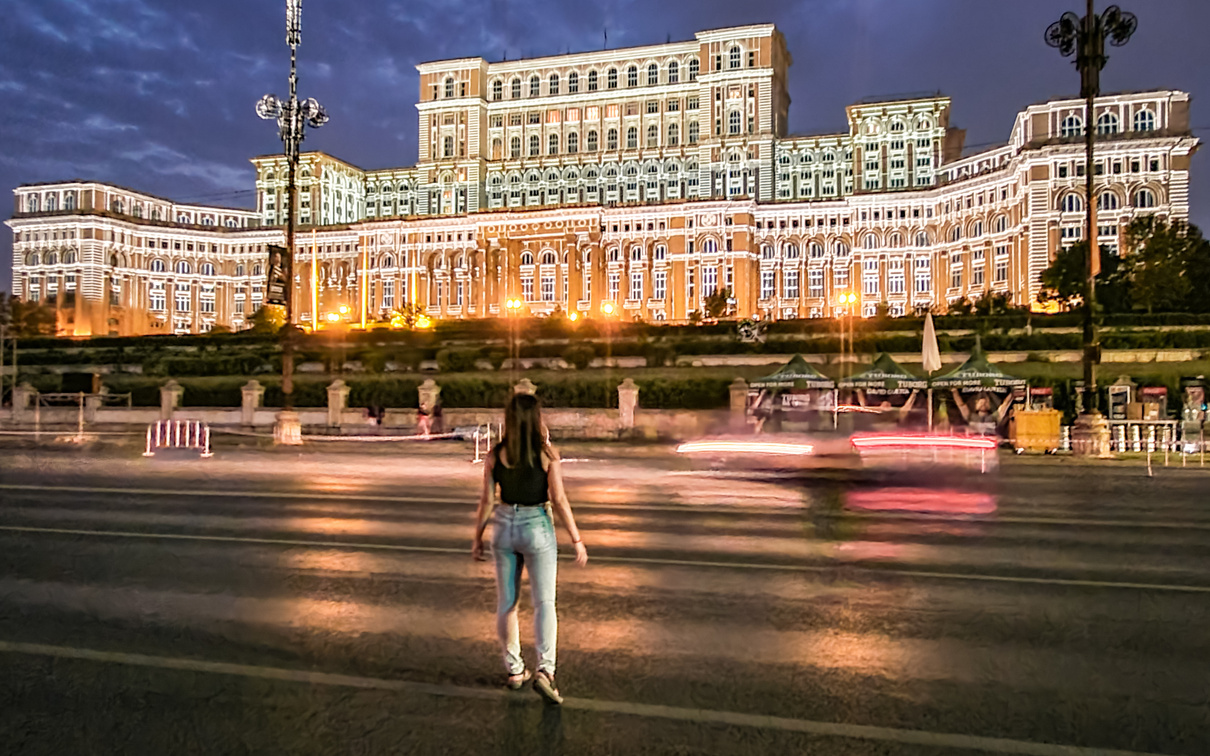
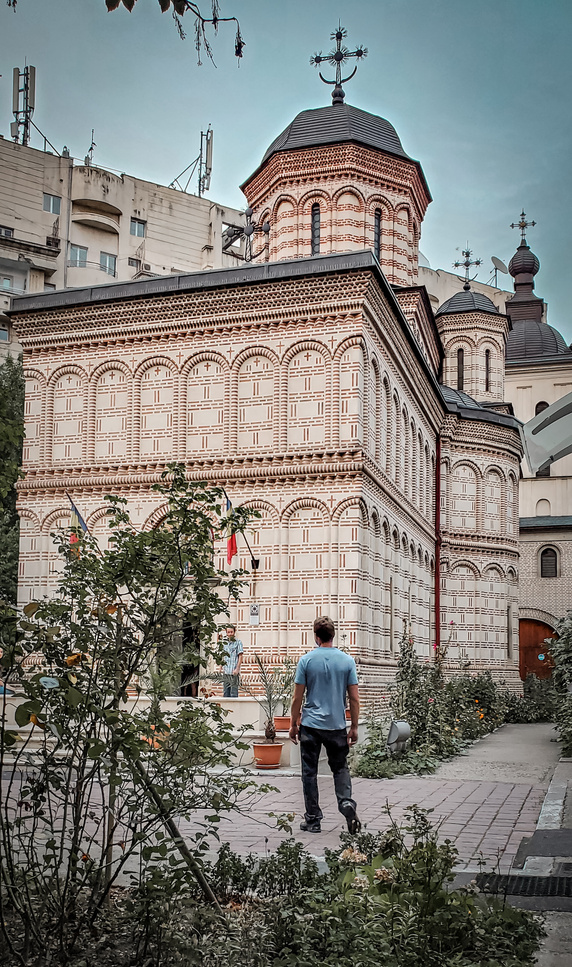

Pele's Castle
Our Lessons
Romania's roads are modern and comfortable; and this first stop on our rental-car tour around the country was the pinnacle of lavish living. Pele's Castle was designed to look like something out of a fairytale, but it is actually a relatively modern structure, built in the early 1900s as a vacation home for King Carol I. This was the first castle with central heating (we could see in each room where the vents are subtly hidden around the columns). We just might say that this is the most 'obnoxiously' beautiful building we have ever seen—every corner is decorated with majestic detail, and literally every possible space is ornately covered with a rare expensive building material, or collectible artifacts from around the world.
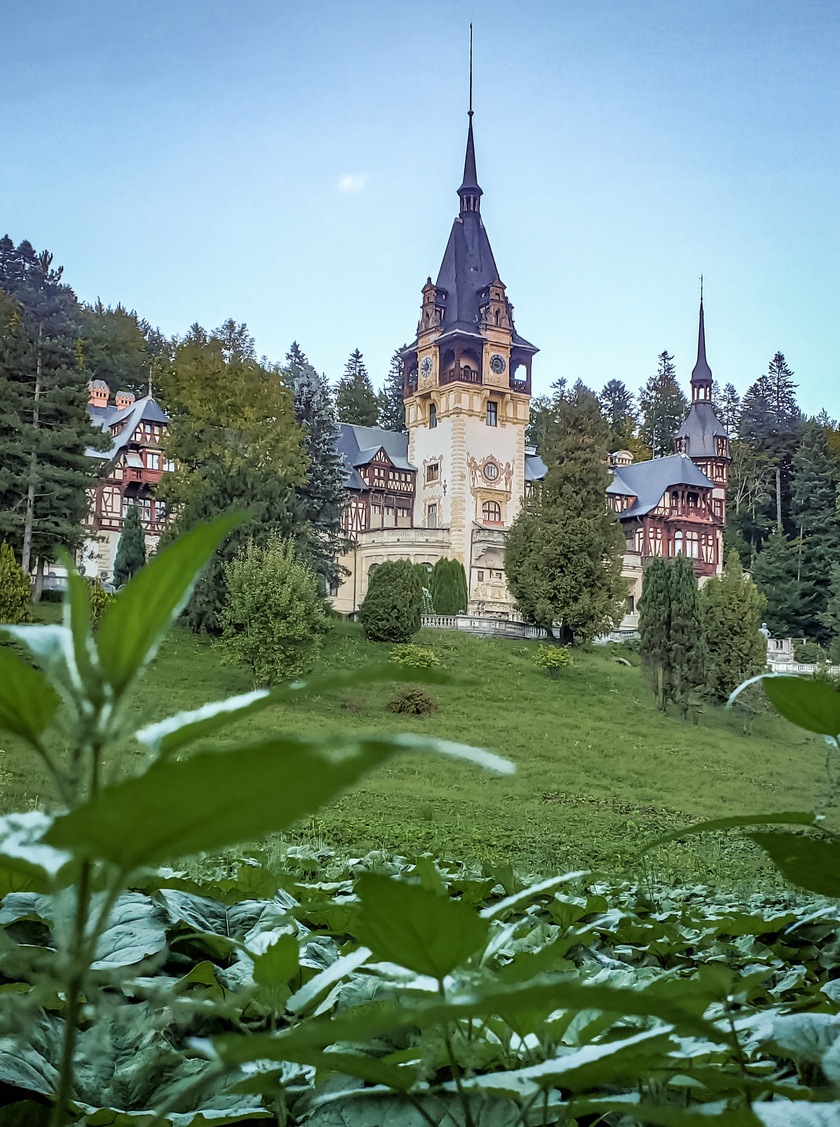
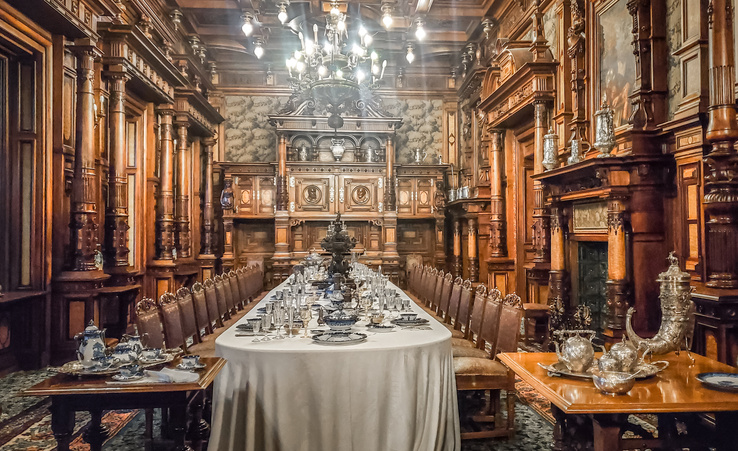

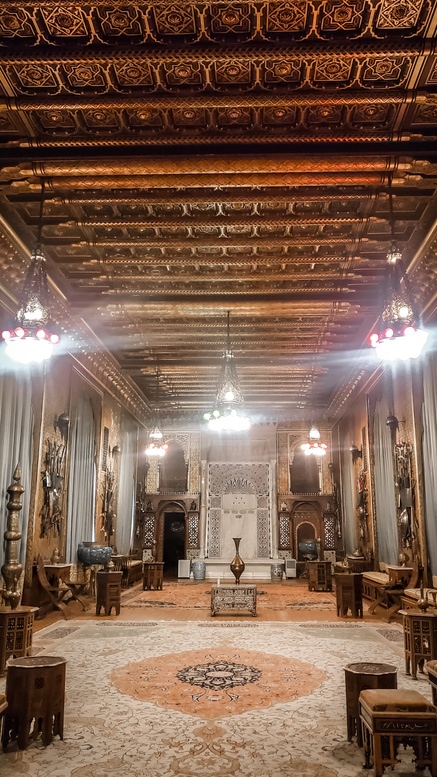

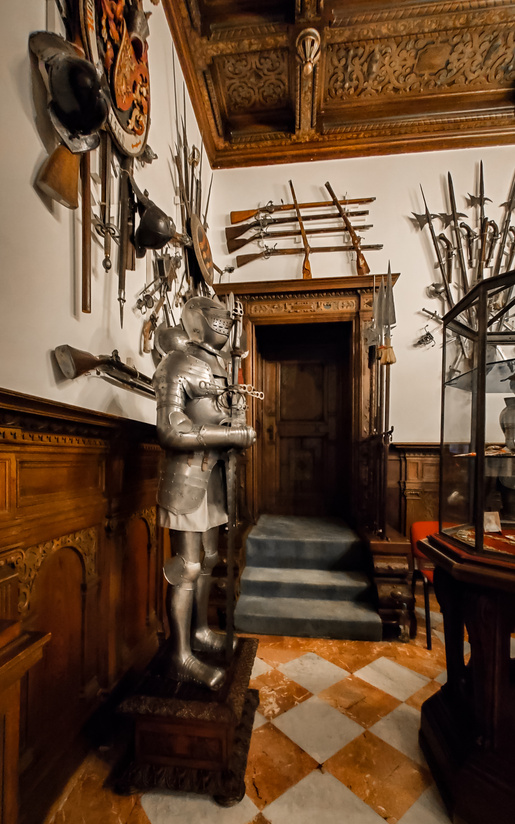

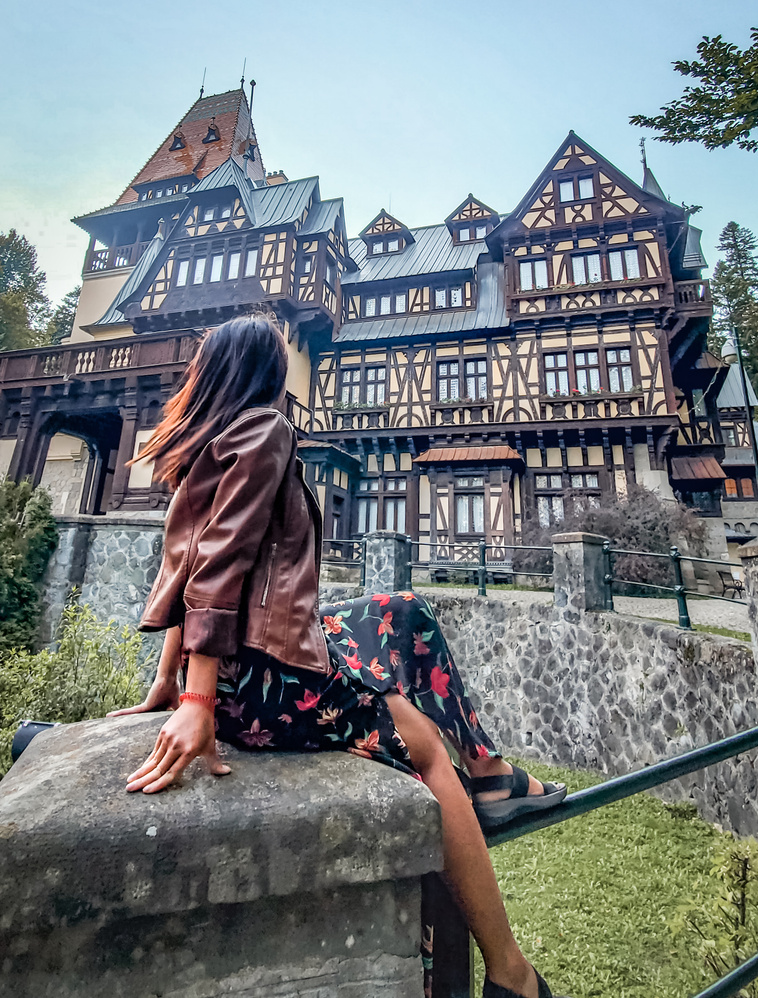


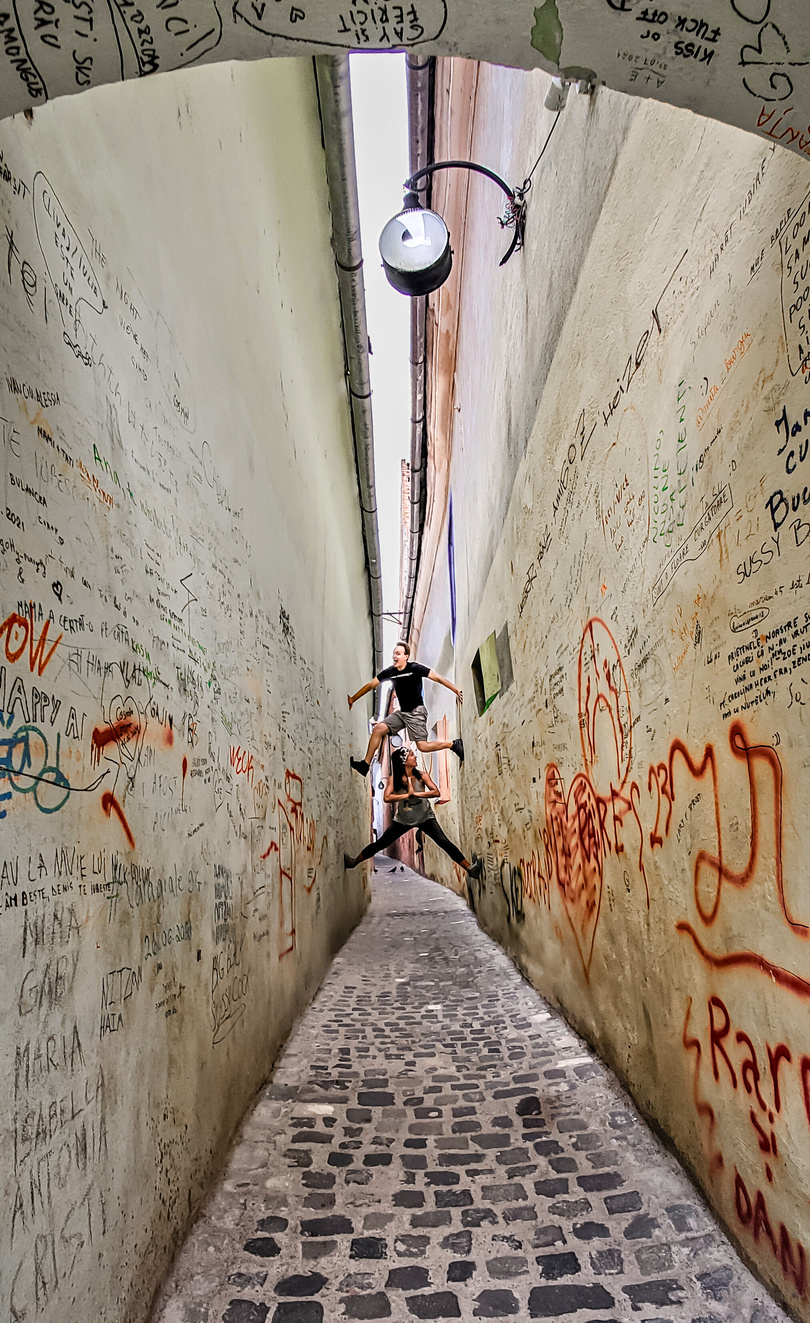
Brasov
Our Lessons
We went out for a morning jog through the historic town of Brasov: a city whose classical architecture and beautiful pastel colors made us feel like we had just woken up in the Renaissance age. Roaming through the streets, we found one of the narrowest alleys in Europe (narrow enough to grapple up the walls). Apparently, it was used in the past by firefighters to get from one long stretch of houses to the next... and today it has been turned into a colorful passageway for artists and tourists alike.
"Papanasi" after a workout is likely not the healthiest choice... but this Romanian dessert made of fried donut and creamy cheese with blueberry sauce was incredibly delicious; so good that it gets Eric's enthusiastic stamp of approval despite containing fruit!
It is also here in Brasov that we met an inspiring couple from the US, traveling in their 70s, with an old-school MapQuest printout of all the attractions. We so admire their passion for travel and definitely hope to be like them when we are their age. Perhaps we will be that one old couple who still walks around "in the flesh," surrounded by crowded streets of "Metaverse" holograms: young people virtually exploring the world from the comfort of their own homes!



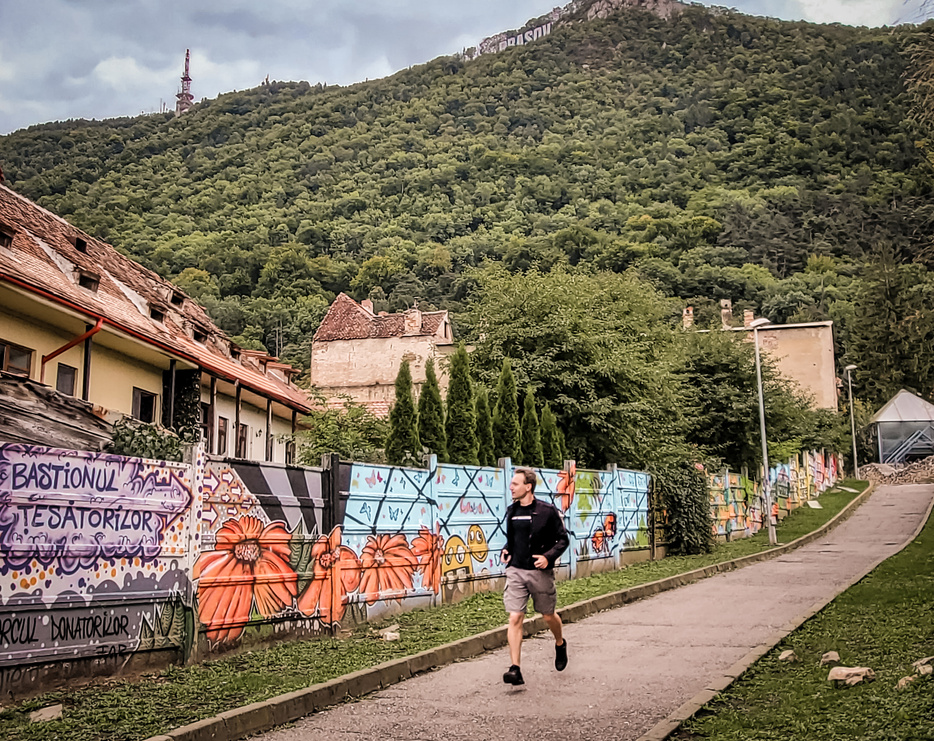

Bran Castle
Our Lessons
Bran castle ≠ Dracula's castle!
Well... of course not; Dracula is a made-up character. But it was actually never even home to Vlad “The Impaler” Dracul, nor did the writer of Dracula ever know this place existed! Nevertheless, in the 1970's, the government of Romania selected Bran Castle as the historical structure that most closely “resembles” Dracula's home as described in the novel—and began advertising as “Dracula’s castle” in order to increase tourism to the area. The campaign was a success: tourists have enthusiastically coming to visit Dracula’s castle ever since... lending credence to the wise words of Seinfeld’s George Costanza: “It’s not a lie, if you believe it!”
Actually, Bran Castle's real history is far cooler: it was once the home of Queen Marie, who was the first queen to be a commander of the Romanian army. During World War I, she went into the trenches to help wounded soldiers, and to inspire her fellow countrymen to continue the fight. She later went uninvited to the Paris Peace Conference of 1919, where she successfully petitioned the Western powers to allow for reunification of the post-war Romanian territories. Impressed, the French Ambassador famously commented that there is "only one man" of courage in Romania, and it was Queen Marie!


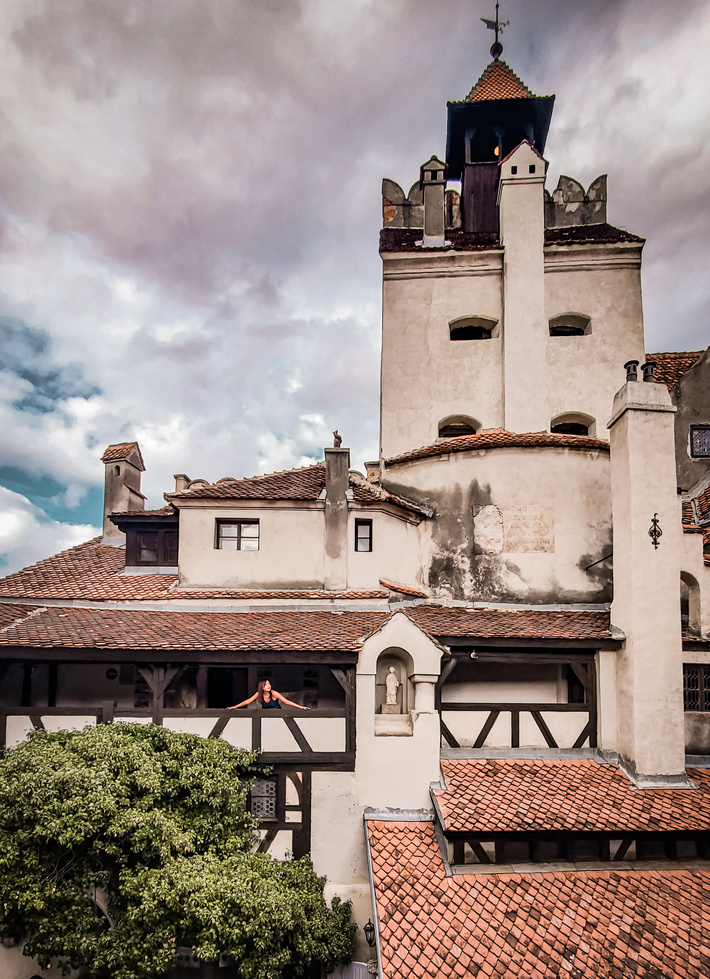


Sighisoara
Our Lessons
Encouraged by how relatively cheap it was to fly into Bucharest and rent a car, we were a bit taken aback the first time we had to fill our gas tank (over $5 USD/gallon at the time!). This small inconvenience aside, our road trip through Romania was full of constant moments of awe-inspiring beauty, with so many unique historic cities to explore here.
Today we awoke in the heart of Transylvania, in perhaps the most colorful town we have seen so far in Europe: Sighisoara. Even the old clock tower's roof tiles are a beautiful mosaic of color, resembling fish scales glistening in the sun. It was very peaceful walking around, with very few tourists. We did make the (very novice) mistake of not clarifying the price of breakfast in a lovely outdoor restaurant in the central plaza... and ended up paying quite a lot more than planned. Reminder to self: always ask the price first.



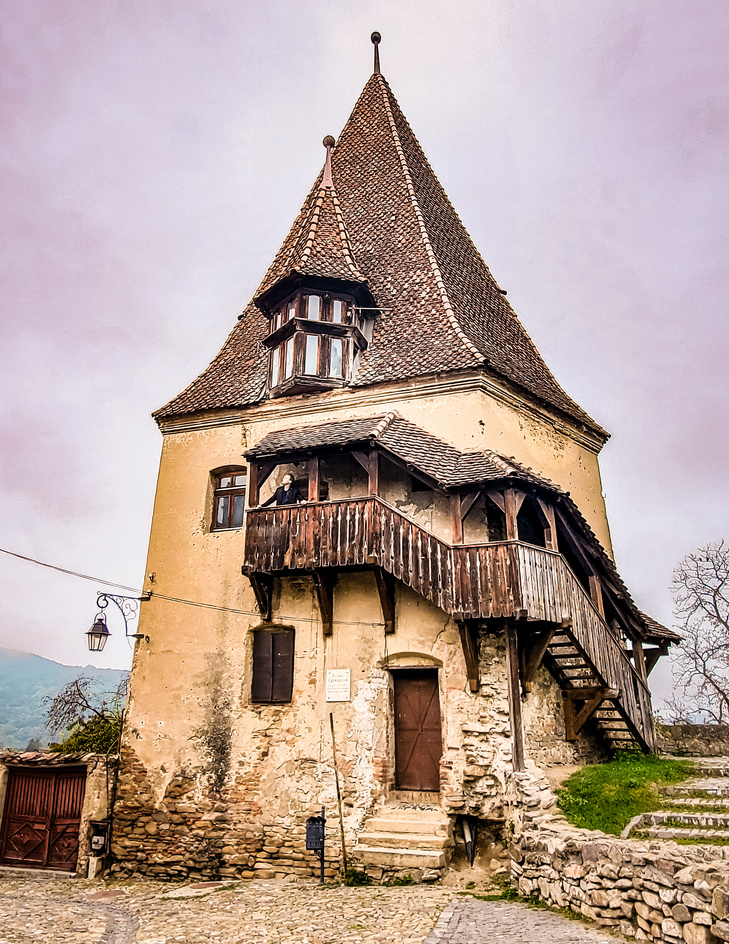
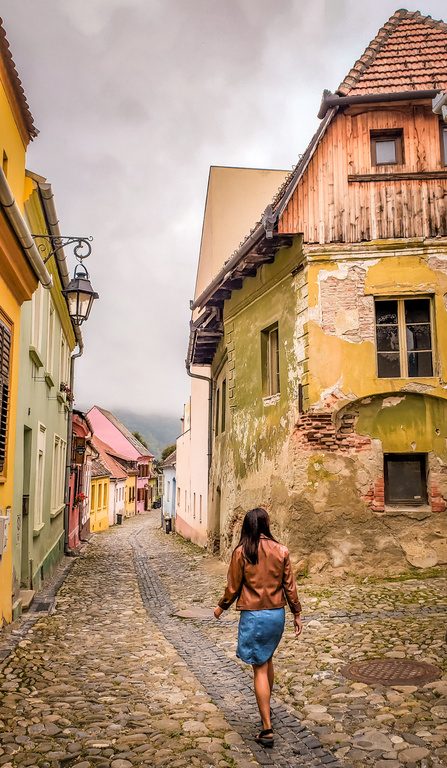
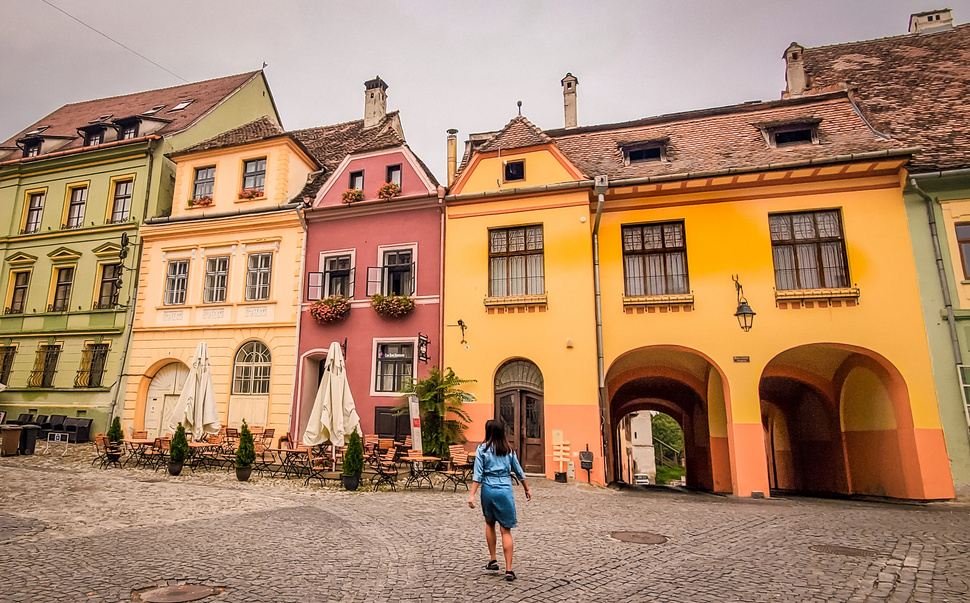

Salina Turda
Our Lessons
As far as we can tell, Salina Turda is the only underground salt mine amusement park in the world (we didn't know this was missing from our lives until we saw it for ourselves!). This place is enormous—90 meters from floor to ceiling—and honestly just sitting back, looking up and admiring the spectacle that surrounded us was by far the coolest part of this experience. White salt stalactites as long as 10 feet hang from the ceiling. There is an eerie pitch-black lake at the base, where one can row boats around a central island which features UFO-shaped benches and concession stands.
The air here smells...musty...like dirty socks, honestly... but apparently some people come anyway specifically to shell out cash for Salina Turda's "Halotherapy Spa," which claims that inhalation of salty air and taking brine baths has a variety of naturopathic health benefits...
...Sorry, no, just kidding; it's only salt! With our backgrounds in evidence-based medicine, we did some fact-checking, and as of this time there is no unbiased research to support the benefit of 'halotherapy.' Worse still, there are many attractive-looking websites that claim halotherapy can prevent/treat COVID-19; sorry again, it doesn't... but vaccines do prevent it. If something outside of well-studied science sounds too good to be true, that is always an indicator to ask more questions!

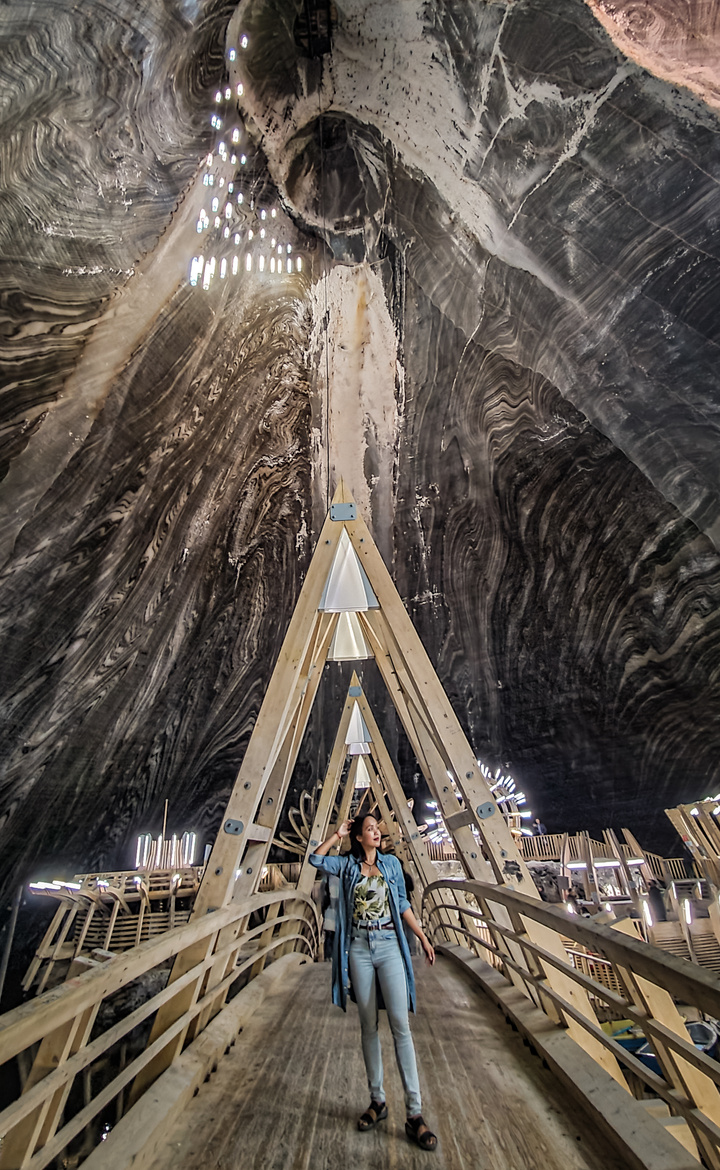
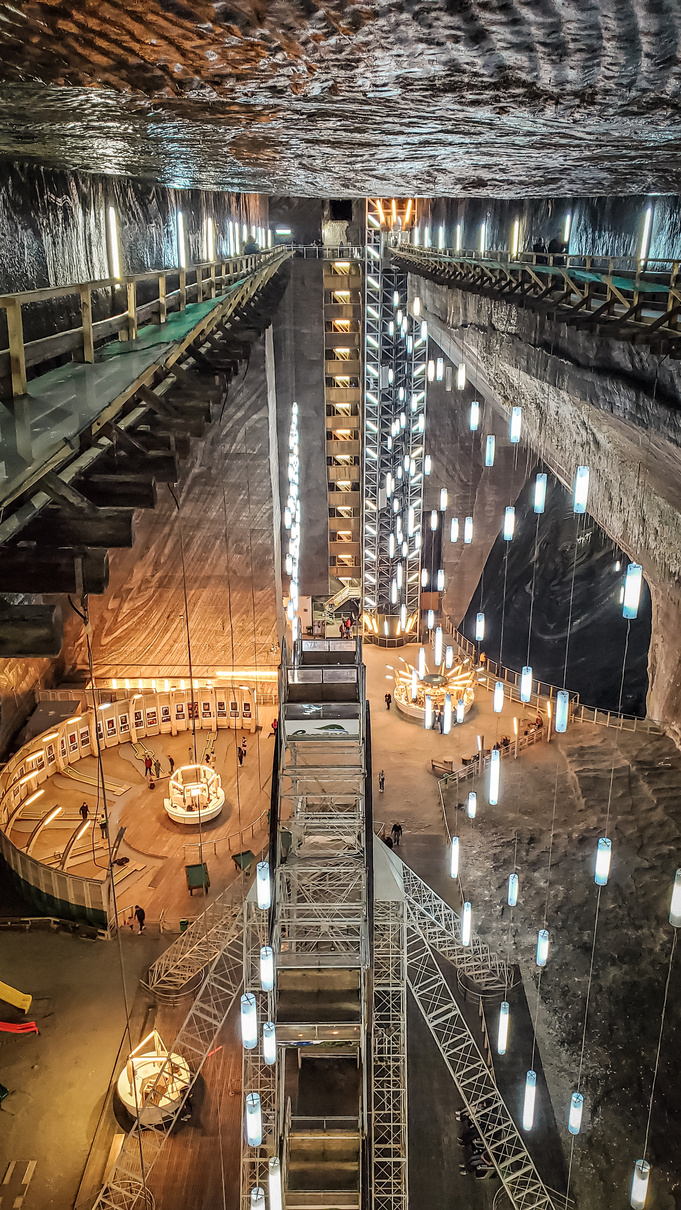
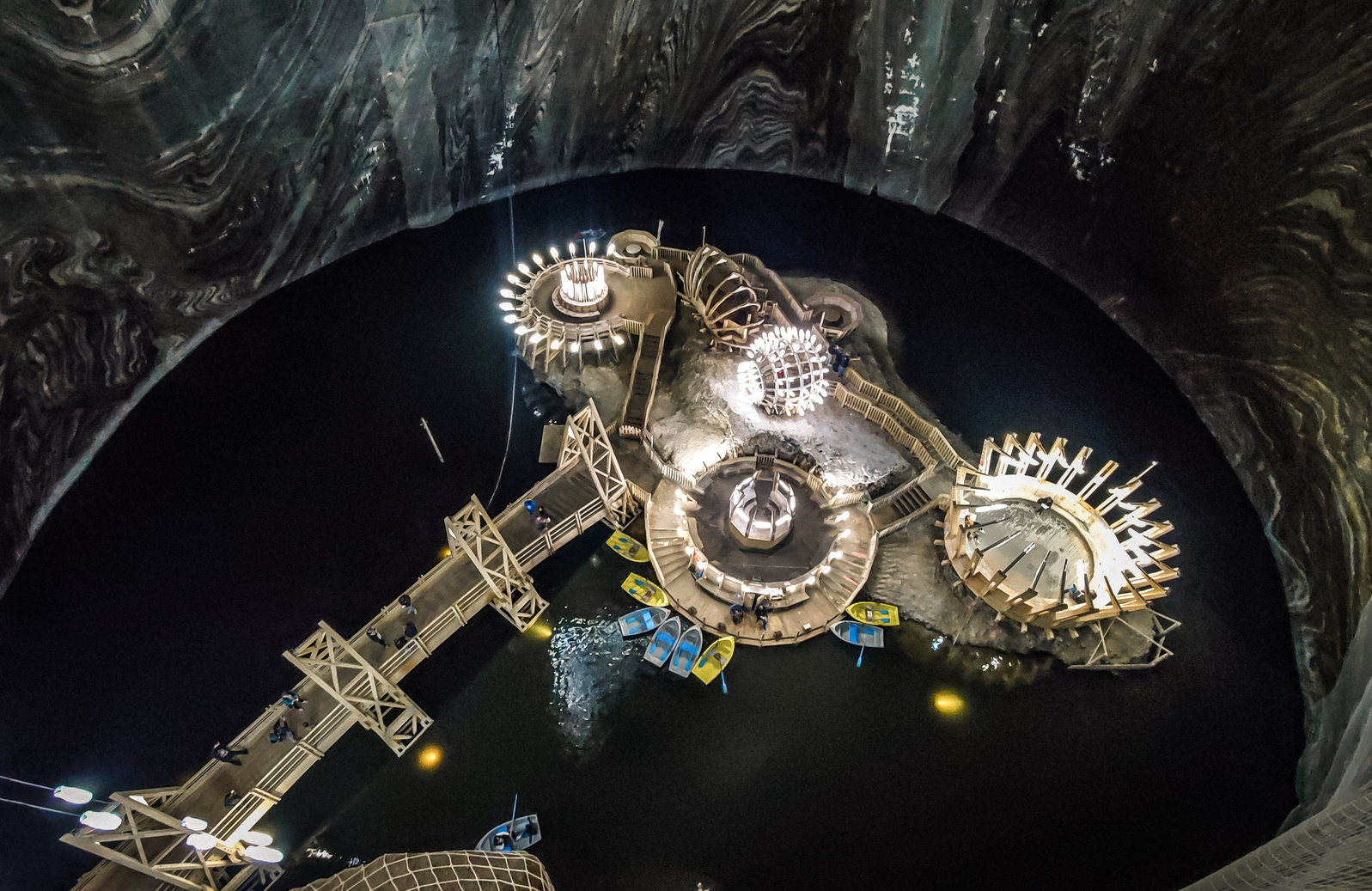
Sibiu
Our Lessons
Sibiu has been a UNESCO World Heritage Site in 2004, and it is known as ‘The City with Eyes.’ Without a doubt, the narrow slits in the unique roofs lining Sibiu's central square really did make us feel like big brother was watching us from above.
So why do the homes have ‘eyes’? Some locals claim they were designed to deter ill-intentioned strangers away… but the real purpose was to act as a ventilation system for the houses' attics. Nowadays, it is a famous symbol and the town’s main tourist attraction. Consequently, many homeowners have gone a bit too far, by placing cardboard cutouts of actual bloodshot eyeballs in front of their roofs’ vent slits. Honestly, we think the empty black rectangle without the gimmicky cutout looks creepier and more authentic.
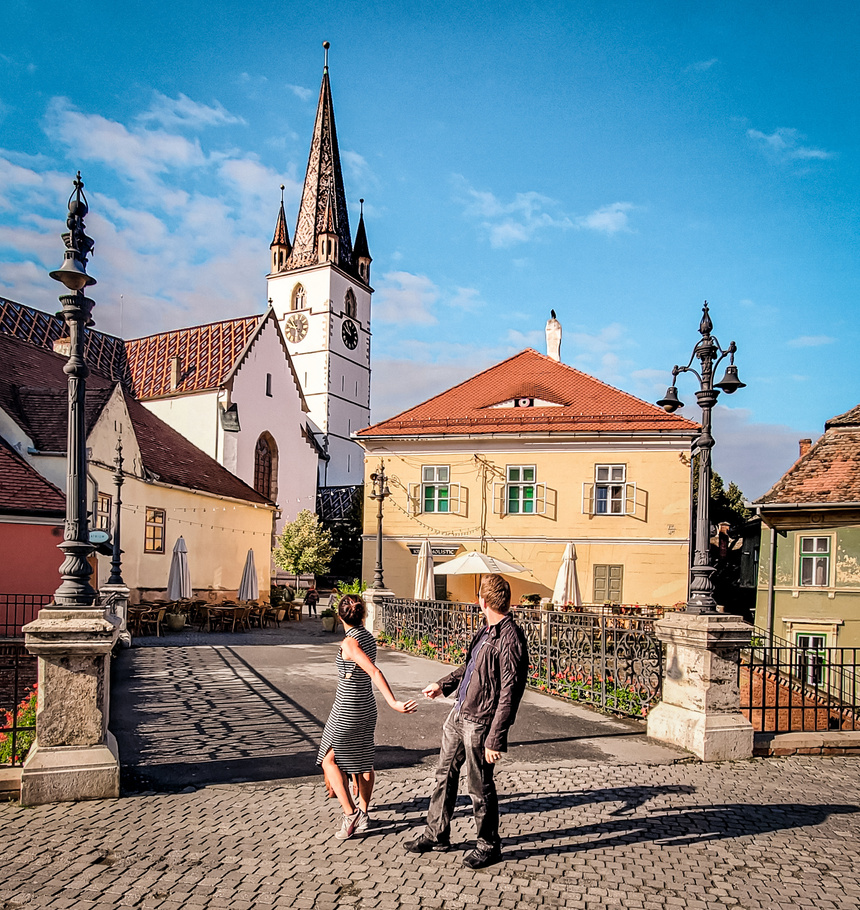




Transfăgărășan Hwy - part 1
Our Lessons
Transfăgărășan Highway (pronounced: 'trans-fa-garrison') has been called the "best road in the world" by the hosts of Top Gear; and that doesn't mean for a stress-free commute.
This narrow road cuts through Romania's high Carpathian Mountains like a jagged dagger, producing sharp descents and every type of hairpin turn ever found on a racetrack; all in one adrenaline-pumping 90 km stretch!
We learned that Transfăgărășan was built in the early 1970s as a strategic military route—one of the many “awe-inspiring” projects taken on by dictator Nicolae Ceaușescu as a show of strength. There is much Romanian pride in this road, and even nostalgia for the energy surrounding Ceaușescu's grandiose projects among older generations. Such energy, it is said, helped to at least momentarily shift the focus away from the cries of Romania's starving masses... and the hundreds of soldiers, untrained in dynamite-blasting techniques, who died during the construction of this road.

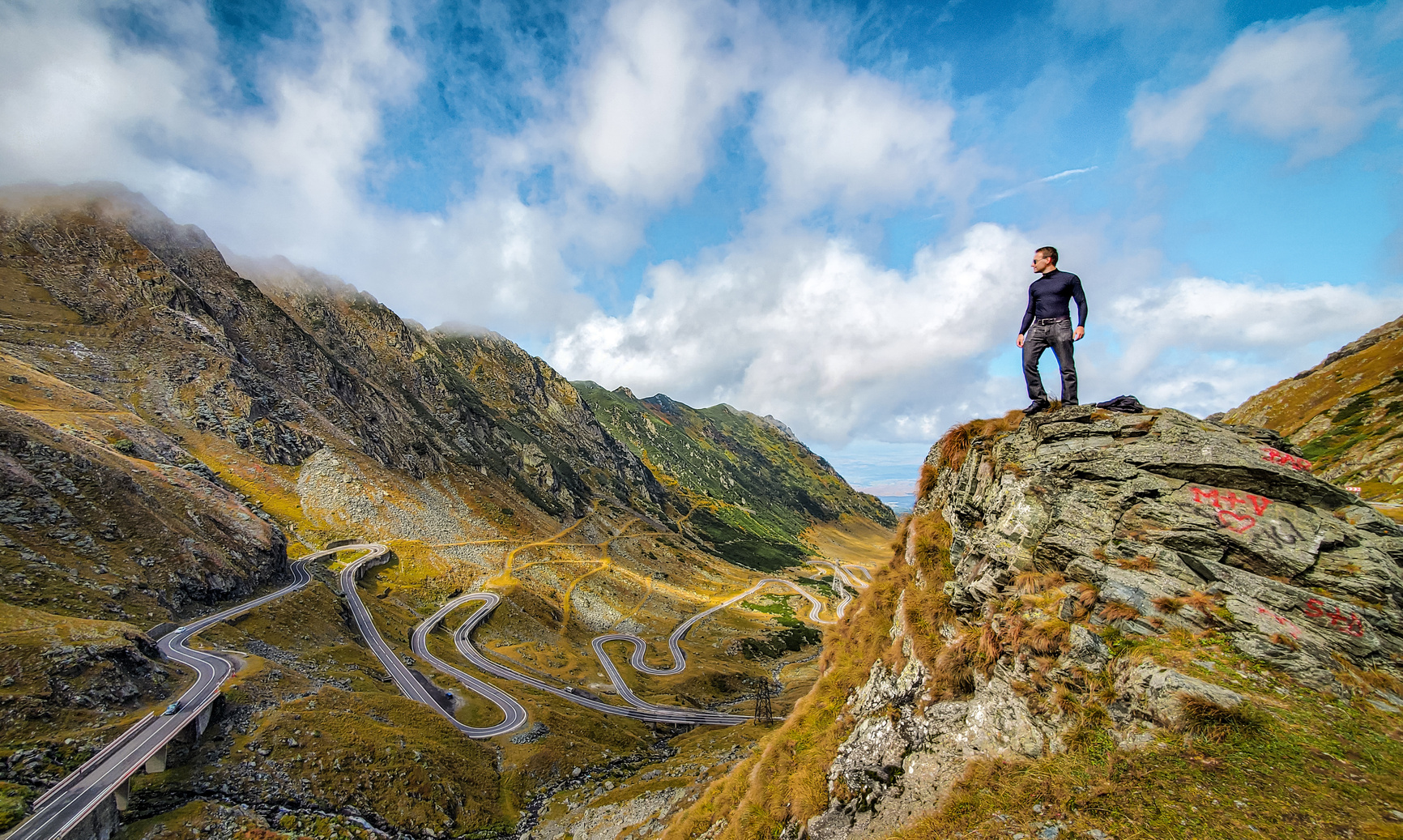


Transfăgărășan Hwy - part 2
Our Lessons
Transfăgărășan has a total of 830 bridges, 27 viaducts, and 5 tunnels. It is so long that the Romanian military had to start building it from both ends to keep pace with Ceaușescu's orders... with north and south ends finally meeting at the center of the mountain range.
Driving is a bit intimidating in the lowlands, as dense forest and Soviet-era concrete columns and barriers prevent you from seeing around each turn. However, a continued ascent to higher altitudes results in a moment of pure joy, as one emerges from a final mountain tunnel: now above the tree line, an unobstructed view downhill reveals a seemingly endless road, which snakes its way towards the horizon with amazing visibility! Here, drivers can gleefully make precision turns around the cliffs' edges at speed, without fear of colliding with an unseen driver (this was Eric's perspective at least).
We encountered some bears along the drive—in fact, Romania is home to 60% of Europe's brown bears, we learned. Driving right past them (with windows up) was a pleasant surprise; however, it was sad to see other drivers throwing food at them, encouraging their appearances on the highway, which could result in dangerous consequences for them and for us.


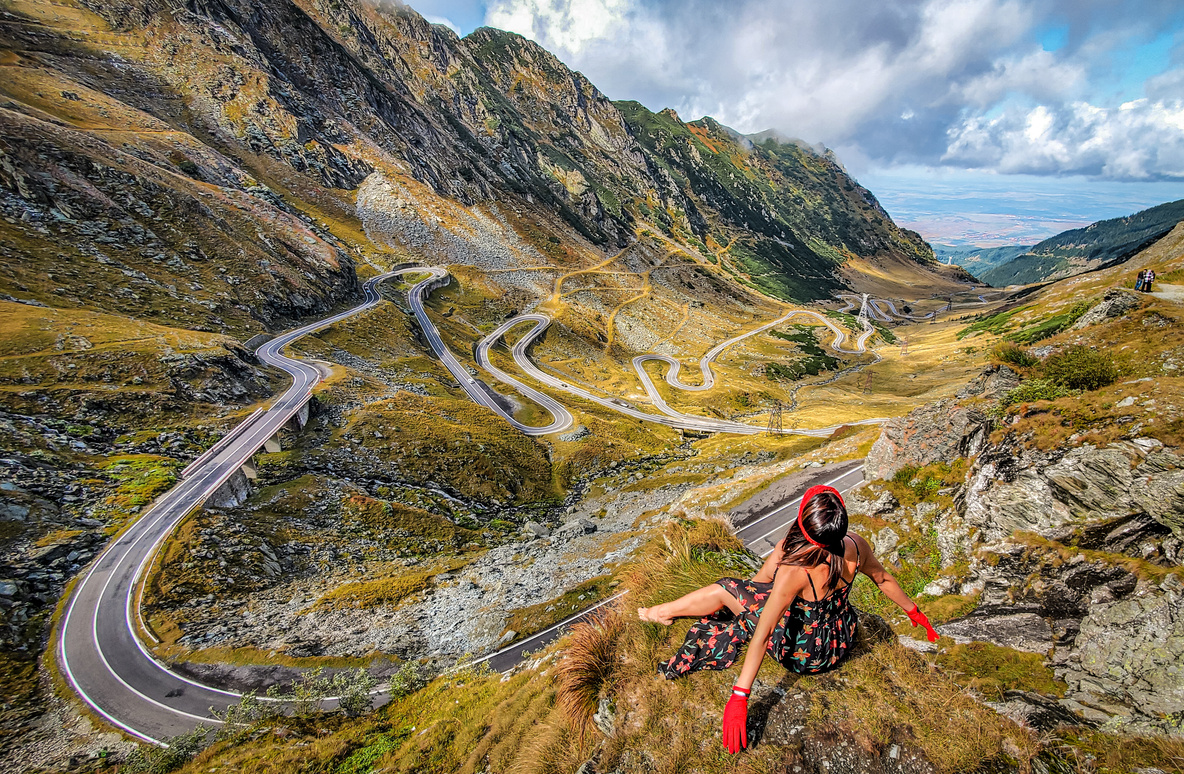
Curtea de Arges Cathedral
Our Lessons
Heading south down the mountains, we crossed the Vidraru Dam, the largest in Romania. Leaving the Carpathian Mountains behind, we reached the legendary Curtea de Arges Cathedral. This ornately decorated structure is one of the most important Eastern Orthodox churches in Romania, and it is where one can find the burial site of Romania's first king, Carol I. While standing on holy ground, we were told the creepy legend of a pregnant woman's body, hidden within the walls of the church...
The legend states that the ruling prince hired ten skilled masons to construct for him the “greatest monastery,” promising them riches if succeeded, but execution if they failed. Despite their hard work, the place seemed to be cursed: anything the masons built during the day would fall apart at night. Then the chief mason, named “Manole,” had a dream that their work could only be completed if they buried a living woman in the foundation of the church. Desperate, he and his fellow masons agreed that the first woman who set foot in the building the next day would be sacrificed. Unfortunately for Manole, this woman turned out to be his wife, pregnant with their unborn child! Horrified but committed to his word, Manole consented to burying his wife within the walls.
Sure enough, the church was beautiful upon completion. The prince was pleased and asked the masons if they could replicate the work for him. This was a trick question: when the masons replied ‘Yes,’ the prince locked them all on the cathedral’s roof to perish, so that his work would forever remain unrivaled. One by one, the masons fell to their deaths in various failed attempts to escape the roof. Spring water is said to have appeared at the spot where Manole fell… and although the spring has since dried up, a modern water fountain has been built in its place!

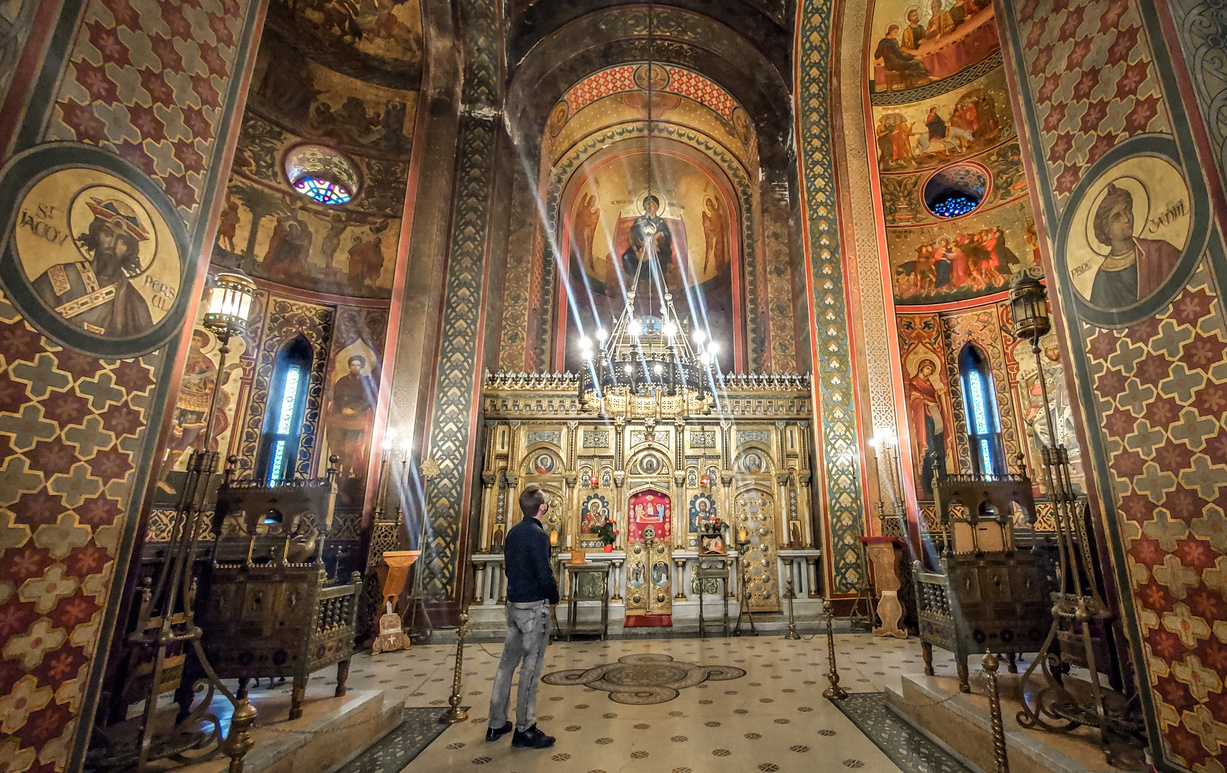
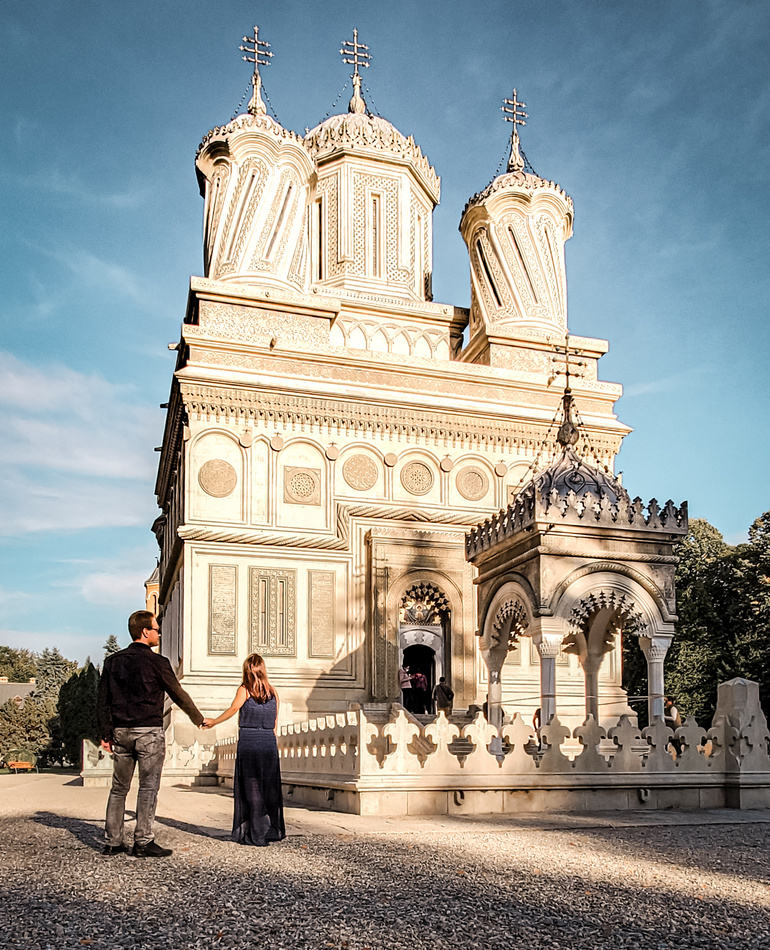
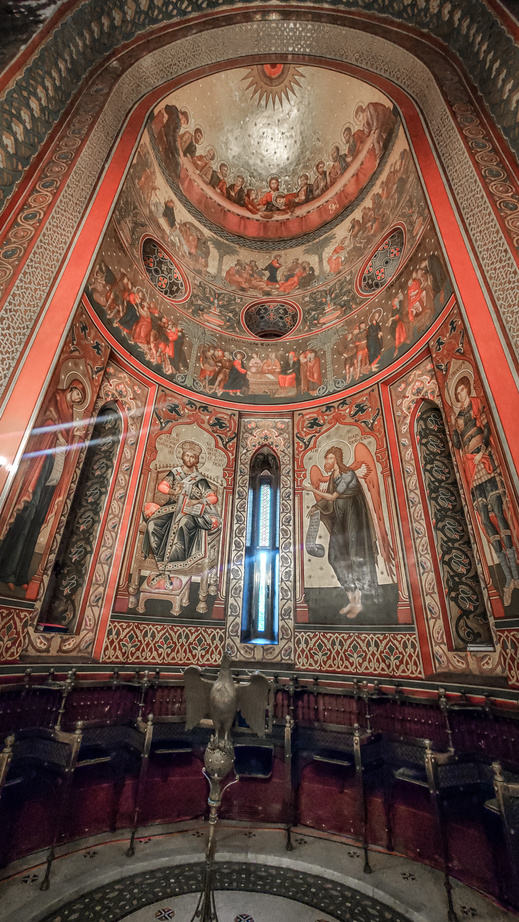



Krakow - part 1
Our Lessons
Our time spent in Poland became a deep-dive into World War II history; for us, a vivid, humbling journey through moments of incredible human strength... and sheer horror.
Krakow, we learned, was thankfully spared the systematic demolition ordered by German high command for Warsaw, its counterpart city to the north. Thanks to meticulous maintenance and attention to detail, Krakow is a perfect mix of old and new; an incredibly clean and modern city that has managed to keep much of its pre-war architecture in pristine condition. Unlike most capitals' "Old Towns," which are usually more tourist-oriented, Krakow's city center and top universities seem to be located within its historic district—making this place feel truly "alive," and a nexus for locals and tourists alike. And unlike other cities which seemed to have minimal foot traffic due to the pandemic, here, we encountered a fully packed central square. Indeed, thousands of people were out, enjoying the abundance of bars, cafes, and so-delicious sweet shops lining every street.

Also, out of all public transit we’ve encountered thus far, Krakow’s was the easiest, smoothest—and friendliest! Never before have we seen a railway conductor cheerfully pull his departing train to a stop again, upon seeing us rushing up the platform stairs! (Unlike buses, have always been a ‘make-it-or-miss-it’ situation for us!)
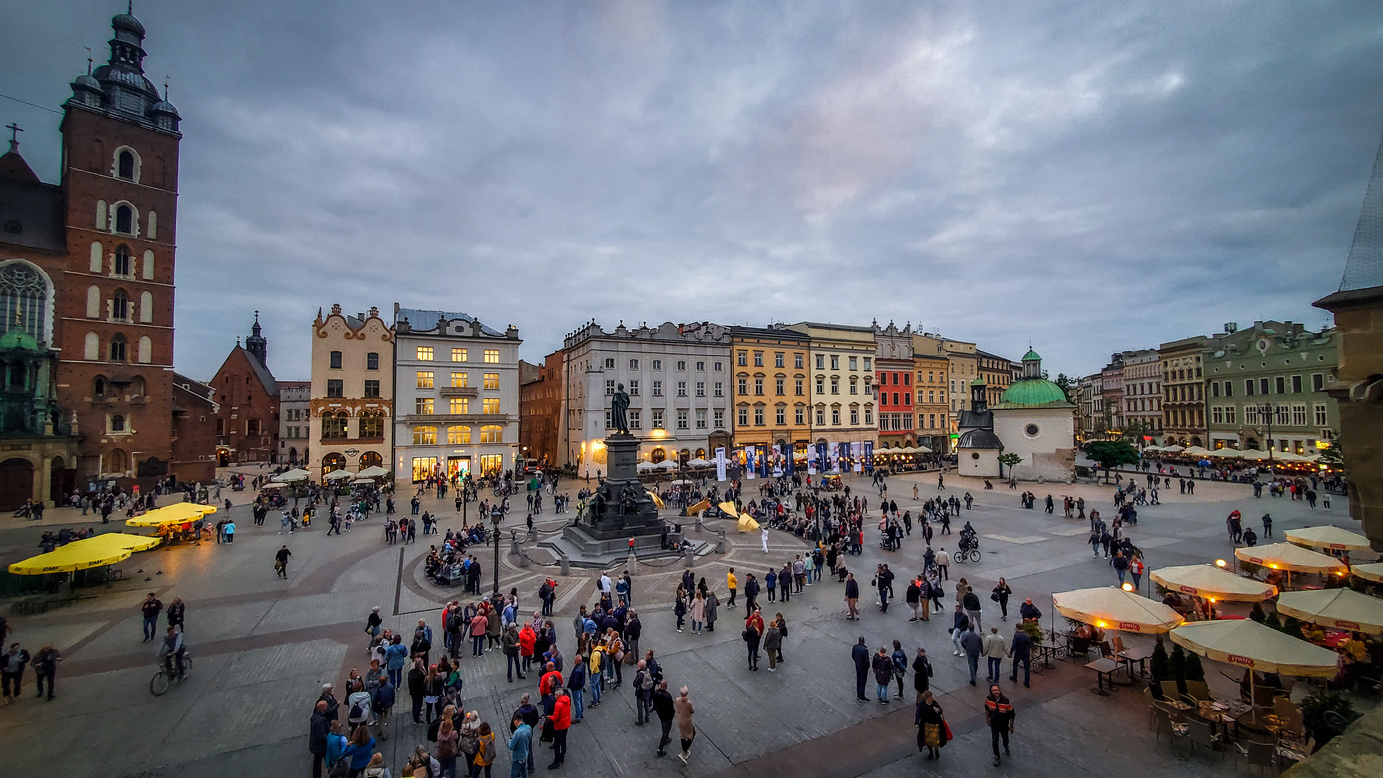

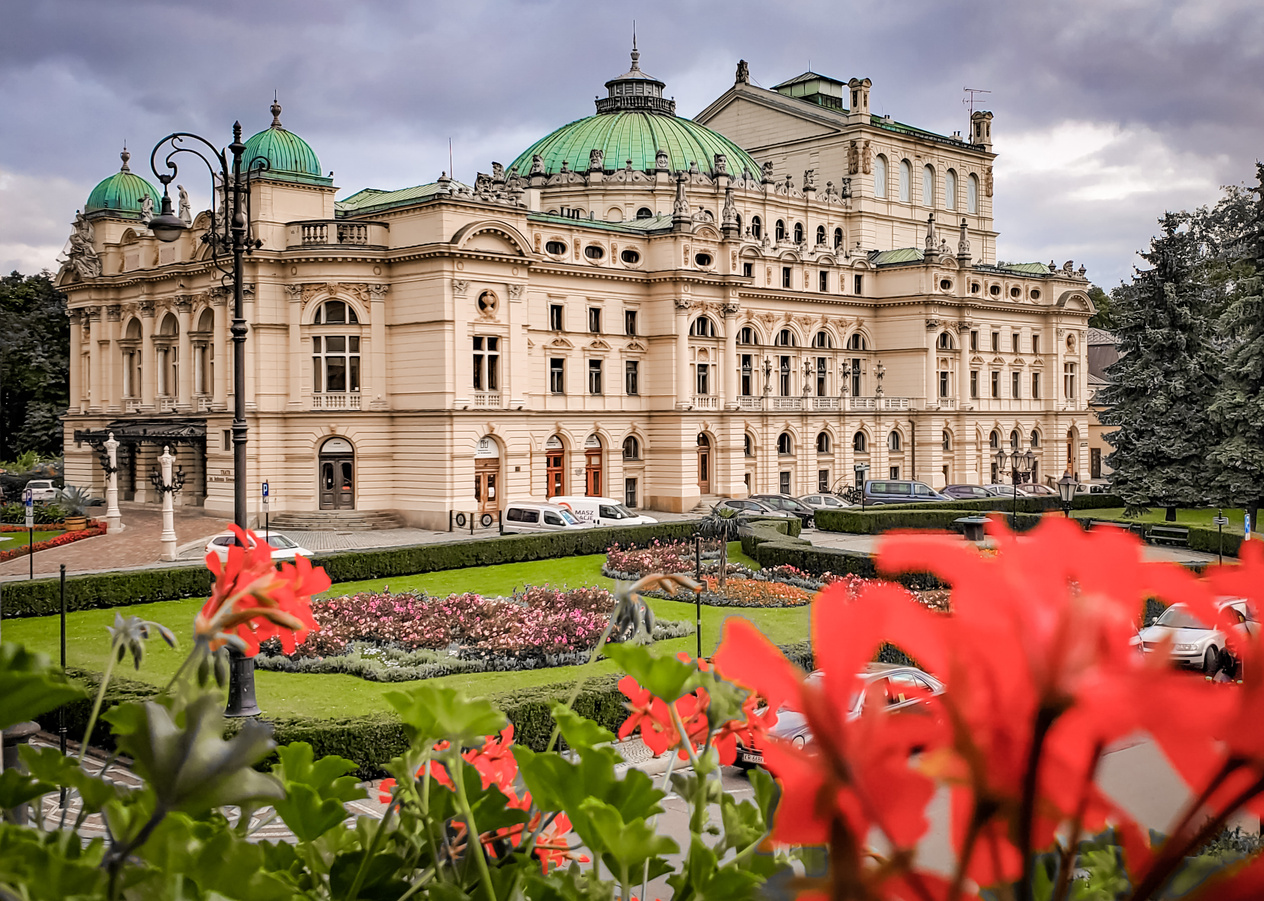
Krakow - part 2
Our Lessons
We can certainly understand why so many people would brave the crisp autumn air to go out to eat here: Polish cuisine is fantastic! Our favorites of course included the savory pierogis, as well as Żurek (sour rye soup with sausage and egg), unforgettable beef stews, and rose-flavored desserts! Yes, rose flavoring for donuts and chocolates is a huge hit here and we can now see why!
Even more great food can be found underground: many buildings have vast basements with arched-brick ceilings, ornately decorated with chandeliers and ready for fine dining or a night out on the town. There's just so much creative use of these historic spaces: a three-story underground Harry Potter-themed bar, featuring four uniquely themed rooms and vodka and caramel-infused “butterbeer”? Why not!







Krakow - part 3
Our Lessons
Krakow's beautiful historic churches can be seen at every corner. In fact, the most ornate church we encountered so far in our travels is here: Saint Mary's Cathedral. At St. Mary's, literally every square inch of wall has been delicately painted, resulting in a truly jaw-dropping mosaic backdrop of gold and pastels.
We also had a most memorable experience watching the Krakow Chamber Orchestra perform some of Mozart, Bach, and Vivaldi's greatest hits at St. Peter and Paul's Church (we've never attended an evening symphony in a cathedral before—what an amazing place to feel truly immersed in the sights and sounds of the world's greatest composers!)
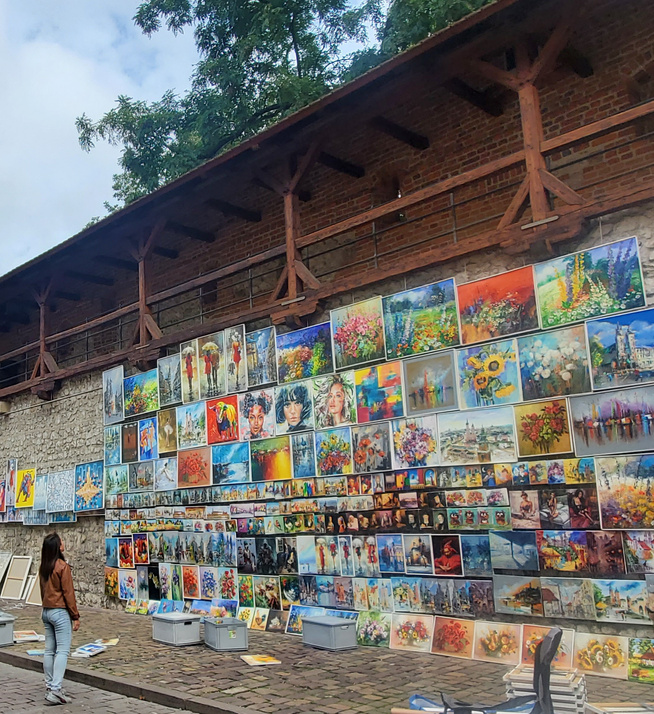


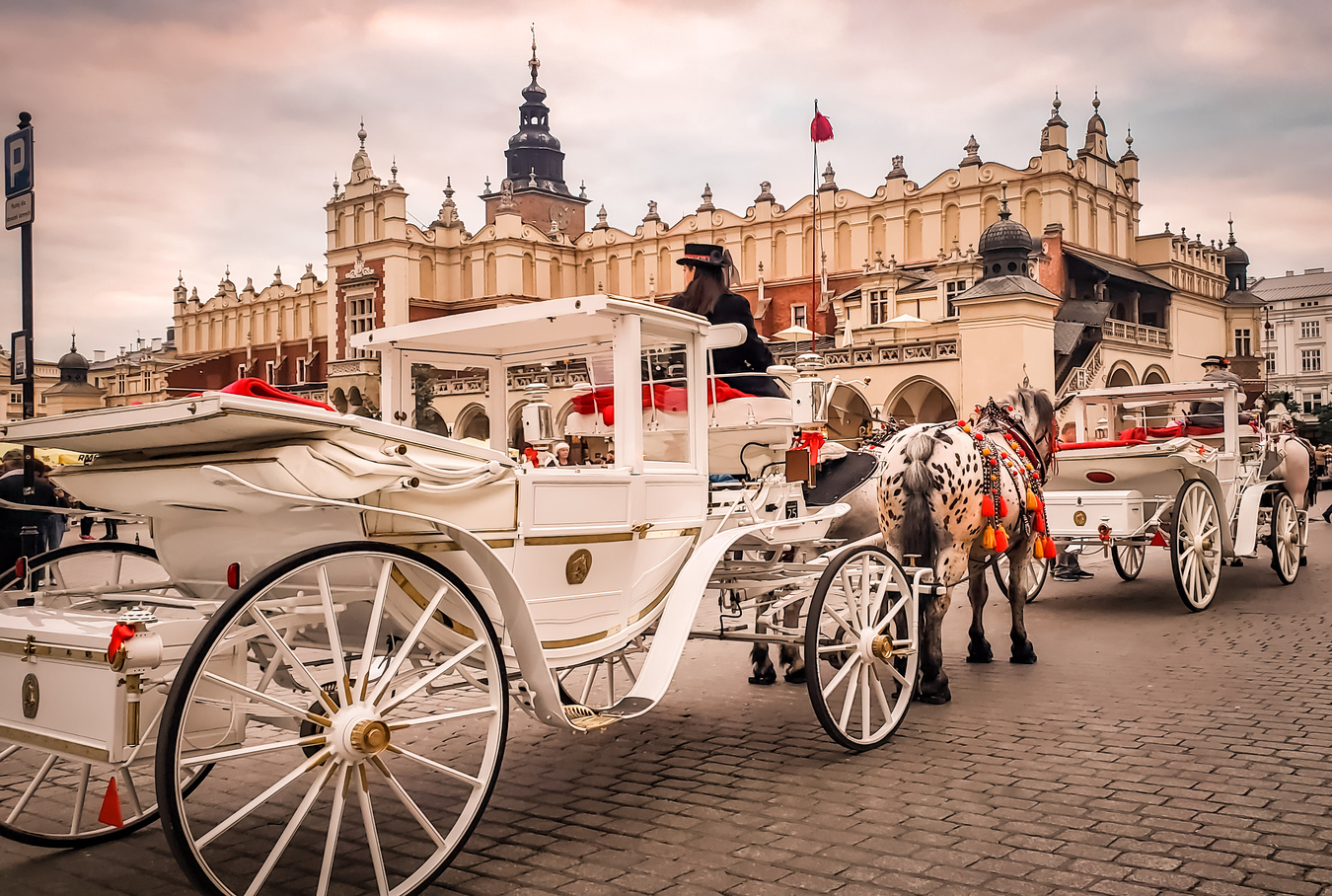

Krakow - part 4
Our Lessons
Poland: “First to fight, first to fall” in World War II? False!
How heartbreaking it is to see how often history gets oversimplified! Yes, Poland was simultaneously double-crossed: overrun and occupied by the massive, temporarily-allied German and Soviet armies—but the Polish government never surrendered. Hundreds of thousands of Polish soldiers continued to fight throughout the war, and the entire Polish government relocated itself to England, and kept running. In fact, Polish forces as a whole had been considered the “4th largest Allied army” in Europe (after only the USSR, the U.S., and Britain). Following the invasion, the Polish Armed Forces regrouped and numbered 200,000 alongside the British on the Western front; they fought independently alongside the (then-Allied) USSR on the East; and they even joined forces in the Middle East—all formally under the command of the still-active Polish government in exile.
Regrouped Polish air squadrons were highly determined and respected in the war; for instance, they tallied the highest number of kills in the Battle of Britain despite making up only five percent of the total Allied pilots. Tragically, Poland's courageous contributions to the war have sometimes been glazed over in school history lessons (certainly this was our personal experience). The Polish people's determination and strength despite all odds deserves much recognition—especially considering one fifth of Poland’s entire pre-war population was killed during the war; mostly from crimes against humanity during the Nazi occupation.

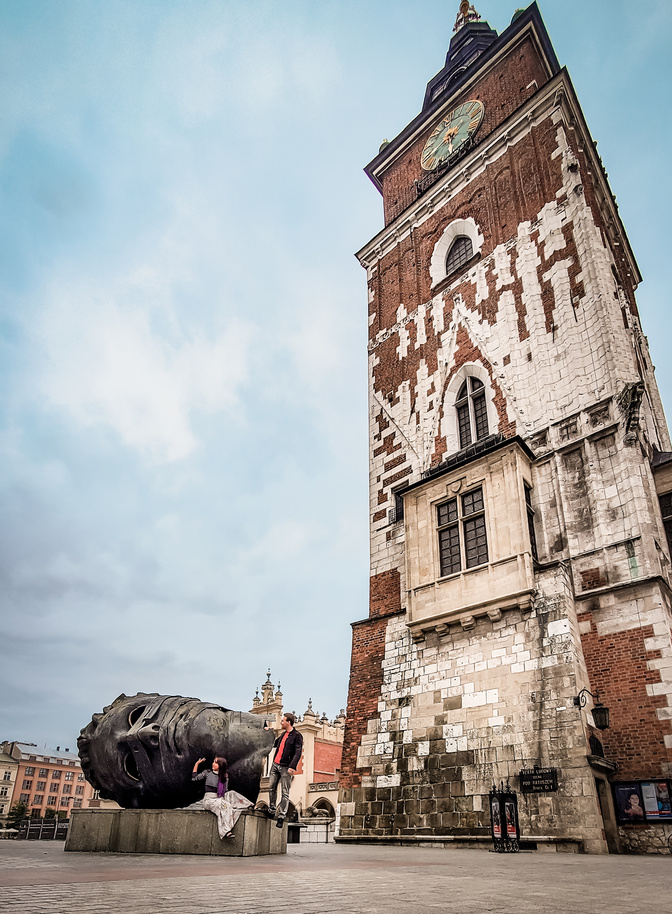



Krakow - part 5
Our Lessons
"Never Again": A slogan frequently associated with the Holocaust. After Nazi Germany opened the world’s eyes to the sheer horror that is genocide, it seems unimaginable that such an atrocity could ever be allowed to occur again. But, then... what about the genocide in Bosnia? Cambodia? Uganda, Sudan, Syria? Might there soon be evidence of war crimes uncovered in Ukraine?
Seriously: How could so many ordinary humans become murderers? What is "different" about the ones who choose to resist? These questions sat with us as we tread with heavy hearts, through the scenes of some of history's worst crimes against humanity: The Kazimierz neighborhood, where Jews were informed they were an inferior "race" that needed to be quarantined... Their family homes, which they were forced to leave behind to make room for the new “Aryan” immigrants... The walled “Jewish Ghetto”, where they were herded like cattle, unable to ask "why" without fear of being shot...
In Kazimierz, the end result is represented by the Square of Empty Chairs. Here, each of 70 chairs symbolizes 1,000 Jews who had been murdered by the Nazis in the Krakow Ghetto. We have gained much insight about the complexity of human behavior by listening to people's stories, and by reading closely about the tragedy of the Holocaust. We are by no means experts on human psychology, but we want to share our thoughts after having walked through these and other sacred grounds.
For us, perhaps the most ominous part about the Holocaust is that it progressed gradually... which made the worsening isolation, dehumanization, and social pressure to carry out acts of aggression seem just a bit less outrageous to those involved. In today's world, we have the benefit of being more connected... then again, social media and news algorithms are now programmed to feed us more of what we want to hear/see. Can our supposed connectedness truly protect against hate, intolerance, or worse, if our news algorithms preferentially connect us with like-minded people who all agree on the same side of a nuanced story? In the last few years, how willing have you been to have a genuine conversation with someone you might disagree with? How often have you heard those with opposing views being labeled as "bad" or "evil" in recent times?



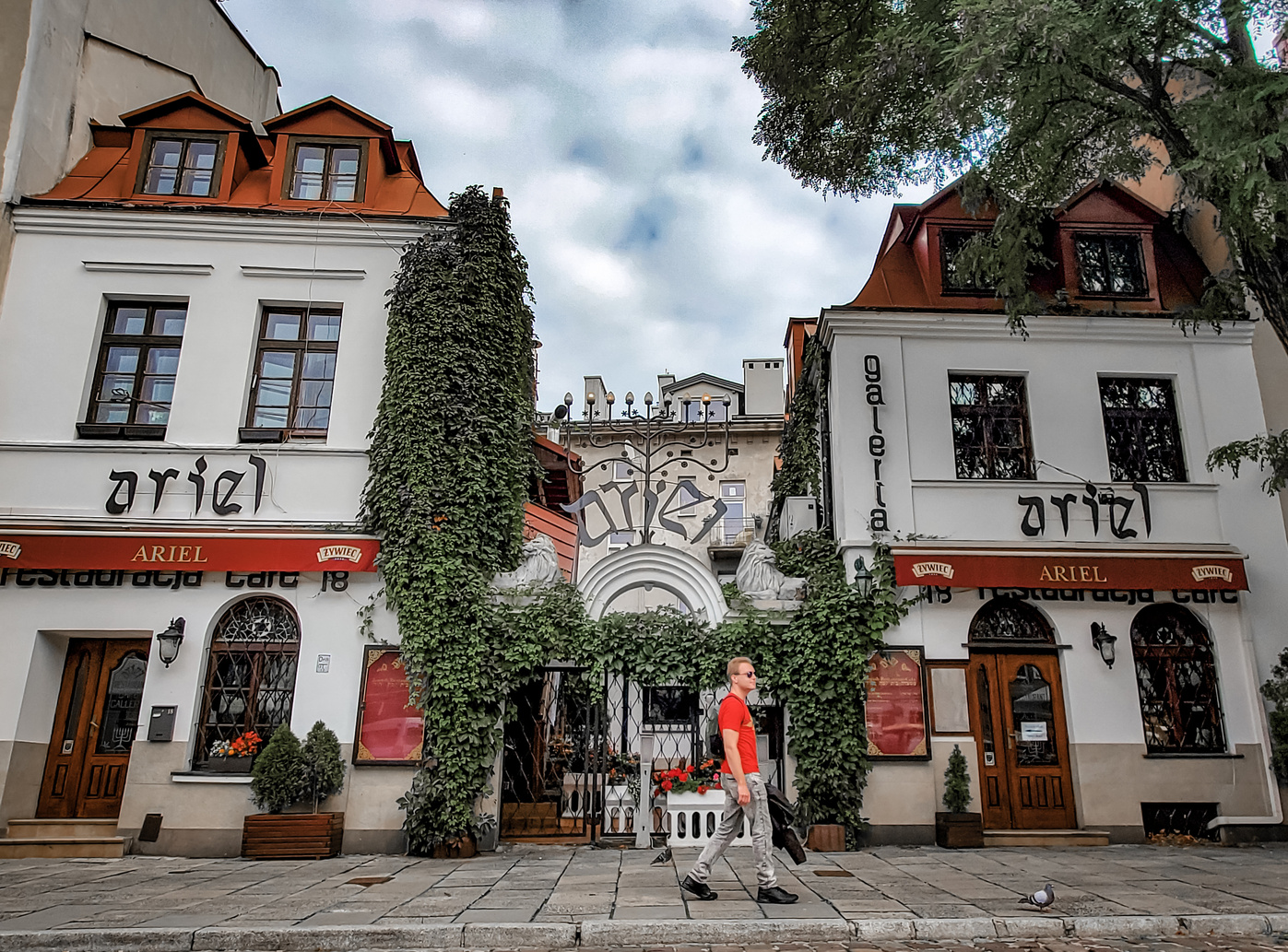
Auschwitz - part 1
Our Lessons
Auschwitz. Words escaped us as we walked through the remains of this enormous killing field. Arbeit Macht Frei (“Work sets you free”), mocks the infamous sign over the iron gate. Until their last breath, the Nazis tried to trick the Jews into believing this—even handing them soap and telling them to remember where they left their clothes after the 'shower,' as they forced them to strip naked and walk to their deaths into the gas chambers. 2000 human beings dead, in 20 minutes, in each of 4 gas chambers. Many of the victims were not actually fooled, and many sacrificed their lives in acts of heroism—including a contingent of prisoners who were executed after bombing one of the chambers, successfully disabling it. Others carried on for their families and loved ones, trying to appear healthy enough on a negligible 300 calorie-per-day rations… all in effort to avoid the medical examiner's eventually inevitable decision that they were "too sick" to work; were no longer of use; and should be scheduled for extermination...
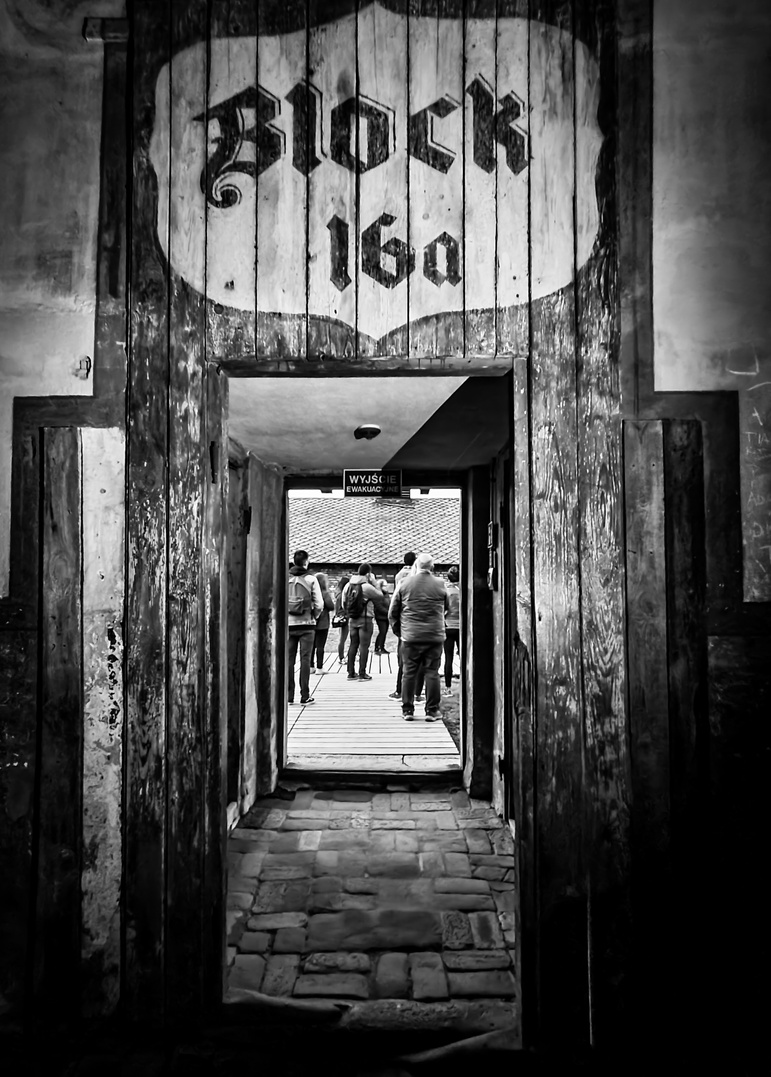
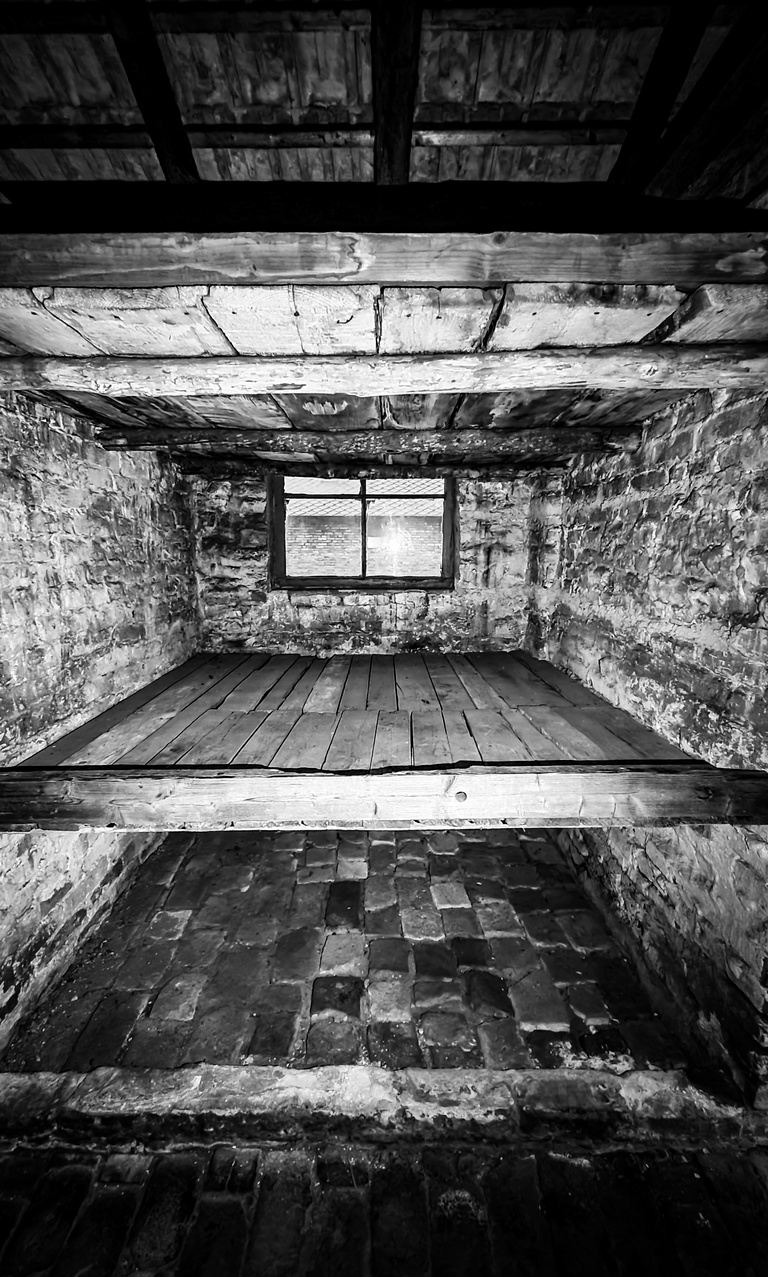



Auschwitz - part 2
Our Lessons
Could this have been prevented? It is impossible to think clearly as one passes through the haunting hallways and dormitories of Auschwitz—staring in horror at the empty canisters of Zyklon B gas; the crematoriums where bodies were shoved three-at-a-time into furnaces; the ceiling-high piles of human hair, clothes, bags, body braces and other personal belongings that were left behind. It is hard to hear anything else besides one's own aching heartbeat. But we believe that humans are not "born evil," and that we are capable of learning from our past. With this in mind, historians highlight two common themes:
First, a simple comment has been repeated in hindsight by many Germans who chose not to betray their fellow humans: they genuinely "knew" someone who was Jewish. Certainly an oversimplification, but a good take-home message: you don't have to travel the whole world to learn to walk a mile in someone else's shoes; you can begin with a simple conversation and an open mind. Imagine how different this planet would be if we would all make an effort to get to know each other just a bit more often.
Second, historians often point out that dictatorships go through great lengths to stifle education, and Nazi Germany was no exception. Earlier in Krakow, we stood outside the Jagiellonian University building (below), where 184 Polish professors were told to attend a "meeting" with Nazi officials—at which time they were all arrested and shipped to concentration camps! Post-World War I Germany was ripe for manipulation, as poverty and poor education were high. It was not uncommon for abhorrent present-day topics to be discussed—including eugenics (selectively mating people with specific desirable hereditary traits, and prohibiting the reproduction of those considered ‘inferior’). Indeed, historians speculate that access to nuanced, higher-quality education may be the second main "protective" factor that provided some Germans with the insight to see through the Nazis’ "fake news" and defend their Jewish neighbors.
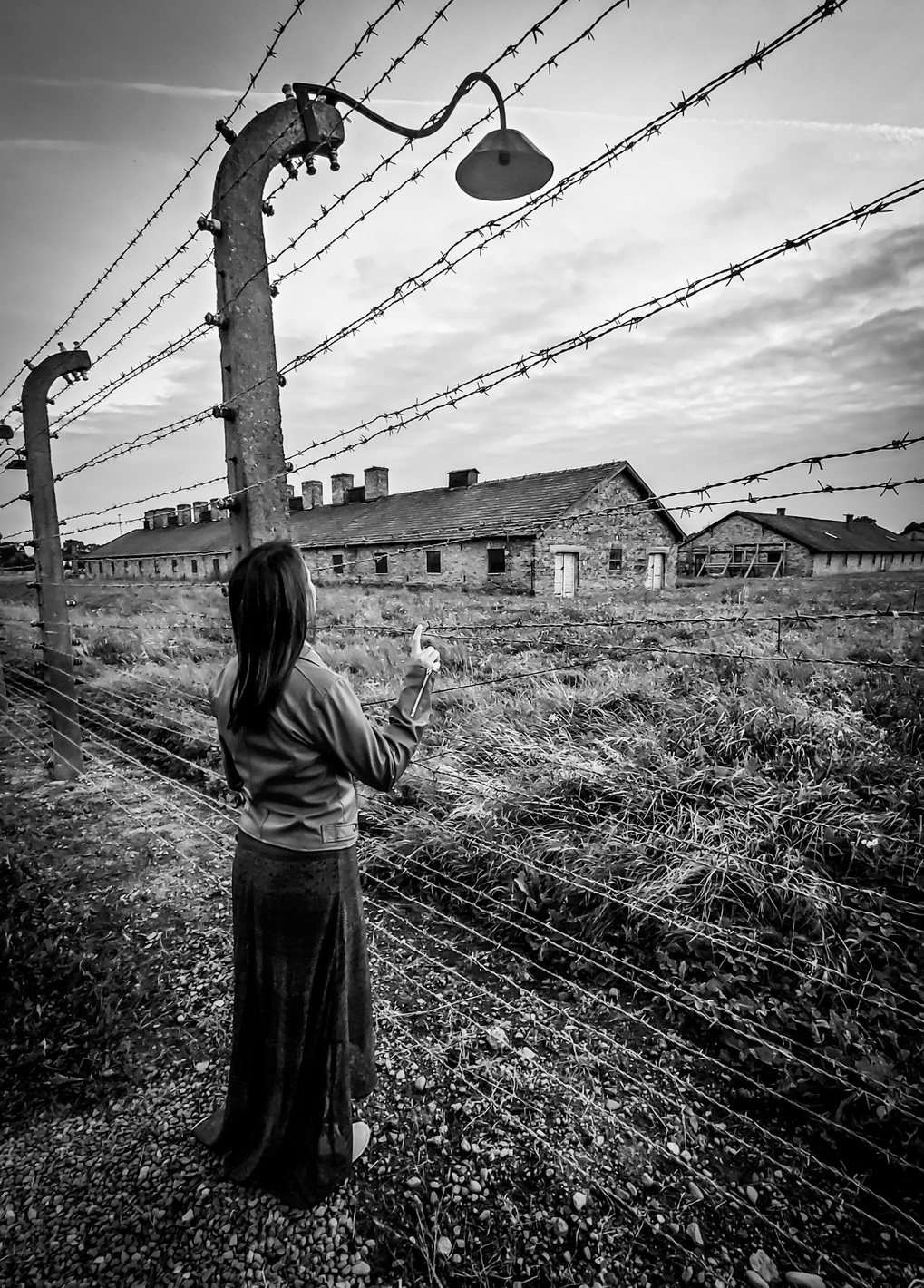
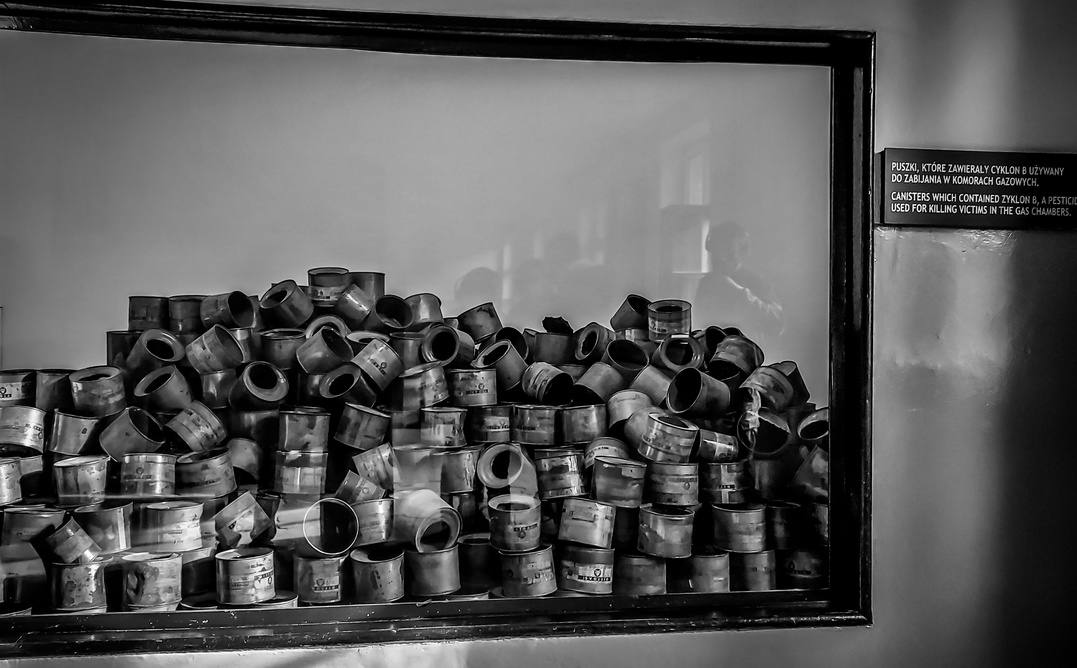

Auschwitz - part 3
Our Lessons
A quick reflection—as a pediatrician and an educator, Eric cannot help but emphasize: Today, we know that teaching our youngest generation the skills to think critically, stay focused, and see different perspectives is the key their success—and ours, as we seek innovations that will solve the complex problems facing our world! We also know that it's a financially smart investment… and the earlier you start, the better! In his practice, Eric is passionately raising awareness about the life-long benefits of early preschool, and early "developmental parenting" habits that encourage infants and children to enjoy learning. If it takes a village to raise a child, then it is our collective responsibility to support children and empower caregivers with the skills that are most effective at maximizing their child's early development. Ask a pediatrician for specific techniques!
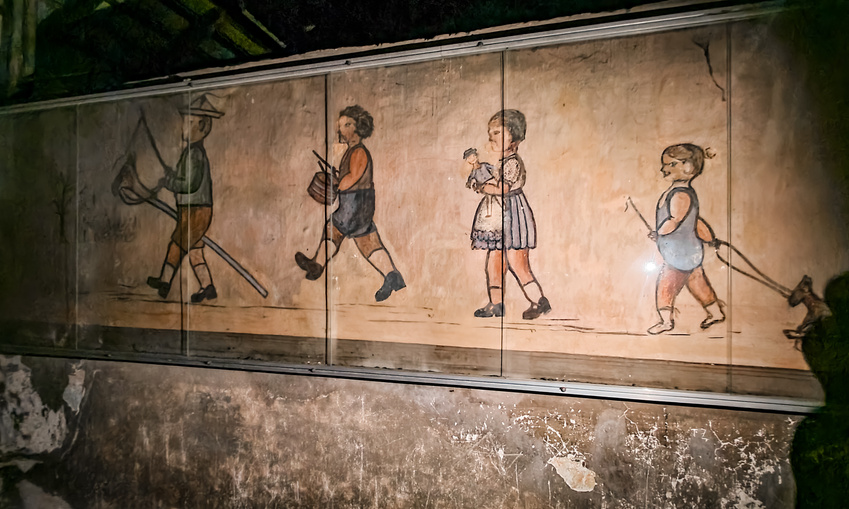
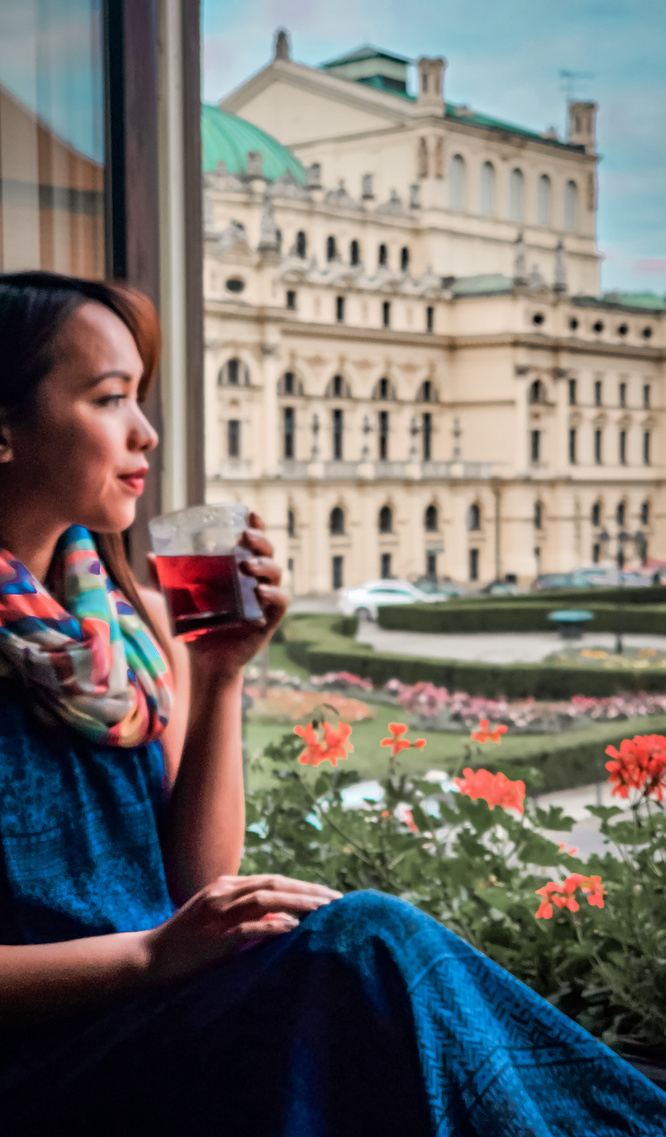
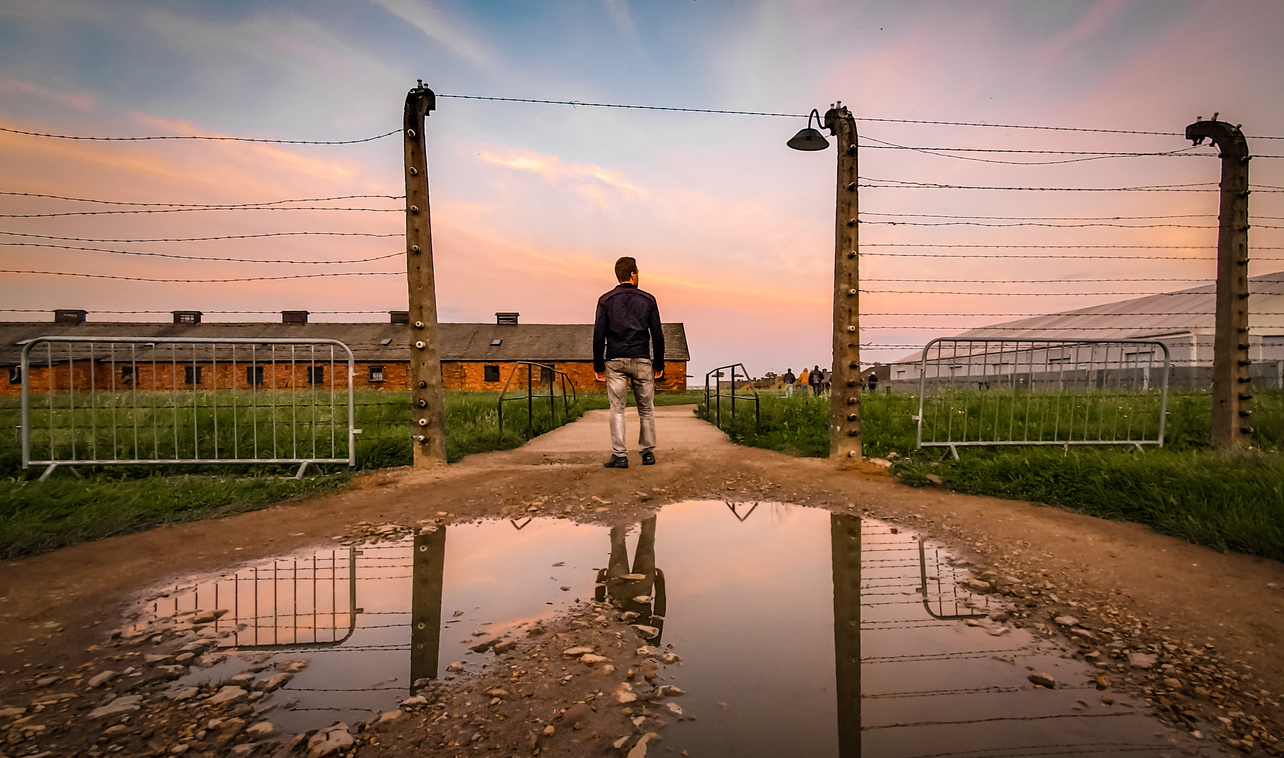
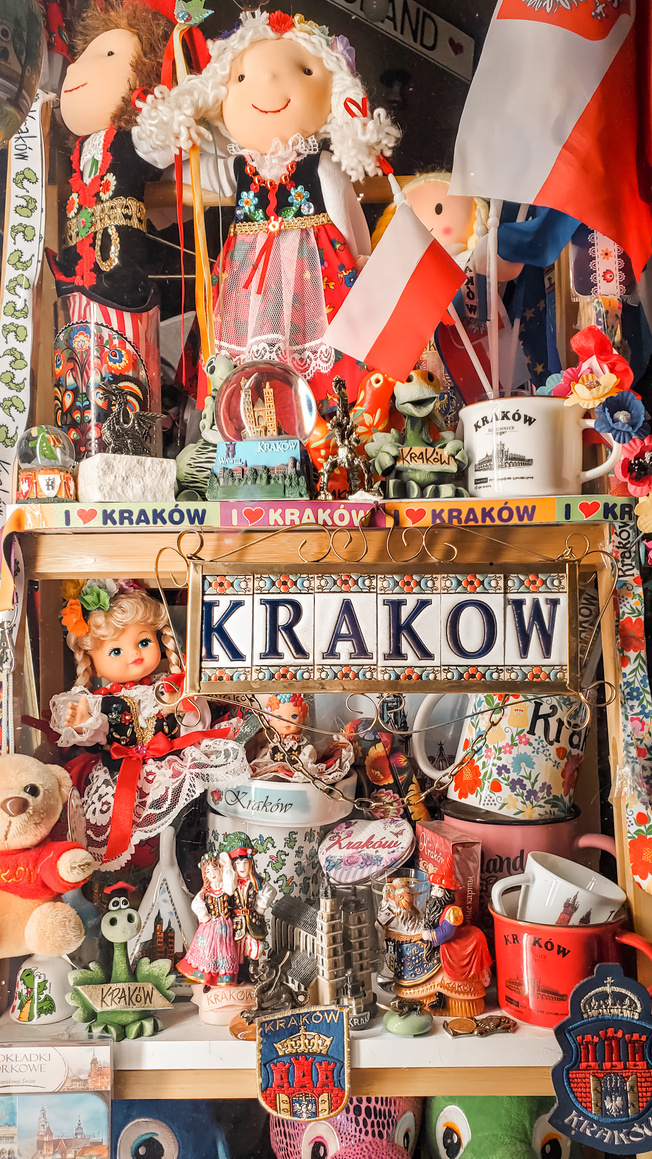

Auschwitz - part 4
Our Lessons
In summary, for our own recollection, we have consolidated the lessons we learned about Nazi psychology into a "How-To" guide to genocide—a guide to be learned, so that it may never be used again:
1. Find the Right Pre-Existing Conditions: For instance, we know that Germans’ animosity towards Jewish people did not happen overnight; it was long-standing, and it was perpetuated by repeated misinterpretations of the Bible (it is easy to take lines out of context to make a non-factual case—consider vaccine misinformation today). Second, a poor education structure in the preceding decades did not encourage students to think critically; and in fact many teachers were encouraged to teach using a biased, nationalistic, anti-Semitic viewpoint... while normalizing concepts like eugenics.
2. Stir Emotion Around a Mutual Hardship: Money is always a good option; and at the time, the post-World-War-I economic crash needed be blamed on somebody. In this context, citizens became attracted to a man skilled in emotional, passionate speeches, who brought about a "feel-good" sense of unity by repeating existing biases to blame an “outsider” for the failing Reichsmark—in this case, that outsider was the Jewish people.
3. Isolate and Divide: In his speeches, the Nazi leader encouraged citizens to avoid Jews altogether, as he was aware that we feel less empathy towards people we never associate with. People confined themselves to their own ideological “echo chambers,” speaking only to others with like-minded views and rejecting anyone who might present another side of the story. Extremism worsened without a voice of opposition: now, the Nazi leader was able to gradually introduce ideology to dehumanize the Jews—for instance, by stating that they were a genetically-inferior “race,” who could not even be saved through “conversion” to Christianity, and who would ‘out-reproduce’ the superior race if interventions were not taken.
4. Slowly-but-Steadily Raise the Bar: Nazi officers were taught to repeatedly praise and celebrate the “bravery” of loyal subjects, especially those who enforced new restrictions without question, regardless of brutality. In time, the subconscious need for social acceptance took over: for many German citizens, fear of not appearing “strong” in front of one’s peers became greater than the fear of inflicting harm on an outsider (especially one who is considered “not human”). The more this was done, the easier it felt—all while the bar of expected behavior was being carefully, incrementally shifted...
The rest, hopefully, is history. But if the story of the Holocaust can motivate us to better educate our children; to reach out to understand those whom we consider our adversaries… just maybe a glimmer of beauty can come out of the ashes.
"The opposite of love is not hate; it is indifference."







Kyiv - part 1
Our Lessons
Ordinary people, united, can still change the world. As the shadow of a new Russian invasion loomed, it was ever-more heartbreaking to remember that Ukraine's democratic revolution had taken place just seven years ago, as a result of a months-long, primarily peaceful protest. Standing in Kyiv's Independence Square, history surrounded us. It was here that an oppressive dictator's snipers gunned down a hundred unarmed protesters... the final straw in a remarkably well-organized, social media-based uprising of over half a million citizens in Kyiv.
This was Ukraine’s 2014 “Facebook” revolution: a time when social media actually did bring people together... and resulted in the ousting of pro-Russian president Yanukovych. The movement began after Yanukovych made a last-minute switch decision not to incorporate Ukraine into the European Union (as had previously been promised). Ukrainian citizens, seeking freedom and closer ties with the west, felt betrayed. Using social media, they rapidly organized what became a massive, months-long demonstration and civilian occupation of Kyiv’s central square. The government’s response: organized police beatings, and shootings of unarmed protesters. Over large Facebook groups, phone videos of these appalling occurrences were distributed; the names of victims were reported in order to reconnect them with families; resources were triaged; nonviolent protest strategies were discussed. As viral images of the government’s brutality spread, so did increasingly-widespread support for the protesters—and for then-president Yanukovych’s resignation. He eventually did resign, evacuating himself overnight to exile in Russia.
Russia's military annexation of Ukraine’s Crimean territory occurred following these events. Situated in Eastern Ukraine next to Russia, it is worth noting that a portion of Crimean citizens considered themselves pro-Russia, and supported this move; but certainly, the rest of Ukraine did not. This event sparked great contempt for Russia, and a theory that Ukrainians we spoke with shared with us: Russia is afraid—afraid of the long-term consequences of allowing a shining, “successful” example of a democracy on its border...
Overthrown leaders of Egypt and Tunesia, part of the so-called “Arab Spring,” were two other examples of successful social media-organized revolutions and protests that occurred during the early 2010’s. The power of social media to unite people around “just” causes gives us hope... Then again, the "January 6th" riot on the United States Capitol in 2021 is also an example of a social media-organized protest. Perhaps we need a new mandatory class in our public schools, titled: "Deciphering the Growing Bombardment of 'Real' and 'Fake' Information at Our Fingertips"!
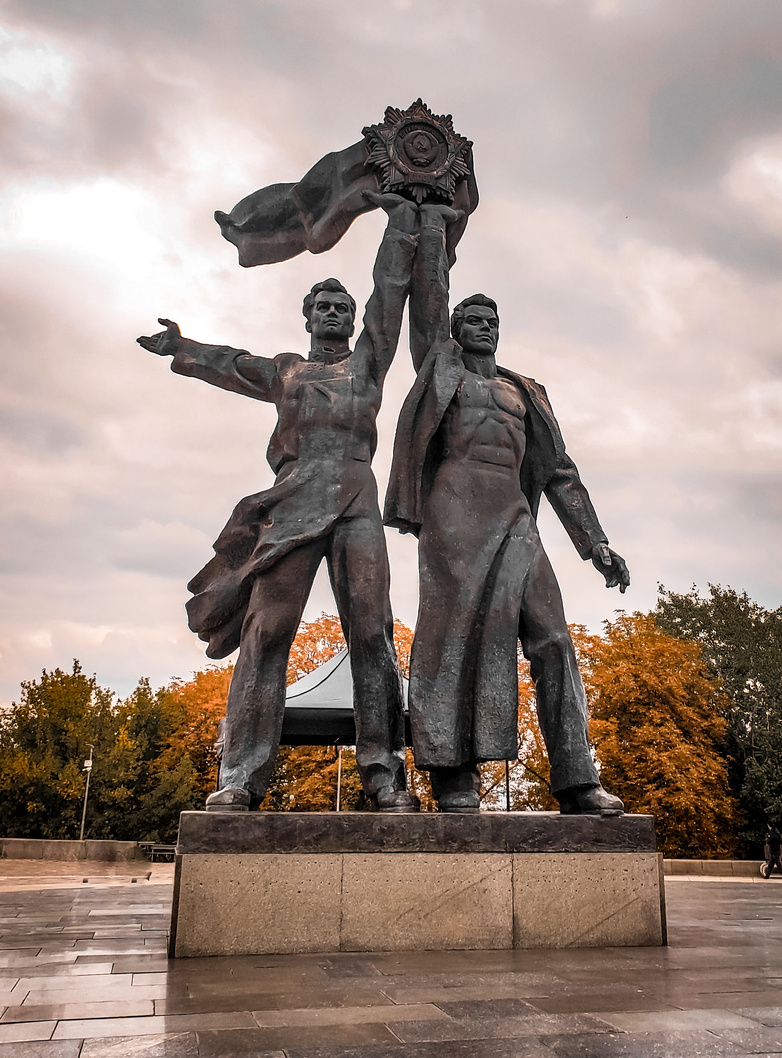
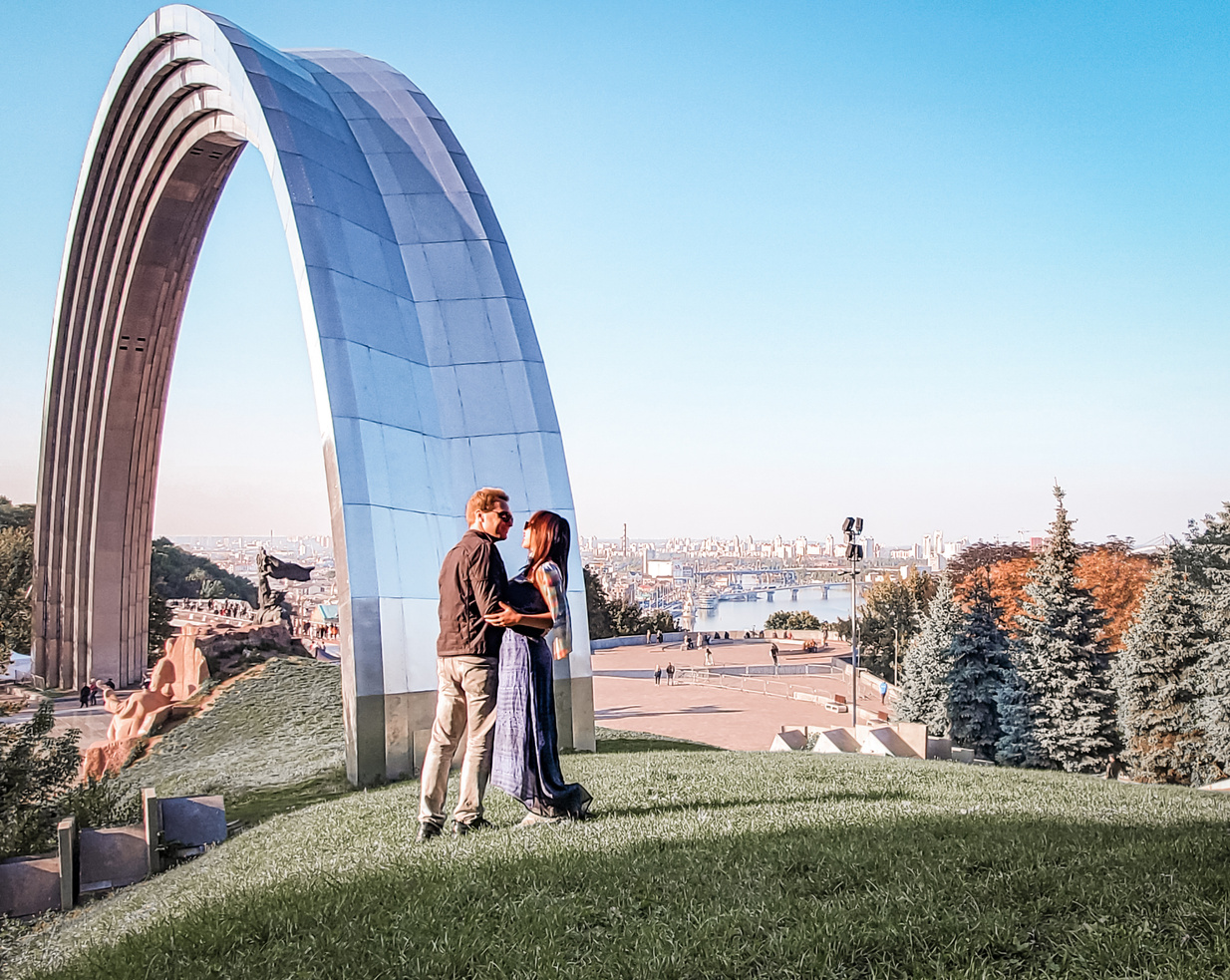
Kyiv - part 2
Our Lessons
Many of Kyiv's classical-style buildings may look old, but we are told that at least some of these had been heavily damaged by the Soviets, who placed mines around buildings in an attempt to halt the advancing German army during World War II. Thus, similar to Warsaw, Poland, many of Kyiv's buildings were decimated during that time, and have since been reconstructed in their original style. During the Cold War period, massive concrete Soviet-era buildings began line the streets as well, following Stalin's orders to cut costs. Our tour guide explained to us a basic 'Socialist rule of thumb' for construction: build enough homes for everyone... but everyone's home will be a small, box-like apartment. Notable features apparently included paper-thin walls, and a showerhead next to the toilet (shower stalls were an unnecessary 'luxury').
Adjacent to downtown and just across the Dnipro River, we selected to stay in a 'waterfront' hotel on a small, forested island known as Hydropark. When we arrived, we were surprised to realize this 'hotel' was actually a permanently docked ship! This was indeed an interesting hotel room with amazing views... and extremely thin walls, in the spirit of the Communist era. We heard all sorts of things from our neighbors and learned to appreciate the value of earplugs more than ever during our time in the Eastern Bloc!
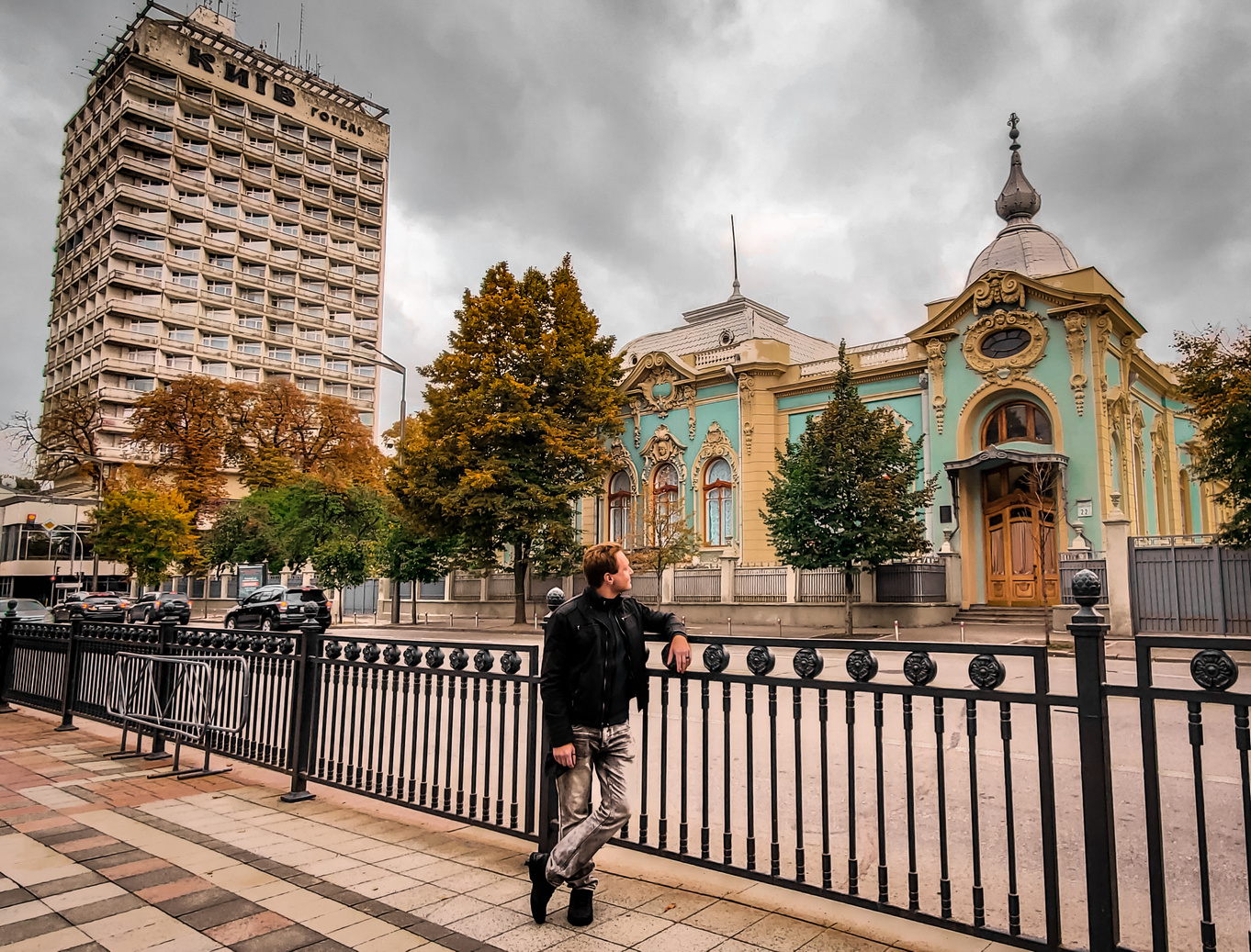

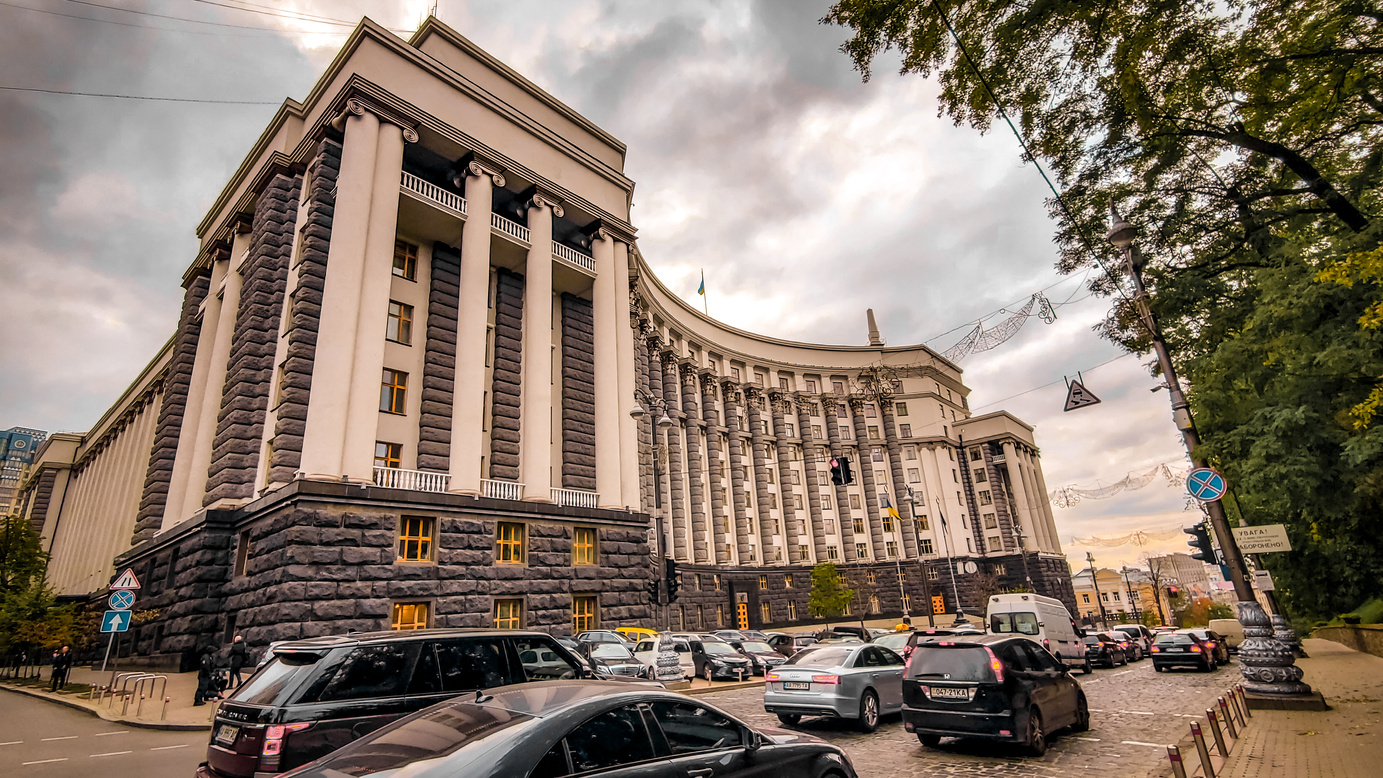


Kyiv - part 3
Our Lessons
Kyiv is a city full of all sorts of weird and interesting finds. For instance, Arsenalna is the world's deepest metro station (at 105.5 m below ground level, it's a heck of a long high-speed escalator ride to get down there!). And who knew that Kyiv's Museum of Toilet History would hold the Guinness World Record for the largest collection of toilet-related items in the world! Also, we were touched to learn the story behind "Love Bridge": of an Italian soldier and a Ukranian woman, who survived the horrors of Nazi imprisonment and found each other again after being separated for 60 years.
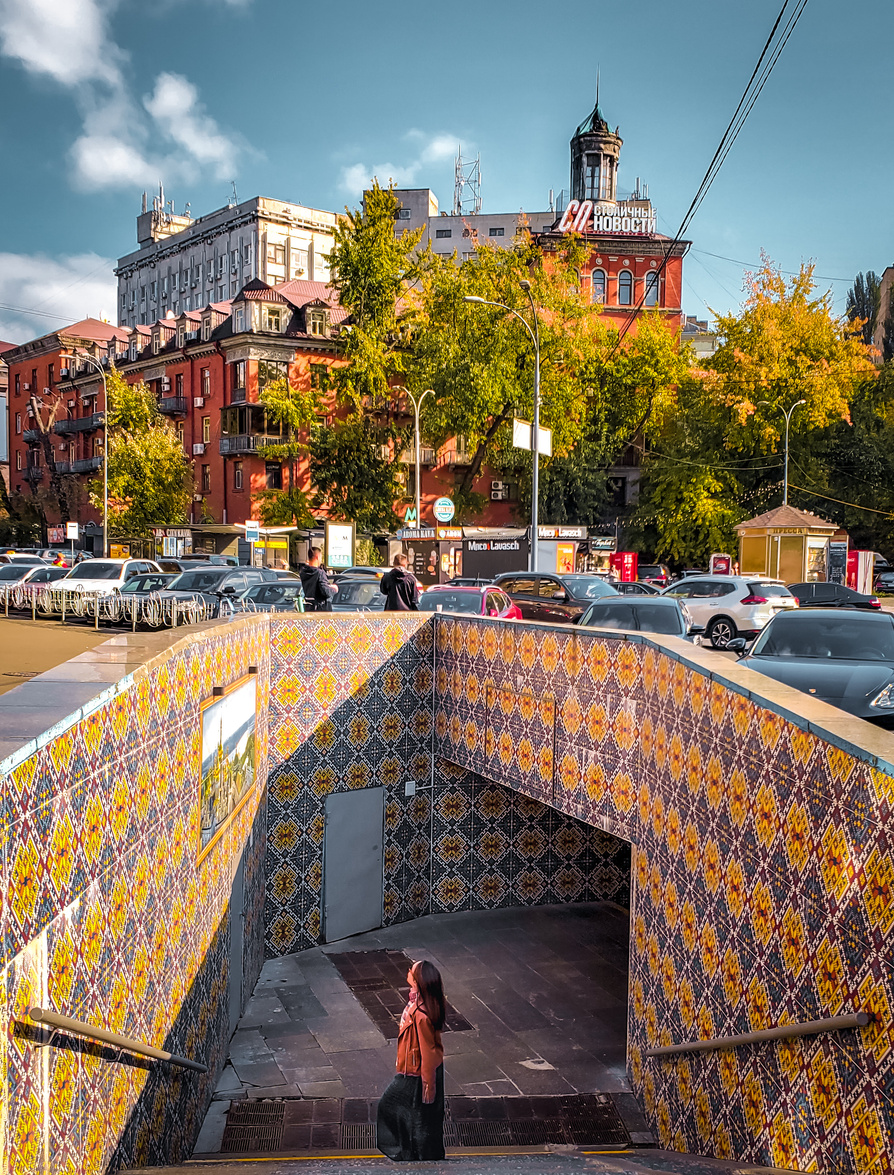

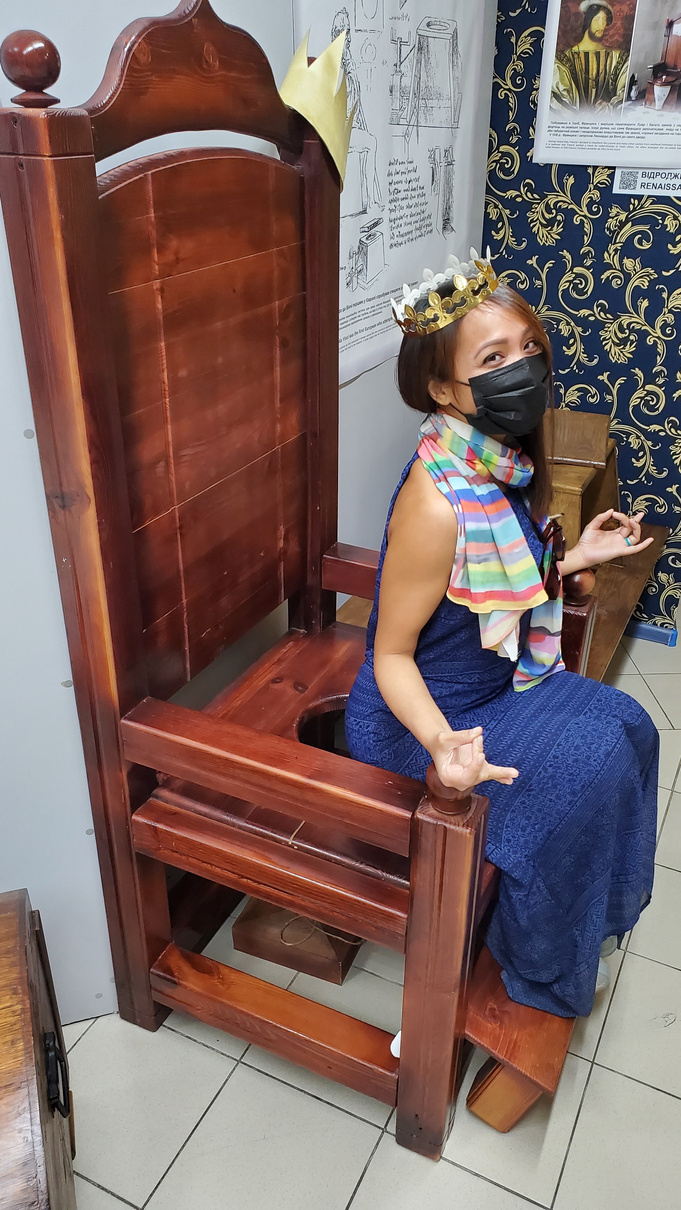

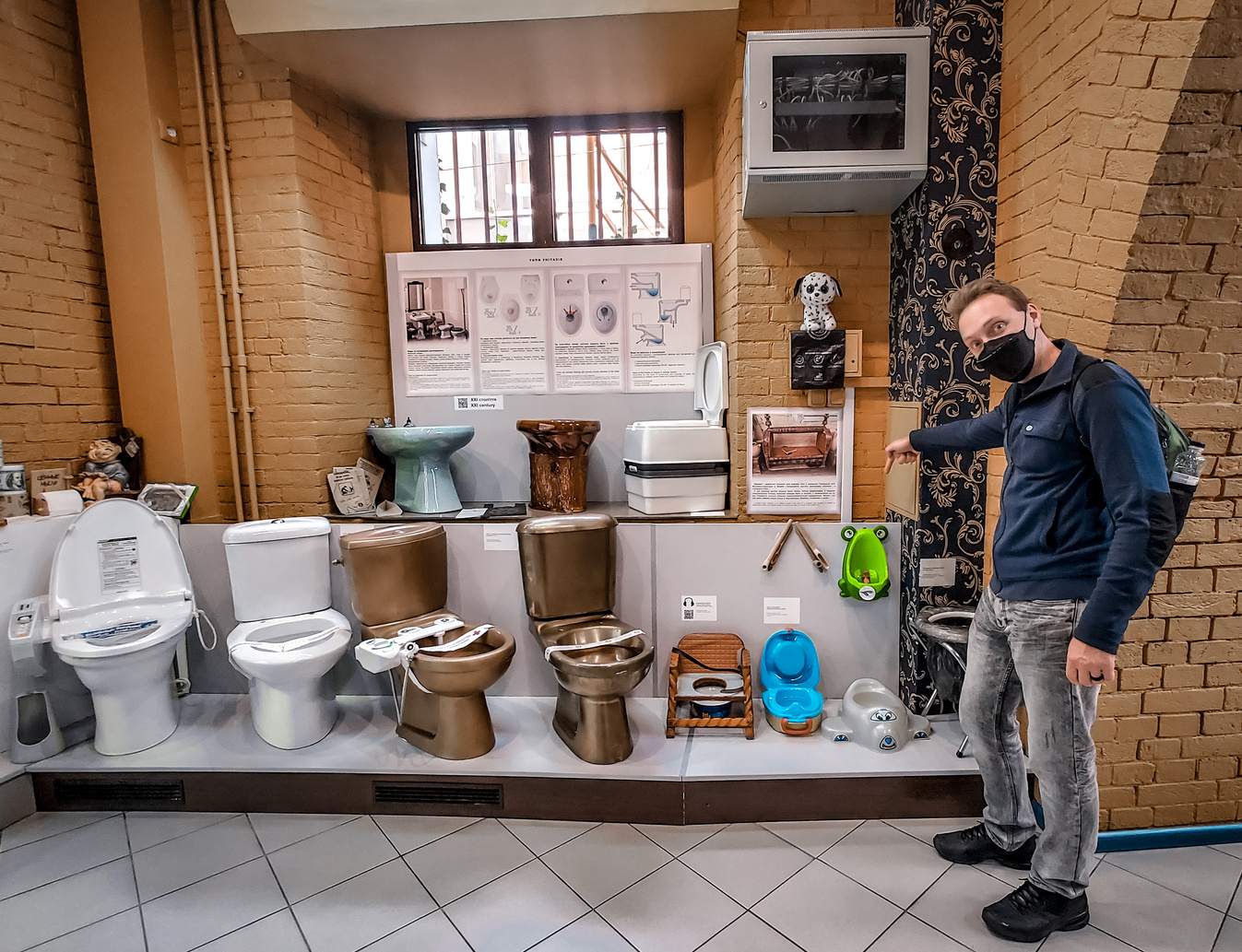

Kyiv - part 4
Our Lessons
During the Soviet era, we learned that Kyiv's centuries-old churches did not fare well. Oftentimes, their very foundations were taken apart; their stones recycled to build schools. A sad story, in some ways. Apparently in past centuries, Kyiv was considered an "Eastern Jerusalem," with so many beautiful cathedrals that people from far and wide aspired to make a religious pilgrimage there at least once in a lifetime. Today, some of Kyiv's beautiful churches have been reconstructed; but many have been lost forever.
And yet, although problems were abundant during communist rule, our tour guide did express nostalgia for the days in which university-level education was free for all classes of society. In fact, she argued that sacrificing 'bits' of Kyiv's rich history for its citizens' educational advancements may not have been the worst decision: "Putting the first man into space was a fantastic achievement, and it was made possible through strong universal Soviet education." Indeed, a strong focus on education seemed to be a positive cornerstone of many socialist republics, including Cuba as well as former Yugoslavia.
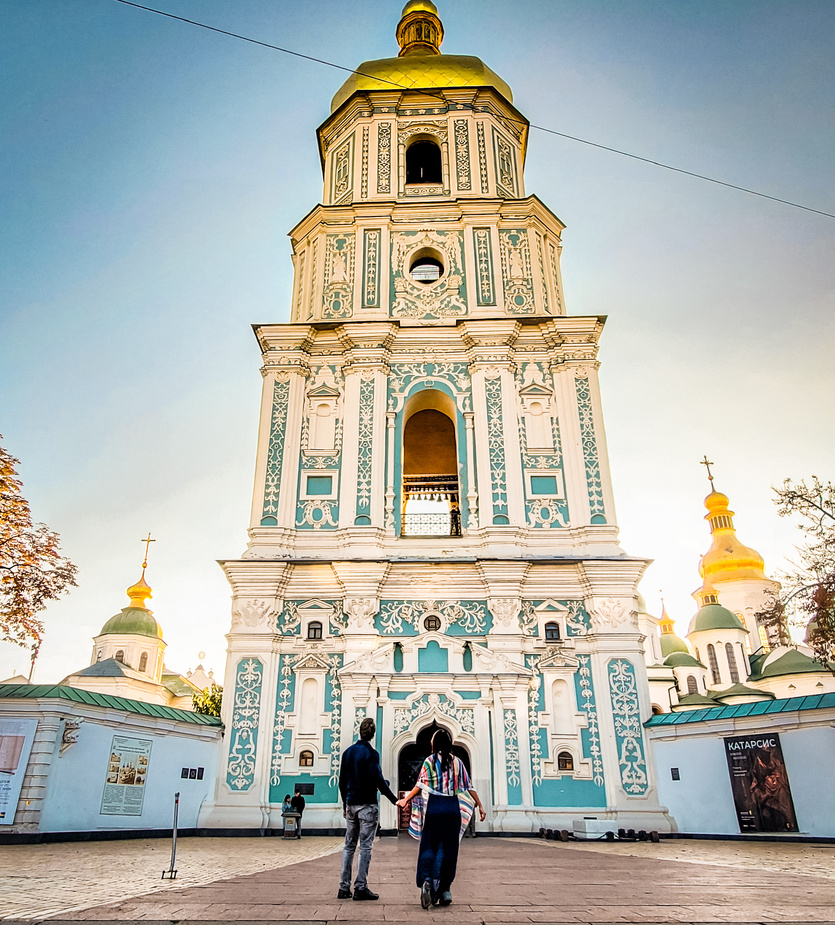


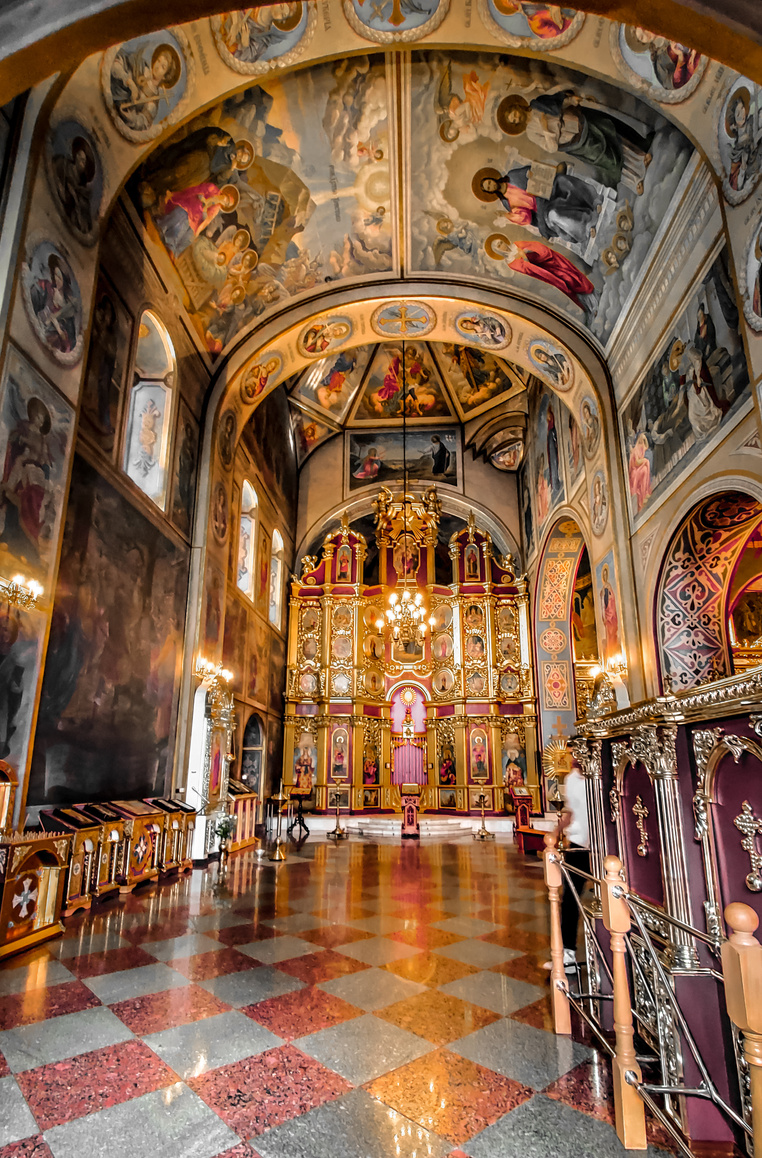

Chernobyl - part 1
Our Lessons
Just months before Russian tanks rolled through in 2022, our visit to the Chernobyl nuclear exclusion zone was peaceful, but one of mixed emotions. On one hand, the abandoned town of Pripyat has a creepy air of beauty to it—a sign of Mother Earth's triumph over mankind's attempts to cover it with concrete. Pripyat was built to be a "model city" for the Soviet Union—a "luxury" town for the workers of the Chernobyl facility, known to have much more art and culture than a typical communist enclave. Cinemas, an amusement park, pools, and even one of the USSR's first supermarkets was found here.
Pripyat has lost its war against time and nature, with 35-year-old roots and thick vines breaking through asphalt, ensnaring street signs, and assisting in pulling apart concrete walls that are collapsing in disrepair. In this way, Pripyat conveys a profoundly simplistic message: We don't really need to "save" our planet; it can take care of itself. We just need to stop actively killing it...

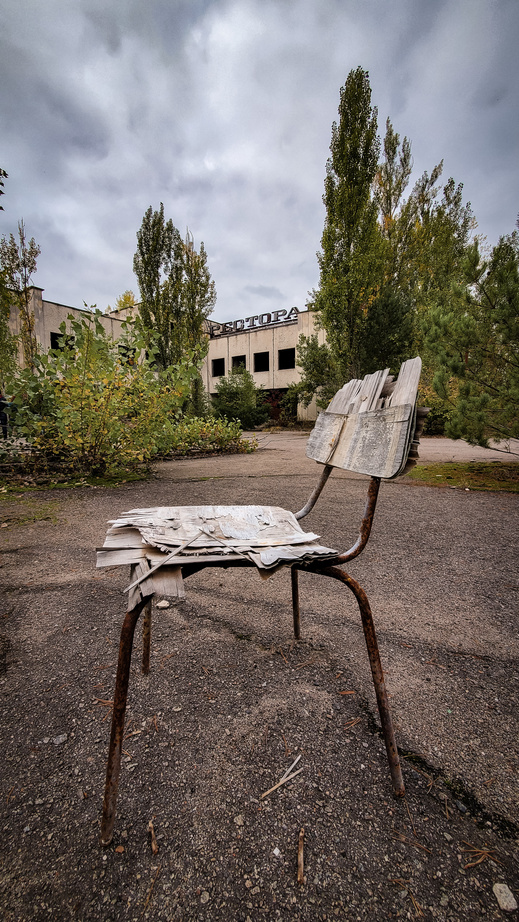
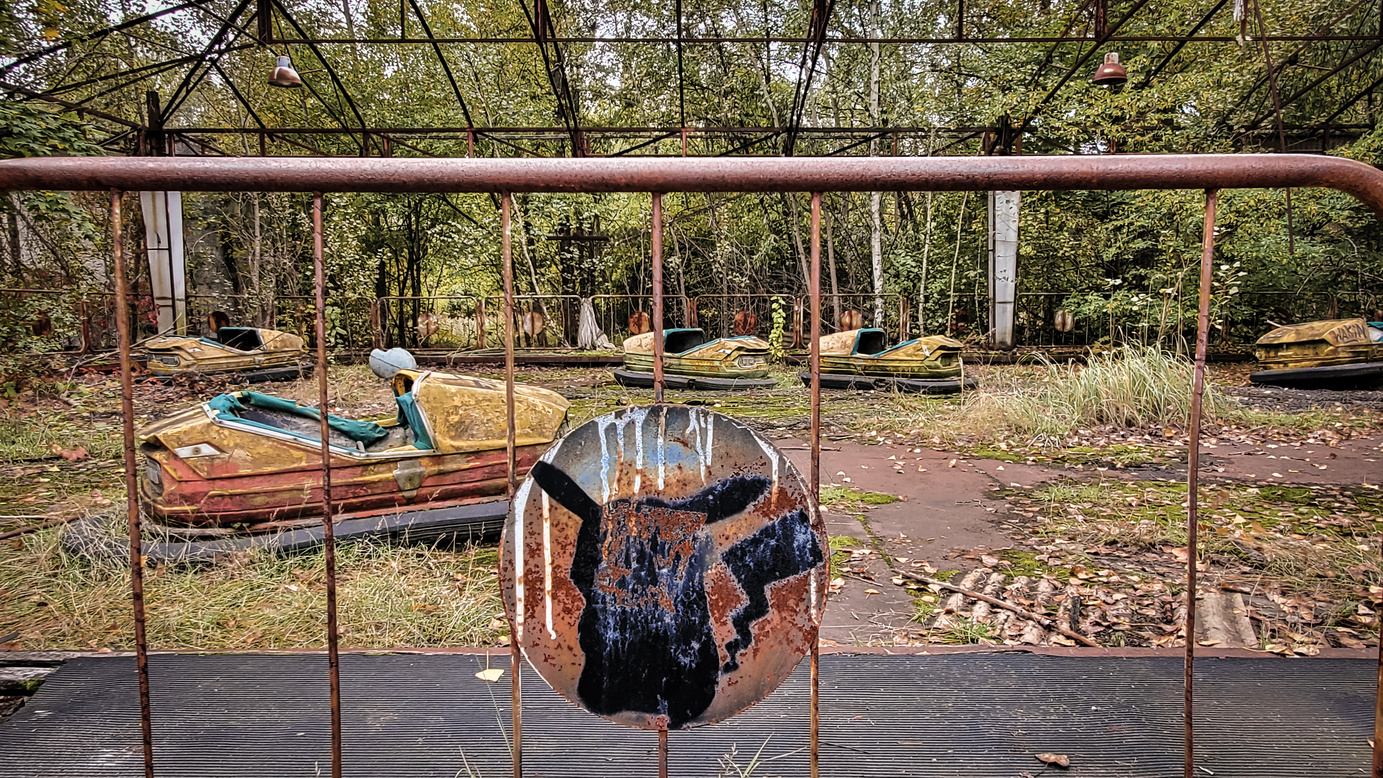
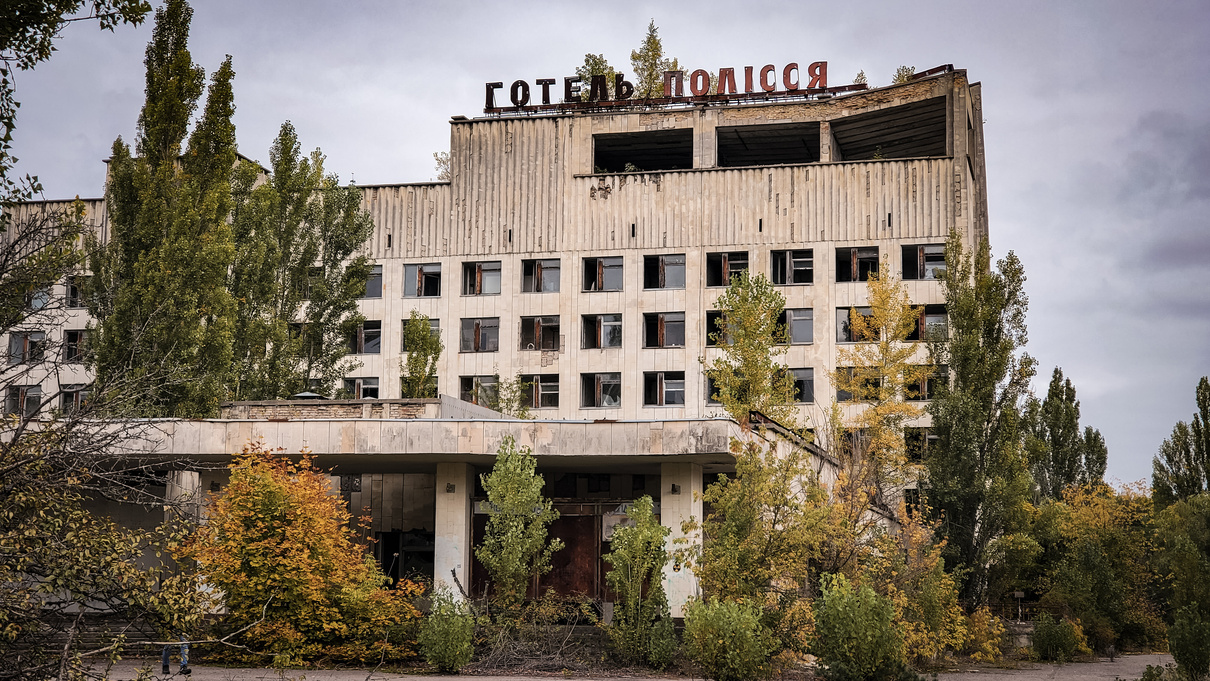
Chernobyl - part 2
Our Lessons
Russia "underestimating" their Ukraine problem, then and now: The truly morbid toll of death and injury as a result of the Chernobyl disaster may never be known. On paper, only 31 people "died" from the infamous nuclear accident; however, this estimate came from a USSR government known for secrecy and cover-ups. That same government immediately cut off all telephone communication to the town of Pripyat upon learning about the explosion, to prevent word from getting out to its citizens!
In 2005, the UN predicted at least 4,000 people have or would die from the radiation exposure. Then, in 2008, it was revealed that 40,000 rescue workers from Belarus alone had already been given a cancer diagnosis (40% of those exposed!). Long-term effects on exposed children, and an increase in birth defects is also being studied. As of 2021, in total, it was estimated that 5 million people were affected by radiation due to the Chernobyl accident.

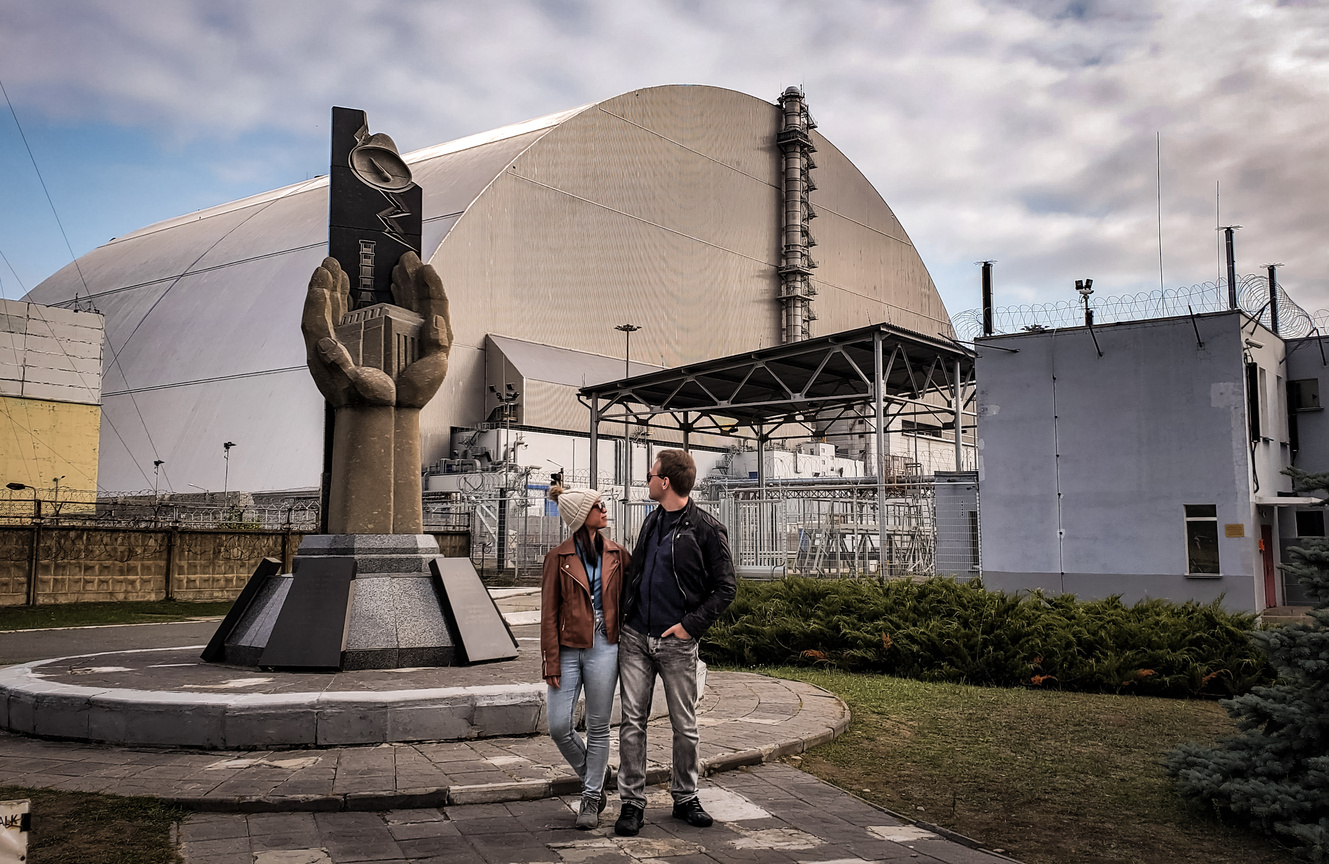
The slow leak of nightmarish stories of the USSR's cover-up and failed handling of Chernobyl is said to have contributed significantly to the collapse of the Soviet Union. It remains to be seen whether Russia's failing 2022 invasion of Ukraine leads to sufficient-enough destabilization of the Russian Federation’s modern autocracy to result in a similar fate. Perhaps we will have the answer by the time this publication is finalized... it is honestly remarkable how many dramatic geopolitical shifts are occurring during this post-pandemic year; it feels as if places we have visited mere months ago are changing faster than we are able to write it all down!
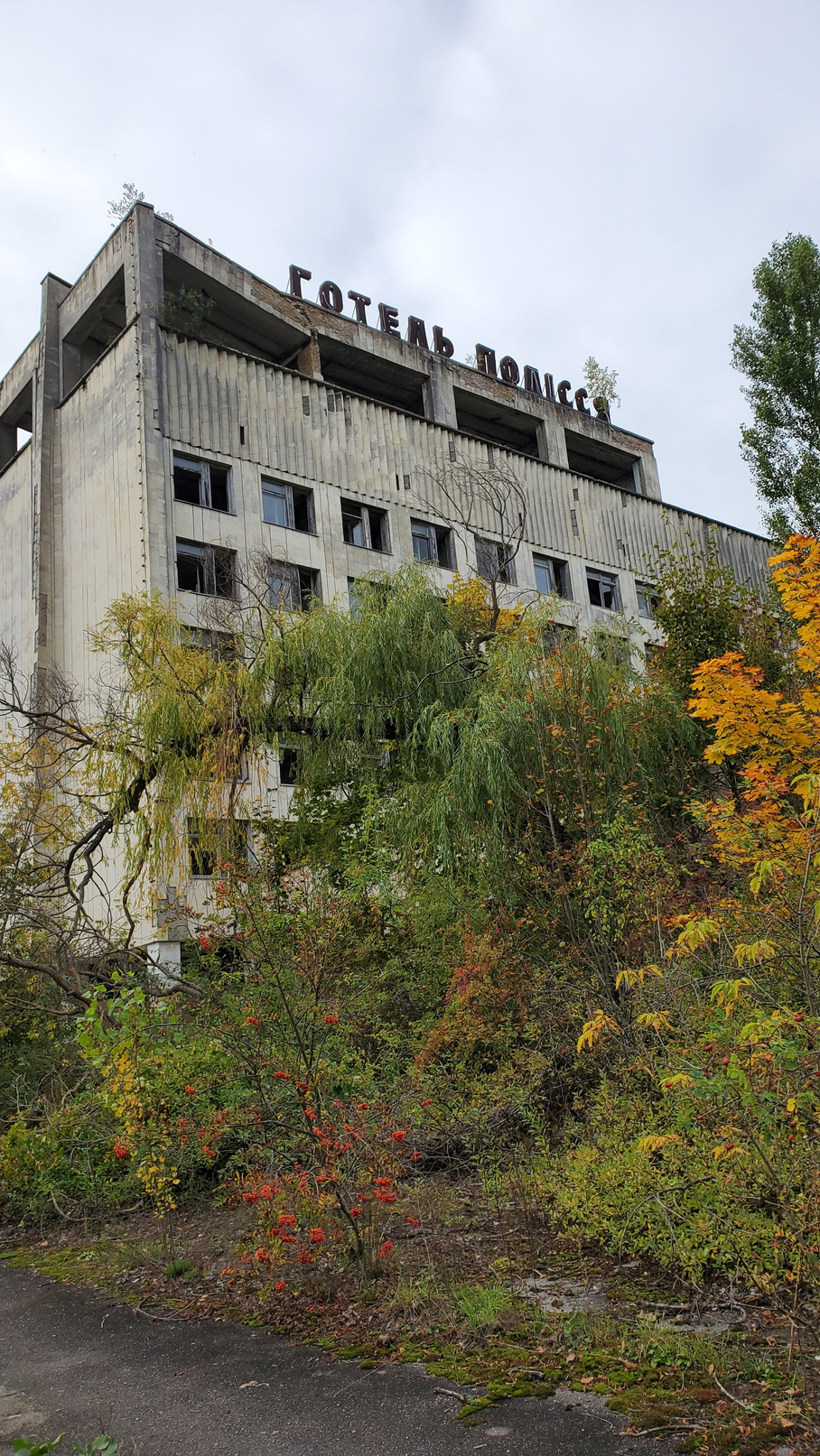

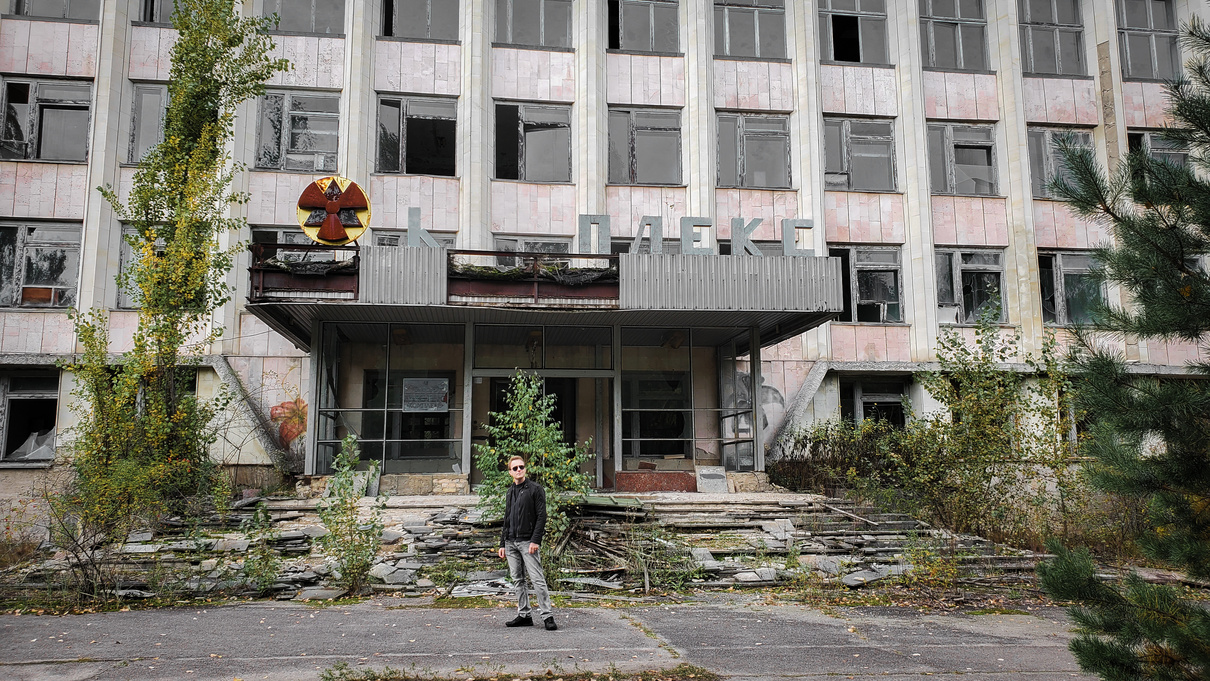
Chernobyl - part 3
Our Lessons
During our Chernobyl tour, we were provided two tools—dosimeters and Geiger counters—to keep track of accumulated radiation exposure, and to find the most radioactive areas, respectively! Highest-level areas are sometimes already marked/fenced off, so overall we were reassured that this tour was a safe activity. Time will tell how much of a setback the Russian military’s temporary deployment here was for the environment. According to Radio Free Europe in 2023, “Employees of the Chernobyl nuclear plant say Russian soldiers showed signs of radiation poisoning during their occupation. They say some developed huge blisters and were vomiting after ignoring warnings about digging trenches in radioactive soil.”




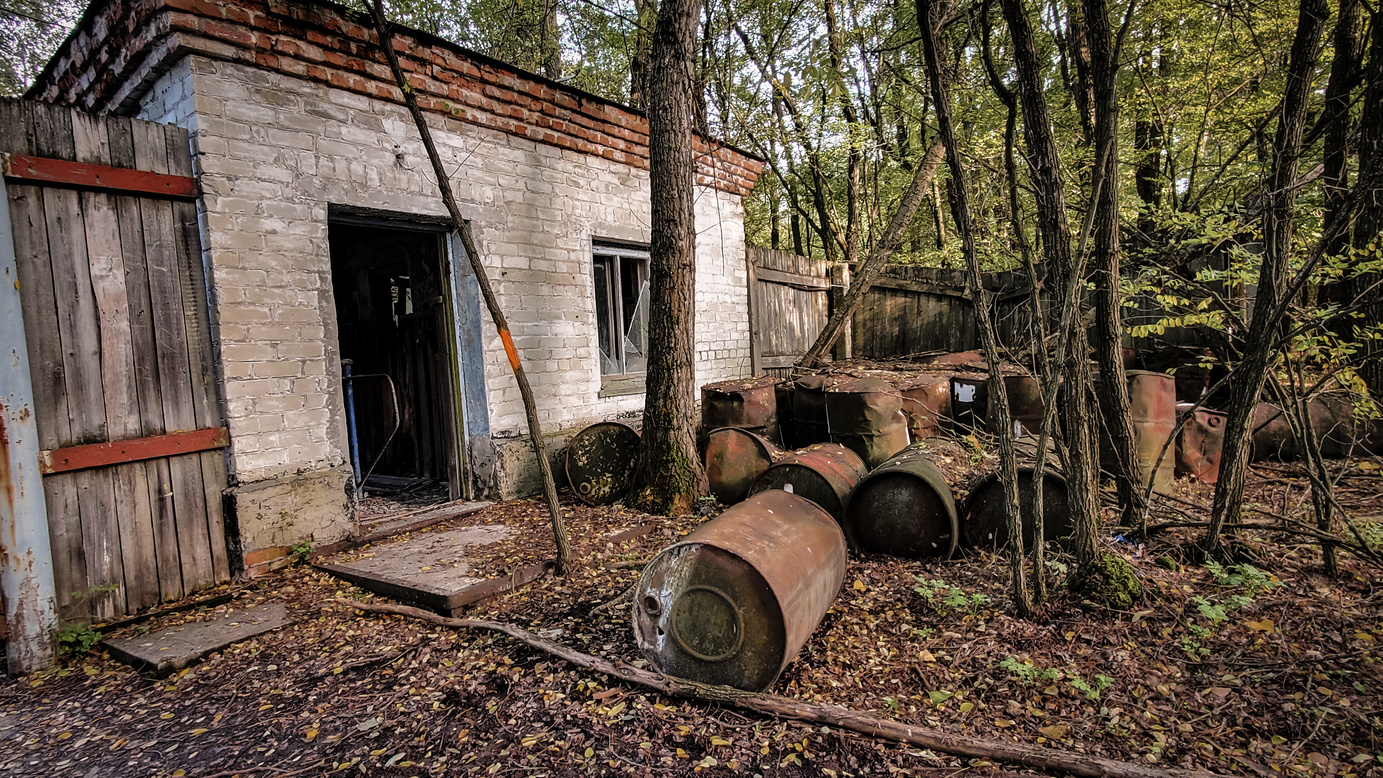

Chernobyl aside, as medical providers we can't talk about hazardous radiation exposure without also providing ourselves some quick reassurance about safe amounts of radiation. Patients often worry about getting "too many x-rays," but this is should rarely be a concern. By just going about our daily lives, we are in fact getting exposed to a normal amount of "background" radiation every day. A chest x-ray is only about 10 days' worth of normal background radiation. This mild amount is also about equivalent to the extra “cosmic” radiation you would receive from a day-long transcontinental flight (a soul-crushing experience, but not dangerous from a radiation standpoint!). Those airport scanners have only tiny amounts of radiation—equal to about 15 minutes' worth of normal background radiation, or 1/1000th of a chest x-ray. Heavy-duty medical scans (like CT's), on the other hand, do expose patients to higher radiation doses. Physicians are trained to weigh the risks/benefits on behalf of the patient prior to committing them to CT scans, but we always encourage patients to ask questions, so they feel well-informed.
Chernobyl - part 4
Our Lessons
A massive transmitter, hidden in the forest next to Chernobyl was a secret Soviet O.T.R. ("over the horizon") radar station. Also known as "Duga" radar, this 700-meter long, 150-meter-high steel behemoth was created to send massive radio waves across the earth. Ricocheting against the upper atmosphere, these radio signals would bounce back to the receiver and theoretically help detect incoming ballistic missiles. There were other side effects, however: notably, short-wave radios worldwide would get awful interference pings whenever the station was operational—and this interference by no means spared Russian radios!
These rapid-fire tapping noises were confused by conspiracy theorists as Russian attempts at mind control; but amateur radio enthusiasts quickly identified what it really was, and nicknamed it the "Russian Woodpecker" due to its signature sound. Such U.S. enthusiasts teamed up to broadcast synchronized countersignals, which would cancel out the Russian pings. They even formed a group called the Russian Woodpecker Hunting Club!
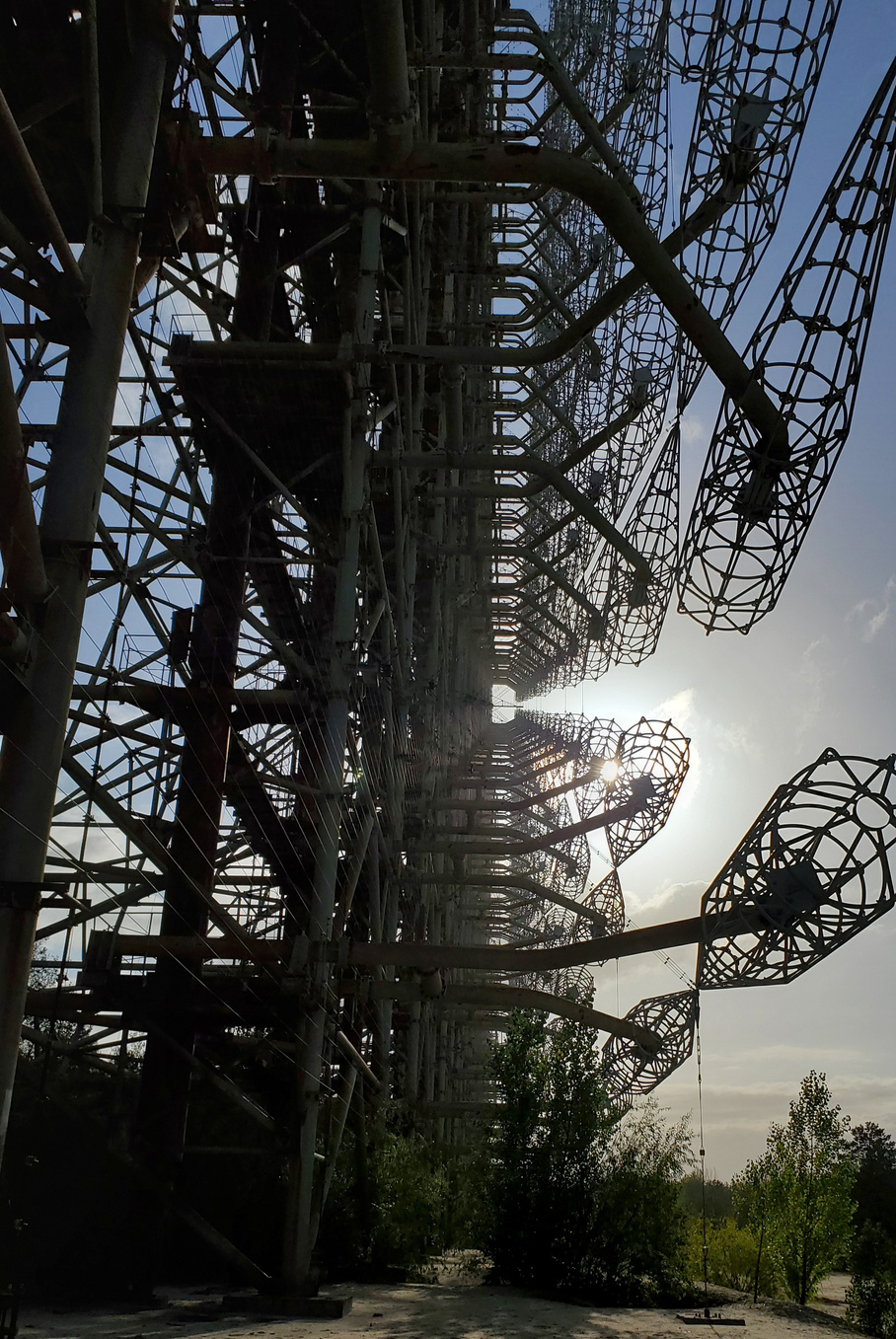
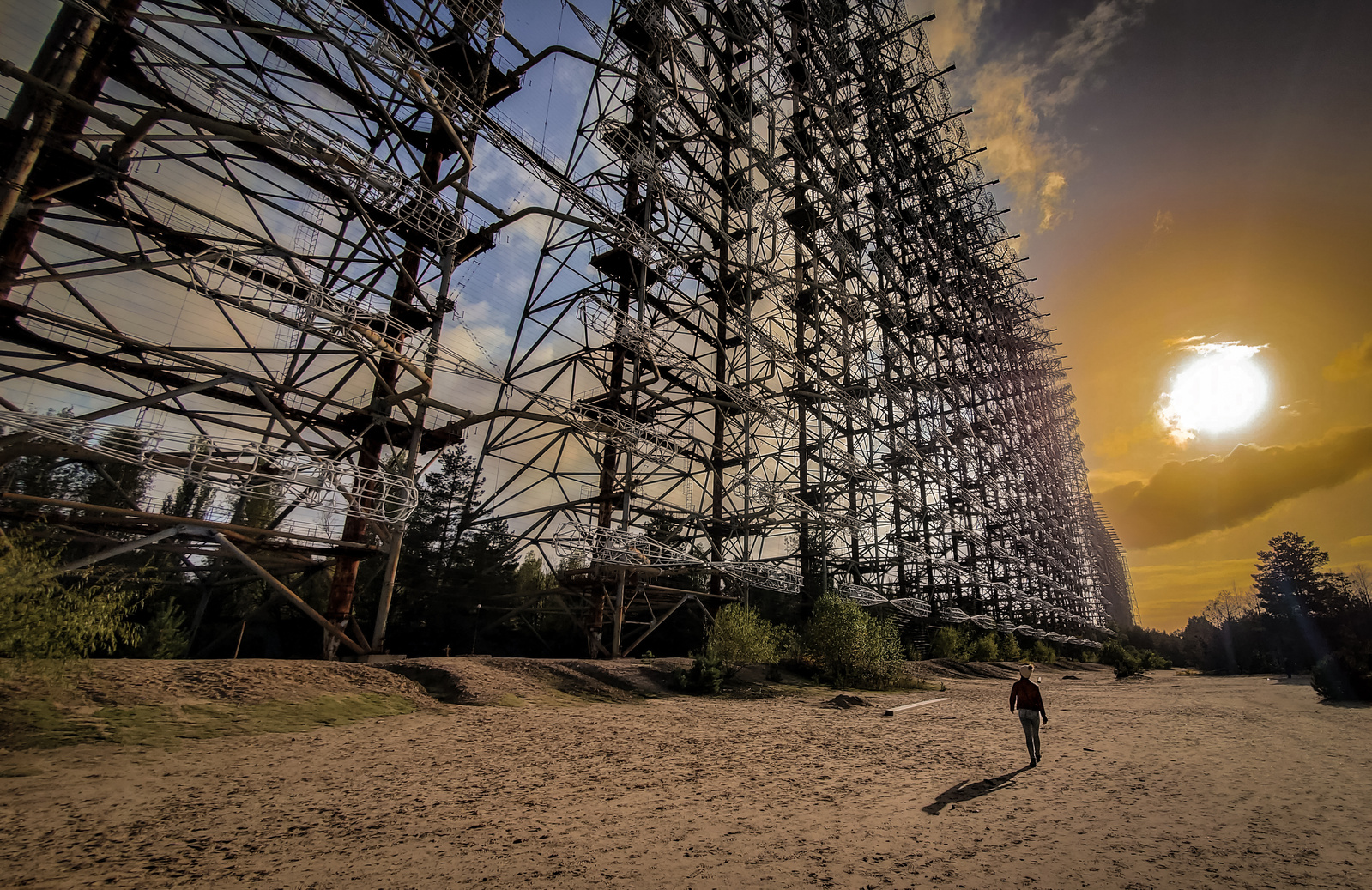
Kyiv - part 5
Our Lessons
"You will Fight, and You will Win."
Never did we expect this secret password to an underground bar in Kyiv's Independence Square to so-perfectly embody the spirit of its people. Hidden beneath the plaza’s massive fountain, this restaurant was known to be a haven for freethinkers during the 2014 revolution; a gathering point that encouraged them to continue their push for a better tomorrow. As of the time we were writing this in 2022, it certainly seems the Ukrainian people have stepped up to the challenge of securing their future once again. Godspeed, Ukraine.

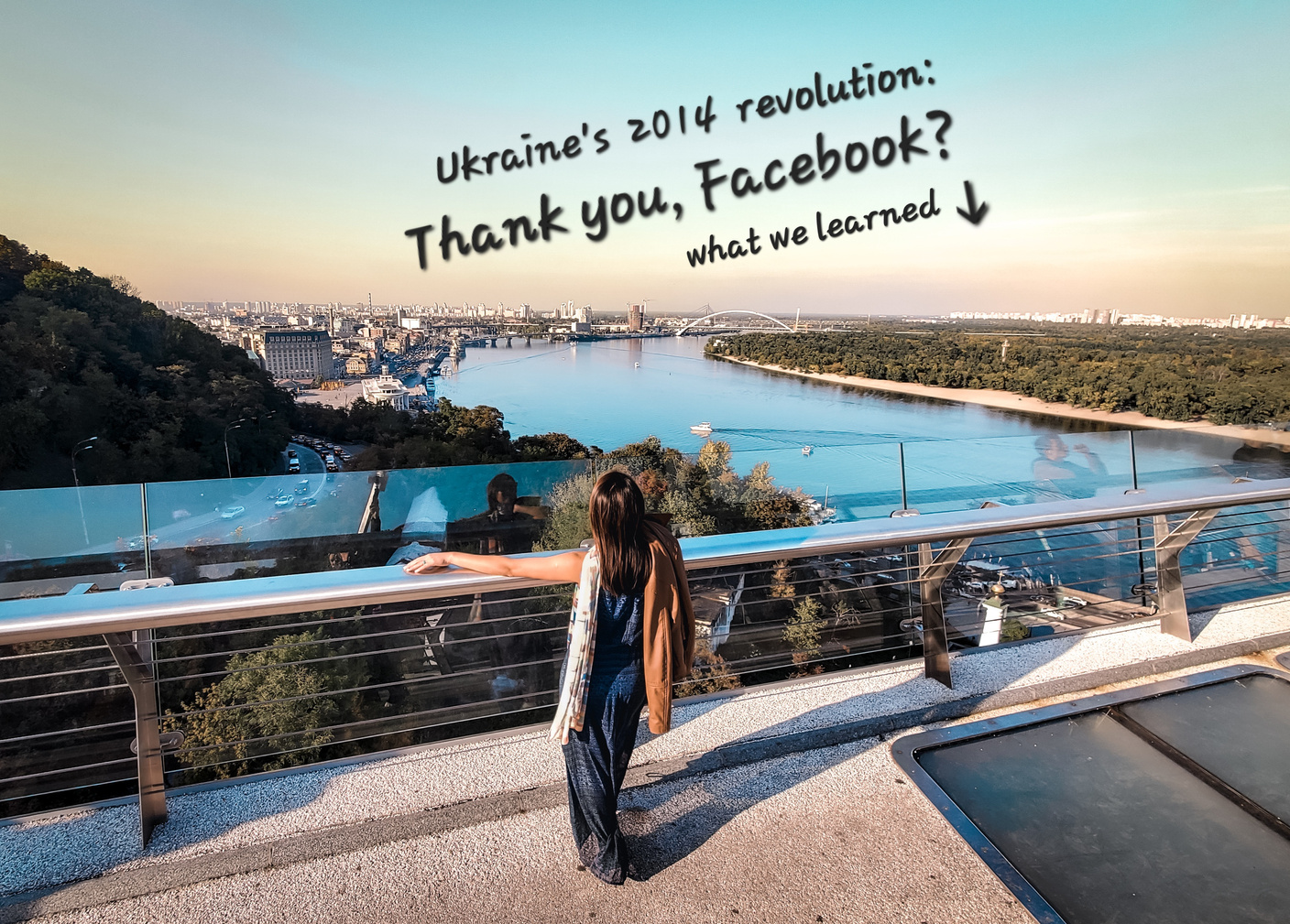



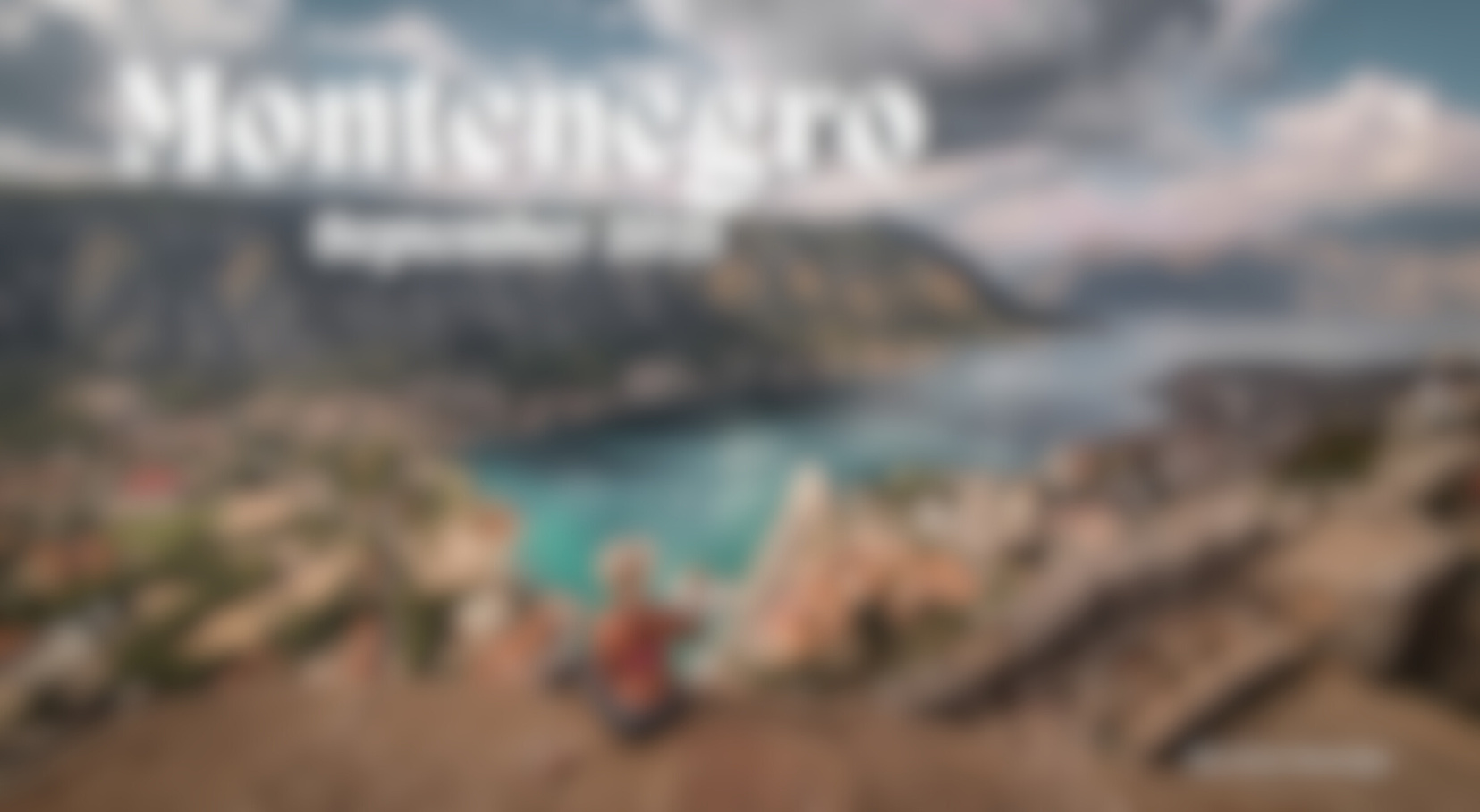
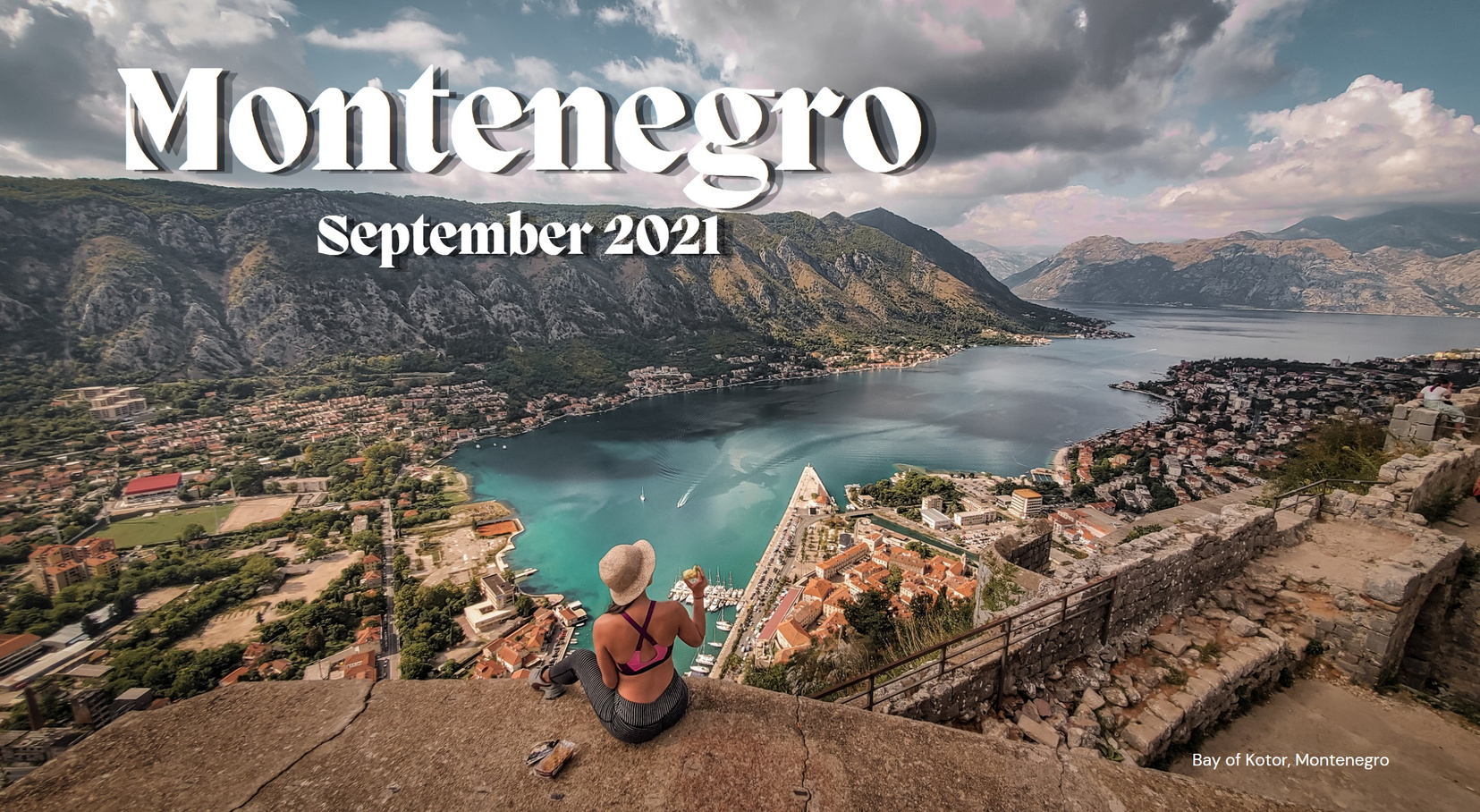
Bay of Kotor - part 1
Our Lessons
Montenegro’s Bay of Kotor was beautiful from the start. As we flew into the tiny Tivat Airport, imposing mountain peaks and crystal-clear turquoise water came into view. We must admit that we knew very little about this part of the world before we began travel research—in fact, when we were kids in school, Montenegro was part of Yugoslavia, not yet existing as an independent nation.
Now, Kotor has become one of the world’s top travel destinations—and Montenegro’s economy has grown as a result. Prior to COVID, we were told that perhaps an average of 7-8 cruise ships docked here every day, easily doubling the area’s “population."
The locals suffered economically from the cessation of visitors during the pandemic; for example, our guesthouse host had been out of work for a year and a half. We hope Kotor’s situation continued to improve quickly, because this place is not one to be missed by travelers.
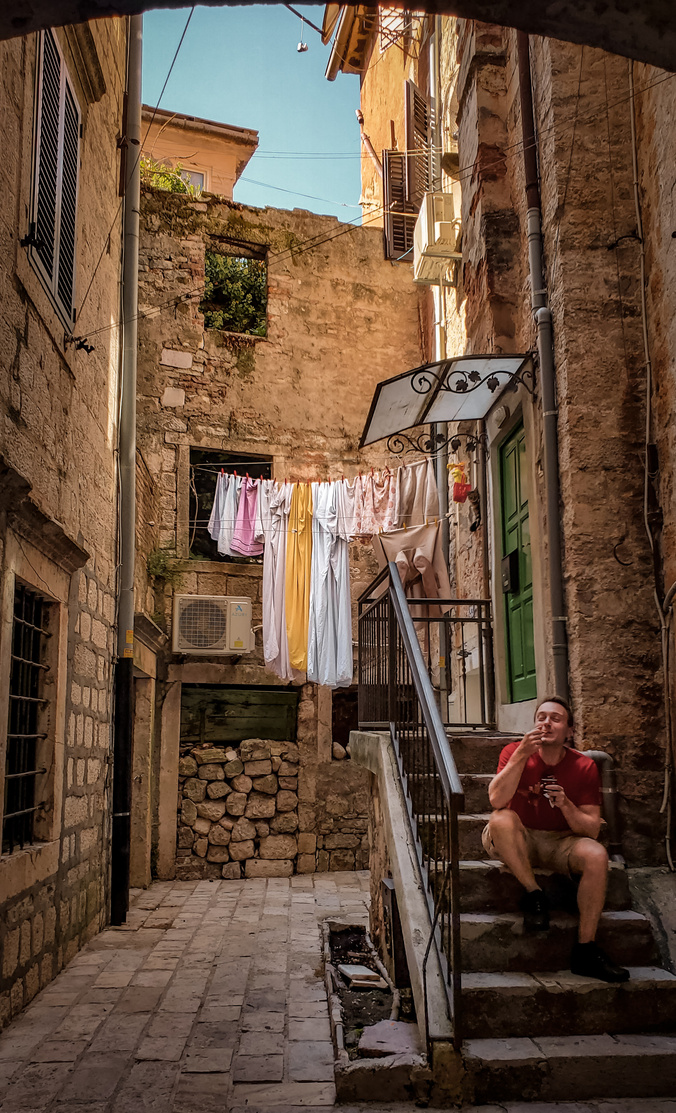
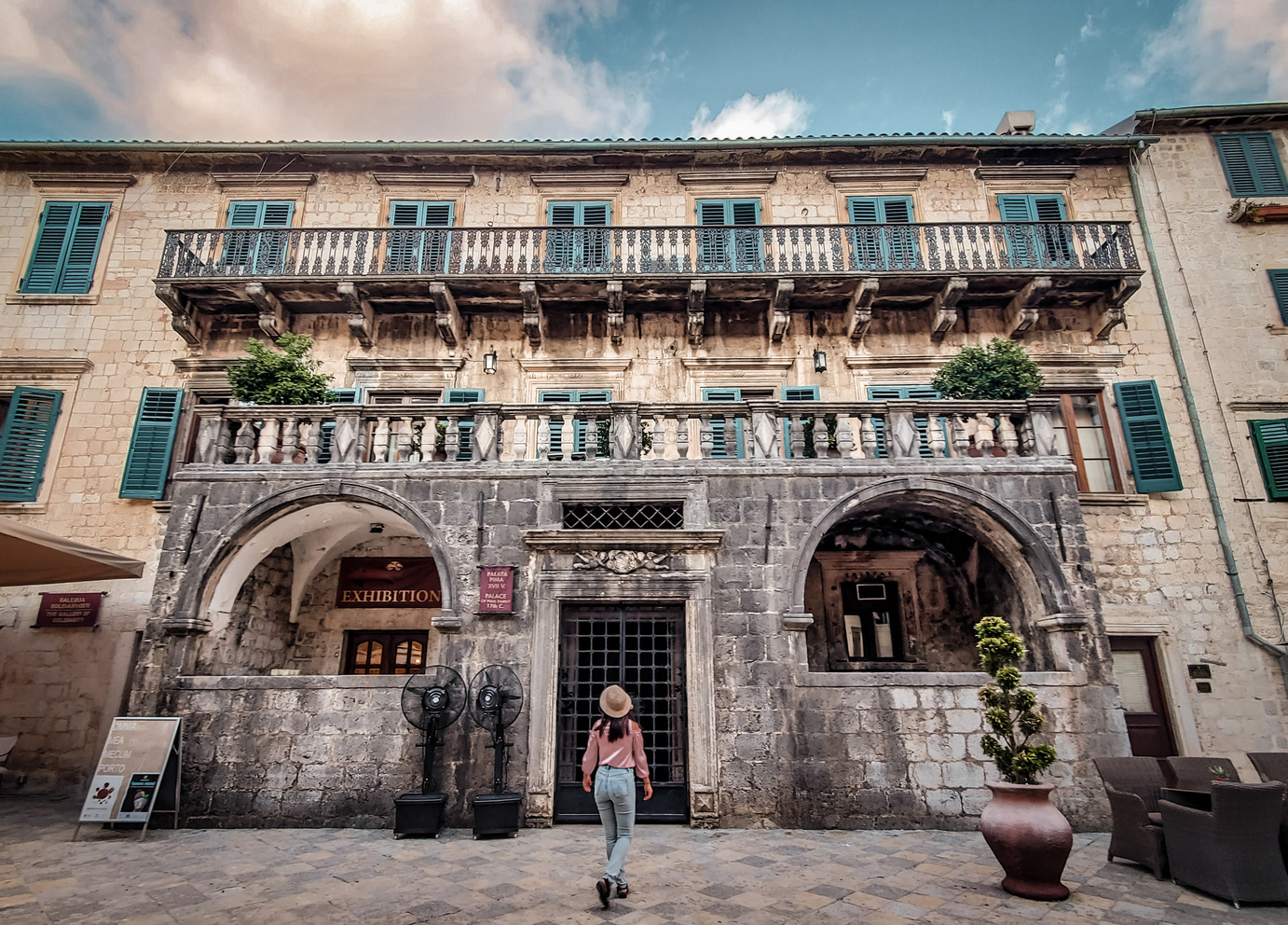

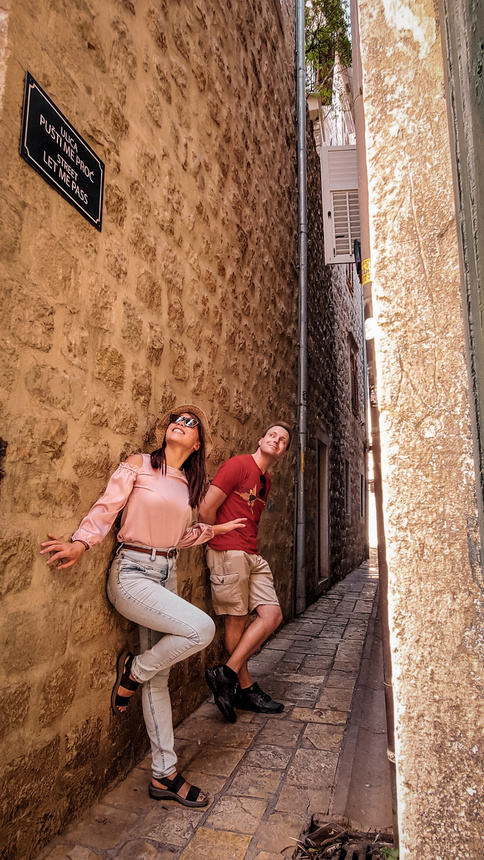

Bay of Kotor - part 2
Our Lessons
One thing that gives the Bay of Kotor its unforgettable beauty is a well-preserved medieval town, with truly epic fortress walls. It was strategically built here because Kotor Bay is surrounded by majestic, near-vertical cliffs. The town is at the valley of these mountains, but its walls ascend 280 meters up the mountainside, producing a nearly impenetrable military stronghold that has been coveted by countless conquering nations and peoples. Together with the old town and its natural surroundings, the fortifications were declared a protected UNESCO World Heritage Site in 1979.
Interestingly, the locals seem to all boast proudly that the fortification has "never been taken" by force. However, a quick internet search suggests that the British in fact captured the French-held fort in 1814, by hoisting cannons from the ship HMS Bacchante all the way up the mountain. This hard work paid off: having gained the high ground, the British pummeled the French from above with cannon fodder for 10 days, forcing their surrender.
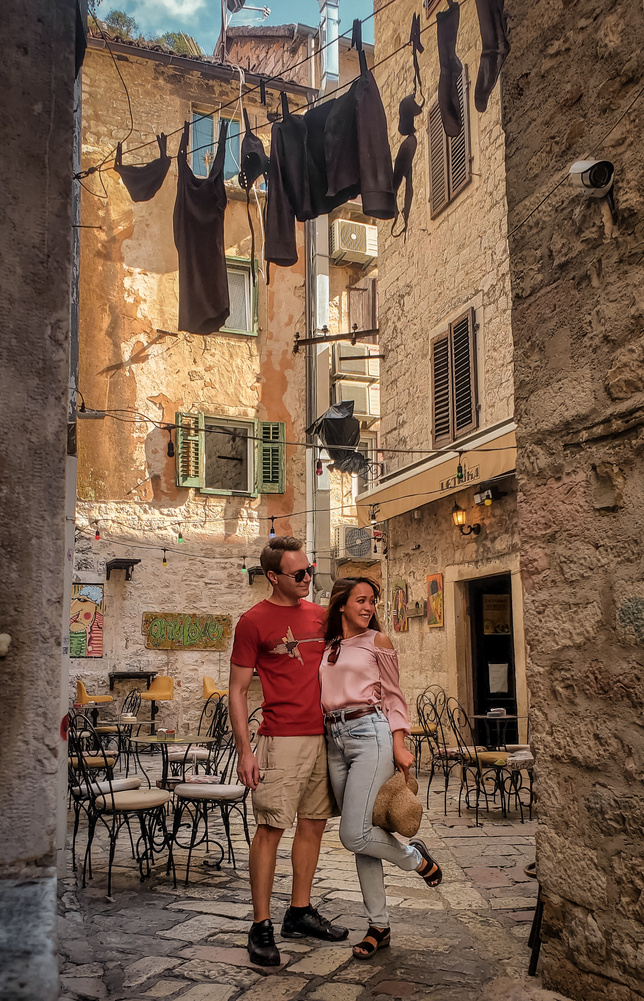


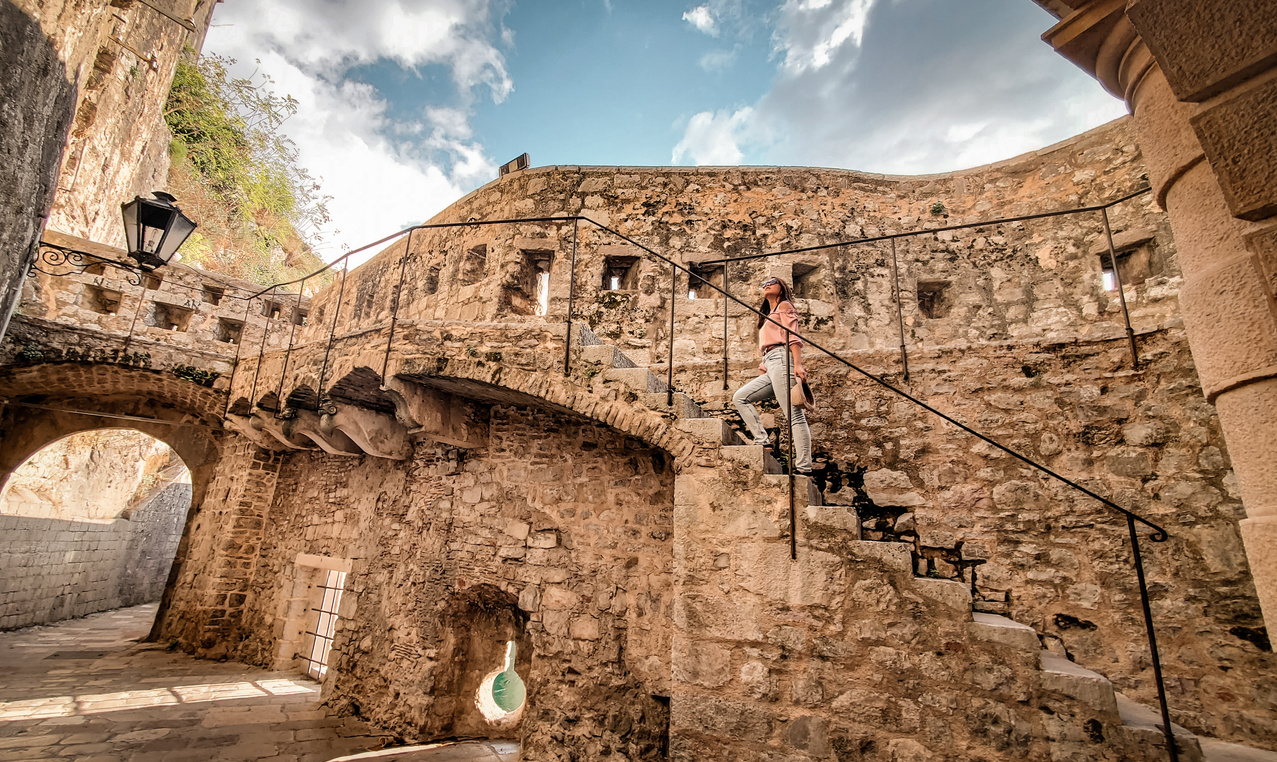
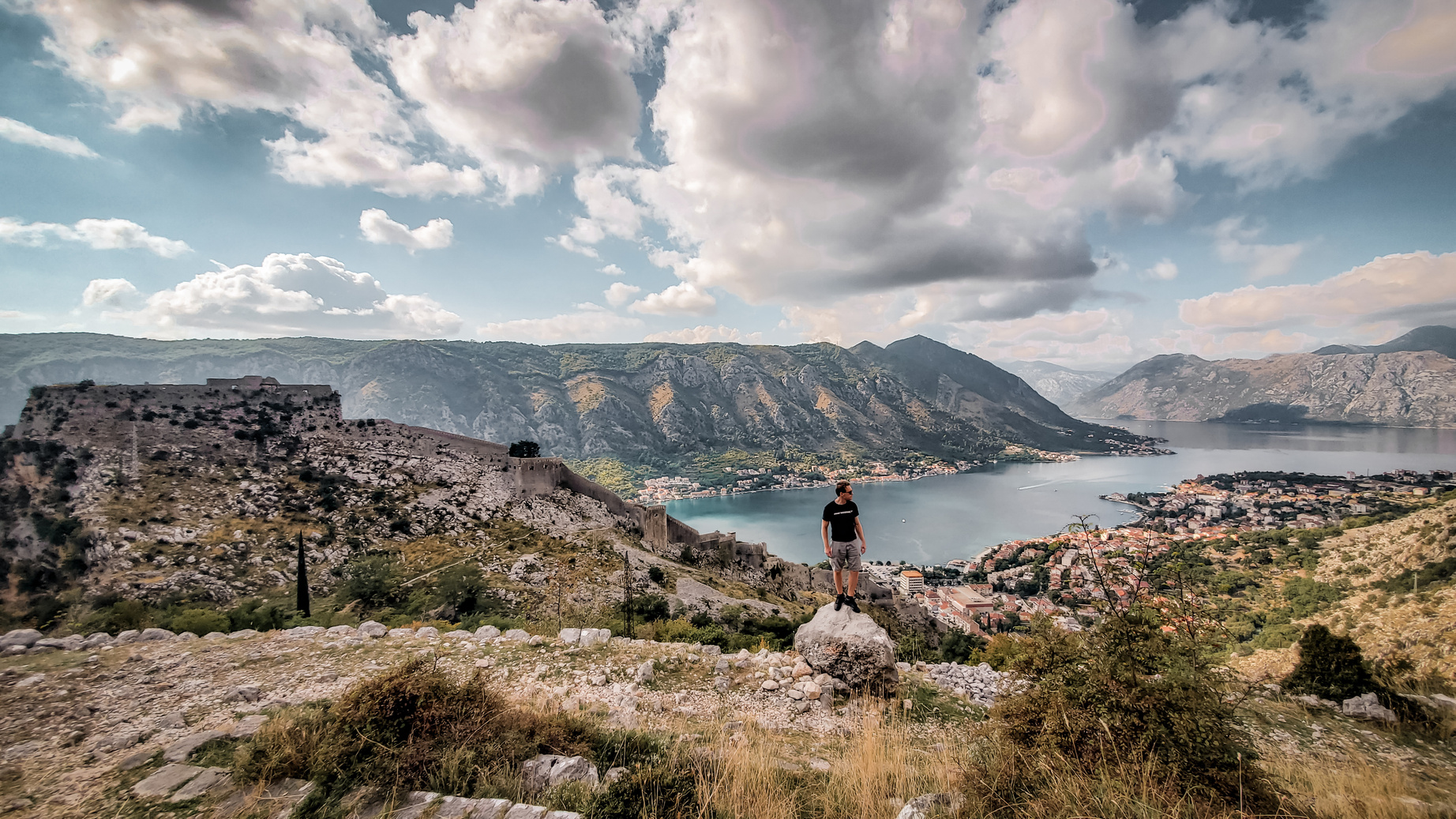

Bay of Kotor - part 3
Our Lessons
On a bright note, locals have commented that the Bay’s water has become even more clear since the temporary pandemic-related discontinuation of cruises. The fortress and beaches are normally packed, we are told; but there were only a few fellow travelers during the time we visited. Indeed, in our opinion this just might have been the clearest water we had ever seen! Fish can be observed everywhere in the bay, as well as in the canals leading right up to the old walls. What an amazing opportunity to enjoy Kotor’s natural beauty to the fullest.
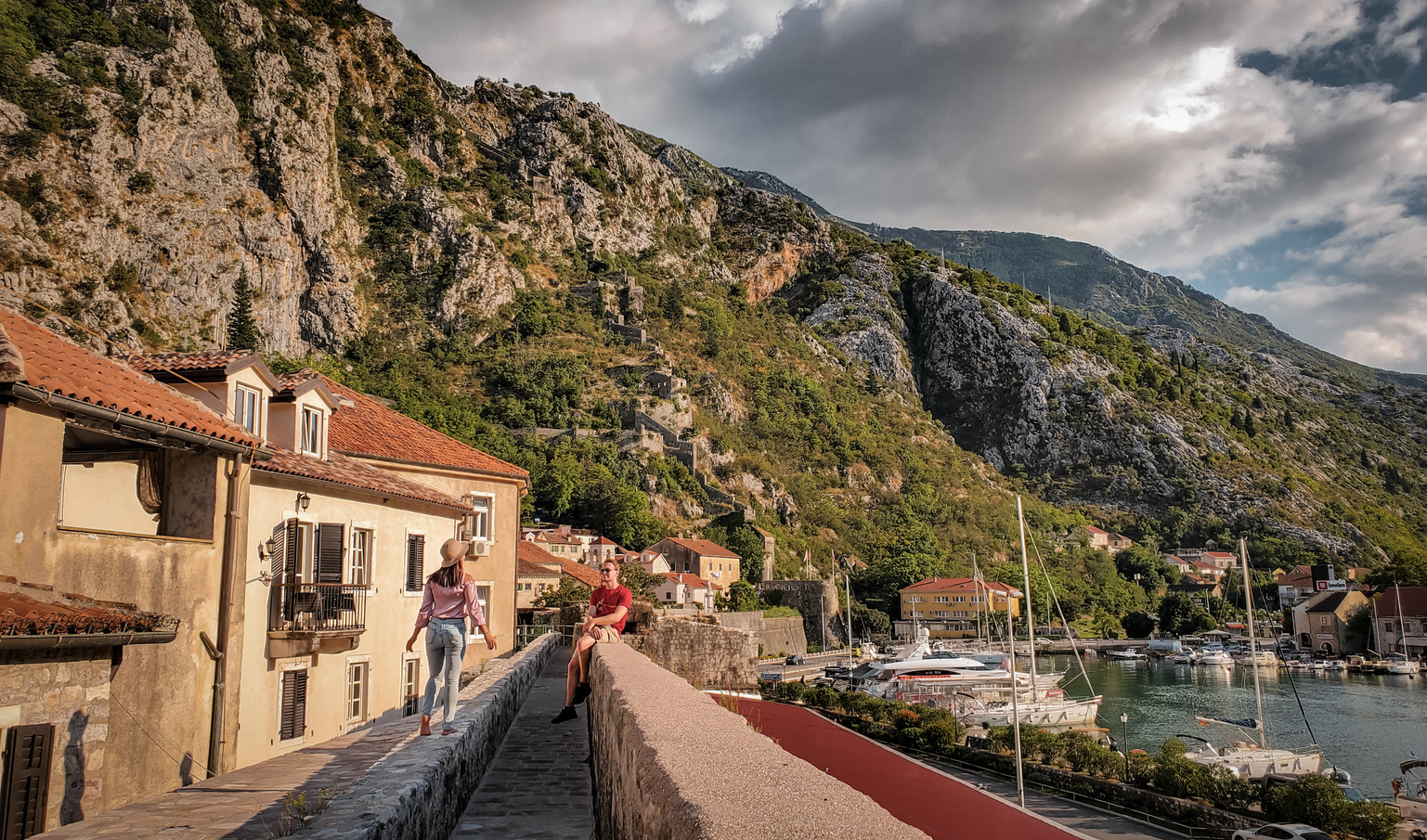

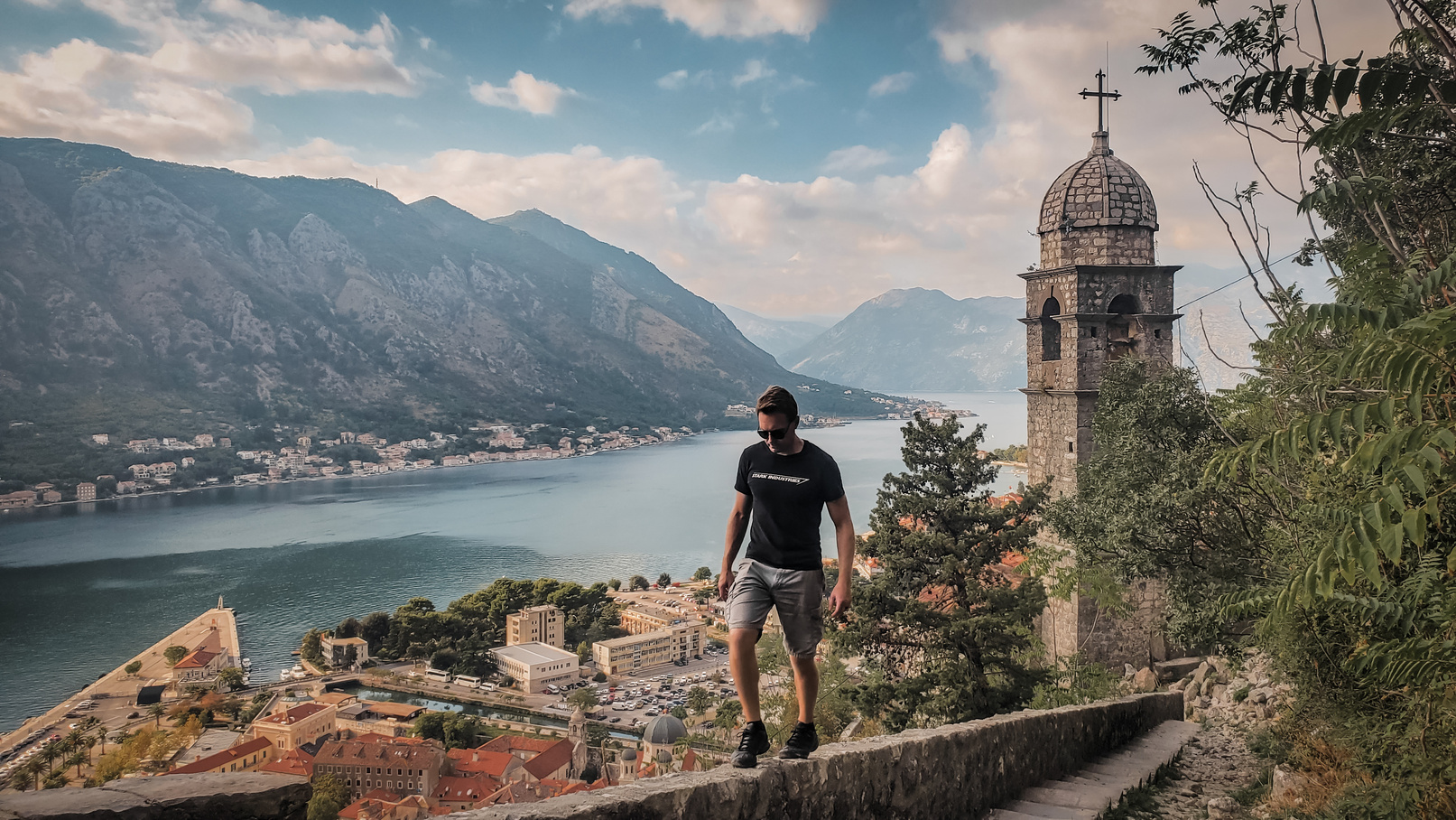

Bay of Kotor - part 4
Our Lessons
The locals living around the rim of Kotor Bay seem to have the most relaxing life. As we ventured away from the old town, we observed many people sitting and enjoying their coffees on beautiful terraces, lounging at the water’s edge, and kicking back for a relaxed afternoon of fishing. An interesting observation: here we saw mostly women fishing for leisure—a refreshing break from the stereotype of fishing being a "man's activity"! While there were plenty of scattered docks and moored boats, it seemed like the entire shoreline is available for anyone to use—and with such clean turquoise water, one can literally jump in just about anywhere.
Along the road heading north of the old town, food can be found along the many classy waterside restaurants. Freshly caught sea bass and pan-seared tuna were memorably fresh and at surprisingly low prices for a country that has adapted the Euro as its currency (we suppose great food can be found for cheap if you go where it originates!)
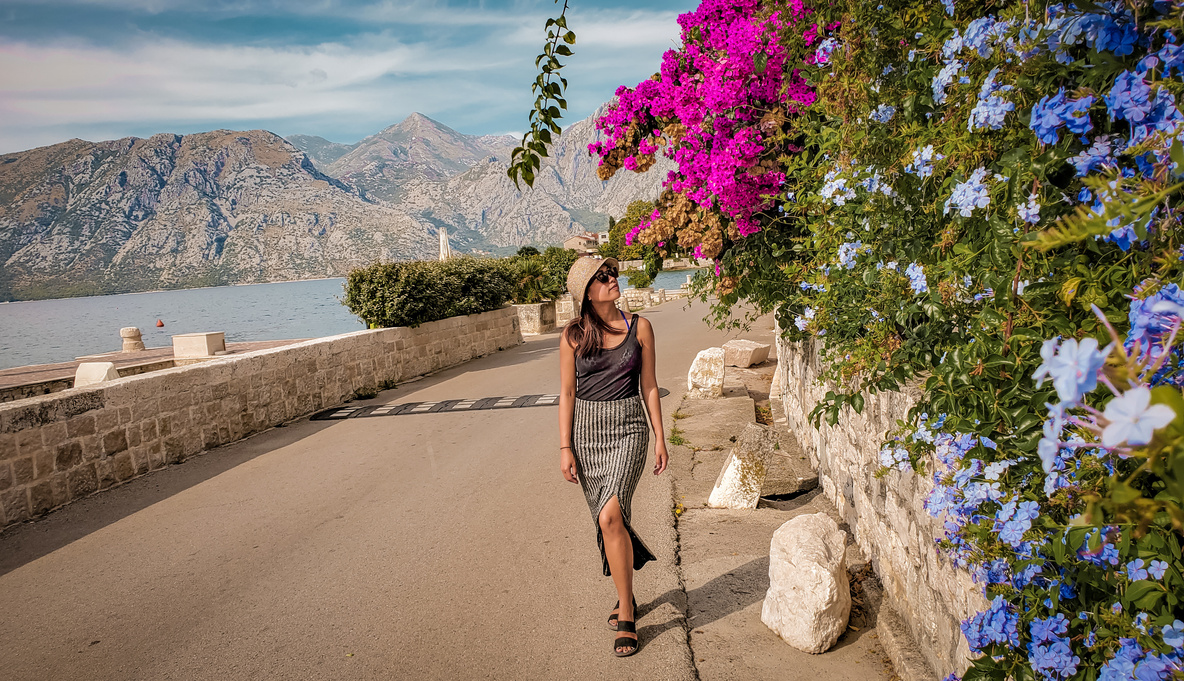

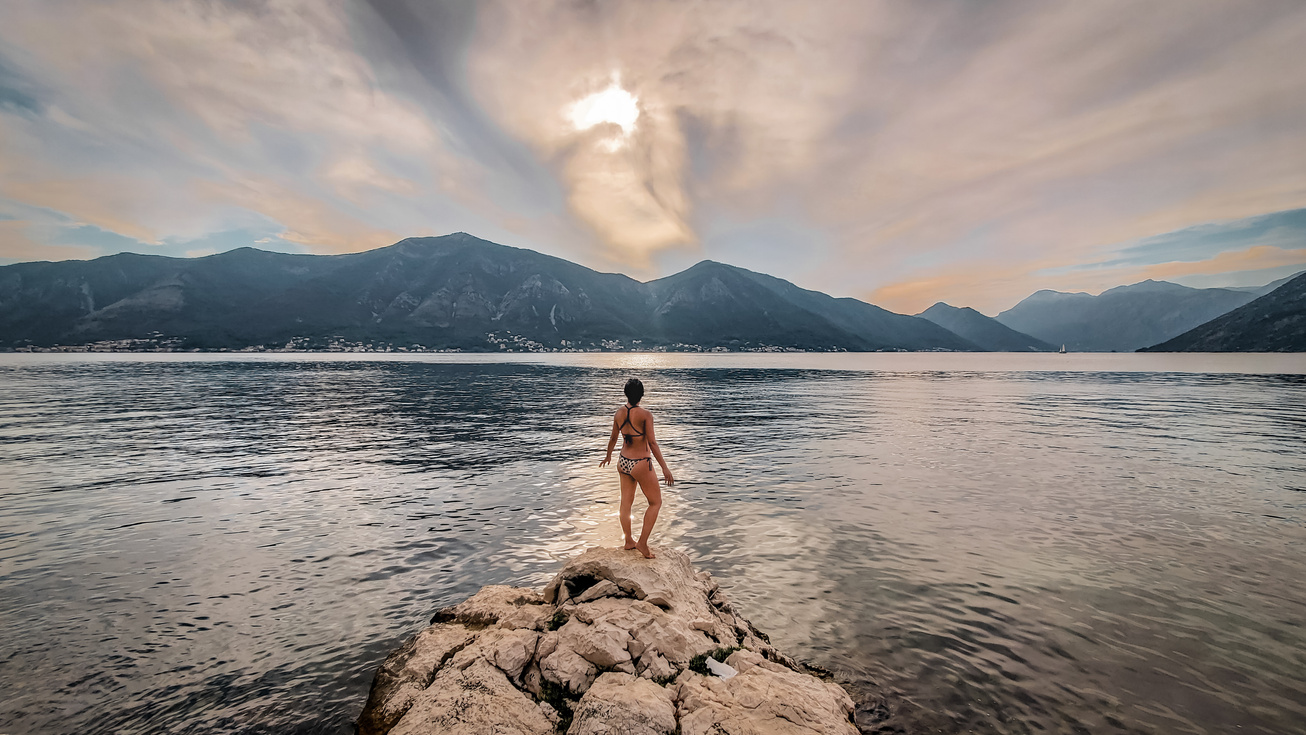

Bay of Kotor - part 5
Our Lessons
Always seeking a path less traveled, we followed a local's recommendation instead of taking the routine 'tourist steps' to reach the castle atop Kotor's fort. The result: a hike up a rocky, zig-zagging trail just outside the fortress wall, with unforgettable views of the valley between two mountain peaks. Hiking above the height of the castle allows one to now double-back and approach it from a secondary trail. Now descending towards the fortress from the posterior side, we reached a hidden back-door opening through the wall, accessible via a ladder. This conveniently skipped the entrance fee required for tourists who take the modern staircase up from the base of the old town—sneaky, but I think we earned it!
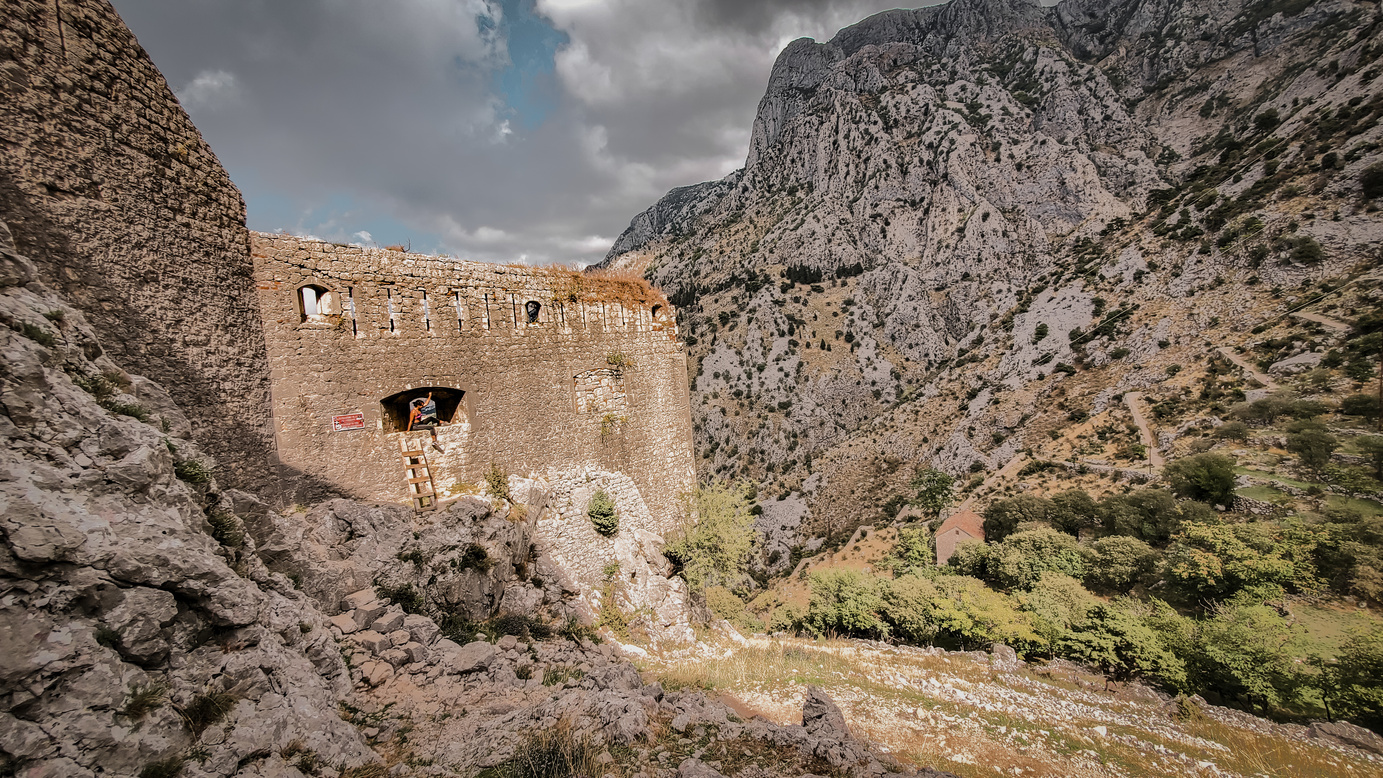

This marks just the beginning of our amazing tour through the Baltic states of former Yugoslavia. There is so much beauty in this part of the world—but also more scars of war. Gazing down from the highest rampart of Kotor Castle, we held each other tightly, basking in the warm sun and gentle wind that flowed across our faces. In a proud moment, we realized we had just accomplished a quarter of our entire trip. As we looked to the far horizon, any sense of travel-weariness melted away. We yearned eagerly for new lessons, adventures, and freedom that waited for us, as we continued our journey on the breezes of the sky.
